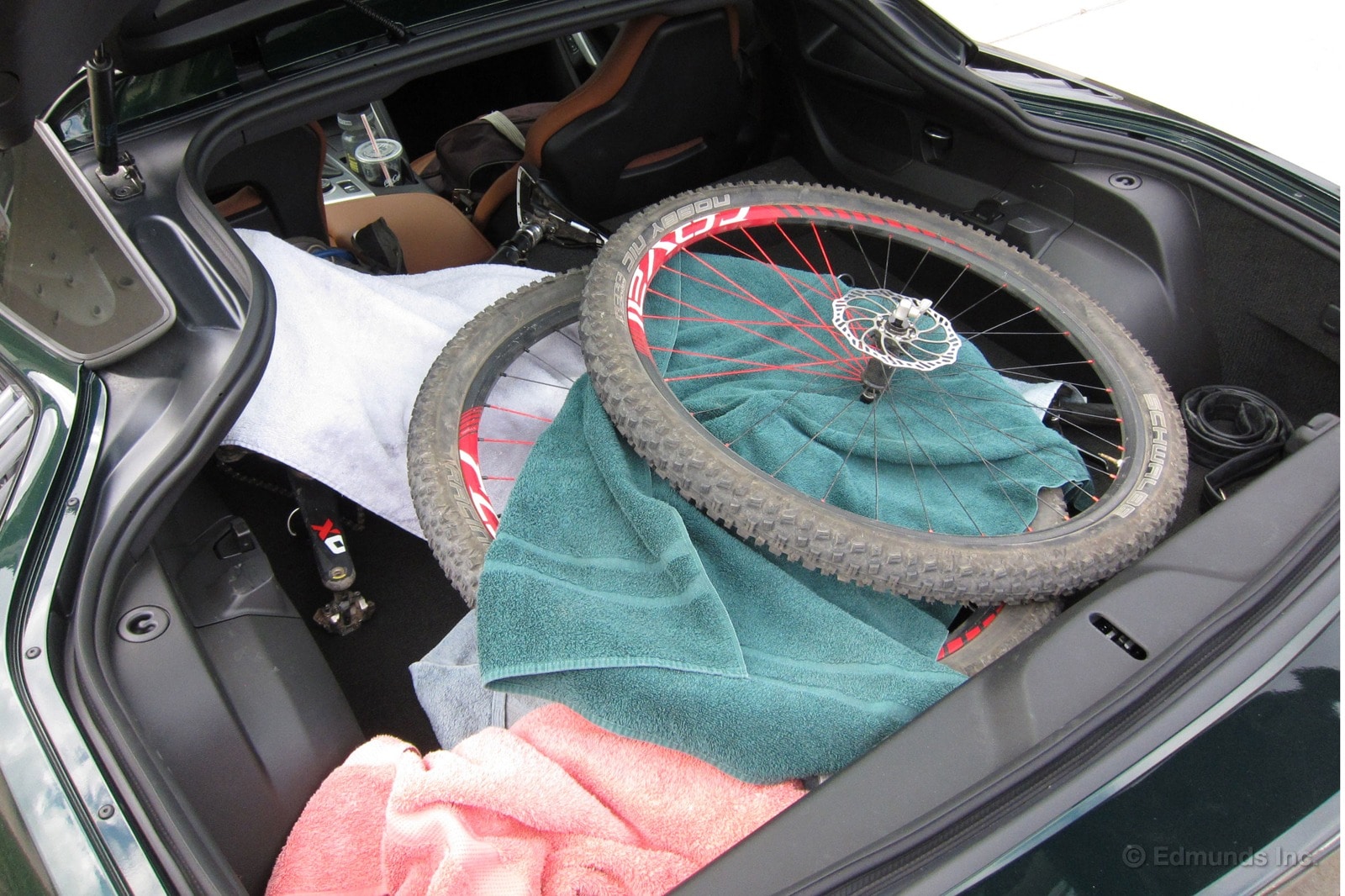2014 Chevrolet Corvette Stingray: What's It Like to Live With?
Read the latest updates in our long-term road test of the 2014 Chevrolet Corvette Stingray as our editors live with this car for a year.
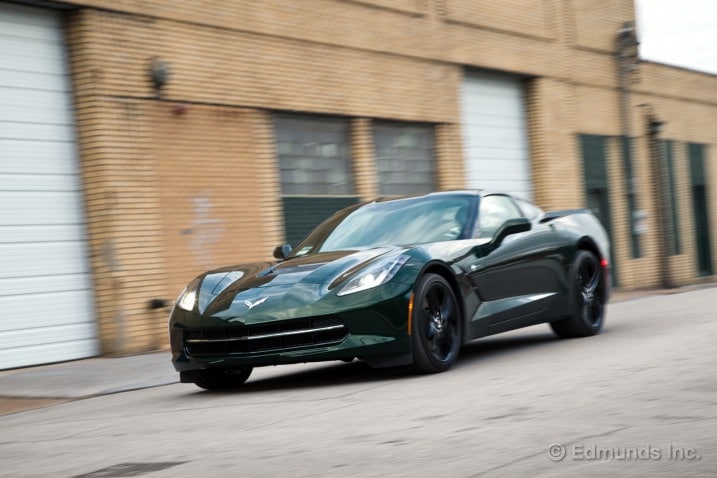
What do you want to know about?
- Introduction
- Making Payment
- Taking Delivery
- Official Photo
- Signed, Sealed, Delivered
- Workingman's Blues
- Track Tested
- Number 23
- South Before West
- Muscle Shoals and Memphis Soul
- 23 to the 66
- Tell Your Mama, Tell Your Pa
- Rattles, Hums and America's Road
- The Wide West
- Fuel Economy Update for October
- Got a Flat, Got It Fixed
- A Stowaway Stone Hiding in the Corvette's Wheel
- Future Buyer
- Driver-Friendly
- Reverse Tilt Mirrors
- Fried My iPhone
- Stupid Wheel Paddles
- No CD Player
- Skip-Shift and Seventh Gear
- Rev-Matched Downshifts
- Engine Braking and Rev Hanging
- Cold-Engine Redline
- Hard Top Removal
- Electronic Parking Brake
- Key Fob Slot
- We Got the Right Color
- Stingray Number 23
- Hidden Storage
- Fuel Economy Update for November
- 5,000 Miles
- The Bike Fits
- Geez, It's a Real Car
- Keeps the Sun Off My Face
- Keeps Good Company
- Leave It In Sport
- Happy To Be in Sunny California
- Seat Height
- Our Green Machine
- It's Got a Good Pedal Box
- The Truth about the Rev-Matching Paddles
- Wind Buffeting
- Time for an Oil Change
- Gone in 30 Seconds
- Winter Tires
- L.A. to Detroit Road Trip
- First Scheduled Service
- 10,000-Mile Update
- Winter Road Trip MPG
- Driving in a Blizzard
- Comfortable on a Road Trip
- Now I Love It Too
- Fuel Economy Update for January
- My Turn
- Day 2
- Last Day and Road Trip MPG
- Road Trip Wrap-Up: Bad Bromance
- My Least Favorite Part About It
- Push Button Door 'Handles'
- First Impressions
- Brake Judder
- Back Behind the Wheel
- The People Love Its Styling
- Fuel Economy Update for February
- 15,000-Mile Milestone
- Oil Change Alert
- Second Scheduled Service
- Head-Up Display
- Z51, the Buyer's Dilemma
- Speed Limit Display
- Lots of Pipes
- Child Seat Practicality
- Tire Wear Update
- Creaky Seat
- Do You Need This Gauge?
- Instrument Panel Has a Secret To Tell
- We Love the Tire-Pressure Monitoring System and Display
- Too Much Bass. Too Much Boom.
- Fuel Economy Update for March
- Performance Features Need Unbundling
- Hidden USB Port
- Variable Redline at Startup
- What Exactly Is "Unlocked Door Anti-Lockout?"
- A Thoughtful Audio Feature
- Pause Live Radio
- Tire Chatter When Cold
- Junk in the Trunk
- Smells Like a Corvette
- Track Day!
- Track Brake Pads
- Brake Rotor Cooling Rings
- First Track Session
- Back on Track
- Fuel Economy Update for April
- The Black Widow's Car
- This Is Why We Do Track Days
- Track Day Trip Home
- New Tires
- Social Ownership Experience
- Why It's the Perfect Car for Me
- Great for Luggage
- 20,000 Miles
- Get the Ventilated Seats
- Track Day Video
- It Rocks
- Touchscreen Display on the Fritz
- Fuel Economy Update for May
- Expired OnStar
- Better Than Italian
- Nose Emblem Is Peeling Off
- Dashboard Damage
- Cruise Control Works, Even When you Shift
- More Touchscreen Troubles
- Collector's Edition?
- Huge Trunk
- Customizing the Gauges
- A Practical Sports Car?
- Odd Mix of Materials
- Fuel Economy Update for June
- Third Round of Oil
- Lame Cupholders
- Third Scheduled Service
- Tunnel Blasting and Decibel Readings
- OnStar Renewed
- Fuel Economy Update for July
- Detailing
- Fun With PTM
- Yes, the Mountain Bike Fits
- Vehicle Rating
- Overheating on a Mountain Road
- Stingrays and Snakes
- 2014 Chevrolet Corvette Stingray vs. 2015 Alfa Romeo 4C: Performance Test
- 25,000-Mile Update
- Fuel Economy Update for August
- Show and Tell
- Cooling Checkup
- Fuel Economy Update for September
- 1 of ...
- Full Circle
- Tunnel Blasting and Decibel Readings (Redux)
- Big Dead Pedal
- Damage and Repair
- Strong Money
- Thinking C7, Buying CTS
- Wrap-Up
Introduction
The scheming started in mid-January, just before the official reveal of the seventh-generation 2014 Chevy Corvette Stingray at the 2013 Detroit Auto Show. We'd seen illustrations of what the new Corvette could look like; we even knew what its new direct-injection small-block was bringing to the table. We knew we wanted one for our long-term test fleet.
We just didn't know when it would be on sale or who we had to bribe to make it happen.
Now, 10 months later, our fevered dreams have become a reality as a 2014 Chevy Corvette Stingray Z51 has joined our long-term test fleet.
We bought it. It's ours. And for the next 12 months we're going to drive the tires off of it to see if the Corvette is finally the well-rounded, real-deal performance car we've always wanted it to be.
What We Bought
Throughout its history, the Chevy Corvette has been a performance bargain, and that formula doesn't change for the 2014 C7 Stingray. For only $51,000 (plus $995 for destination/delivery), you get a sports car with an aluminum frame, a carbon-fiber hood and an all-new 455-horsepower 6.2-liter small-block V8 that twists out 460 pound-feet of torque. A seven-speed manual transmission is standard, as are a limited-slip differential, an 8-inch color touchscreen with Chevy MyLink, Bluetooth phone and audio, removable carbon-fiber roof panel, keyless entry/start and more.
All Corvettes also come with free scheduled maintenance for two years or 24,000 miles. We don't plan to keep the car for more than our normal year, but feel fairly confident that we're going to obliterate that 24,000-mile ceiling.
And while that's a great value, there were certain options we were willing to pay for.
First up is the Z51 Performance package. We considered it a must-have. After all, the package includes 19-inch front wheels and 20-inch rear wheels, larger slotted brake rotors, a dry-sump oil pan, an excellent electronic differential, sportier gear ratios (take that, fuel economy), upgraded suspension and an aero package. It also opens the door to add the Magnetic Ride Control with PTM.
That's right. In order to get the $1,795 Magnetic Ride Control option with its hyper high-tech Performance Traction Management system, you've got to up the price of your Corvette to $53,800. And then add the suspension. We've spent a considerable amount of time with the C7 Corvette at this point and feel that this option is worth every penny for anyone who plans to really hustle their 'Vette.
On top of that, we added some niceties just to keep us happy. The 2LT package runs $4,210 and includes power bolsters and lumbar for the seats, a color-matched console, a bunch of straps and nets for the cargo area, power heated rearview mirrors, an auto-dimming rearview mirror, heated and ventilated seats, a Bose stereo with 10 speakers and a color head-up display.
From there we piled on a number of options we either thought were cool or worthy of long-term testing. These include the slick dual-mode exhaust ($1,195) that boosts power to 460 and torque to 465, Chevy's MyLink navigation system ($795), black-painted wheels ($495), microfiber seat inserts ($395) and the California-mandatory $15 front license plate bracket. We also paid $990 for Museum Delivery in Bowling Green, Kentucky, which included a personalized plaque.
The last option was the $495 Lime Rock Green Metallic paint. We took an office-wide vote and in an overwhelming moment of sanity, green trumped the predictable and boring colors everyone else will get.
After all of this, our 2014 Chevy Corvette Z51 had a sticker price of $65,180. Which is exactly what we paid for it.
Although the C7 frenzy will eventually cool, the new Corvette is a hot proposition right now. There are a lot of buyers out there willing to pay way over sticker price to get their hands on one, and of course there are Chevy dealers willing to let them. We've already heard about some cars selling for over $100,000. To avoid that party we worked closely with our contacts at GM and Bunnin Chevrolet in Culver City and negotiated a deal. We paid exactly MSRP. Hey, sometimes you've gotta pull some strings.
With taxes and fees we handed over a check for $71,664.40.
Why We Bought It
We bought our brand-new 2014 Chevy Corvette Z51 for the same reason everyone else does: we really, really wanted it.
Now celebrating its 61st year, the Chevy Corvette is an icon that transcends the bounds of simple automotive enthusiasm. It's a legend, and Chevy had the weight of the world on its shoulders when it released the seventh generation of America's supercar.
The C6 was an incredibly fun car, especially in Z06 and ZR1 trims, but there was a ton of room for improvement. In its later years, the C6 got magnetic ride control, PTM and some new seats. It wasn't enough. The interior was still at the bottom of the sports car pile and the seats didn't offer nearly enough support or comfort.
Like all Corvettes, our Lime Rock Green 2014 Corvette Stingray began its life at the Bowling Green, Kentucky, factory, and that's where our Long-Term Road Test begins, too. Two of our guys picked it up last week and trekked 2,000 miles back to L.A. For the full rundown on the Corvette's first road trip and continuous updates over the next 12 months, follow our Long-Term Road Test page. Love the Corvette or hate it, this year's going to be good.
Edmunds purchased this vehicle for the purpose of evaluation.

Even though we opted to pick up our 2014 Chevrolet Corvette Stingray at the National Corvette Museum in Bowling Green, Kentucky, we still had to pay for the car through a dealer.
We chose Bunnin Chevrolet in Culver City, California. Ron Vartanian, General Manager and Chad Kelman, General Sales Manager were nice enough to come to our office in Santa Monica to complete the transaction.
We signed all the necessary paperwork and handed over a check for $71,664.40.

We're taking delivery of our Corvette Stingray on Tuesday, October 1 at 10:30 a.m. Central Time (8:30 a.m. Pacific Time). Our Lime Rock Green Z51 Corvette Coupe will be parked in the Corvette Museum with a webcam focused on it so that you can watch the transaction.
We're going to embed the live webcam on our site so you can tune in Tuesday morning and see it happen. So, mark your calendars for Oct 1. Should be pretty sweet. See you then.
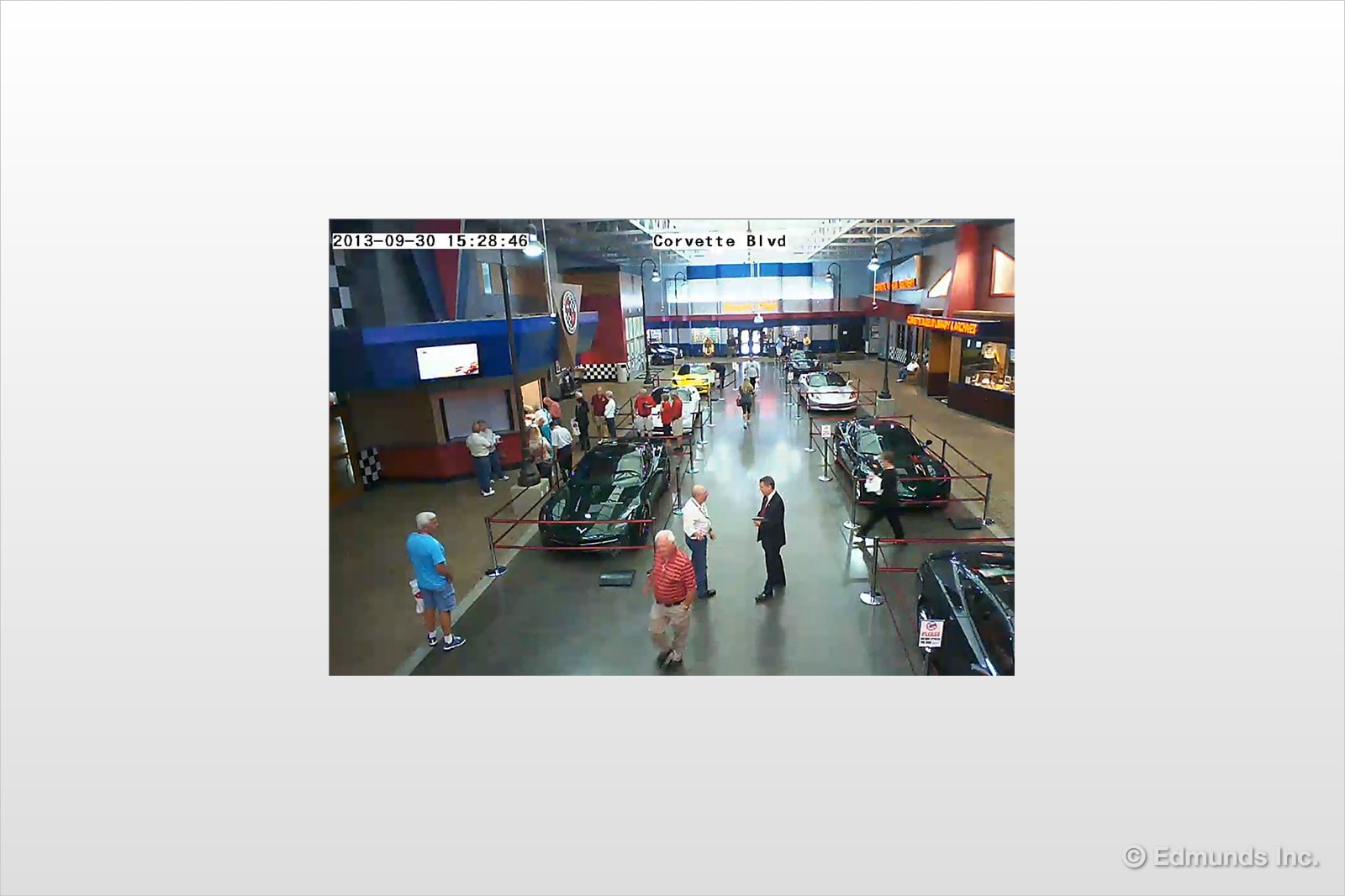
Today (Tuesday, October 1) is the day we take delivery of our 2014 Chevrolet Corvette Stingray at the National Corvette Museum in Bowling Green, Kentucky.
Click through to watch a live webcam starting at 10:30 a.m. Central Time (8:30 a.m. Pacific Time).
UPDATE: We have our 2014 Chevy Corvette Stingray in our possession now. If you missed the live webcast, here is a shot of Dan Frio behind the wheel with Kurt Niebuhr holding the camera.
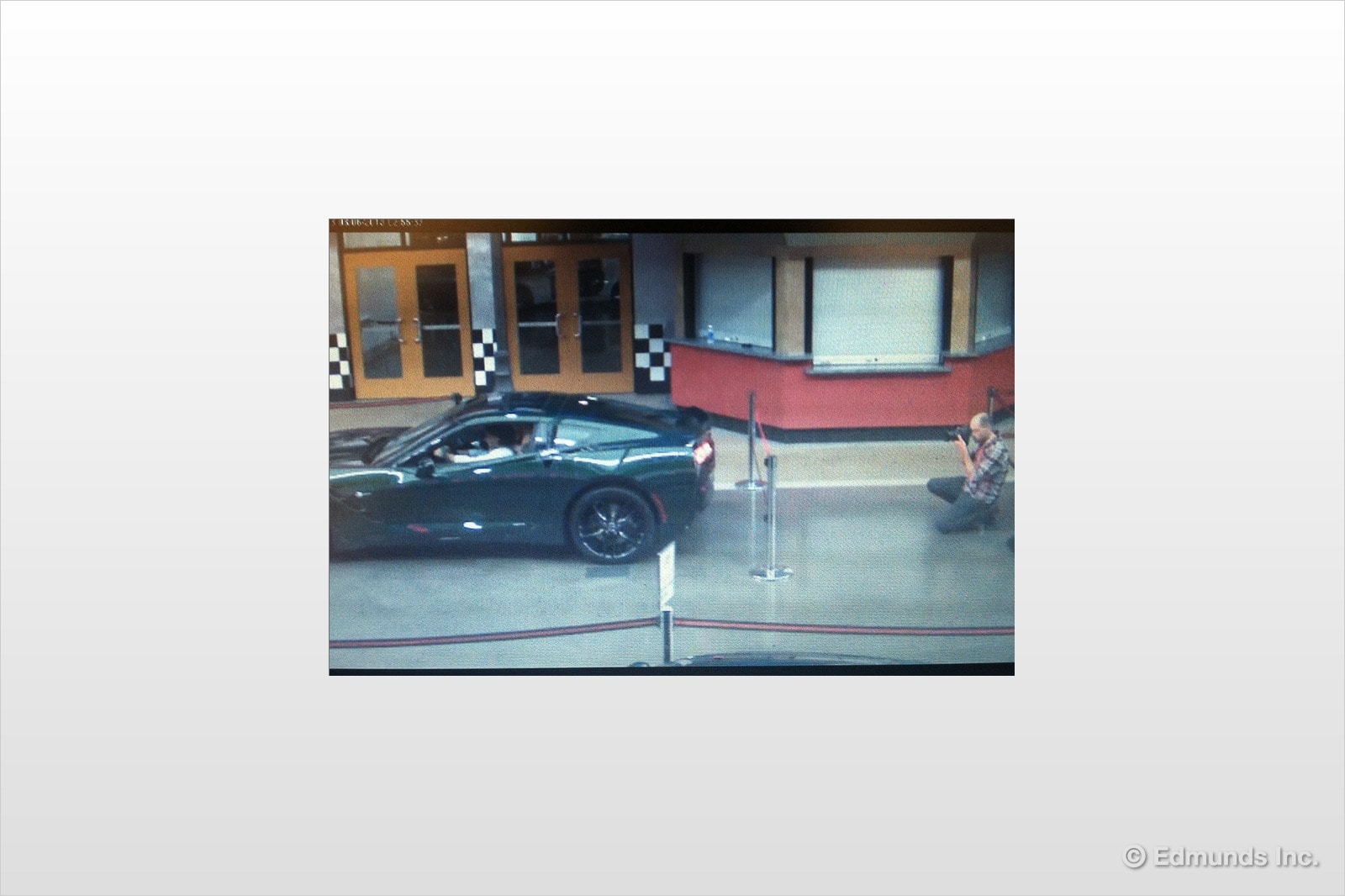
And here is our Corvette outside.
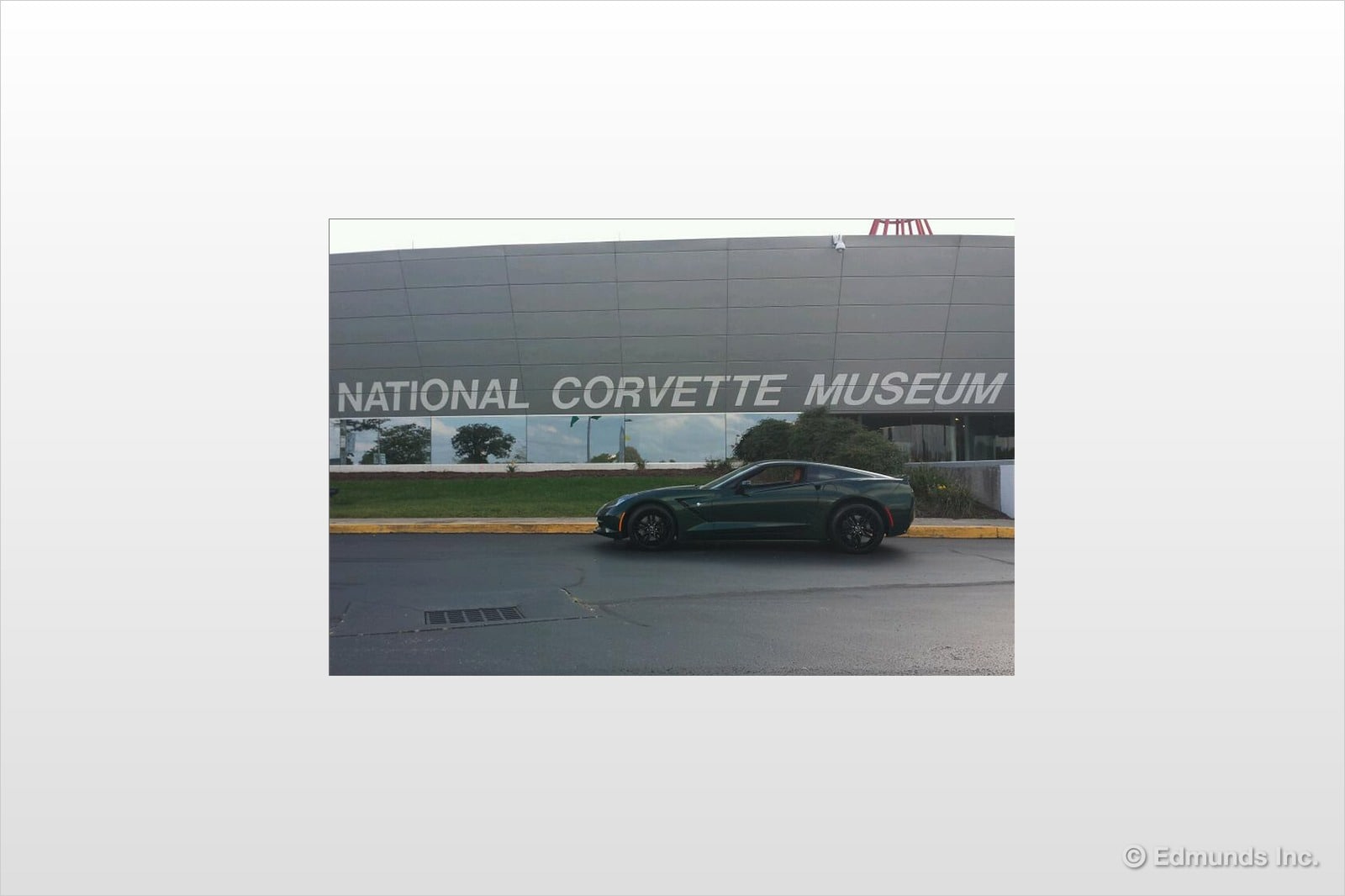
And then this happened.
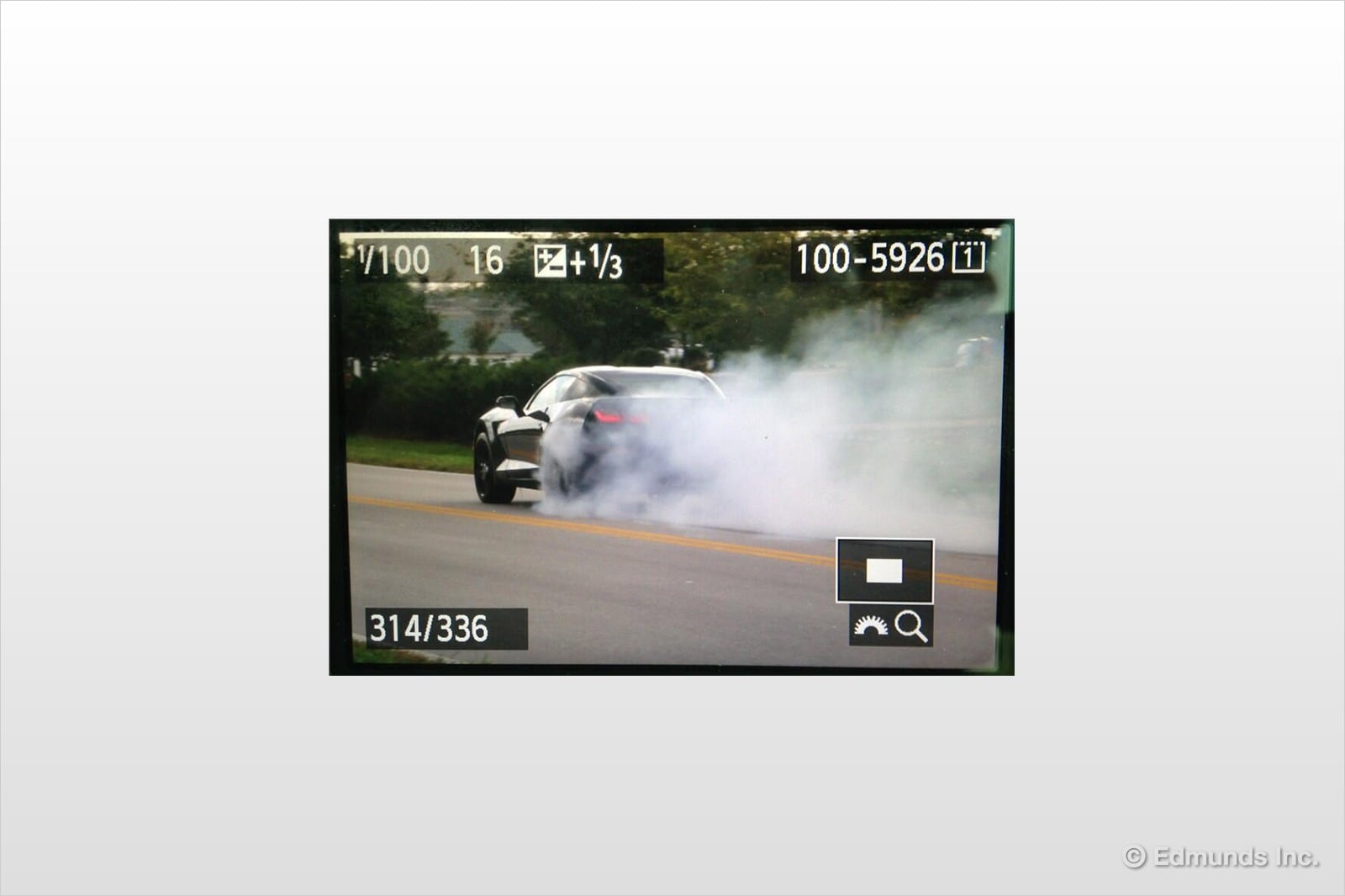
Our year-long adventure with the 2014 Chevy Corvette Stingray begins now.

When you choose to go through the whole National Corvette Museum delivery experience, you get an official photo of you with your new Vette.
You can follow Dan and Kurt on Twitter to track their progress (and barbeque pitstops) across the country back to our office in Santa Monica.
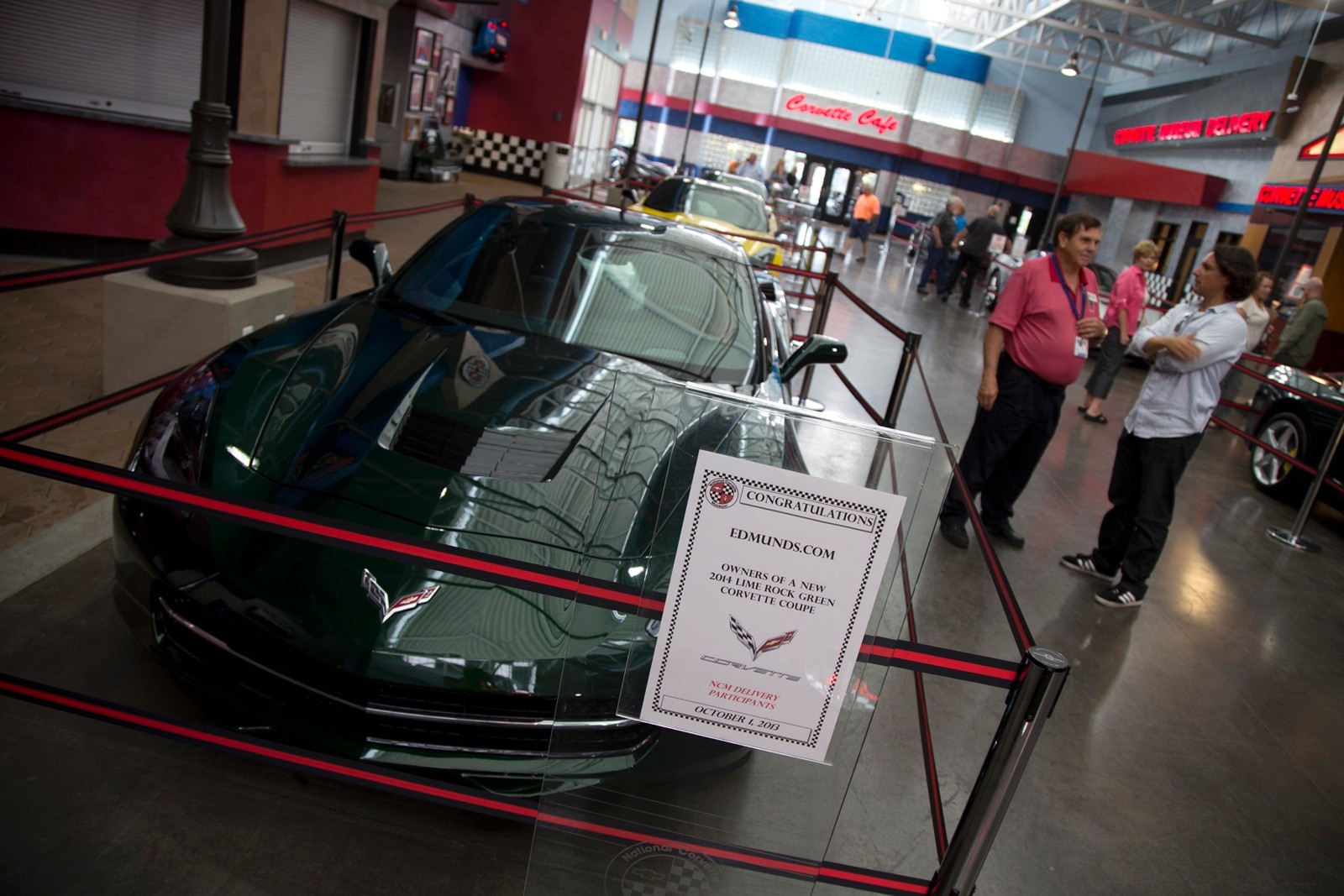
When it comes to straws, we drew the long ones. While our colleagues Ron and Phil did the actual hard work of ordering up our 2014 Corvette Stingray long-termer from a local dealer, Photo Editor Kurt Niebuhr and I got the cake assignment to go fetch the car. The purchase price included the $990 dealer option for Museum Delivery, which would send our car from the plant in Bowling Green, Kentucky, to the main lobby of the National Corvette Museum on the other side of the highway. From there, you pick it up and drive it away.
Kurt and I would only need to bring the Stingray home in one piece. But with 2,200 miles between Bowling Green and home, that wasn't guaranteed.
We meet Ron Barton on our arrival at the museum Tuesday morning. A General Motors lifer who spent 33 years between the St. Louis and Bowling Green plants, Ron has spent the last 11 years at the museum sending people home in their new Vettes. Ron greets us with a confession: He doesn't know a lot about the new Corvette. The delivery program had fired up only the day before, after hibernating since last September, and the delivery folks were still learning about the seventh-generation car.
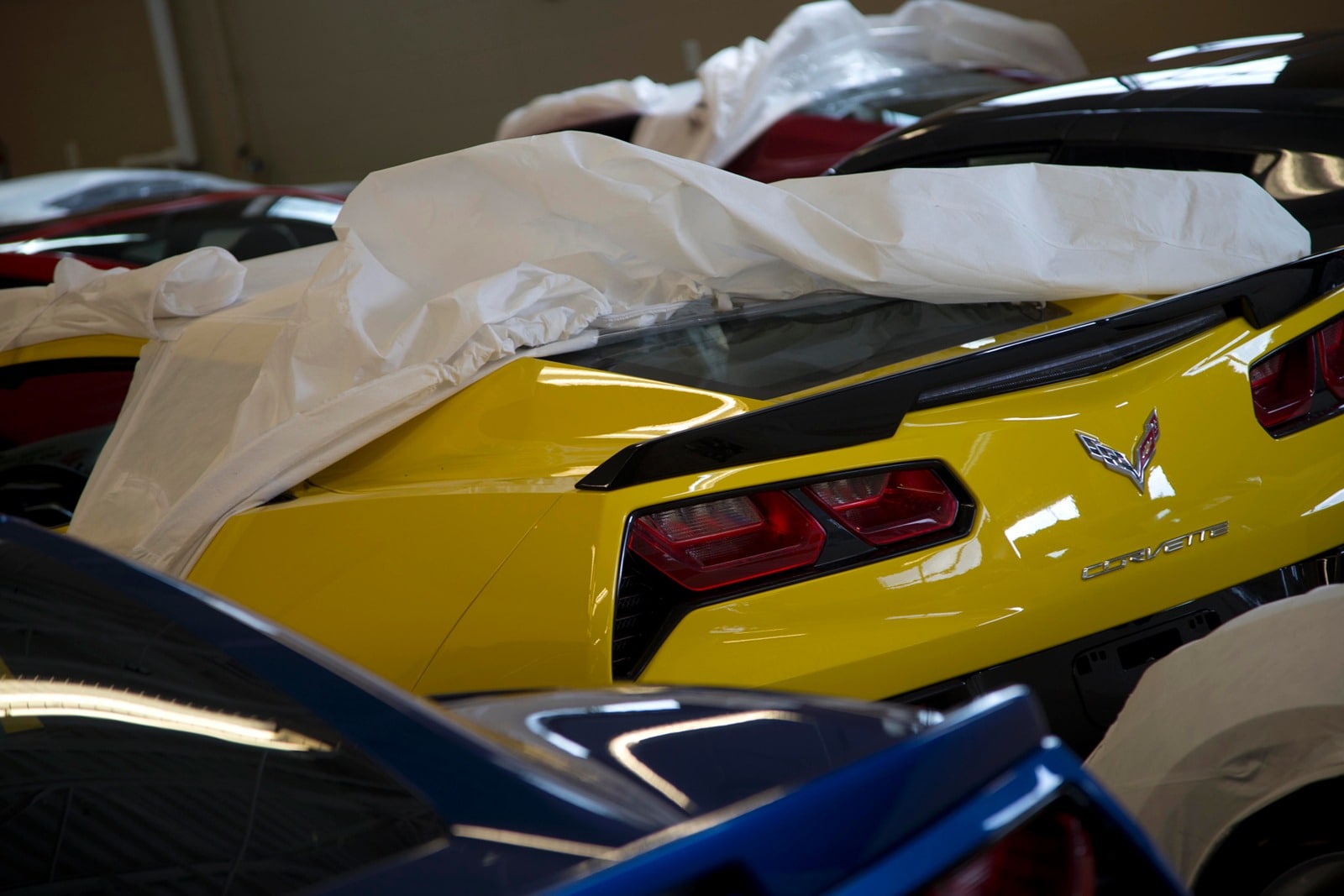
But it turns out, Ron knew plenty, right down to the choice of material for the seat frames and the only two parts to be carried over from the C6 (the targa roof latch and cabin air filter). We mill around our new Lime Rock Green Stingray, protected by a nylon belt perimeter. Another Lime Rock Green model sits right next to ours, and we quietly dismiss its chrome wheels and yellow calipers. Must be a Packers fan.
We follow Ron to his office to start the paperwork, producing our purchase contract, proof of insurance, temporary license tag, and driver's license. Ron makes some copies, hands us back our originals and a few minutes later we're waiting for a ride over to the assembly plant across the highway.
While waiting, we meet Katie, the museum's marketing director, who tells us some exciting news: To celebrate its 20th anniversary, the museum plans to open a full road course nearby by next Labor Day. As she's talking, a little girl runs by us and bumps into one of the nylon belt stanchions protecting the Corvette behind ours. Katie stifles a grimace as the little girl's Dad comes running up behind. The stanchion teeters a bit, but stays upright, and Katie breathes normal again.
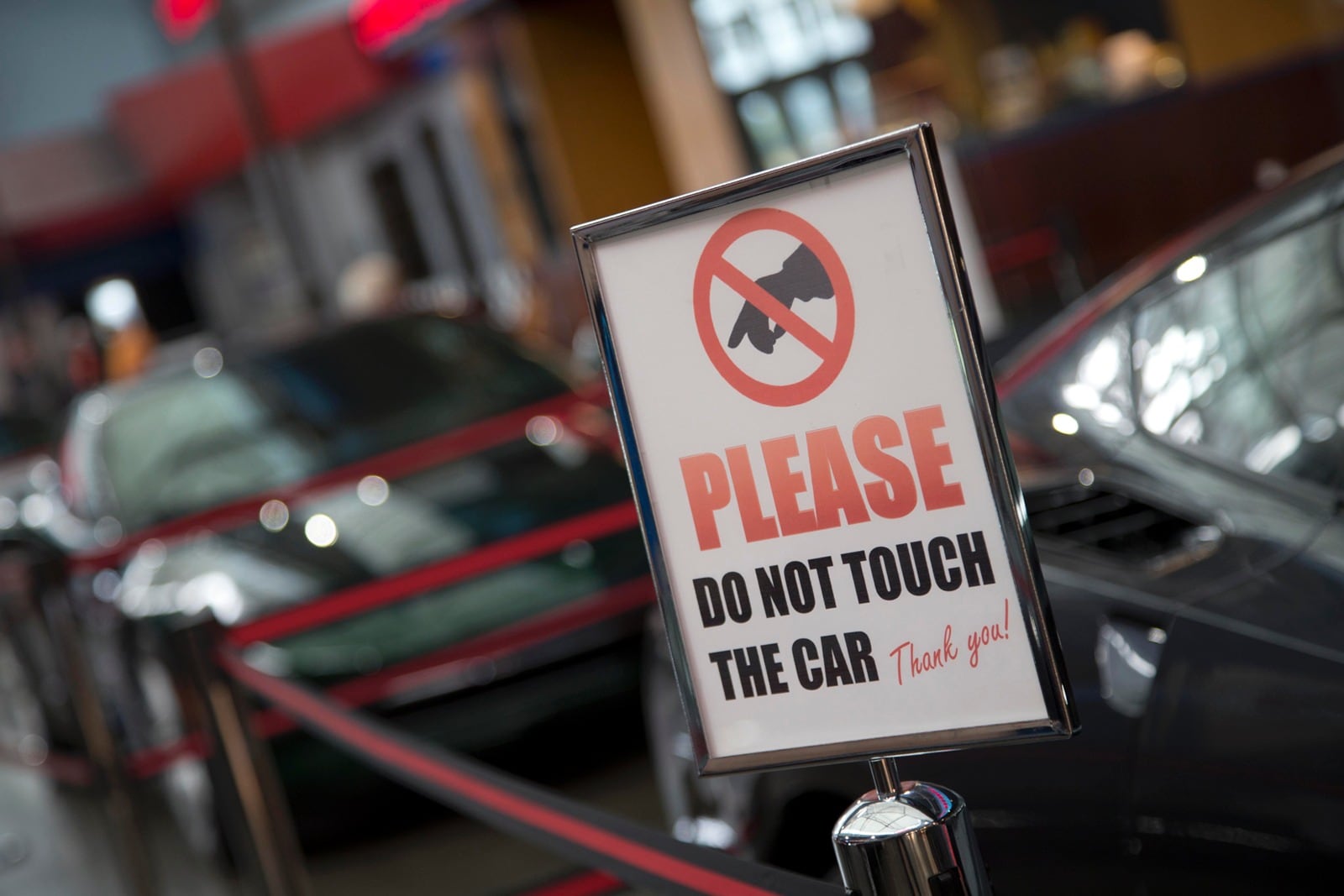
"I always get nervous with the little ones in here," she says, quite reasonably. A scratched door panel would be a bummer all around.
Our shuttle arrives and we head over to the factory, a one-million-square-foot facility that Ron says Chrysler owned to make commercial air conditioners. GM took over the space in 1979 and later doubled the plant's size. It's largely an assembly plant, with parts like stamped panels, seats, engines, and wheels with mounted tires all delivered with impressive synchronization, but a full quarter of the facility is dedicated to paint. The plant employs about 1,000 workers and runs one shift from about 6 a.m. until 3 p.m.
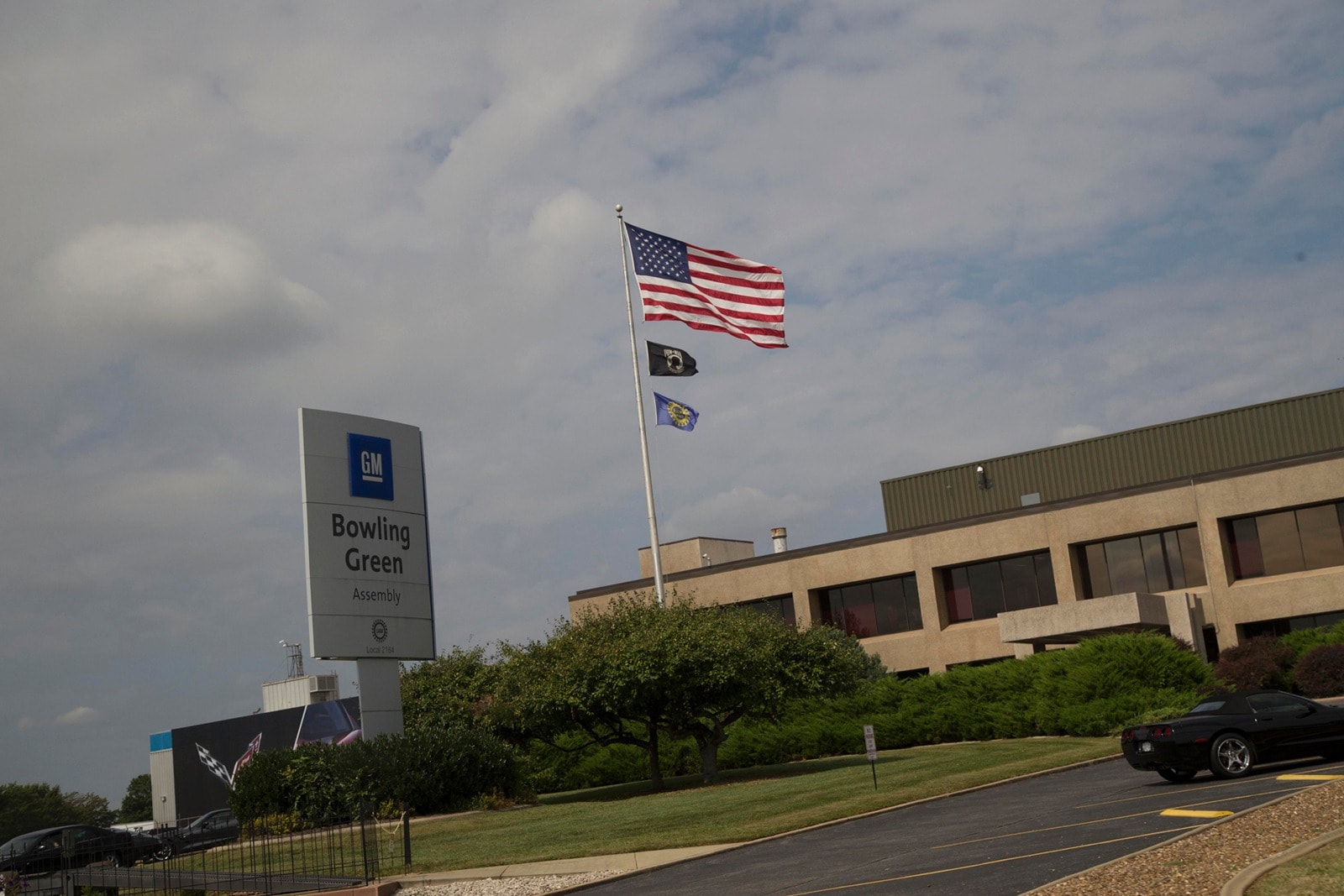
It's strange to see line workers dressed in simple shorts and t-shirts, though. A supervisor says they haven't had a dress code for many years, beyond banning garments with rivets or loops to prevent scratching or mutilation. I like that employees can dress how they want, but I'm not sure how to feel when I see a big hairy dude in a cut-off T-shirt climbing around the interior in what could have been our car a week ago.
But it's hard not to feel an instant connection with the line workers. The supervisor and Atlanta Braves fan, who trades taunts with me about the upcoming division series with the Dodgers; the guy on the roof and hood section who asks which roof style we chose (painted, carbon fiber or transparent); the gentleman with the most seniority at the plant who could've retired years ago, but stays on because the plant is home, or at least a very close second, and because he's still very good at his job. Blue-collar Americans, stitching together one of the best sports cars from this country. I half-expect Bruce Springsteen to stride out from the foreman's office with a raised fist and electric guitar.
The walking tour is fascinating and lasts about two hours, and just as we're wondering if we'll see one, we see two. Convertibles. A Lime Rock Green model with tan top and a white model with black top creep along the line all but unnoticed. Unfortunately, we don't have our cameras or cell phones. GM requires you to leave them behind when you step on the floor.
Back at the museum, Ron walks us around the exhibits. This is Corvette geeking at its finest. All the generations, one-offs, race and tuner specials, Zora Arkus-Duntov's design mules and mid-engine fantasies, even the sole-surviving 1983 model year white C4 coupe that escaped a quality control purge that delayed the fourth-generation introduction until 1984.
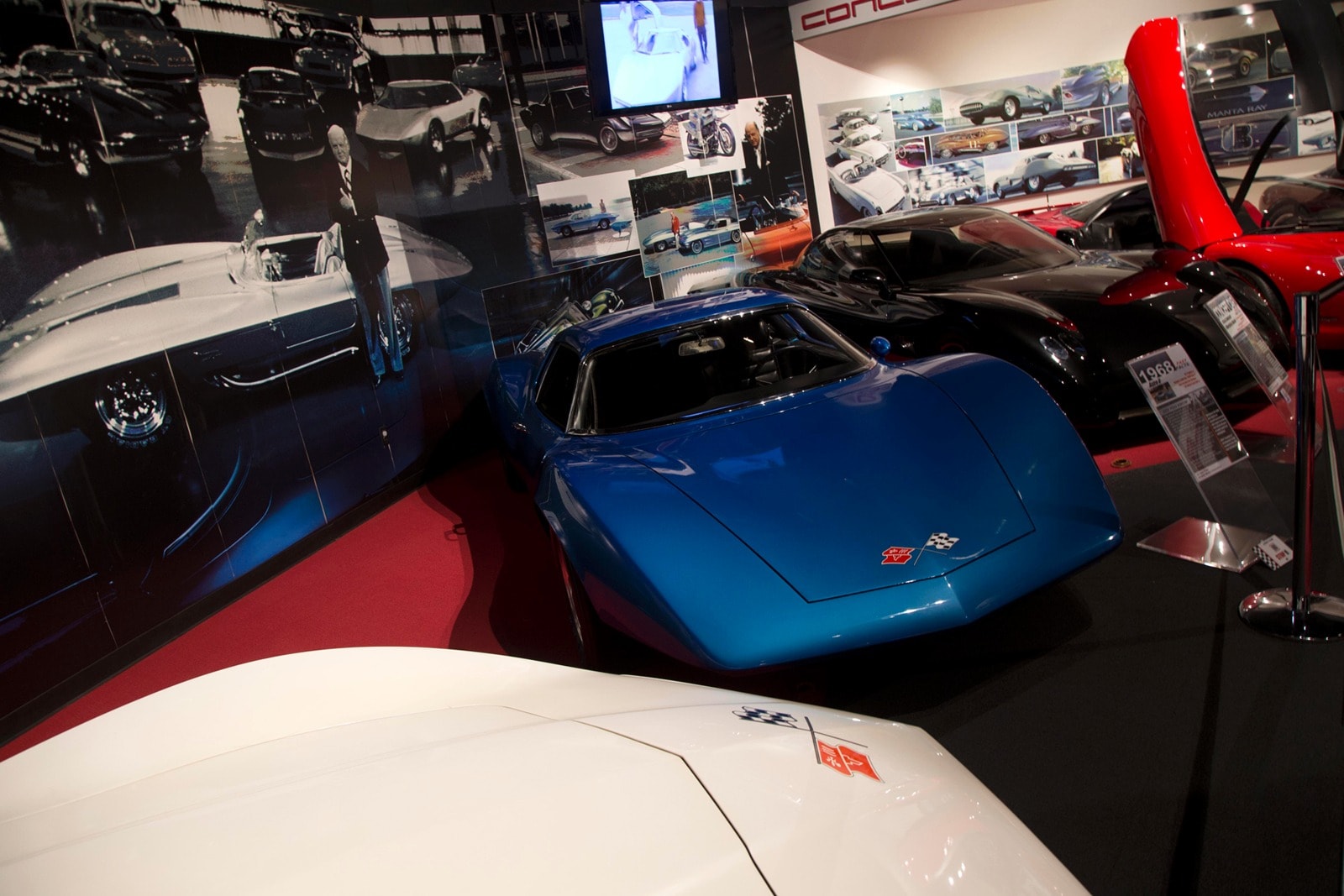
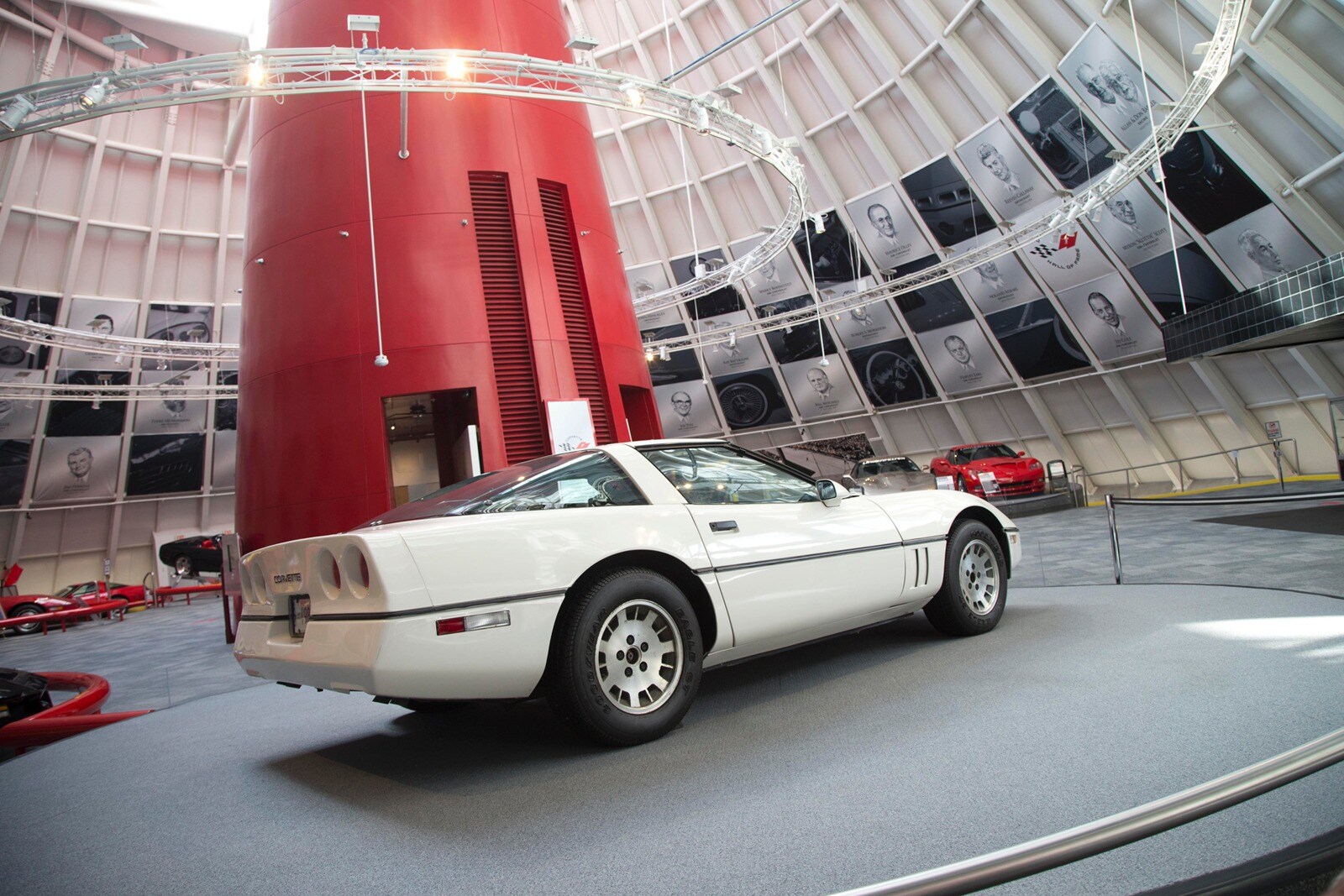
Great stuff, of course, but our attention is starting to drift and we're frothing to get the keys. Not only are we ready to experience our new long-termer, but we're also on a schedule. It's an hour to Nashville and we've only got a few hours of light left for a photo shoot. Ron starts to show us some of the electronics, but we save him the trouble. We got the basics down weeks ago when a test car came through the office.
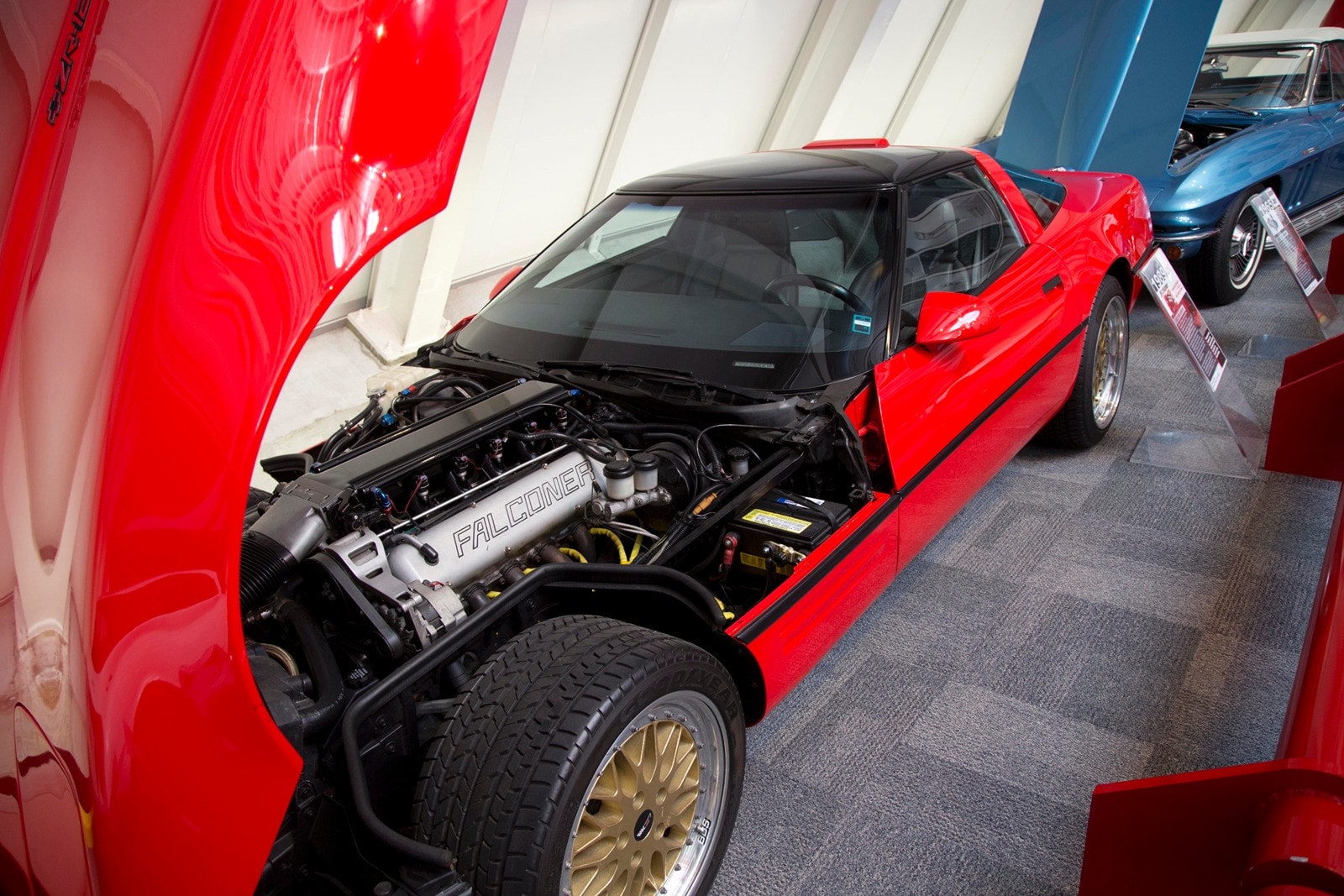
With that, Ron hops in the driver's seat. Liability requires the delivery specialist to drive the car off the floor and into the lot. That's fine with me, as the tight corner between the display area and the hallway leading out to the lot looks like a job for the experienced. A crowd of museum staff cluster around the car as Ron turns the wheel, the tires bark against the polished floor, and the Corvette inches toward the hallway. They all start clapping and leaning in the window to offer congratulations and wishes for a safe trip home.
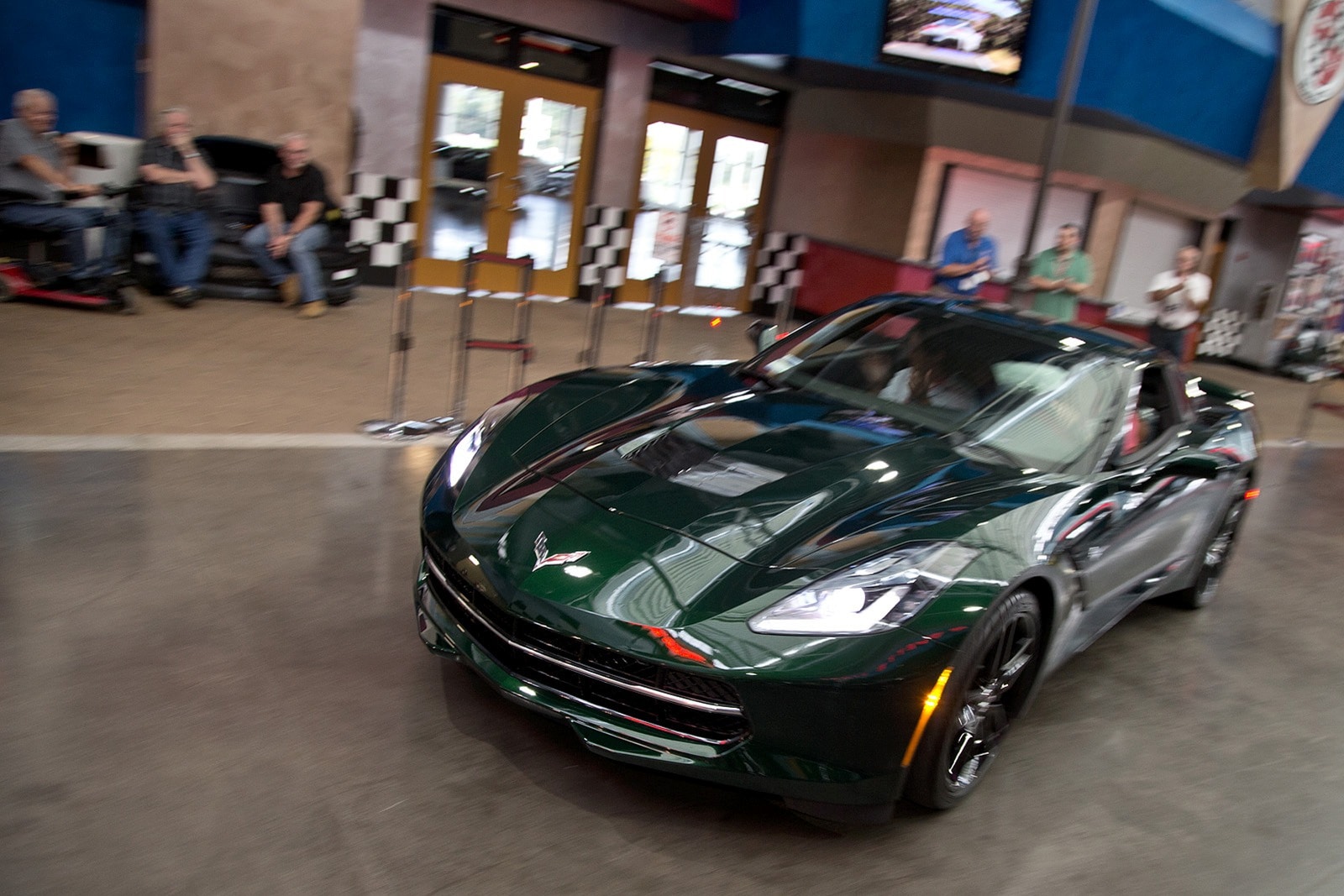
Once outside, Ron snaps a few photos of us and takes the keys to our rental car (Enterprise offers a one-way service where they'll pick up the rental at the museum). After farewell handshakes, Ron disappears with our Yaris and we settle into our new long-termer, setting a route for Nashville in the nav system.
There's one final order of business before the highway, though: burning the mold release compound off the new tires.
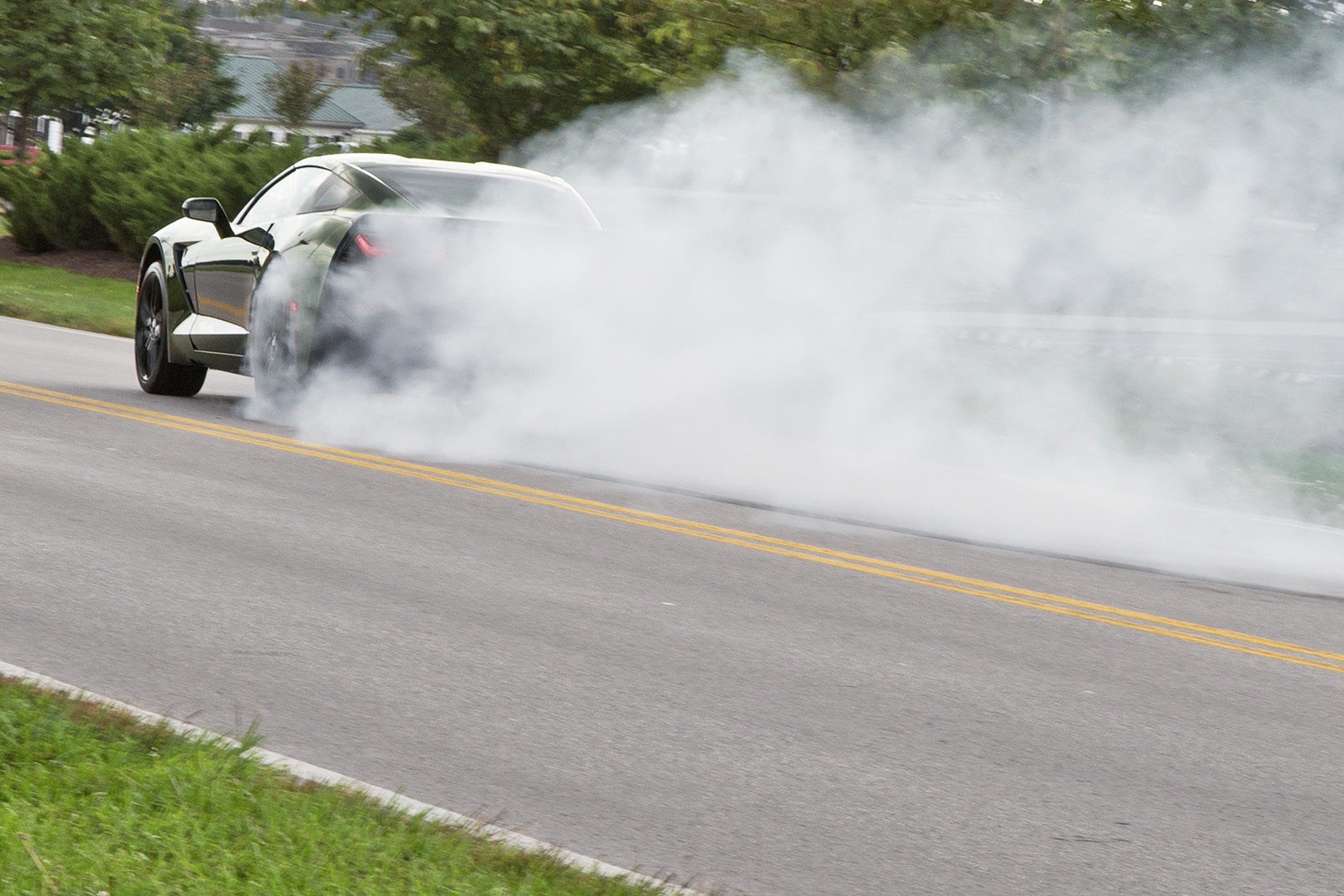

Day One, Continued: Bowling Green to Nashville
The boss wants a burnout photo. The boss always wants a burnout photo. Since we like continued employment, we're happy to oblige. Kurt's more qualified to lay down good stripes than I. My burnout would end on the curb, or in this case, in the ditch. And anyway, with just 27 miles on the engine, I'm happy to let Kurt bear the burden of any piston rings that crumble out the exhaust. I take the camera instead.
Our museum guide Ron tells us earlier that we might not be able to light up the rubber, as the engine features an electronic limiter at 4,000 rpm. But Kurt says later that the Vette didn't resist as he wound it up and dropped the clutch on a small road just outside the Corvette museum. The car lurches forward, wiggles its back end under the smoke, then grabs traction and launches down the road. We get our photo.
It's late afternoon, we're losing light, and it's an hour to Nashville where we plan to knock out the first photo shoot.
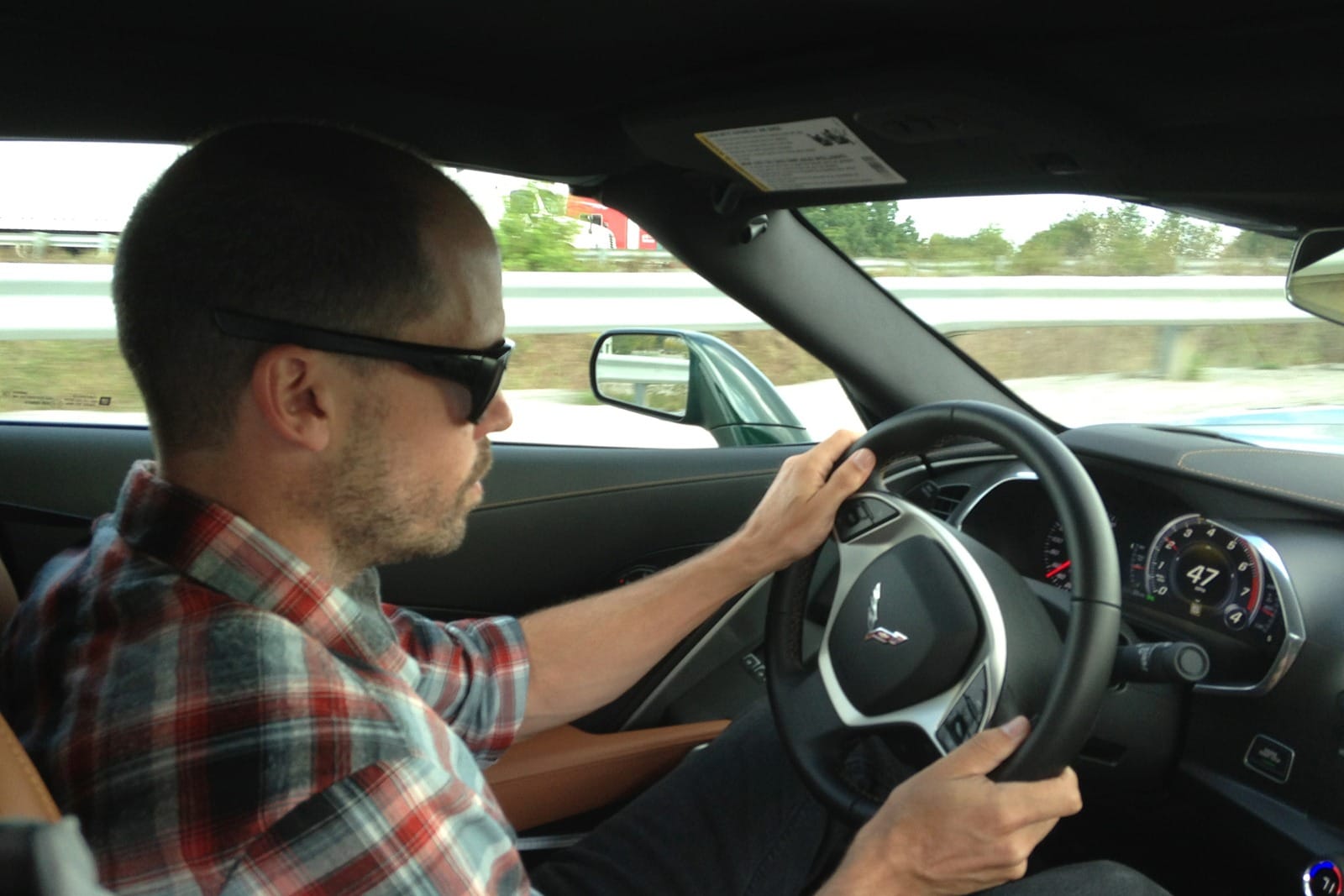
We're winging it on locations, just looking for the coolest, most colorful brick and painted backgrounds we can find among the industrial interior and rail yards. Inevitably, we find one of those parts of town that is slowly gentrifying, crumbling residences among outdoor patio bars, art galleries and film/music production houses. The young guys smoking on the sidewalk in their skinny jeans and plaid shirts don't seem fazed by the Corvette as its makes a few photo passes.
But a few of the local guys park nearby and hoot each time we come by. There's no room here to open up the V8, but I throw it in neutral a couple times and spike it and they seem appreciative. One guy in a Saturn stops us, wants to know if it's the new Vette. He also wants to know what we're doing and where we're headed. "I'm a repo man," he says, but I tell him it's paid for. No defaults here. Still, I'm glad when he disappears out of sight.
Although the Stingray's turning radius of 37.7 feet is almost two feet shorter than the C6's, I'm still nervous turning this thing around on these narrow streets rutted with potholes, gravel and rail tracks. When in doubt, I go down to the next block to come around for the next photo pass. I guess Kurt's getting a little exasperated by the wait, but I'm not grinding the front end on the first day of ownership.
As Kurt shoots the interior and detail shots with the remaining light, I watch the Vette from multiple angles. I didn't think I could warm to the new styling, too angular, too Camaro, not sensual, but I'm coming around quickly. The lines make more sense in three dimensions.
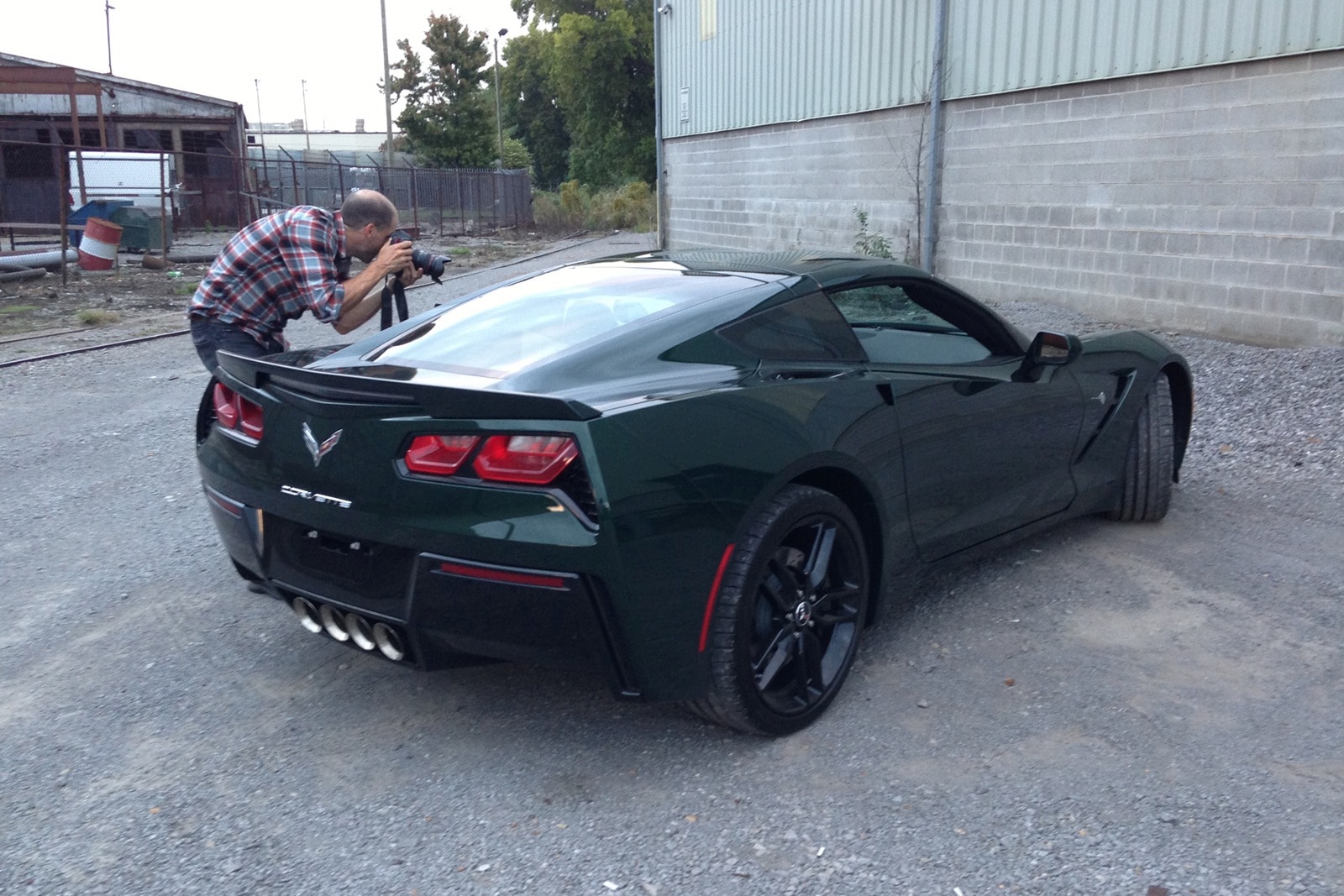
The continuity is more obvious than you see in photos, especially the rear end. If you've written off the new Vette only from photos, reserve judgment. I'm still not feeling the rear shoulder grilles, though. I know they're functional, feeding air to cool the transmission fluid and differential, but they have a whiff of aftermarket, like taillight louvers.
By dark, Kurt's done with the main shots. We drive down to Broadway to get a few photos under the Nashville neon. A girl in Daisy Dukes, boots and white cowgirl hat walks over from the sidewalk when we're stopped at a light and asks "Haaaaay, what kinda car is this?" I tell her, then she turns around to shout at a few dudes lurking in a doorway. "See, I told ya'll it was a Corvette!" She says she used to work in the car business and the Corvette has always been her favorite. Then she compliments the color.
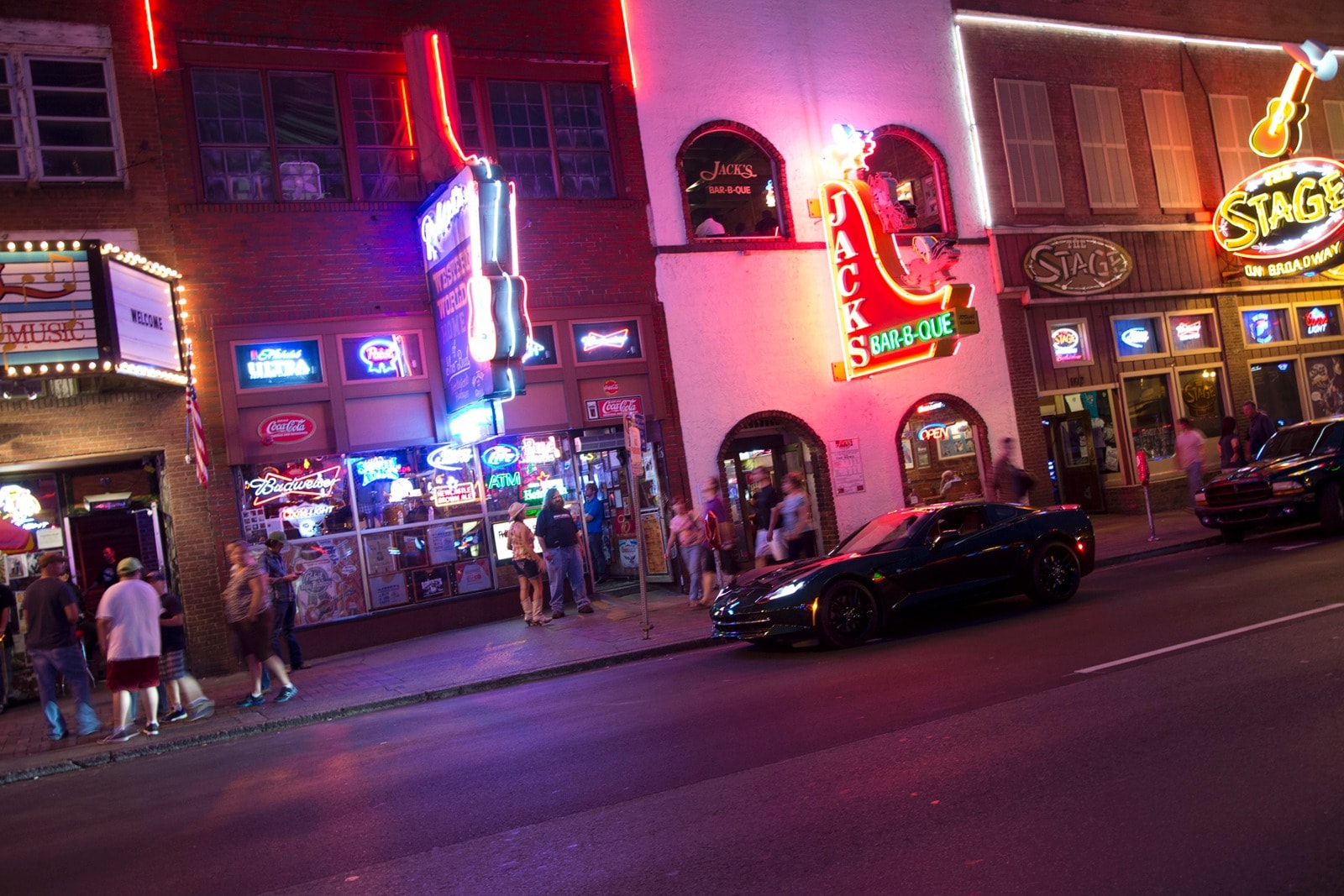
The odometer is just past 100 miles when we hand the keys to the hotel valet, and we make sure he knows we're aware of this fact. Later we walk down to Broadway for food and some live music. Tuesday night is quiet, but the Full Moon Saloon has a great trio ripping through Merle Haggard, Johnny Cash and Bob Wills classics, and the bar has bottles from local brewers Yazoo and Jackalope.
A couple walks in and sits with us at the bar. The lady, it turns out, is the former editor of a Memphis city magazine. We intend to pass through Memphis around lunch hour tomorrow and she recommends three places to try instead of the typical Beale Street photo op. After the band (led by bassist Joe Fick, if you're curious) takes a break and we contribute to the tip barrel they're walking around with, we make tracks. Tomorrow is the first of three long driving days.
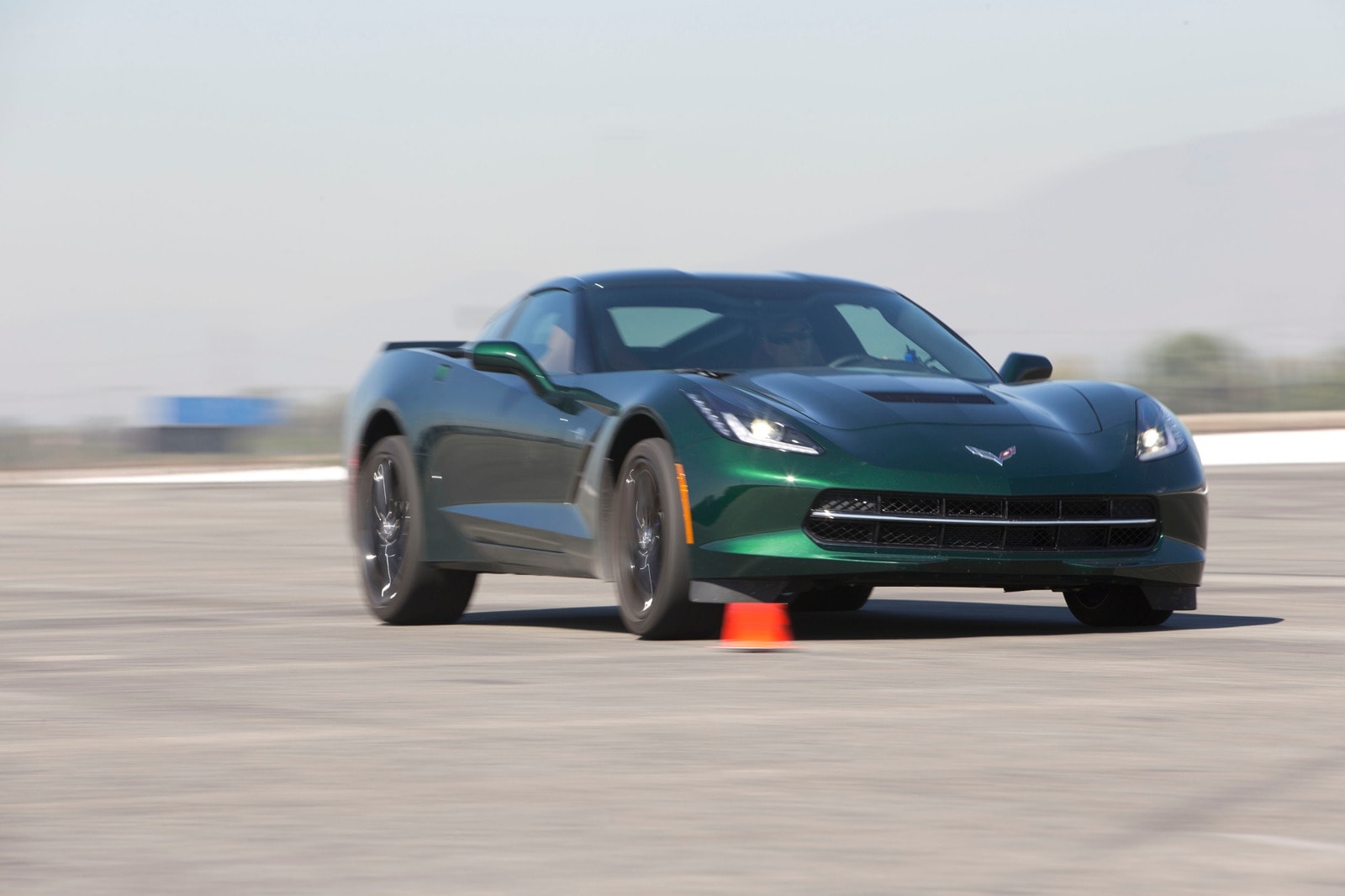
With the break-in miles completed during our 2014 Chevy Corvette's road trip back from the factory, we immediately proceeded to the track to see what this 460-horsepower beast was capable of.
2014 Chevy Corvette Stingray Track Test
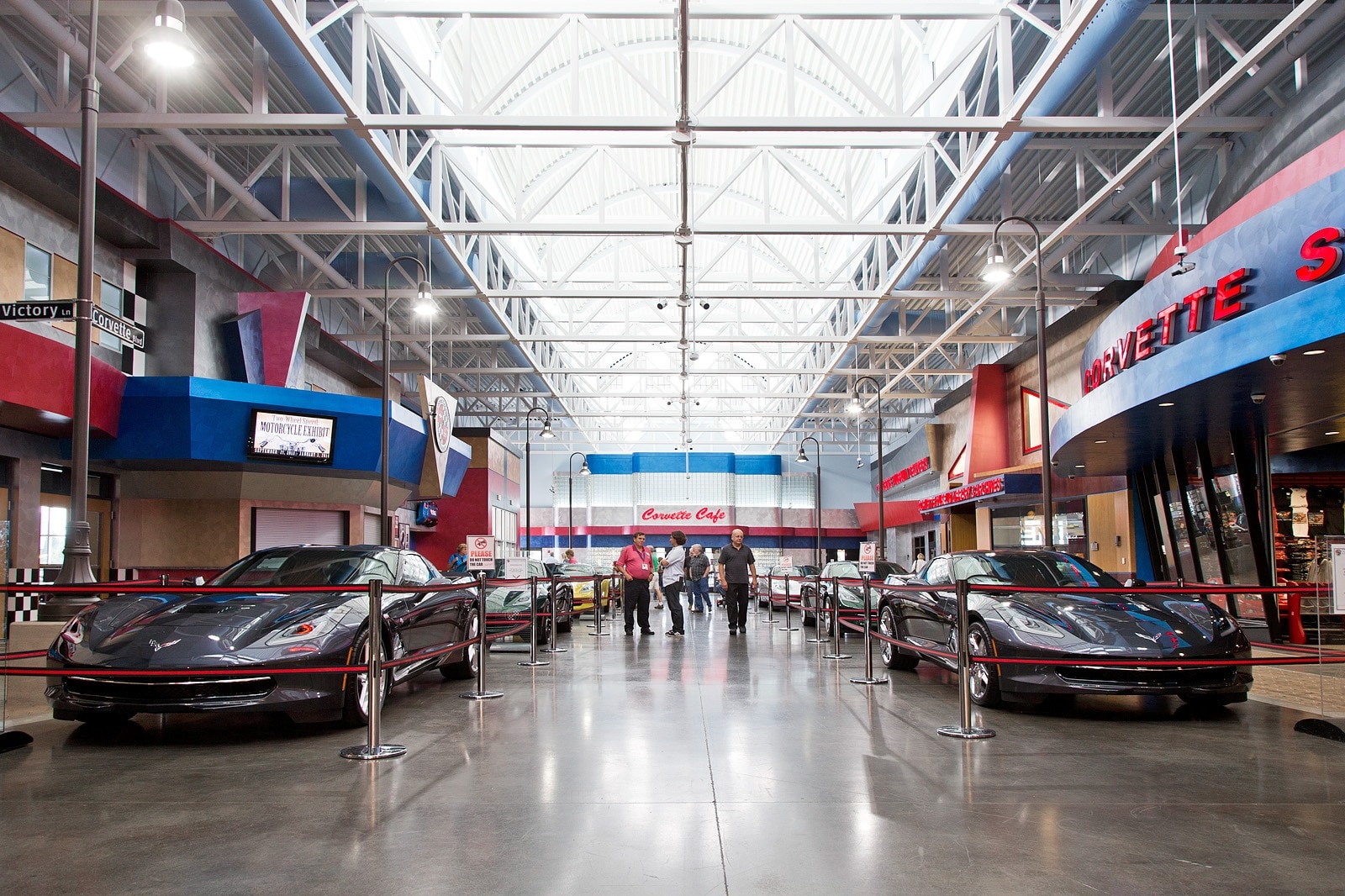
This is all very uncomfortable for me.
For one thing, I'm on camera. There's a live view of me standing around behind our new 2014 Corvette. I'm getting requests to wave and smile. Oh, and tweet for us, Kurt. I feel like I'm on display as much as the Corvettes. The second thing that's making me uncomfortable is the Corvette itself. It's pristine. Like, perfect. I get uncomfortable around perfect.
We're also spending way too much time around this car. Press cars come and go. Some of them are fairly well used by the time we get them, but as a photographer, I'm usually in and out of them before I know how to pair my phone. What I'm getting at is, I never develop a personal connection with a press car. There's simply no time. Today, I have more time than I like.
The factory tour doesn't help much either. Our amiable guide, Ron, walks us through the lines pointing out guys he used to work with and talking about the friendships he's made over the years. He introduces us to the workers. They ask us about the car we've bought. If they painted the car, we're asked about the color. If they installed the driveline, they ask us which transmission we chose. Everyone is interested. They want us to be happy. Damn. I just want to get on the road.
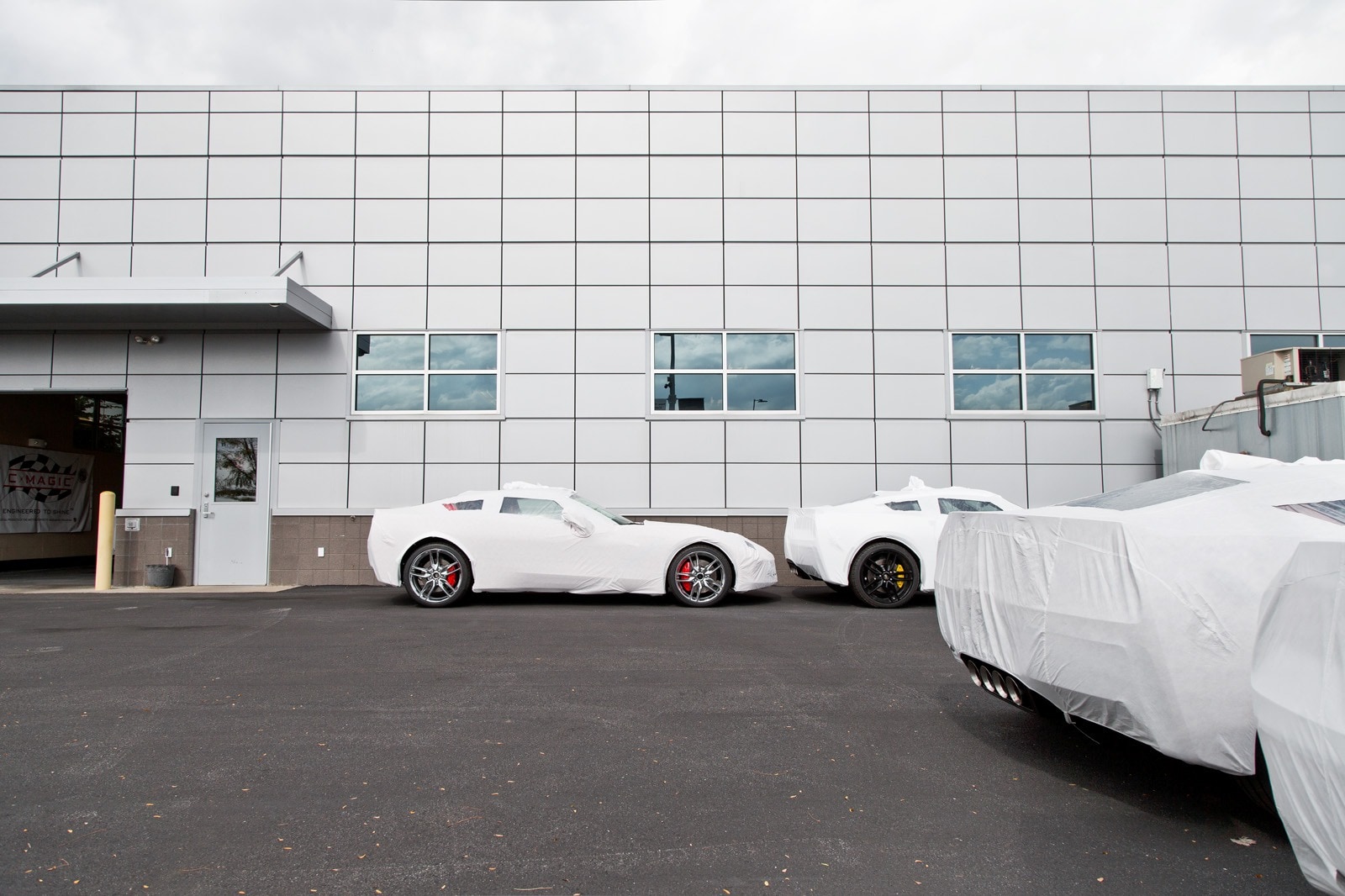
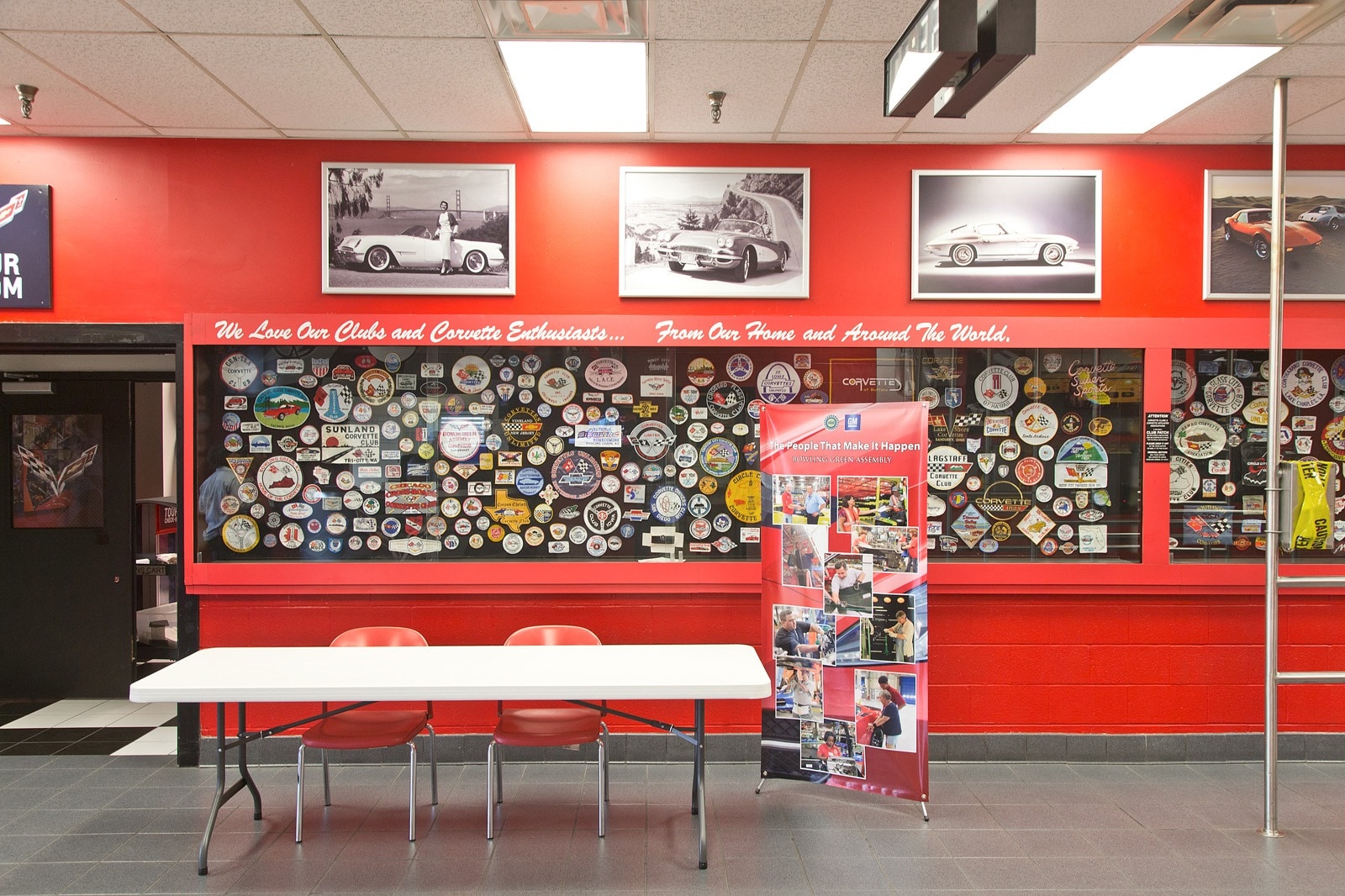
But wait, Ron won't let us skip the museum tour. I suppose we shouldn't, as this is the Corvette Museum after all and it all starts off as you'd expect. There's a cutout of Roy Orbison standing near a car he used to own. There's a history of the car's logo. But just around the corner, it got weird. This is the final resting place of Zora Arkus-Duntov...and his wife. Their ashes are sitting in the museum, complete with an unopened bottle of champagne and two glasses.
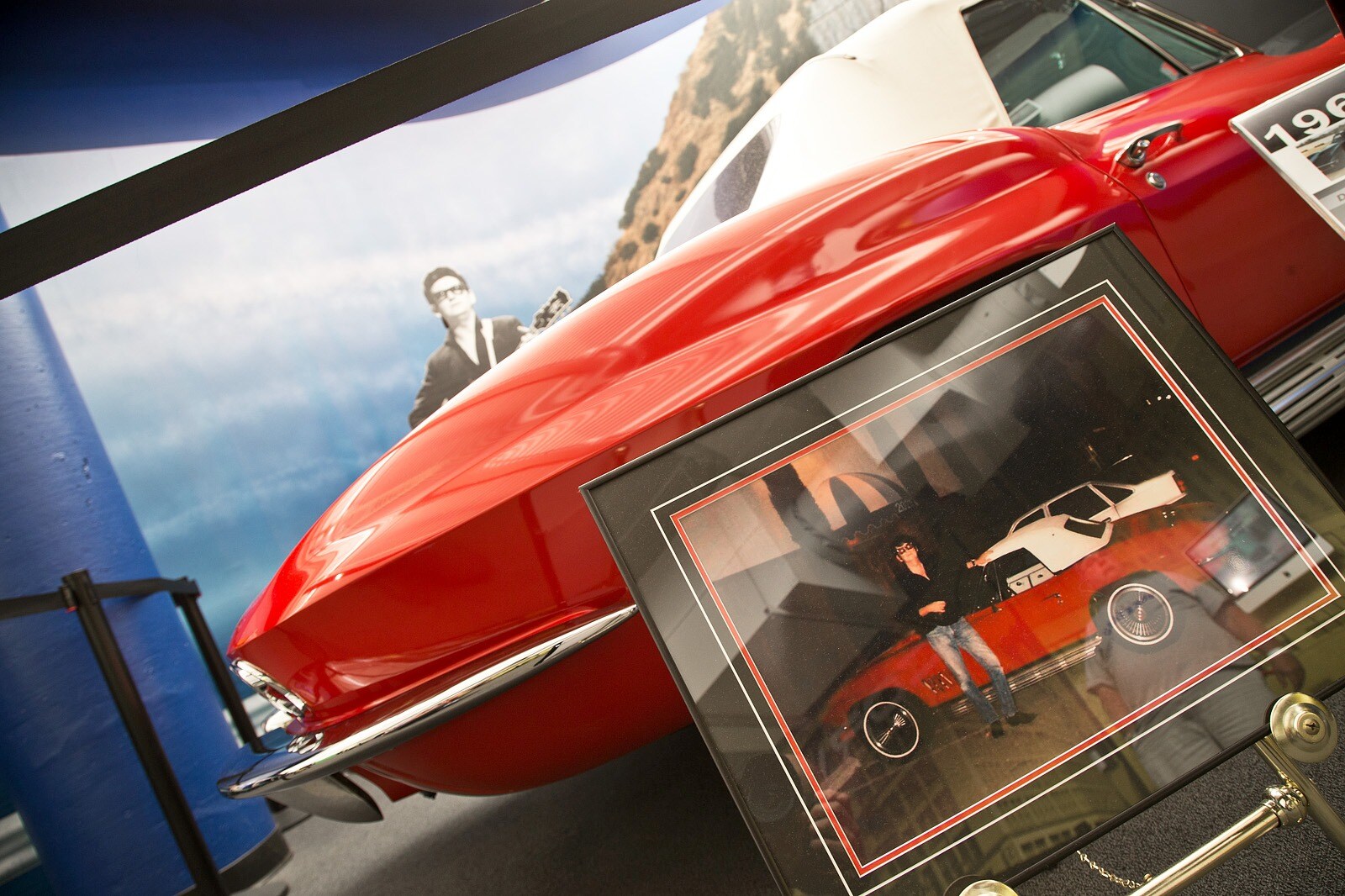
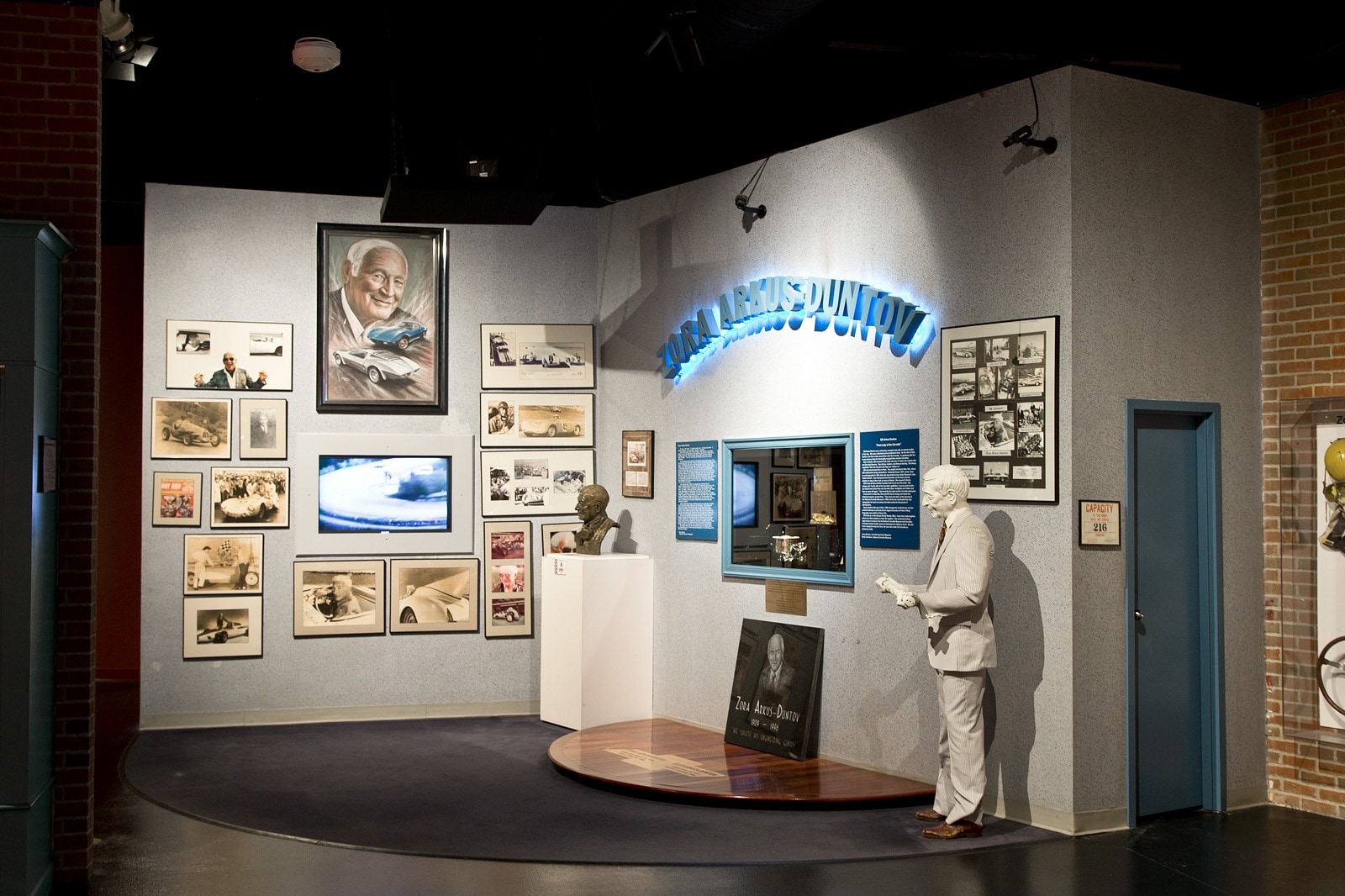
The fantastic Astro II XP-880 goes some way to erase the weirdness, as does the near cathedral that houses many important models from throughout the years but all this is starting to get a bit heavy. In the religion of automobiles, this is a mecca and the Corvette is the prophet.
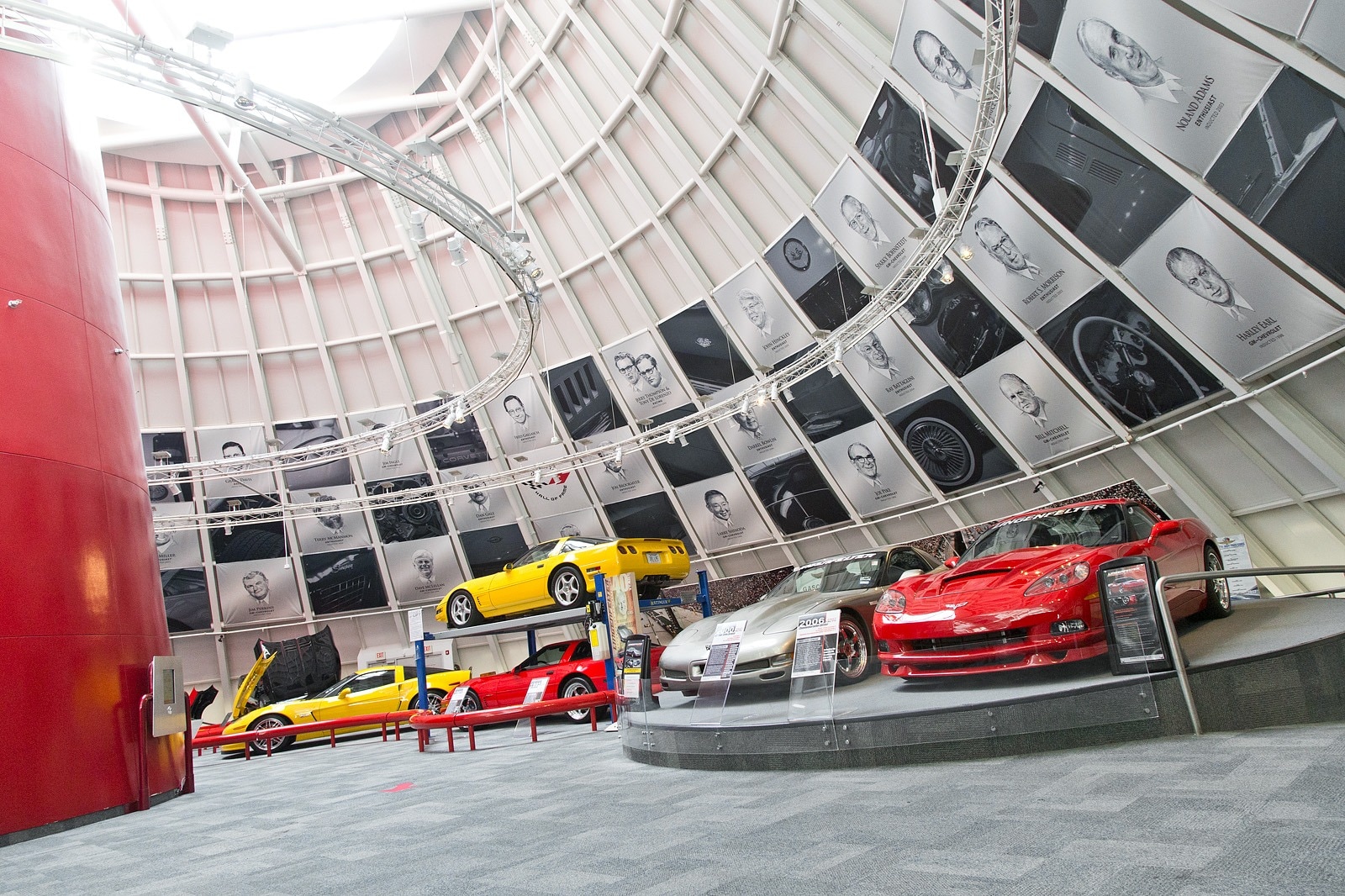
I shake it off as Ron leads us back to Number 23. We are then party to other new owners getting ushered out of the showroom to a standing ovation. For some, this was their life's work. A dream finally realized. For Dan and I, it was just another car. Or was it?
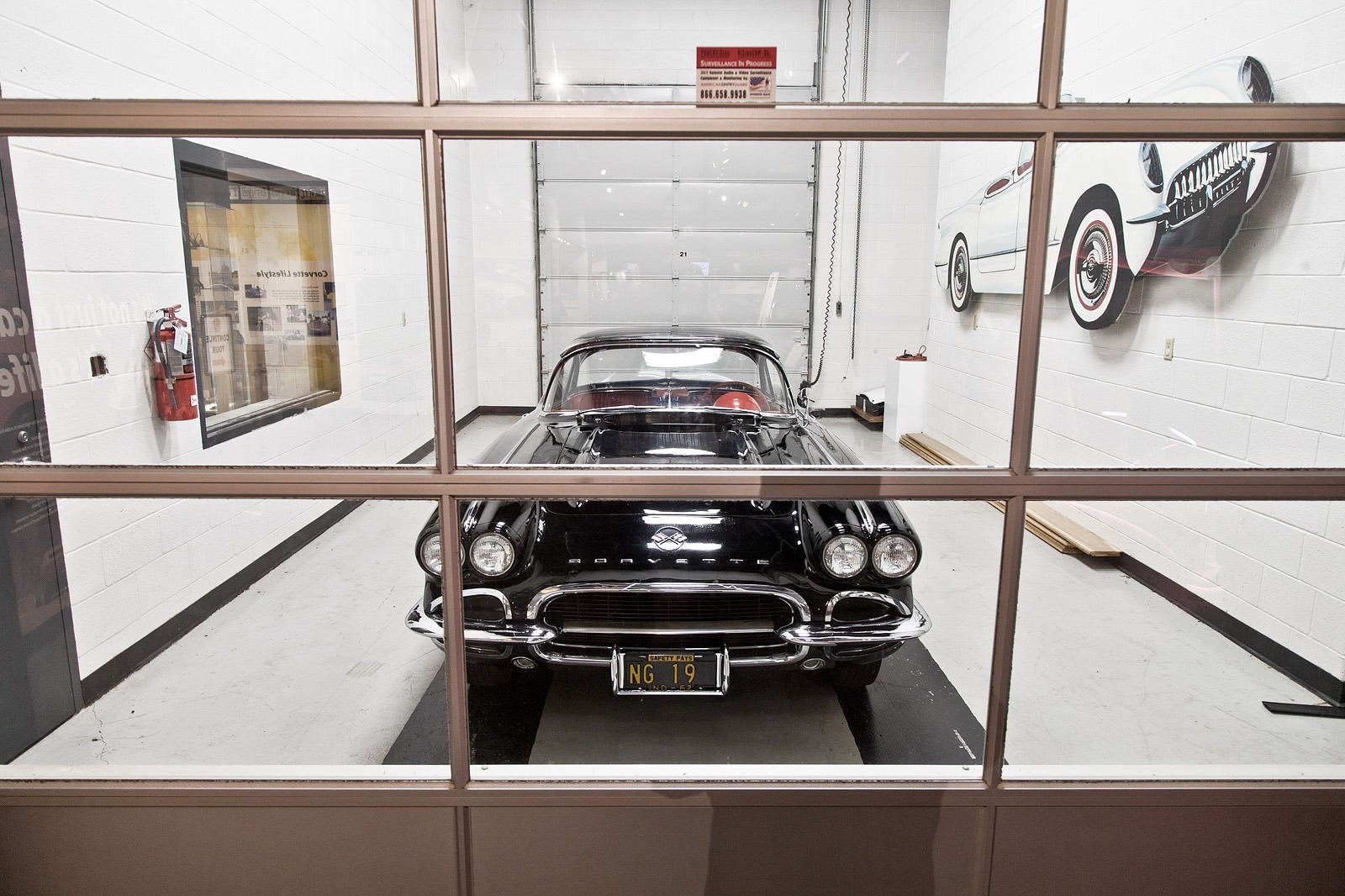

Dan's got music studios on the brain as we meander down through Tennessee into Alabama. And just as quickly as we're on the interstate, we're off of it. We're not driving through towns as we are through groupings of small buildings. The lack of pace here is palpable and the 2014 Corvette Stingray just seems so unnecessary.
An old truck would hit the spot.
After 30 minutes, I lose track of the cemeteries we've passed. I get the sense there's been more dying around here than there's been living and I'm all too happy to coast into Mussel Shoals and past an Astro Van limousine.
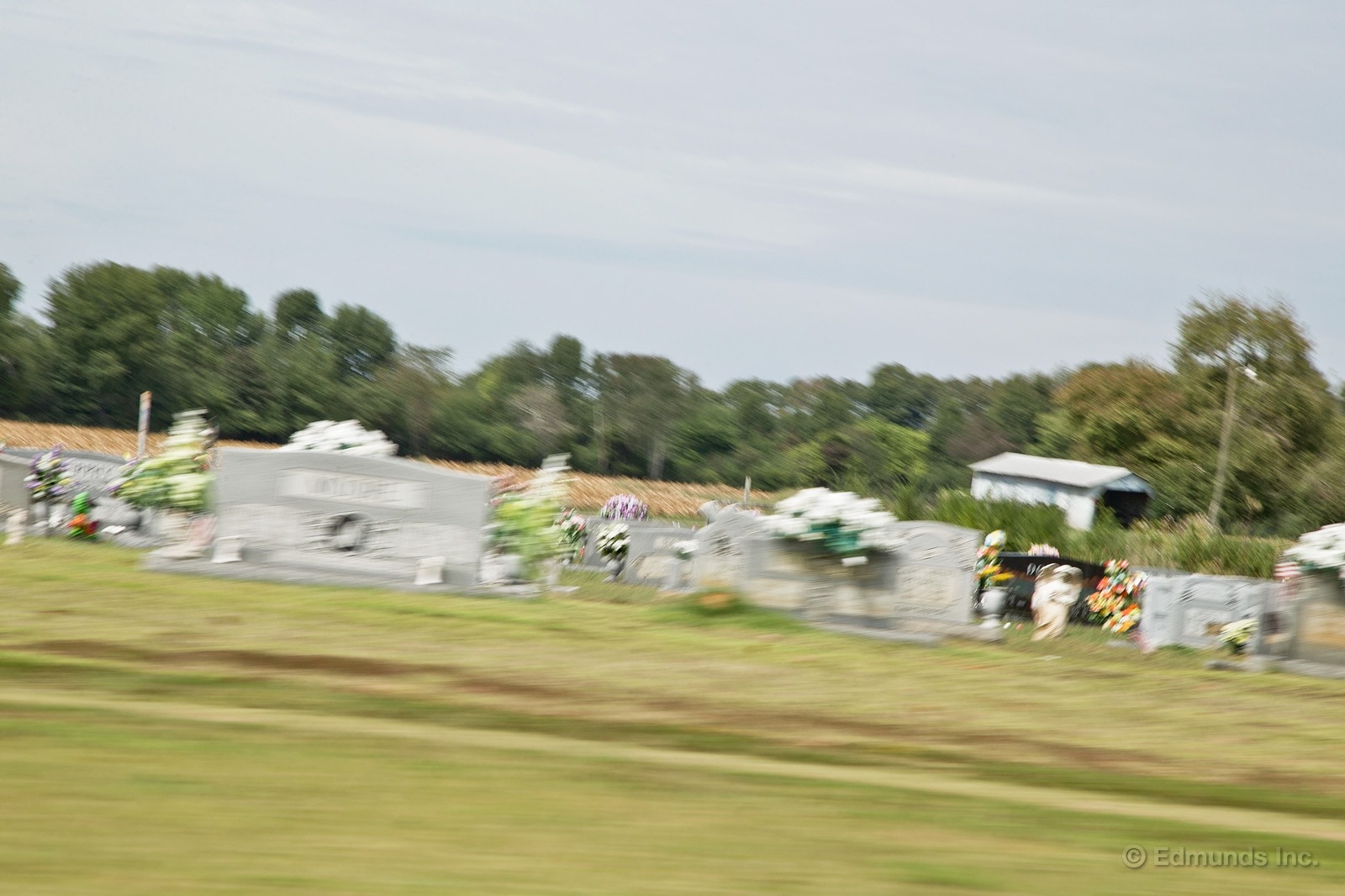
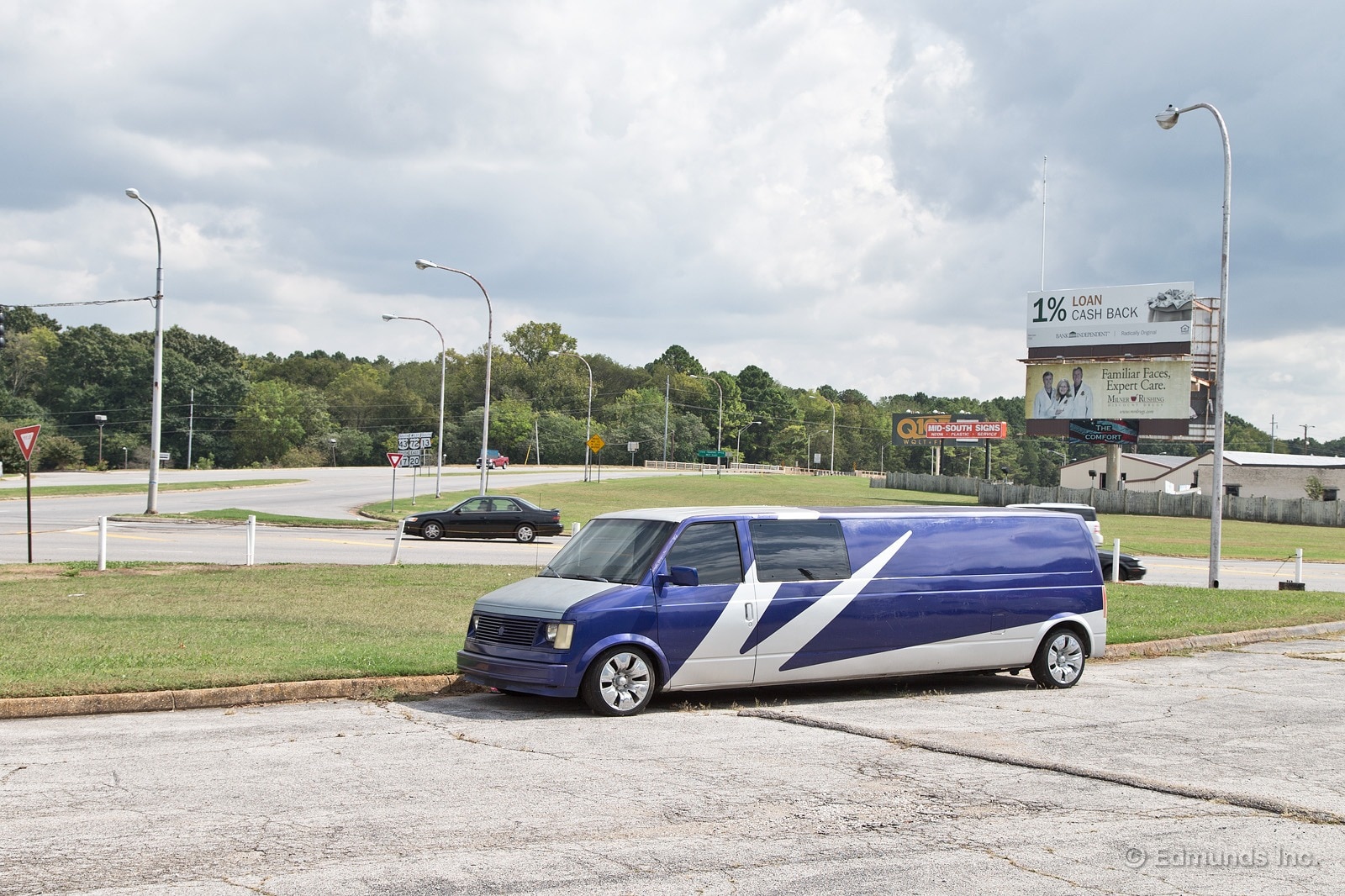
Memphis brings a new reality. Depressed seems to be the norm, so when a new Corvette pulls up at a stop light, it doesn't go unnoticed. No one hides their interest. Cars bristle with cell phones and pedestrians think nothing of walking out into traffic to stop you. You wait. You oblige, but you don't bask. It's not your car after all.
The BBQ joint, Payne's, sets a new standard for both a rib sandwich and gawking. Dudes walk up. They cross the street and they emerge from the local garage. In one minute there were two. In five minutes there were ten. Cars with the darkest window tint I've ever seen are pulling up and cracking their windows. More phones and a lot of music. For now, the car is surrounded.
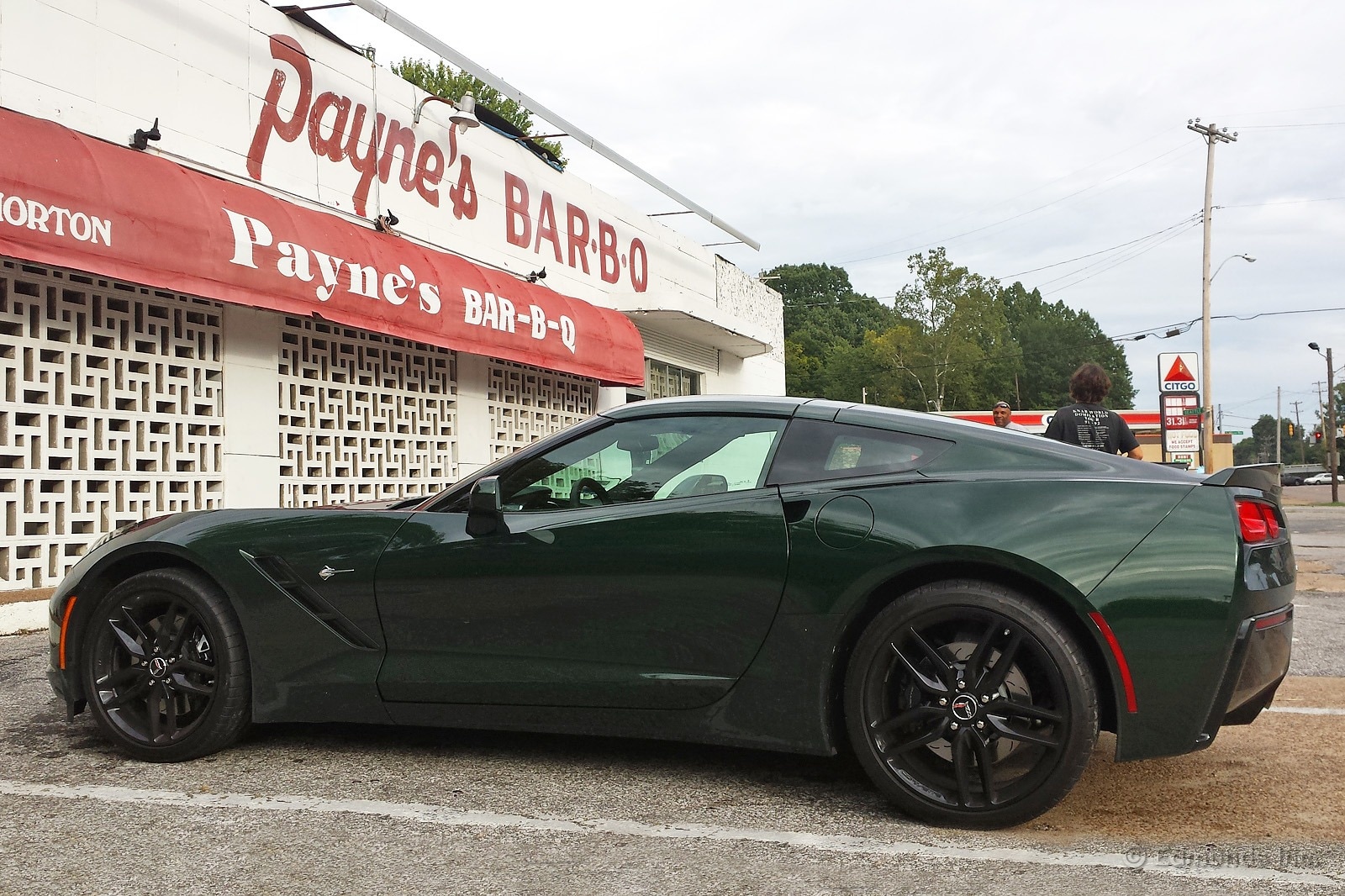
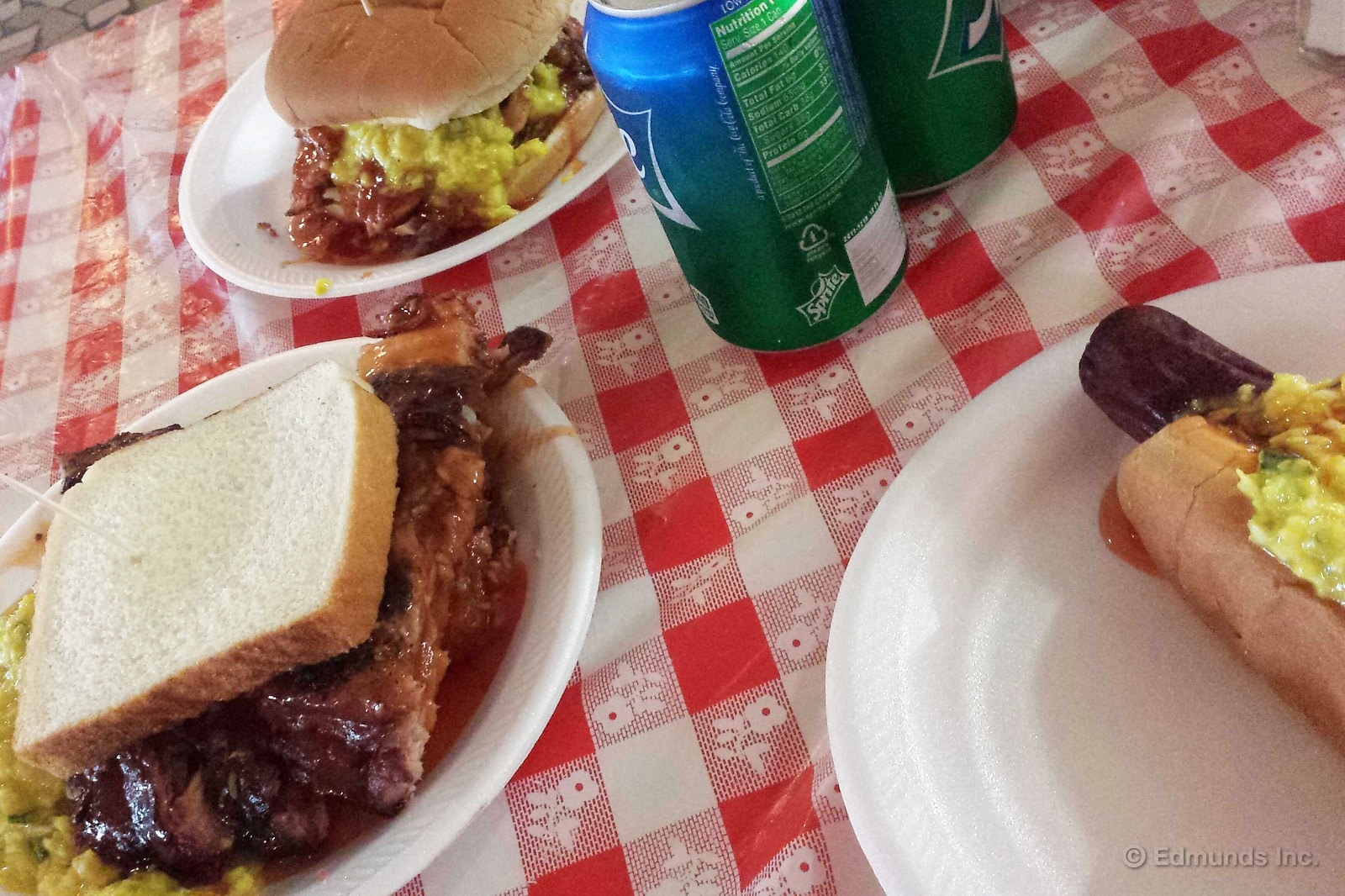
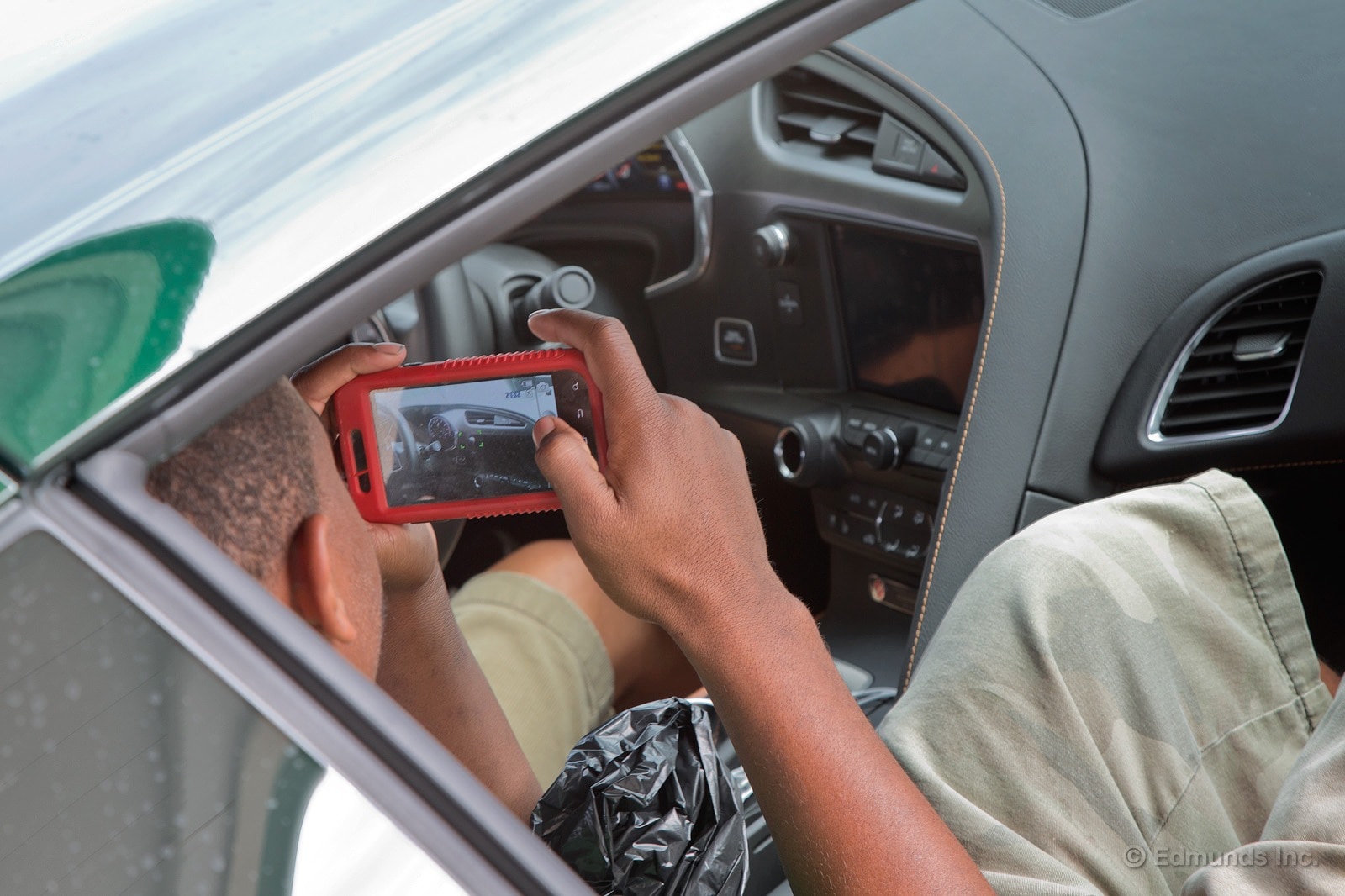
But there's something else at work here. This attention isn't directed at the Corvette because it's a new car or expensive. No one's mentioning money. Instead, this is the hot new Chevrolet. The brand is accessible. Chevrolet makes their Impala. It makes their Suburban. The Corvette is well and truly a halo car. It's inspirational. It's aspirational.
We bail and wave goodbye as I powerslide Number 23 out of the parking lot. Payne's was worth the time and so were the people. We'll make Arkansas tonight but not before the car blends with the deep, dark green of Mississippi at twilight.
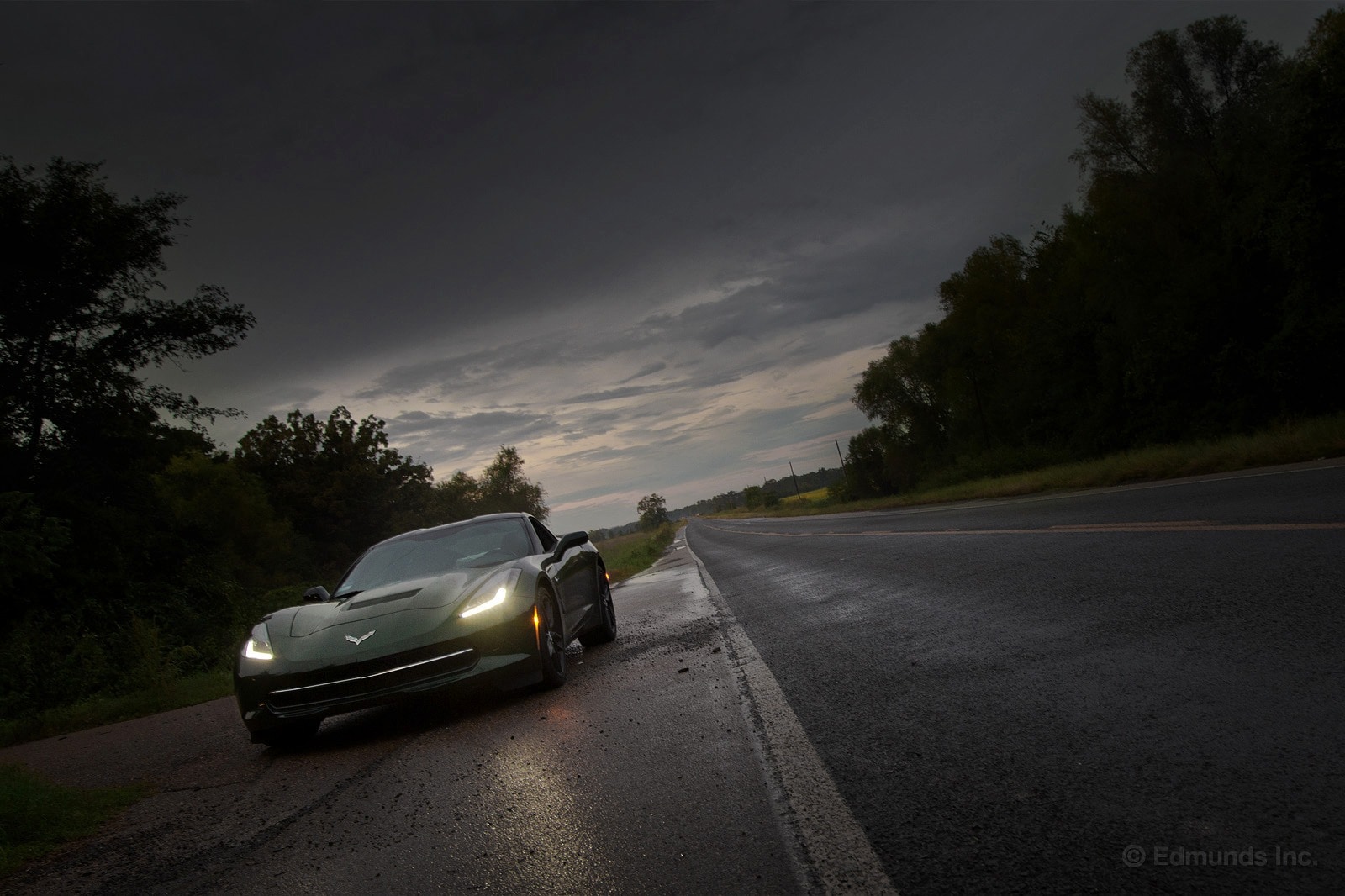
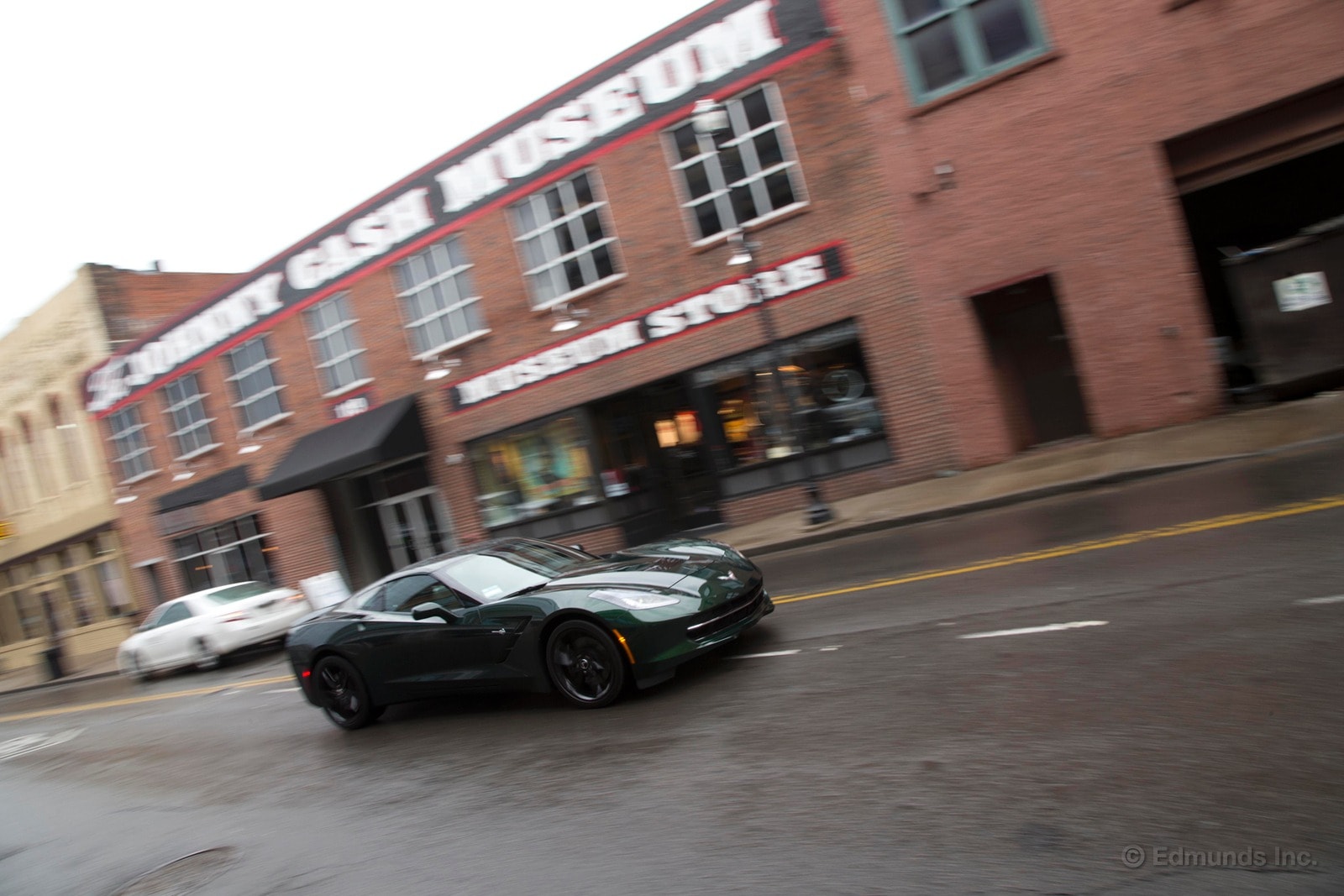
Light rain is falling this morning in Nashville. Guess the Stingray is getting wet today.
Sleepy surf troubadour Jack Johnson's tour buses are parked outside our hotel, so we pull the Corvette in front for some photos in the drizzle, then set a destination for Alabama in the nav system. I've convinced Kurt to make a 65-mile detour between here and Memphis to let me geek on a couple of legendary recording studios: Muscle Shoals Sound Studios and Fame. I promise great photo backgrounds.
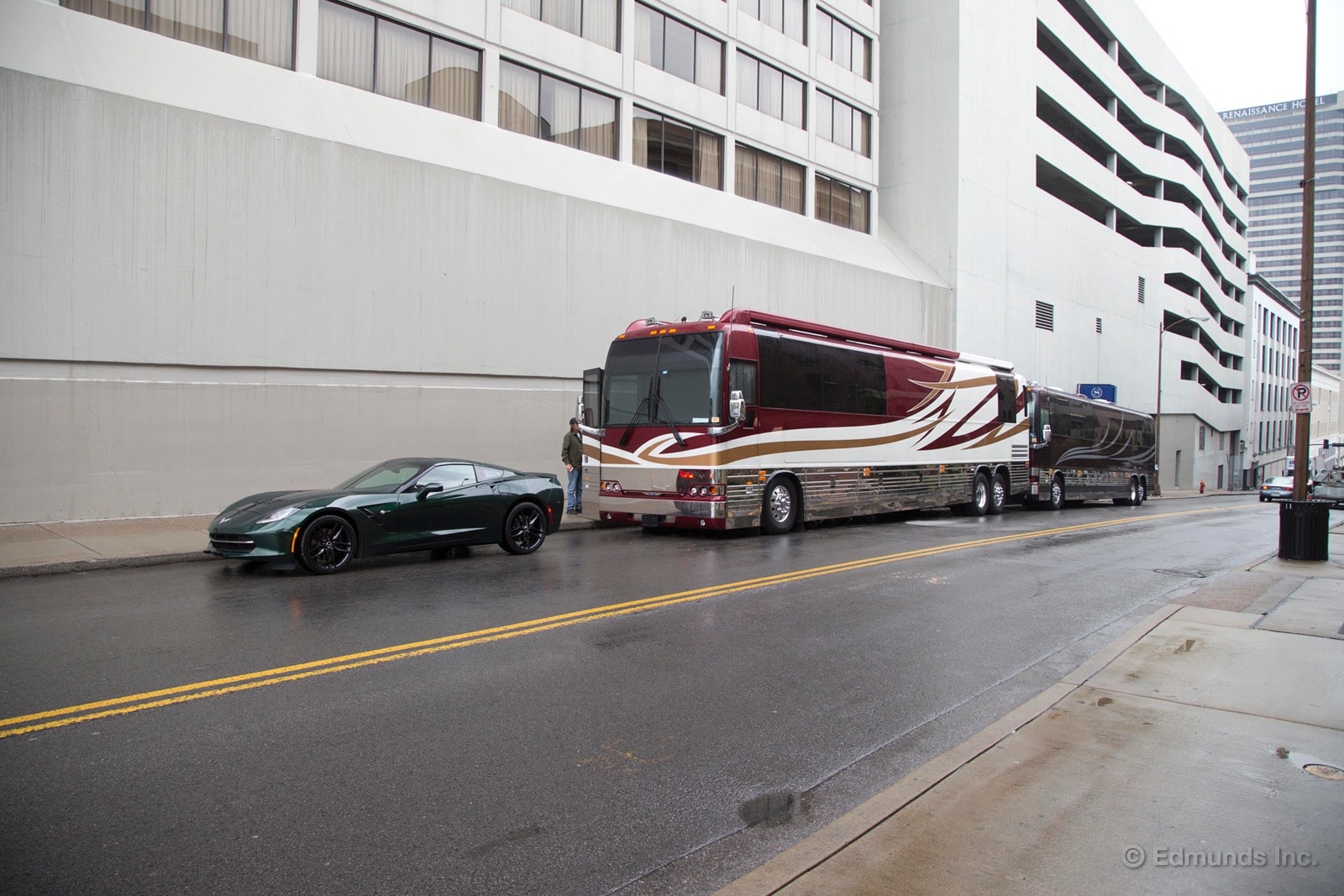
These two studios birthed the "Muscle Shoals sound," a different take on 1960s-'70s Southern soul music than what came from neighbors to the north in Memphis. Etta James, Aretha Franklin, Wilson Pickett, the Stones, and Bob Dylan were among hundreds of artists who came to work with a small group of mostly white musicians, steeped in soul and R&B, who formed the studio house bands. It's easy to forget that in Civil Rights-era Alabama, this kind of artistic integration could yield heavy consequences.
We stop at the original Muscle Shoals Sound Studios building first. The studio moved to a larger facility in 1978 before changing hands and names, but the decrepit brown building still stands, listed on the National Register of Historic Places. We have to drive around the back and up on the scrubby lot to get the Corvette in photo position. The Stones recorded "Brown Sugar" here, but the Vette has a better connection with Detroit son Bob Seger, whose backseat classic "Night Moves" also went down here.

We also hit Fame Recording Studios just a couple of miles up the road for a photo op. Fame isn't as photogenic, just a fairly non-descript building next to a CVS drugstore, but it's got the same mojo. The Muscle Shoals Sound, and the musicians who created it, all started here.
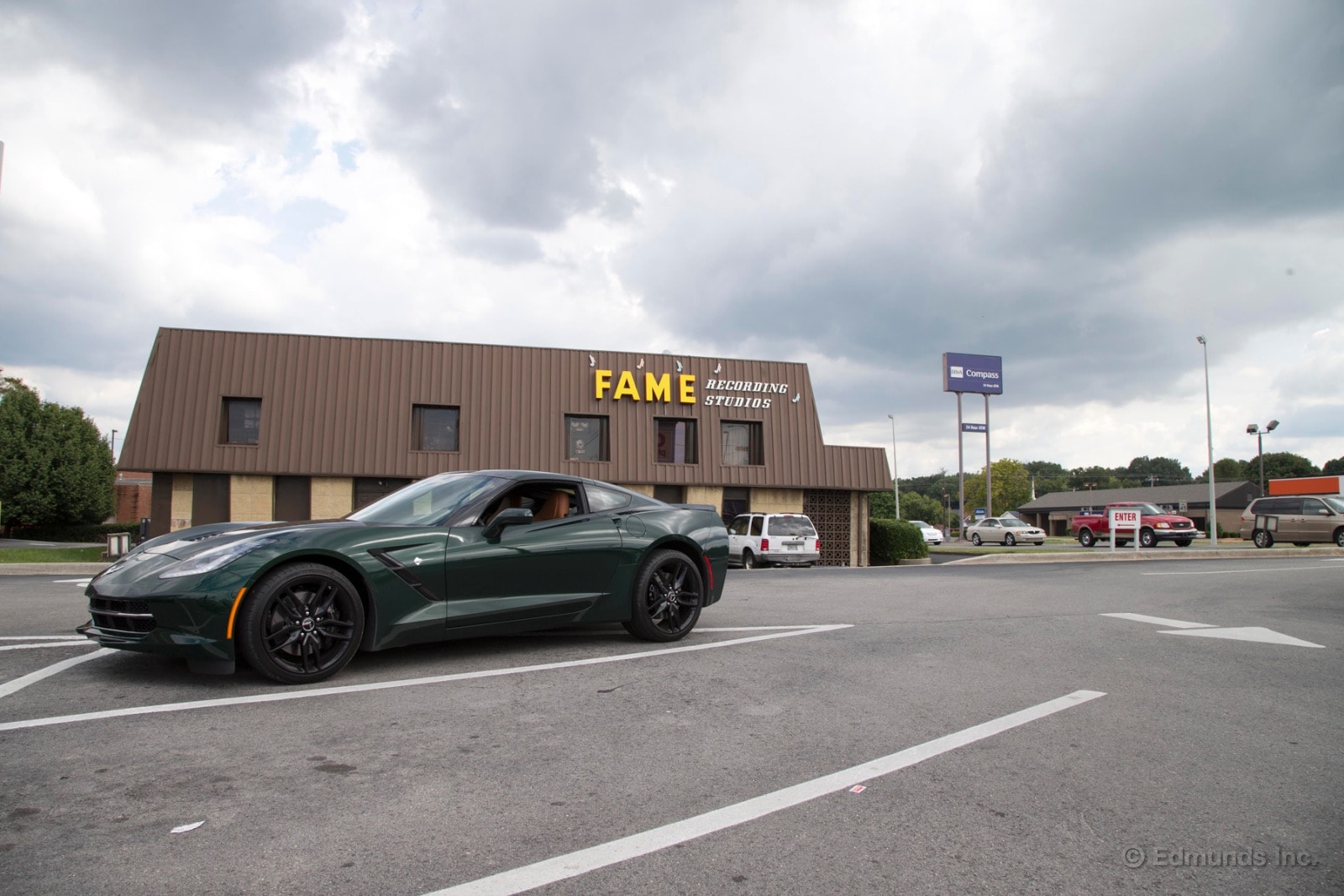
Back on the road, we head northwest on Highway 72, crossing briefly through Mississippi, now again back into Tennessee. We make our first fuel stop about 30 minutes before Memphis, and a young guy working at the station, Marcus, can't believe he's seeing the new Corvette and out comes the smartphone. Marcus says he's a Chevy guy and points to his Cavalier parked in front of the mini-mart. Says he might do some work to the engine, maybe boost it.
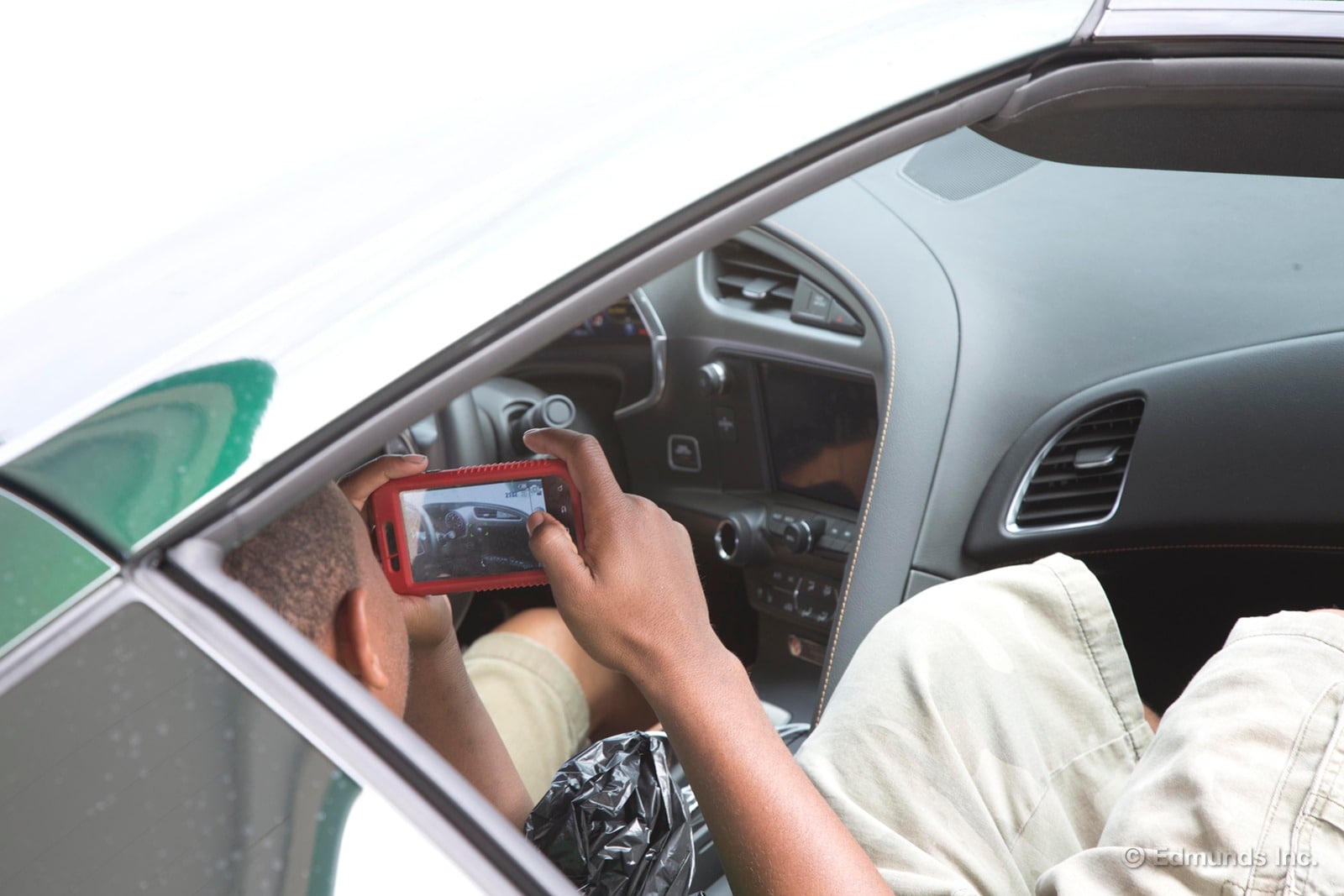
Kurt resists the urge to shake some sense into the kid ("save your money to modify a better car!"), but realizes we all need to make our own mistakes in the pursuit of speed. But Marcus is great and his enthusiasm for the Corvette is infectious. Even we get psyched on the car all over again.
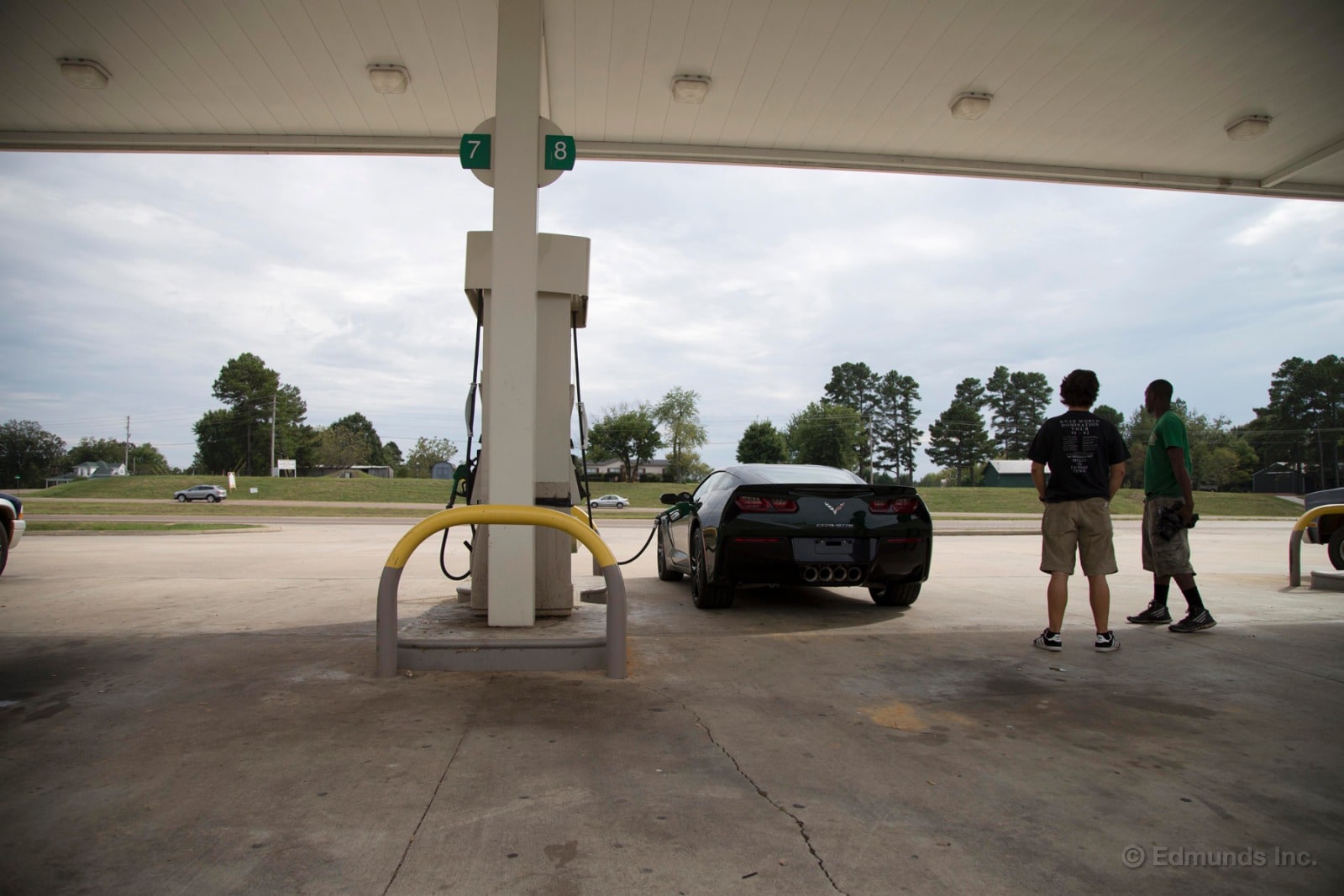
We've covered 362 miles so far and averaged 19.6 mpg on the first tank. The Stingray takes 16.8 gallons of 93 octane and as we pull out of the station, Marcus warns us of a speed trap a few miles ahead.
Nearing Memphis, we head to Payne's Bar-B-Q, one of three lunch places our Nashville bar friend suggested. The nav system has done a commendable job getting us in and through rural Alabama, but its processing delay is frustrating. Each input, each number and letter, must be slow, firm and deliberate. Our long-term Cadillac ATS is also like this, and it's a reminder that GM needs to find a supplier with a better grip on smartphone and tablet interfaces. At least the graphics are crisp and clear.
The navi leads us along Lamar Avenue to where Payne's has operated for 41 years as a family-run business. We park in front of what we think is a window, but it's hard to tell behind a concrete facade that I assume helps diffuse the midday sun. Before we're out of the car, the Stingray has a new fan and out comes a smartphone.
Even in the late afternoon, Payne's is dim inside. This place would fail any Los Angeles County health inspector's standards, more a large home kitchen than a restaurant. Two refrigerators sit side by side and a pot of beans cooks on a single four-burner range. Kurt notes that the high ceilings look like a converted bank.
But the food lives up to our friend's hype, just delicious home cooking with tangy sauces and slow-cooking techniques refined over a couple of generations. Today, the founder's granddaughter and grandson run the place. Kurt and I sit and eat, but most people order a smoked sausage or sandwich to go. An older lady waiting for her order asks us about the car and compliments the color.
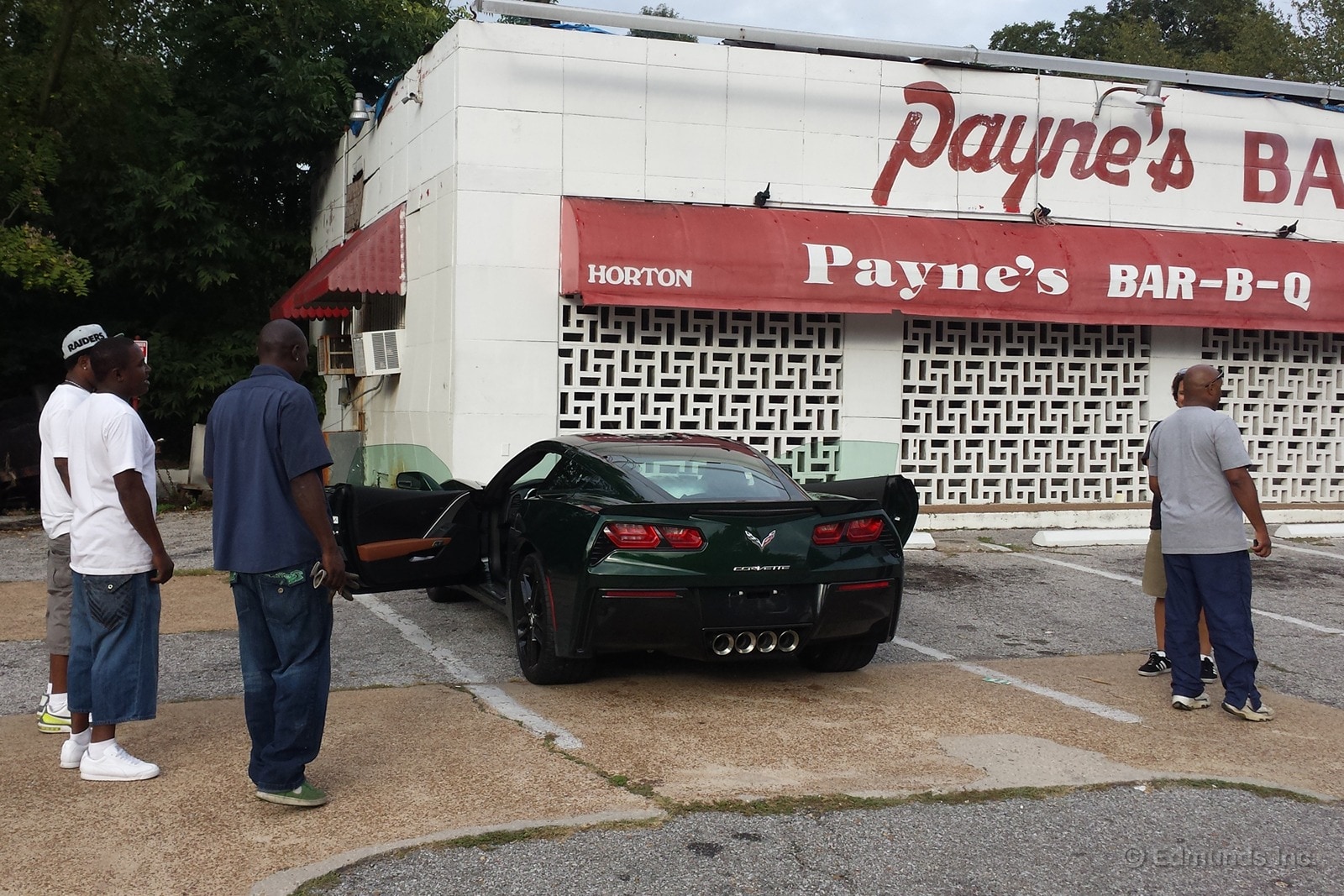
A black C5 Corvette pulls up as we walk back out to the lot. The driver, a fit, barrel-chested man gets out, excited, and makes a beeline for the Stingray. We open the doors and hood for him to check it out, and he says he may have to bypass the C6 he wants and instead wait for a used C7.
With the Corvette fully exposed, a crowd gathers. A few guys come over from the tire shop next door. An SUV pulls up along the sidewalk and a few people pour out. Everyone's popping photos on smartphones. I'm convinced ours is now the most widely photographed C7 on the road. Chevy's marketing people couldn't orchestrate this any better.
With his track pants and Iowa State t-shirt, the C5 owner looks like a high school football coach. He says he's a Memphis motorcycle cop. Then he asks, "How you boys find this place?" I tell him that a Memphis local we met in Nashville recommended it. He nods and agrees that Payne's is the best barbecue in town. Then he leans in close and asks "You boys know you're in the 'hood, right?"
I say we had a pretty good idea while driving up Lamar, but nothing that looked much different from some of L.A.'s areas. He says that we're indeed in the real 'hood and just warns not to get too comfortable with our new friends, lest we end up with a gun in our back and taking a bus back to Los Angeles. We notice that the rest of the crowd gives this man a wide berth when he circles the Corvette.
Duly noted, we pack up when our cop friend disappears into Payne's. Kurt makes the Stingray squeal as he pulls back onto Lamar Avenue to some hoots and waves from the crowd still lingering in the parking lot. Later, Kurt posits that we may have received a very different welcome in, say, a 911. Instead, we pulled up in an exciting new Chevrolet which, judging by reaction, still earns plenty of respect in the real hood.
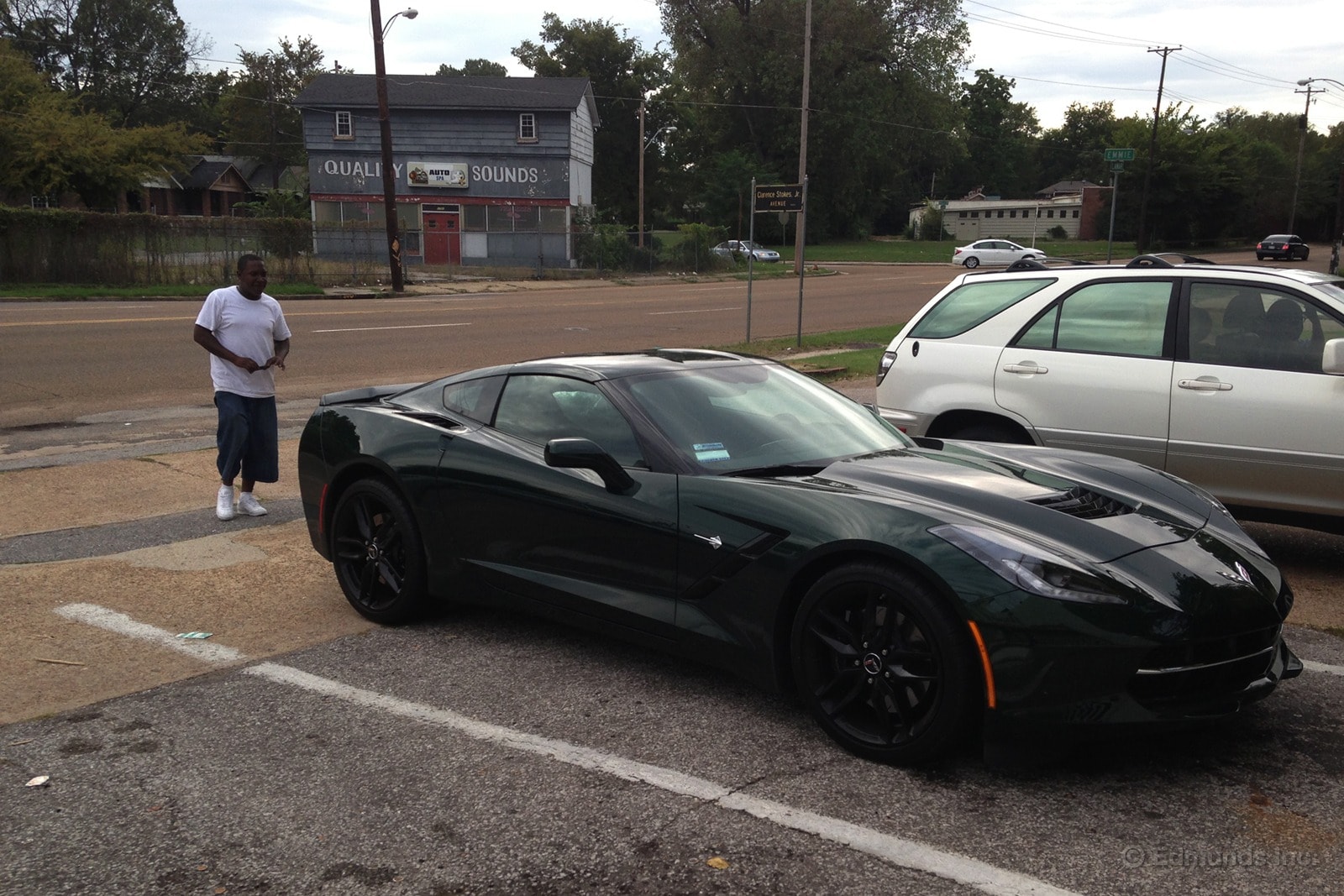
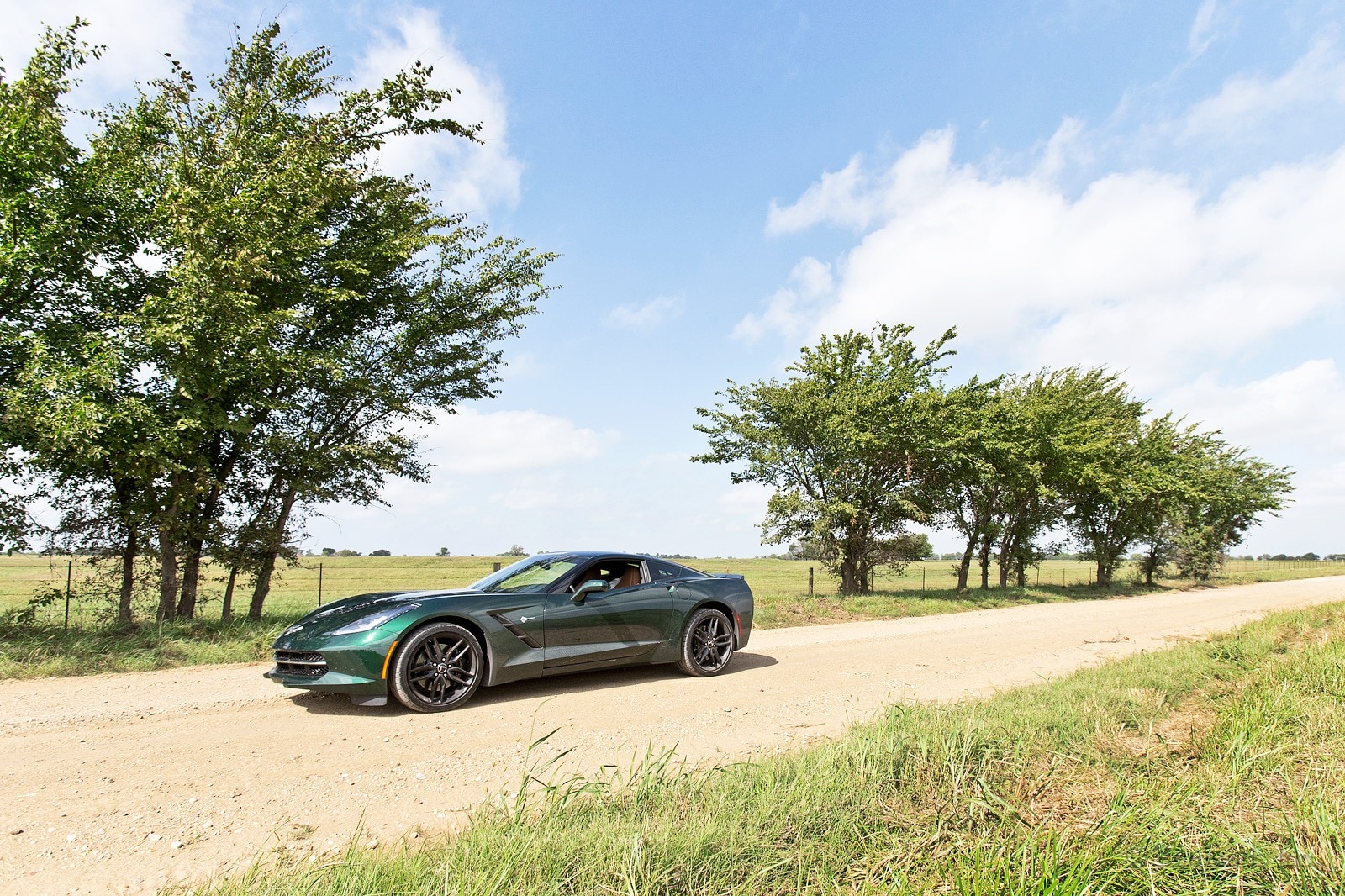
Corvette owners aren't strangers, they're just friends who haven't met.
The night we checked into Conway, Arkansas, two older guys occupied us with stories of their times with Corvettes. They've owned one. No, make that two. A '67 and a '69. They're too old for that now, but not too old to tell us a few stories as we unload our bags. This...this is becoming a trend.
Frio and I are keeping to ourselves, for the most part, but the Corvette owners are finding us. Every one of them has a story. Their time with a Corvette bears repeating.
The great, green hills of Arkansas drift past our windows, and apart from the visible nuclear plant, we wonder what lies on the other side of the interstate. This is the pace, and the pain, of a scheduled road trip. There are so many opportunities just an hour or so away, but time prohibits too much. I bitch, and then I shoot from the window seat.

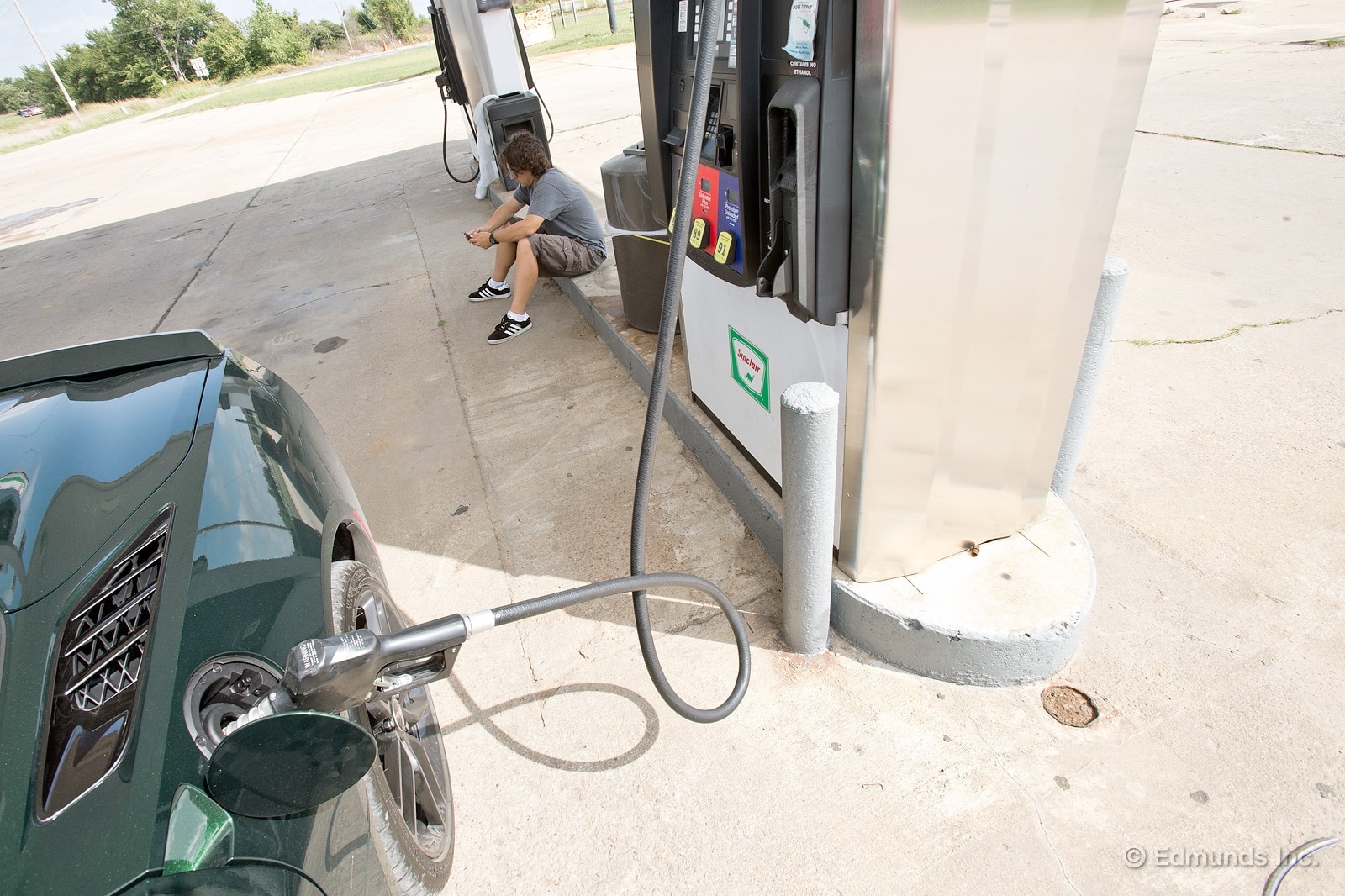
Oklahoma calls for a fill up, but the idea of a detour gets the better of us and we're off onto a dirt road in no time. The sky is huge and the lack of everything is refreshing. Open space is addicting and it's with some regret that we head back to the Sinclair to fill our tanks. And then we meet another friend.
Camp Pendleton is 90 minutes south of L.A. and this iffy guy did some time there. He abandons his Dodge and chats up Frio about a few of his exploits. The tattoo of a dagger on his arm told me he's holding some back, but his head shakes with nostalgia as he retraces his steps. He digs the car. He digs us. Dan grabs second and digs down the on-ramp.
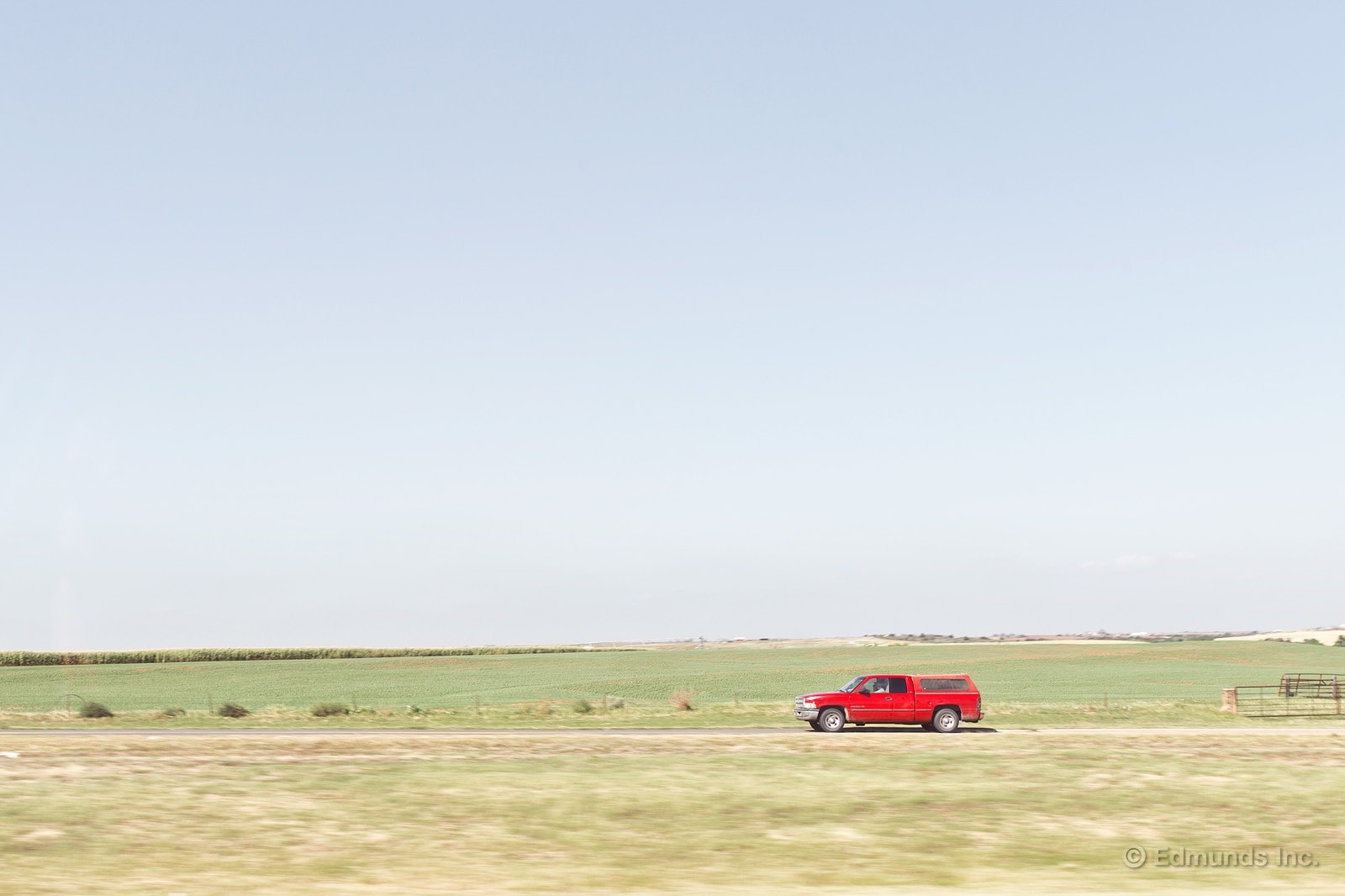
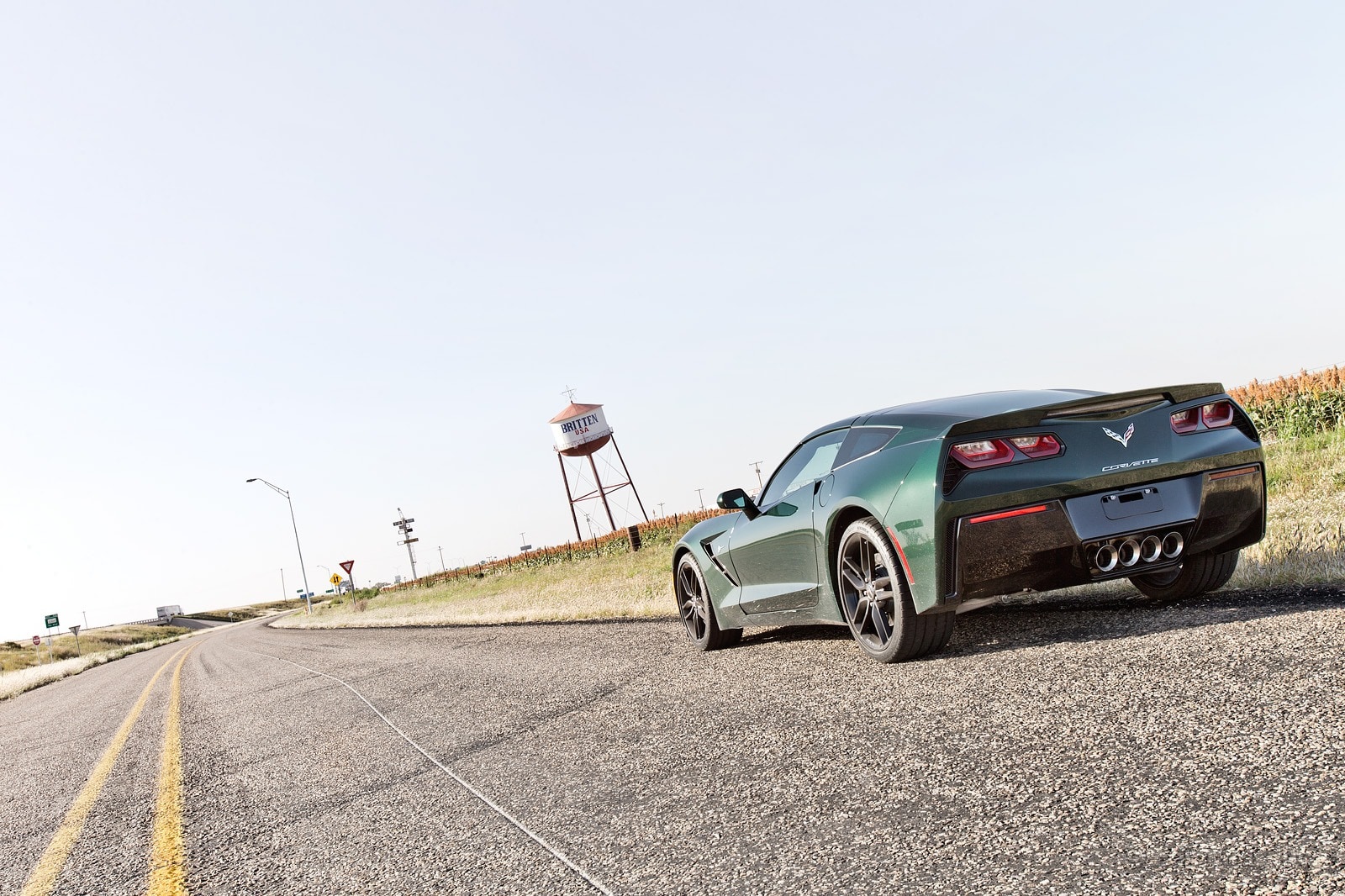
Texas takes over and Route 66 starts to surface. Long since bypassed and overrun by I-40, there's not much of it left. What is left is just that, it's been left. Ditching the 40 here and there takes us through derelict towns with more memories than residents. Gas stations, empty. Restaurants, empty. Motels? You wouldn't dare.
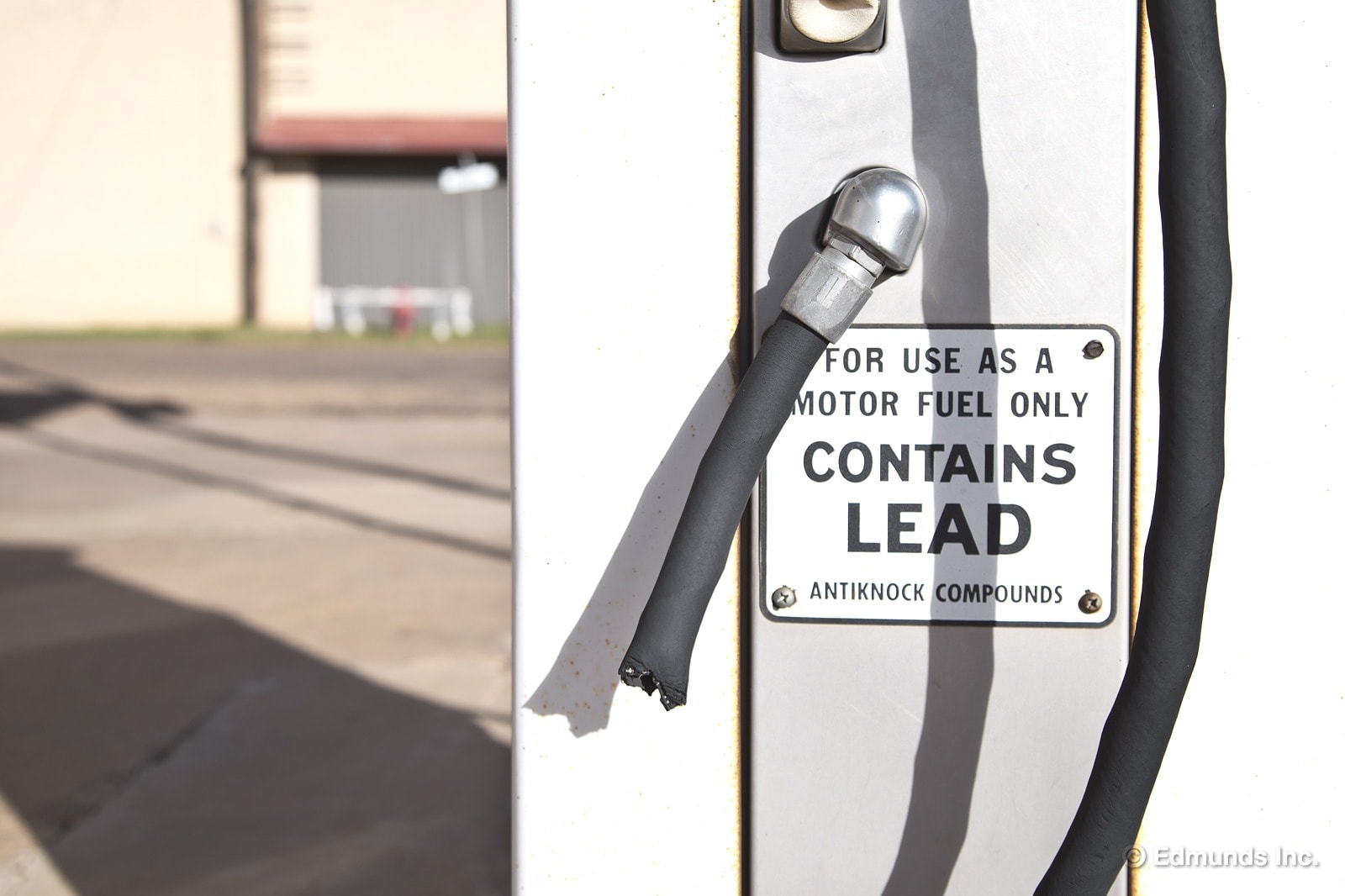
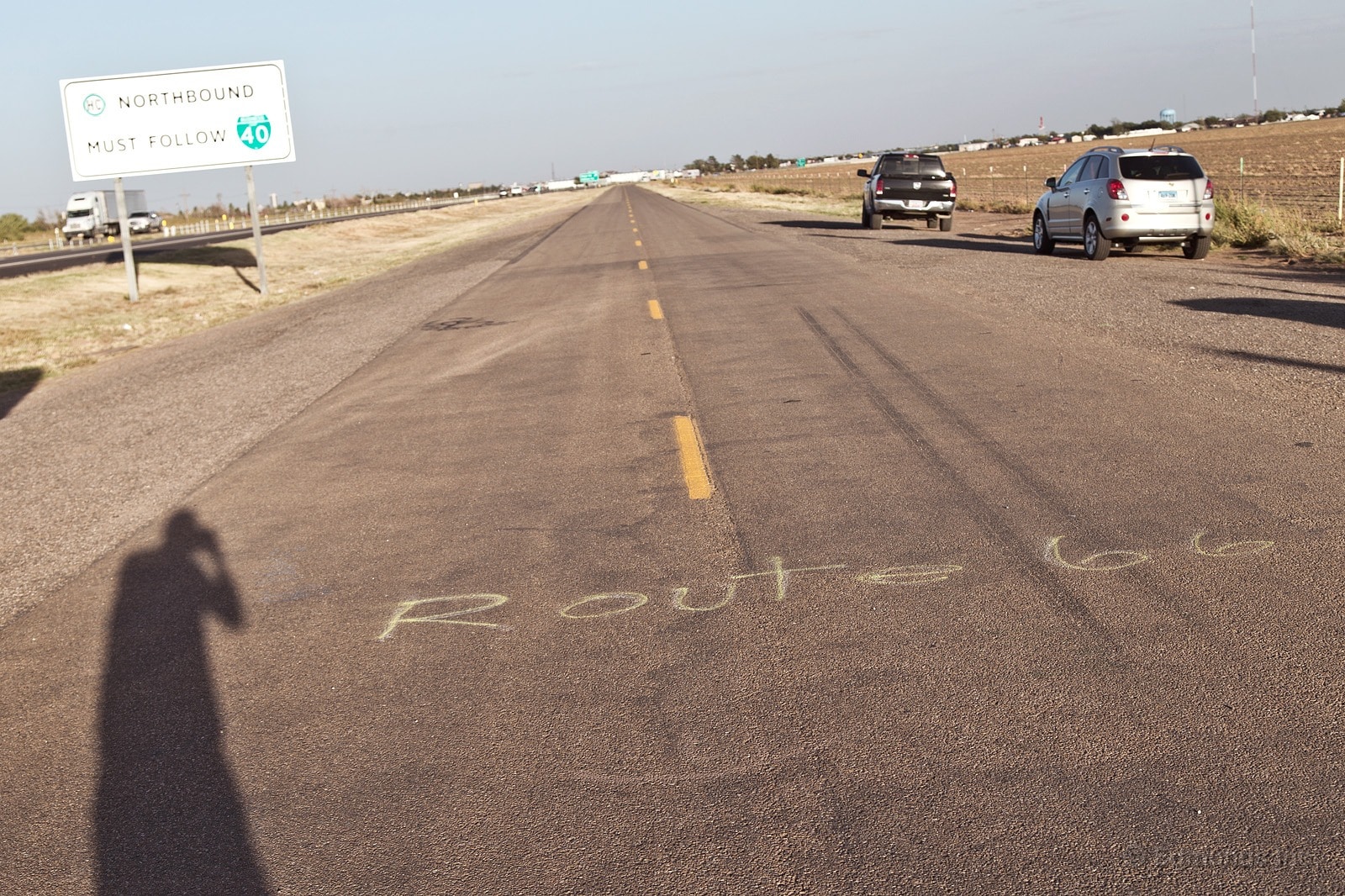
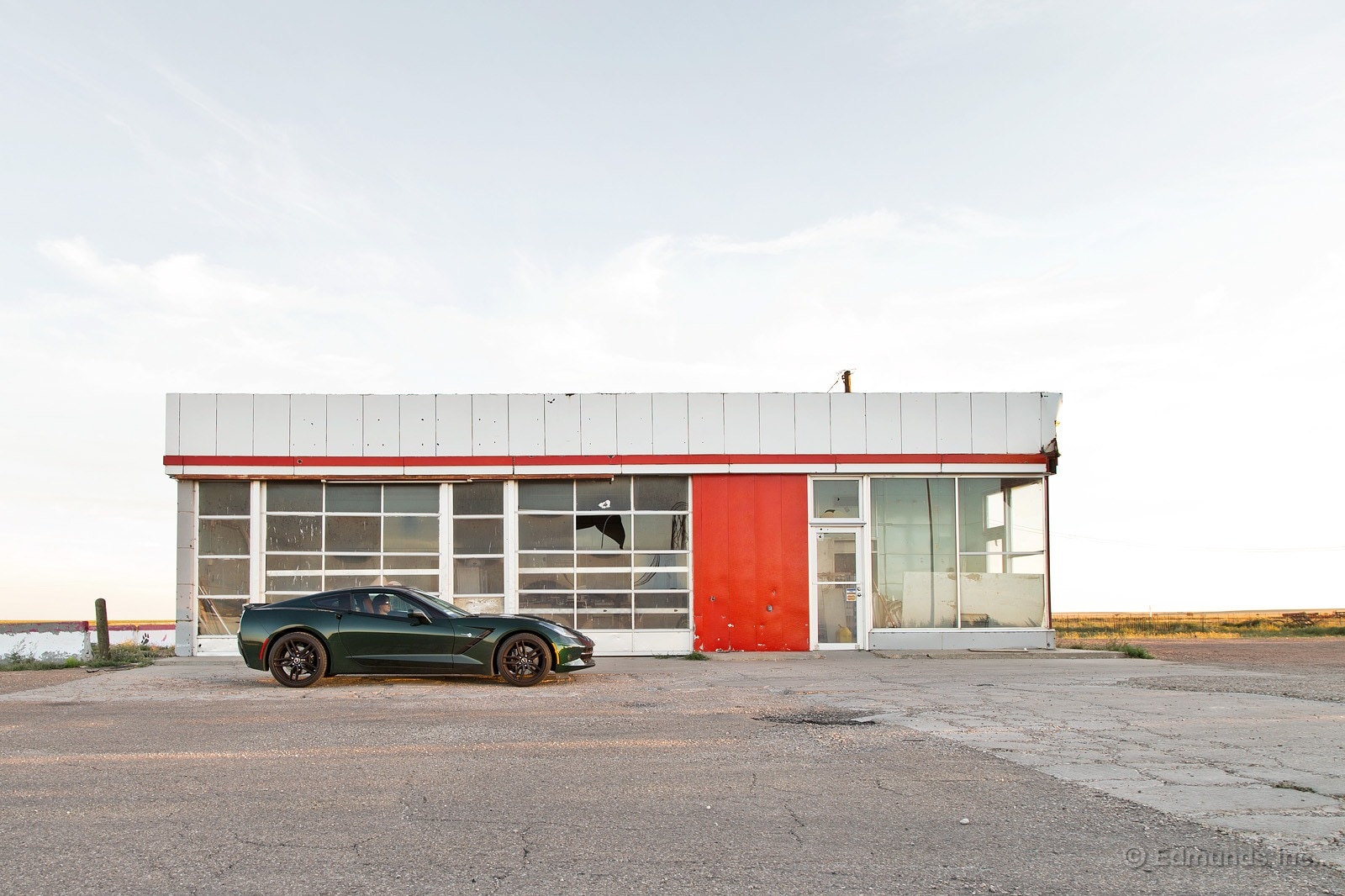

Payne's BBQ gave us a taste of the real and we wanted more. No more chain hotels for us. Enter Tucumcari, New Mexico.
Sidestepped by I-40, it's a wonder anything's left, but it still has a strip. And more importantly, it has nostalgia. Nostalgia has kept plenty of things alive, including the Corvette, but old Tucumcari begs to be believed. It seems to have dodged inevitability so Frio and I honor its resilience and grab a room at a motor inn.
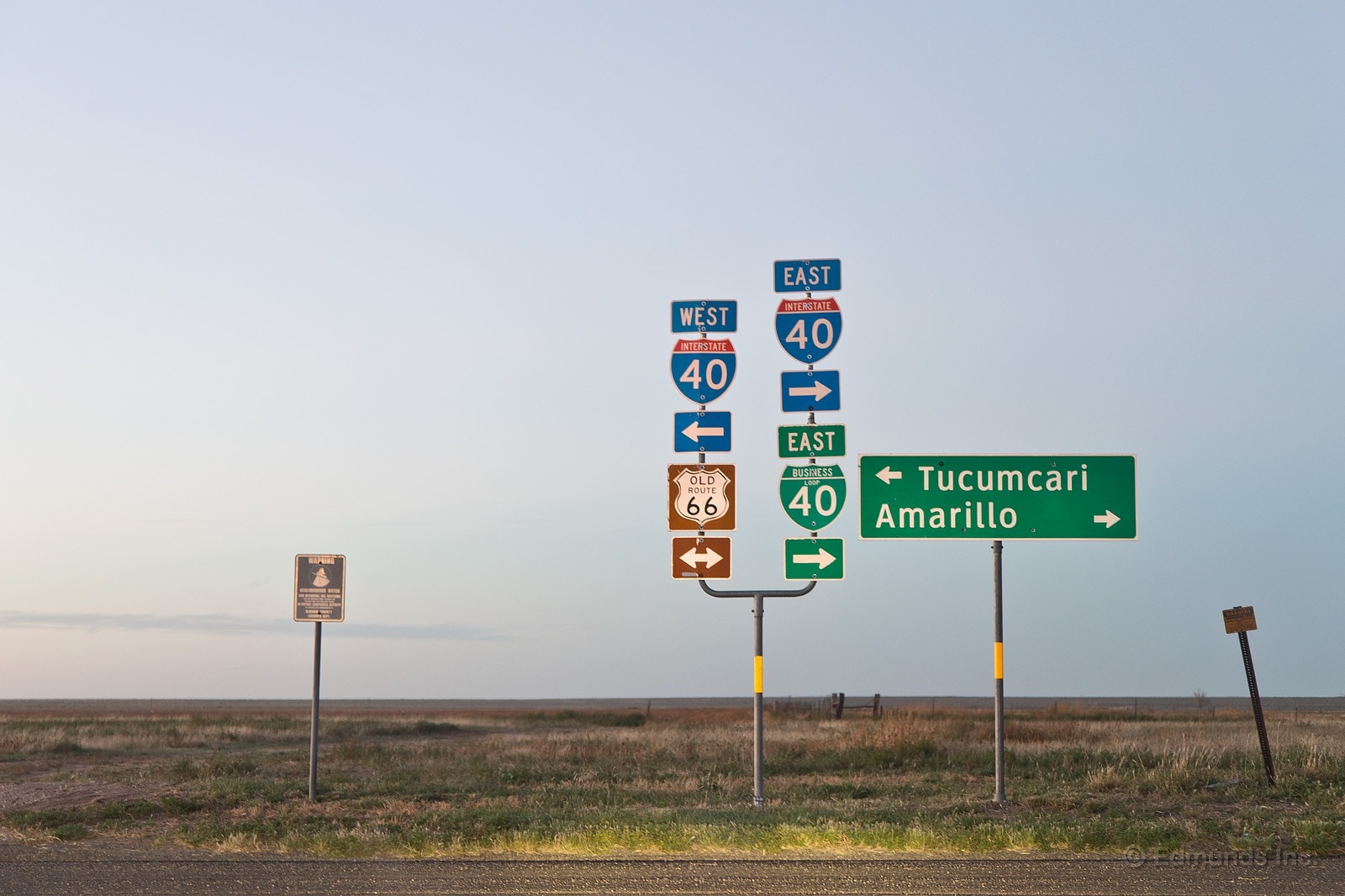

Historic and charming translates to run down and WiFi free, but the attached bar has tequila. Two rooms and two shots, please.
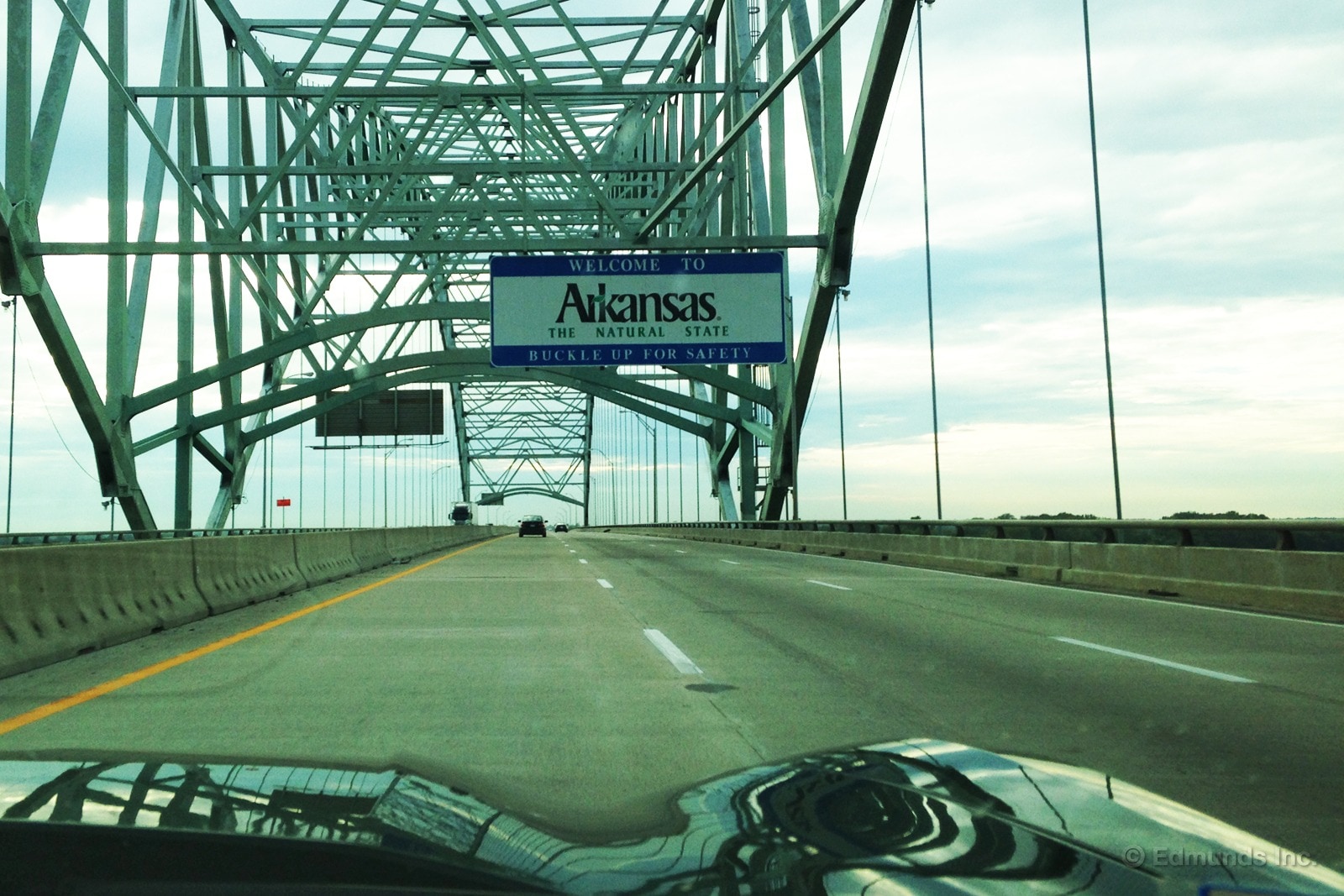
Day Three: Memphis > Arkansas > almost Oklahoma
A confession: We spent most of our cross-country road trip driving a four-cylinder Corvette.
That's right: V4, baby, every day, most of the day. That should merit exclusion from any Corvette club with a shred of dignity. But we were game to see what kind of efficiency we could wring from this new 6.2-liter, and but for on-ramp blasts taken in full Track mode, we covered most of our miles under Eco. While the V8 will still kick in during Eco mode, and often did on slight grades or under other murky combinations of speed, RPM and throttle position, the green governor wants to run on four cylinders whenever possible.
Kurt suggests a driving strategy early in the trip: driver changes at each fuel stop. I'm skeptical, but Kurt says that's how he and Magrath handled wheel duties on their Alaska drive in our former long-term Jaguar XF. That's a reasonable strategy with a supercharged 5.0-liter that ranged about as far as a sumo wrestler playing shortstop. I think it'll be a different story with a relatively fuel-efficient V8 shutting down half its cylinders most of the time.
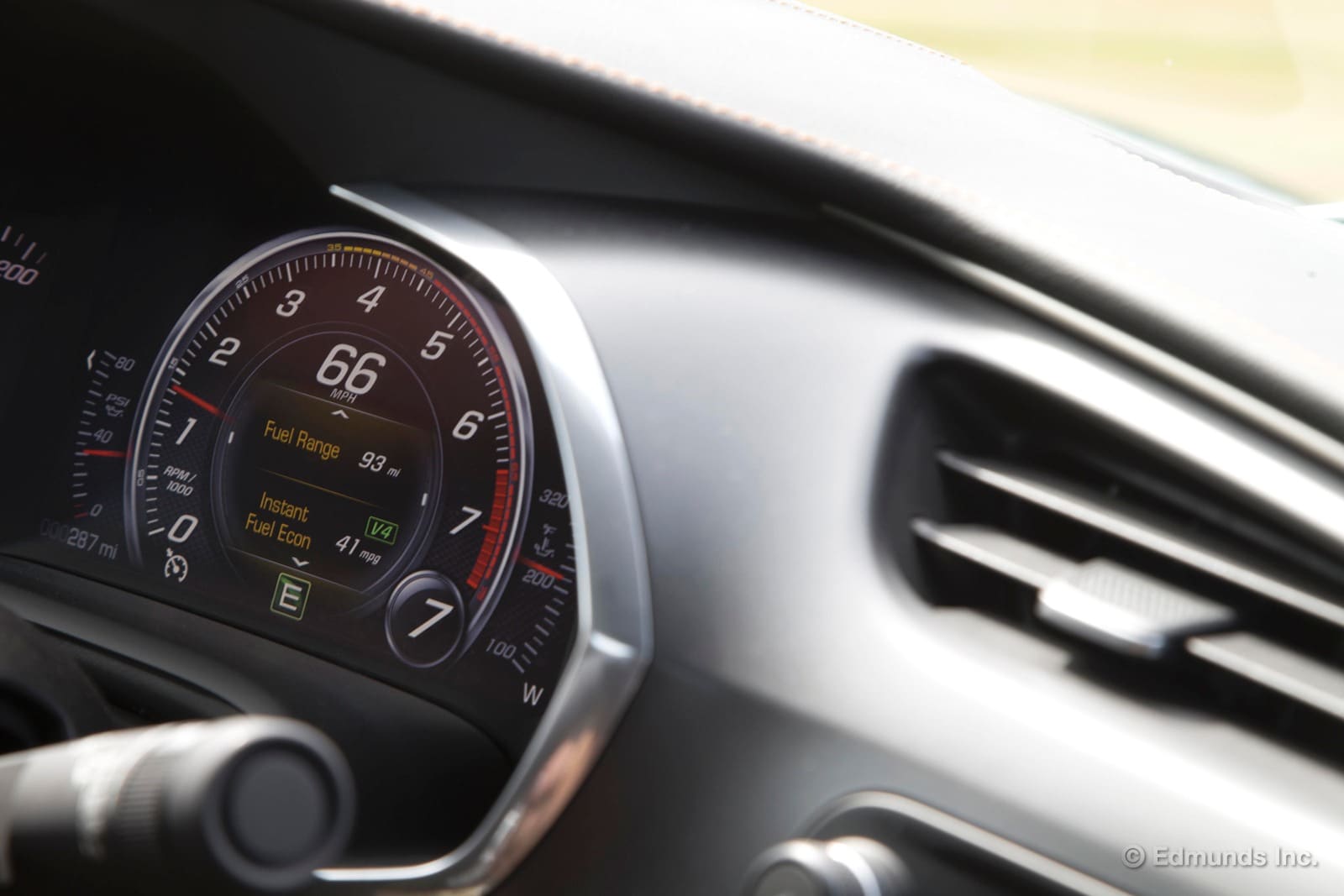
Kurt and I start pulling six-hour stints behind the wheel, beginning in earnest after we leave Memphis in the late afternoon. Soon we're on Interstate 40 and cross over the Mississippi River into Arkansas with little fanfare. We're trying to make Muskogee, Oklahoma by evening, a small town made famous in a Merle Haggard song for its celebration of American values when the rest of the country was, in the narrator's slightly ironic delivery, going to hell.
The C7 is proving itself an exceptional grand tourer. Not in an opulent Maserati or Bentley Continental sense obviously, no quilted leather center stack for this alpha muscle car. But the cabin is quiet and the ride well-damped. Even the Michelin run-flats keep mostly to themselves, regulated by the magnetic ride suspension option we sprang for. Seventh gear feels mechanically useless, but it allows the Corvette to hum at 80 mph without breaking a 2,000-rpm sweat.
But it's the seats that deserve an overachievement award. People can't complain enough about older Corvette seats, but those complaints usually focus on the lack of high-performance support, not long-haul discomfort. The rest of the staff will start writing opinions on the seats in quick corners and transitions soon enough. We didn't find any nor hunt for them along the interstate. But on the few long on/off-ramp benders we sampled, there was no sliding or cresting what passed for thigh bolsters in the old seats, and it's clear that Chevy no longer specs its seats solely to those of wide waistband and wallet.

There's no faulting the long-distance ability of these buckets, either. They are firm, supportive and enveloping. Neither Kurt nor I complain during our long driving stints, although Kurt says he'd like more room to fully extend his legs while sitting shotgun. We stop now and then for photos or a restroom, re-circulate the blood. But the seats remain as comfortable at the end of our stint as they did at the start.
We drive on past dusk through Arkansas woodlands, beautiful area that looks like it would develop a kid's imagination better than any city center or smartphone addiction. But it becomes clear we're not going to make Muskogee, at least not until about 11 pm, and that's another three hours of driving. We call it a day in the small college town of Conway, Arkansas.
It's Wednesday night and there's not much happening around the University of Central Arkansas campus, not even a group of drunken stragglers we can frighten or impress with a burnout. Instead, it's a late dinner and a good night's sleep.

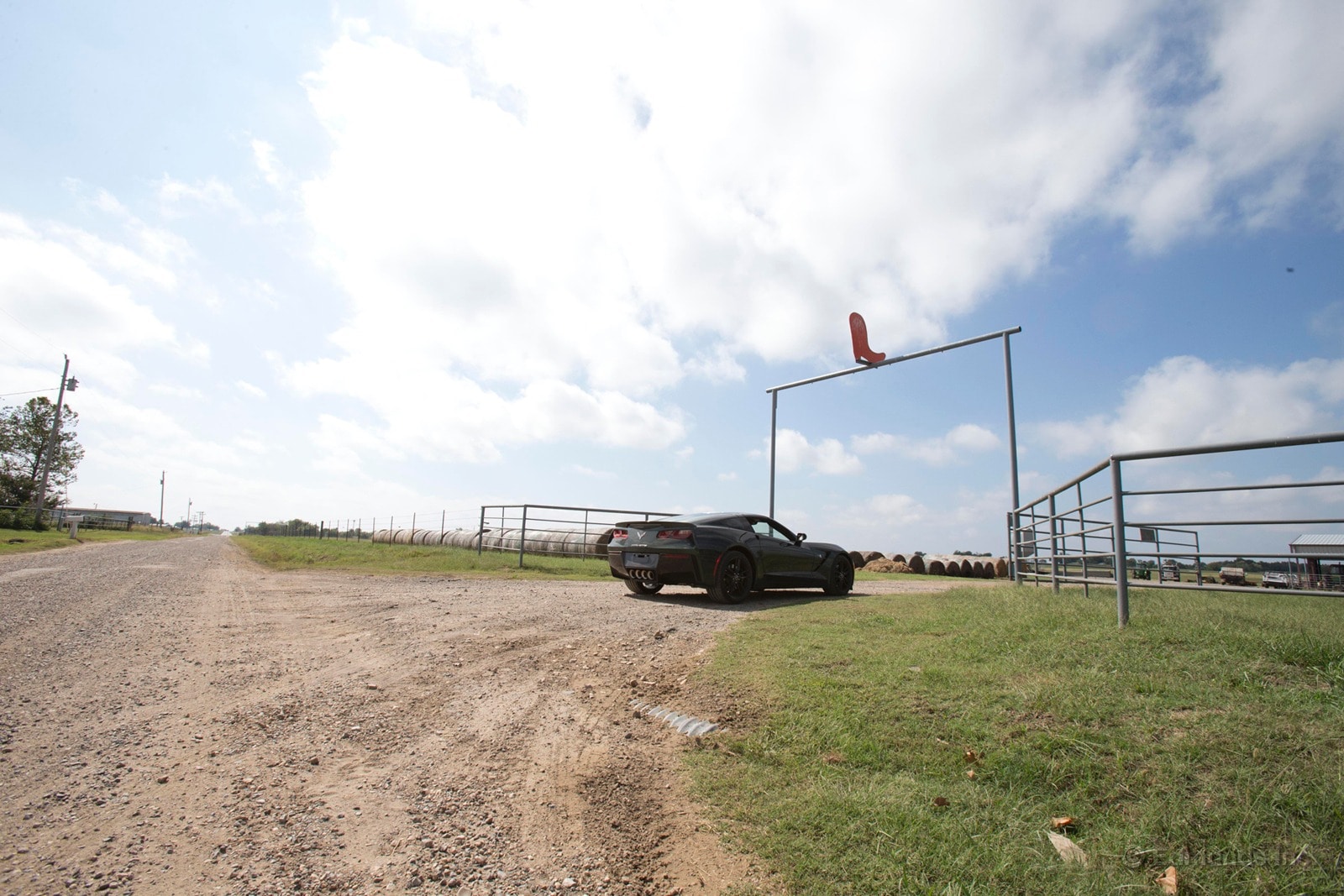
Days Four & Five: Arkansas > New Mexico > California
Early breakfast in Arkansas and today's goal is Santa Fe, New Mexico. At 842 miles, it's ambitious. We leave early, pass through the rest of Arkansas and make our second fuel stop around mid-afternoon in Checotah, Oklahoma. Even here at the southern fringes of the prairies, you can feel the distance between horizons. The sky is massive out here.
Oklahoma's license plates pay homage to its Native American history and its road signs tell you which nation's territory — Seminole, Cherokee, Choctaw — you're passing through. You wonder how long it took men on horseback to traverse this land. Even in this 2014 Corvette, it feels like it could take us days to reach some faraway settlement we see in the distance.
We've covered 777 miles so far and ranged 415 miles on our last tank. The Corvette says we averaged 25.9 mpg. While filling up, a thin man with long graying hair under a baseball cap walks over from his Dodge pickup. His tank top asks "Why You Hatin?" We aren't.
Gently rocking on his heels, he pulls at a stringy goatee and admires the car, telling us he was in the Marine Corps, stationed at Camp Pendleton in the early 1970s. He says he used to make runs to San Diego and Big Bear in a '68 he owned. He knows old Vettes, specs and all, and he likes ours a lot.
The Corvette takes 17.1 gallons and we're back on the highway. After nearly 800 miles, we haven't had to panic-test the brakes. I like to think that means we're driving smart. But when I see a road sign for "Oldham County Line" inside Texas, I lay on the pedal with purpose and the Corvette slows from 80 mph to the shoulder like it's hooked on an arrester cable. Kurt's not happy when he opens the door to a nose full of cow patty fields, but we figure the boss will like the photo.
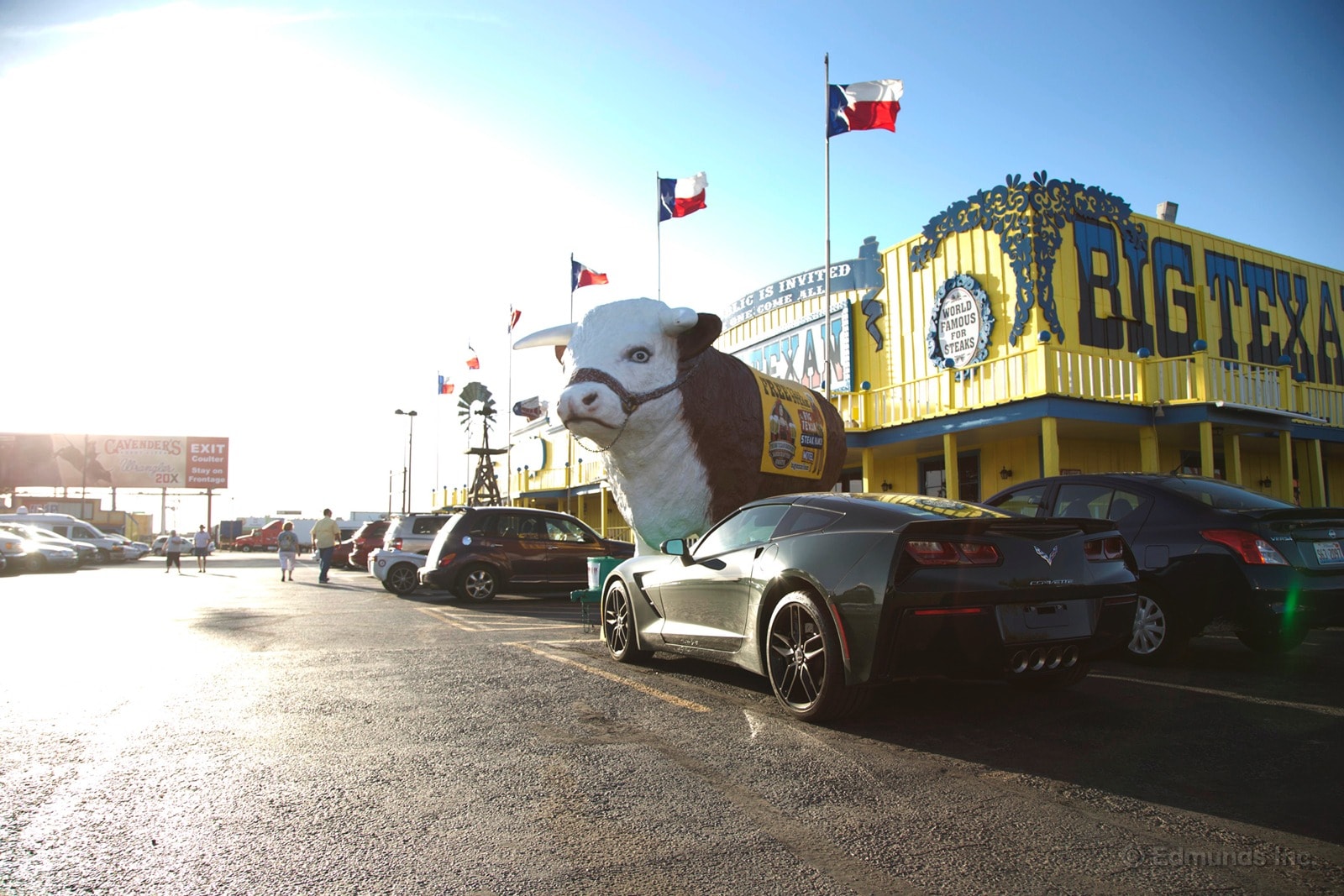
The Big Texan restaurant and Cadillac Ranch in Amarillo are must-shoots, even though they're obvious and overdone. If we don't get them, Editor Oldham will ask why. We figure "because they're obvious and overdone" won't suffice as an answer.
We tune in local radio whenever we can get a good signal. There's great blues and gospel through Memphis and classic country through Oklahoma, but the Bose audio system is a letdown. It lacks clarity at low volume, when you're trying to keep levels below normal cabin conversation, and the subwoofer comically exaggerates bass level. We try the Bose system's different modes like "Centerpoint," which purports concert-style staging. It just diverts signal from the upper door speakers to the dash. I find the rear-bias mode, which fills the hatch area with sound, offers the best compromise between listening and talking with a passenger.
In quieter moments, we've identified two rattles. One comes from around the driver-side B-pillar, but it's intermittent and we can never pinpoint it. The other is easy. The vent slider just above the nav display buzzes when set just so. Jiggle it in either direction and it goes away. But no question, it's loose and the buzz won't disappear. A little felt shim should silence it, but it's a bummer.
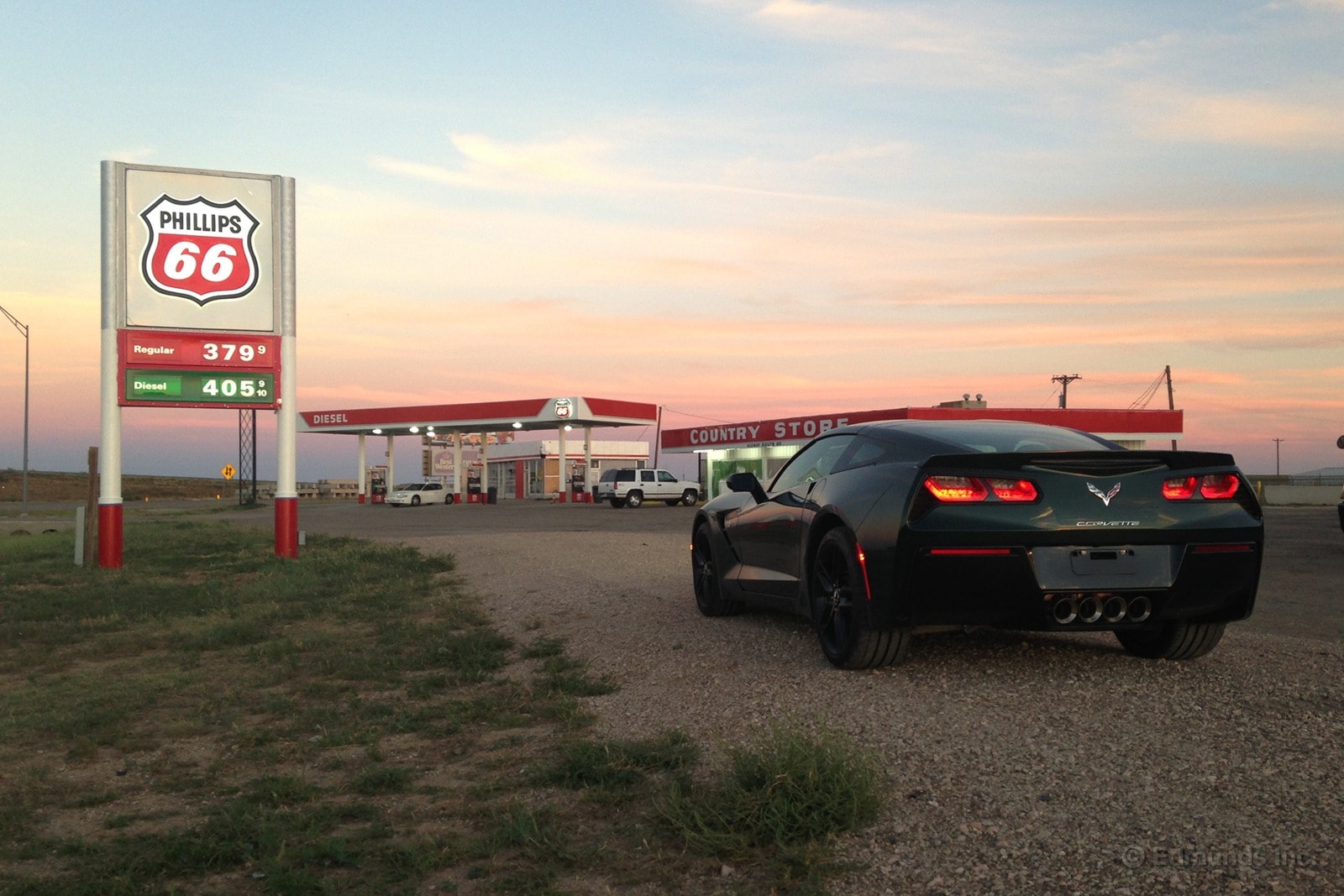
It's also impossible to ignore the driveline lash when the V8 shuts down four of its cylinders. It's a noticeable but not unreasonable shock. It's a driveline burp you can live with, an engineering compromise that makes sense when re-fueling. At our third fuel stop, in Adrian, Texas, the Corvette has ranged 424 miles and averaged 25.2 mpg on the last tank. It takes 17.1 gallons.
Dusk sets in and we accept we're not making Santa Fe. It's another 230 miles and we're hitting the wall. We decide to press on another hour to Tucumcari, a footnote on old Route 66. Santa Fe sounds nice, but so does a good meal. Having skipped lunch, we've subsisted so far on Fig Newtons and beef jerky.
Tucumcari's got a cluster of chain motels and restaurants just off the interstate, but venturing further up Route 66 into the darkness reveals half a dozen motor hotels lit by colorful neon with names like the Blue Swallow, Palomino, and the Buckaroo. We drive to the west edge of town and find the Pow Wow Inn. The motel looks beat, but it's got a kitschy old America's Road vibe to it and we can walk to the Lizard Lounge next door for Tex-Mex and tequila. We're barely disappointed when the clerk tells us the motel's Wi-Fi is down.
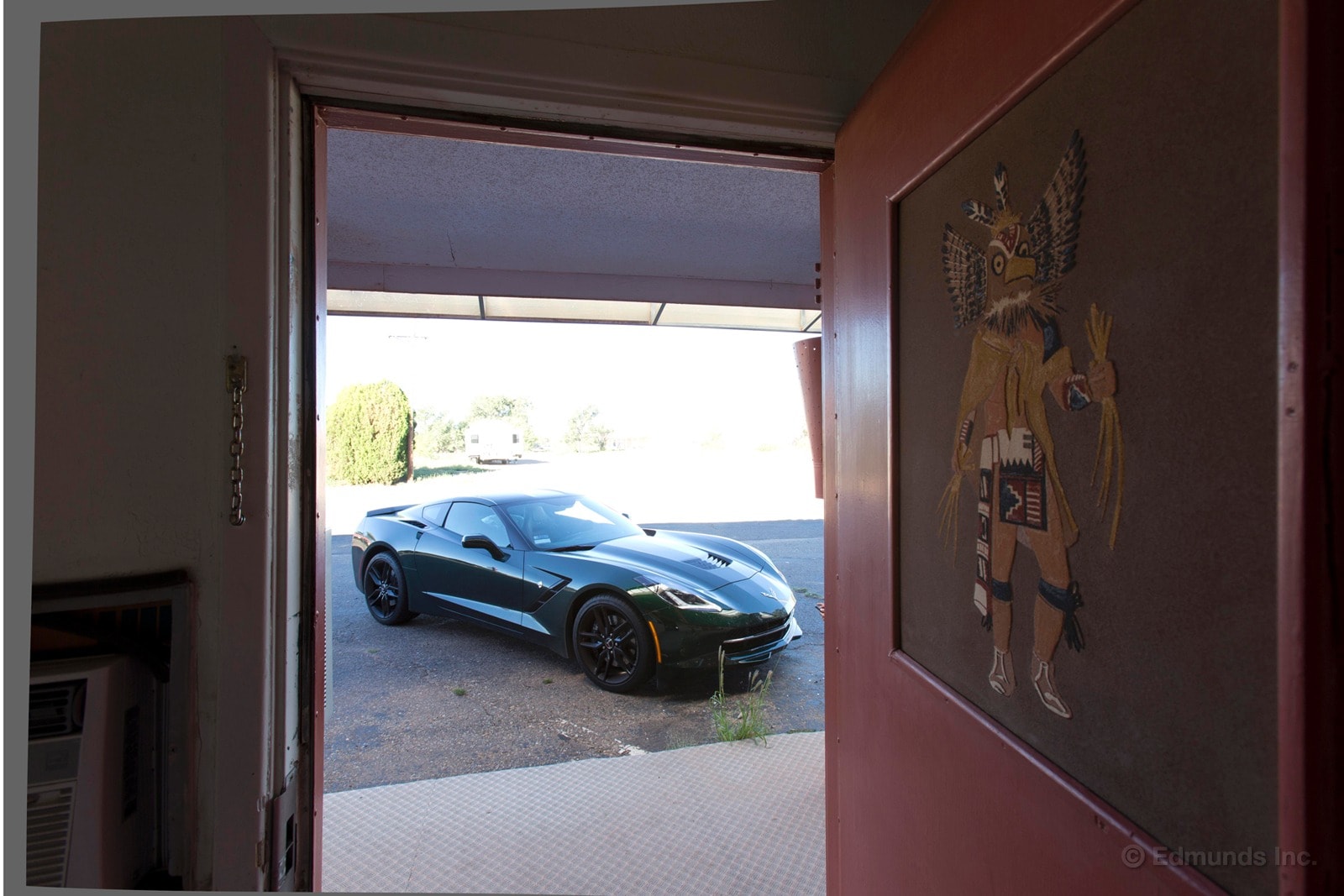
Kurt says later that he too got up a few times in the night to check on the Corvette. We hadn't seen anything to worry us, but this was a shabby old motel near the edge of town. But the Vette's still there in the morning when I go out to find coffee. I half expect Kurt to rush out of his room brandishing a war club when the V8 fires to life. It's a brisk morning, the rising sun is blinding and though it's Friday, hardly anyone is on the road.
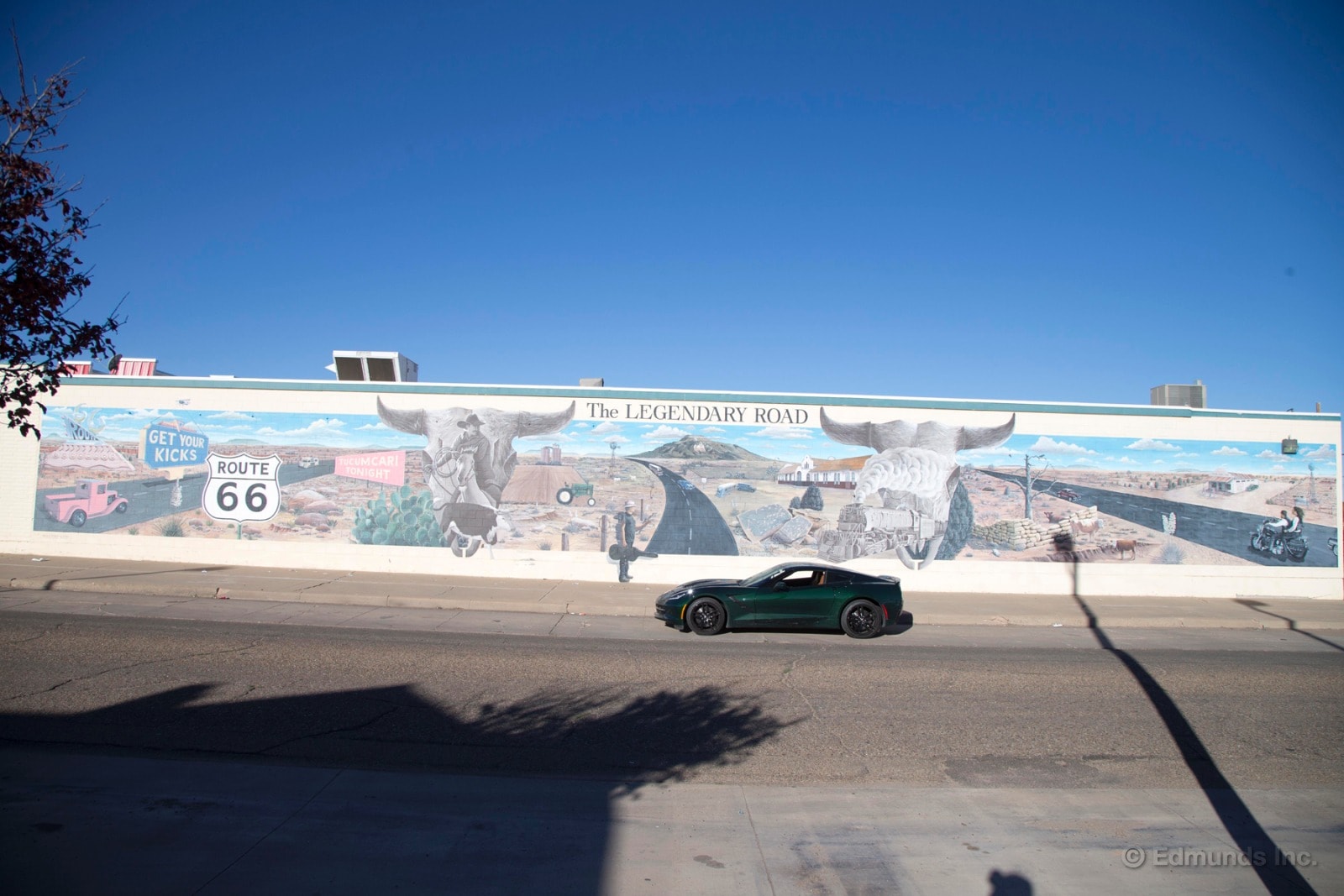
We're back on the highway at 9:00 a.m., determined to make it home tonight. Southern California is 965 miles away. We figure we can make it home by midnight. The rest of New Mexico flies by, desert scrubland changing to mesas and buttes with stratified layers of red, brown and white sandstone and shale. We make the Arizona border around noon and re-fuel, then it's open highway through the state. Nearing Flagstaff, we learn that the Grand Canyon is closed to visitors, our most personal reminder of a government shutdown less than a week old.
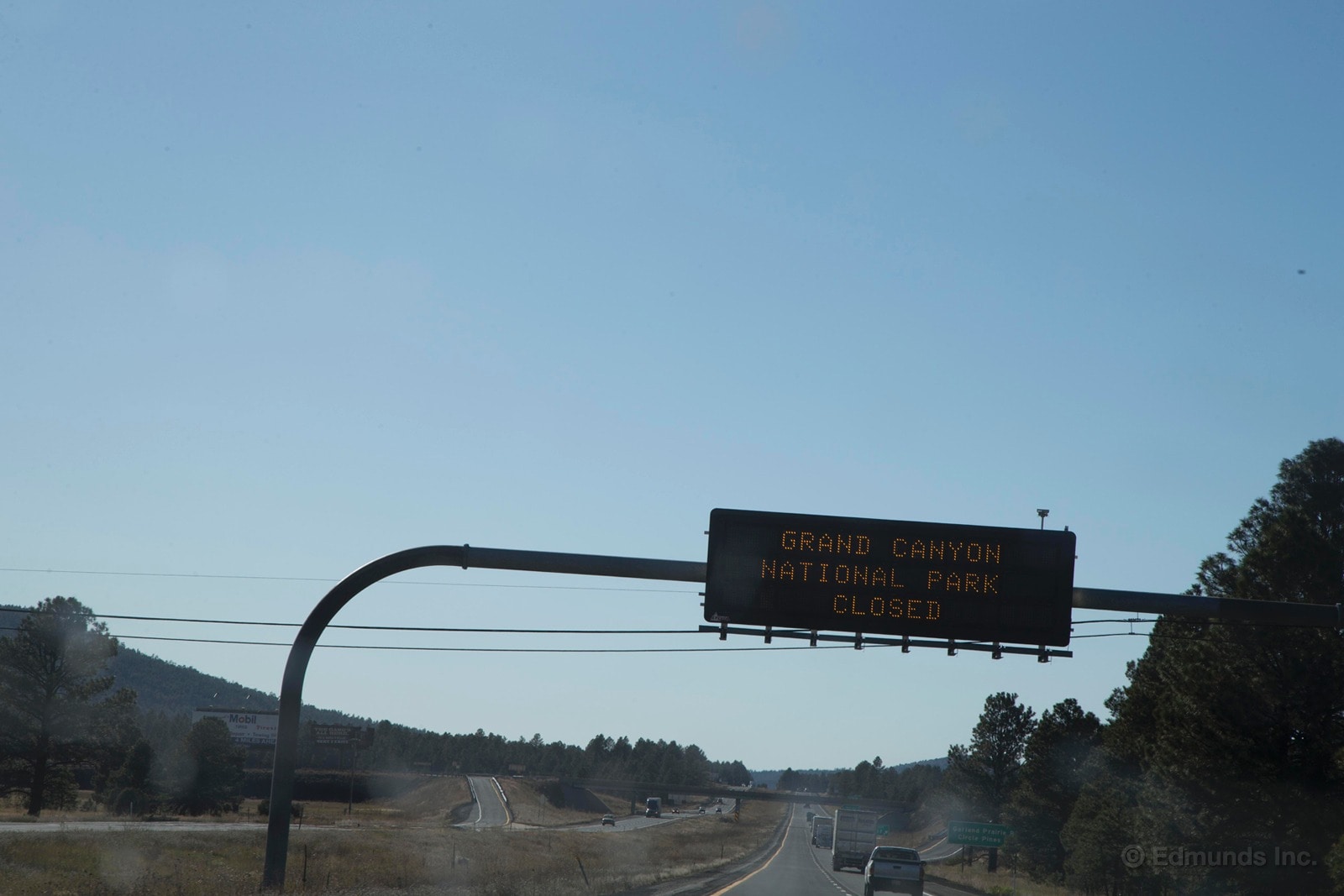
Arizona's rough patches of Interstate 40 amplify the noise floor of the run-flat tires, but the Corvette still impresses as it suppresses. Regular rubber would make this an even better grand tourer. We make great time through Arizona and cross into California while it's still daylight. But as the sun drops and the Mojave Desert trades its orange glow for impenetrable blue, we start to run low on fuel. The range indicator in the dash merely reads "Low," the default warning once you've dropped below 40 miles of range.
We haven't seen a "next services" sign in a while, so we consult the nav system's points-of interest. It's not much help. Whether we zoom out wide (5-10-mile view) or in tight (2.5-mile view), it's not showing any gas stations. We're closing in on 460 miles, the farthest we've pushed a tank yet. Finally a road sign reads one mile to Ludlow.
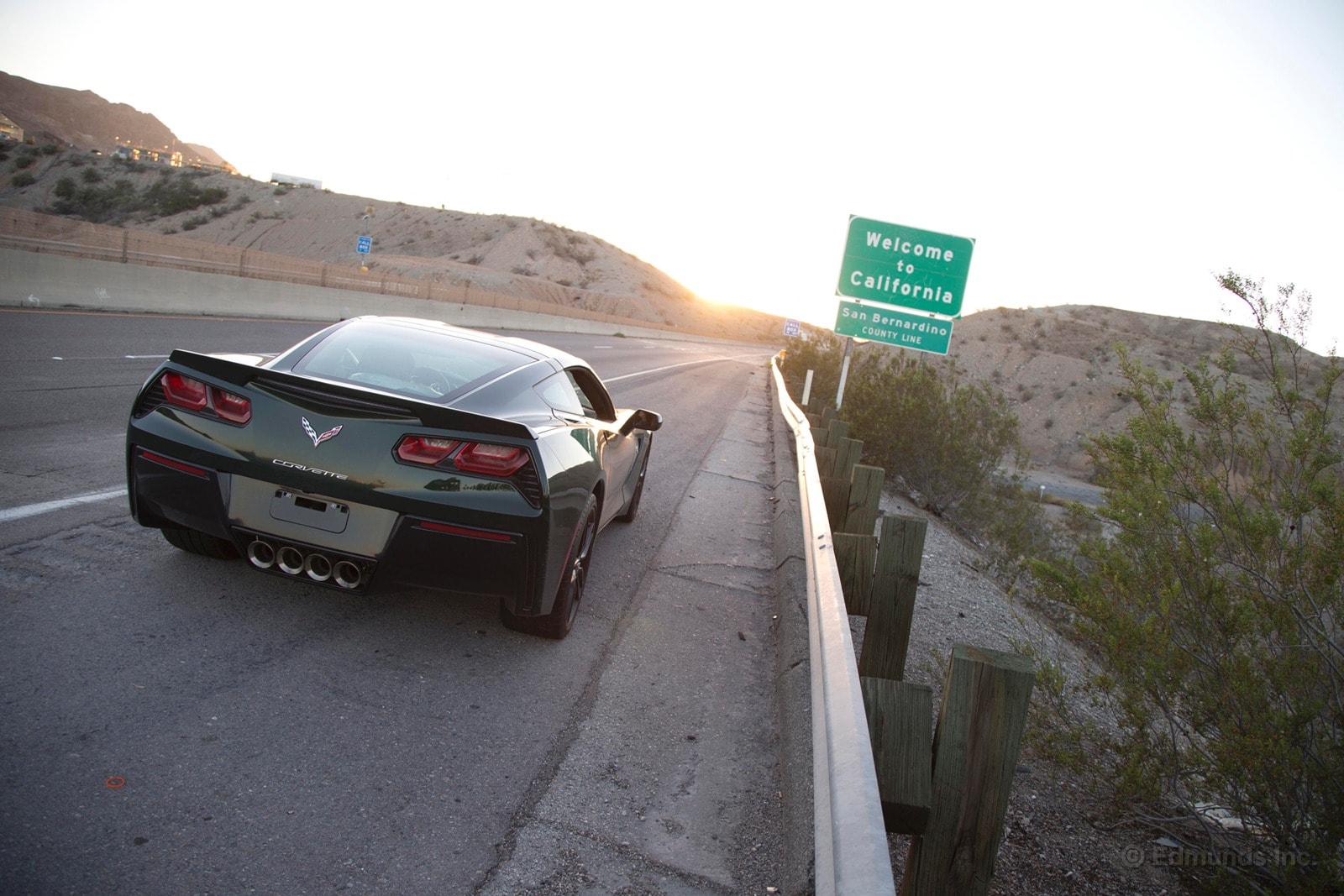
After 2,080 miles, we record the best range (464.8 miles) and average yet (27.2 mpg). The Corvette takes 16.9 gallons, suggesting we could have coaxed 500 miles out of the tank if we'd pushed on another 30 miles to Newberry Springs. This is how road-fevered we've become: In the company of a 455-hp American icon, we're giddy like nerdy hypermilers.
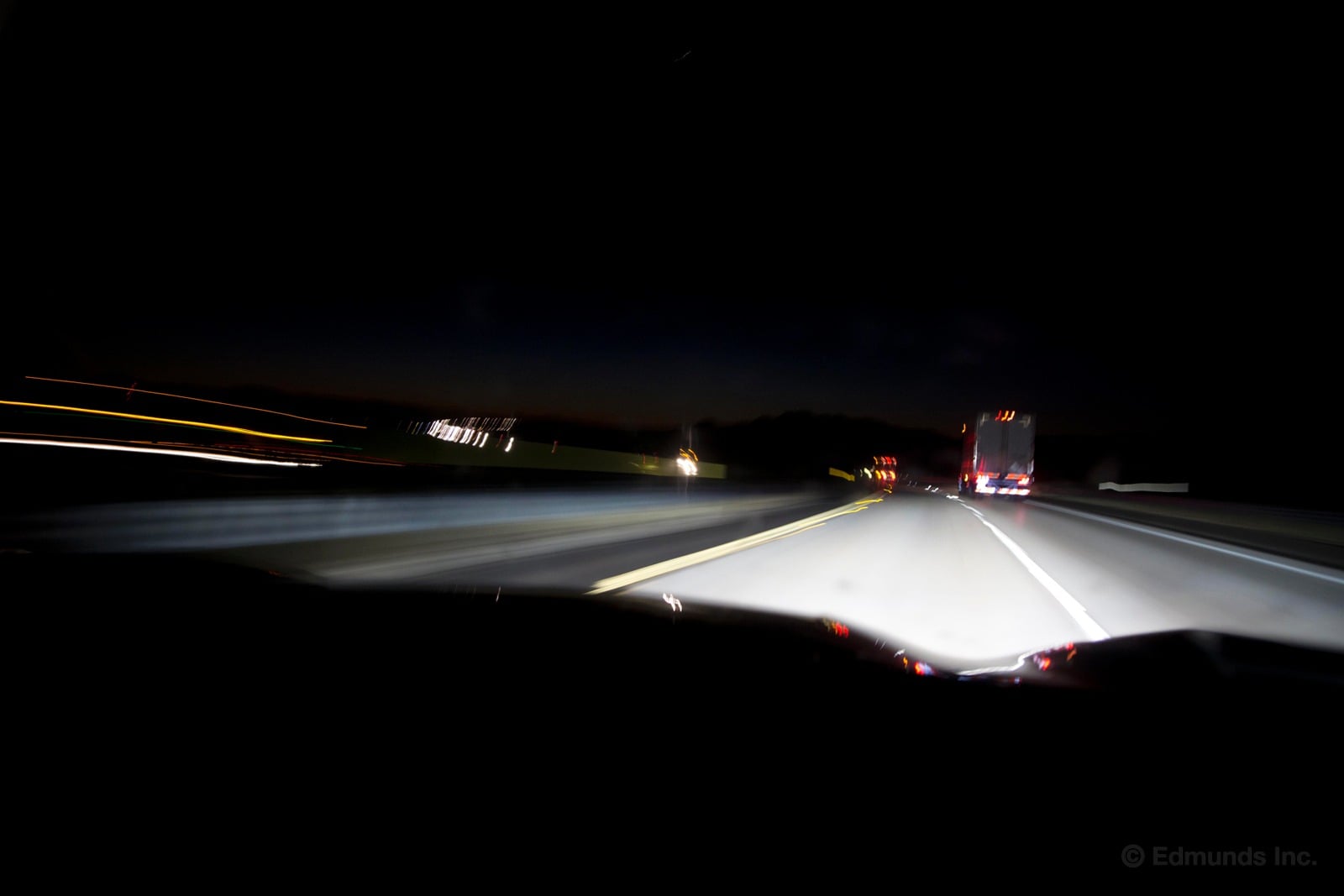
Kurt takes the wheel for the home stretch. We're ragged, but the end is in sight. All this time, I've been thinking about a famous anecdote between writer Hunter S. Thompson and Jann Wenner, editor of Rolling Stone magazine. Wenner assigned Thompson to go out on the road and find the American Dream, but reportedly offered a cheap automotive allowance. He even recommended the writer buy a Beetle. Thompson, enraged, asked the editor how the hell he expected him to find the American Dream in a (expletive) Volkswagen. Thus the good Doctor came to own the Cadillacs and Oldsmobiles that formed part of his legend.
I don't know that Kurt and I found the American Dream. But we did find a good cross-section of American dreamers: affable Southerners, rattled veterans, excited teenagers, city cops, Navy dropouts and bored Navajos. To a person, they loved the car or what it represented. I realized we didn't need to search for any American Dream. We'd been driving a piece of it all along.
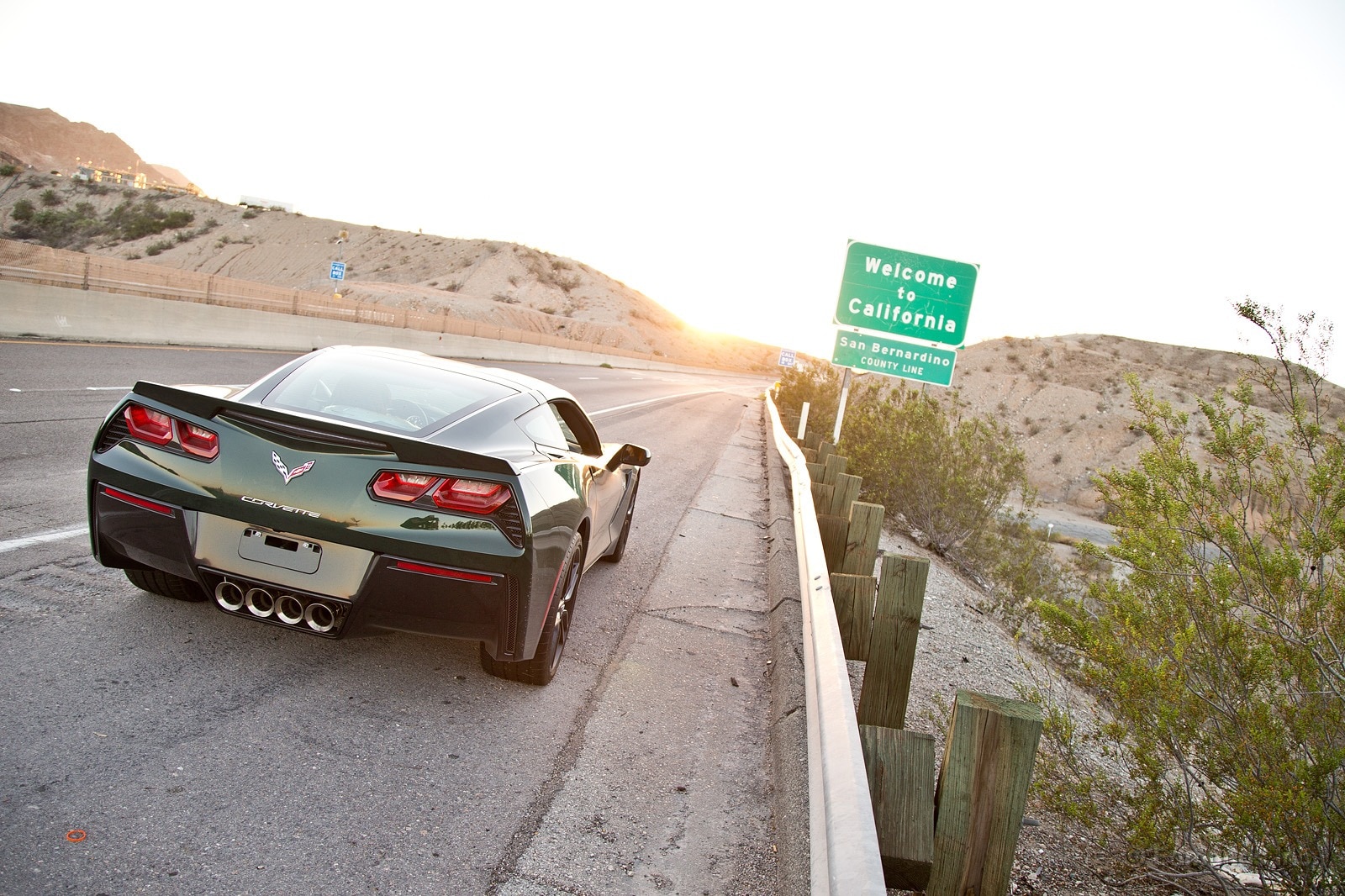
The sun seems brighter than ever. I reckon it's the high altitude and the clear air. Frio reckons it's the tequila.
Coffee at a nearby motel clears us up, but this motel is a little different. It's clean, modern and well appointed. There's no mistaking it for a classic Route 66 job, but it's attractive. Instead of wallowing in nostalgia, it's cleaned up and made something for itself. Naturally Dan and I look, again, at our 2014 Corvette.
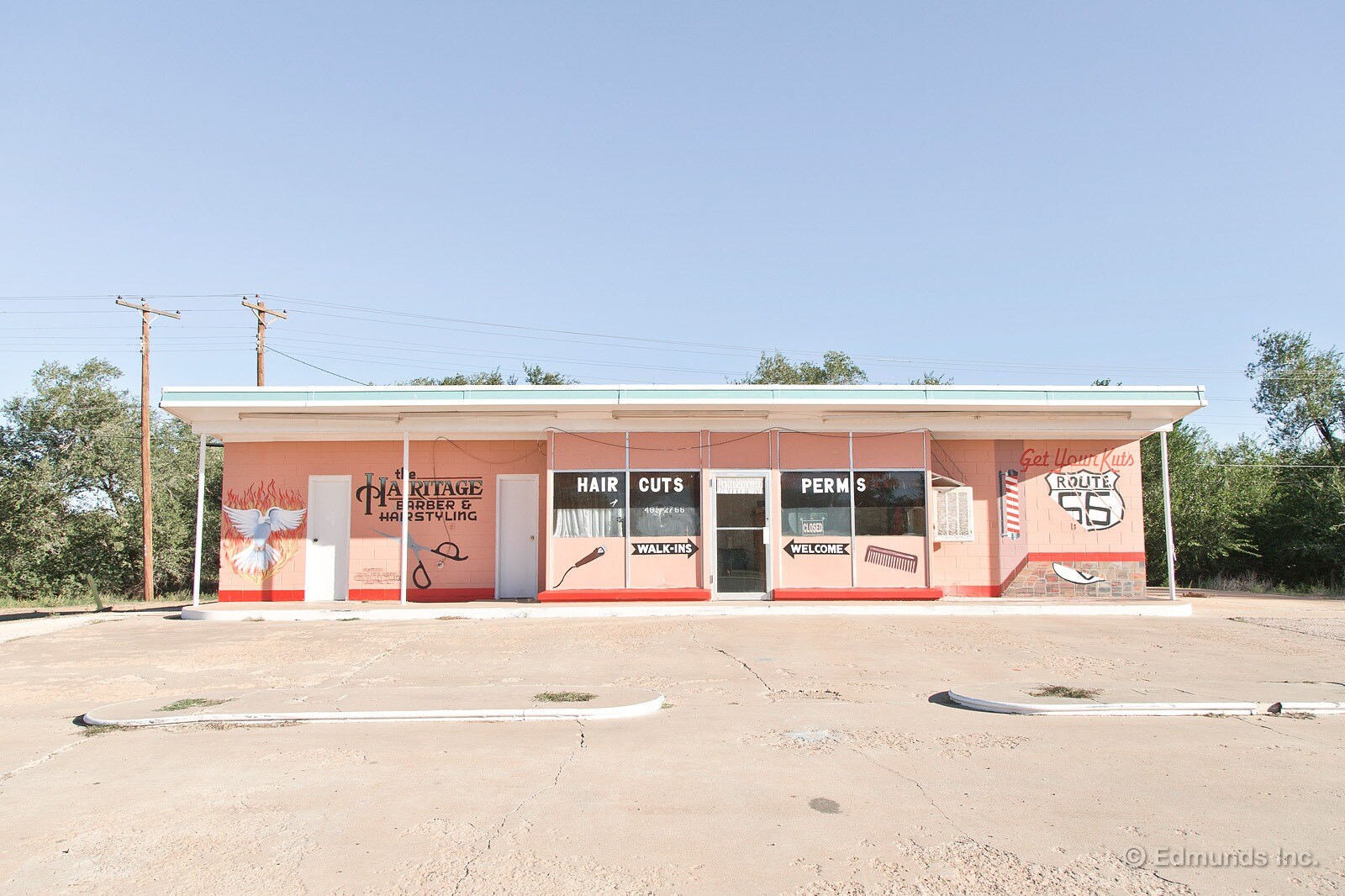
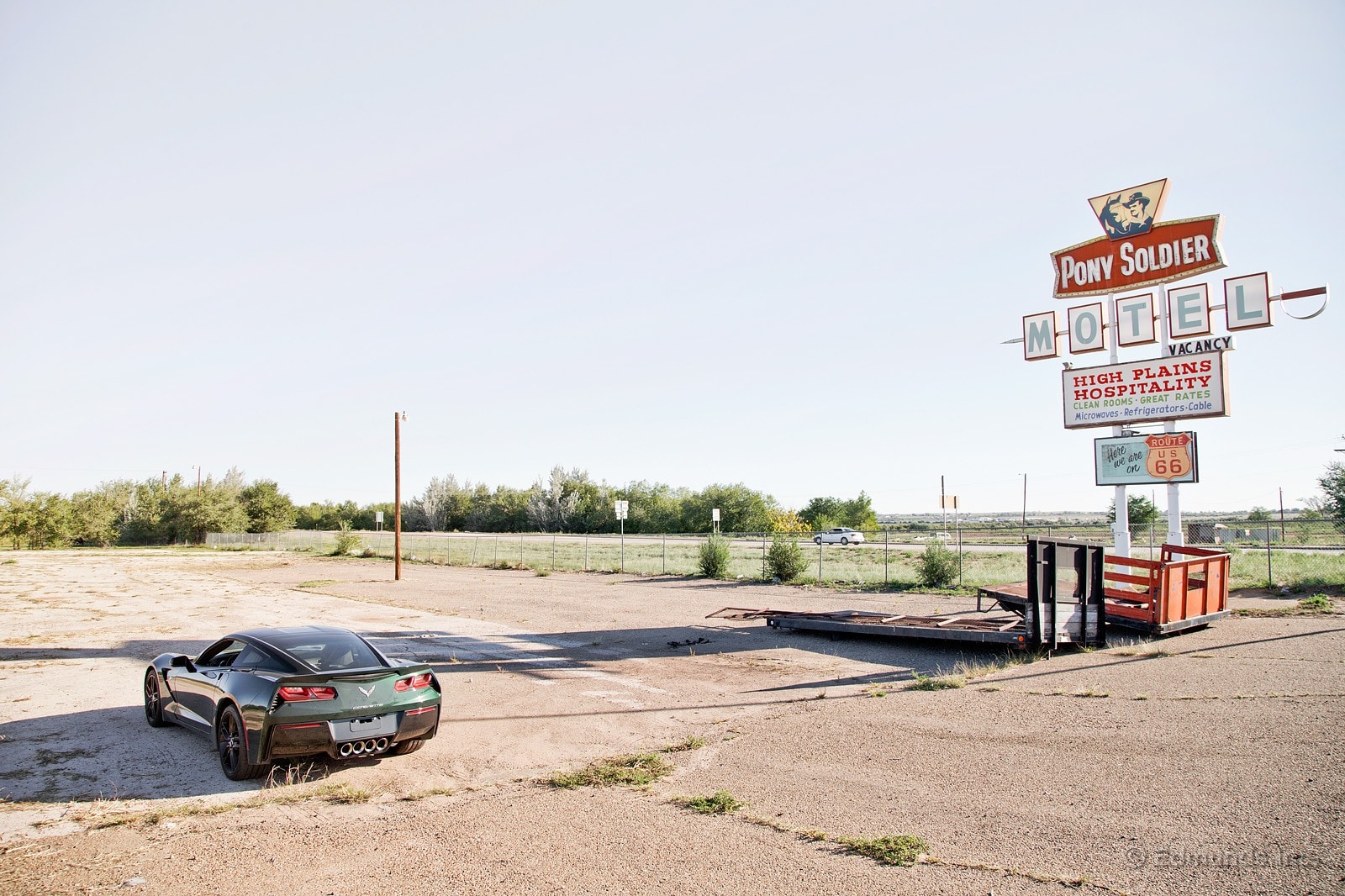
Driving through New Mexico, and then Arizona, takes time. These are some wide states, with wide lands and wider skies. It's far from desolate, but it looks impossible. No doubt the buttes wonder why we're in such a hurry, but we're driving to get home. Just passin' through.
Drives like this bring out conversation. Dan and I hit music, cars and society. We power through a box of Fig Newtons. We chase a rattle in the dash to the center air vent slider. We also drive a paved highway through once sacred land. You can't not talk about that. You can't not want to apologize.
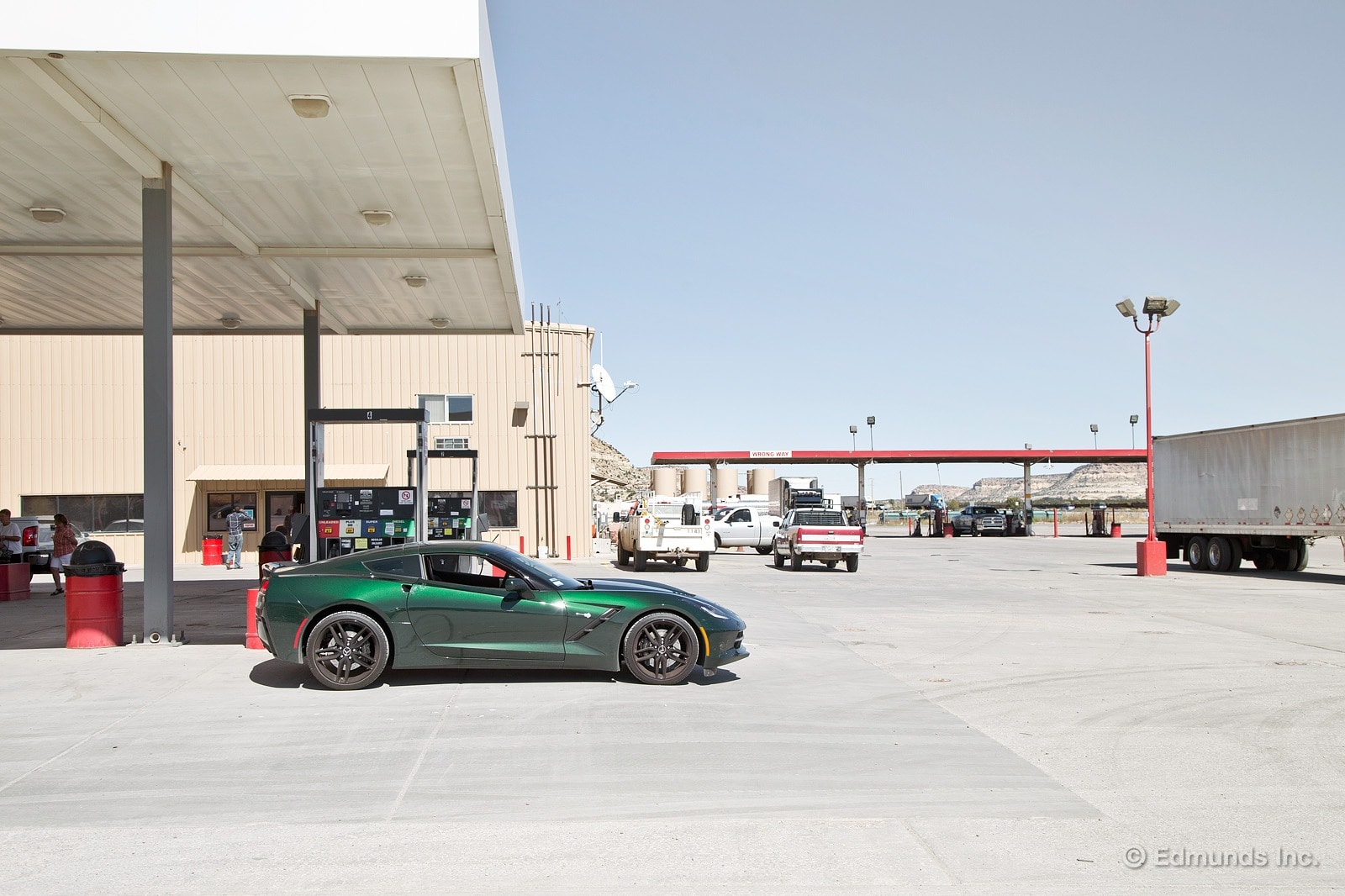

More fuel for Number 23 and as Dan disappears into the truck stop, a trucker chats me up. He brings up the C6 and I relate it to the C7. He asks about the trick diff and admires the paint. His big gulp is empty so he leaves to fill it. I have the urge to be a trucker.
Trinkets beckon under a fake, dead horse and a giant teepee. Dan admires the dream catchers and I admire the Corvette. What a difference. Genuinely making a case for previous generations of Corvette used to require some creative denial. This one? This one's good. Go drive one and spread the word.
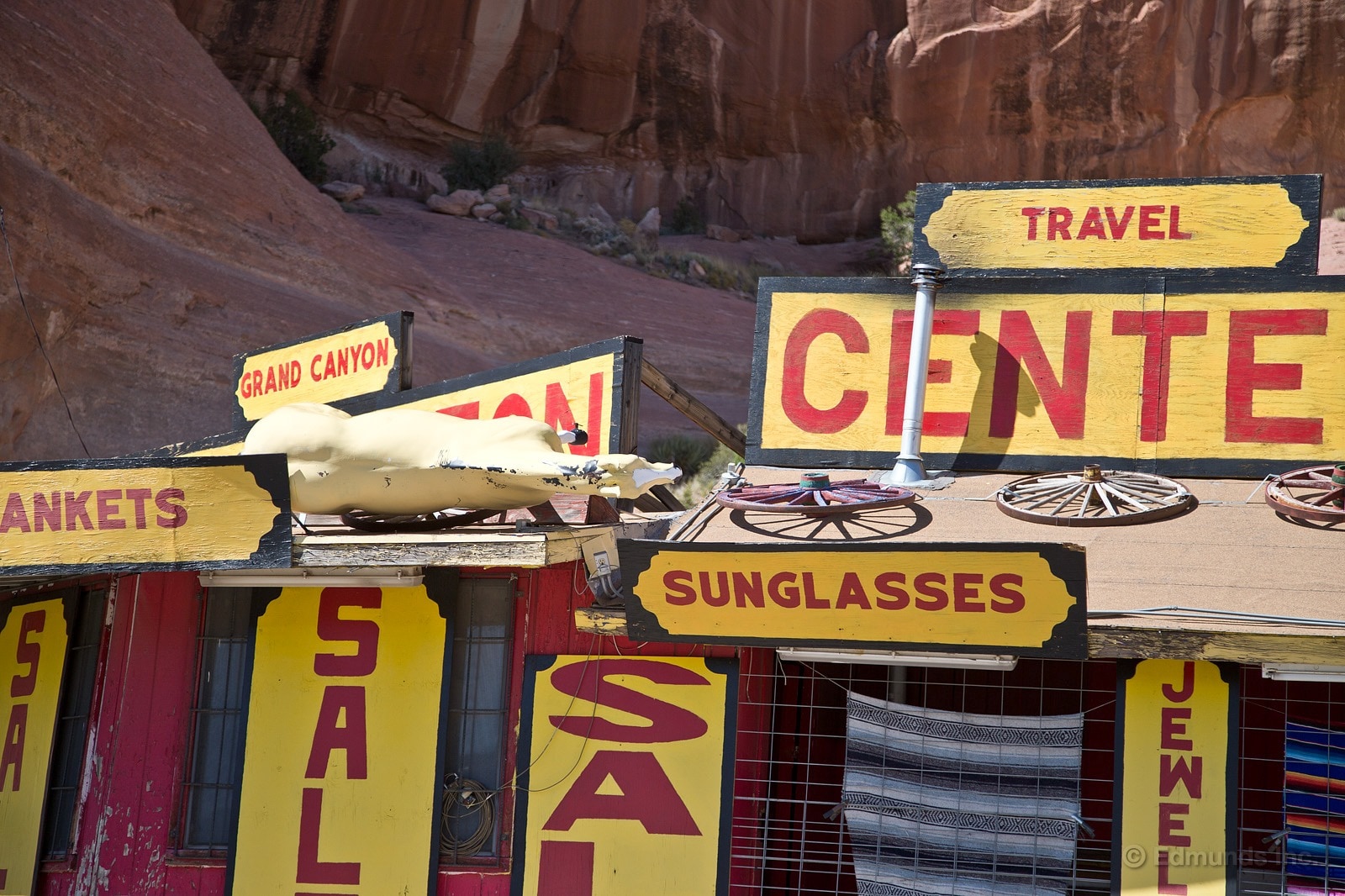
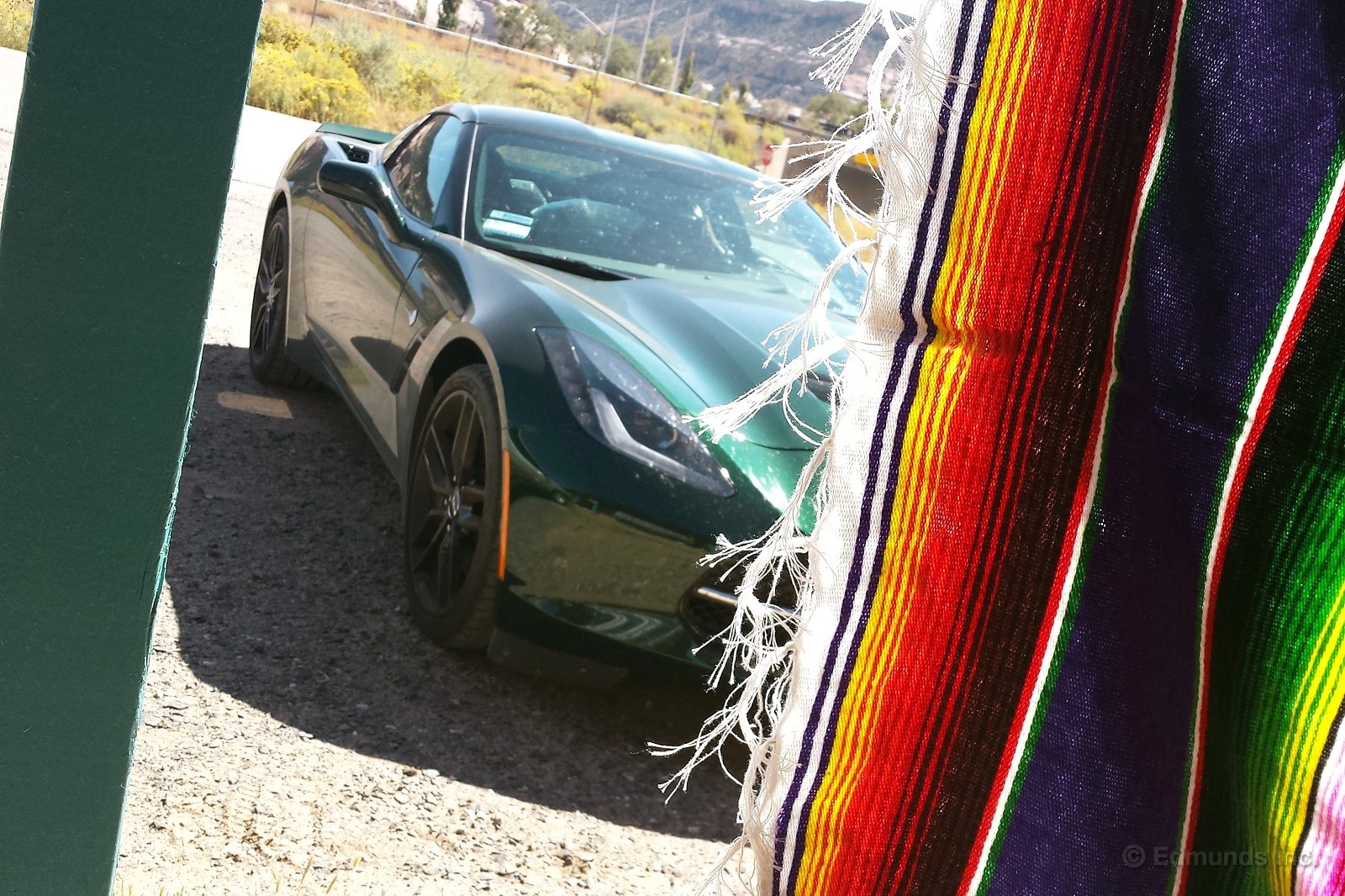
Don't let the pine trees fool you, we're still in Arizona. Flagstaff sits around 7,000 feet above sea level. The Corvette digs a little deeper and the altitude goes by unnoticed.
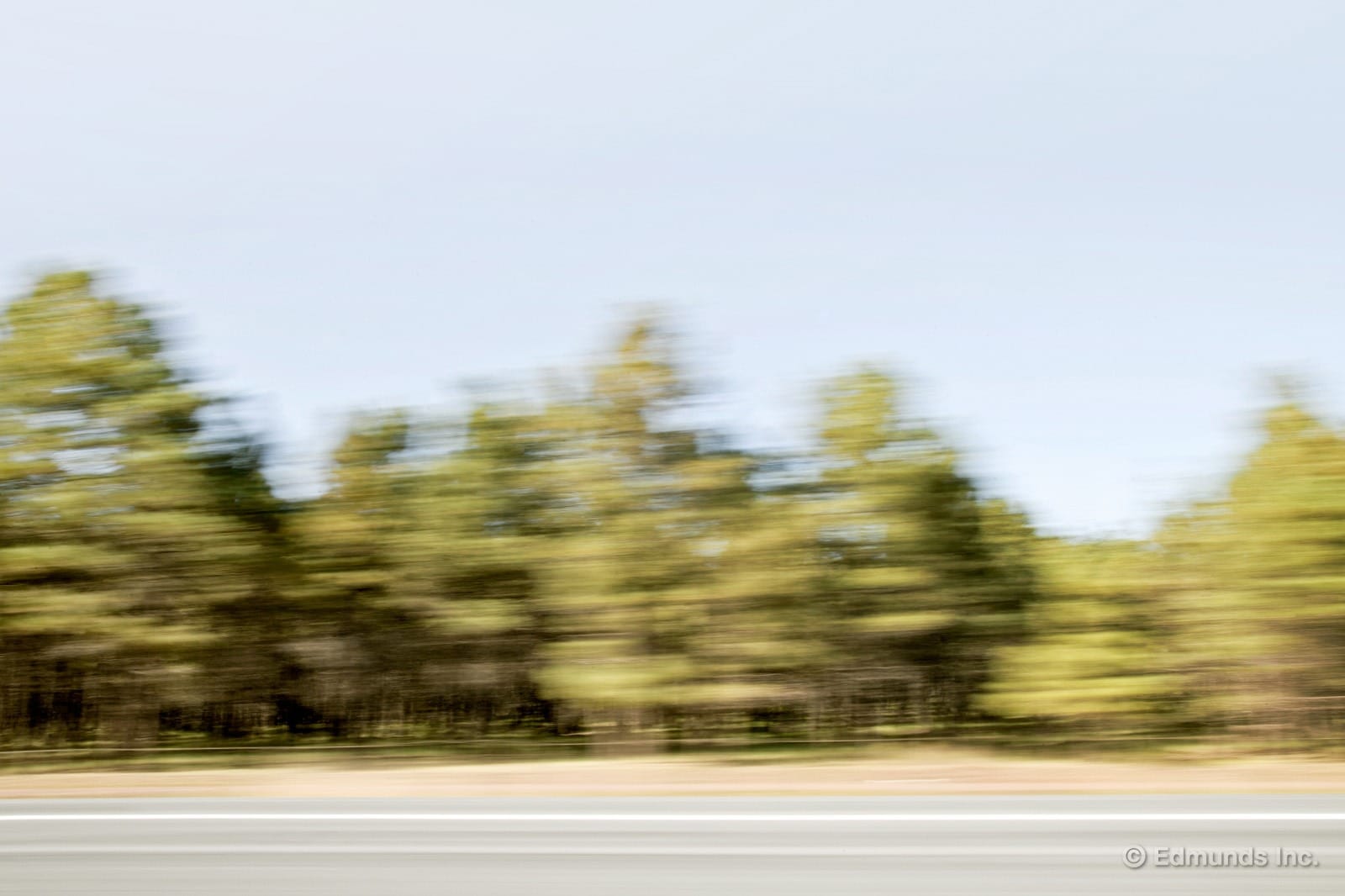
Driving into the sun is brutal. And after we stop so I can dodge semi trucks in the name of a border shot, Dan drops the hammer. Barstow and a burger, that's what we want.
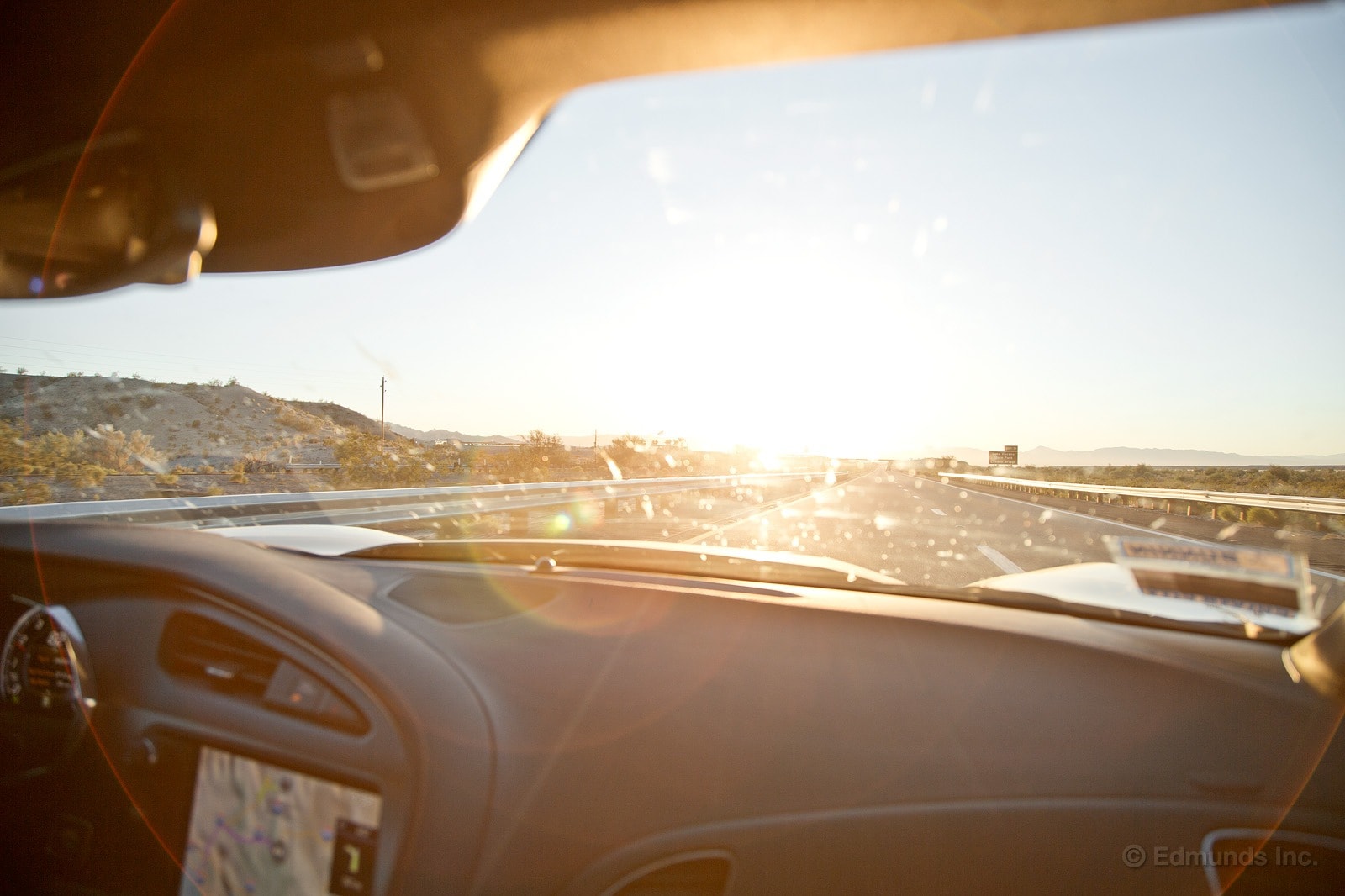

Barstow yes, burger no. The fuel stop is quick and I pull away from the pump before Dan shuts the door. Home is two hours away, L.A. traffic be damned. Thankfully, we're reentering L.A.'s orbit after dark, which helps alleviate the shock. At night, the city shimmers instead of the stars. The smog isn't visible and I'd almost like to live here.
We're officially welcomed back with an aggressive invitation to race and garbage blowing across the freeway.
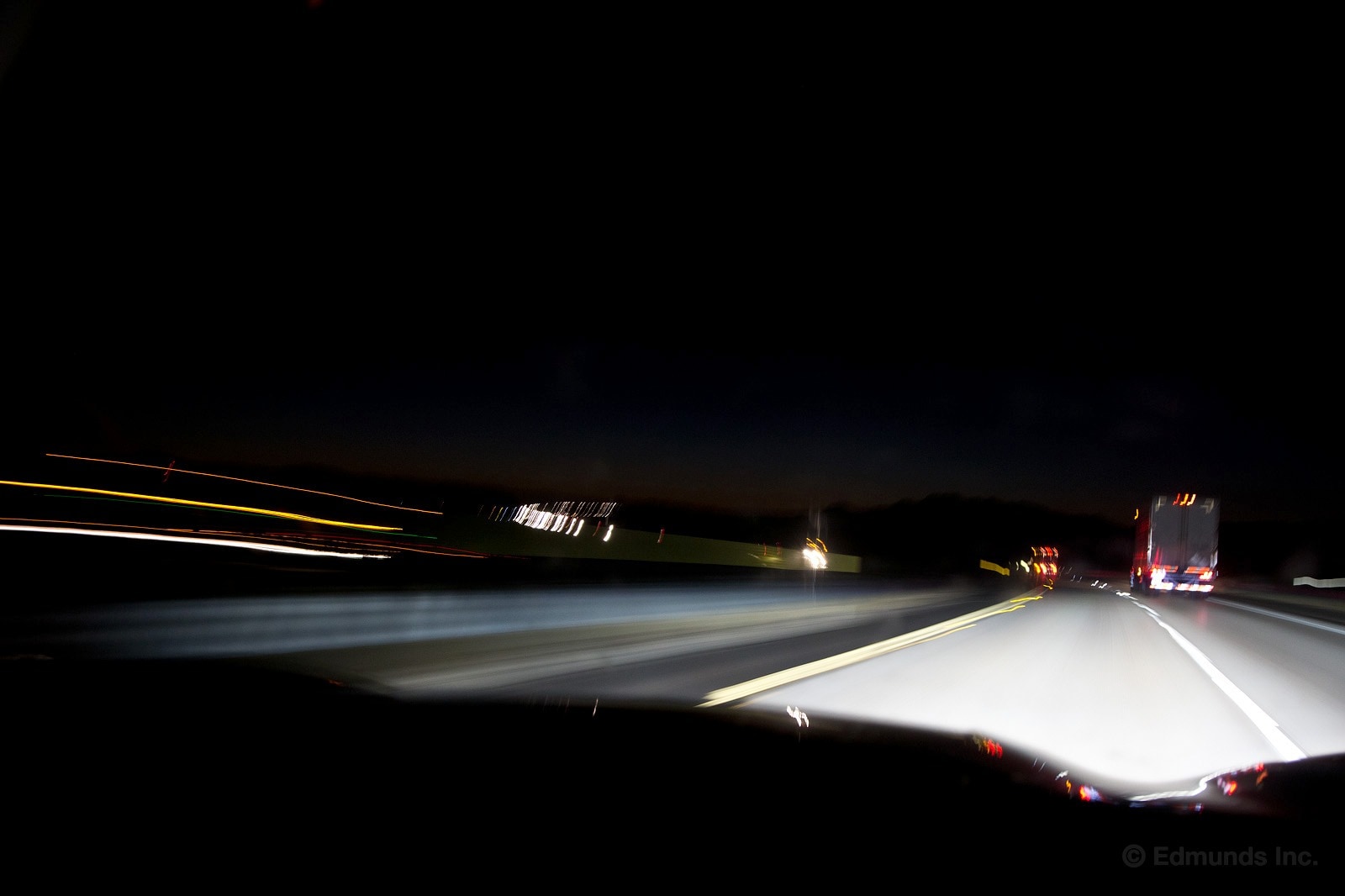
Nostalgia has been lurking through this whole trip. Lurking in the legacy of past Corvettes. Lurking just off the major interstates, mummified by desert heat and lurking in the hearts and minds of the former Corvette owners we'd met along the way. We didn't want any part of it. We were just driving through. But as we stop for a shot at the finish line, it's Frio, me and Number 23. We did it, and we're going to remember it.

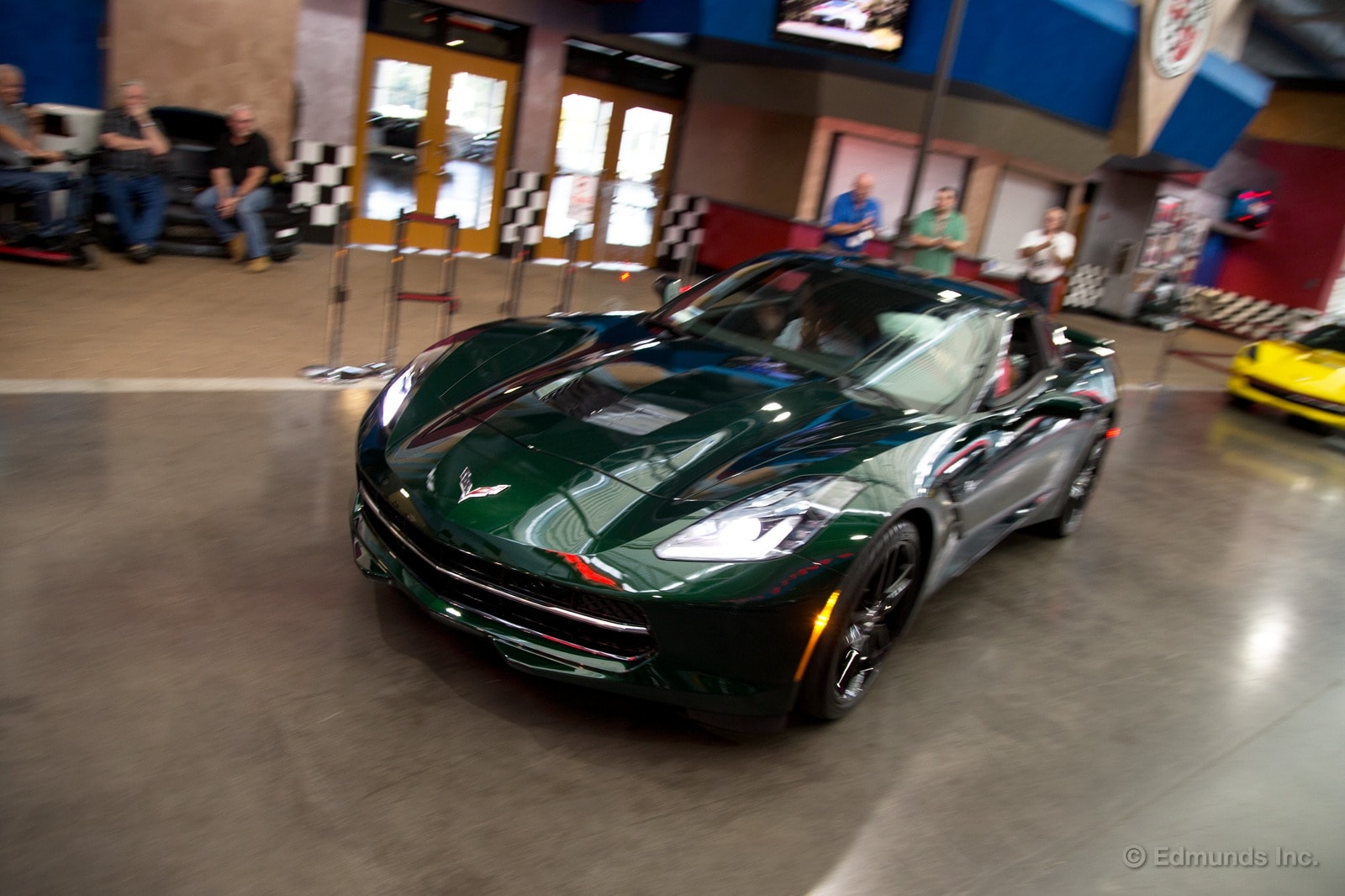
After its cross-country trek, our 2014 Chevy Corvette Stingray is settling in to normal life in our long-term fleet.
Our best fill was obtained on the drive back to our office. The worst fill so far has been earned driving around Los Angeles. No surprises there.
Our lifetime average is running just a tick under the combined EPA estimates for this car. But we have a full year to improve or destroy those numbers.
Worst Fill MPG: 11.8
Best Fill MPG: 29.1
Average Lifetime MPG: 20.0
EPA MPG Rating: Combined 21 (17 City/29 Highway)
Best Range: 464.8 miles
Current Odometer: 3,838 miles
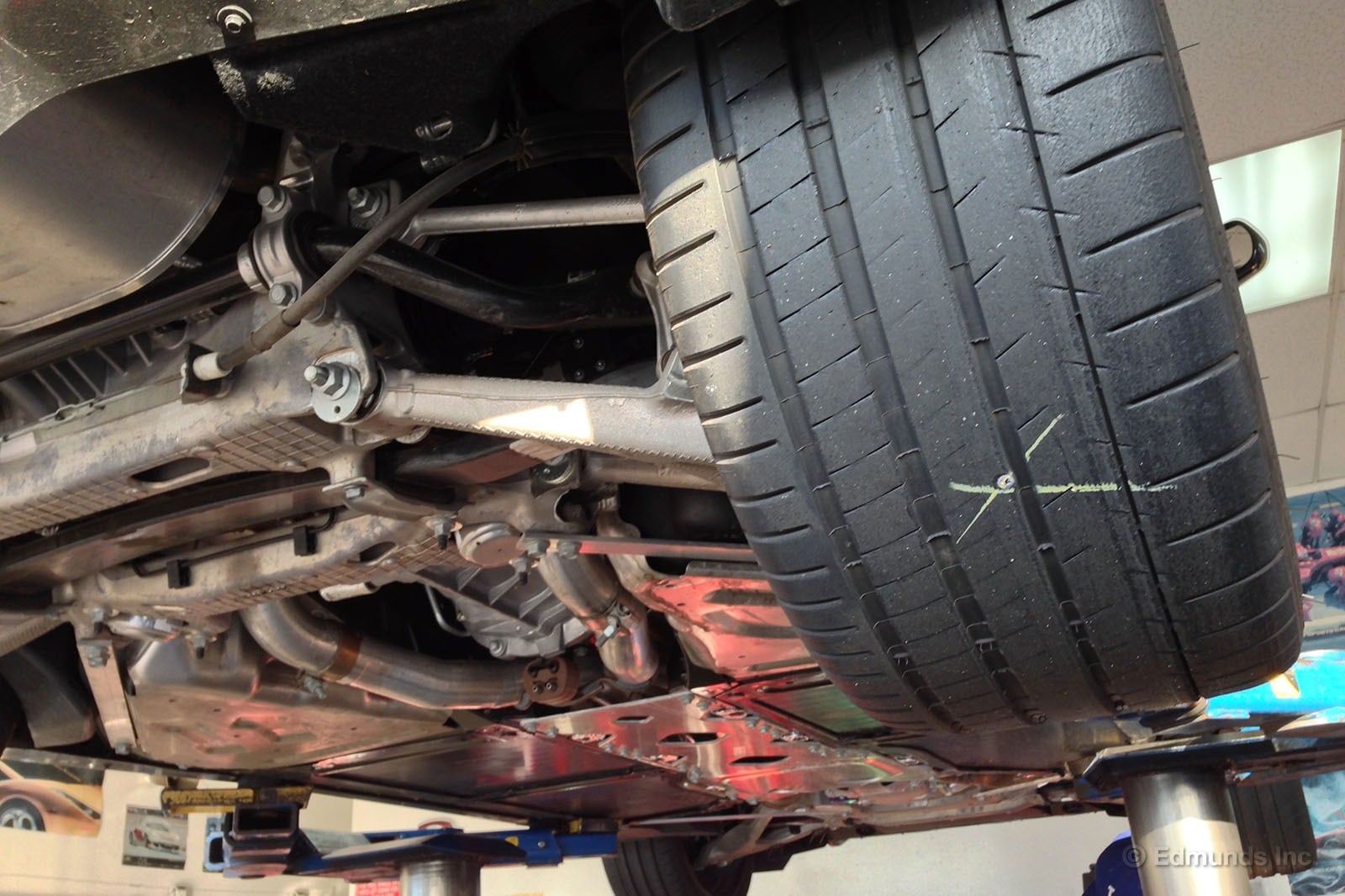
Got a flat.
Got it fixed.
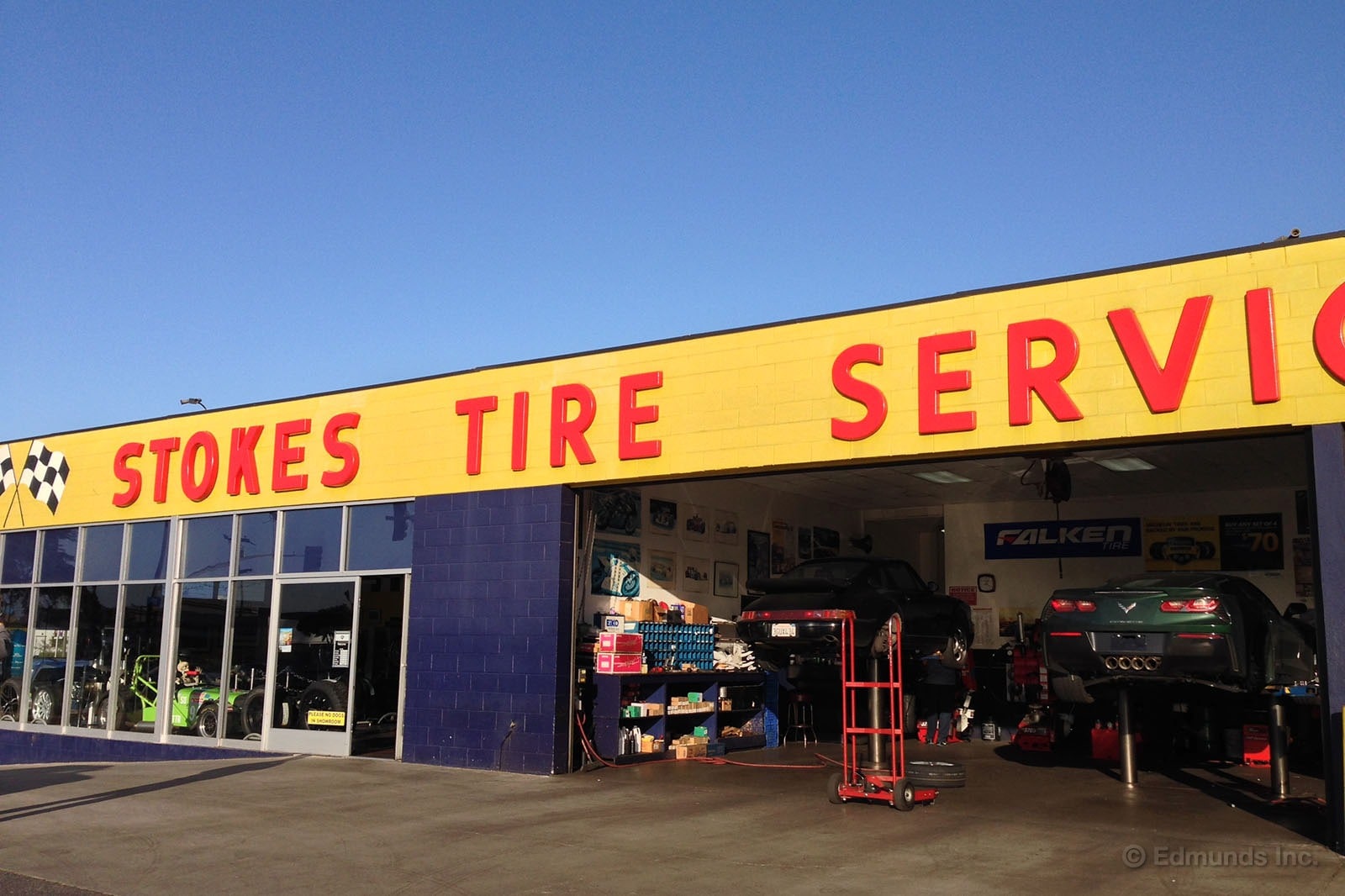
$30. 30 minutes.
(Hat tip to nukedetroit for effectively writing this post for me.)
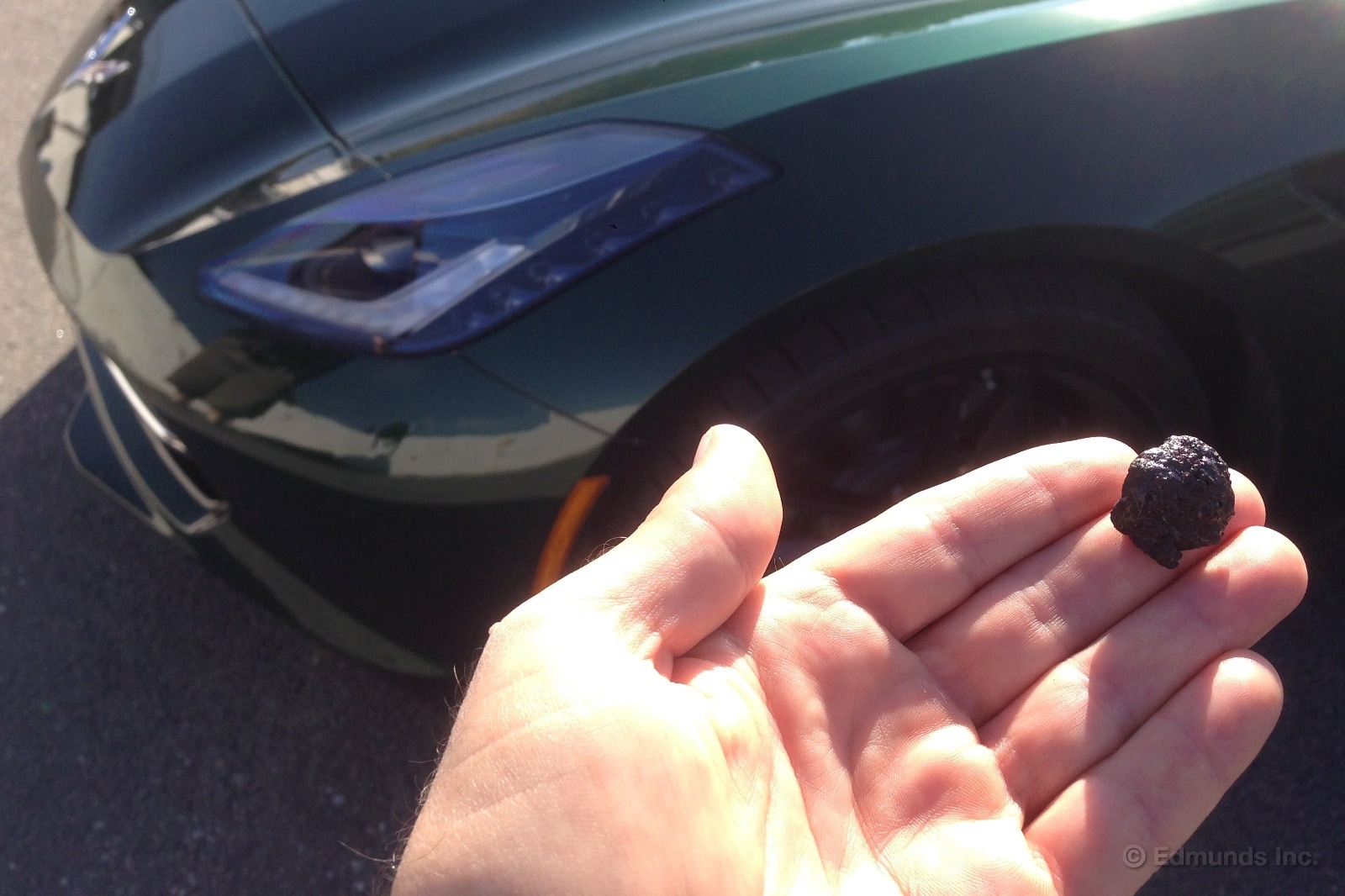
As you've likely already read here, our ace photog, Kurt Niebuhr and autoscribe, Dan Frio recently enjoyed a road trip across the country to deliver our newest long-term car to "EdQuarters" in Santa Monica, California. What they didn't know is that they brought some of that road home with them in the right-rear wheel of our 2014 Chevrolet Corvette Stingray.
Click through to see where it was hiding.
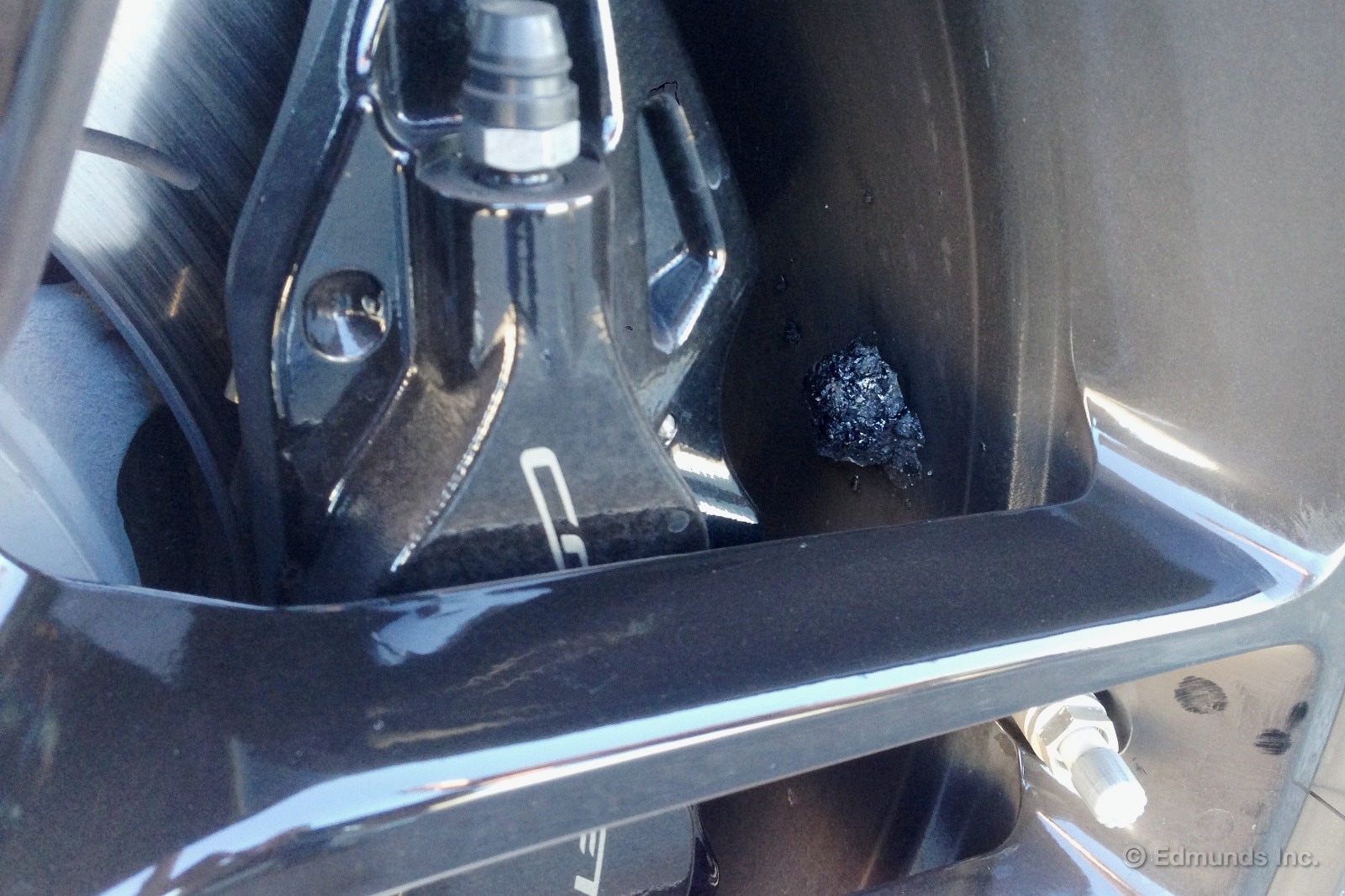
Covered with sticky tar, this stone was literally fastened to the aluminum wheel with such steadfastness that it (nearly) required a tool to dislodge it. Luckily, I was checking tire pressures as is the norm before a track test, and pried it off. I wonder how long it had been there because the boys never mentioned any vibration or shimmy.
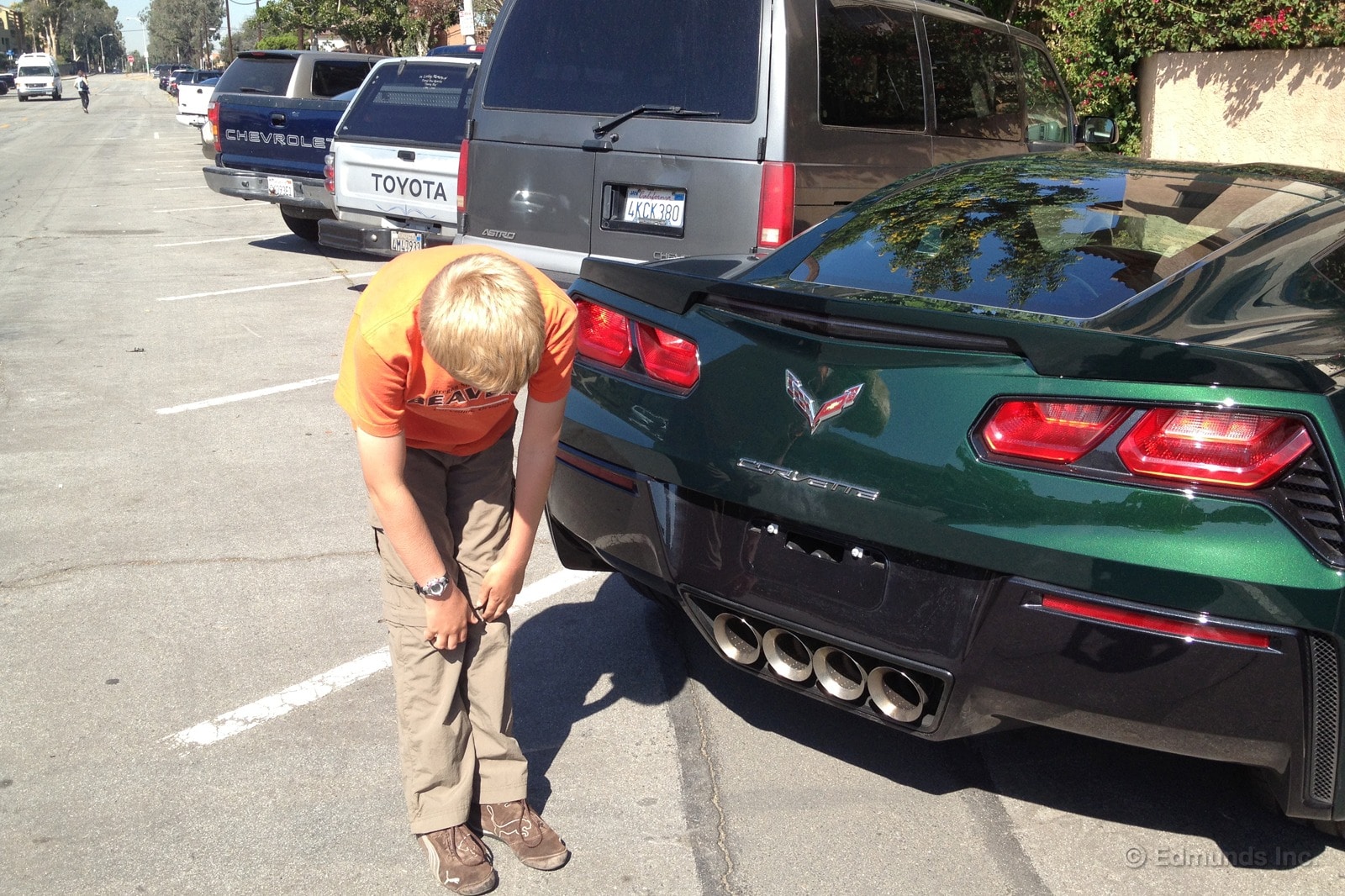
If you're a single woman who wants to meet men of all ages, skip Match.com and speed dating. Just get a 2014 Chevrolet Corvette Stingray. When I had the car this weekend, the attention was nonstop: thumbs-ups from a container-hauling trucker, a Scion street racer, guys getting off their shifts at McDonnell Douglas, and a baby-boomer surfer in a Ram 1500 ("Bitchin' car, dude. If I didn't have a hemi, I'd be jealous.") My favorite admirer, though, was Max.
I found Max, his dad and another guy doing a walk-around of the Corvette, which I'd parked on a suburban street while I ran some errands. Max gave me the chapter and verse about our new car, horsepower, dual-mode exhaust, etc., but hesitated a little when I invited him to sit in it. He stared down at his Pumas, apparently afraid of sullying the interior. He finally did slide into the passenger seat once his dad said it was OK.
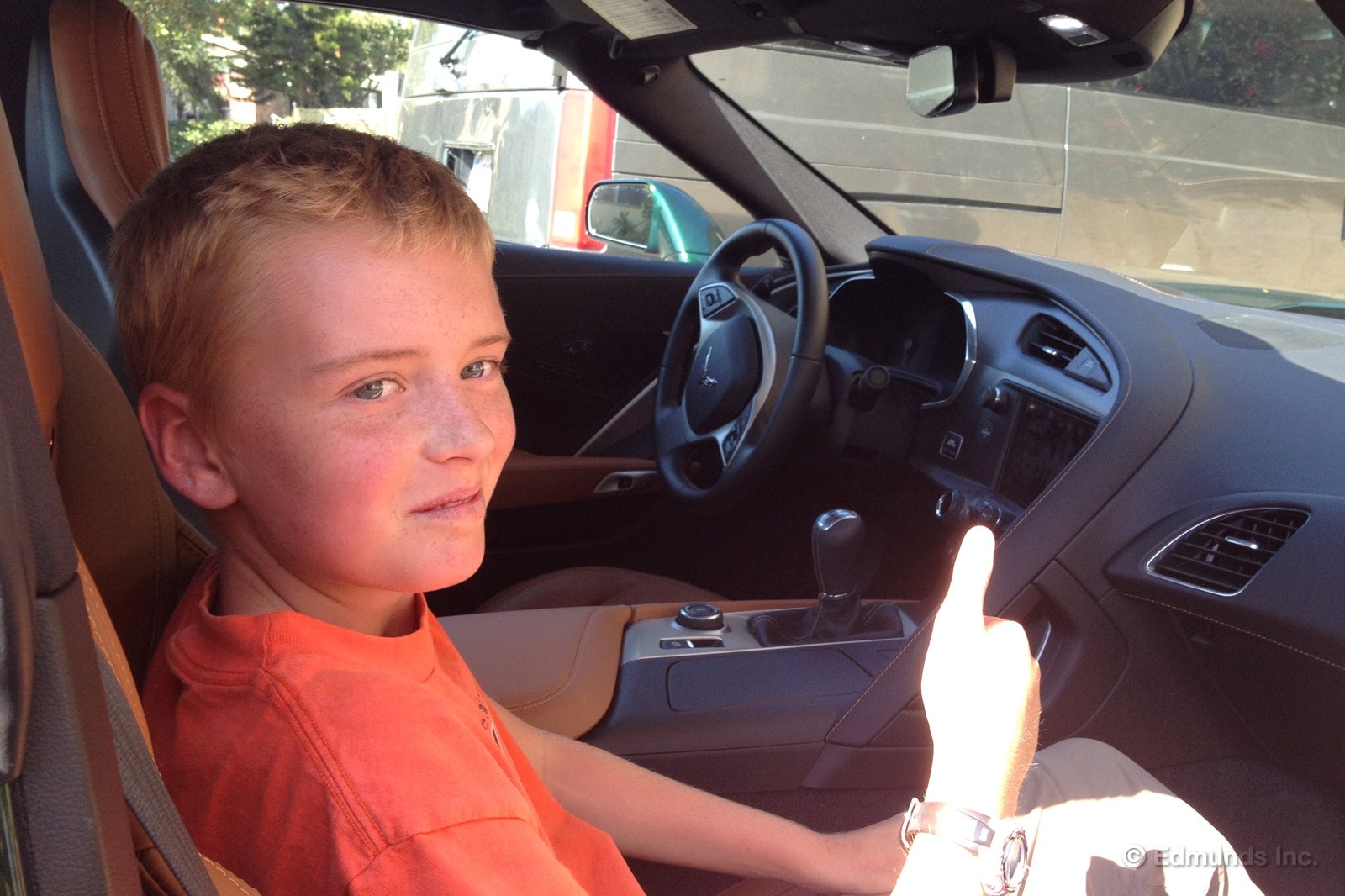
When Chevrolet releases the 2024 Chevrolet Corvette Stingray, I think I know who'll be in line for one.
What car did you follow years before you were old enough to drive? Was it a car you ultimately bought?
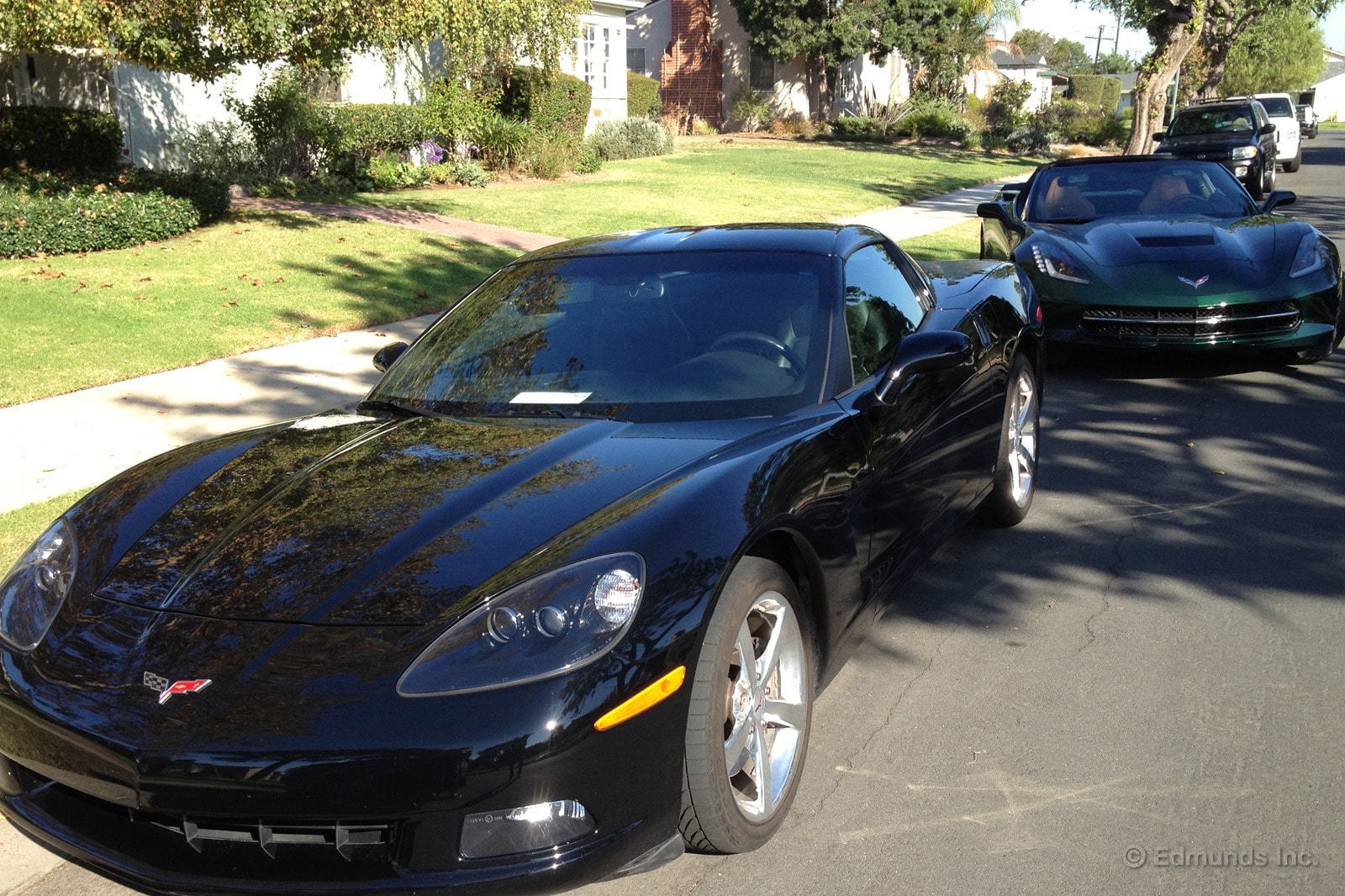
When I pulled into the car wash this morning, the manager, an affable guy who's very familiar with Edmunds and its long-term cars, raised his eyebrows at the 2014 Chevrolet Corvette Stingray and at me emerging from it.
"This is too fast for you?" he asked, archly.
"How would you know?" I replied. We laughed and slapped each other's shoulders. All in good fun.
He was right, though. I am not the traditional target for this car, nor the typical buyer. The car has a track-day image, and the average Corvette owner is a man over 60. But Chevy has said that with this new generation Corvette Stingray, it's determined to win over women who are married to prospective buyers. Chevy would like to swoop up some Porsche enthusiasts, too.
Speaking as a woman and the co-owner of a Porsche 911, I'd say Chevy is off to a good start. I felt welcomed by the car. It was easy to set to my liking, from seat and mirror positions to phone pairing and music preferences. It seemed ready to adapt to me, rather than the other way around. It's striking, comfortable, responsive and has a miraculous number of features for the money: worth every penny of the out-the-door $71,664.40 we paid for it.
All weekend, I kept running into Corvette owners, who nodded approvingly at the new generation Stingray. One was a retired auto mechanic, the original owner of a 1988 convertible with just 30,000 miles on it. (I told him to drive more.) Another, the owner of a 2007 convertible with 8,900 miles on the odo, chatted us up at stoplights along Pacific Coast Highway, listing off the features he wanted in his next Corvette. My neighbor owns the black beauty you see here.
I just have a temporary pass to the Corvette club, but I can see why so many people have joined, and why the circle will grow wider with this car.
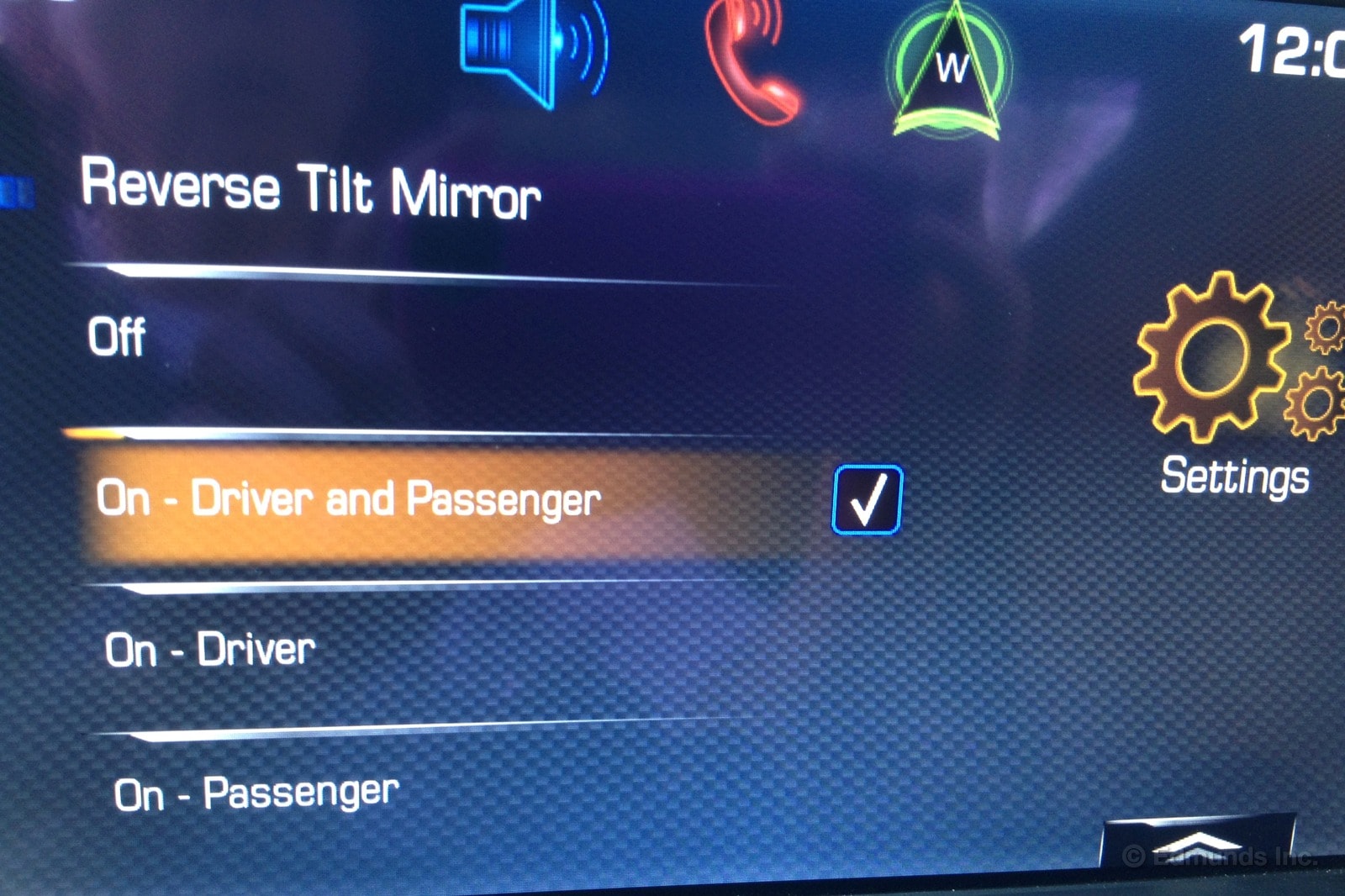
Our 2014 Chevrolet Corvette Stingray is a wide car, and it takes a little time to get a feel for where the car is, relative to parking space lines and distance from curbs. It's also a car with black painted wheels. The combination of the two had me spooked. I'm a member of Curbers Anonymous, although I have been scrape-free for more than a year.
The best thing for curbers like me is a side mirror that tilts down when the car is in reverse. Initially, I didn't think the Corvette had this feature, but when I was looking up something else in the surprisingly slim owner's manual, I discovered that the mirrors would indeed tilt. Hurray!
Within the Vehicle section of the Settings menu that displays on the nav/infotainment screen, there's a selection for reverse tilt mirrors. You can customize the mix you want, and most of my curb-rash worries are now a thing of the past.
But I still will go to meetings.
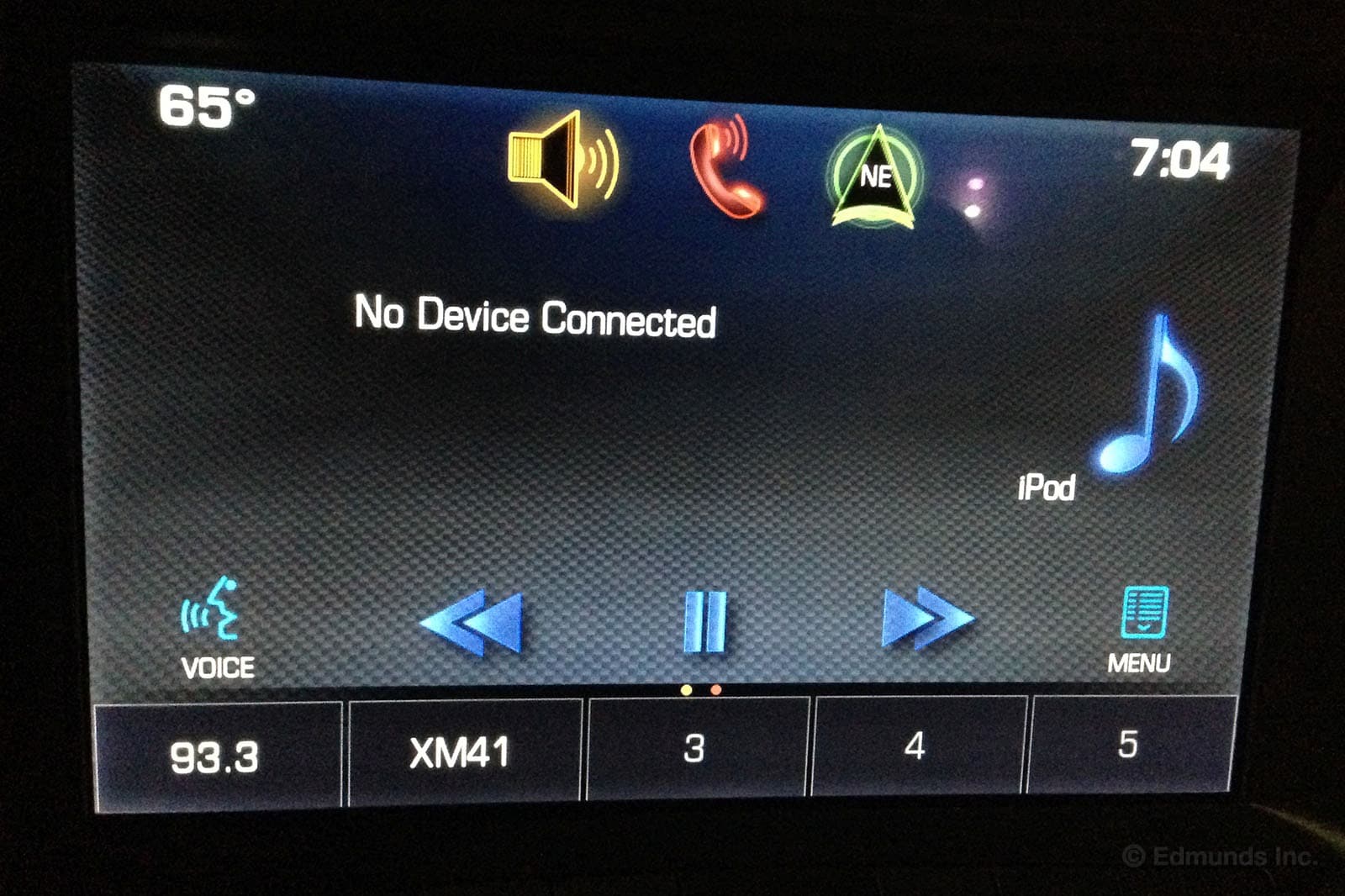
As soon as Kurt and Dan got back from their road trip, I made up some excuse to steal our new long-term 2014 Corvette for a long time.
On day 2, the C7 and its MyLink infotainment system fried my iPhone.
Halfway through my second day with the car, with the iPhone (5, IOS7) plugged into the USB input, the screen displayed what you see above. Music kept playing for a bit, and then it displayed this.
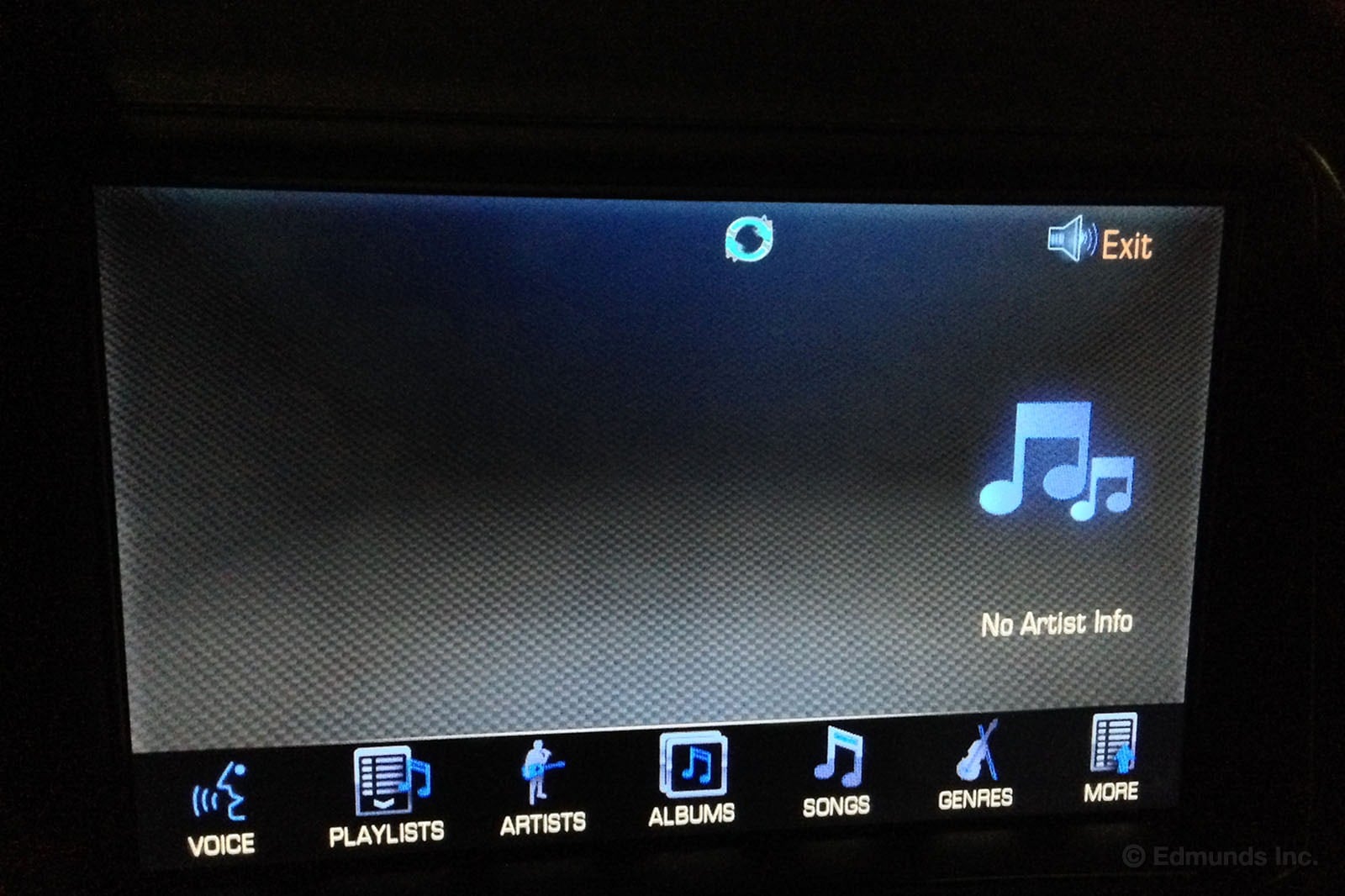
And then the music stopped.
I figured it was just a glitch so I unplugged the USB and plugged it back in. That didn't fix it. Then I looked at my iPhone and the screen was frozen on the music player. Nothing responded and the phone was unreasonably hot to the touch. I unplugged the phone and let the battery die. When I booted it up, everything seemed to be working fine, but it was getting hot-to-the touch every time I charged it. I did a factory wipe of the phone and reinstalled everything which seems to have cleared everything up. I've yet to hear of anyone in the office having the phone overheat, but there have been reports of it failing to play audio over USB.
Yes yes, I should have used a USB drive, yadda yadda. But this system is designed to play music off of a portable device and an iPhone is a portable music-playing device. It should work.
As for using Bluetooth? No. I want to be able to select artist/playlist/album, not just move the tracks forward and backward.
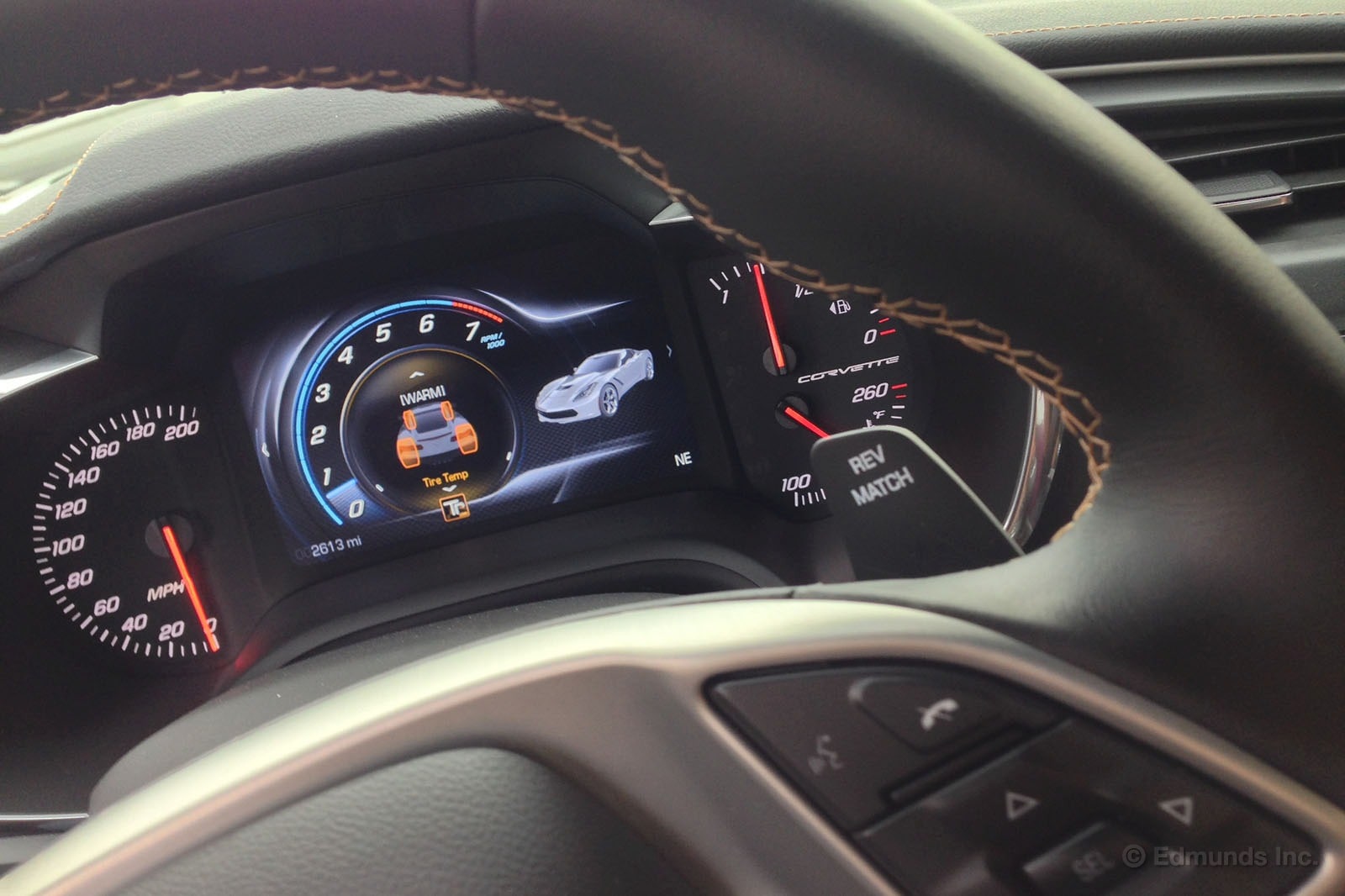
Conventional wisdom says that cars with manual transmissions shouldn't have shift paddles on the steering wheel. Our 2014 Corvette does and they're dumb.
In the most obvious and annoying display of cost-cutting on an otherwise impressive interior, Chevy has decided to offer one steering wheel for both the manual and automatic-equipped 2014 Chevy Corvette Stingray.
At first blush, this isn't a big problem. The wheel doesn't care which transmission you've got, right? Then comes the realization that the automatic-equipped car comes with shift paddles and thus, so does the one with a manual.
Now, of course these paddles don't shift the transmission on the C7. Instead, they turn on/off the Corvette's automatic rev-matching system. (I'll leave the actual functioning of that system for a later date. Short story: It's ok.) Click the paddle to turn it on and the gear indicator turns from white to yellow. Click the paddle to turn it off and the number goes back to white.
From a functionality standpoint, it's simple and effective. The paddles are a nice, heavyweight plastic that doesn't pretend to be metal and they're big enough to use without looking. The downsides win out, though.
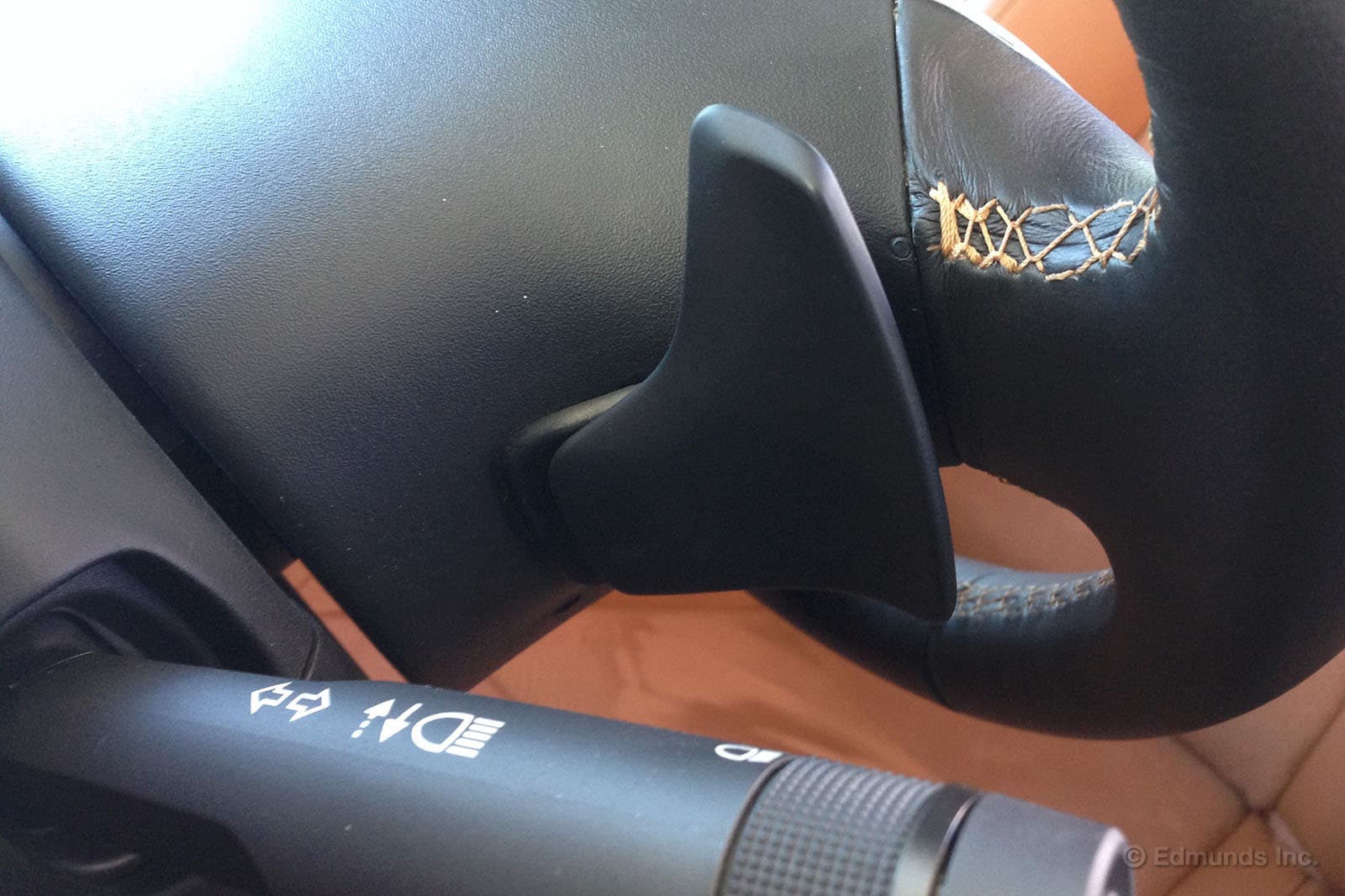
First, they're slightly in the way. There's not a lot of room to grip the wheel in the 9-and-3 position if you've got fat fingers.
Second, they're slightly confusing. If you've spent any time in a car with paddle shifters, you'll come up on the Corvette's redline quick, feel the paddle somewhere near your pinky and instinctively try to tap it. This can be curbed by holding the shifter at all times, but then you're that guy.
Finally, it's cheap. Chevy killed it on the interior of the new Corvette. It's a great place to spend time. But they dropped the ball here in a big way. It's not one of those things you only come across once in a while, it's one of those things you see every. single. day. One of those things that reminds you that the Corvette is built to a price. One of the things that Porsche would never do (even if they do charge you $490 for one with paddles and $615 for one with stereo controls).

Our $71,664.40 2014 Chevy Corvette Stingray has 3 USB inputs, Bluetooth audio and satellite radio controlled by Chevy's MyLink system. It does not have a CD player as I found out after a relatively successful trip to Amoeba Records.
It's 2013, do we care that a car doesn't have a CD player even if they do offer better sound? (In before "Who needs a radio when you have the sound of the engine!")
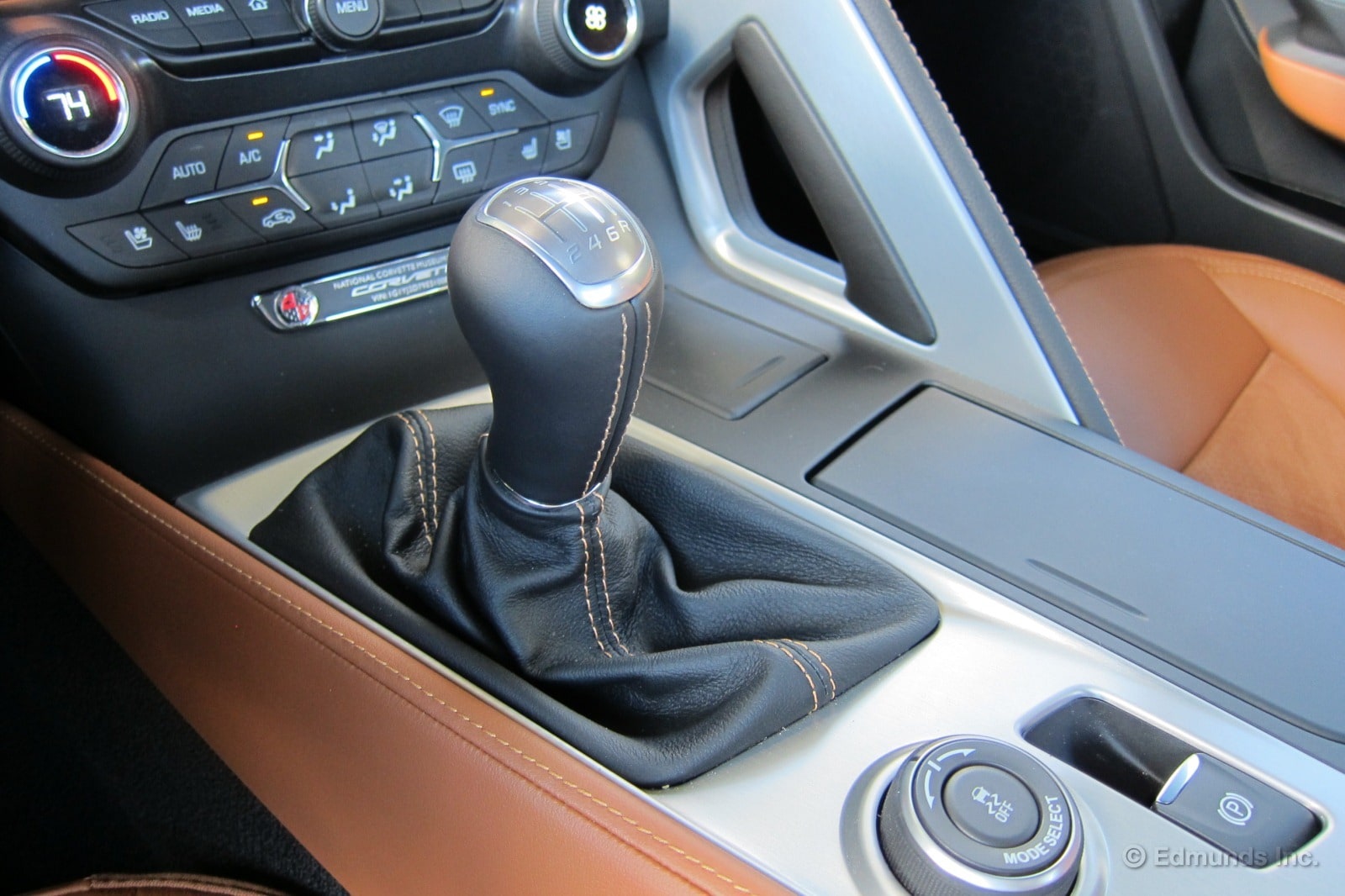
Torque. Our long-term 2014 Chevrolet Corvette has it. And even though its gearing is very tall (it helps fuel economy) even in Z51 trim with its shortened gearset, it's still got enough grunt that you can skip a gear when such driving circumstances arise. I do this in many cars from time to time, even ones with far less torque than this one.
Now, skipping one gear is one thing. GM's infamous 1-4 skip-shift, however, is still in place in the C7, and it's still obnoxious. It's simply too large a ratio drop for the engine to manage cleanly. I drive around the skip-shift (and thus forgo whatever fuel savings it would have provided).
Just as the tall gearing and skip-shift are intended to boost fuel economy, so too is its seventh gear. It's an ultra-tall cruising cog, and gears 1 through 6 in non-Z51 C7s are carried over from the previous six-speed gearbox. Still, the C7 pulls its 7th gear cog better than the Viper pulls its 6th gear. The 'Vette's seventh is surprisingly usable.
I do wish the C7 had a 7th gear lockout. It's too easy to inadvertently slot the gear lever into the 7th gear gate, especially when shifting nonsequentially through the pattern. Porsche's seven-speed manual locks out 7th gear at all times, unless you select 6th gear first. Clever, that.
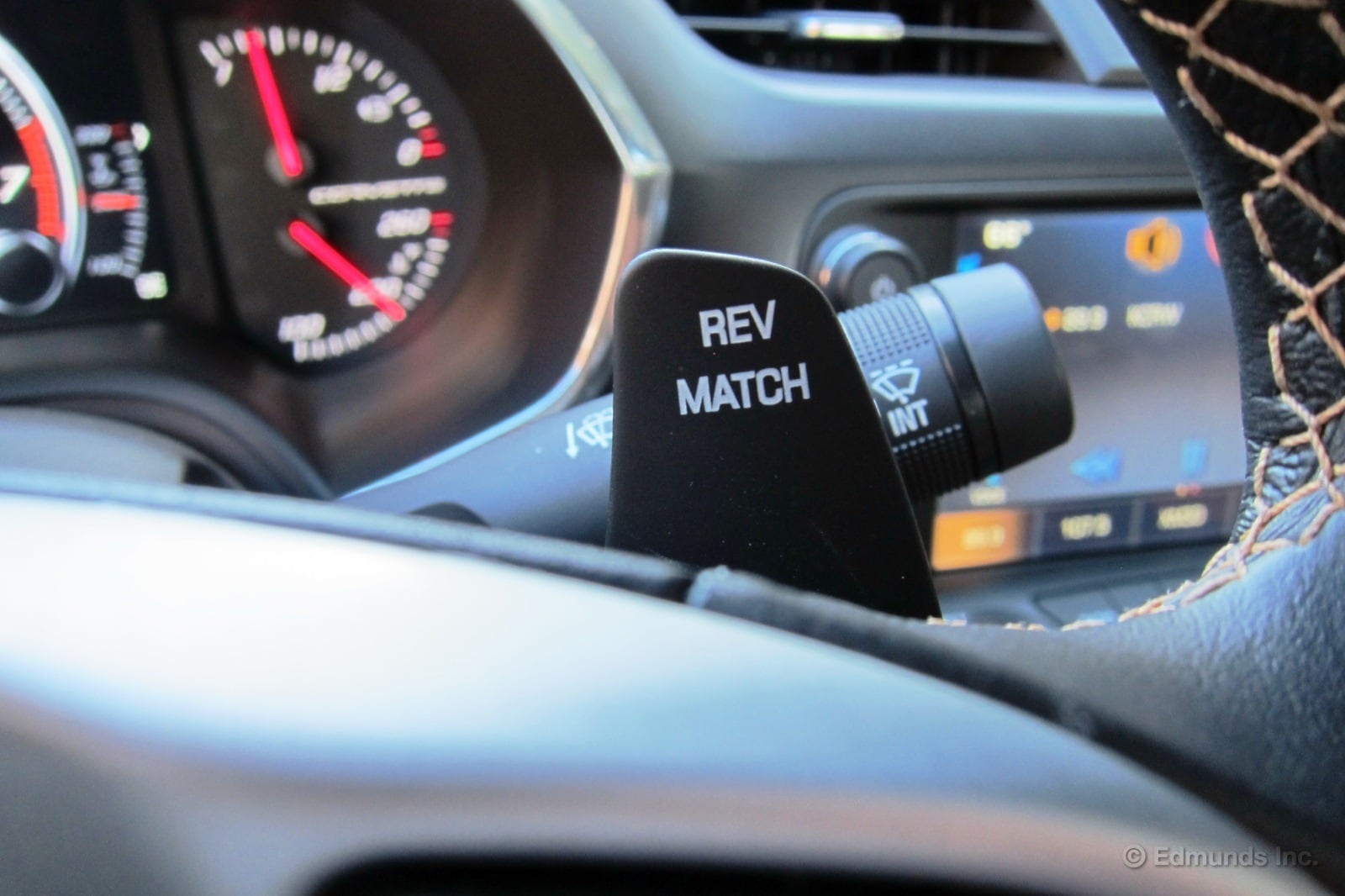
Among the long list of tech features in our long-term 2014 Chevrolet Corvette is rev-matched downshifting. Basically, when you activate the system, the throttle is automatically blipped during downshifts. The idea is smooth, no-lurch, perfectly rev-matched downshifts. Great for when you want to make fast time on a good road, and especially useful to avoid upsetting the chassis in braking zones on a track.
It's a technique first seen on the Nissan 370Z as SynchroRev Match. In that car, the system worked flawlessly. Lightning-fast rev matching. It's brilliant.
In the C7, the rev-matching feature is not quite as effective. The system is slower to bring the revs up than Nissan's system, so often you find the revs not really matched by the time you engage the clutch for the next gear. Lurch.
What I find is that in order for the C7's rev-matching system to work seamlessly, I have to slow down my gear changes. This makes the system workable for when you want to be lazy, like around town, but ill-suited for fast driving. Irony.
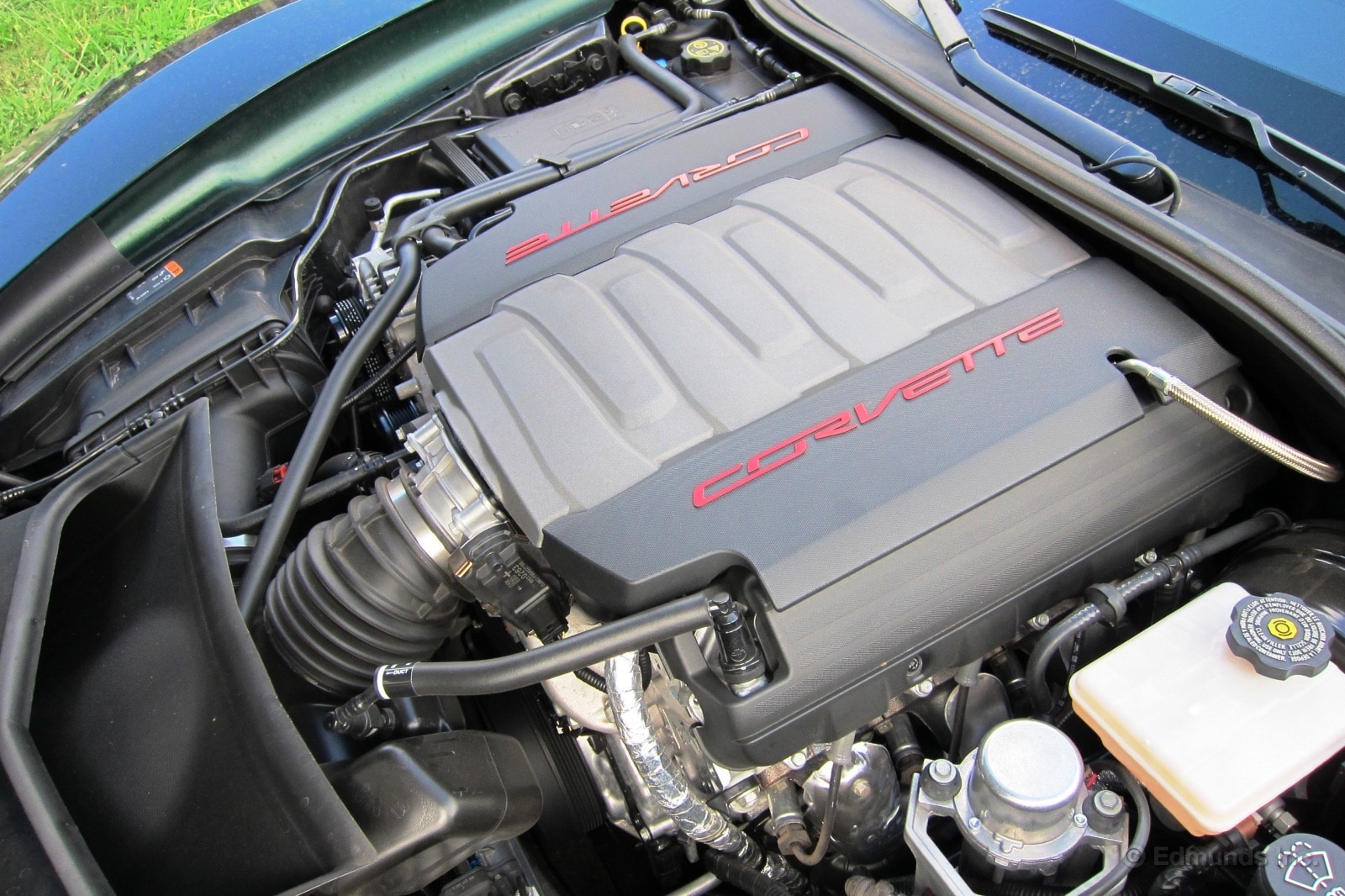
When you lift off the throttle in our long-term 2014 Chevrolet Corvette, not a whole lot happens. The engine essentially freewheels for what seems like a few seconds. Then, finally, you get the engine braking you were expecting, and hoping for.
This "rev hanging" phenomenon is an undesirable byproduct of the engine calibrator's attempt to clean up the emissions of the Corvette's 6.2-liter engine. Basically, by keeping the throttle open during the overrun (you lift off the pedal, the injectors are switched off), the throttle stays open to allow fresh air into the cylinders to help oxidize unburned hydrocarbons. While it is effective at this scrubbing task, it also scrubs engine braking. Bew.
The C7 isn't the only car to exhibit this trait, but that doesn't make it any better. Usually what happens is that the automaker gets enough customer complaints that it issues an ECU reflash with revised throttle mapping to reduce the rev hanging. Or they make a running ECU program change along the way. I expect GM will follow a similar pattern with this car.
For kicks, on the complete opposite end of the overrun-engine-braking spectrum, the car that's hyper-willing to jump into full engine braking at the slightest hint of a throttle lift is the Ferrari 458 Italia. It's almost disconcerting. And now you know.
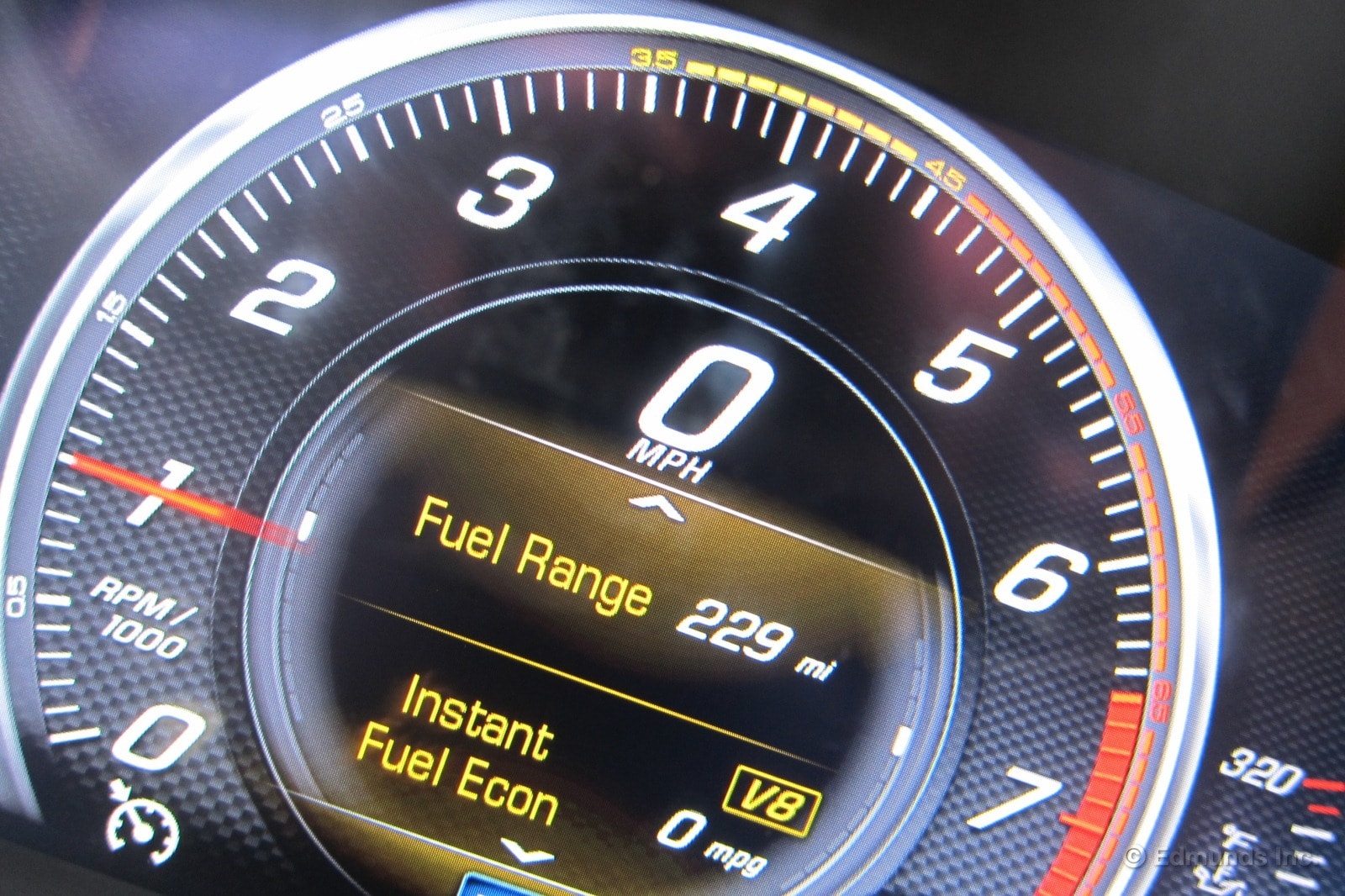
Hey, that's neat. Our long-term 2014 Chevrolet Corvette has a cold-engine redline indicator. See it there around the outside edge of the tach?
This isn't the first car to have such an indicator, but I always appreciate these things. Not because I would otherwise beat on the car when stone cold, but because other buyers do. Maybe, just maybe, the cold-engine redline indicator will prevent someone from being a bonehead.
That said, you should see some of the thermal shock testing that OEMs conduct on modern engines. It's crazy. They run the engine on an engine dyno at full load, full power, at max coolant temp. Then they activate a valve and flood the cooling system with ice cold water. Yes, while still running at full power. Then they switch back to full-hot water. And repeat this over and over.
On second thought, maybe I'll just wood it as soon as the engine catches.
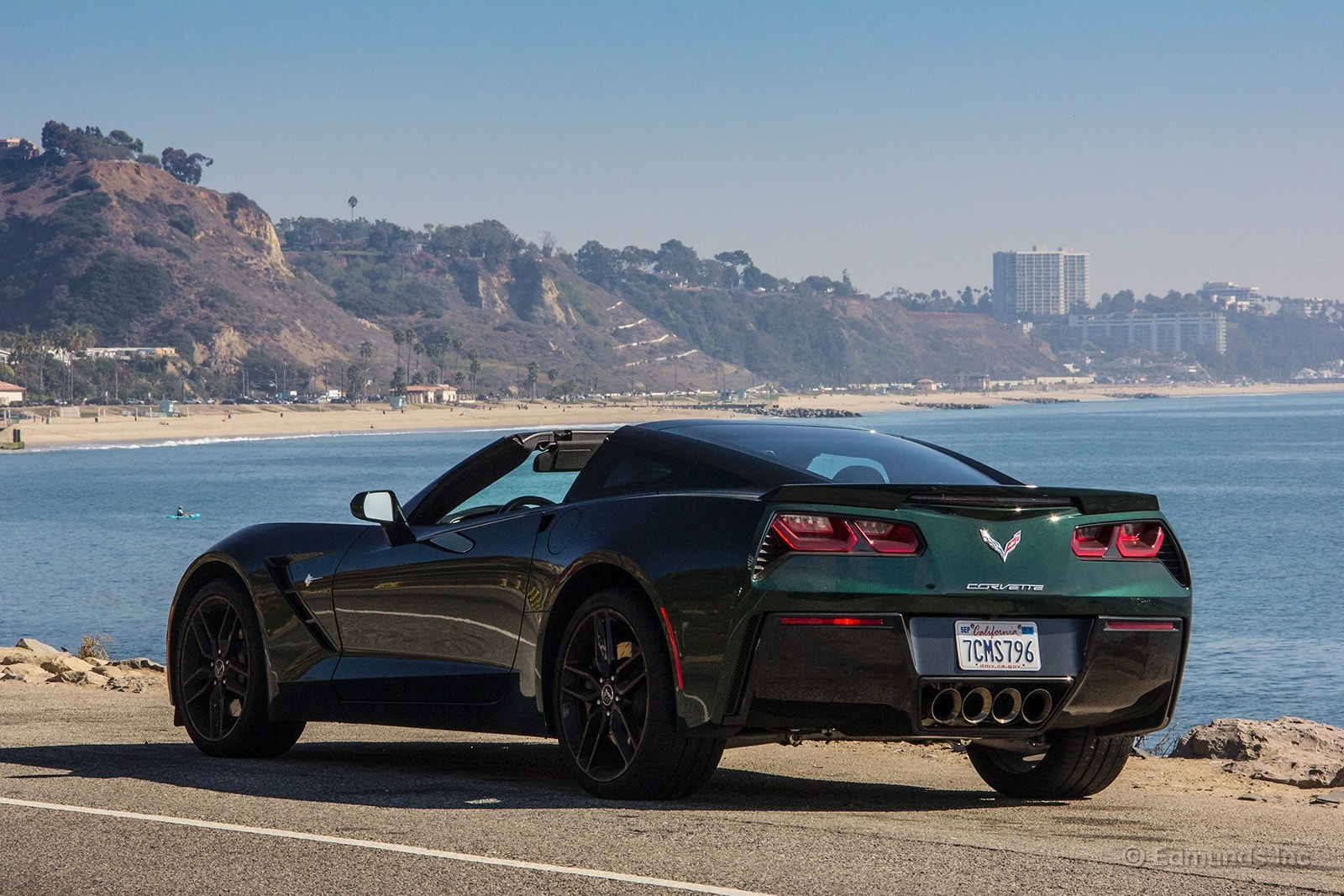
It is mid-November, but you wouldn't know it judging by the weather in Los Angeles. It's 76 degrees on Pacific Coast Highway, and I want to hear the fabulous V8 soundtrack coming from our long-term 2014 Chevrolet Corvette Stingray. So I pull over, throw three simple latches and the top pops out with ease.
I open the trunk and there are four mounting points to secure the lightweight piece of carbon fiber so it doesn't slide around during inevitable high-speed maneuvers. Having a second person to help lower it into position would make scratching the paint less likely, but I'm extremely careful and in under a minute, I'm on the road, enjoying the autumn sunshine along the coast.
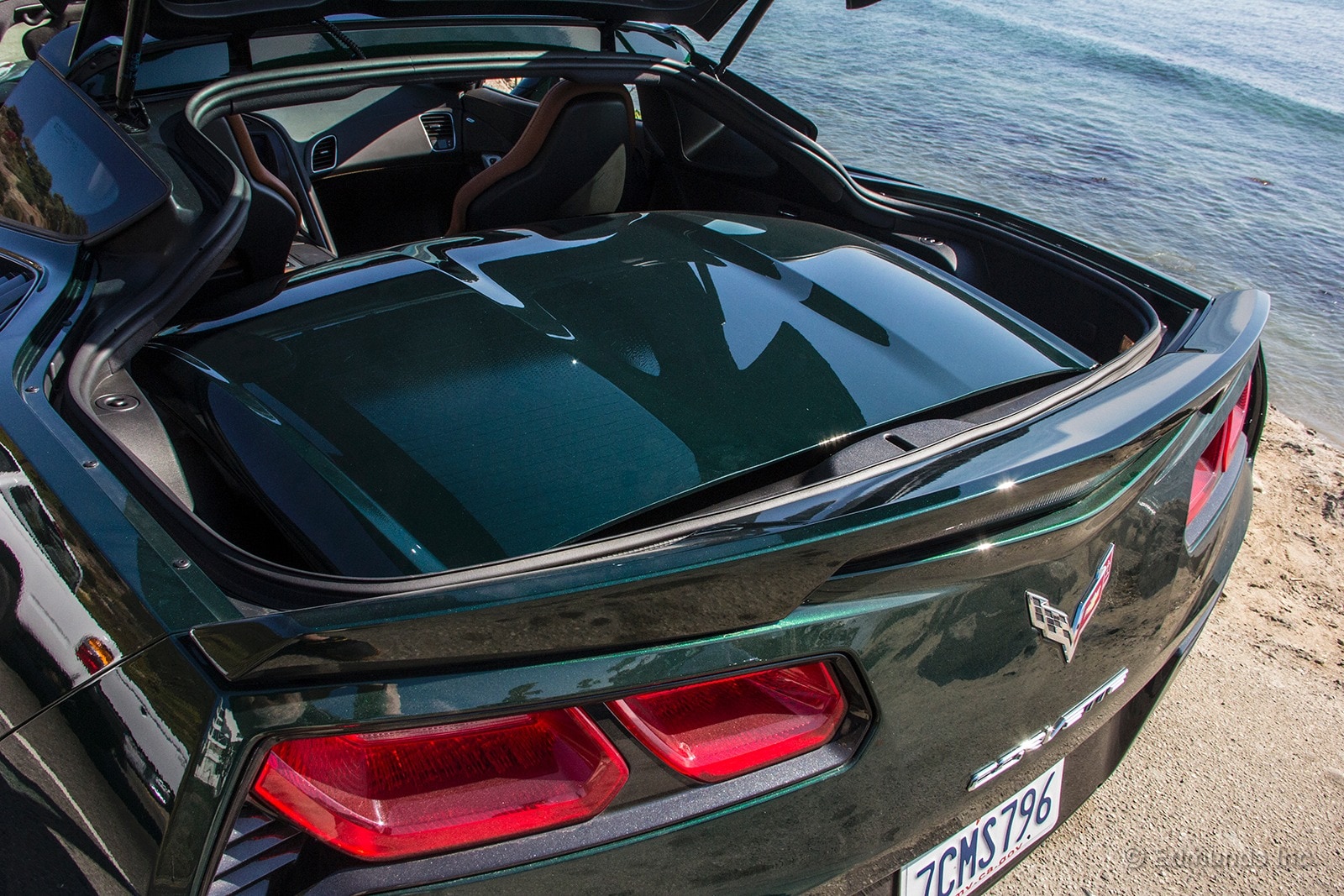
Take that, expensive, complicated, fragile convertible tops.

The 2014 C7 Corvette did away with a conventional handle-style parking brake on the center console in favor of an electronically actuated brake. The new button is much smaller than the old lever. It yields a tidier center console and a bigger cupholder plus a pop-up 12-volt outlet. But the C6 managed to pack in everything but the pop-up outlet.
I still prefer levers.
Is it worth it?
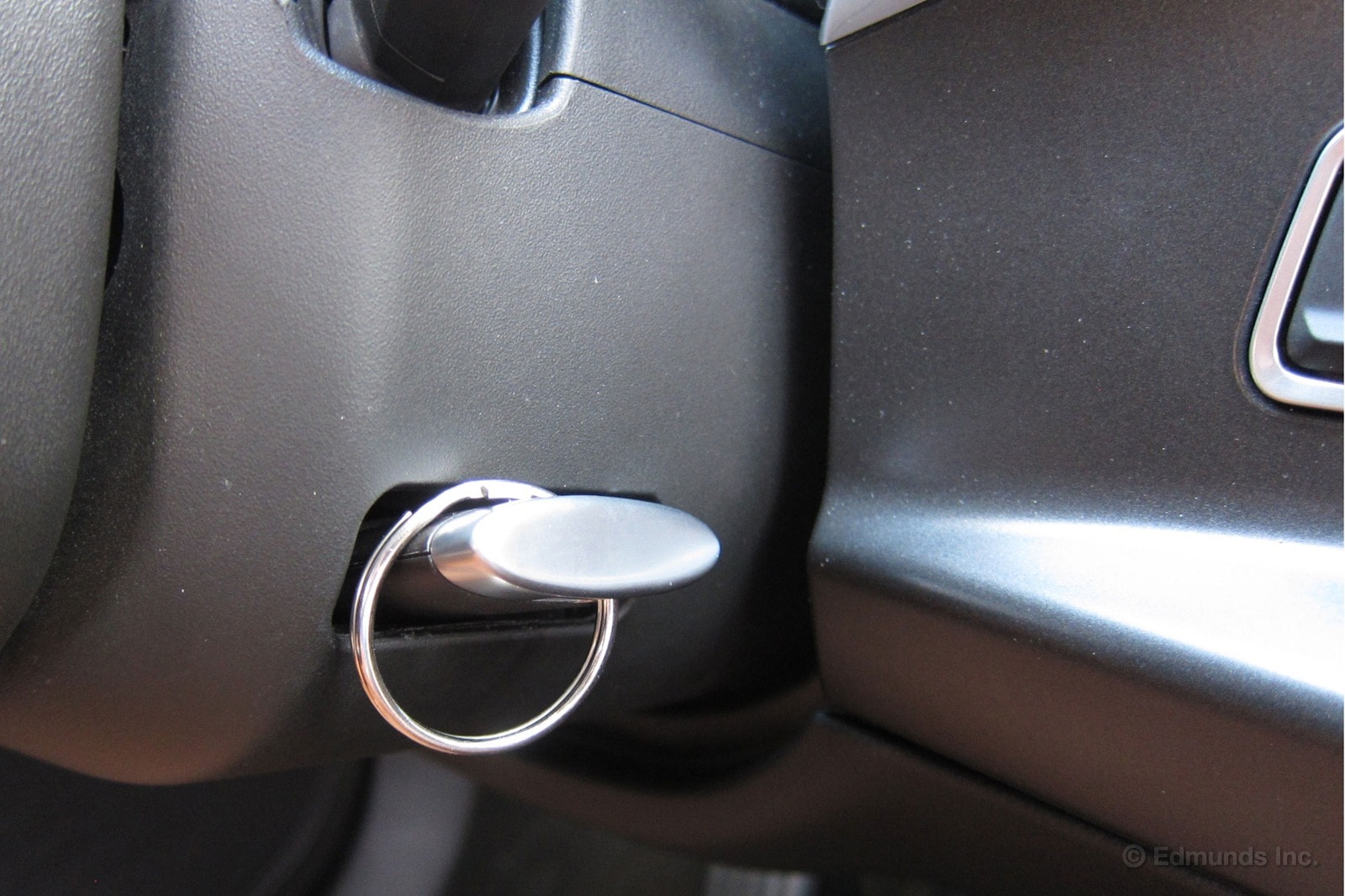
I noticed the 2014 C7 Corvette has this handy slot for its key fob hiding in the steering column. I'm the guy who always finds himself in the car with the fob still in his hand. Then it's a question of either trying to jam it in my pocket while seated or leave it lying in the cup holder. This beats the cup holder.
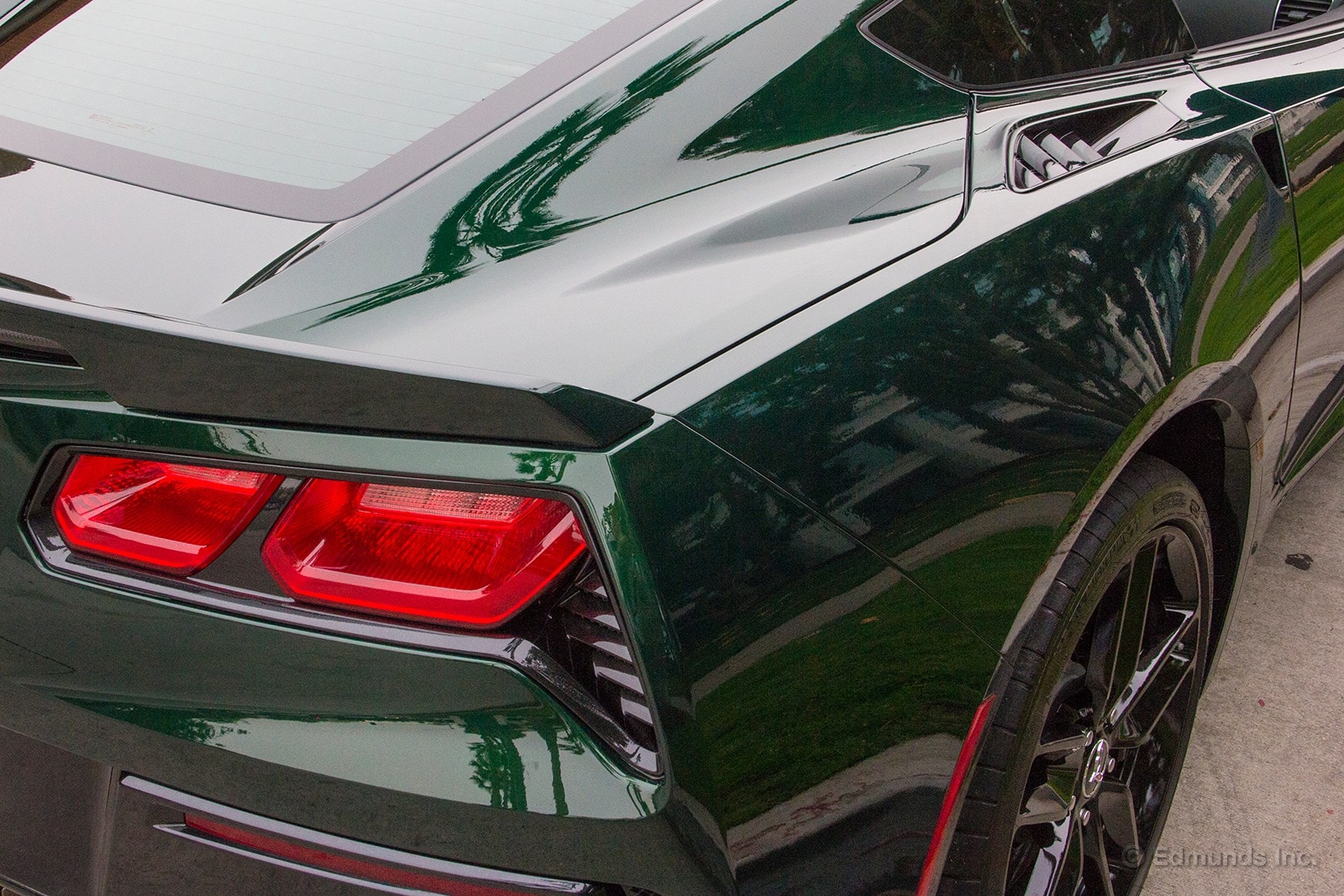
Before we purchased our long-term 2014 Chevrolet Corvette Stingray, our entire editorial staff voted on what color it would be. My choice was Laguna Blue Tintcoat. Not only was I outvoted, I'm now convinced this would have been the wrong color for our 'Vette.
The first Stingray we tested was Laguna Blue Tintcoat. When we tested another Corvette on the Streets of Willow in California, it was Blade Silver Metallic. Ultimately, I didn't care for either color on the car, and the reason is this: Although the black inserts around the Corvette's taillights aren't ugly on their own, when they contrast with a lighter color (like blue or silver), it ruins the overall aesthetic and makes an otherwise aggressive car look cheap.
I like the vents on the Corvette, but it's best if they blend in with the rest of the body. Given the chance to vote again, I'd go with the Lime Rock Green Metallic we got. It hides the black plastic vents that line the quarter panels, fenders and taillights. The result is a classier looking, more refined sports car that's still a hair-raising, fire-breathing, 455-horsepower, V8 American monster.
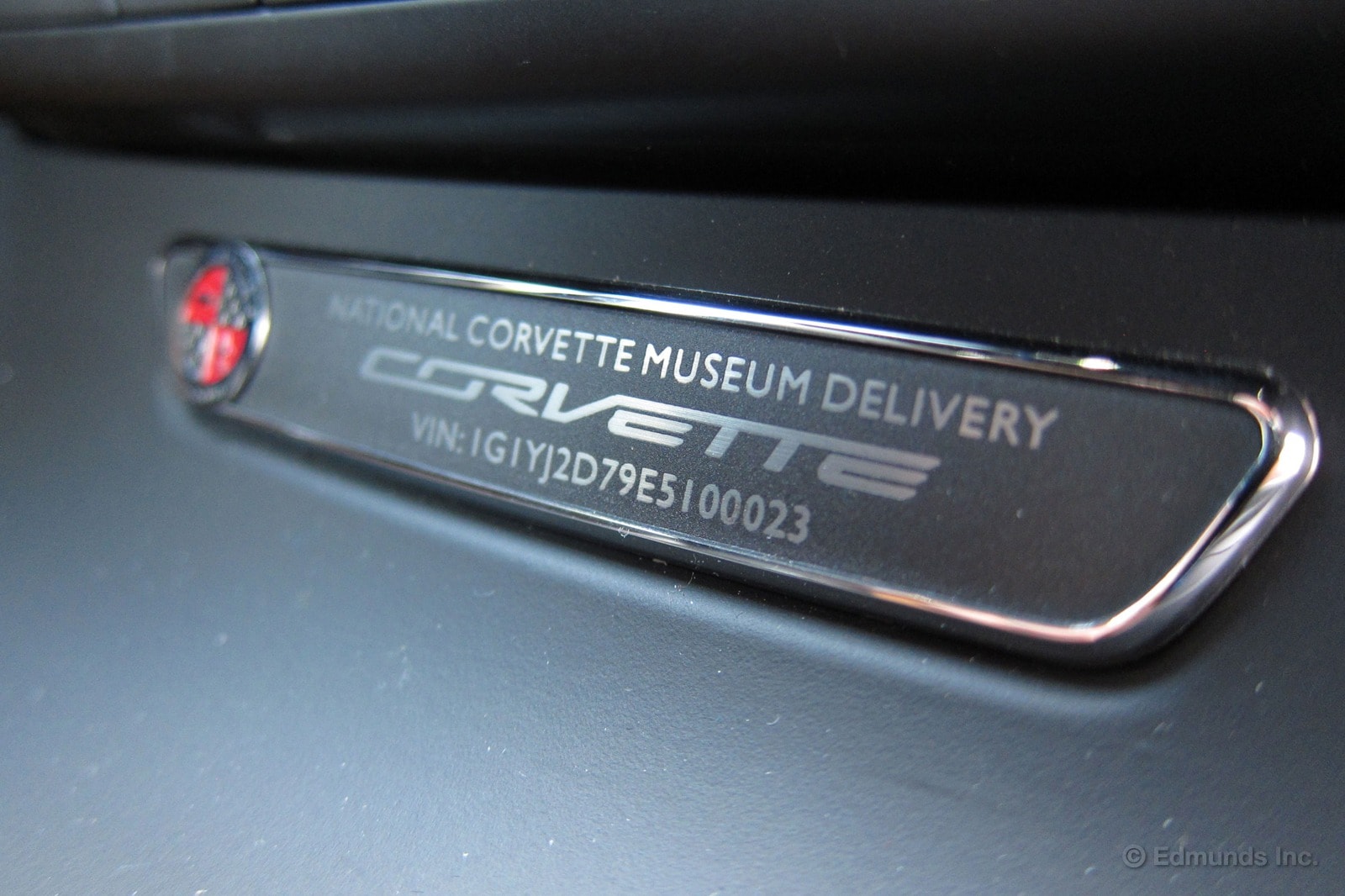
Our Stingray is number 23. And that's pretty cool.
Barrett-Jackson here we come.
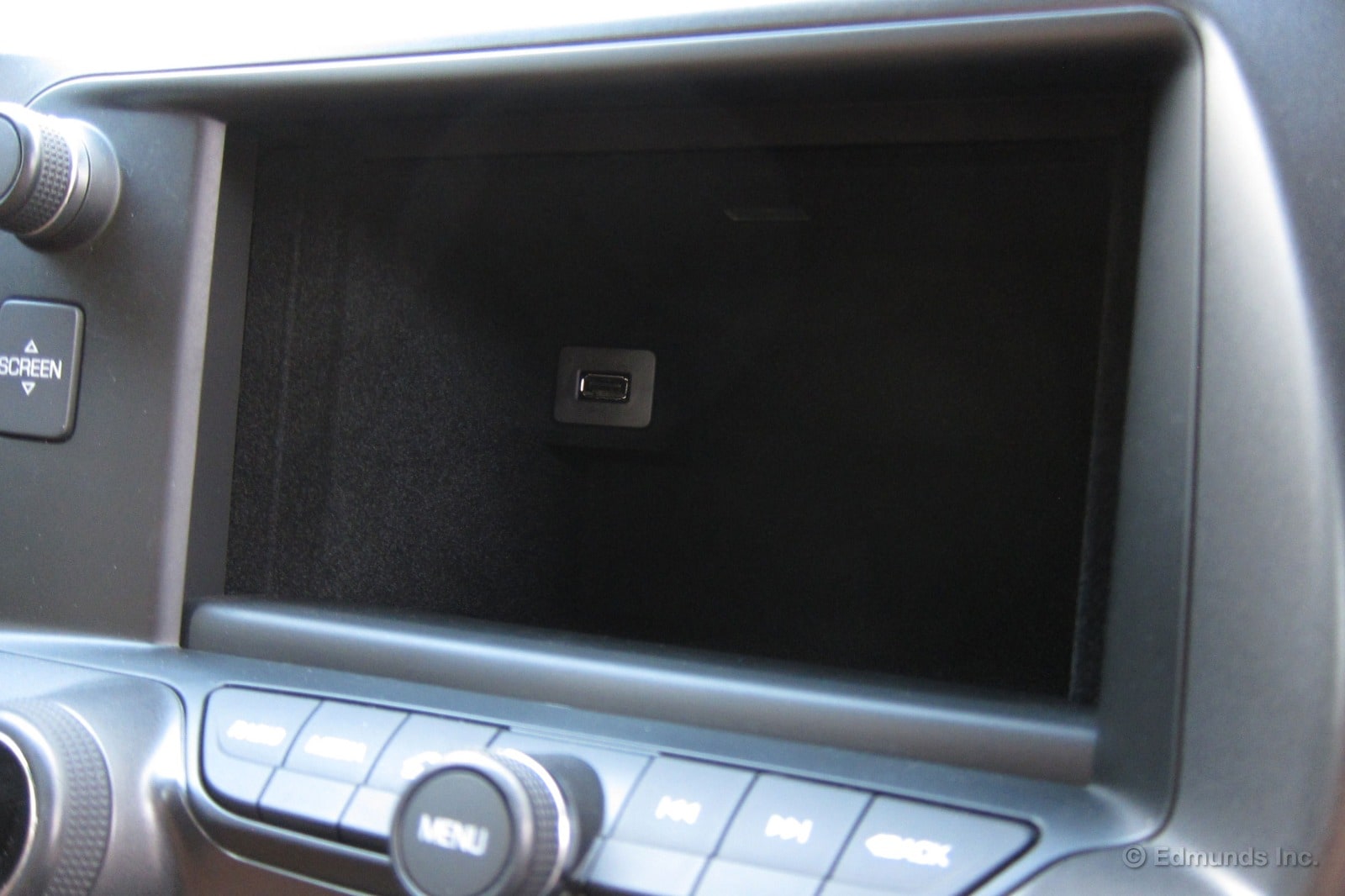
By now you probably know about the 2014 Chevy Corvette Stingray's hidden storage compartment behind its navigation screen. The compartment is accessed via a button to the left of the screen and is big enough to hold several smartphones, a wallet or two and other small items. It also contains a USB port.
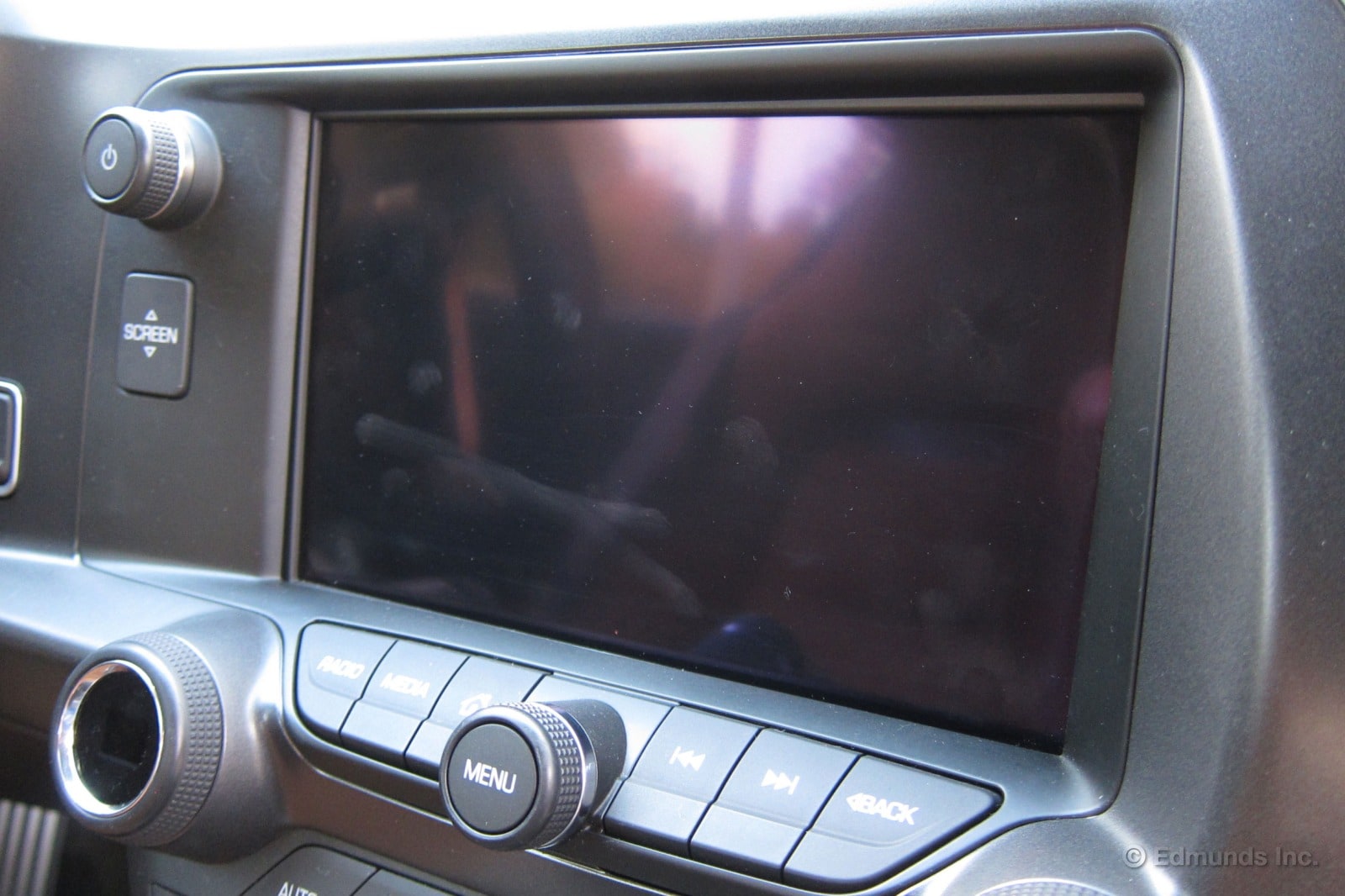
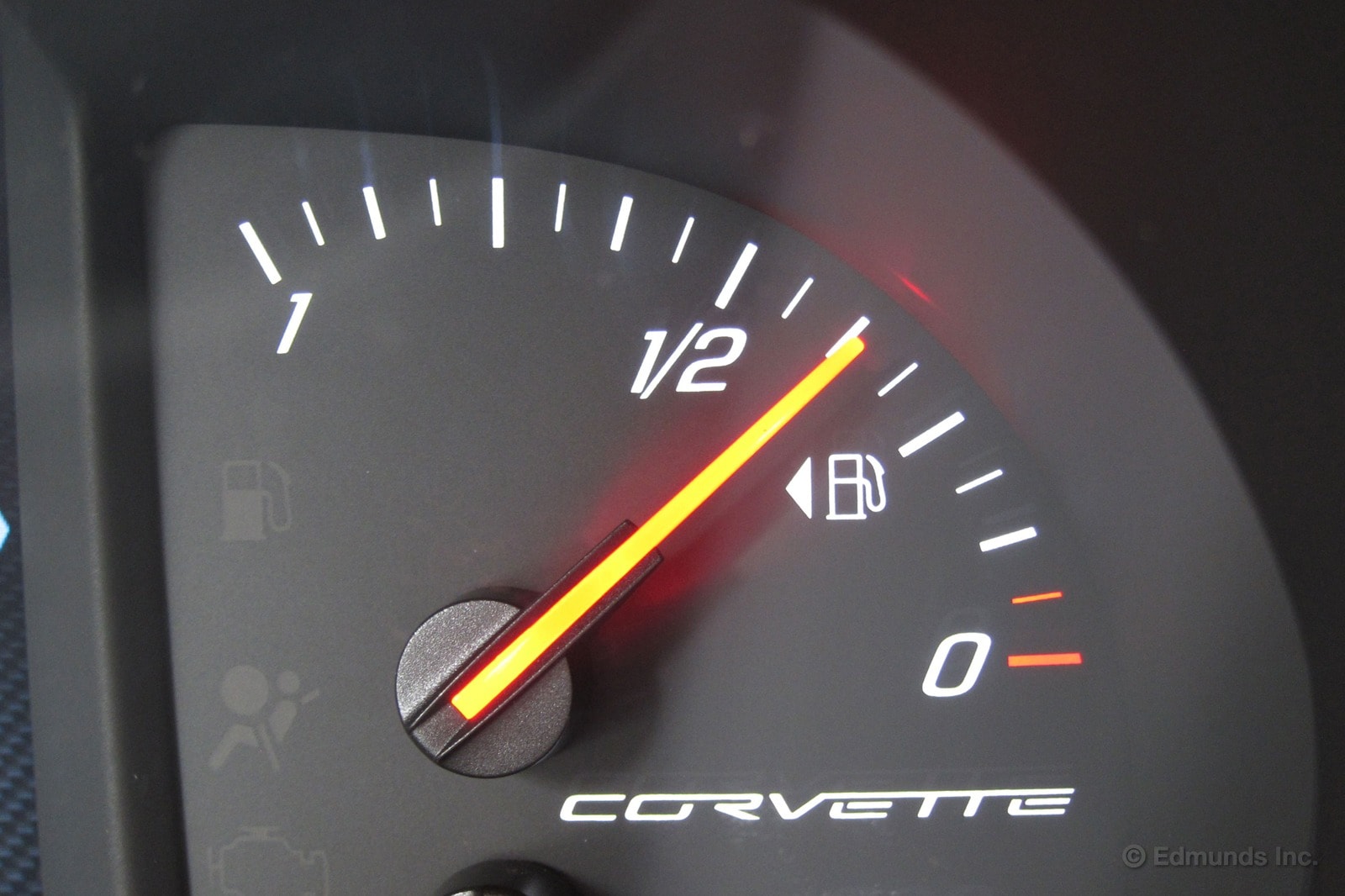
After its first full month in our fleet, the 2014 Chevy Corvette Stingray is averaging 19.9 mpg which is 1.1 mpg below the EPA's combined estimate for the car. We put almost 2,200 miles on the Corvette last month with several road trips.
Its best (30.8 mpg) and worst tanks (11.8 mpg) came in the hands of Mike Magrath, who somehow managed to best the extremes of the Niebuhr/Frio Abusio Twins. Averaging below 12 mpg on the street is no easy task, but I think I can manage.
Then we'll need new tires.
Worst Fill MPG: 11.8
Best Fill MPG: 30.8
Average Lifetime MPG: 19.9
EPA MPG Rating: Combined 21 (17 City/29 Highway)
Best Range: 464.8 miles
Current Odometer: 5,751 miles

We picked up our long-term 2014 Chevrolet Corvette Stingray at the factory in Bowling Green, Kentucky, and after Kurt and Dan drove it home, it had 1,200 miles on the odometer. The Corvette has been in our garage for four short weeks, and the odometer now reads 5,000 miles.
In that time, the Stingray's only issue has been a flat tire. It isn't due for its first service for another 2,500 miles.
The Vette is simply fantastic so there's no doubt in my mind that we can keep up this breakneck pace of 111.76 miles a day. And if we do, my fancy calculator app also tells me that our 2014 Corvette Stingray will leave our fleet with over 40,000 miles on it. Looks like it's going to be an eventful year.
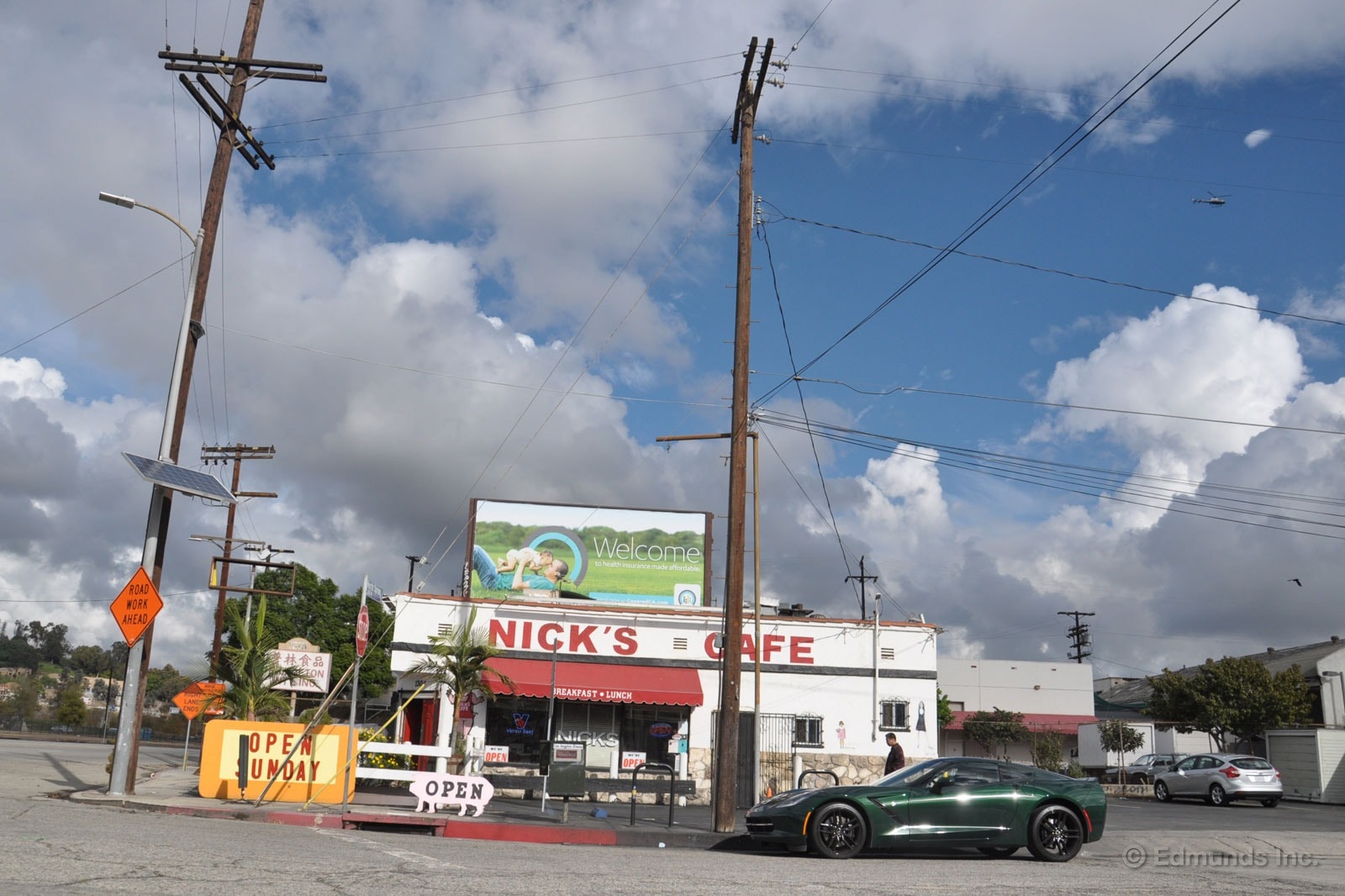
I just spent a week driving our 2014 Chevrolet Corvette Stingray around greater Los Angeles. This was my first time in any C7, and the experience has forced me to confront my prejudices against the Corvette.
I thought I knew what the Corvette was all about: Scary fast (at least in Z06 form), kind of comfy, but I'd never own one. I never liked how the C5 and C6 cars rode, nor the driving position in these cars, nor how their interiors felt like they'd disintegrate after 50,000 miles.
But our C7 Corvette Stingray feels so different from these cars.
To start, it has a fantastic ride. It's still very compliant for a sports car. But it feels stout and composed over all the ruts and seams on our local freeways. It feels as good as our long-term Porsche 911, maybe better.
I genuinely like sitting in this Corvette. No, the driver seat still isn't perfect, but it puts you in the right position to steer, shift, heel-and-toe downshift, whatever, and that's all you need. From there, the car's agreeable throttle response and quick steering take over, and you just get wrapped in what you're doing: enjoying the drive.
As I was heading back from the car wash on my last morning with our Vette, a driver in a current-generation BMW 650i convertible gave our Lime Rock Green test car a long look. As I looked over at the white BMW, I felt sorry for the guy. See, I'd never spend my own money on a 6 Series, but I'd totally spend it on a 2014 Corvette.
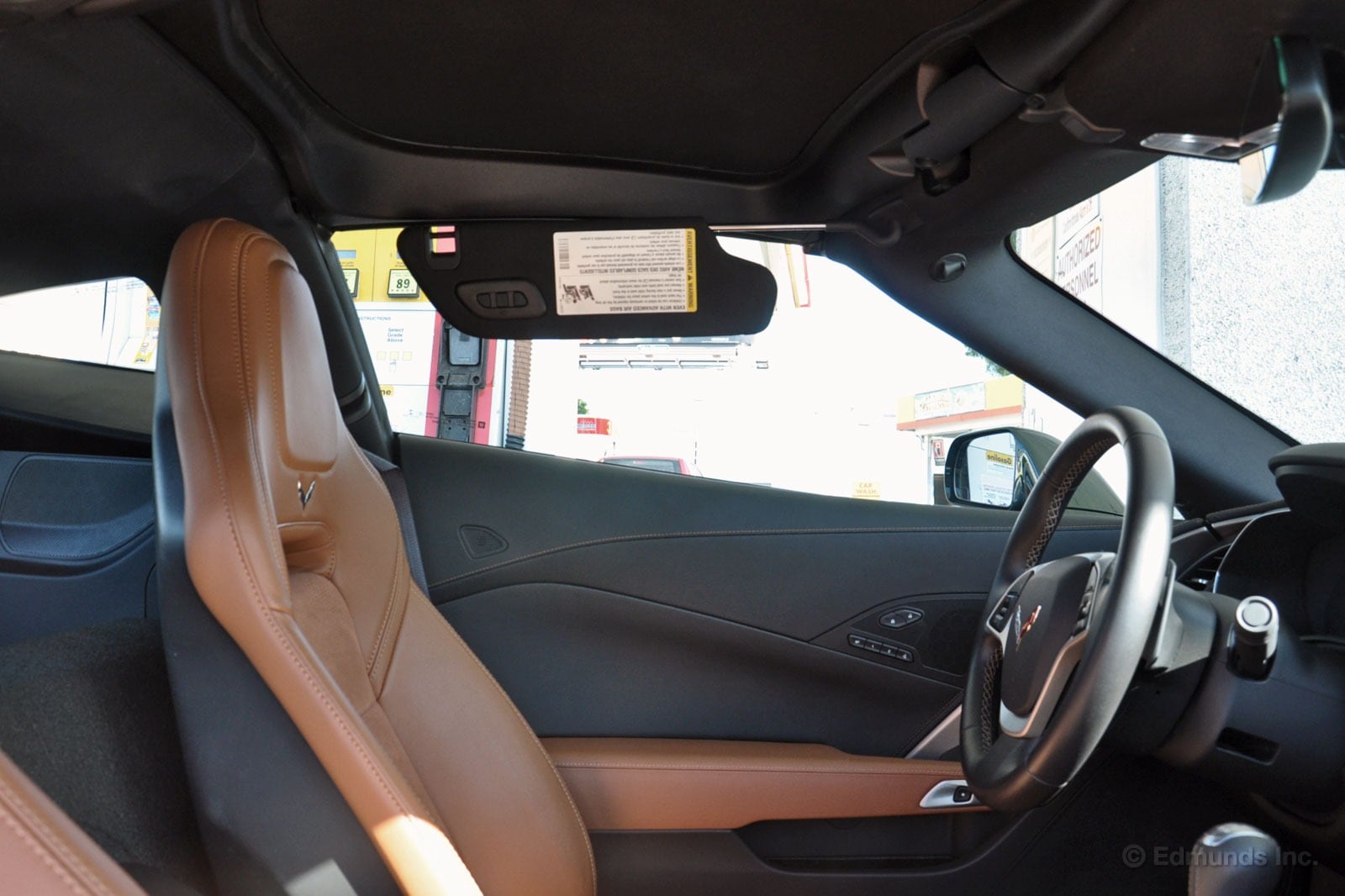
This is such a small thing, but to me, it speaks to the attention to detail on our long-term 2014 Chevrolet Corvette Stingray. Our Corvette has extendable sun visors.
And when the late morning sun beats down on the driver-side window on my commute to work, I deploy the visor and it does a fine job of keeping the sun off my face. The fact that someone at Chevrolet had the foresight to address this potential minor discomfort makes me like the car more.
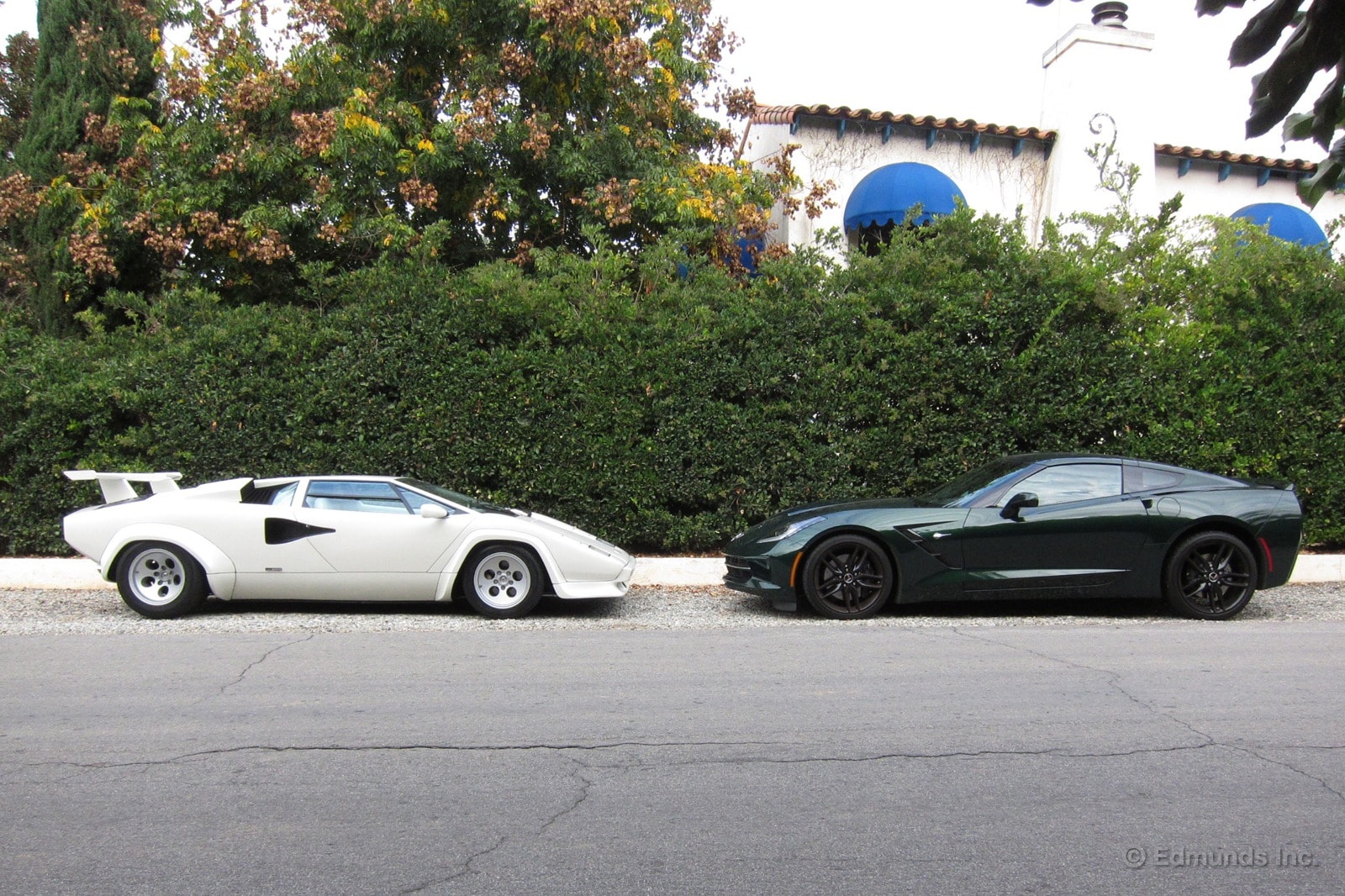
A few weeks ago I had the privilege of driving a friend's Lamborghini Countach back from a local car show. Spent maybe 20 miles behind the wheel of the iconic supercar, which, in its day, was a much bigger deal than any Corvette has ever been.
It was epic. But not for the reasons you might think.
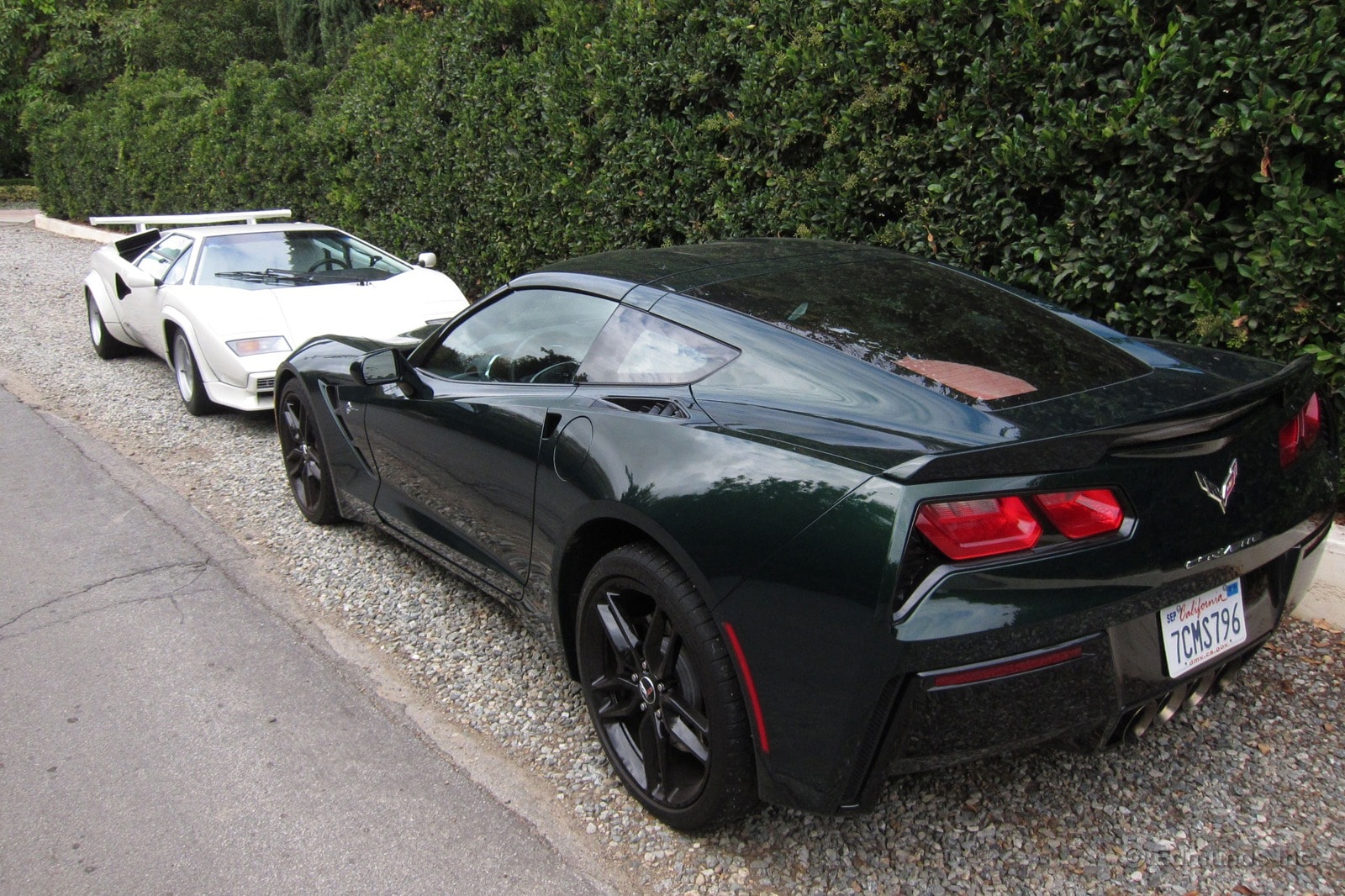
Though I'm glad to have had the experience, it was nerve wracking. Most cars from the '80s aren't great drivers and the Countach is no exception. This carbureted LP5000 is powerful enough to be quick, but there's little control. No part of me wanted to corner the car aggressively. With 225s up front and 345s out back it's a desperate understeerer — or so I'm told. Its clutch is heavy, its transmission doesn't shift into second until it's fully warmed up, and its brakes couldn't stop a car weighing 1,000 pounds less. Visibility is utterly hopeless.
Probably the best part of the experience was the sound. The great Hal Needham knew this. Twice, even.
The mid-1980s LP5000 is a car that's come full circle for many enthusiasts, myself included. I embraced it in childhood as the poster car it deserved to be, went through a period of hating its brazen flares, wing and doors, and have once again returned to loving it unconditionally. I mean, really, just look at the thing.
It is hugely, achingly, gratuitously tough looking. Nothing before or since even comes close.
And then, when it was all over and I had returned the Countach safely to its garage, I jumped in a genuinely fast car — a green one — and went home.
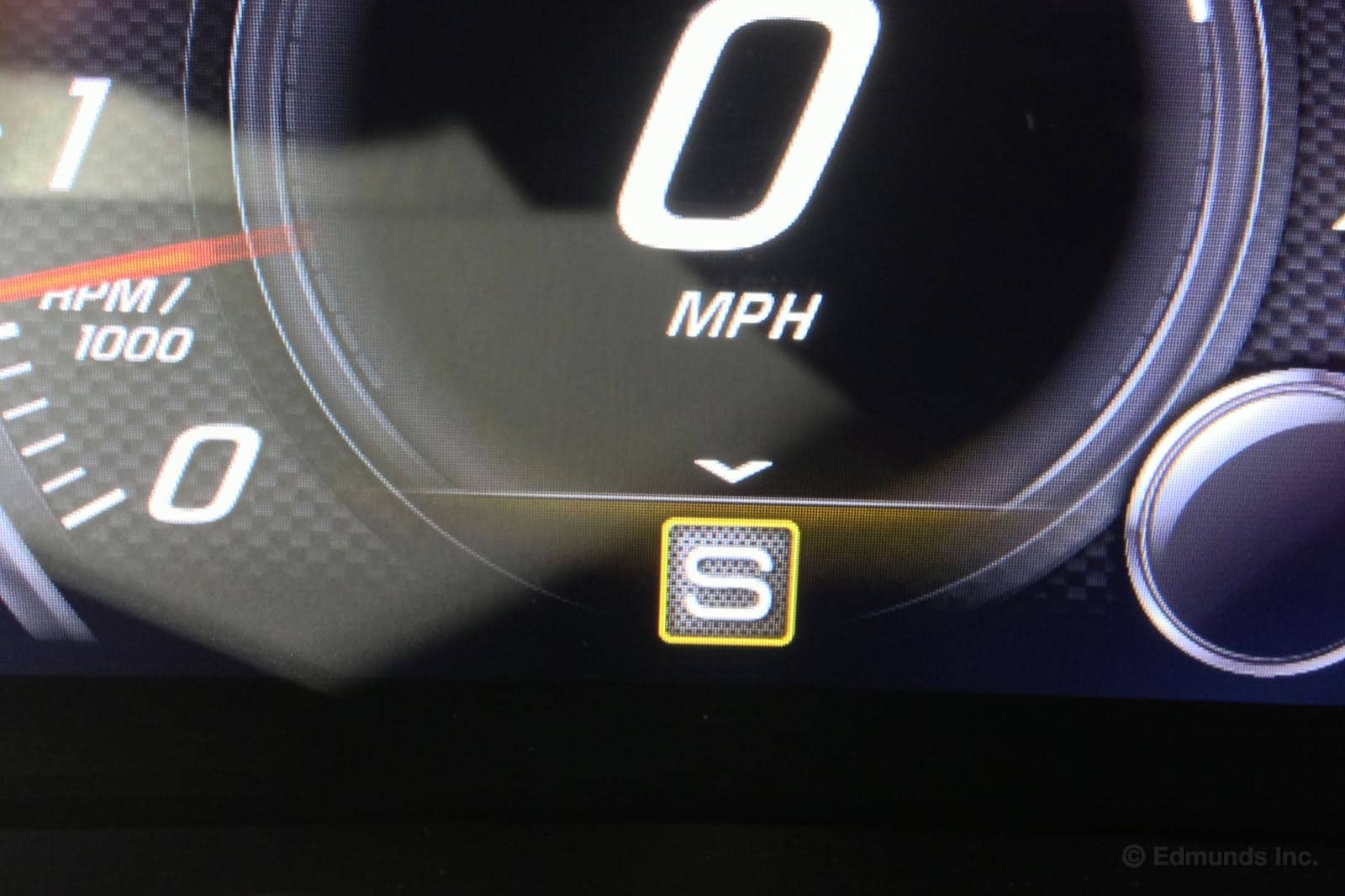
I've reached the conclusion that on the street there's no reason to use anything except Sport mode in our Stingray. It's the mode that provides the right balance of response, sound and comfort. I'll be leaving it in Sport.
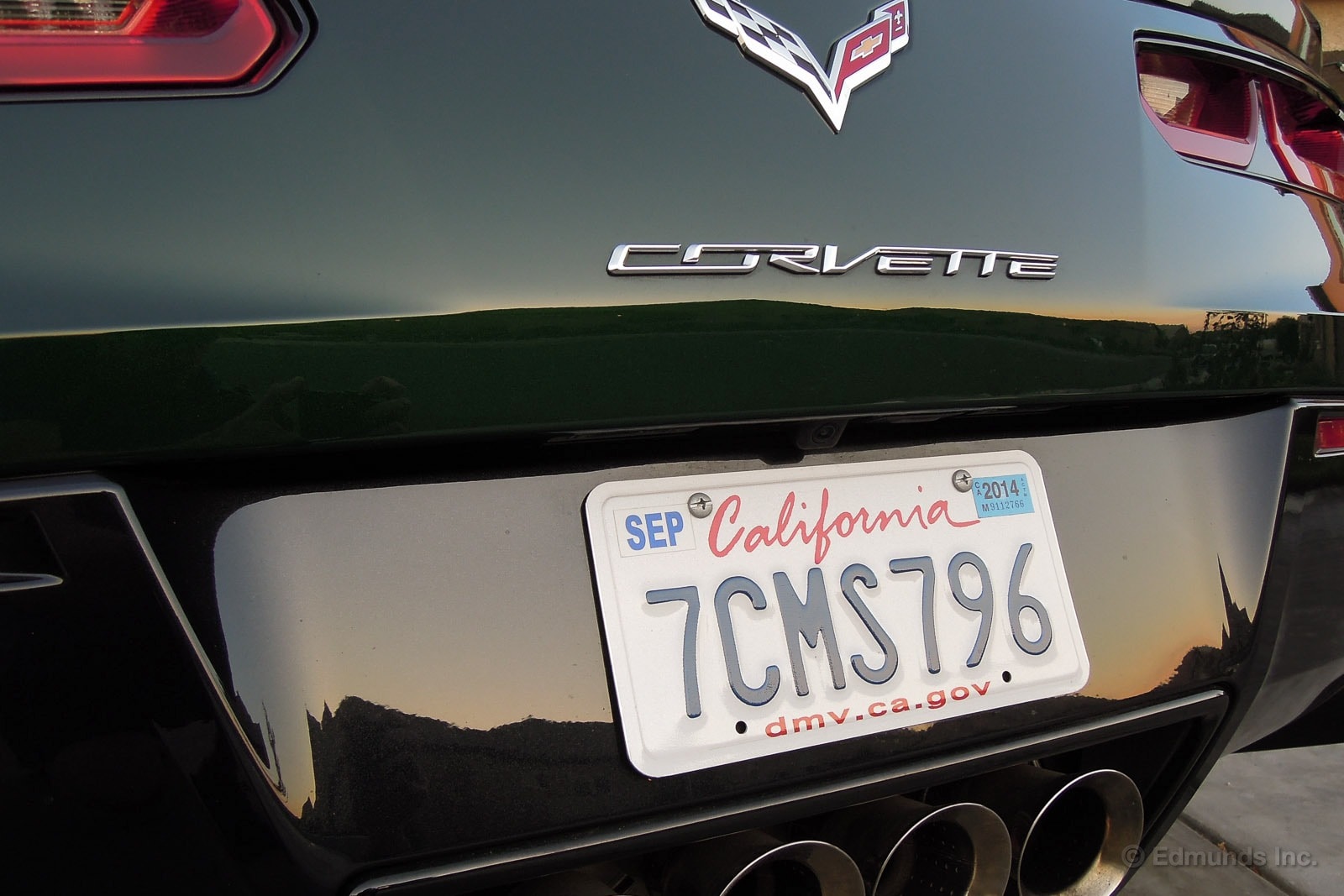
I was taking a break and sitting on my couch and watching TV on a recent Sunday. Between the NFL's Week 14 "Snow Fest" and news videos of icy roads and skidding cars, it seemed like a pretty unpleasant time to be out and about.
Well, if you lived in the Midwest or East Coast, that is. Meanwhile in Southern California, it was another ideal day to drive our 2014 Chevrolet Corvette Stingray.
If I owned our long-term Stingray, and I lived on the East Coast or Midwest, it would have been neatly tucked away and garaged during that weekend. Heck, I'm sure there are Corvette owners who just park their cars for the entire winter. If it was my daily driver, having a set of snow tires would be a requirement in my opinion.
But here in Southern California, you can drive a Corvette pretty much 365 days a year and not worry about weather. With 460 horsepower and newfound handling agility, the Stingray is one car that I'd want to drive as much as possible.
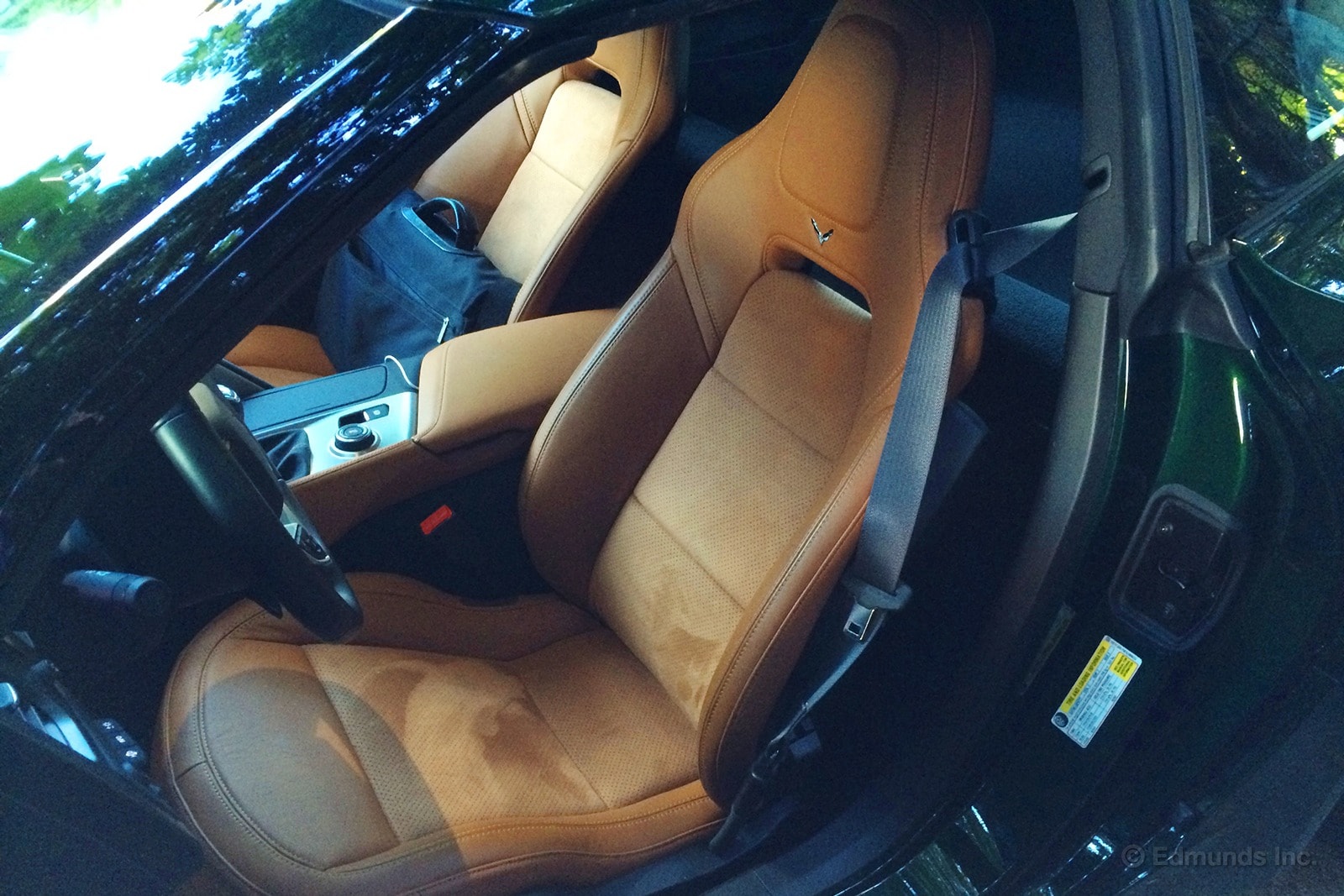
When I drive, I usually prefer to slam the seat down to the deck. This is especially true with sports cars. In our 2014 Chevy Corvette Stingray, though, I'm limited.
The driver seat in the Corvette only goes so far. I could stand another two inches of travel in seat height. Instead, I feel like I'm sitting far too tall. There's plenty of headroom, that's not the issue.
For my tastes, I feel like I'm seeing too much of the hood and the gauges and steering wheel seem like they're angled too low. As a result, I don't feel like I'm hunkered down in the cabin and maybe even just a bit disconnected from the road.
I also found the side bolsters a bit too aggressive in the shoulder area. It's not as exaggerated as the Recaros that were in our Focus ST, but they do force my shoulders into a slight slouch.
Otherwise, the car is a hoot to drive, and that's what really matters.

Way back in the day, there was the original Green Machine, the drifting, cool-kid version of the Big Wheel tricycle. (There's a new version of the Green Machine out, incidentally.) But for slightly more expensive grins, I think I'll just go out and drive our Lime Rock Green Corvette Stingray.
It would be hard for me to overstate how ridiculously fun the 2014 Stingray is to drive. Gonzo power. Talladega exhaust note. Special Forces styling. Reggie Bush agility. A base Corvette has never been so fun, or so without fault.
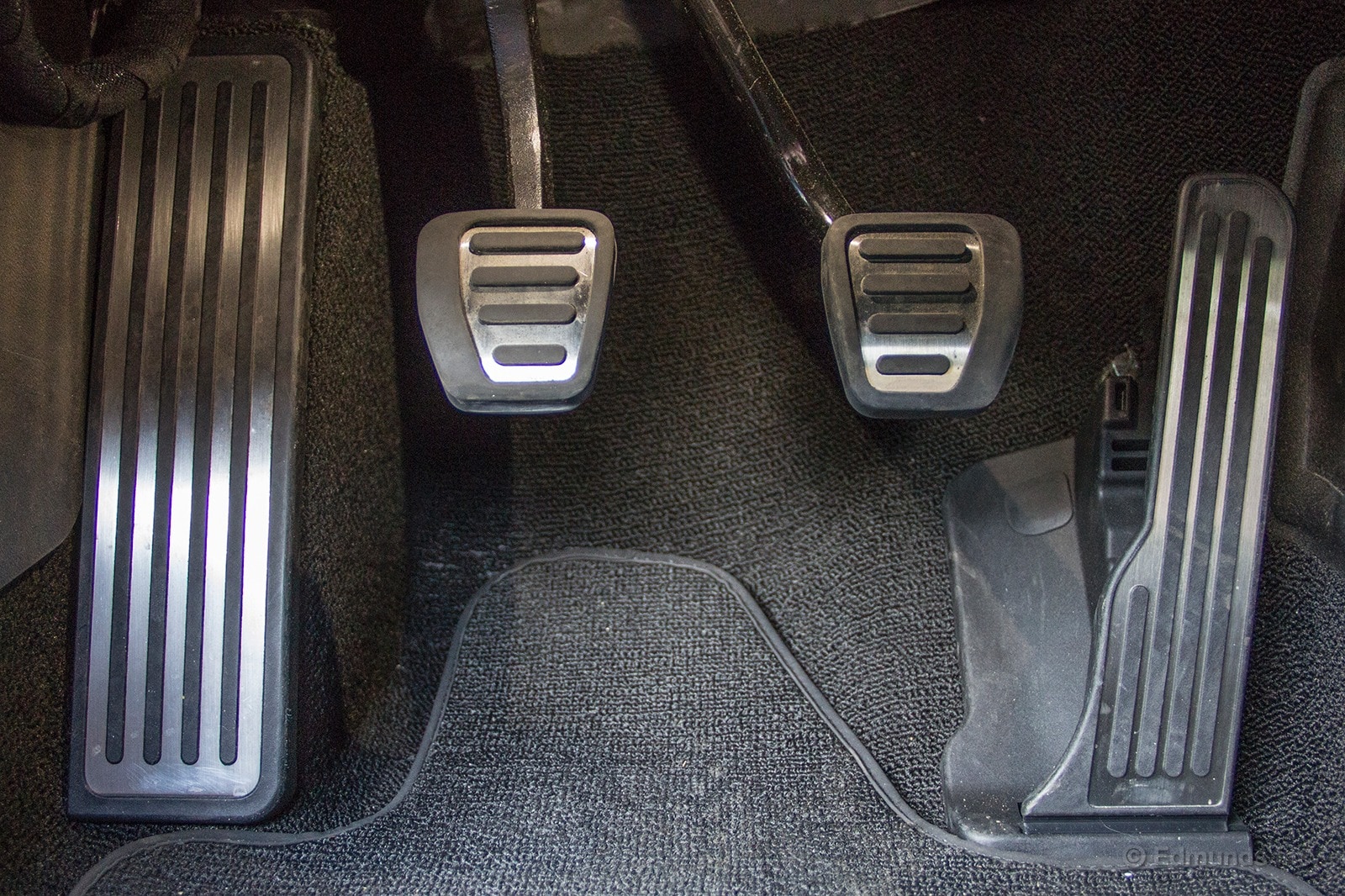
So the rev-matched downshift feature in our long-term 2014 Chevrolet Corvette Stingray isn't very quick and the steering-wheel-mounted paddle shifters are intrusive. Luckily, the pedal configuration is perfect.
The brake and throttle are placed extremely well with just enough lateral distance between them. The travel of the brake pedal is relatively short, too, so that the relative height of the gas pedal is about halfway down that travel.
These two factors combined allow for practically effortless heel-and-toe downshifting. Also, the edges of the pedals are lined with a rubber contact patch rather than metal and this keeps your foot from slipping during high-speed driving maneuvers. The Corvette engineers got this part right.

It's possible you've read about our 2014 Corvette Stingray's rev-matching feature which is activated via paddles like this on both sides of the steering wheel. It's also possible that what you read is wrong. Or at least partially wrong.
Specifically, the idea that these paddles are a cost-cutting effort on GM's part. Truth is, that couldn't be further from the truth.
I'll be honest: I like the paddles. I find the feature useful, I like the placement of the paddles and I prefer this method of activation over a separate dedicated button.
Regardless, it's the idea that these paddles are cost cutters that I'd like to address here. After all, those same paddles are used to actuate up- and downshifts on automatic-equipped cars so it's not a stretch to think that their use on manual transmission cars to activate or disable the rev-matching feature is a cheap, lazy move.
Not long ago I spent an a few hours behind the wheel of a C7 Convertible with the car's chief engineer, Tadge Juechter, in the passenger seat. So I pressed the obvious question: why his team chose to use the paddles to activate rev matching. His answer was as coherent as it was thorough.
There were four options corresponding to four different cost levels, Juechter explained. The first was free: integrating the rev-matching activation into the "vehicle setup" menu on the car's touchscreen display. This was a matter of programming and would have cost virtually nothing. It also would have left users no way to quickly enable or disable rev matching so it was ruled out immediately.
The second was a dedicated button somewhere else in the interior, which is an option Nissan uses on the 370Z. This, of course, would have required drivers to remove their hands from the wheel. Some people would like it, some wouldn't.
Third, they could have used one paddle to turn the feature on and off. "Then the question becomes which side?" says Juechter. "It made the most sense to use both paddles." And that's the option they chose. It's also the most costly choice, about $22 per car, according to Juechter.
"That doesn't sound like much," he says "but those are the most expensive switches in the interior and we need to be as cost effective as we can."
I believe they made the right choice. That's $22 well spent.
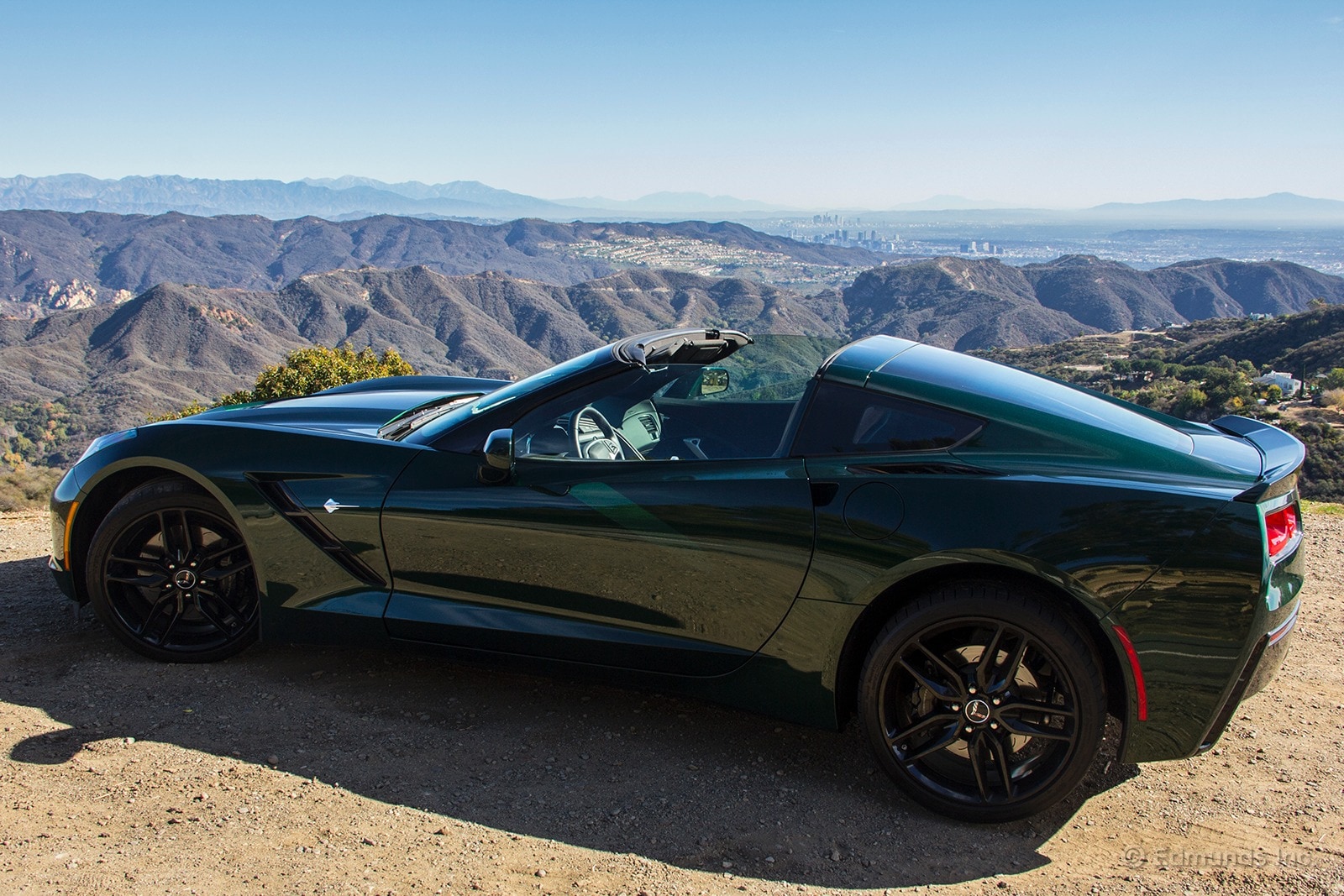
December weather along Pacific Coast Highway in Los Angeles forces my hand when it comes to removing the top on our long-term 2014 Corvette Stingray. Hard top removal is easy, but at freeway speeds (65 mph and above), the vibrating wind over the top of the Corvette becomes harsh.
Once I got going on an open highway in our Vette, I couldn't hear anything my passenger said below shouting level. And even slouching down in the seat to escape the pulsing air flow didn't stop it from inducing a minor headache. Putting the windows down helped a bit, but any future freeway journeys will assuredly be done with the top snapped into place.
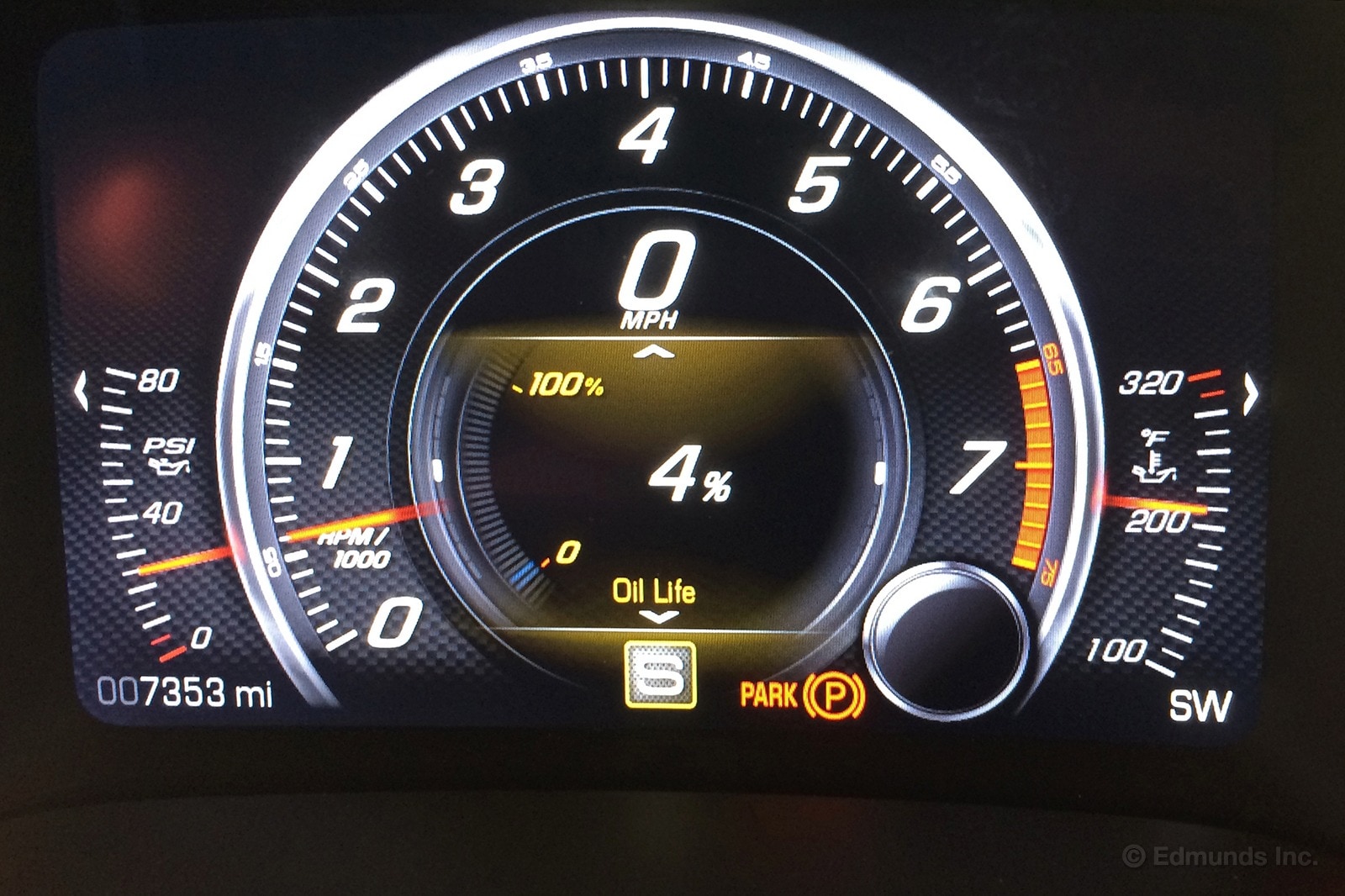
Some 7,300 miles-plus on the clock and our 2014 Chevy Corvette Stingray is trying to tell us something. Nothing groundbreaking, just an oil change. In those miles, the Corvette hasn't given us a lick of trouble.
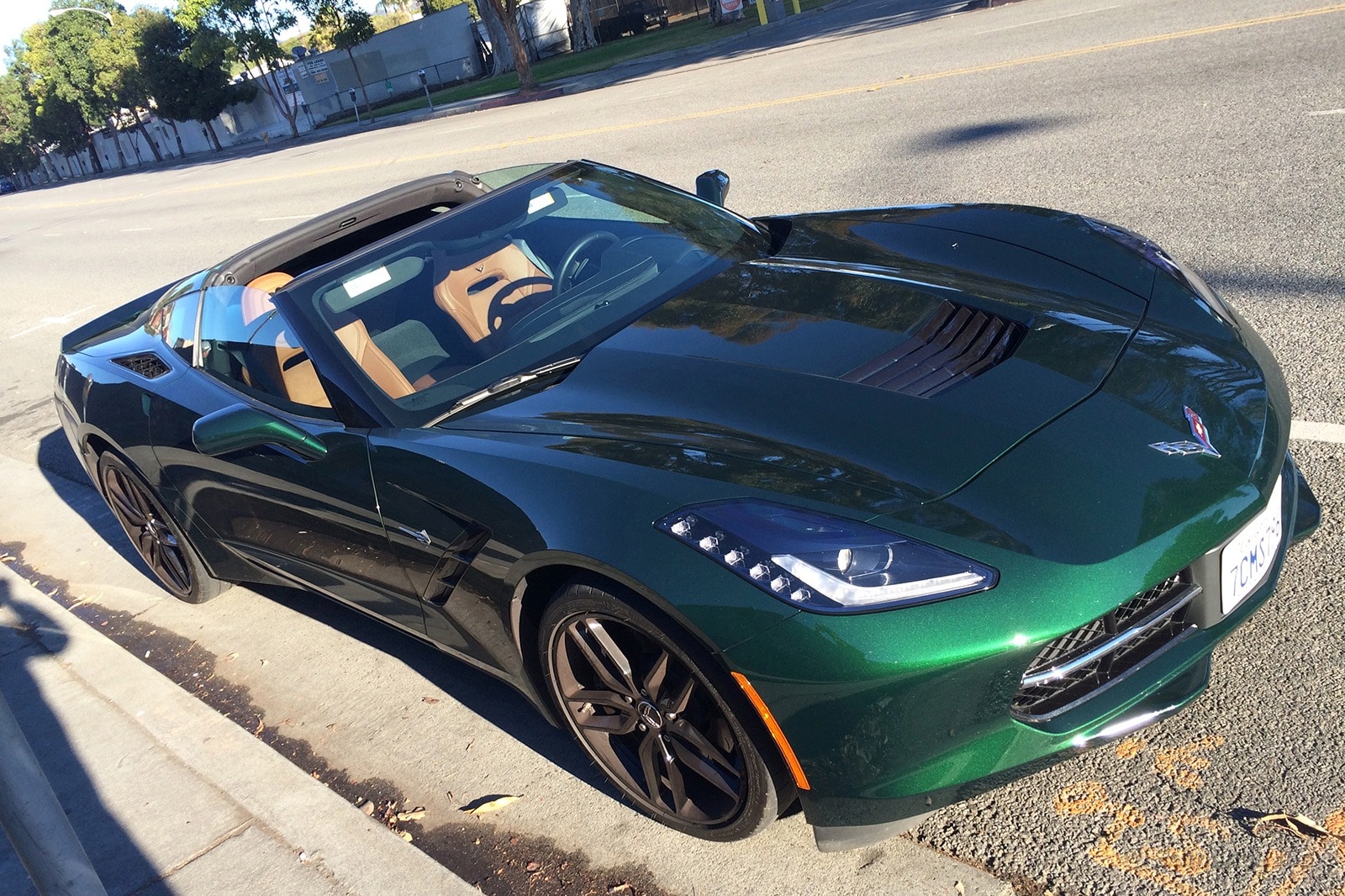
I love convertibles. The last four cars I've owned were all drop-tops, and yes, I lump targa tops in with true convertibles. The roof panel on our Stingray is one that I am particularly fond of.
Out of curiosity, I timed myself when removing and stowing the top and it took a mere 29 seconds. Unfastening two clips at the top of the windshield and one center latch at the rear is all it took to start the process. As another editor noted, the whole panel fits smartly in the trunk on clips that keep it secure in the trunk.
According to Josh's first drive of the convertible, it takes 20 seconds to drop the top. To me, that's a virtual dead heat. Sure, you can operate the top at speeds up to 20 mph, but you're sacrificing some maximum cargo space, too. The coupe can hold 15 cubic feet of stuff while the convertible drops to 10. Then there's the $5,000 premium for the convertible.
Personally, I'd prefer the coupe. Not just for the aforementioned reasons, but I also like the styling a little bit better with the sloping rear hatch.
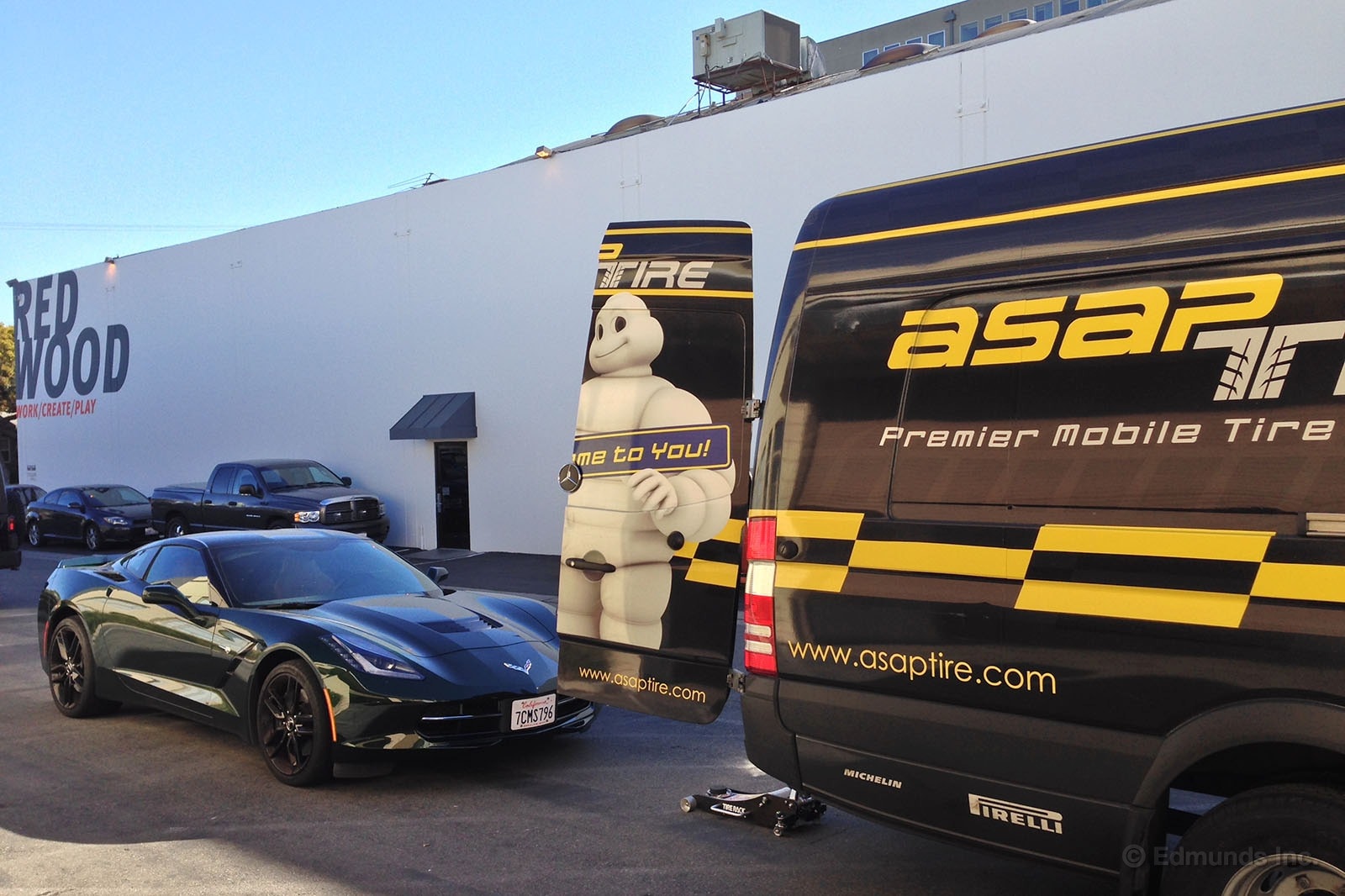
We like road trips. We're drivers. Give us a reason to go somewhere, and we'll find a reason to take a car instead of an airplane.
Today's reason: We want to know how well our 2014 Chevy Corvette Stingray handles the snow and bitter, bitter cold gripping the Midwest.
That's right, the 2014 Detroit Auto Show is just days away, and we called up the guys from ASAP Tire to install a set of Pirelli snow tires for the drive to Detroit and back.
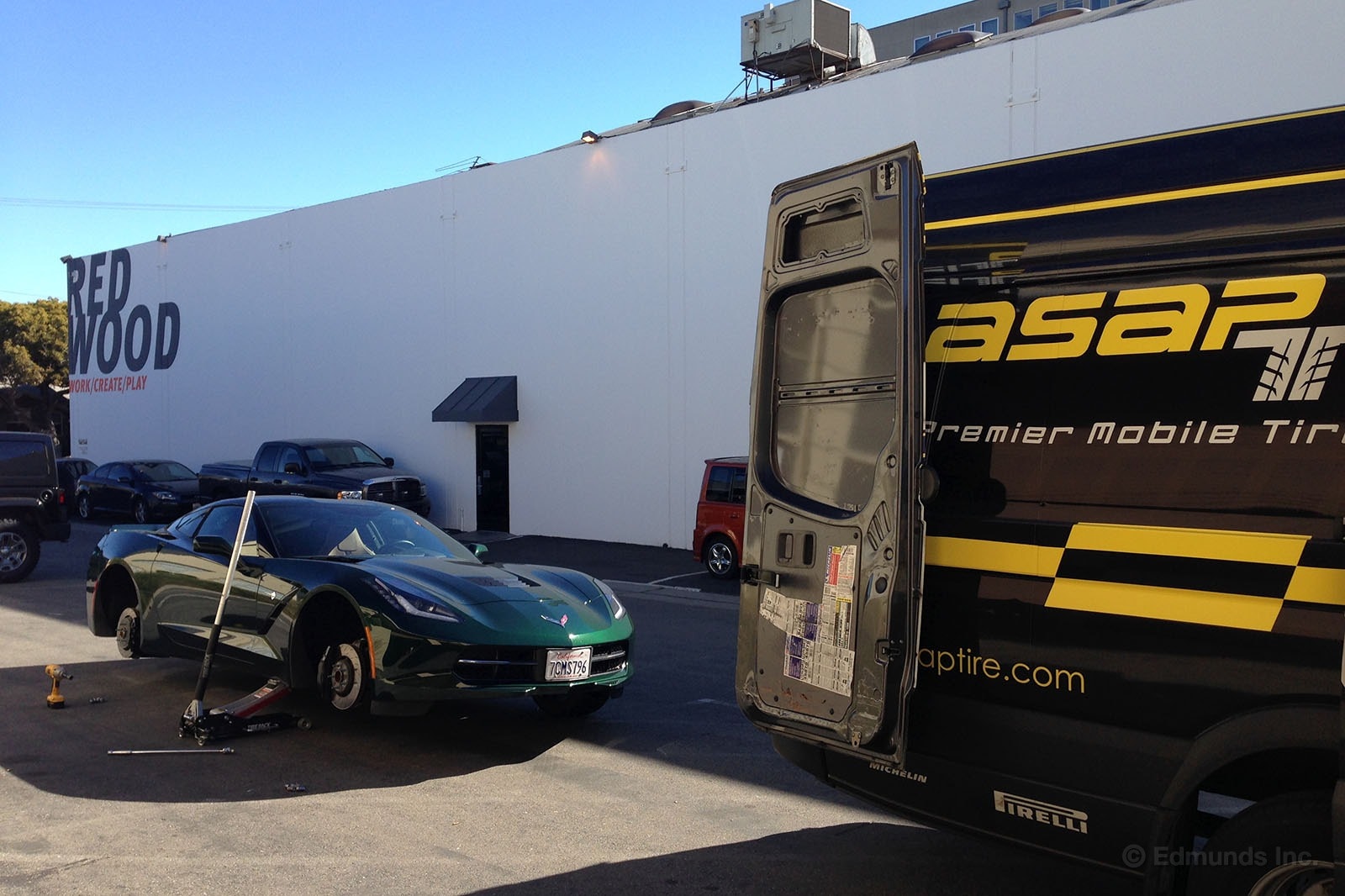
Our Corvette is wearing big shoes with different sized rims (19s up front, 20s in back) which normally would make tire-selection difficult. This time, however, we had the right tires (more or less) kicking around our shop.
As equipped, our 'Vette has 245/35R19 tires up front and 285/30R20s out back. We just happened to have a couple of sets of Pirelli SottoZero Serie II winter tires (from our 911 and SLS AMG respectively) measuring 235/40R19 and 295/30R20. We don't necessarily like going up by 10mm in the rear for winter driving, but for this road trip they'll work just fine.
The bigger concern was that these tires aren't run-flats while the OEM tires are. This problem was solved with a sealant and inflator kit and the knowledge we've got cell phones and OnStar.
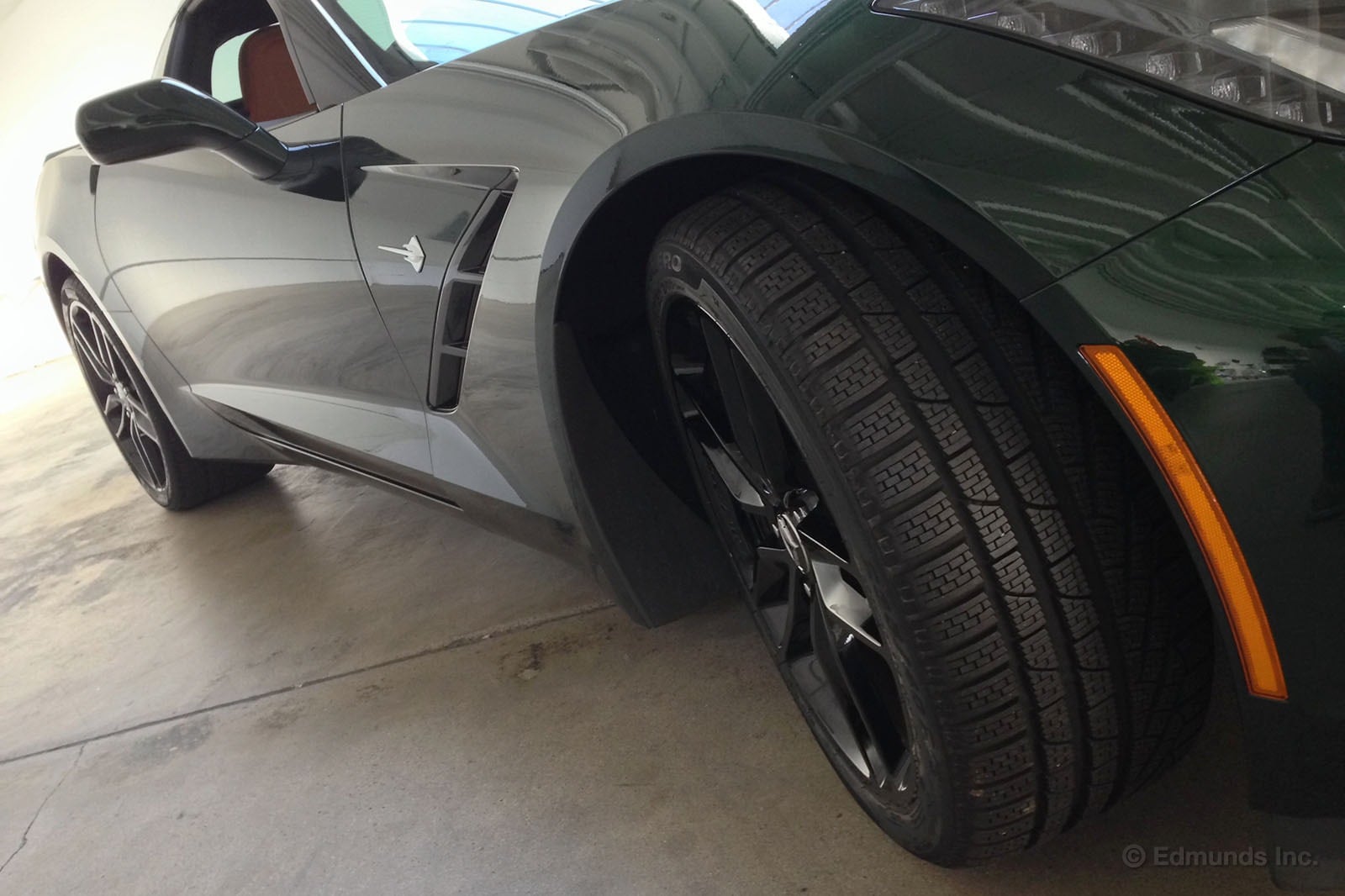
As for the installation, we chose to once again use ASAP Mobile Tire for the job. They came to us — no need to have a second car to haul wheels and tires to the tire shop — and only charged $140 for just about an hour's work of mounting and balancing the new rubber. When we took the SLS to have the winter tires mounted we were charged $130. $10 seems well worth it for that type of service.
Initial feedback on the snows in SoCal weather: Loud. Surprisingly grippy. Better ride than stock. Speedometer still accurate.
Scott leaves Thursday. I drive it back. Wish us luck.
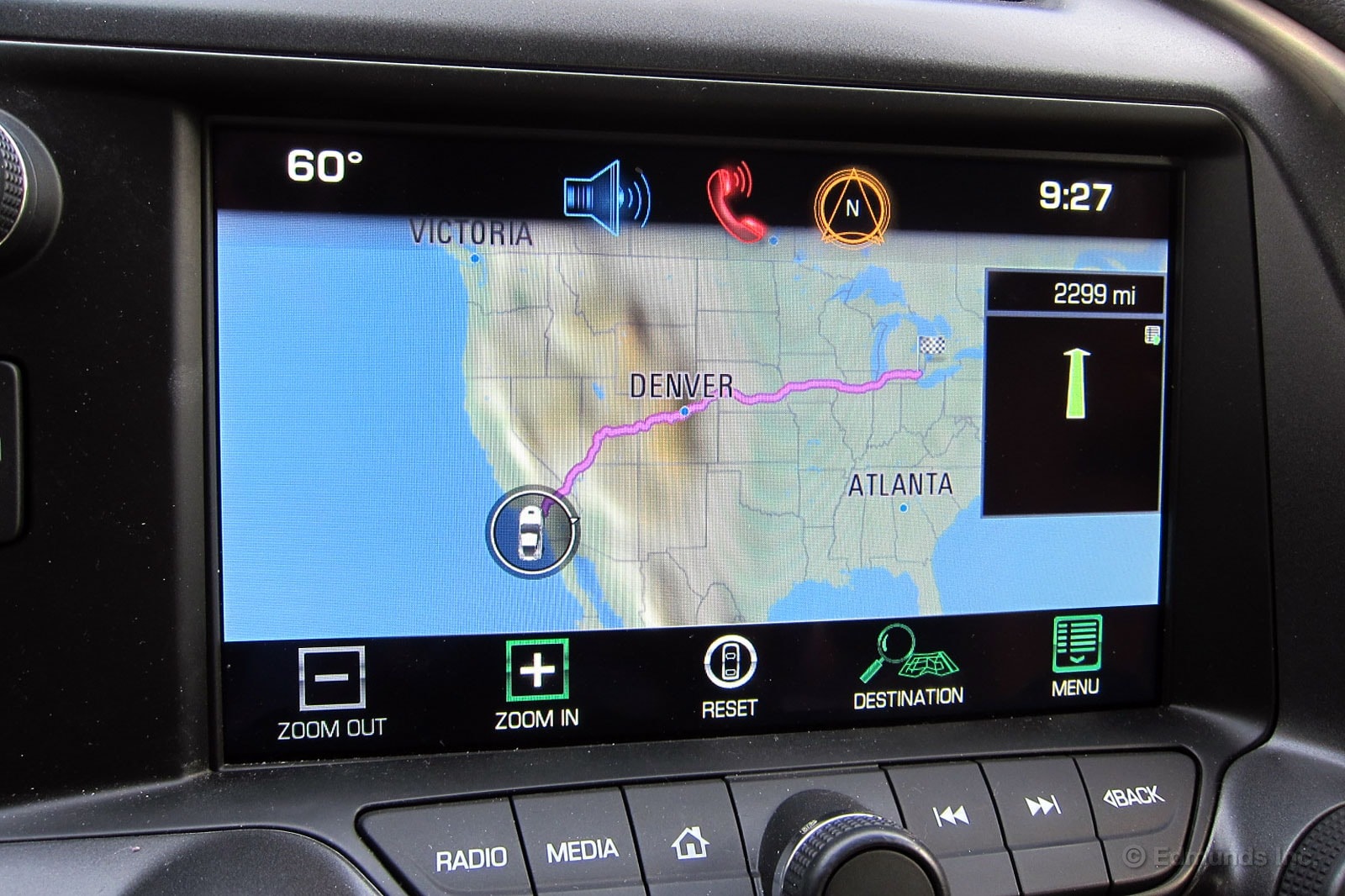
With the Detroit auto show just days away, I've decided to drive our long-term 2014 Chevy Corvette Stingray from Santa Monica all the way to Motown.
Crazy I know. It's snowing out there and a 2,500-mile road trip in a 460-horsepower supercar this time of year just ain't right.
But I have good reason. First of all, you should know that I'm a Vette lover. Our long-term 2002 Z06 (C5) was a favorite of mine, and I would sell my toes to own a ZR1 (C6).
And yet, I'm the only person in the entire world, it would seem, that is not head over heels in love with the new 2014 Corvette. Somehow the car just leaves me cold. And my list of gripes is long, from its odd (too high) seating position, to its slow throttle response, to its pedestrian-looking gauge cluster, to its ugly wheels and taillights, to the strange feel of its electric steering, to its...I could go on.
I'm an idiot I know. Everyone on Earth is in love with this car but me. And that's why I've decided to road trip it.
I want to bond with this car. And to do that I'm going to drive it 2,500 miles across America. Just me. No passenger.
When I arrive in Detroit sometime Sunday I'll either love our Lime Rock Green machine or I'll be very happy to hand its key over to Mike Magrath for the drive back to California.
I'm already on the road, so follow along on Twitter at @RealScottOldham.
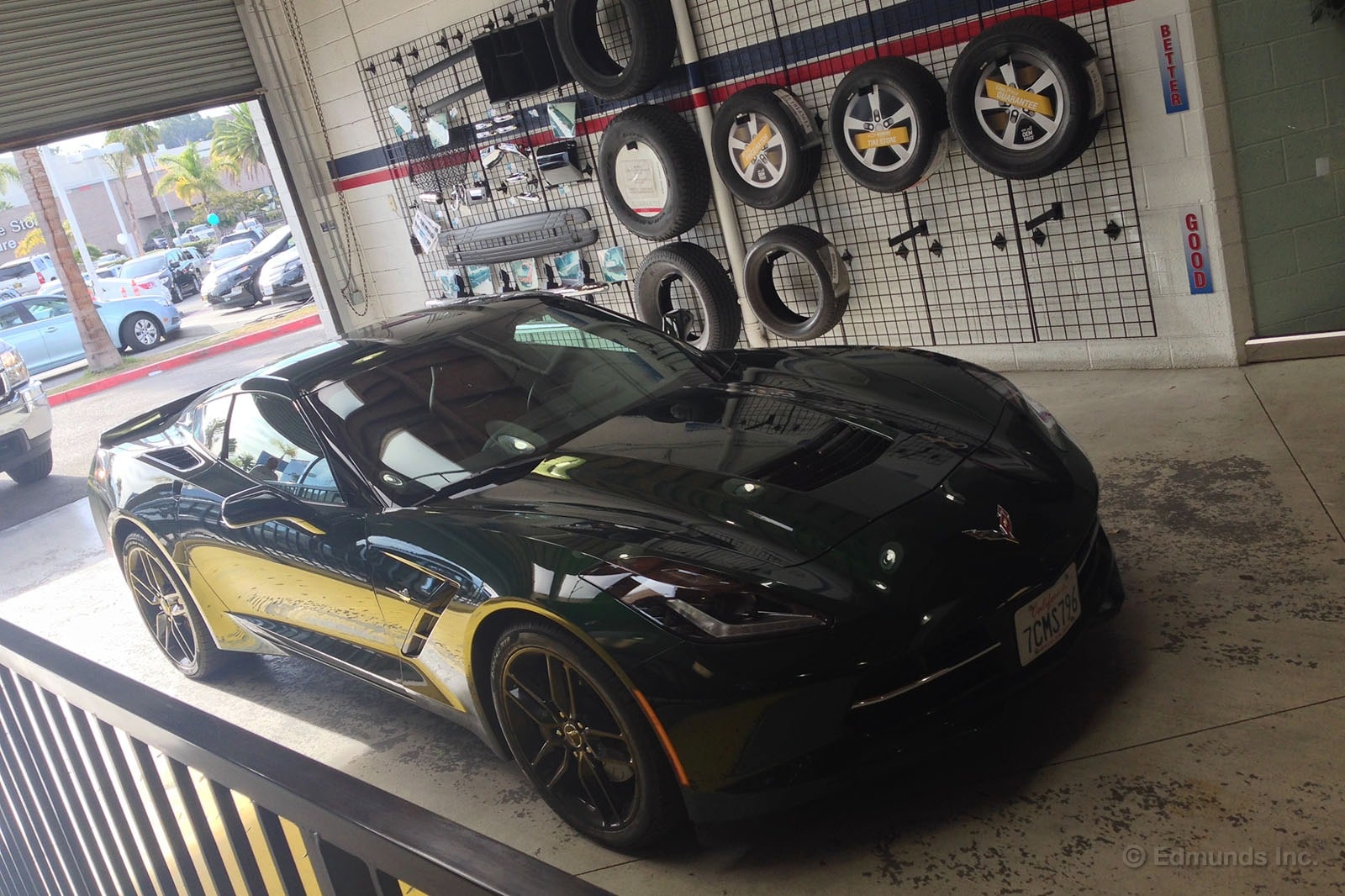
A few days ago, our 2014 Chevy Corvette Stingray called for its first oil-change, something we were expecting right around the 7,500-mile mark.
We called Bunnin Chevrolet in Culver City, our closest Chevy dealer, and made an appointment for the following day. We needed to get this done before our road trip. By the time the next day rolled around, the oil-life remaining had dipped to zero and we were pretty pleased with our timing.
There was no wait and, with the exception of the service advisor asking if it was a V8 and then confirming that we did, in fact, want Mobil 1 (the recommended oil for hard-driving), everything went smoothly. They also told us about a service bulletin (#13384) that indicated some cars may have low differential fluid levels which could lead to axle noise/overheating. Ours was checked, determined to be slightly low and topped off.
The service took about 2 hours, including a wash, and cost us nothing thanks to Chevy's 2 years of free maintenance on the Stingray.
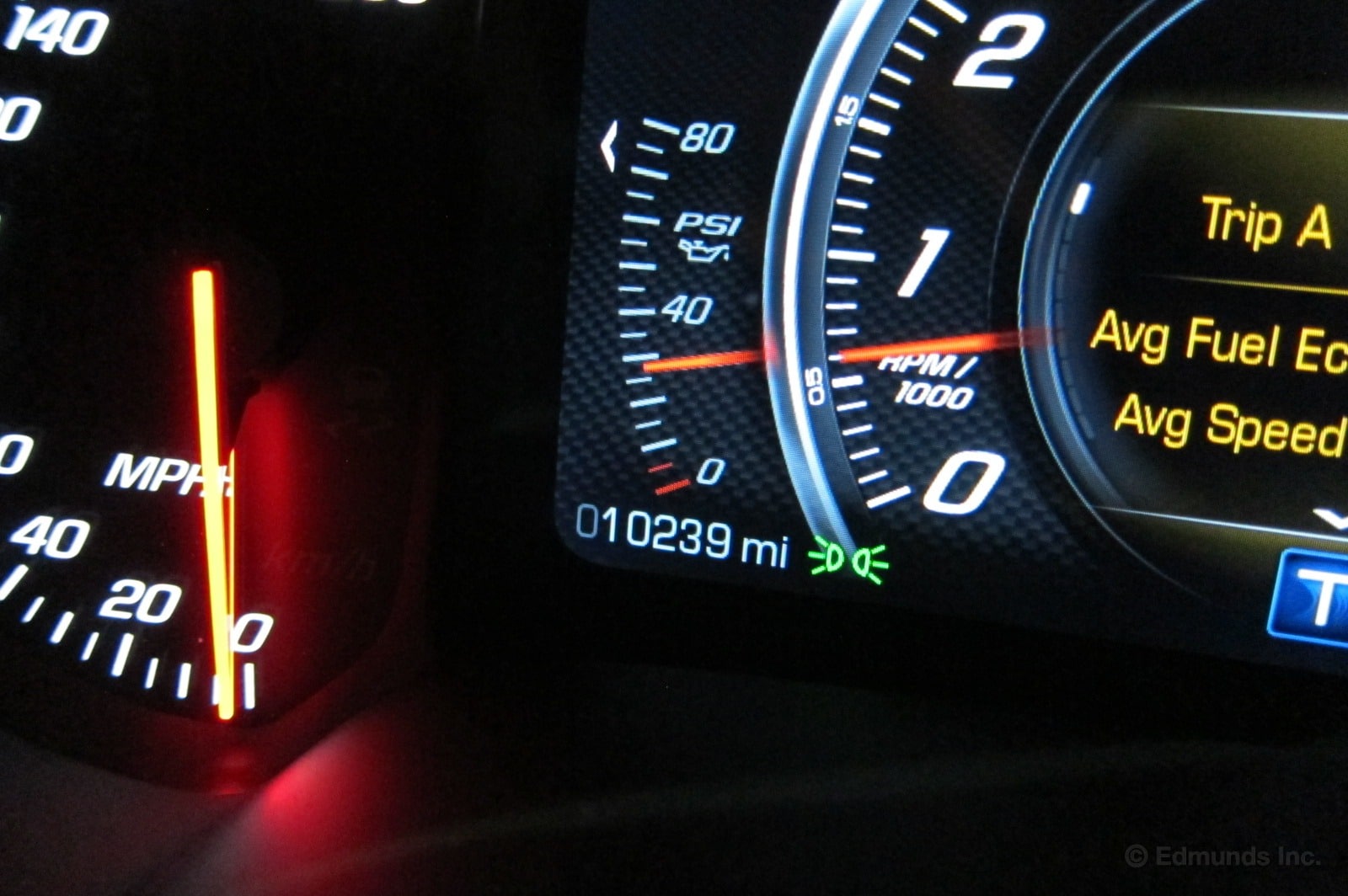
Our 2014 Chevy Corvette Stingray passed 10,000 miles while making its way to Detroit with editor in chief Scott Oldham. He sent me this picture for proof. We'll hear more about his trip when he gets back in town.
Seems fitting that a large chunk of this American icon's miles have been earned driving across the United States. As you'll recall Kurt Niebuhr and Dan Frio took delivery of our Lime Rock Green Vette in Bowling Green, Kentucky and drove it to our offices in Santa Monica, California.
Now Scott and Mike Magrath are splitting cross-country duties on winter tires.
Where should we go in the next 10,000 miles?
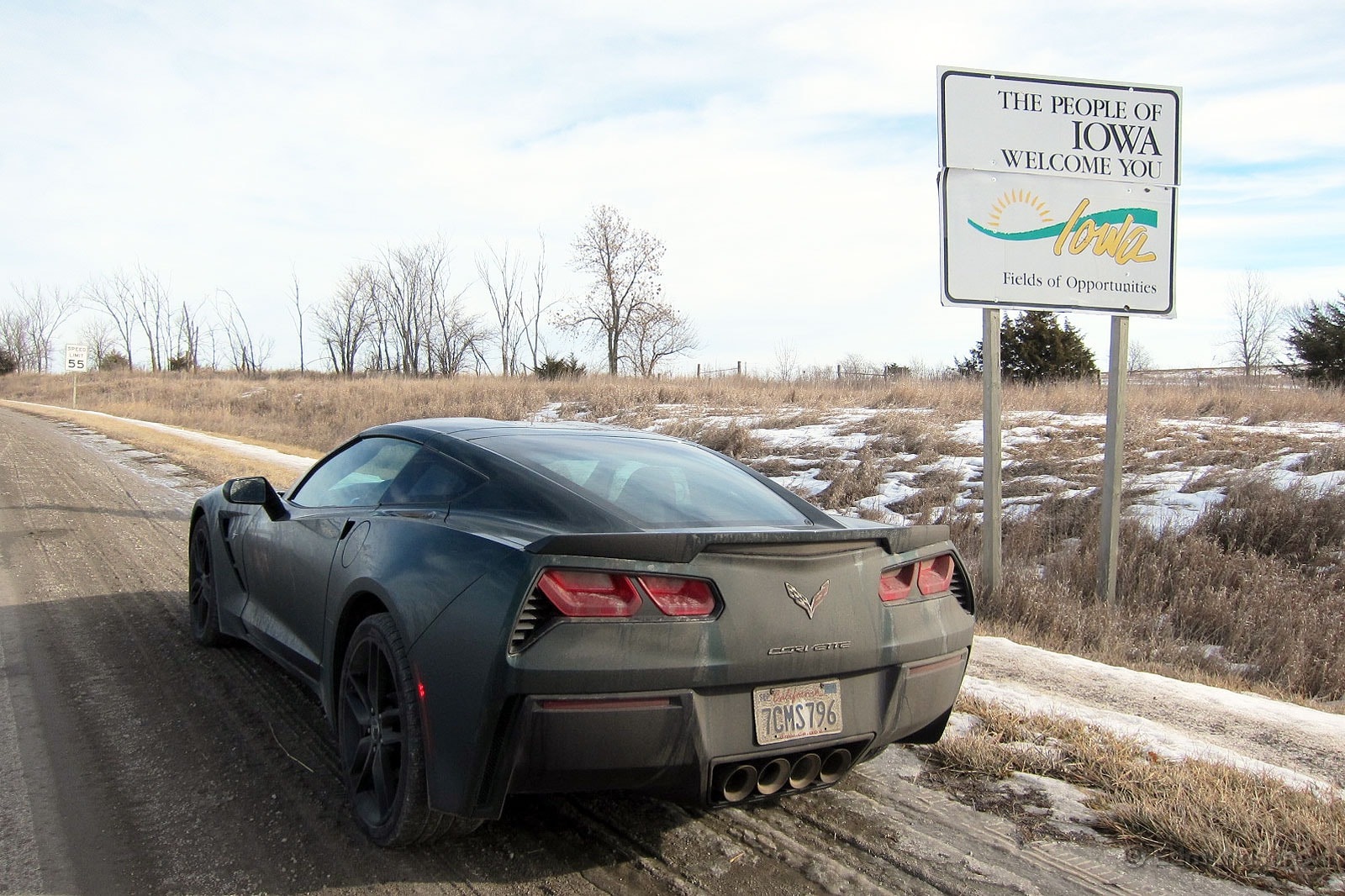
26.6 mpg over 2,486 miles on winter tires through a blizzard. Amazing. Our long-term 2014 Chevy Corvette Stingray continues to impress.
With the Detroit Auto Show looming, I decided to drive our Lime Rock Green Corvette from our Edmunds Santa Monica headquarters all the way to downtown Detroit. Just me. Solo. Left Thursday afternoon. Hit a blizzard in Colorado 24 hours later. And checked into my Motown motel Sunday night at 10:00 p.m.
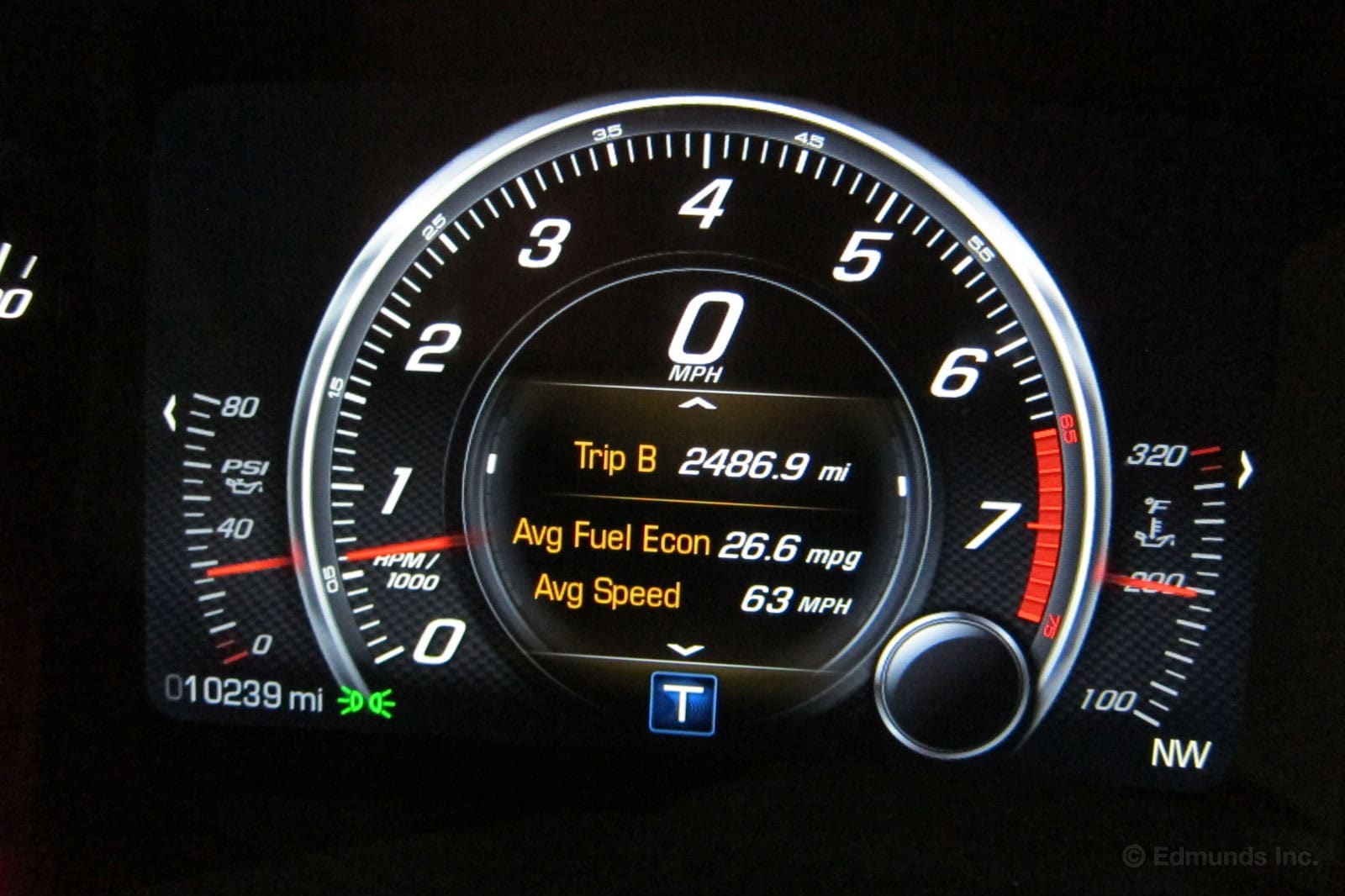
As you can see in the photo I averaged 63 mph.
You can also see the average miles per gallon figure, which was achieved on 91-octane fuel, and with judicious use of cruise control and seventh gear. I did drive all day Sunday from Kansas City to Detroit (about 750 miles) in Economy mode, which seamlessly deactivates four of the engine's eight cylinders when their performance is not needed. That day I averaged over 29 mpg. Like I said, amazing. I wish I had used that technology throughout the trip.
And then there's the Corvette's range. 450 miles on a tank is easy and 500+ is possible if you put in a little effort.
There's a reason the Corvette was named the North American Car of the Year at the Detroit Auto Show. Name another car as fast as this that can get mileage like that. Amazing.
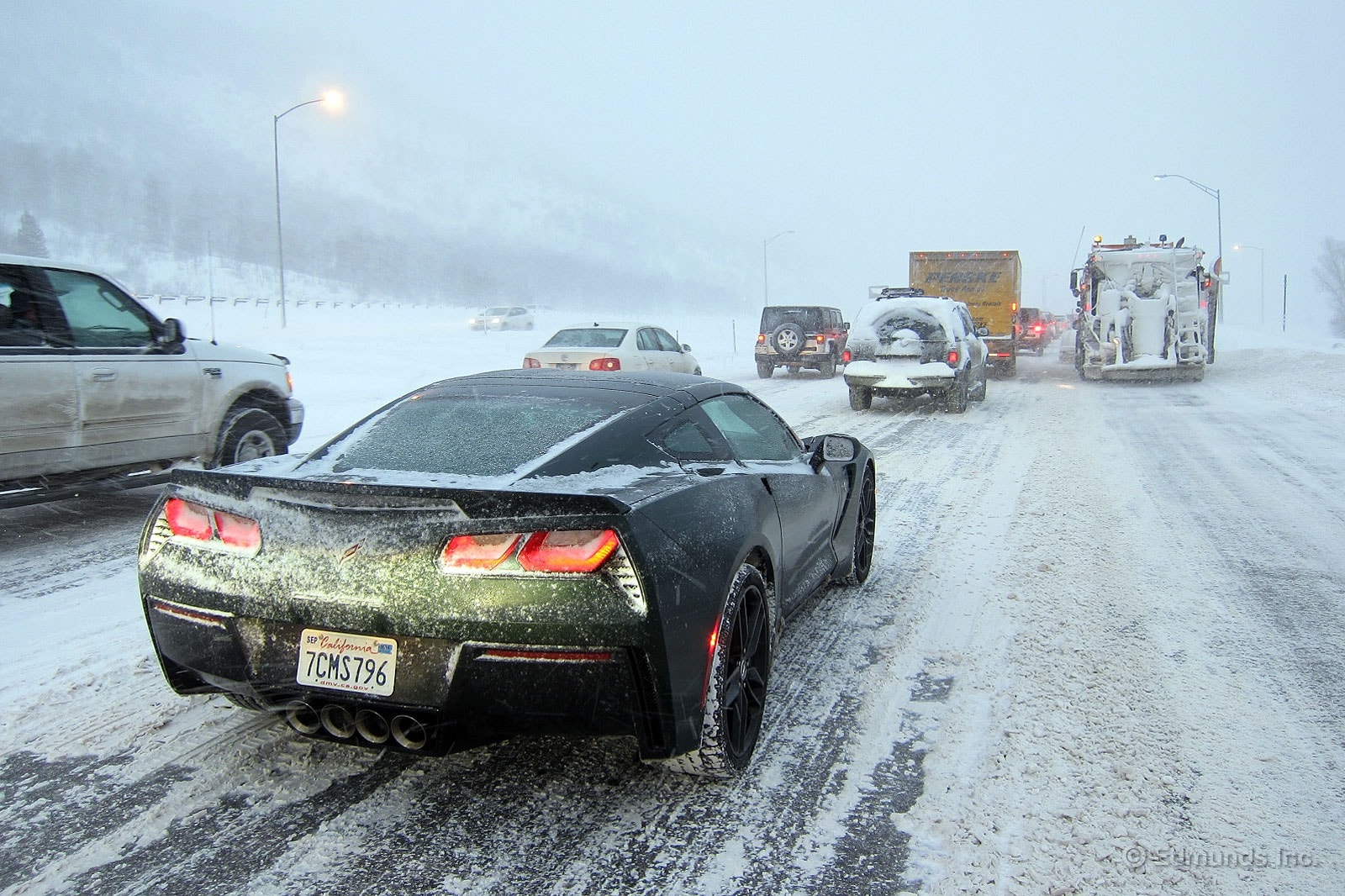
I called 911. I didn't know what else to do.
The nice man that answered my call said, "911, what is your emergency?" I said I was sorry to bother him, but my car is stuck in the snow and I'm essentially blocking Interstate 70 eastbound somewhere between Vail and Frisco.
He said, "OK, sir. You did the right thing calling us. We'll send out a tow truck as quickly as we can. Please stay in your vehicle. What color is your car?"
"Green," I said.
"And what kind of car is it?"
I paused. I didn't want to tell him. I knew he would think I'm an idiot for driving a Corvette through Colorado in January during a blizzard. "A Chevy," I said.
"What kind of Chevy, sir?"
I paused again. "A Corvette."
And with a snicker he said, "OK, sir. We'll be there as soon as we can."
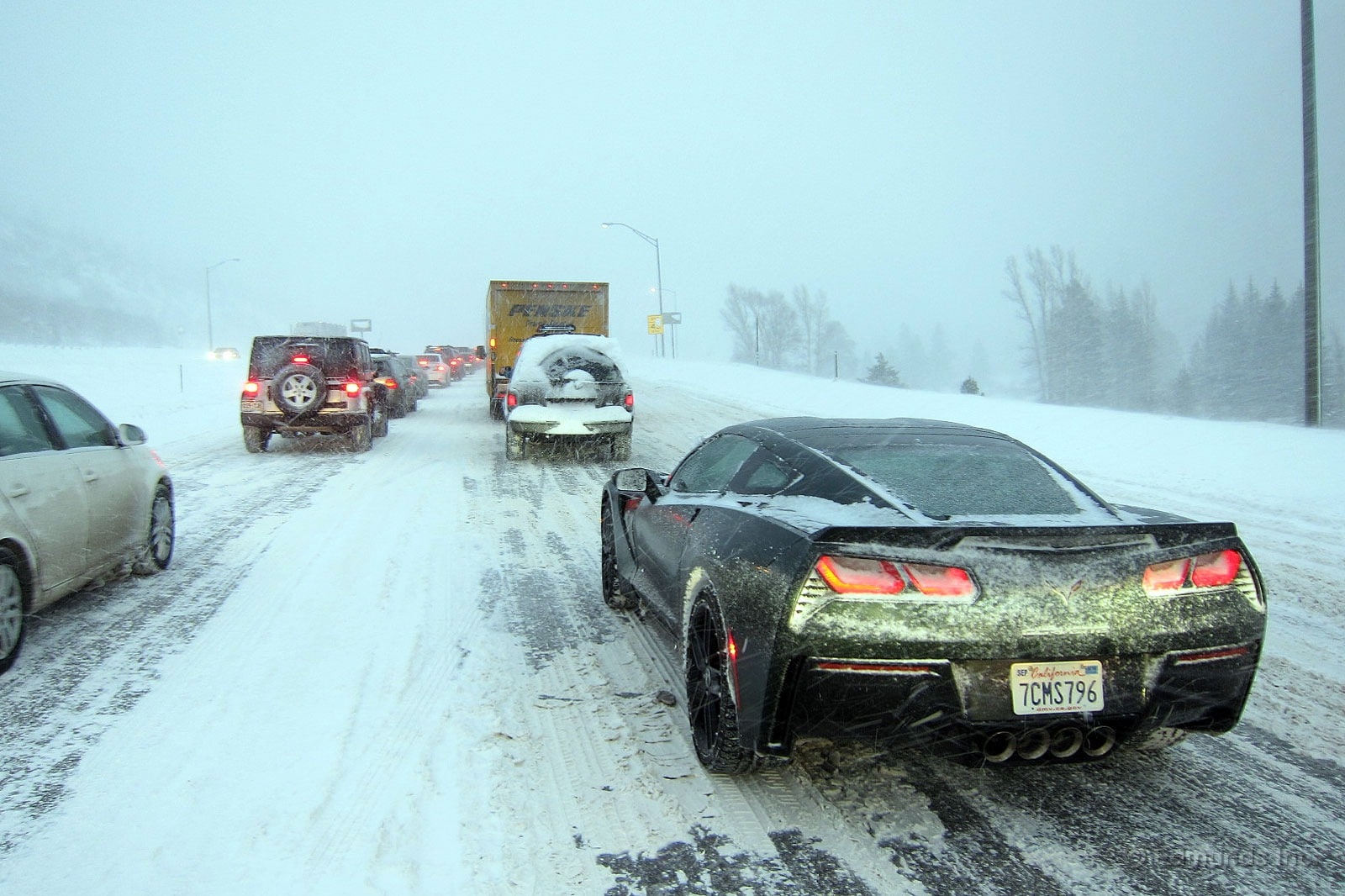
From Santa Monica to Grand Junction, CO the trip was dry and drama free. I knew there was some weather ahead, but honestly I wasn't worried about it. I was overconfident. We had fitted the Corvette, which is rear-wheel drive and packs 460 horsepower, with Pirelli winter tires, and I had successfully driven our long-term Mercedes SLS AMG Roadster from Santa Monica to South Dakota and back last February without any issue.
Then the snow started. It was no big deal at first. The Corvette's tires and sophisticated traction and stability control systems were working as designed. With the car in "W" or Weather mode, which slows throttle response, traction was not an issue. As long as I could still see some blacktop, 60 mph was still drama free.
Then I began to climb the mountains. And as the elevation rose, the amount of snow falling increased. And then traffic stopped for the first time. A lane was closed ahead and they were forcing us to merge. Suddenly, I found myself in stop-and-go traffic in a blizzard while driving uphill at 5,000-ft. elevation. This wasn't good.
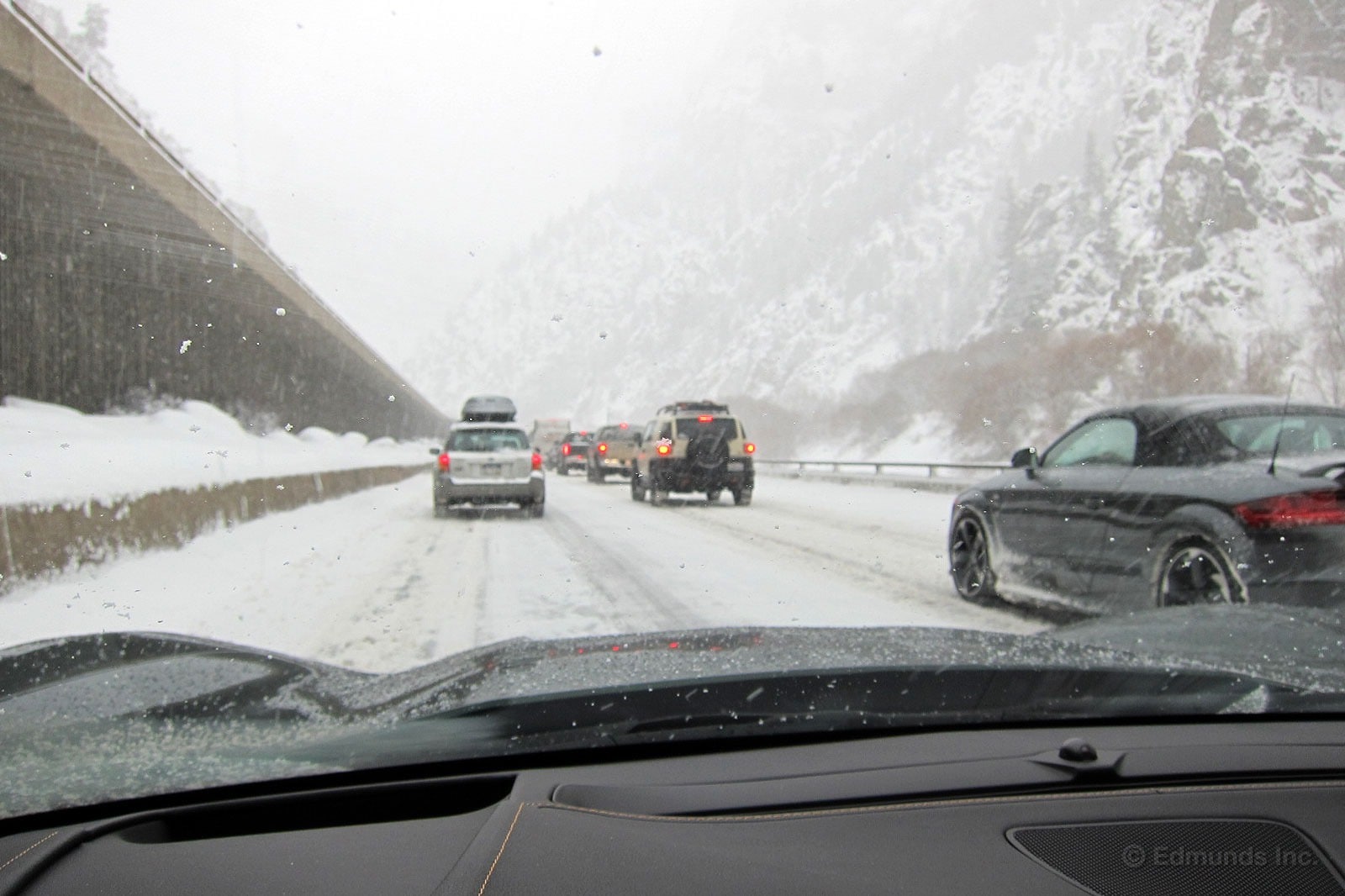
Everyone else was driving something with all- or four-wheel drive, and now I knew why. Every time I would need to inch the car forward I was testing the limits of the tire's and the Stingray's ability in these conditions. The incline of the road was becoming a real issue. Getting the car to move from a dead stop was getting harder and harder.
And now it was getting dark.
By the time I reached Vail I was concerned. I wanted to stop but getting off the interstate and onto the unplowed service roads where the snow was certainly deeper seemed like a bad idea. So I kept going, inching the Corvette through what was now a blizzard. I felt like I was on the set of The Shining .
Thirteen miles later traffic stopped and stayed stopped. We sat there motionless for 20 minutes as an accident was cleared from the road up ahead. I called my wife. She could hear the worry in my voice.
I asked her to make me a reservation at a hotel in Frisco 13 miles down the road. "Any room will do," I said in a mild panic. "Just make sure the hotel is close to the interstate."
During the call traffic began to move, but the Corvette was snowed in. For the first time it wouldn't budge. There was just no traction. The car's stability system was keeping the tires from spinning but it was also shutting off its big V8 engine in an attempt to cut power to the tires. The 18-wheeler behind me was not amused.
"I'm stuck," I yelled into the Bluetooth.
I tried everything. Traction control on. Traction control off. Weather mode. Touring mode. I tried to spin the tires. I tried to rock the car back and forth. Nothing worked. I was stuck. And I was blocking the number two lane.
Out of consideration for my fellow motorists I rolled backward (downhill) onto what little shoulder I could find just to get out of everyone's way. I knew that meant putting the Corvette's tires into even deeper snow and making my situation even worse, but I didn't have much of a choice.
It worked. I was out of the way. And two lanes of continuous traffic rumbled by the driver-side mirror of the Stingray.
"You have a room booked at the Holiday Inn in Frisco," my wife said, "if you can make it there."
"Thanks," I said. "Now what?"
"Call 911."
I hung up with my wife and tried again to get the car moving. It was no use. So I made that 911 call.
And then I sat there testing the Corvette's seat heaters as I watched the snow fall and the traffic go by. Traffic that was now limited to the far left lane and included the occasional plow. I started to think that if I could get over to the left lane I could get going.
Twenty minutes later, just as my survival instinct was kicking in with an odd desire to eat my left foot, I could see a break in the traffic.
For the first time there were no headlights in my rearview mirror. I rolled backward down the hill again, this time maybe 100 ft. and maneuvered the car over into the left lane. For the record, I have never reversed down an interstate highway before and I don't plan on doing it again.
I put the car back in Weather Mode, made sure its traction control system was on, put it in first gear and crossed my fingers. There was just enough traction to get the car moving. Five mph. Ten mph. Fifteen mph. Yes. It's working. Second gear. 20 mph. 30. Third gear. 40.
It worked. I was free.
I called 911 and told them I had busted out. No tow truck needed. And I made it to the Holiday Inn which was packed with other travelers that had also decided to wait out the storm.
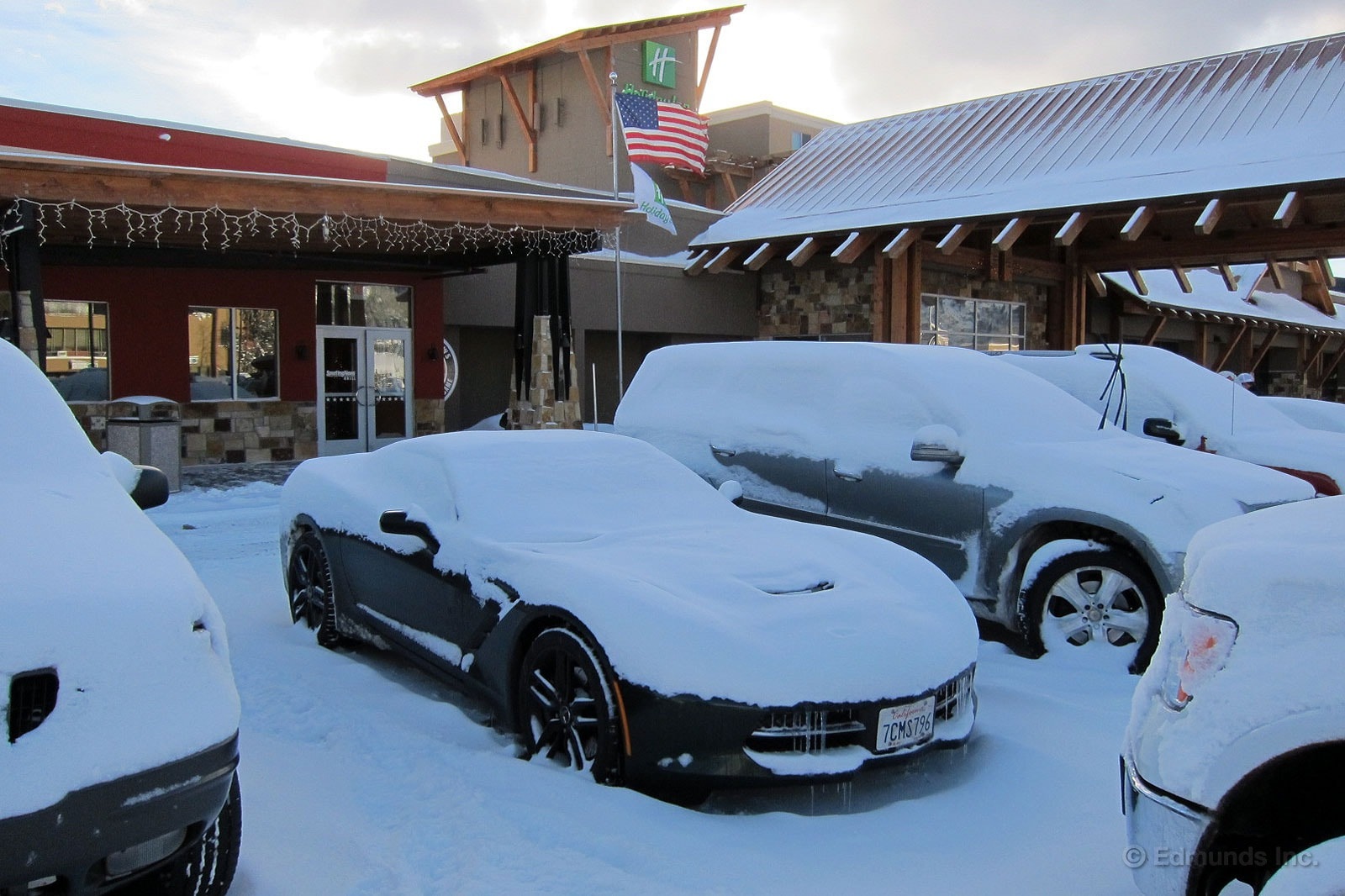
The next day I awoke to blue skies and I didn't hit a touch of rain or snow the rest of the trip to Detroit.
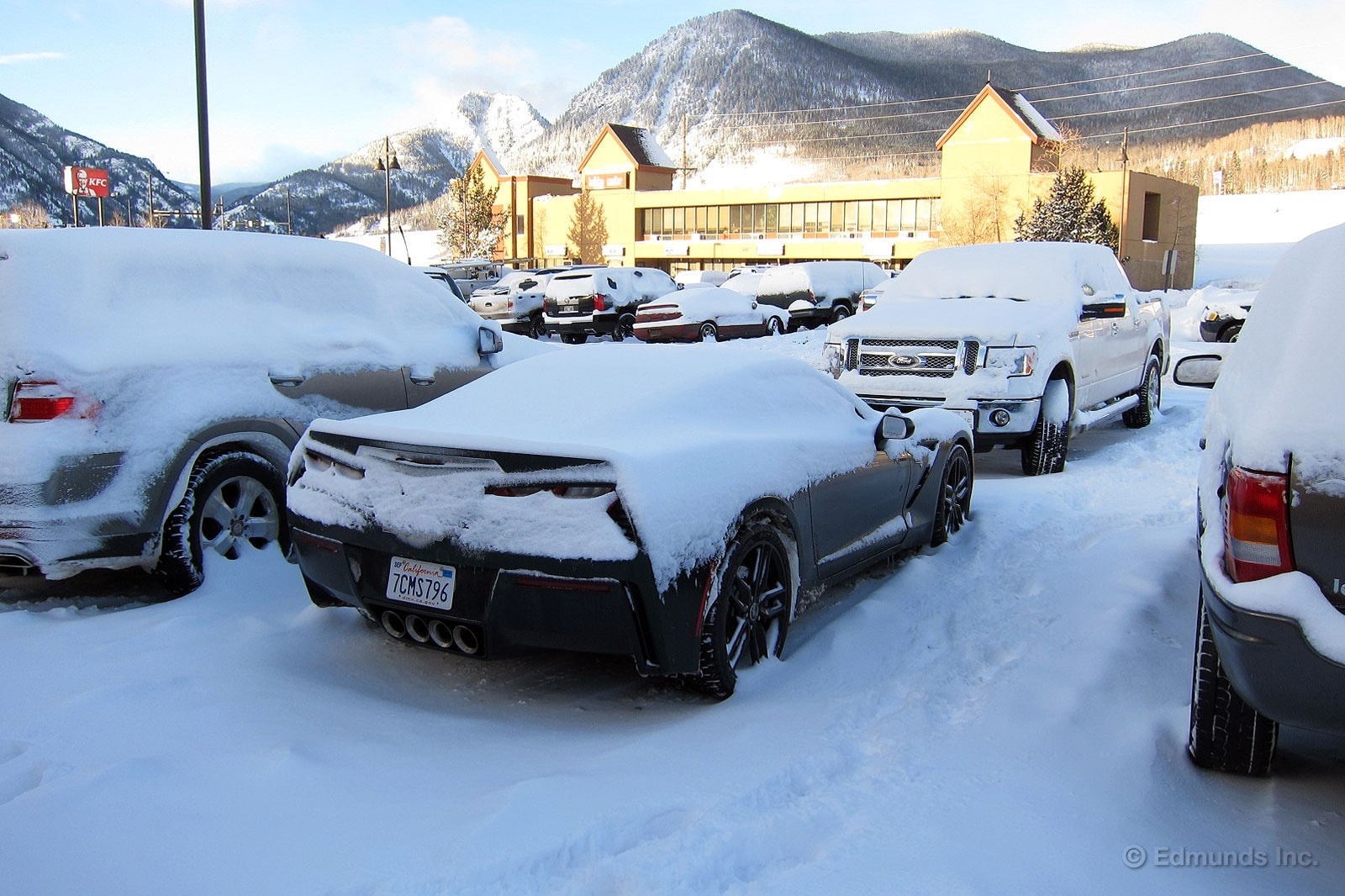
But I did learn something. Two things really. First, I learned that even modern electronics and winter tires have their limitations. And I learned why Subarus are so popular in Colorado.
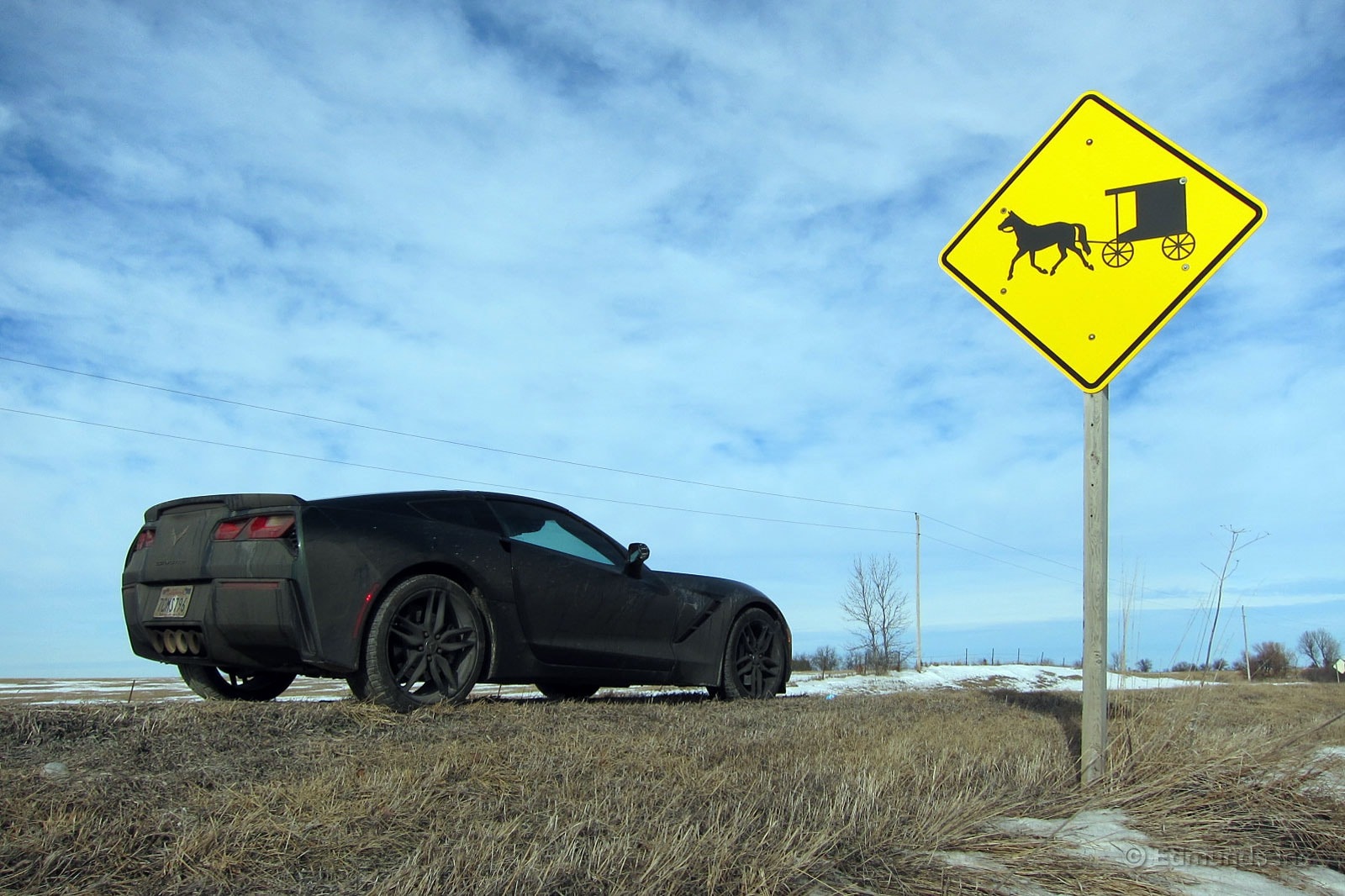
If you want to test the comfort of a car, road trip it.
I just spent four days driving our long-term 2014 Chevy Corvette Stingray 2,500 miles from Santa Monica to downtown Detroit. My longest day behind the wheel covered about 800 miles.
And now I can tell you that the new seventh-generation of Chevy's two-seat sports car is extremely comfortable. I'm 5' 11" about 180 lbs. and my body was very happy in the Corvette, even though tanks of fuel would stretch about 450 miles.
And it's not just the car's heated seat and seating position that made it so. This Corvette rides wonderfully in Touring mode and its cabin is luxury-sedan quiet.
After a long day behind the wheel I never felt broken in any way. I arrived in Detroit feeling good. No need for a chiropractor or a masseuse or a handful of Advil.
So while some Corvettes of the past have offered the comfort of a horse and buggy, the new Stingray is just the opposite. It can be driven to work or through three states without beating you up.
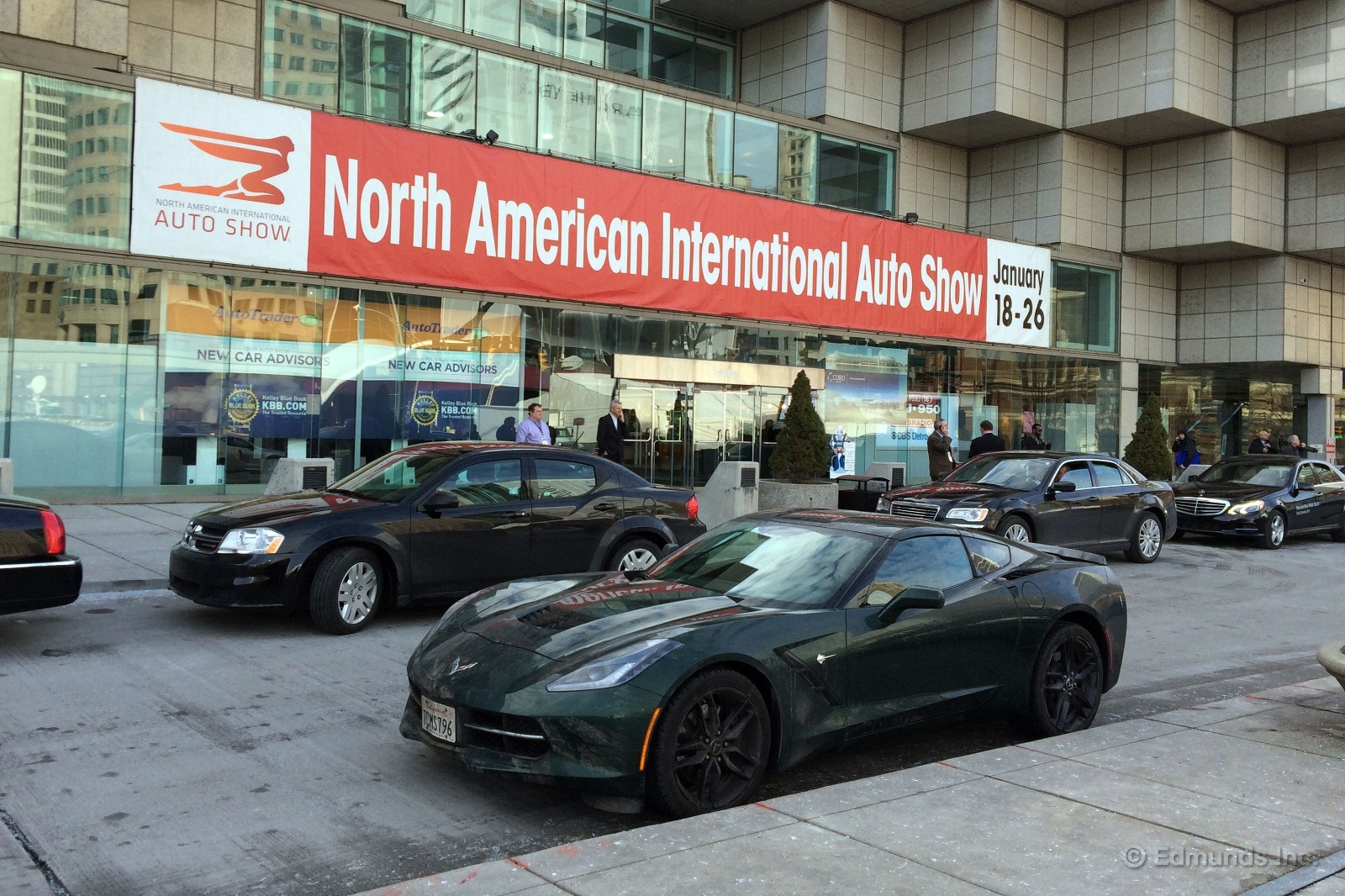
When the Corvette and I left Santa Monica for Detroit I really didn't like the car. Which was the point of the entire trip. On Jan. 9th I wrote this:
"...I'm the only person in the entire world, it would seem, that is not head over heels in love with the new 2014 Corvette. Somehow the car just leaves me cold. And my list of gripes is long, from its odd (too high) seating position, to its slow throttle response, to its pedestrian-looking gauge cluster, to its ugly wheels and taillights, to the strange feel of its electric steering, to its...I could go on.
I'm an idiot I know. Everyone on Earth is in love with this car but me. And that's why I've decided to road trip it.
I want to bond with this car. And to do that I'm going to drive it 2,500 miles across America. Just me. No passenger.
When I arrive in Detroit sometime Sunday I'll either love our Lime Rock Green machine or I'll be very happy to hand its key over to Mike Magrath for the drive back to California."
Well, after 2,500 miles, four days, one blizzard, eleven states and a mountain of beef jerky, I can count myself on the new Corvette bandwagon. This is a great car. No, I don't suddenly love the look of its rear end and I still think its wheels are just too plain, but I can no longer deny the appeal of this very fast, very comfortable, very enjoyable machine, especially at its price. This car defines value if you're in the market for a sick-fast two-seater that can be driven every day.
Bottom line: There isn't another two-seater in the world that offers more performance or comfort for the dollar. Anyone that says different hasn't driven a C7 enough. I have and I love it.
Now I can't wait to drive the supercharged Z06 version Chevy introduced at the Detroit auto show.
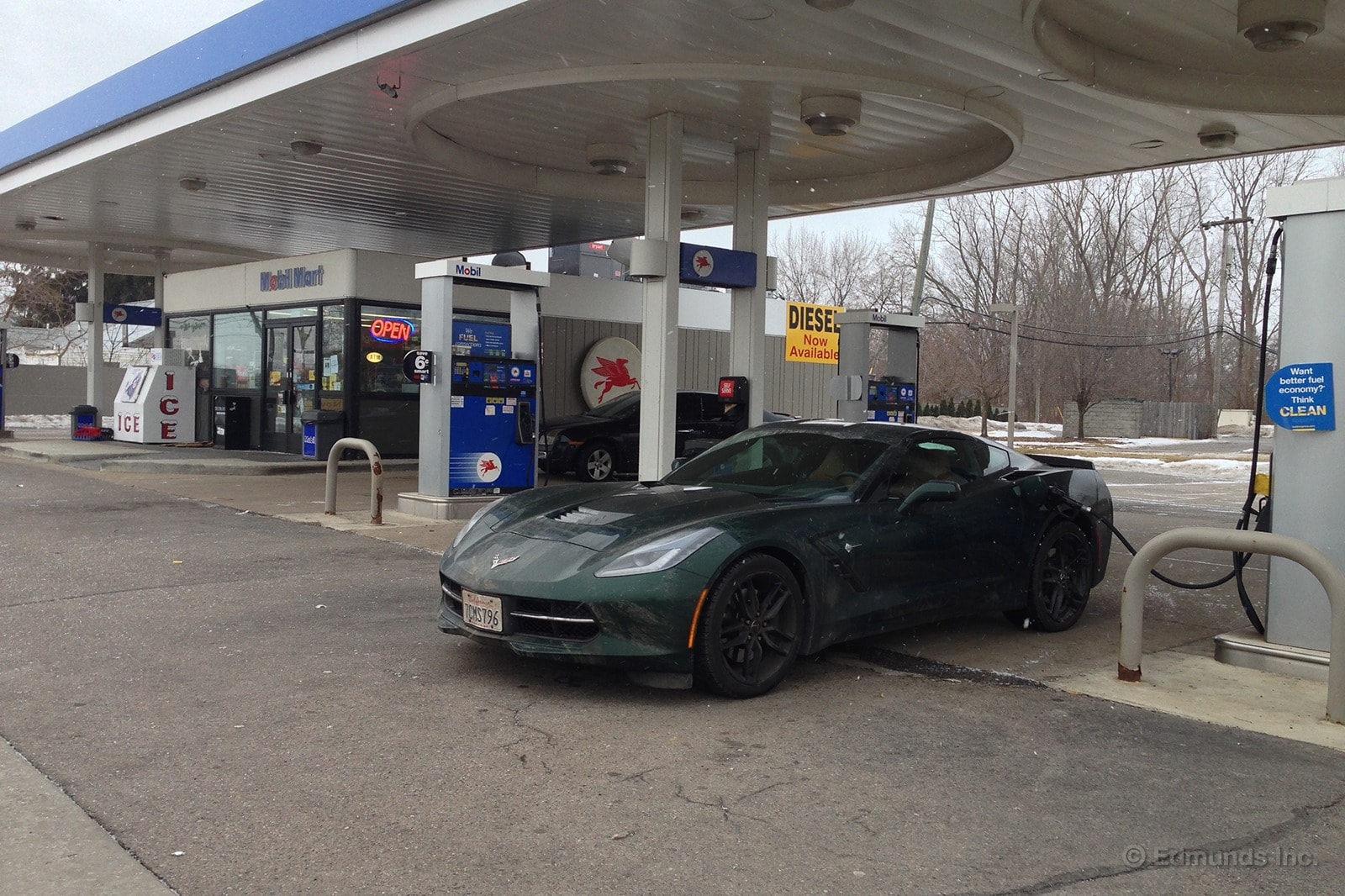
January was a big month for our 2014 Chevy Corvette Stingray. It got its first service and then we strapped on some winter tires and took our 460-horsepower coupe from Los Angeles to Detroit and then back adding over 5,000 miles to its odometer.
What impact did that trip have on our long-term fuel economy?
Worst Fill MPG: 9.5
Best Fill MPG: 30.8
Average Lifetime MPG: 20.6
EPA MPG Rating: Combined 21 (17 City/29 Highway)
Best Range: 471.9 miles
Current Odometer: 13,230 miles
As for the specific fuel economy from that road trip, well, you'll have to check back for that one.
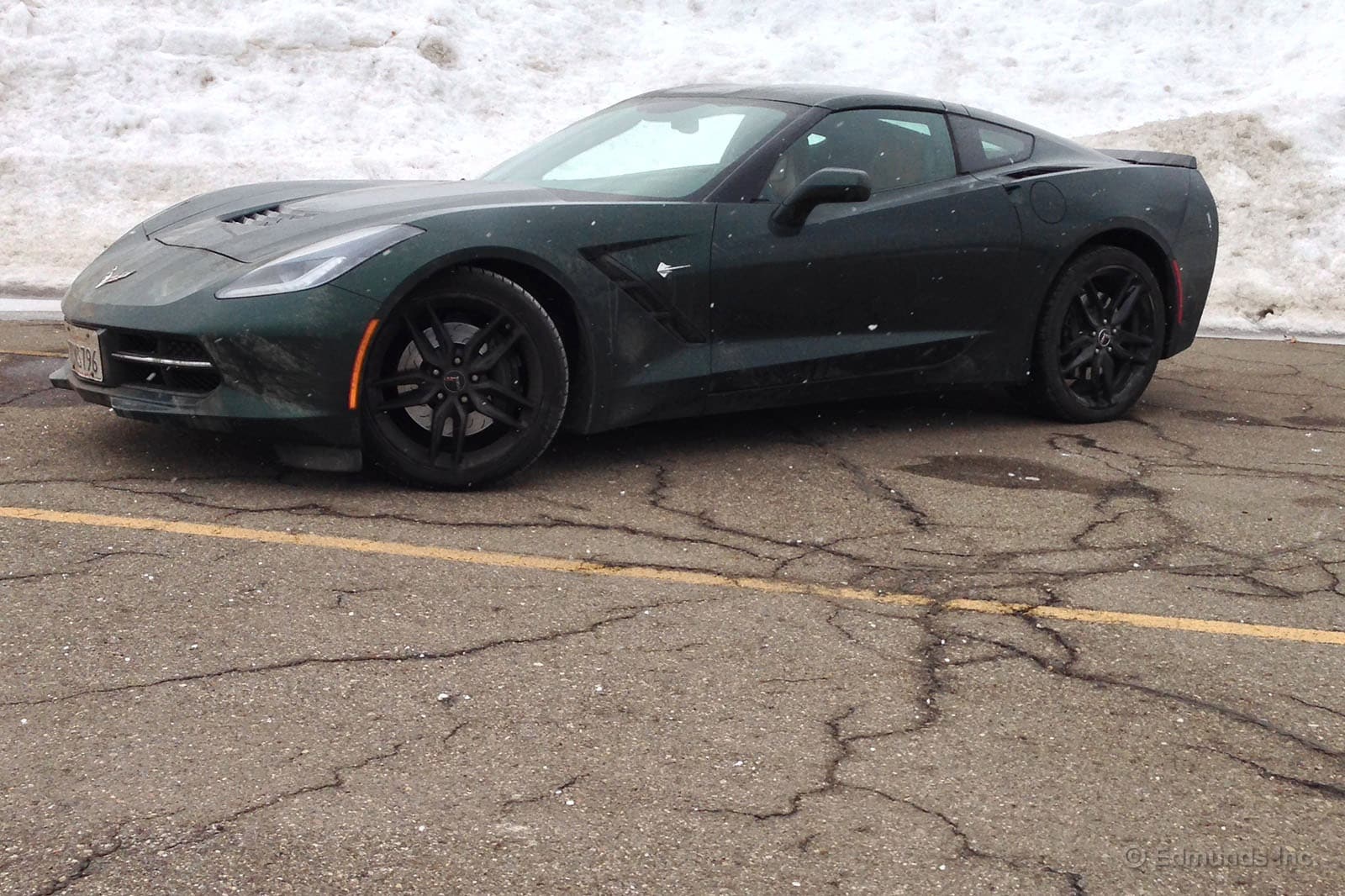
I usually like the Detroit Auto Show. The last couple of them have been great. Money's started to flow back into the auto industry, there are more cars on the floor and the reveals get more and more important.
This year, however, I just wanted it to be over. I wanted to bail before noon on the second day. I wanted to tear off my media credential, throw my tie in the trash, sprint back to the hotel and start driving our 2014 Chevy Corvette Stingray.
I knew I had about 2,400 miles to cover over the next few days, but I was itching to play in the snow.
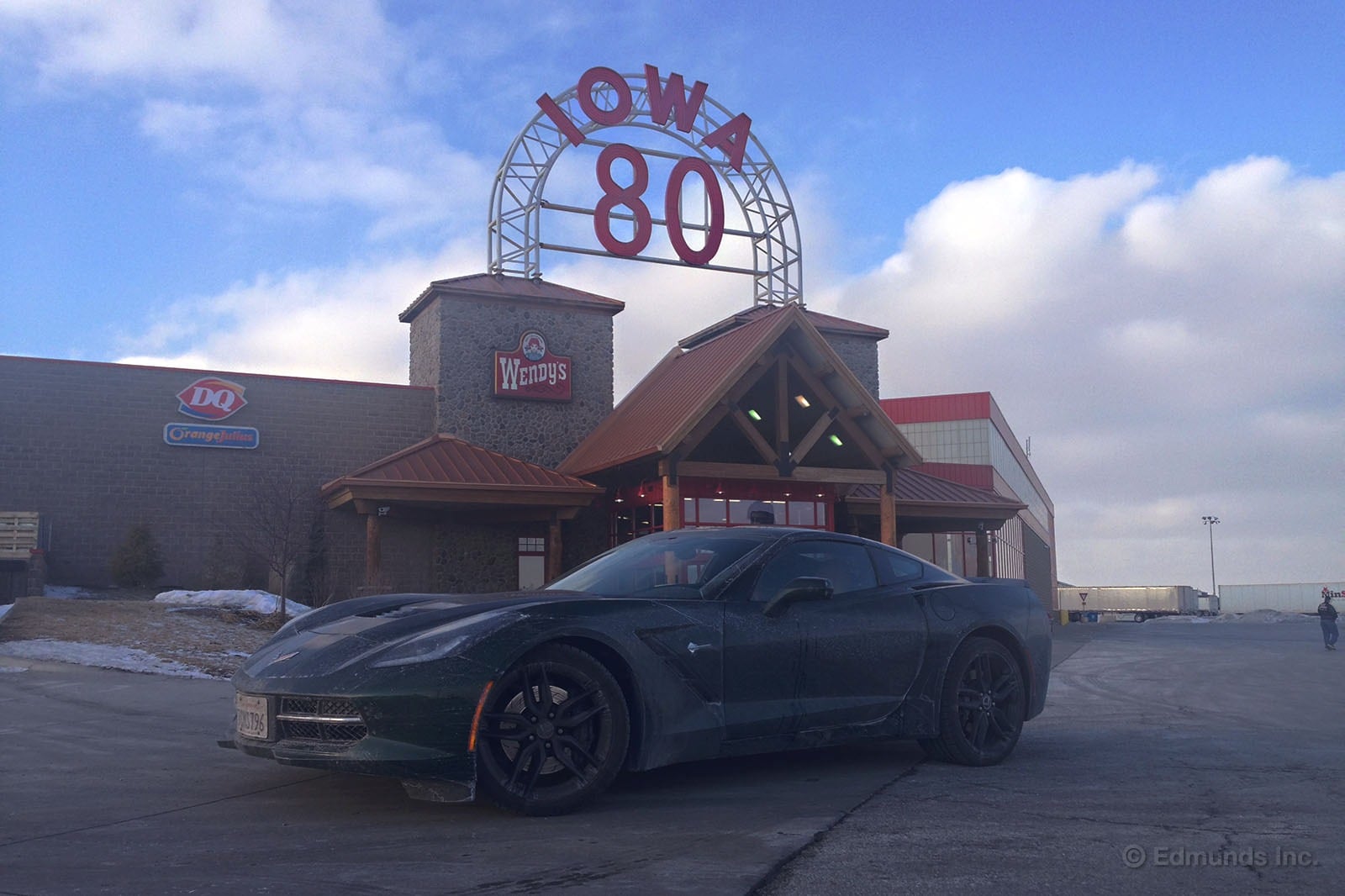
I stuck it out and left the day after the press preview which opened up my schedule to drive Oldham to the airport. Hooray?
The first few miles of the drive hinted that today wasn't going to be easy. Snow was accumulating on the ground, the sky was dark grey and temps were somewhere in the low 20s. At least the airport's on the way out of town.
By the time I was 10 miles outside of Detroit there were 2-3 inches of snow covering the highway. Speeds were low. Everyone was doing about 40. Unless, of course, you were driving a 4x4 and then there's obviously no reason to slow down. Surprisingly, I only saw one of them in the median down the road.
I grew up in the Northeast with rear-drive cars and wasn't terribly afraid of this happening but it's still slightly annoying and, as anyone who has to try to make time in snow will confirm, stressful. That said, the Corvette armed with these winter tires is a champ in the snow. I wasn't stuck trying to climb a mountain, I was on relatively flat ground which helped. Still, with 460 horsepower and super fat rear tires, it could've gone poorly. The same stability control system that makes the Stingray belligerently fast on canyon roads and racetracks keeps things tidy in the snow. Combine that with great feedback from the steering and precise brakes and the Corvette didn't surprise me once. The only "let's see what happens" moments were when plowing through that wall of snow that accumulates between lanes on the highway. Even then the Corvette remained rock solid, stability control keeping everything in check.
Being able to trust your car is key to making time and from that first blizzard on, I felt I could trust the Corvette.
The first day wrapped up about 700 miles from where I started. Not bad, but not the kind of distance I like to put down on day 1 of a road trip. Day 2 would have to be better.
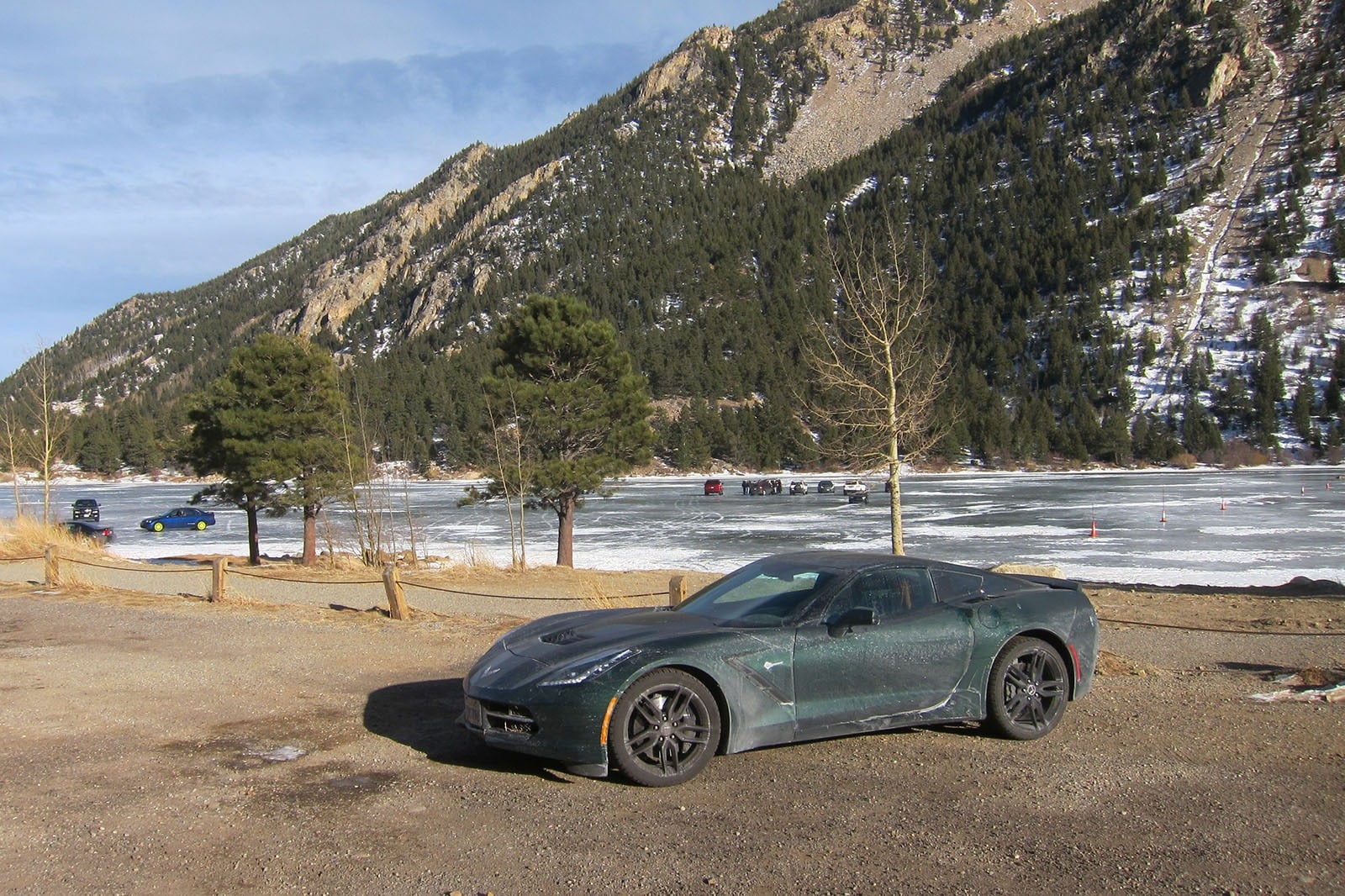
The town of Lincoln, Nebraska isn't terribly interesting. But it has an airport which means it has cheap, clean hotel rooms. My room was well insulated from the sound of private jets getting out of Nebraska but was woefully porous to the 900 mph winds that were whipping across the Midwest that day.
The wind nearly blew me over as I filled the tank with :::gasp::: 87 octane — it was all they had and my range indicator was in a panic. I had to lean into it to stay vertical. I had to stay outside the car to hold the fuel nozzle as the wind kept tripping the sensor. It was something like 18 degrees before wind-chill calculations. I've never wanted a flat tire less.
By the time I got on the highway, the winds had somehow picked up. I lost count of the number of tractor-trailers overturned. None of them had cabs, however, signaling that this wind had been going all night at least. Trucks still on the road were tilting towards the roadway. I passed them as fast as humanly possible and stayed FAR away from them near overpasses. About three hours into the drive I encountered the world's largest migration of tumbleweeds. I dodged the ones I could and obliterated the others. One the size of a Volkswagen was impossible to miss. It exploded on impact in the most satisfying way.
The Corvette didn't care about any of this. If not for the trucks waving like flags I'd have had no idea there was any wind at all. If I turned my head at just the right angle, there was some wind noise from the door seal. If I looked forward that noise went away.
Even when passing through the windbreak of a giant truck the 'Vette stayed stable, slipping through the disturbed air like a harpoon.

Night falls fast in winter. Faster than I'd like. Faster than I expected.
The sun started to dip behind the mountains as I approached the Eisenhower Tunnel. For anyone who hasn't spent a lot of time in a cold climate, this means the temperature is going to drop and the puddles formed from hours of sunlight and road traffic will quickly become sheets of ice. Not fun.
I wanted to get up and over as quickly as possible, but then stopped to watch an ice driving school held on a frozen lake. They told me they race there on the weekends with studded tires. They told me the Corvette was too low to make it onto the ice. Still, I love that this exists and want to move to Colorado to play here.
Getting up the hill was a breeze until I hit a thick patch of snow that had blown across the roadway. It was the gross, sticky kind of snow laden with salt and sand that likes to gum up the treads of tires and it did just that. I tried slowing down to knock some out. I tried doing a rolling burnout. Nothing worked, though, so I just went as slow as necessary (welcome to winter driving, Southern Californians) until the tires cleared it themselves. That turned out to be just after the tunnel which was perfect; I did not want to go down that hill on ice skates.
It got darker. It got colder. There were more ice patches and more dead deer on the side of the road and I decided to call it in Moab. The 'Vette performed exceptionally well in the wind and handled ice and snow even better, but I didn't think it would do so well against a deer.
800+ miles this day. Not great, again, but I think I'm starting to figure out why.
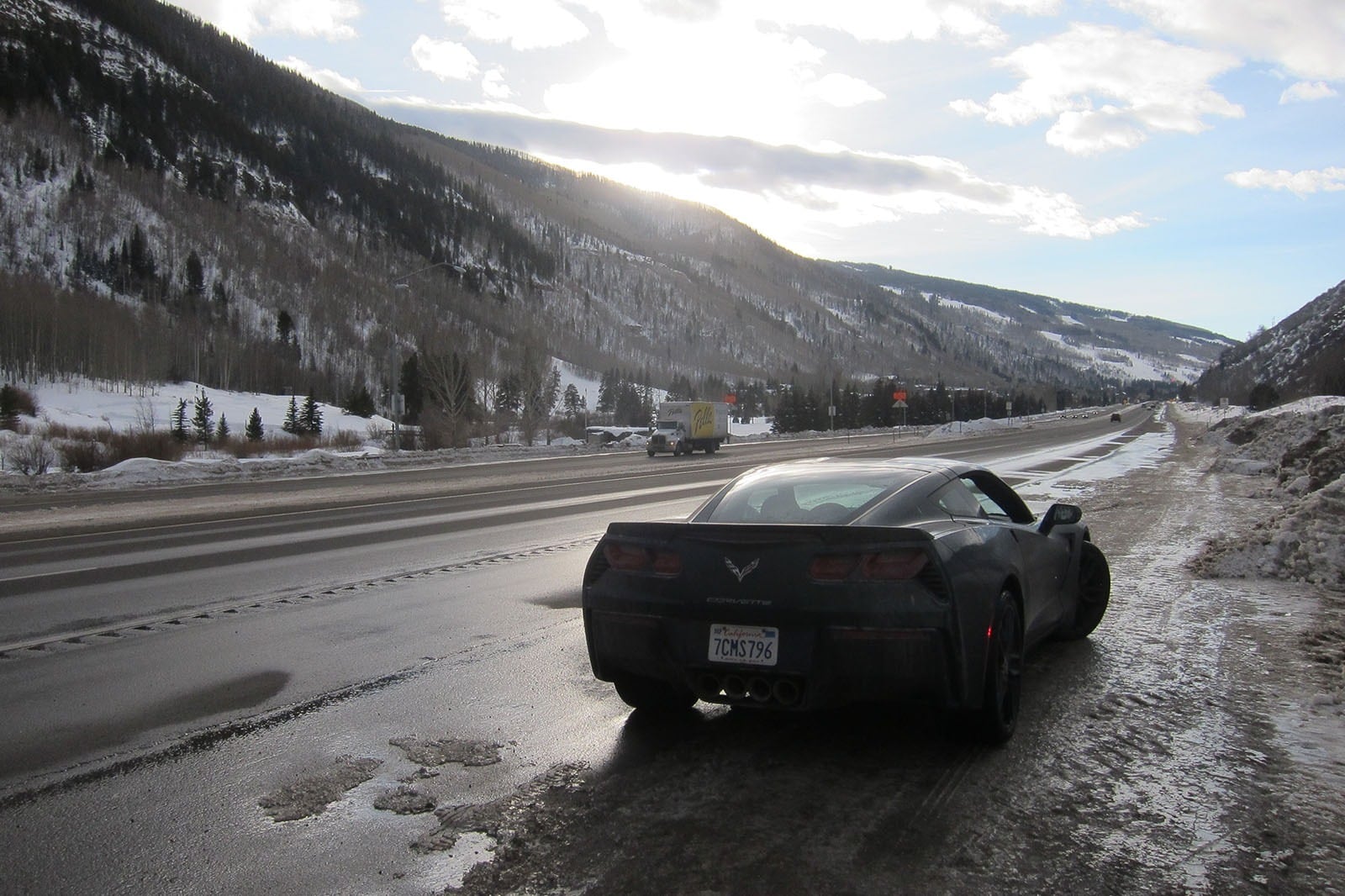
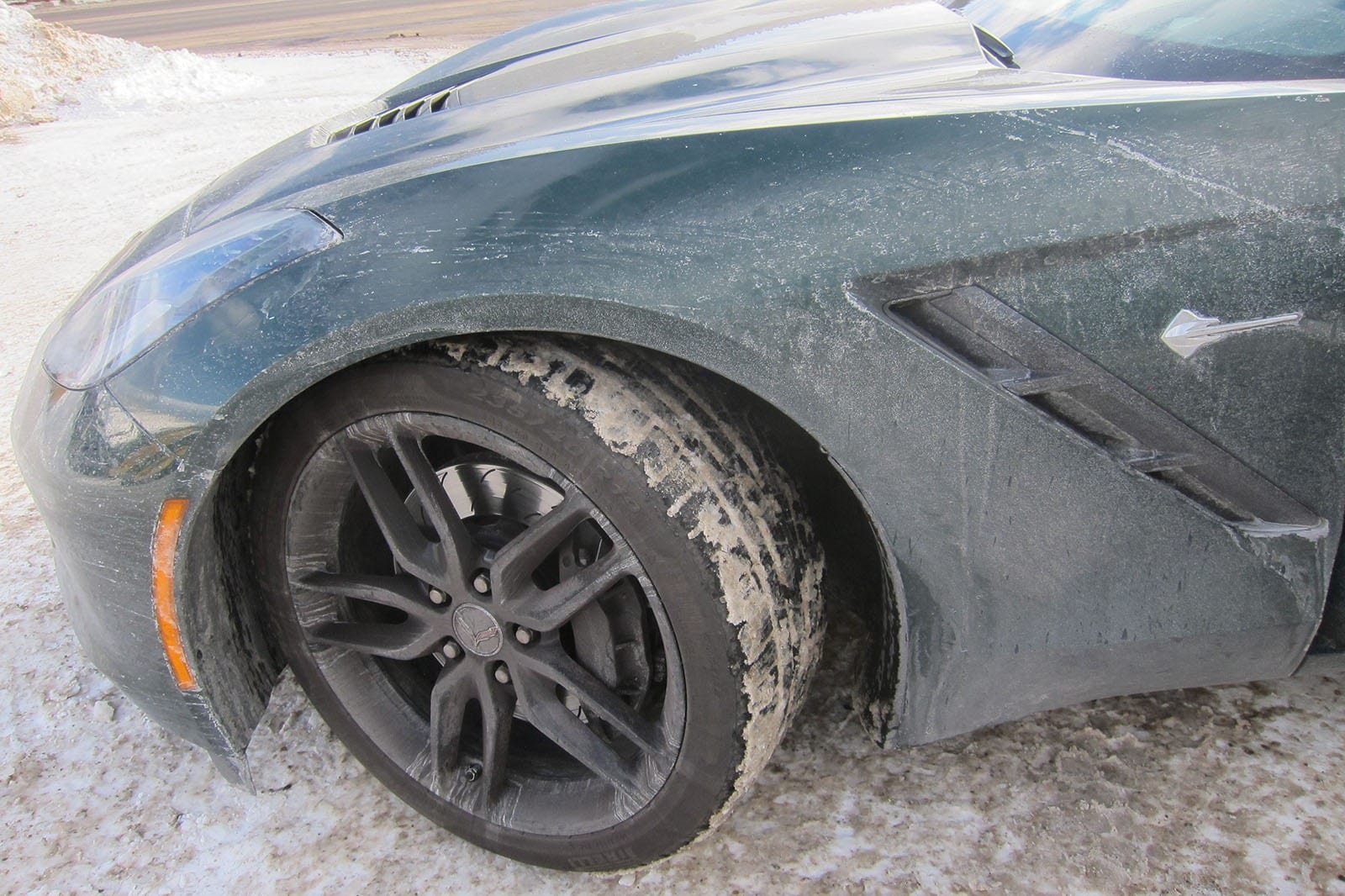
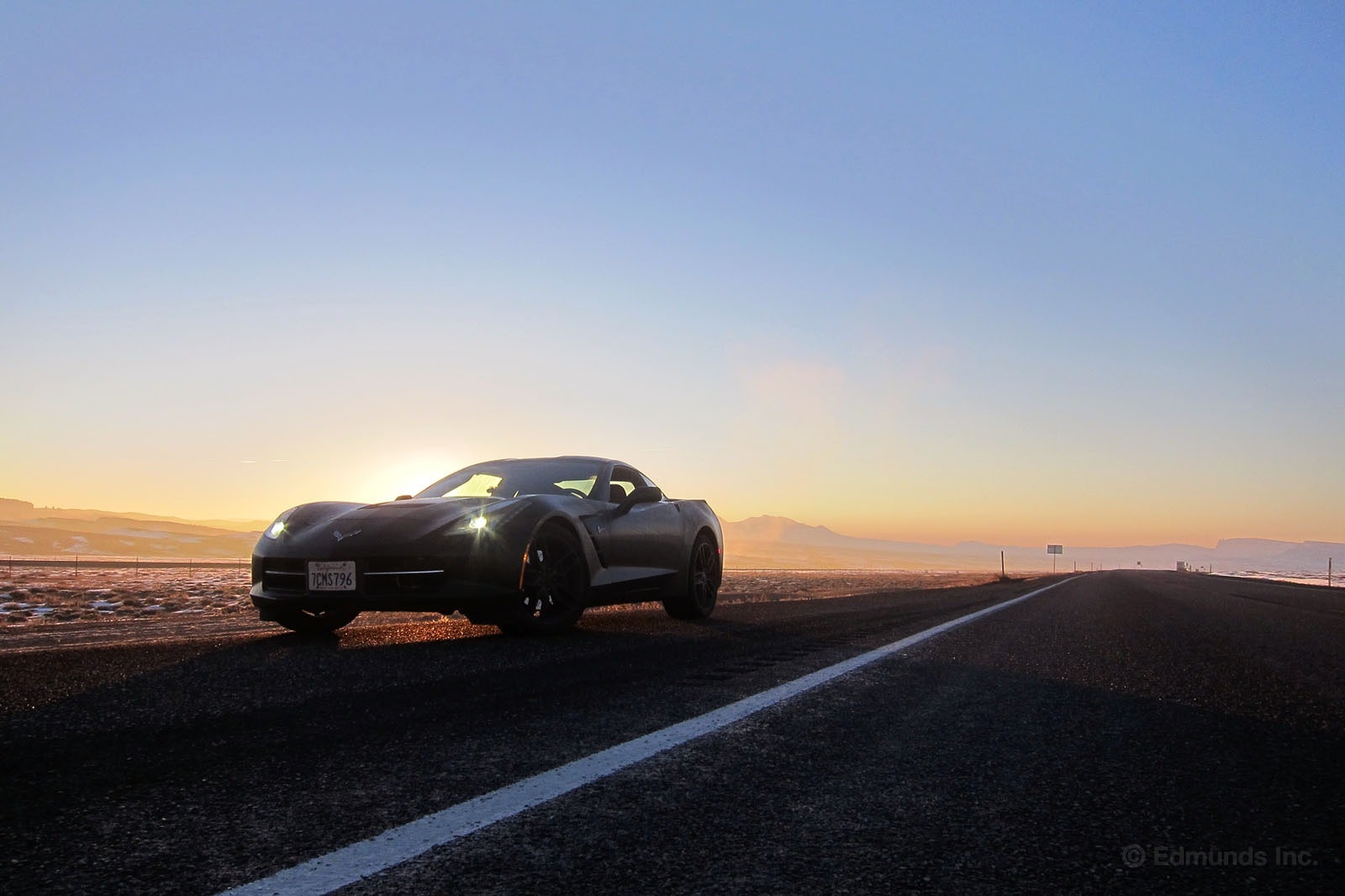
Moab, Utah is not a terrible place to wake up. In fact, it's a pretty darned spectacular place to wake up. I could have stopped every 15 feet to take more pictures, but I limited the stops to about 4.
Maybe 5.
The route from Moab to Los Angeles isn't terribly impressive. There are some nice views and the speed limits are somewhere around 80 mph throughout Utah which is nice. But really, it's a 700-ish mile highway slog that lands you straight into Los Angeles's awesome rush-hour traffic.
The most notable things about this ride included the length of time the Stingray sat in four-cylinder mode at 80-ish mph; the temperature difference from start to finish: 18 in Moab, 91 in L.A.; and how much I dislike the Corvette's long-distance seating position.
More on that last bit later, for now, let's look at the numbers.
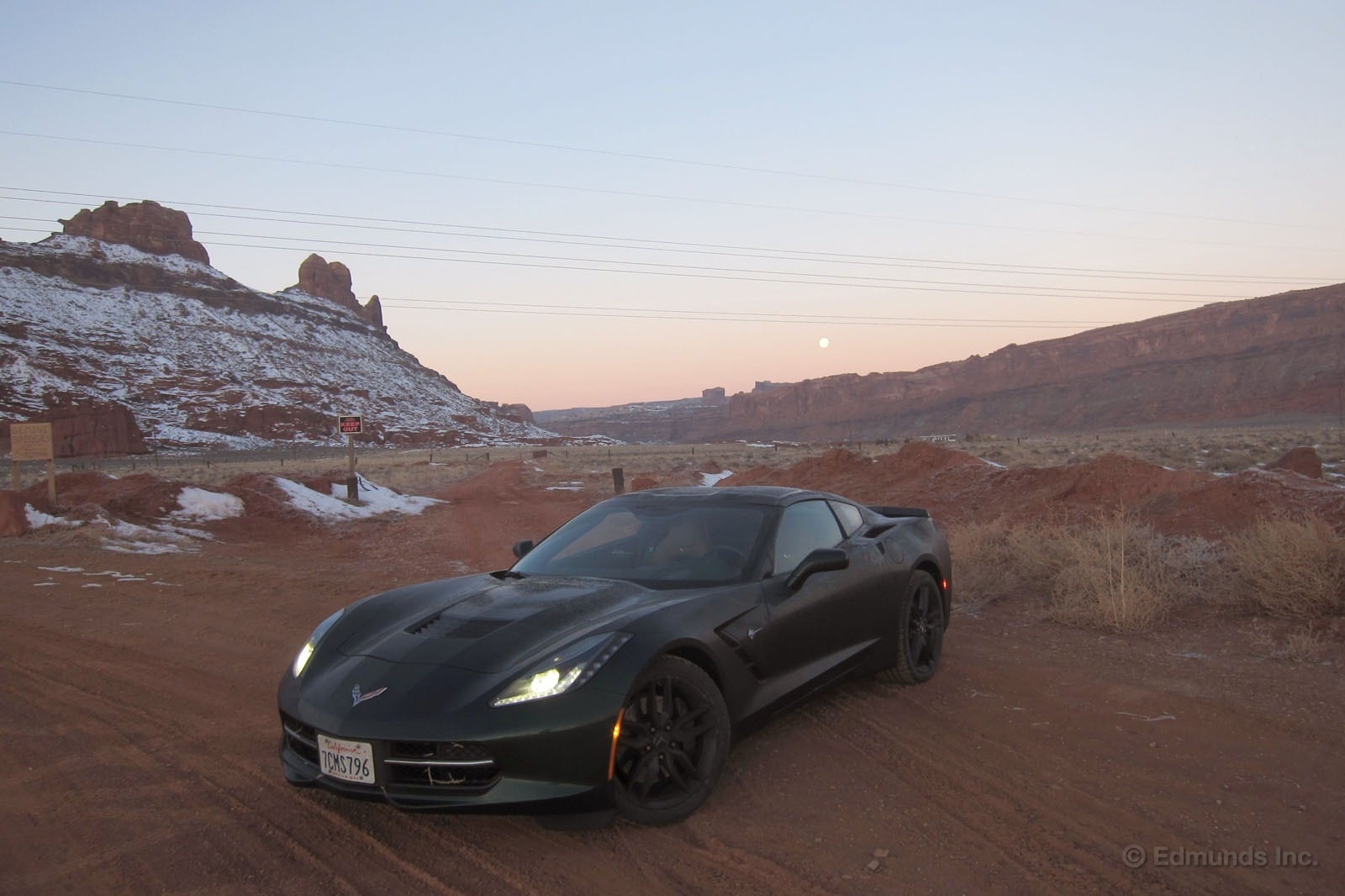
Total Miles: 4,976.2
Average MPG: 26.3
Best MPG: 30.4 (7th gear. Eco Mode. Minimal stops. Me.)
Worst MPG: 21.9 (89 octane + wind + multiple stops + fast. Me.)
Best Range: 471.9 (Scott)
Gallons of Fuel Used: 189.2
Gallons of washer fluid: 1
BBQ Stops: A bunch
Breakdowns: 0
Times Stranded by snow: .5
Burnouts on Snow Tires: A bunch. (Weeeeee!)

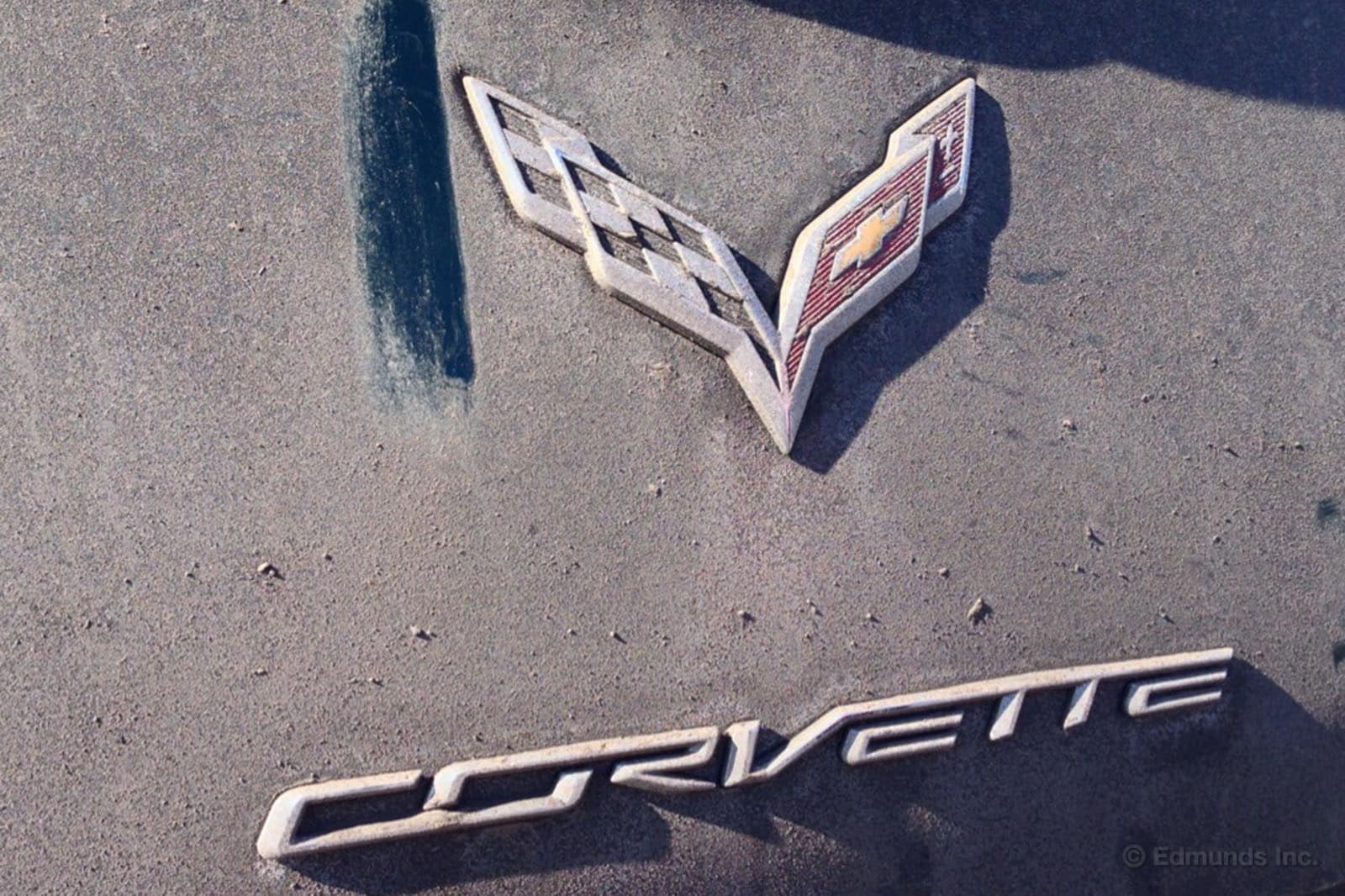
When we started this road trip, Oldham and I were on opposite sides of the C7 coin. Scott wasn't a fan of the C7 while I considered Tonya Harding-ing some of the more senior staff members so that they couldn't drive a stick and I'd get more sweet, sweet Corvette time.
A few thousand miles later, we're still on opposite sides of the coin. He's in love, and my Corvette Stingray Bromance is over. I wished we'd taken our 911.
As anyone who's followed Edmunds for any period of time knows, I likes me a good road trip. I like going for pointlessly long drives just to turn around and drive back. I like shooting for maximum range on a single tank and maximum range for a single day. So when I started looking for lunch spots on day 1 and then multiple photo locations, I should've known something was up. When I grabbed a large water along with my espresso on the morning of day 2 — thus mandating an early pee break — I should've known something was up. When I made it all of 4 miles outside of my hotel on day 3 before stopping for pictures, I knew something was up.
I'm just not comfortable or particularly happy in the Corvette Stingray. Not when it's away from a mountain road or racetrack at least.
Part of this has to do with the seating. Seats in the C6 were crap. The base seats in the C7 are, objectively, pretty darned good, but for me they're just not right. Let's start with the seat height: It's too high. Way too high. To achieve anything close to visibility, you've got to recline to 45-degrees. I'm not an F1 racer. I don't like driving in a prone position. I'm a big fan of staying near-vertical. Doing this in the C7 equals a head in the roof, eyes level with the sun visors and a Cinemascope view of the world. This is pretty much the best view I can hope for out of this thing.
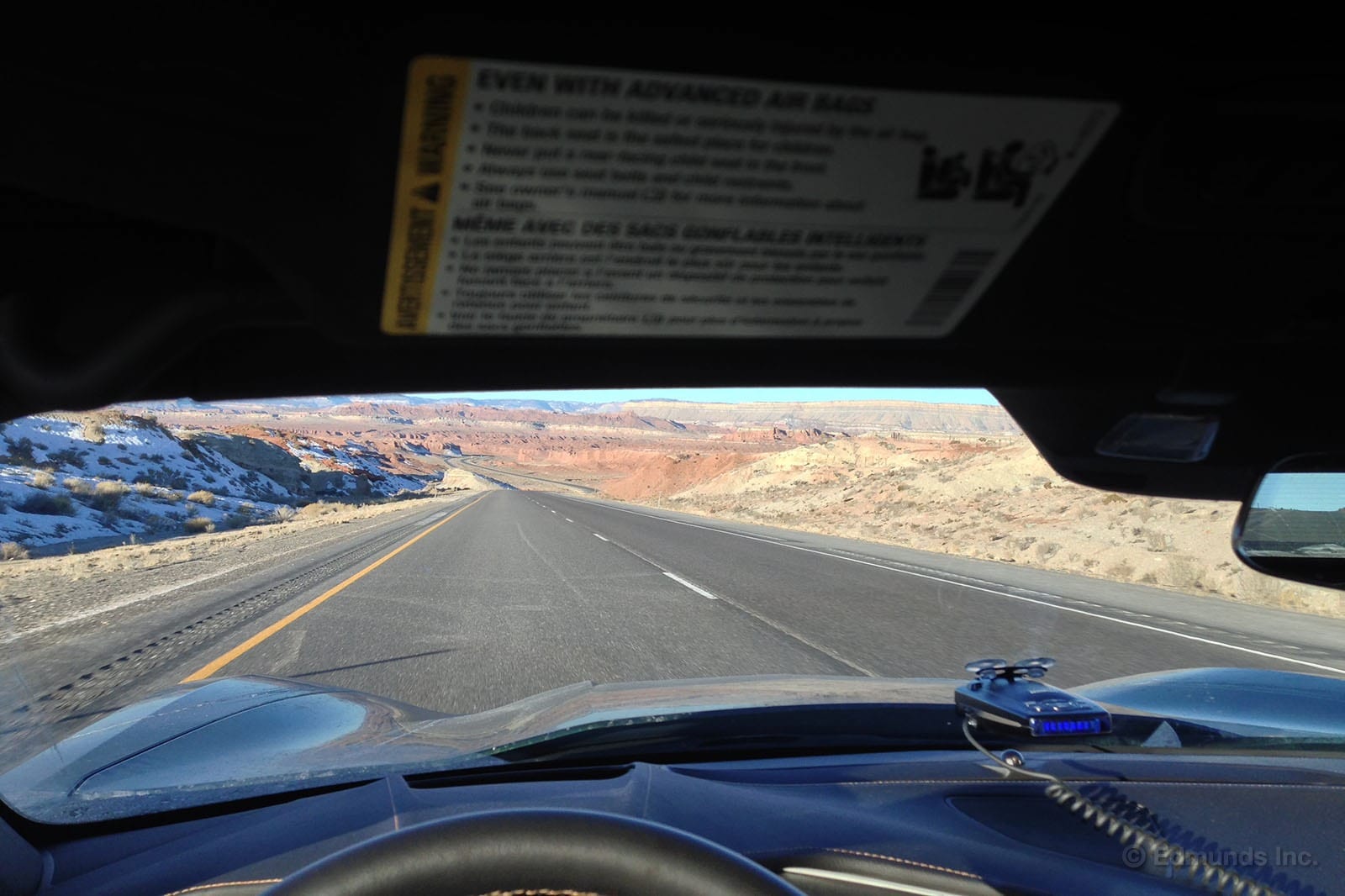
The seat height and tightness of the cabin also forced me into this odd position where, with a hand at 10 and a hand at 2 (I prefer 9 and 3), my right elbow hits the center console on right turns. Not annoying at all. I guess I could drive with one hand at noon and the other on the shifter, but that's silly.
Finally, there's the Vette's lack of thigh support. The seat bottoms are too short and don't dip down enough in the rear. After about an hour behind the wheel trying to figure out what to do with my legs, I start getting all fidgety.
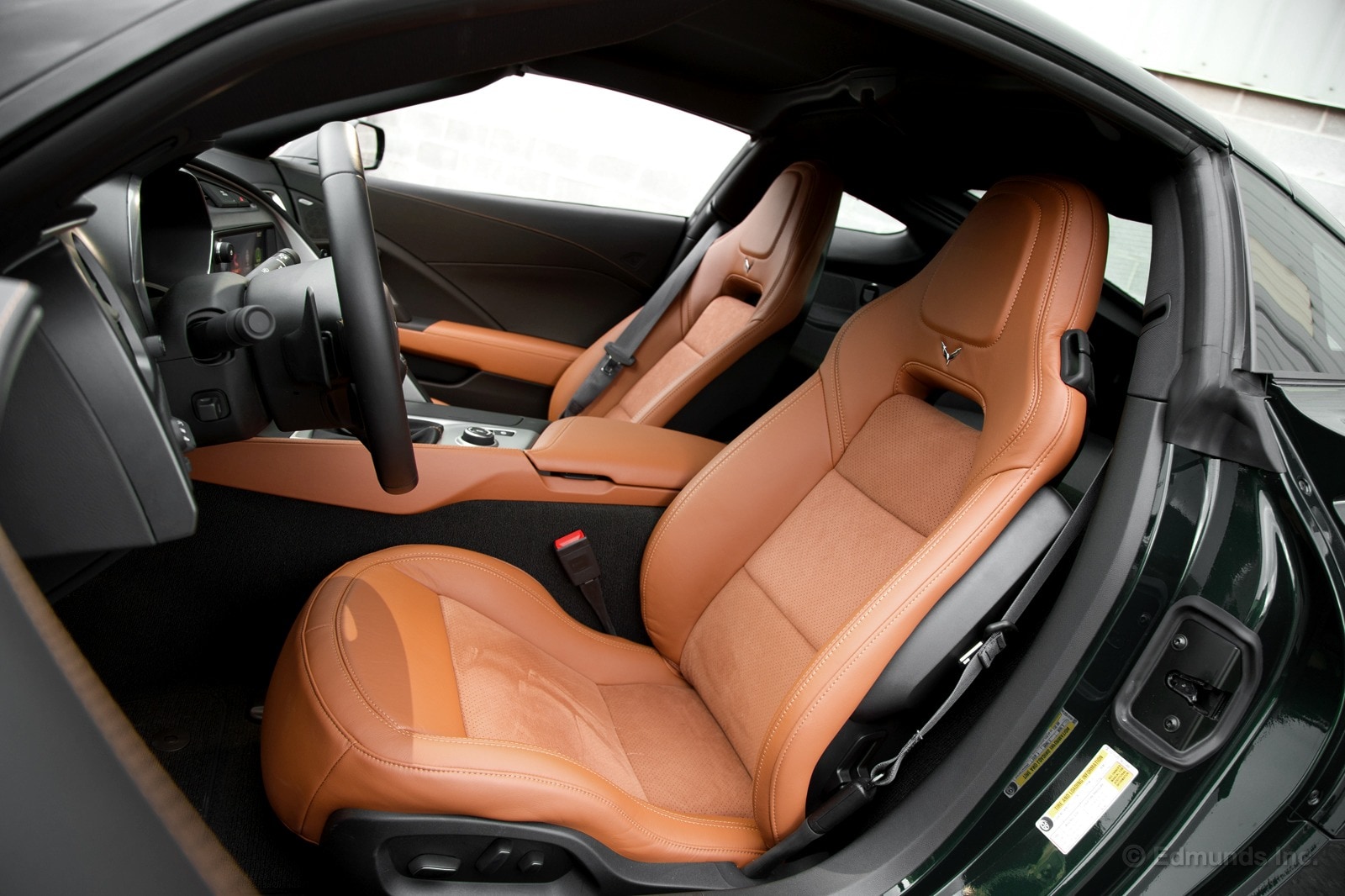
Now we move onto REALLY subjective things. Nitpicks if you will. Things that aren't necessarily wrong or bad, but bugged me during the trip.
-Hate the paddles. Couldn't look at that every day. (Their function is beyond reproach. It's a clever spot to place that button. I just can't live with the same paddles on a manual that's on an automatic.)
-Hate the electronic door release. (There's a real door release on the floor! This doesn't save weight, and never works on the first push.)
-Dislike Chevy's MyLink. It doesn't categorize audiobooks by chapter, is painfully slow to respond and seems to have the resolution of a potato.
-Dislike the instrument panel. It just feels forced. The configurability is neat, but I'd rather it have two clean dials instead of 9,430 muddled operations.
-Dislike the ingress/exit. It's very low and there's a pointy bit on the dash that tries to separate your shin meat from the bone upon entry. Exiting, even as a young man in pants, is inelegant.
Obviously, you might not feel the same about ANY of the above. The cool part is that now the Chevy Corvette Stingray is finally a car that you can purchase or dismiss based on your preferences, based on subjective things. Previous Corvettes could be easily dismissed on empirical flaws. This car offers simply amazing ride quality, effortless power, one of the best stability control systems ever made and solid fuel economy for a decent price.
Still, I'd buy a 911. A Carrera in black with sport exhaust and PDK for about $90,000. It costs more because it's better.
For me, driving the Stingray is like having an affair: It's fun, it's crazy, it's sexy and makes you all tingly for a while. The Porsche 911 makes you want to start a long, loving relationship. It's still faster than road cars need to be, but it's also refined and comfortable and classy and makes you feel like you've made good decisions. Oh, and when I drove the 911 from New York to L.A. we got better fuel economy (28.9 mpg average) a better best tank (31.4), greater range (511 miles) and I managed more miles per day (at least 1,000). I was more comfortable, had better visibility and frankly just enjoyed the drive more.
In the made-up war between the 911 and the Corvette, I'm with the Porsche.
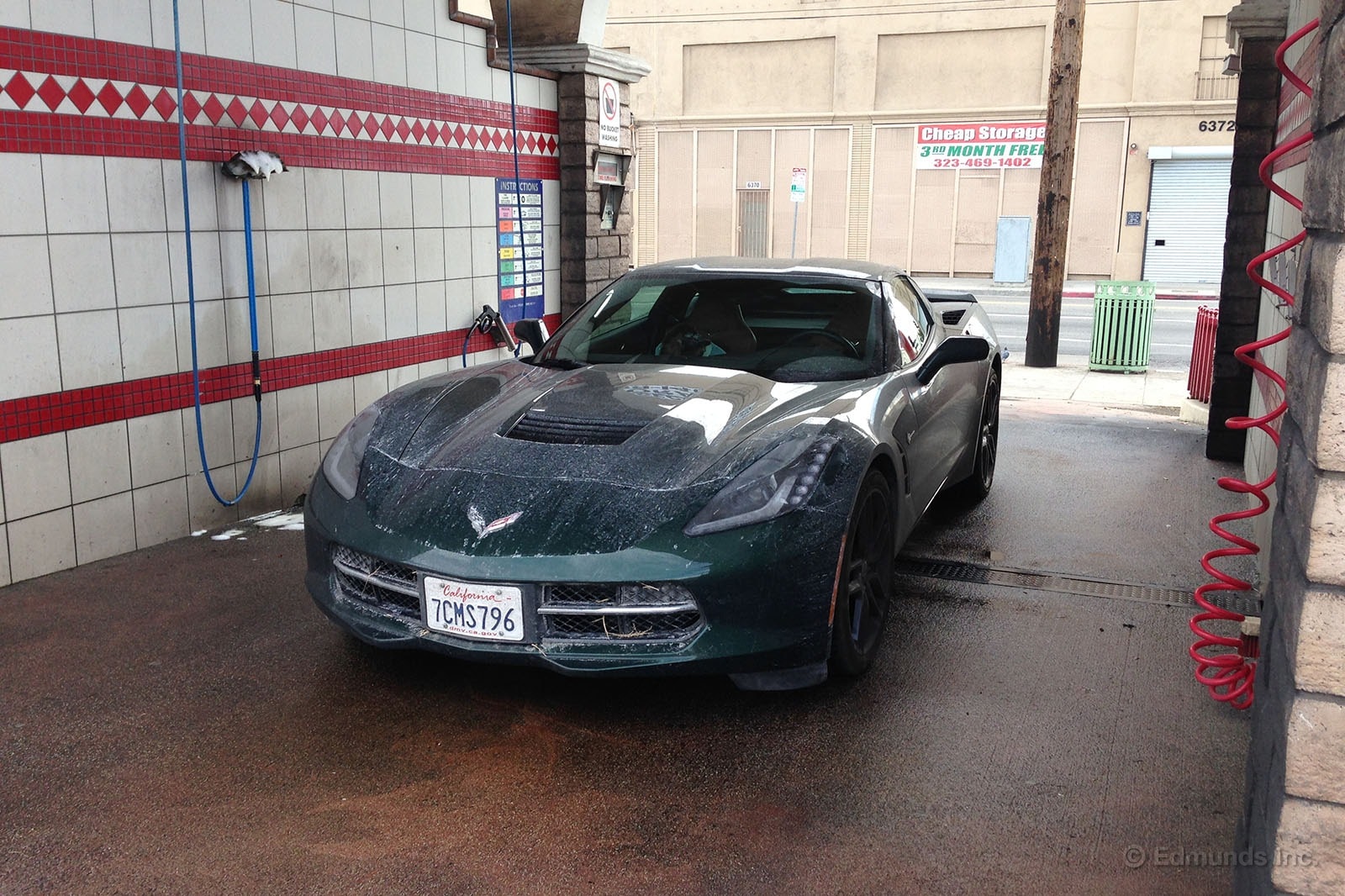
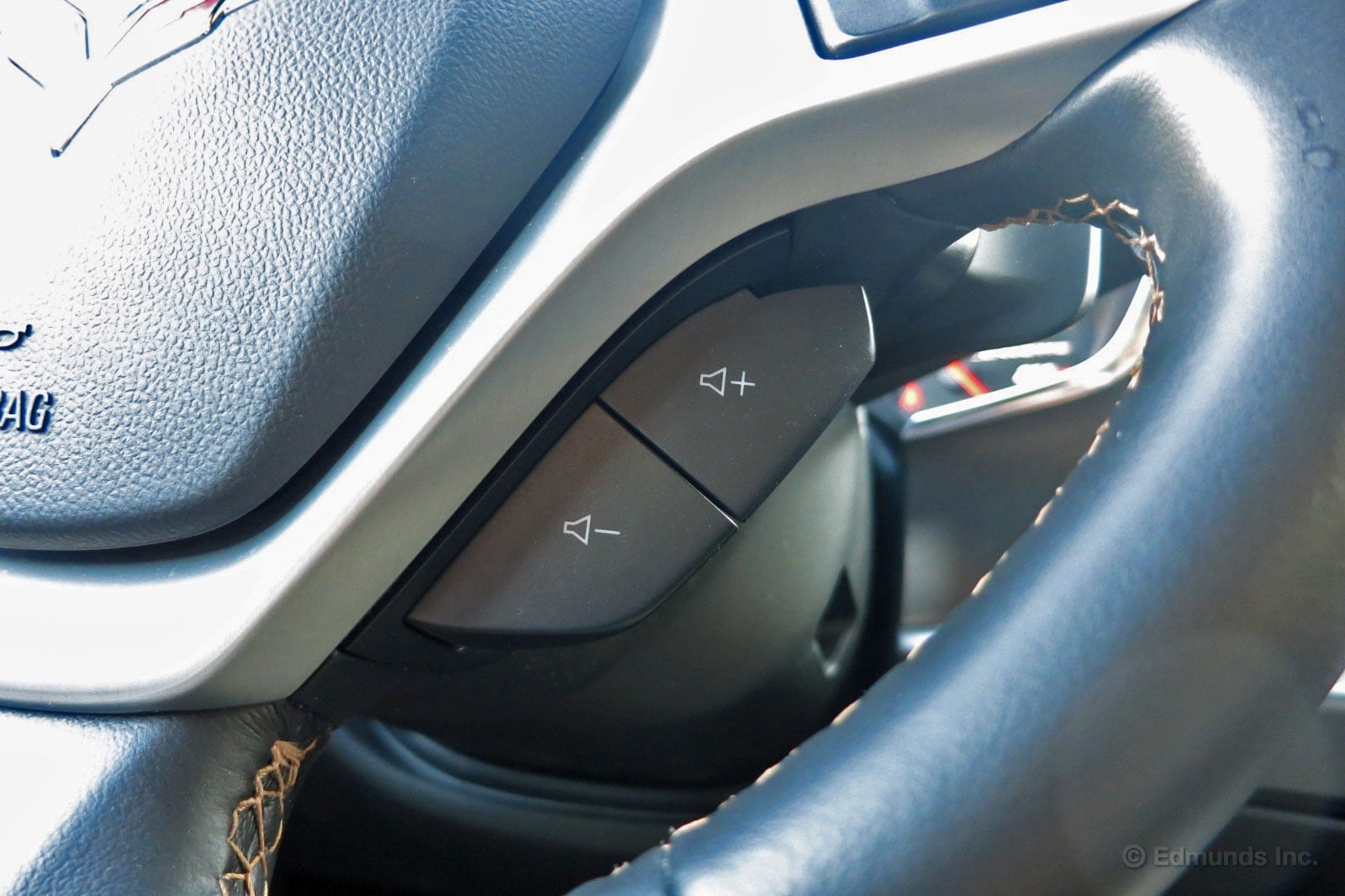
With a car like this, you have to dig deep to find something this truly awful. And even then, it's rarely a deal breaker.
That's the case with my least favorite part of this Corvette: the steering wheel buttons for the volume control. Their placement at roughly the 4 o'clock position is fine and they're big enough to feel easily, but their cheap feel is just plain awful. They are hollow plastic and every time you pull one toward you to adjust the volume it feels like clicking together a couple of Legos.
Granted, we're talking about a sports car here, and one that can do amazing things for its $65,000 price, but that doesn't mean it has any right to feel cheap. This is especially true considering that these are buttons you use often, not some random switch to turn off the rear defroster. Given how good the rest of the interior is this time around, it's a shame this small detail was short changed.
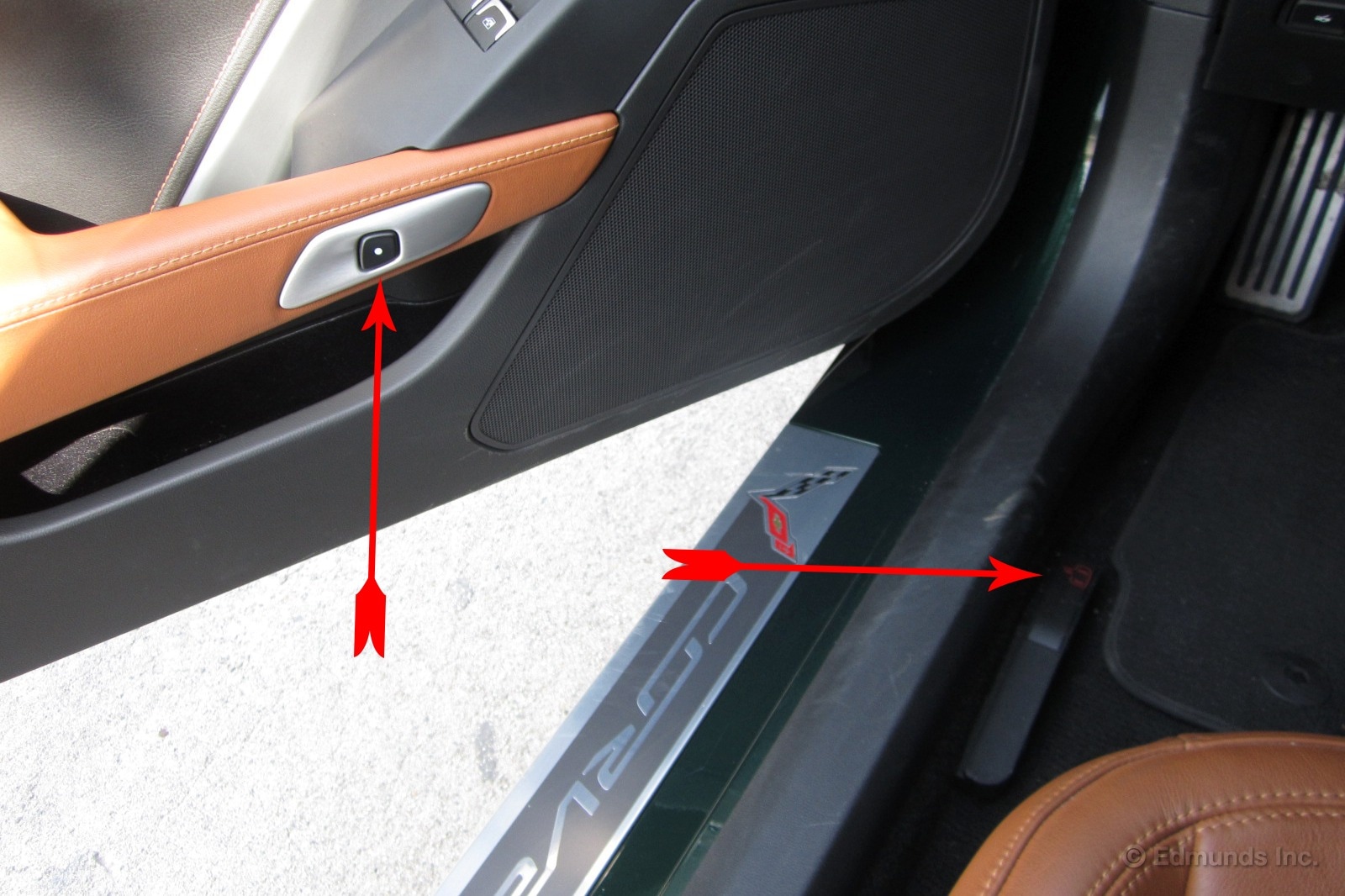
One of the seemingly few carry-over features from C6 to C7 Corvette is the push-button door "handles." The exterior one is hidden behind the hand-sized opening aft of the door, while the interior one is a button adjacent to the door pull.
Frankly, I'm not a fan. I seem to open driver doors with my left hand, which is rather ergonomically unpleasant with the 'Vette. You have to awkwardly turn your hand and arm over. There also isn't a keyless lock button on the outside. The car just locks automatically at some point when you walk away, which is a bit unnerving, and is a set-up that Cadillac has abandoned.
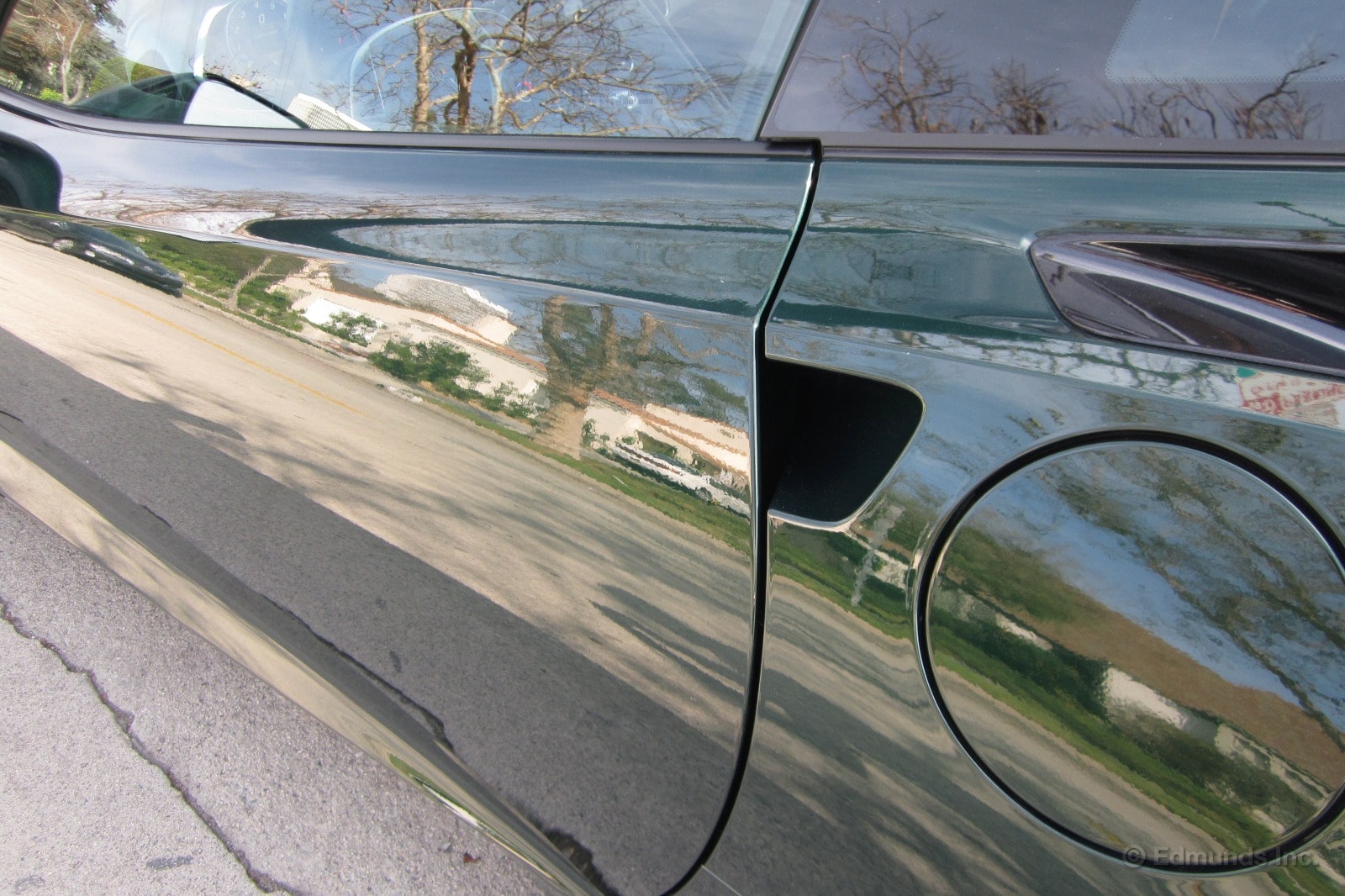
Then again, this is a super car of sorts, and as such, ergonomic unpleasantness is sometimes the price you pay for ergonomics, styling or just simply to be different than your neighbor's Camry.
The interior door button, however, is just pointless. Unlike other functional interior frivolities like Jaguar's rotary shifter, the button isn't especially clever or cool. It's not something you'd show off to friends. It's just a button. Furthermore, since it's electronic and its possible failure could leave you locked inside the car, there is a redundant mechanical pull on the floor where a Honda's fuel and trunk release would be. So the Corvette has two door-opening implementation devices on each side of the car.
Is it really worth the effort? I say no.
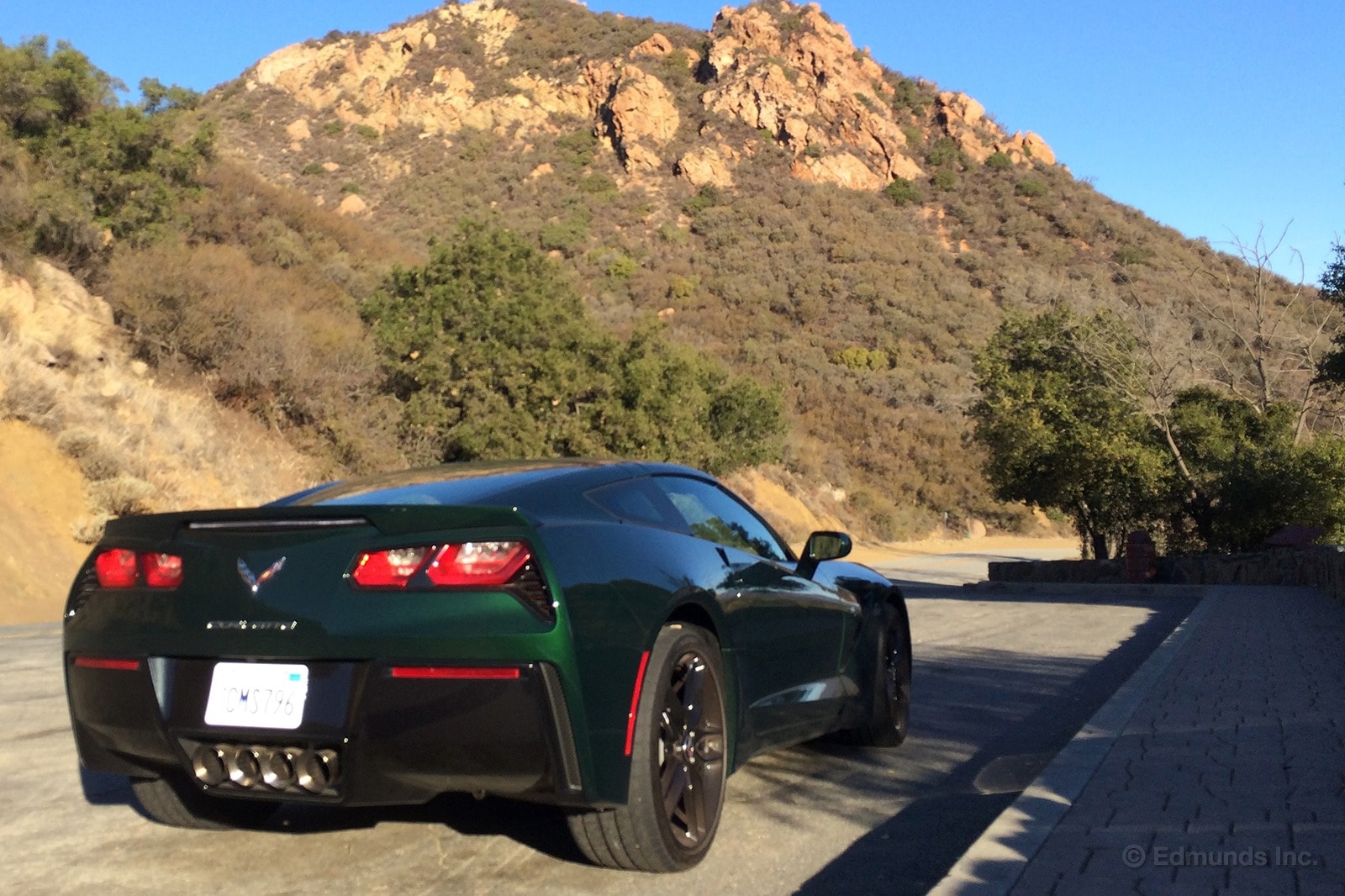
Since its introduction the 2014 Chevy Corvette Stingray has been a popular addition to the Edmunds long-term fleet. I haven't had too many opportunities to get in it, but somehow over the long weekend it had yet to be claimed. I attribute that to more responsible editors needing larger cars to shuttle people and stuff about. Me? There was only one thing I needed to haul.
The Corvette is a great machine. Really.
It's an absolute blast to drive on my favorite canyon passes and is easily one of the best sports cars you can get today. Even in car-jaded Beverly Hills, the Stingray was turning more heads than the numerous Aventadors, Italias and yes, even a hideously semi-famous yellow and black Veyron.
But...
I can't seem to shake the feeling that some of the electronic driving assistants are diluting the whole experience. It's not nearly as obvious as a Nissan GT-R's reliance on software, though. I guess you can consider me a traditional stick-and-rudder guy, rather than the fly-by-wire type.
I get the distinct impression that if I were to disable all of the traction and stability nannies, I'd end up in a ditch. But I still get it. A car like this would help a fledgling track-day racer move from the intermediate group to the advanced group at an accelerated rate. With all of the levels of adjustment, said racer could incrementally dial them back over time without fear of balling it up in the first session.
It's blindingly fast, in any case. So maybe I just need more seat time? Yeah...that's the ticket...I just need to drive this more often. Much more often.
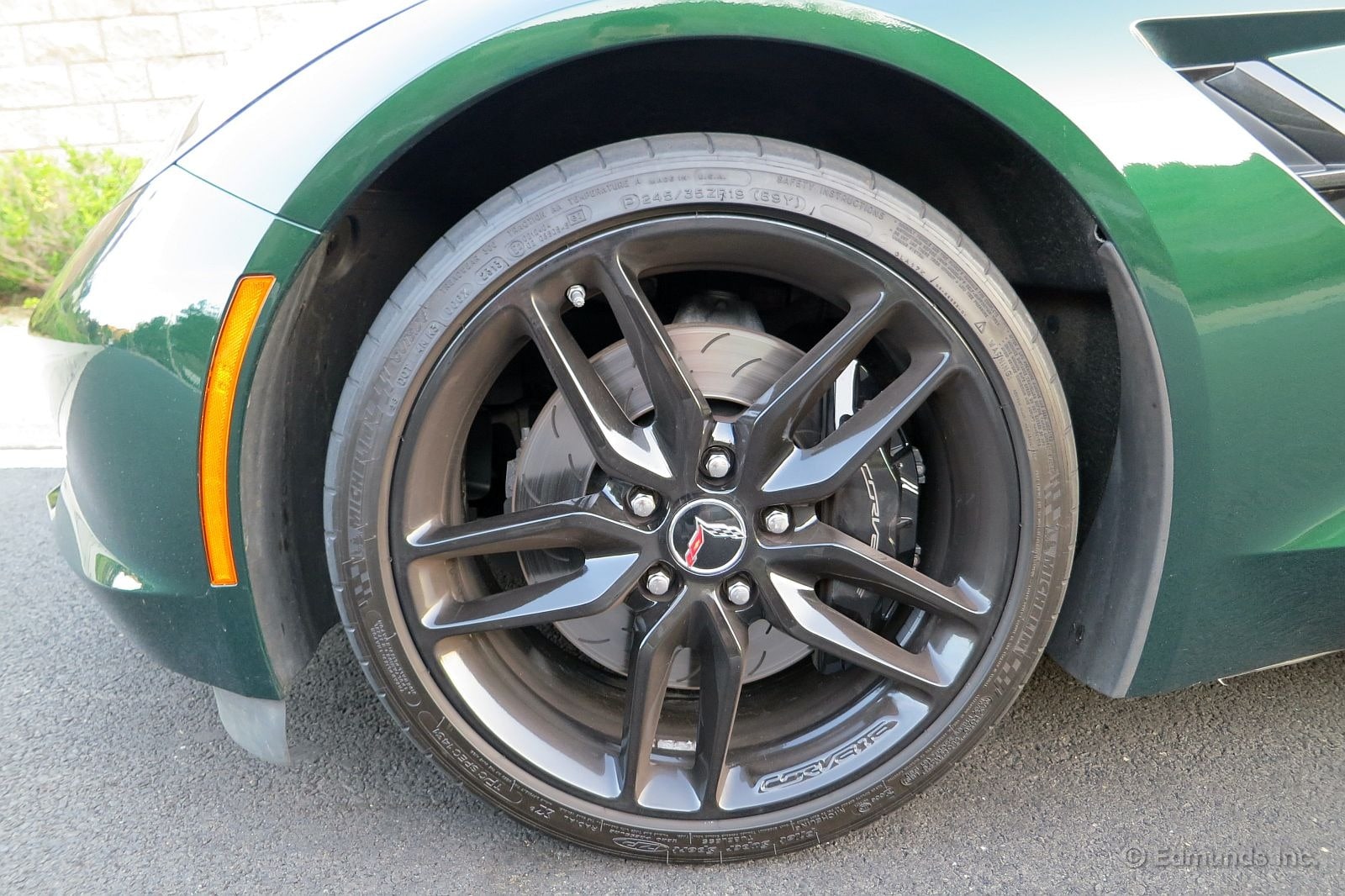
I'm noticing some brake judder on our 2014 Chevrolet Corvette Stingray. It's not evident all the time, just at certain speeds and with a certain amount of brake pressure.
It's most obvious when you're commuting home, going around 50 mph or so, and need some moderate brake pressure for slowing traffic ahead on the highway.
Interestingly, some editors have noticed it, others have not.
So how did we get it? Let the blamestorming begin.
Mike Magrath said he first felt vibrations through the brake pedal after Mark Takahashi had the Chevy over a fun-filled weekend.
Then there's ponderings that maybe the problem somehow developed during the Vette's recent snowy and cold road trip to Detroit and back.
Regardless, we'll get the brakes inspected soon.
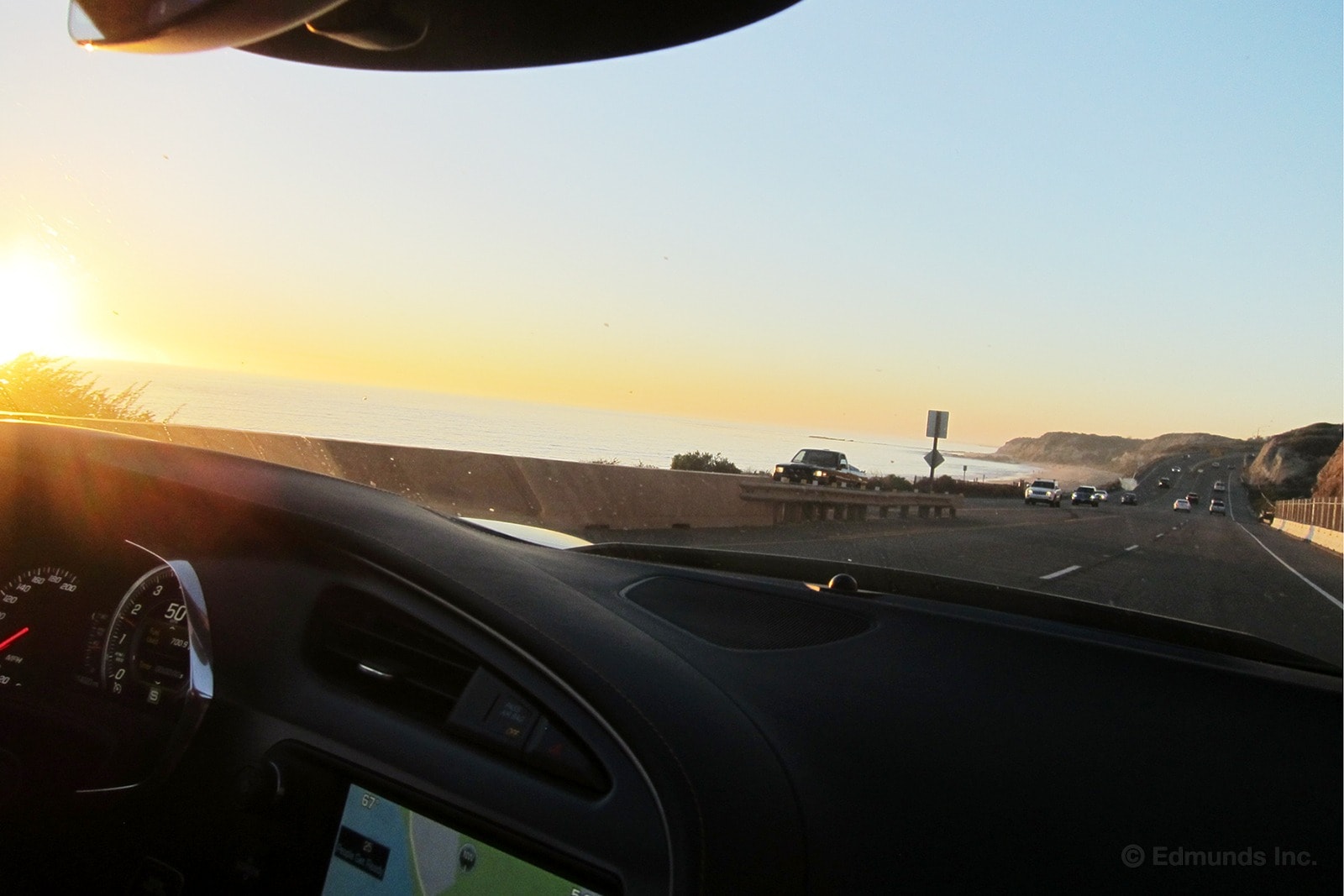
When Kurt and I fetched the Corvette from its Kentucky home for a new life in California, we reminded ourselves many times to enjoy the drive. The Corvette would be popular, we knew. We might never get seat time like this again.
Largely, that's been true. But when sign-outs went around for the weekend, which kicked off with Valentine's Day and ended with President's Day, the Corvette went unclaimed. This would not stand. This would also be my first time behind the wheel since the road trip, about 12,000 miles ago. I wanted to see which impressions held up.
The seats and driving position are as good as I remember. The ingress is tricky, yes, and in Magrath's case, painful. I'm not as tall as Magrath or Oldham, nor sit as upright, so I'm fine with the seating position and the views out the window. And there's still a sense of occasion sliding into these buckets, reinforced when you light up the V8. For all its international social climbing, you realize that the Corvette is really just a muscle car raised by good parents.
Out on the road again, the Stingray felt even smaller than I remember. And while an ill-fitting comparison, our long-term C5 Z06 felt much, much bigger (not surprisingly, the Z06 is three inches longer, despite a shorter wheelbase, and is about the same width as the Stingray). But one sensation that hasn't changed is that sweet spot between third and fourth gears, where torque seems endless and effortless. Simply tapping that vein every day would be enough to ward off the slightest tinge of buyer's remorse.
The nitpicks remain. Yep, the electronic door openers are still dumb, the exterior door openers not much better. The instrument panel still looks overwrought and incoherent. The audio system requires constant fussing of volume and tone control and the electric-assist steering could better communicate all the good things happening up front. More worrying is the more frequent thunk and clank accompanying gear changes. I'd been thinking about Mike's post and his comparison to the 911, the reference we all default to now, or at least until the F-Type forces itself into the conversation. Even Chevy can't remind you enough about how it benchmarked the 911 in development.
Mike says he'd ultimately take the 911 over the Stingray and his reasons are sound. The Porsche's interior wins by a wide mile. It's quieter and classier, in spite of switchgear matrix, and certainly as comfortable. Our 911's highway ride was hobbled by poor wheel and tire choice, but it still felt like the better car for milk runs. Steering feel is no contest.
Still, I think I'd pick the Corvette. And not just on price. If I had to spend $100,000, I'd park the Stingray next to a GTI or Mazda 3 that would make running errands suck less. It comes down to what you want. For all its pride and price, the Porsche just never felt that special. It's tempting to revert to those clichés about cold, clinical German precision measured against reckless American ingenuity. But this isn't even about Detroit versus Stuttgart.
Our 1985 Black Plague, for example, hit all the nerve centers. It was raw, loud, demanding and frustrating, but I loved driving that thing. New Porsches seem built for two buyers: those that seek its limits and those who limit their seeking to a good spot in the valet queue.
Before settling in for a Valentine evening with my better half, I took my daughter for her first ride in an open-top two-seater. The timing never worked out with our 911 or the SLS AMG. Although the targa lacked the full ragtop exposure, it didn't disappoint. We drove along the coast and I asked her to take photos. After sunset, we turned inland and stopped at the Taiwanese bakery for overpriced cakes and sweet breads to take home for mom.
On the way, we even pulled alongside Barry Meguiar, patriarch of the Meguiar's car care enterprise, in his impeccable black S63. He rolled down the window, flashing a thumbs-up. He asked how we liked the car. I asked if he wanted to race. With his lovely wife in the passenger seat, he declined. "Beautiful," he said, before pulling away.
I suspect Barry, stoked as he is on great cars like the 911, might also park a Stingray in his driveway.
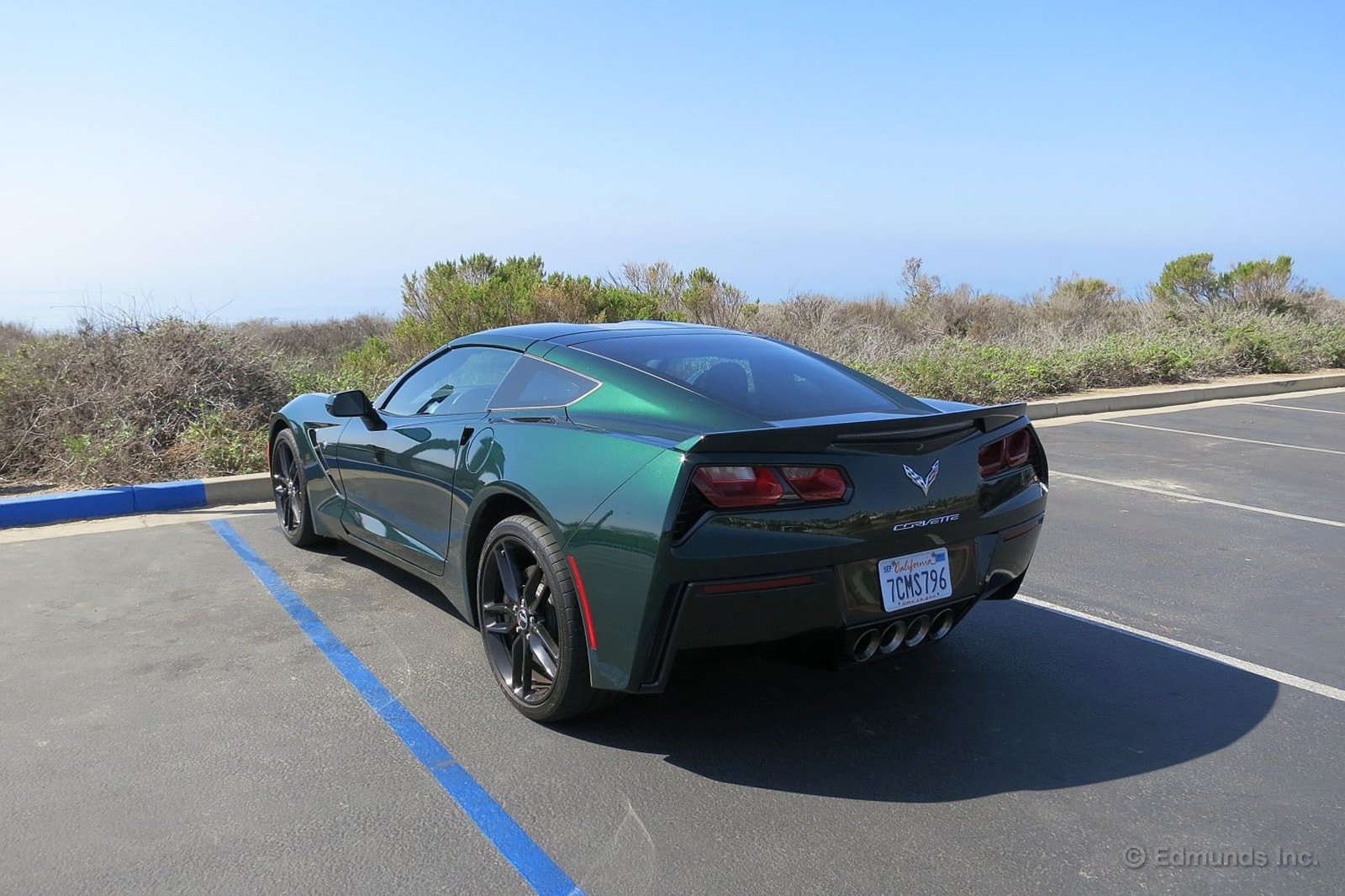
I've only spent a few days in our 2014 Chevrolet Corvette Stingray long-termer so far. But it seems nearly every time I get in or out of the new Vette, someone comes up to me to say how much they like the new car.
We hear words like "bitchin," "rad car, dude," and "I love the new body." I'm pretty sure with the last one they were talking about the car, not me...
Honestly, it's a near-constant occurrence that someone is complimenting the C7, or waving/smiling/giving thumbs-up from another car. It's truly cool how excited people get about a new Corvette.
What's funny is that, while I absolutely love driving the new Stingray, I'm lukewarm on its styling. To me it seems a bit over-contrived. Like someone was trying too hard.
The rear and the rear three-quarter areas are the busiest to me. Of course the crazy-tall tire-to-wheel well height isn't exactly helping things.
Maybe with a little more time I'll warm up to it.
I'll say two things though: First, the Lime Rock Green/black wheels color scheme is helping the car's cause with folks. It's classy.
Second, I spend most of the time driving the Vette, not looking at it. And when I'm driving it, I'm having such a blast that I never think about its styling.

We rolled 1,700 miles on our 2014 Chevrolet Corvette Stingray in February. This was a rather uneventful month, considering we spent January driving it to and from Detroit. None of our lifetime fuel economy milestones were broken. And we averaged 18.5 mpg during this time.
Worst Fill MPG: 9.5 mpg
Best Fill MPG: 30.8 mpg
Average Lifetime MPG: 20.3 mpg
EPA MPG Rating: 17 combined (17 city / 29 highway)
Best Range: 471.9 miles
Current Odometer: 15,150 miles
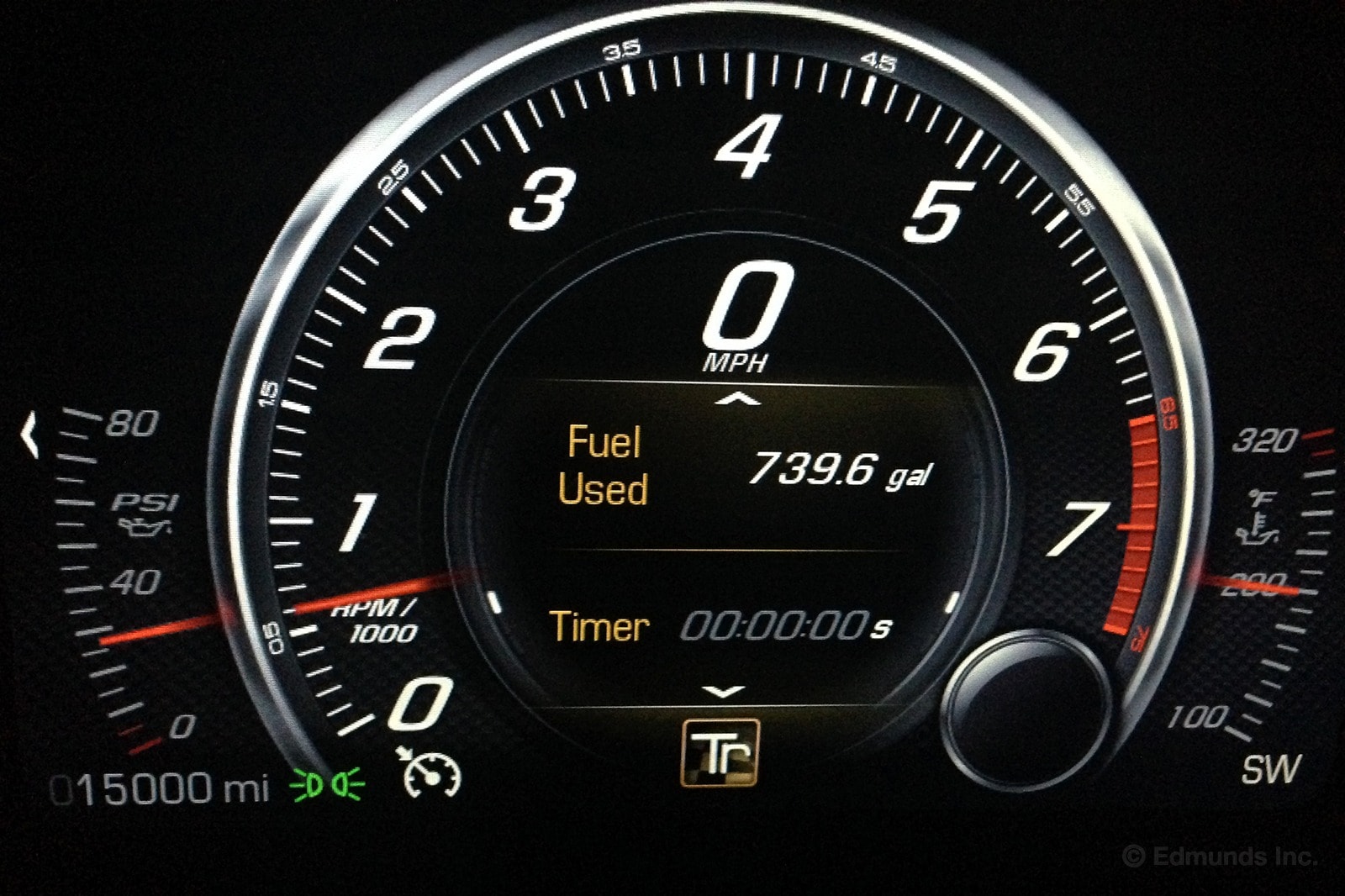
We introduced our long-term 2014 Chevy Corvette Stingray on October 7, 2013. On February 26, 2014, we registered our 15,000 mile. That's something like 142 days. A little division tells us we're averaging about 106 miles per day.
Of course, we don't drive it 105 miles per day. But we did drive it to Detroit and back to L.A. again.
During that time, the 'Vette's been exceptional. We had one service, one flat tire and have a slight brake jutter we still need to get looked at.
And now that it's at 15,000 miles, we're going to need another service.
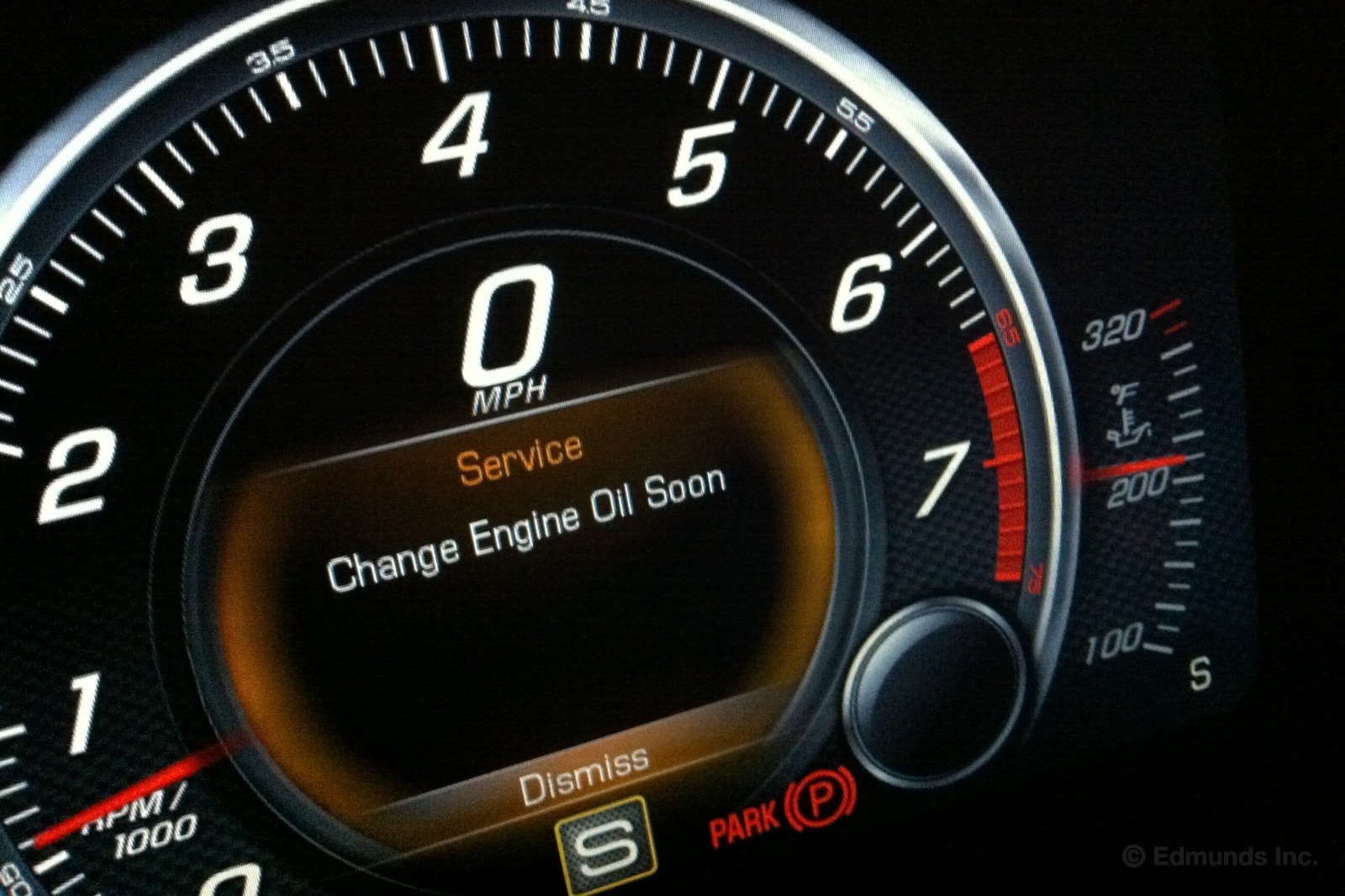
Like all modern cars, our long-term 2014 Chevrolet Corvette Stingray provides handy alerts to notify the driver of oil changes, impending doom and weather in regions not necessarily near your location.
In the case of the Stingray, the alert is usefully insistent, reappearing upon each key cycle until, presumably, reset by the service department. With the word "soon" in there, it's also casual enough that it's not likely to strike instant and unnecessary panic among overly cautious owners.
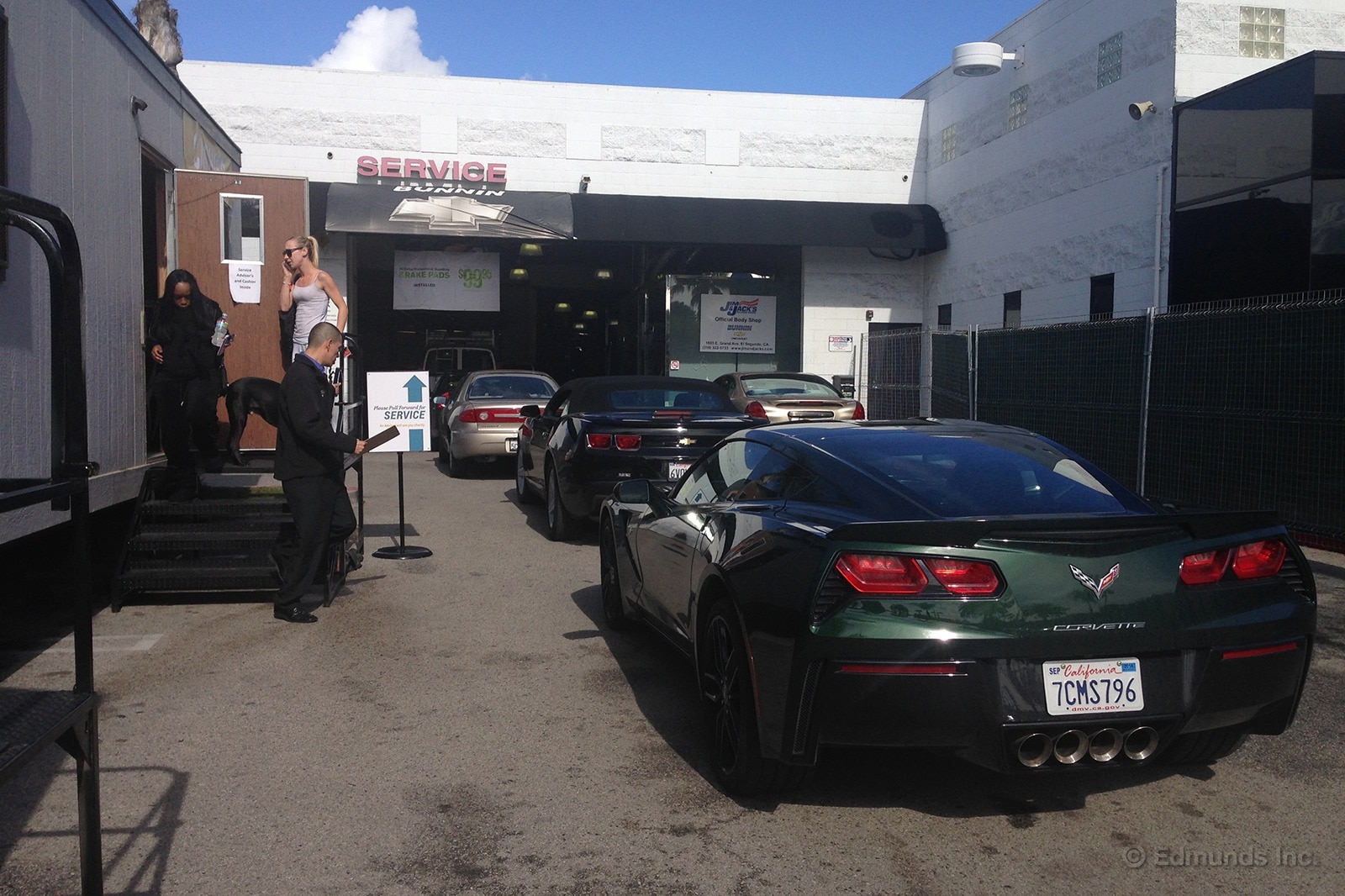
Well that didn't take long. On January 13, we posted about our first service, scheduled for 7,500 miles, for our long term 2014 Chevy Corvette Stingray.
Already the car is over 15,000 miles and calling for its second service. Looks like we like driving this car. Well, most of the time.
Once again we called on Bunnin Chevrolet in Culver City to handle the service. In part because they did a fine job last time and in part because they're the only game in town for Chevy service right now. At least without having to drive out of the county. The sales portion of the dealership is currently under construction. It was quite small and dark before. Service was handled out of this lovely trailer.
Thanks to Chevy's free-service plane (2 years or 4 services, whichever comes first), there was no charge and we got the car in just a few hours.
We did mention the brake jutter and asked them to take a look. They did a test drive and reported that they didn't notice it. Perhaps we need to take them out next time and show them how hard Corvette brakes can be used...
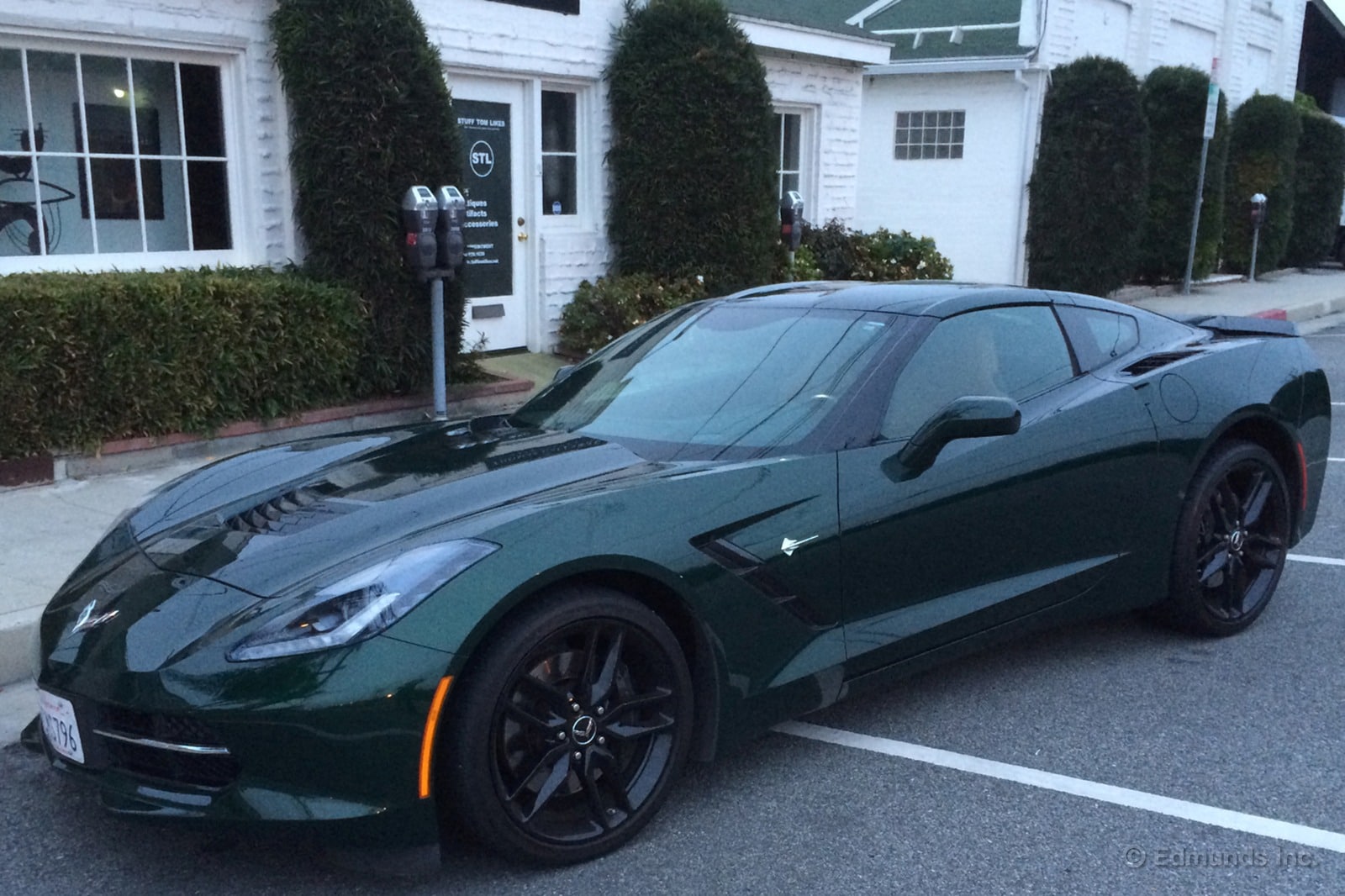
In driving school, instructors tell you to scan the road ahead rather than focusing just on what's going on immediately in front of you. Distance lets you plan and react.

The head-up display in our 2014 Chevrolet Corvette Stingray is a great way to ensure that you take the long view. If you have head-up display in your car, do you consistently use it? What views are available? If you don't have it in your current car, would you want it in the next one?
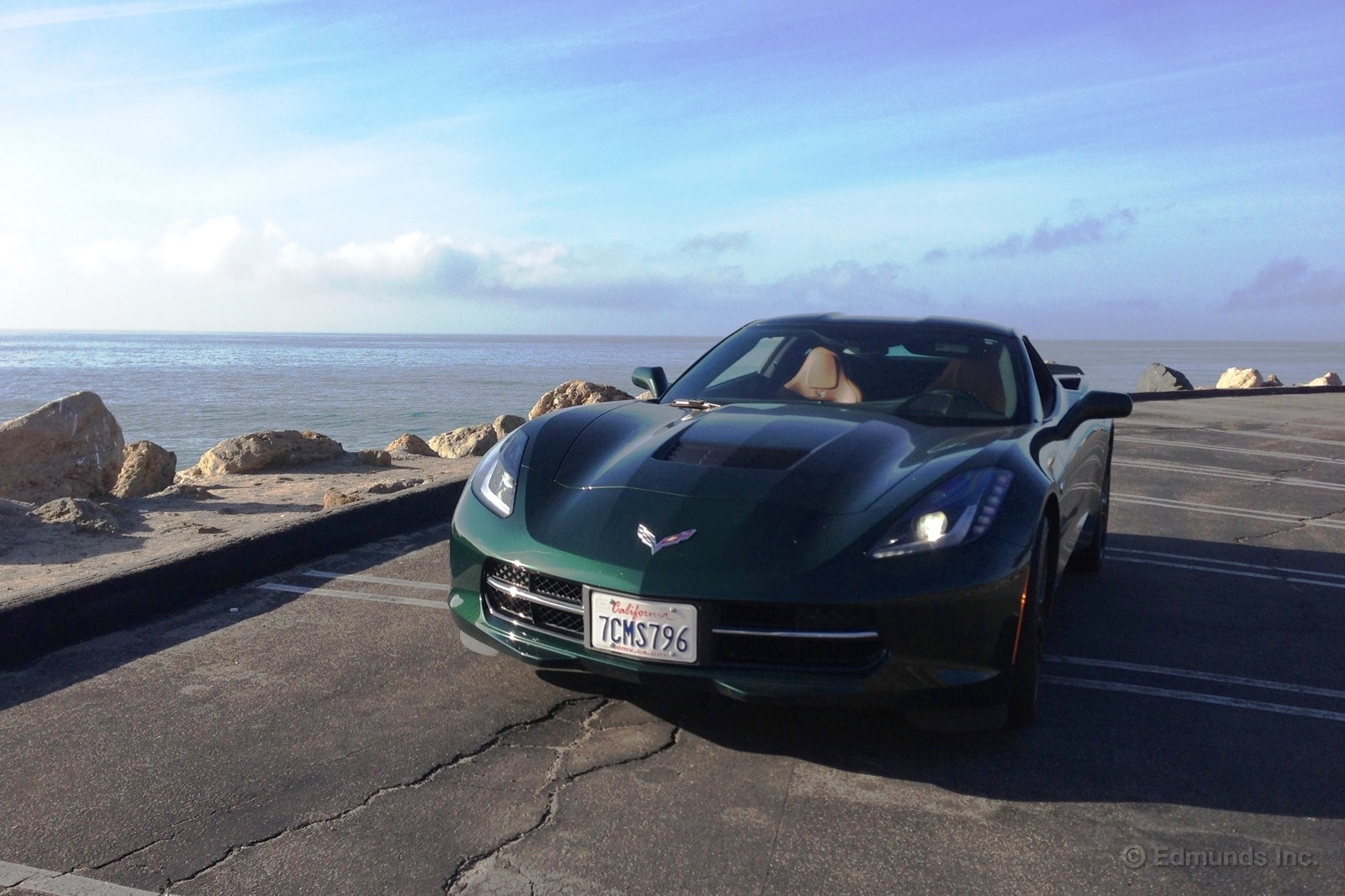
My friend Scott was interested in buying a 2014 Chevrolet Corvette Stingray. He contemplated getting the Z51 performance package, since it has made all the headlines and helped the Corvette put up some big numbers on the track.
But it seems as though everyone in the market for a Corvette has the same idea and consequently, supply is low on Z51-equipped cars. Scott was told that going for a Z51 would add an additional five weeks to his delivery time. Plus, it added $4,000 to the price of the car. This raised the question: Do you really need the Z51 package?
First let's take a look at what exactly comes in the Z51 package. From the Chevrolet Web site:
• Larger 19-inch front and 20-inch rear wheels
• Dry sump oil system
• Electronic Limited Slip Differential
• Larger front brakes (13.6 inch vs. 12.6 inch) with black calipers
• Specific shocks, springs and stabilizer bars
• Differential and transmission cooling
• Unique Aero Package that reduces lift for high-speed stability
• Michelin Pilot Super Sport ZP summer-only tires that are aggressively tuned to provide outstanding handling, grip and road-holding capability
• Available Magnetic Selective Ride Control and Performance Traction Management
• HD Cooling
• Slotted Brake Rotors
• Performance Gear Ratios
There's plenty of content in the package, and if you ask enthusiasts, I'm sure they'd say these are all "must have" items. But Scott has no plans to take the car to the track. He's just a regular guy who wants a good-looking sports car with a "big American V8," (He's British, BTW). By passing on the Z51, he could get the car sooner and save $4,000.
We haven't had the chance to test a non-Z51 Corvette, but I'm going to assume it has a softer ride since it is more tuned for the road than all-out performance. Our Corvette has Magnetic Selective Ride Control (MSRC), a $1,795 option only available on the Z51. A Corvette forum poster (so take this with a grain of salt) has likened the ride in a base to that of a Z51 with MSRC set to Touring. If that's the case, it's a good thing. Touring is the mode that a number of the Edmunds editors use, myself included.
I also wondered if the car would have better resale value with the Z51 package. After a brief talk with our pricing analysts, I learned it isn't much of a factor. Z51-equipped cars would have greater value in years to come, but only if the package were rare. It's not, at least not for the 2014 model year.
What would you do, wait the five weeks for the Z51 or go without it?
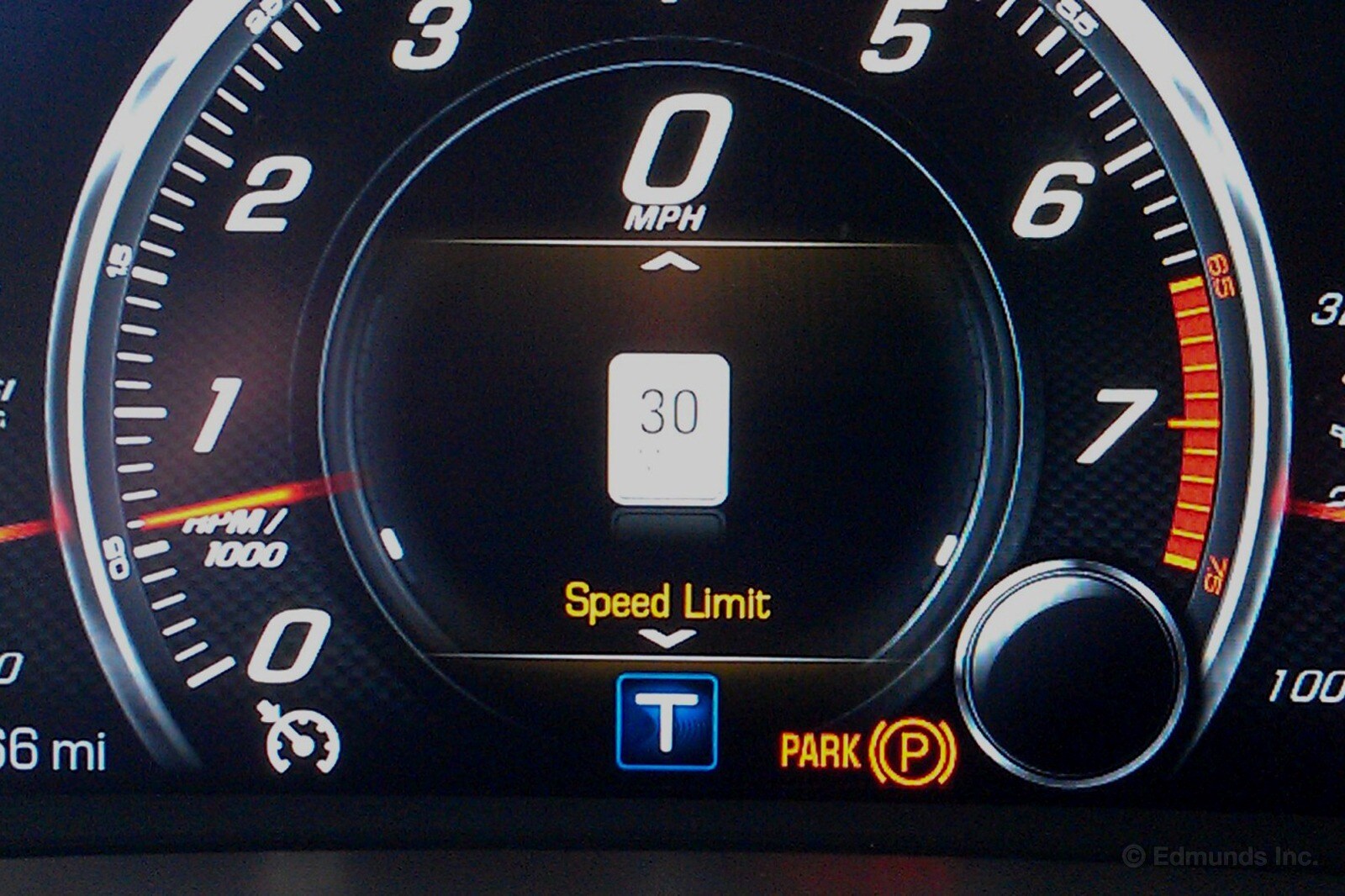
When you're driving a car that gathers speed and cruises as effortlessly as the Corvette, having a speed limit reminder is certainly a welcome feature.
Cruising along on an unfamiliar stretch of wide-open highway, for example, where speed limit signs are rare, you're sans detector and the limit itself fluctuates, it's nice to be able to see at a glance whether it's 55 mph or 65 mph.
Although you can't see it in the photo (it was like trying to photograph a computer screen), the display does have "mph" underneath the "30" so it effectively mimics a speed limit sign.
This readout is just one of the many functions you can select for this central display. It can also show you trip data (including fuel economy stats), all four tire pressures, infotainment system info and a secondary navi display.
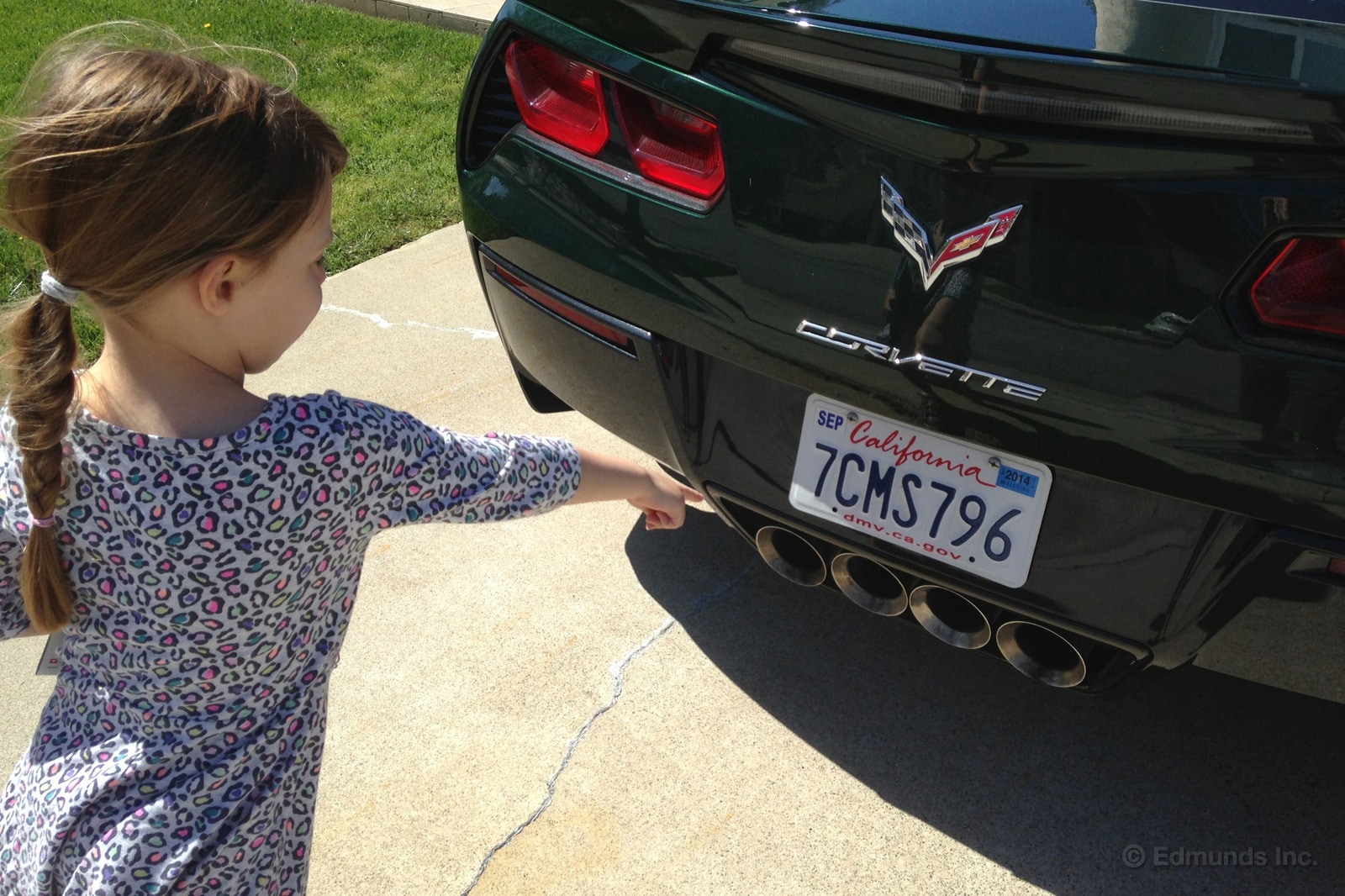
"Oh my goodness. Look at all those pipes."
That was all she said. This is good, I believe.
What do you think? Too many pipes?
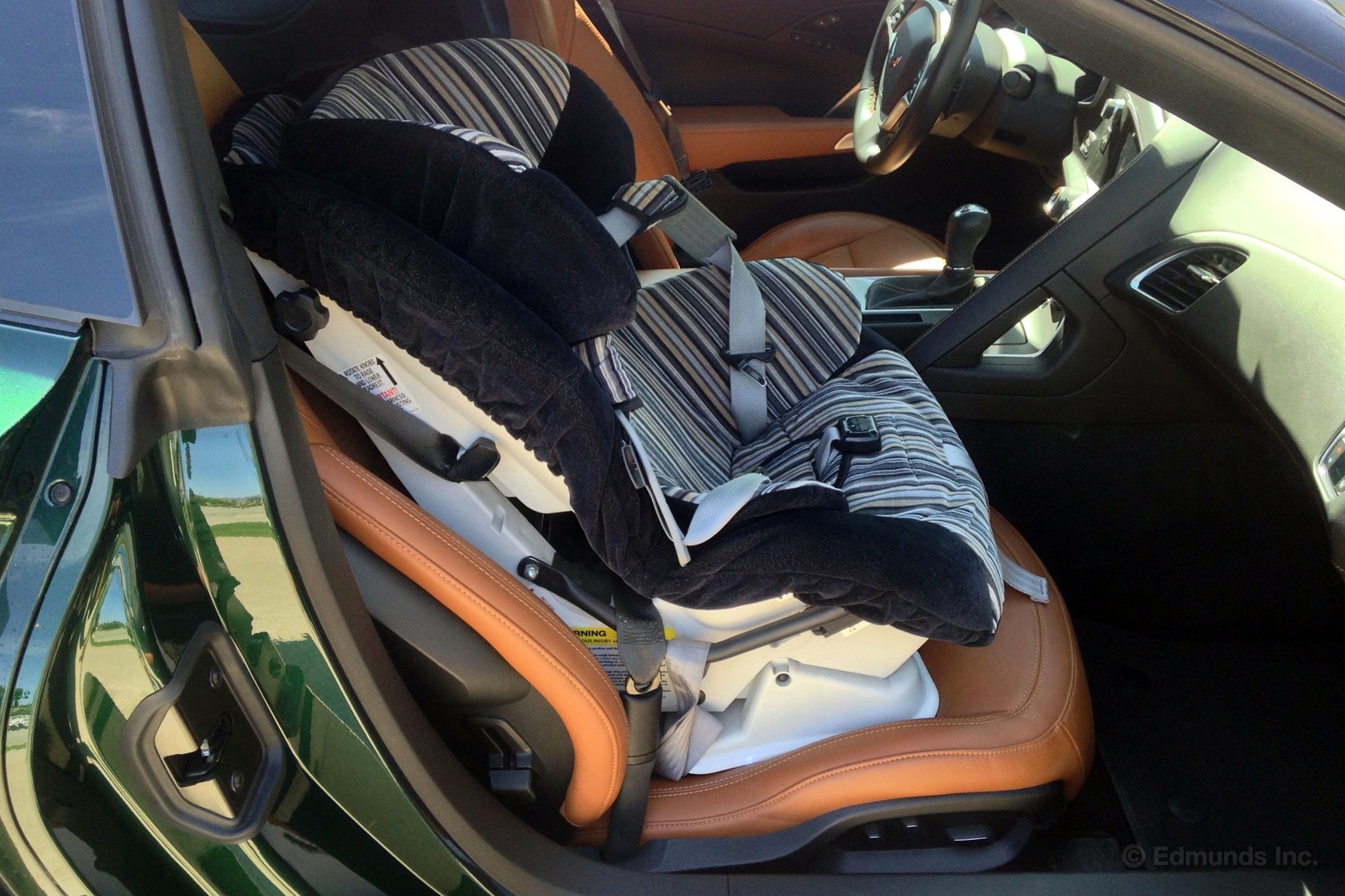
Technically, there's no reason one can't install a child seat in the front of the 2014 Chevy Corvette Stingray. Practically, there are a few reasons.
Mounting in the front seat means there are neither LATCH fasteners nor a top tether. Sensors in the front seat do disable the passenger-side airbag. Even so, I've never loved securing a child seat with the seatbelt alone as it always feels less secure than using LATCH fasteners and a top tether.
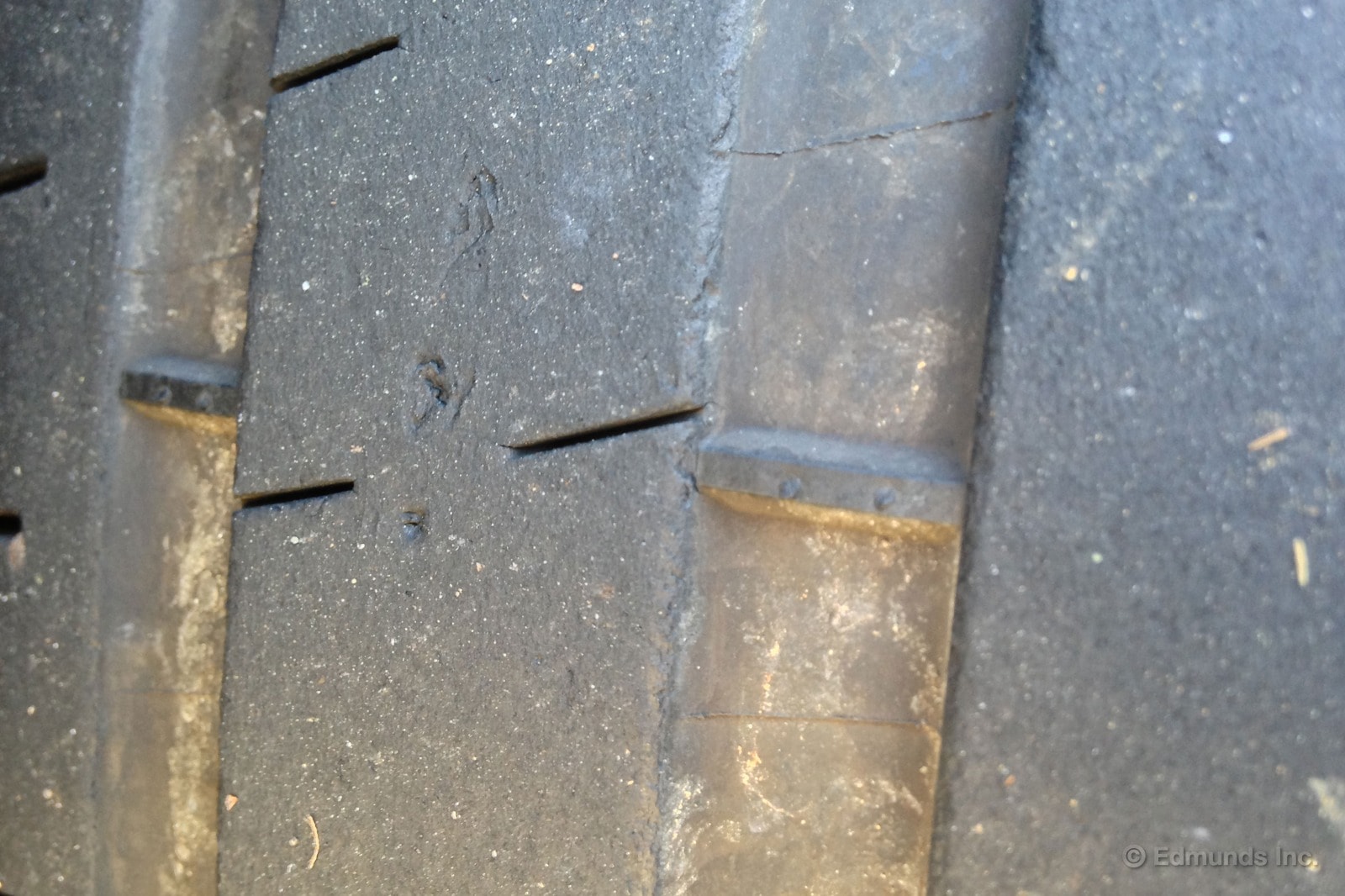
I hypothesized way back last year, long before we got number 23, that the Stingray wears its front tires faster than it wears its rears, an unusual trait for a rear-drive car this powerful and a sure sign of a genuinely balanced sports car.
It looks like I was right.
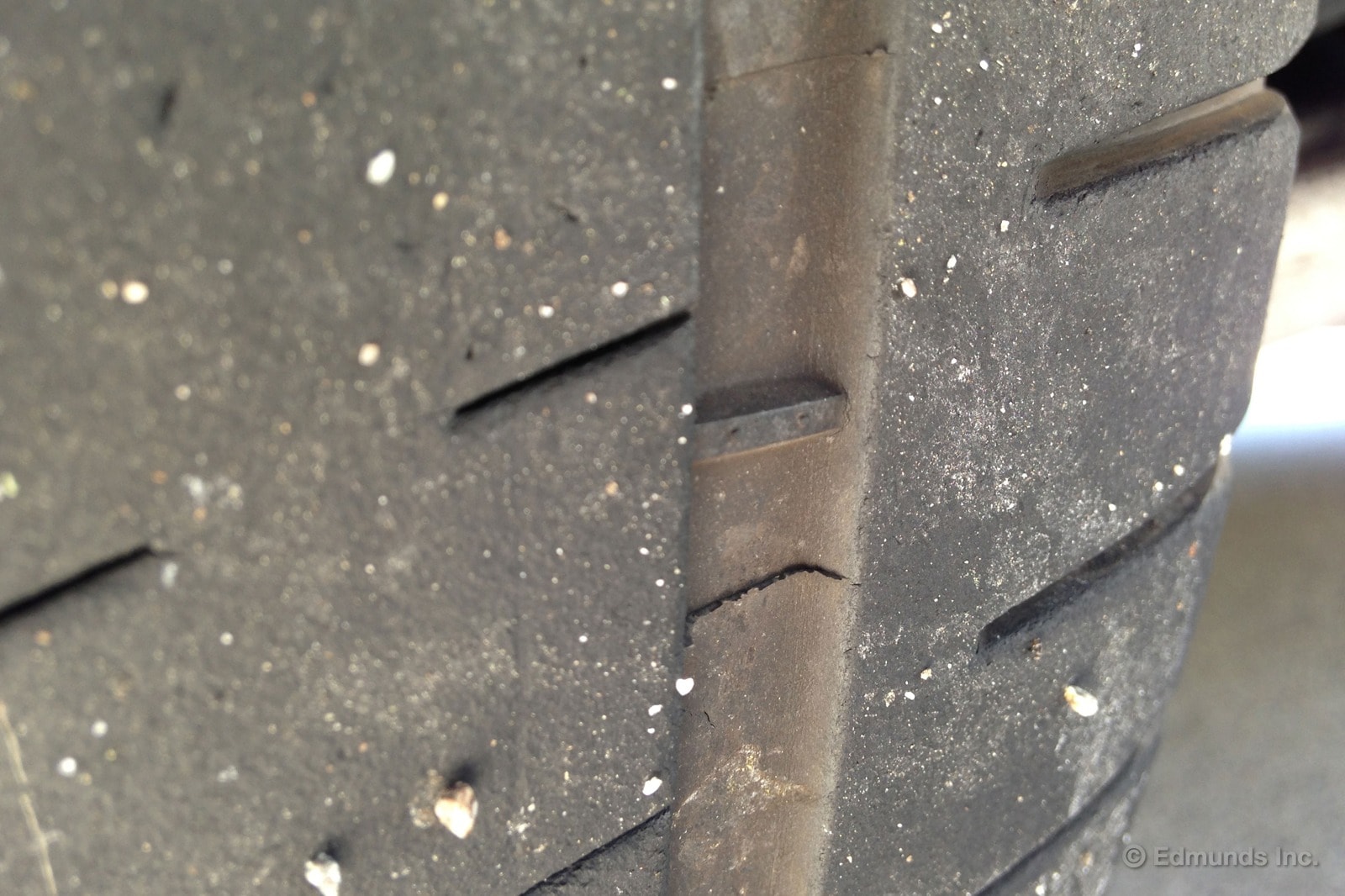
As of this writing our Stingray has almost exactly 16,000 miles on the clock. Figuring about 4,600 of those miles were earned to Detroit and back when the car was fitted with snow tires, our Michelin Pilot Super Sport ZP tires have about 11,400 miles on them. And, as predicted, the front tires are more worn than the rears.
The uppermost photo here shows the wear indicators on the inside of the right front tire. The lower photo shows the wear indicators on the inside of the left rear tire.
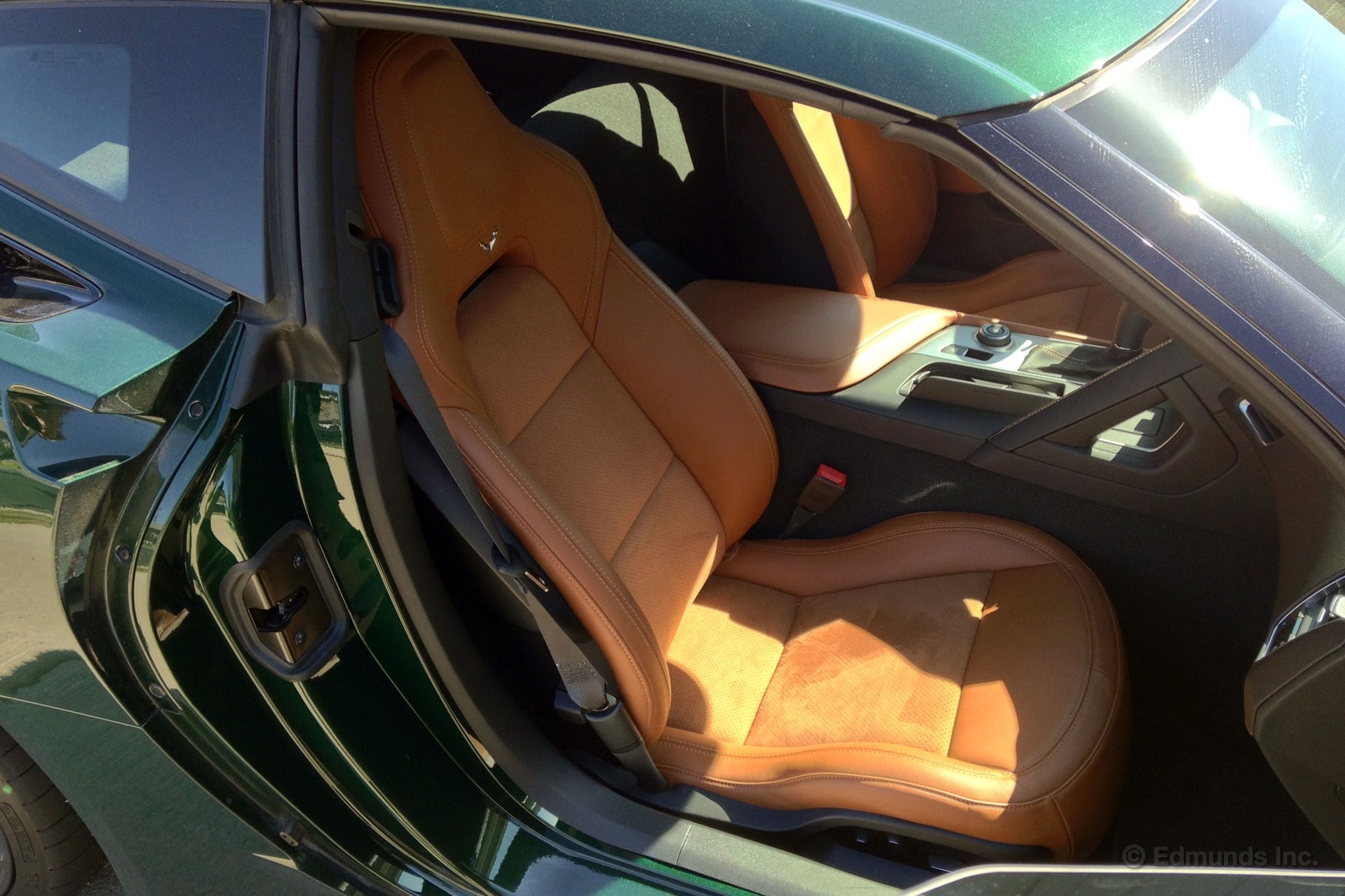
It's official, our 2014 Chevy Corvette Stingray is getting a bit creaky.
With the passenger seat slid short of its furthest-back position and occupied by a passenger, it creaks. I noticed this last week when I was driving the car hard on a back road. My passenger, who's accustomed to older, less-civilized cars, didn't notice.
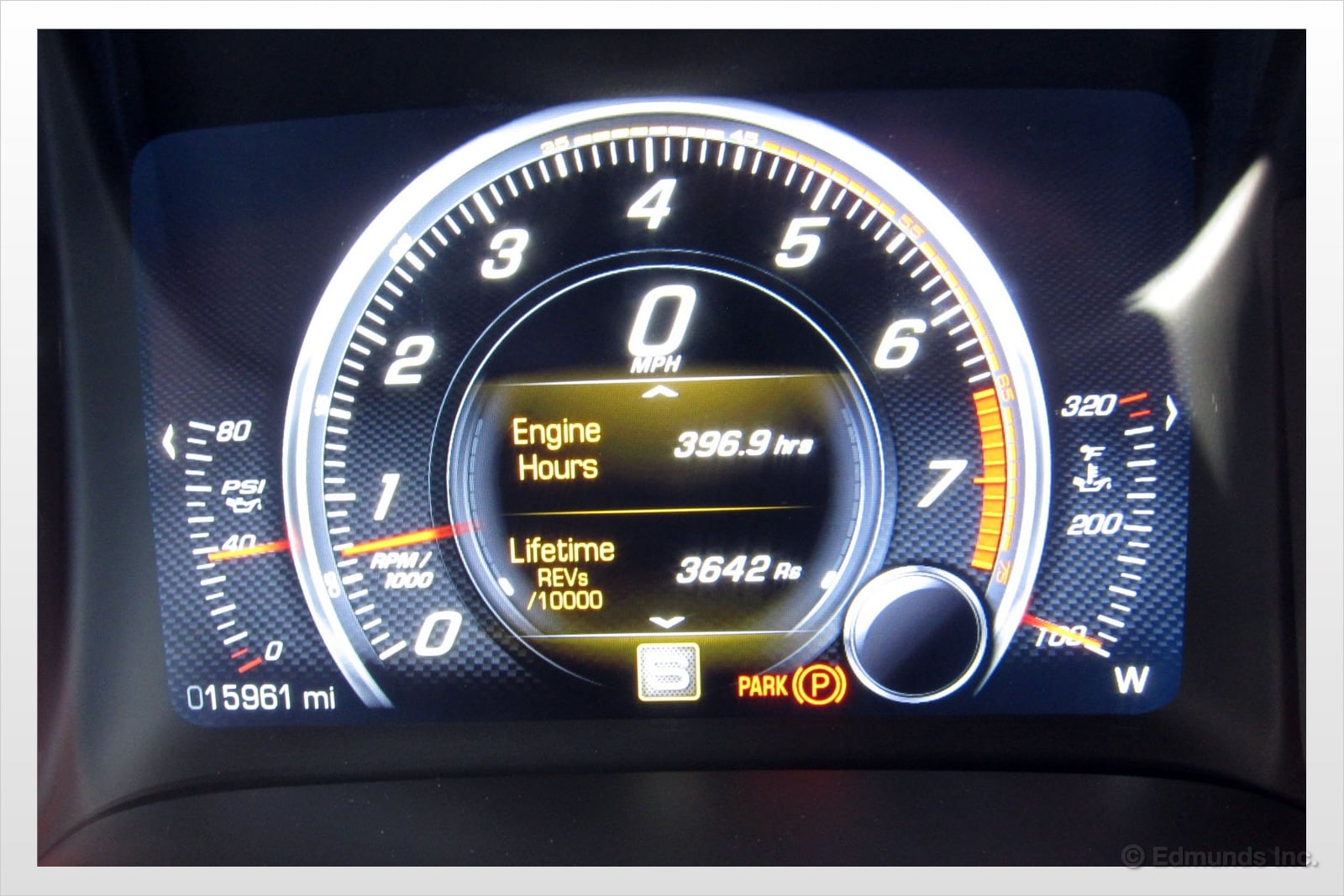
Among the many screens in the 2014 Chevy Corvette Stingray's instrument cluster is this one documenting engine hours and lifetime revolutions. It's gratuitous.
On the up side, I now know that roughly 100,000 revolutions are required to get me from home to work. More useful would be a telltale showing peak rpm over the engine's life. Or peak coolant temperature. Or peak oil temperature.
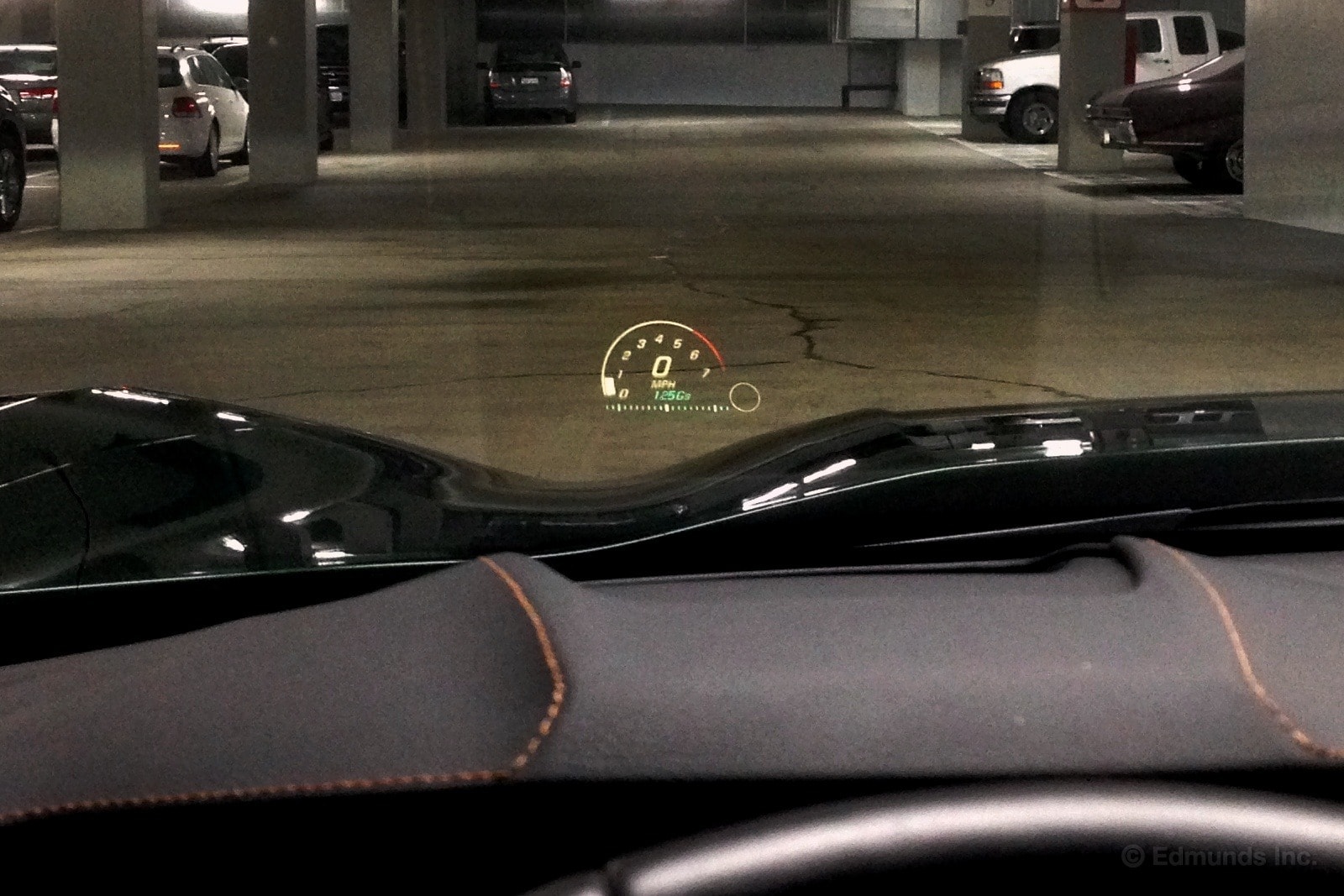
It had been months since I had driven our 2014 Chevrolet Corvette Stingray. After I started it, I glanced through the windshield and re-discovered the head-up display. As I was reaching for the button to shut it off (I know, I'm in the minority on this), I noticed it had a secret to tell. It would appear that a previous driver had, ahem, "come to grips" with the Corvette's prodigious grip in corners and the exploit was stored in the display.
Forgive the attempt to photograph and share said achievement, but on the meter that shows g-forces, it reads, "1.25 Gs."
Well done, sir or madam. The best I could manage was a mere 1.03g at the test track.
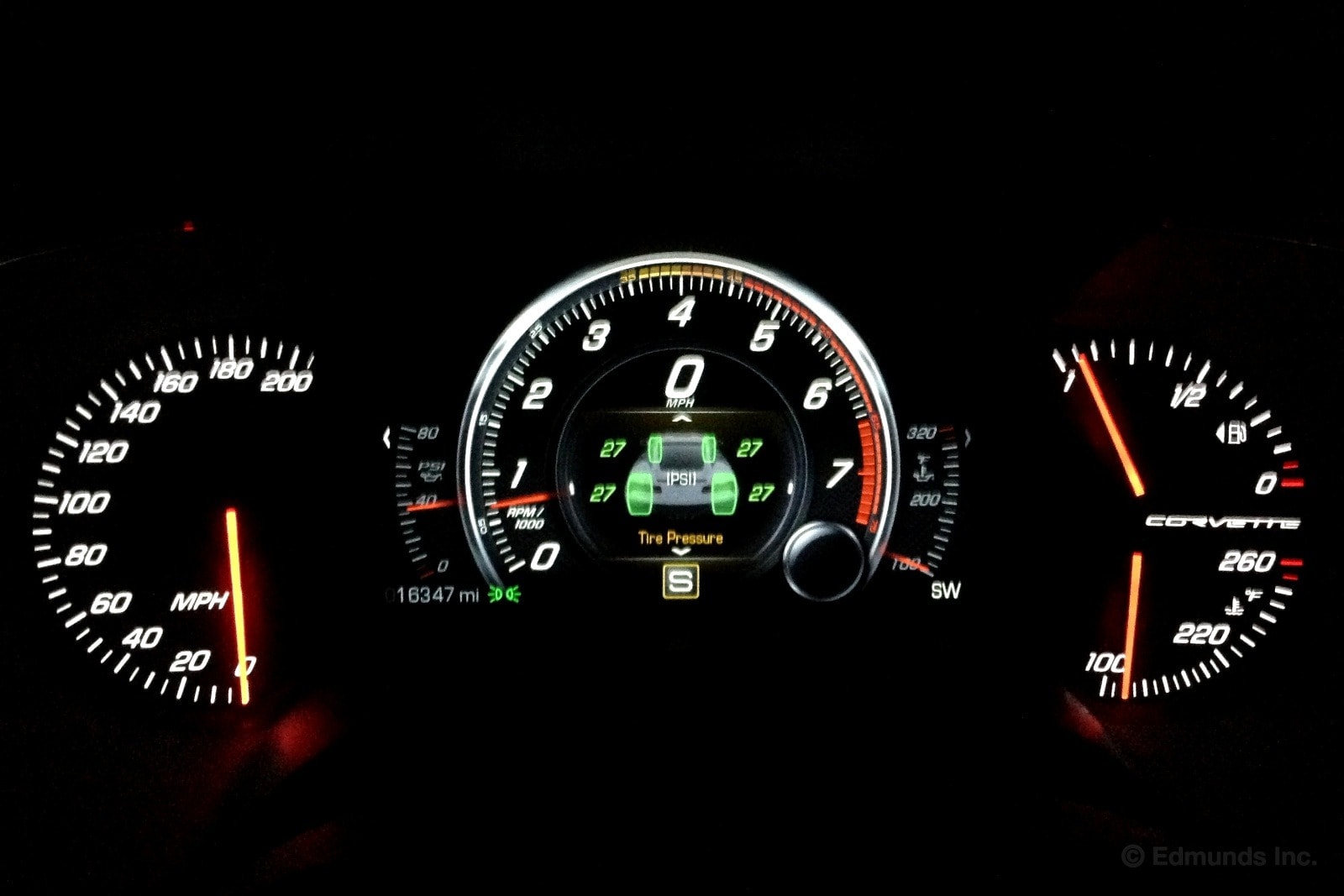
As you may know, I'm a stickler for tire pressure. That's why I love it when manufacturers make it this easy and intuitive: The numbers on our Corvette Stingray's color display are large, color-coded, and oriented in the same direction as the car.
Compare this to our departed 2013 Cadillac ATS's display that scores two-and-a-half out of three in this regard.
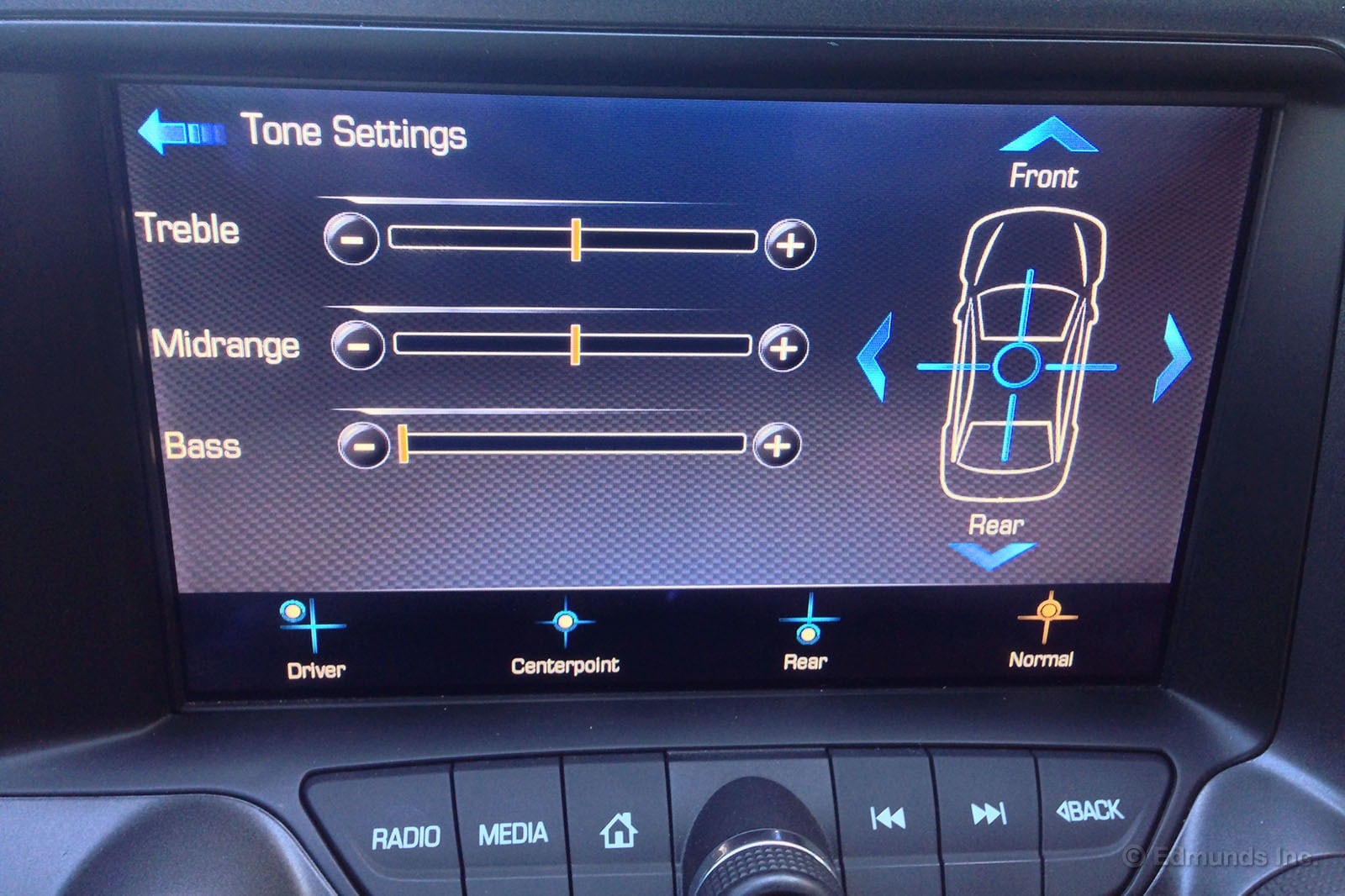
Boooooooooooooooooom. Booooooooooooooom. Buuuuuuzzzzzzzzz.
Who knew John Denver rocked this hard?
When we went to drive the 2014 Chevy Corvette Stingray, Corvette Chief Engineer Tadge Juechter said "No Corvette has ever boomed like this one." He was, unfortunately, correct.
The bass levels in our 2014 Chevy Corvette Stingray are completely out of control and it kills the music. It's a bit like being in one of those cars you see cruising the strip at night, rattling so hard it shakes its side-view mirrors off, except the tolerances in the 'Vette are tight and there's no rattling. There's also no way to listen to music without having the bass blow it out, or making everyone sound like the Vienna Boys Choir.
There are a few things that go into producing a really good stereo. These things include speaker quality, amplifier power, volume of the speaker enclosure, volume of the area to be filled with sound, the direction of the speakers and the approximate path the sound waves will take before banging off of your eardrums and bowels. Guess which one of these is toughest in cars?
Manufacturers walk to Mordor and back to put speakers in cars. They have to be good, cheap and light. Of this triangle, any racecar owner will tell you "pick two." Carmakers try to pick all three and usually come out with something pretty darned tolerable so I'm going to go out on a limb and say it's not the power or the speakers themselves that are causing the problem. And because Bose isn't new to this game, I'm guessing that the 14-liter bass enclosure (standard on the 2LT) with two subwoofers is the right size. So, what's left?
The space where the sound goes and the placement of the speakers? That's my guess.
To not impede the odd cargo area of the Corvette, they tucked the subs into the back of the hatch facing forwards in the narrowest part of the hatch. Then there's a big pane of glass above and then there's a big open cabin. By the time the bass gets to you, it's just a boomy mess that overpowers everything including the exhaust. But hey, at least it's also really muddy and seems to get confused when presented with two bass notes in rapid succession.
The subs don't seem to be mobile, so they're stuck where they are. I'm going to experiment one of these days with disconnecting one or both of the woofers in the hopes of having a decent stereo in what is, except for the seating position only a recumbent bicycling enthusiast could tolerate, a phenomenal car.
PS: No, turning off the music and "listening to the engine" isn't an acceptable alternative.
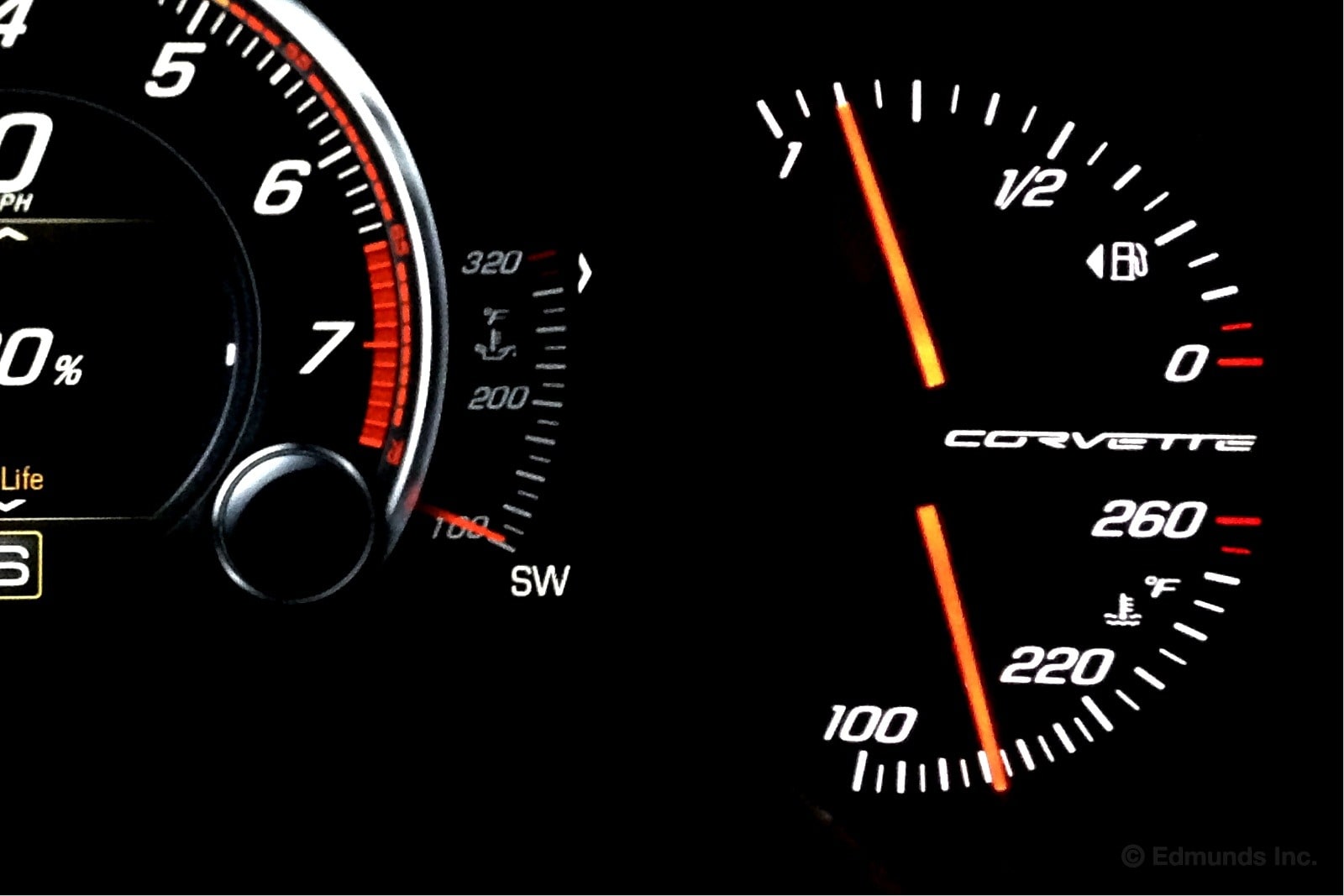
Look, we've proven that it is possible to achieve the EPA's 29 mpg highway figure with our own 30.8 mpg over a 271-mile "jaunt." But seriously, this is a fire-breathing sports car extraordinaire and we should drive it as such. Fuel economy be damned.
We added 1,417 miles in March, and lowered the worst fill MPG to a new low of 9.4 mpg — as it should be.
Here are the running totals and averages:
Worst Fill MPG: 9.4
Best Fill MPG: 30.8
Average Lifetime MPG: 19.8
EPA MPG Rating: Combined 21 (17 City/29 Highway)
Best Range: 471.9 miles
Current Odometer: 16,567 miles
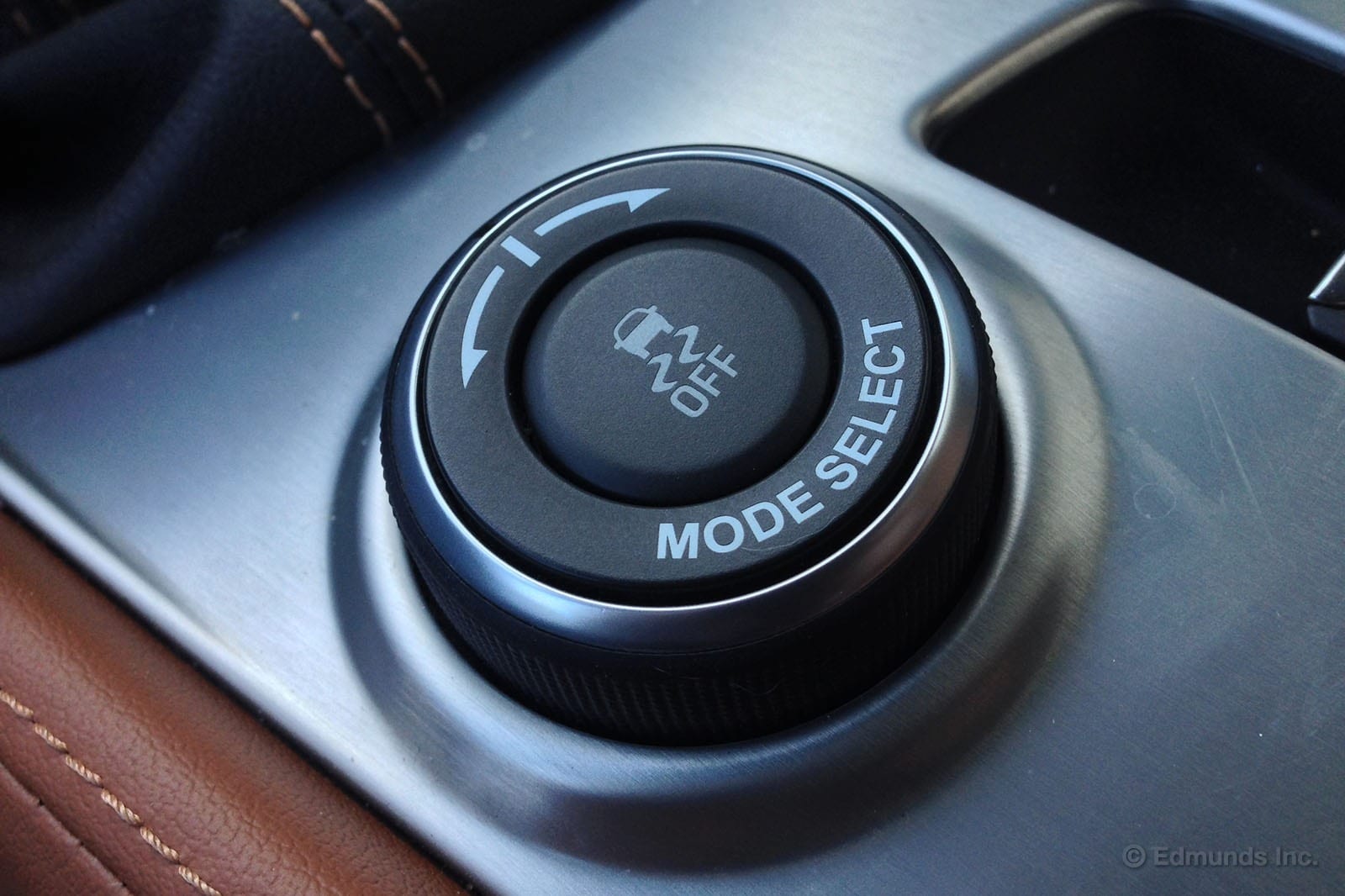
Our 2014 Chevrolet Corvette Stingray has some of the most technologically advanced performance feature available on, well, any car. The Magnetorheological shocks go from super comfy to super stiff and are essentially magic. The Performance Traction Management reduces the risk of catastrophic crashing AND makes you faster around a road course. It's also magic. And then there's the variable exhaust. Not as fancy as the other stuff, but it sure does work.
The trouble is they've bundled these features together in ways I don't like. Is it too much to ask for a "Custom" mode?

Here's how it works...
Normally, the car is in T. T for Tour. In this mode, the suspension's all comfy, the exhaust is all quiet, the stability control is all-controlling and the throttle has about as much sensitivity as a frost-bitten foot. Slow mode, right? Nope. With this setup we recorded a slalom speed of 68 mph, cleared the quarter-mile in 13 seconds and pulled .99g on the skidpad.
Turn the dial a little more and you get Sport Mode. In Sport, the exhaust mode mercifully switches to its burbley Sport mode, the steering goes to sport twitchiness, the limited slip goes to mode 2 or 3, the Magnetic Selective Ride Control goes to bumpy-bumpy sport mode and, best of all the throttle progression is switched to sport. This switches the throttle from requiring a swift kick, to a gentle poke to get that motor movin'. It's the way the engine should always respond.
Turn it one more step and you get Tr for Track. This is my favorite mode. It enhances the Sport mode with a Track exhaust setting, track-oriented traction control (hooray, powerslides), turns the suspension to track and allows the use of the competition PTM functions.
Unfortunately, the streets of Los Angeles aren't made for a track suspension setting so driving this way keeps my attention with the fun noises, good throttle response, quick steering and more lenient nannies, but shakes my brainstem loose. Not good for the road, not good for rough tracks.
So here's what I want: Custom Mode. With this mode I would be able to customize the car for me. Track exhaust, Track steering, Sport throttle, Track traction control and TOURING suspension. Both Audi and BMW have programmable settings on their sporty offerings and Porsche allows for suspension control separate from the other sport settings.
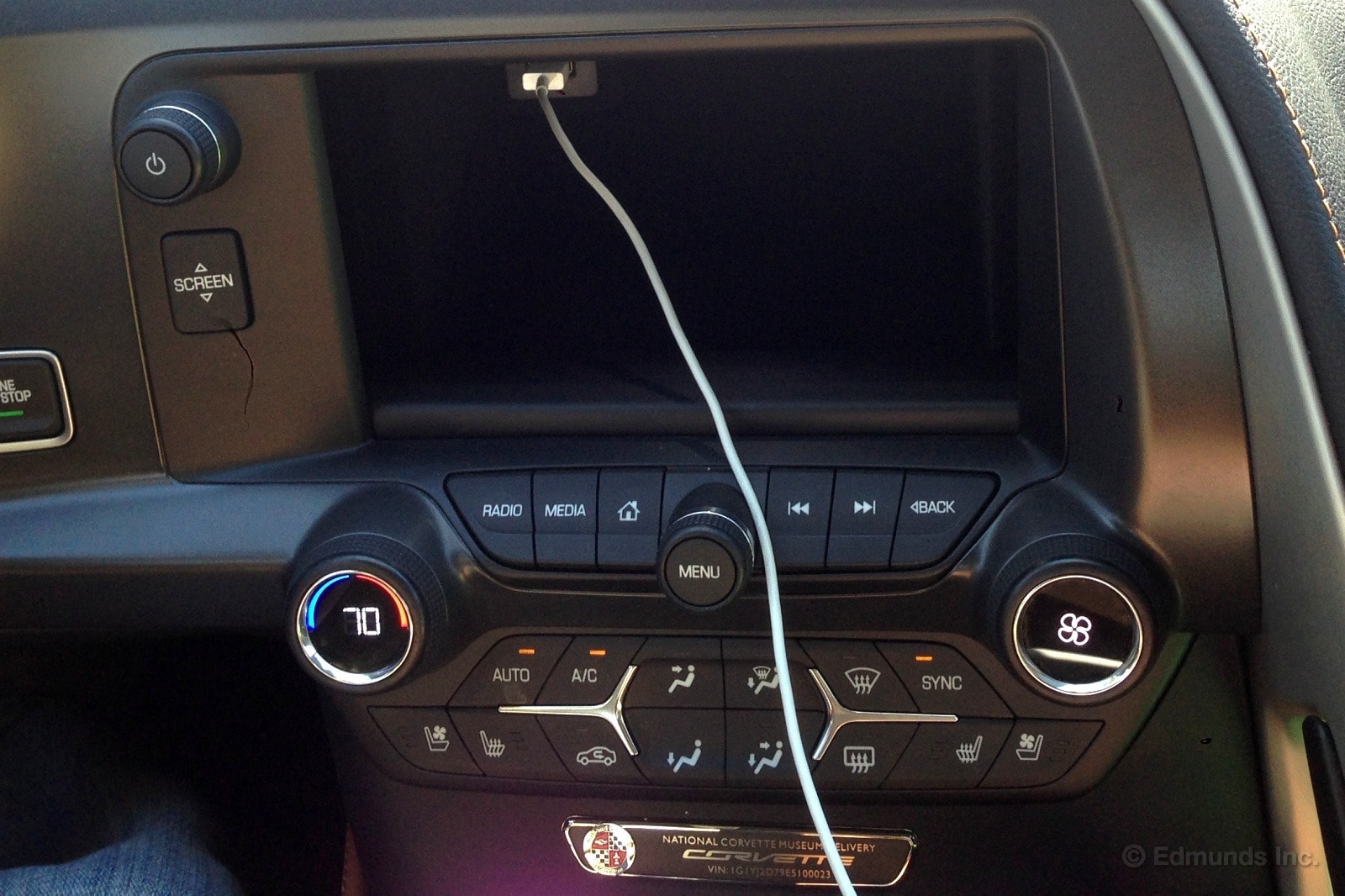
I suppose this would fall under, "Well, what did you think would happen?" but to satisfy my curiosity, I tried to use the hidden USB port behind the 2014 Chevrolet Corvette Stingray 's touch screen and then close the door.
Click through to see the video of what happens.
Yes, it has pinch protection (or anti-cord cutting) built into the motorized door's action. Luckily, there are two more USB ports located in the center armrest if you'd like to keep your device handy while connected to the audio system. Side note: We're all grateful GM has finally addressed this often-used compartment that used to act as a convection oven. A little heat shield never hurt anybody.
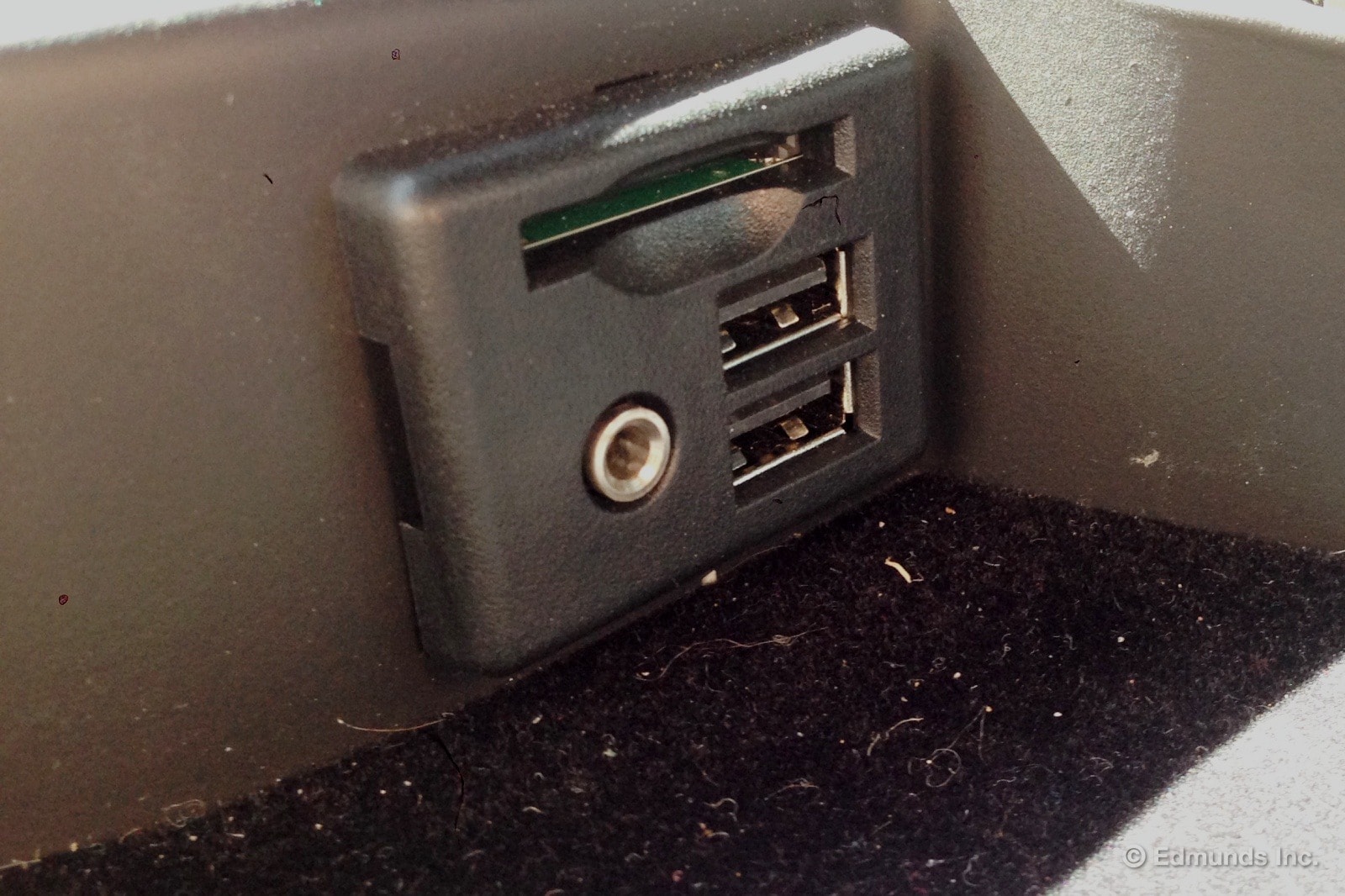
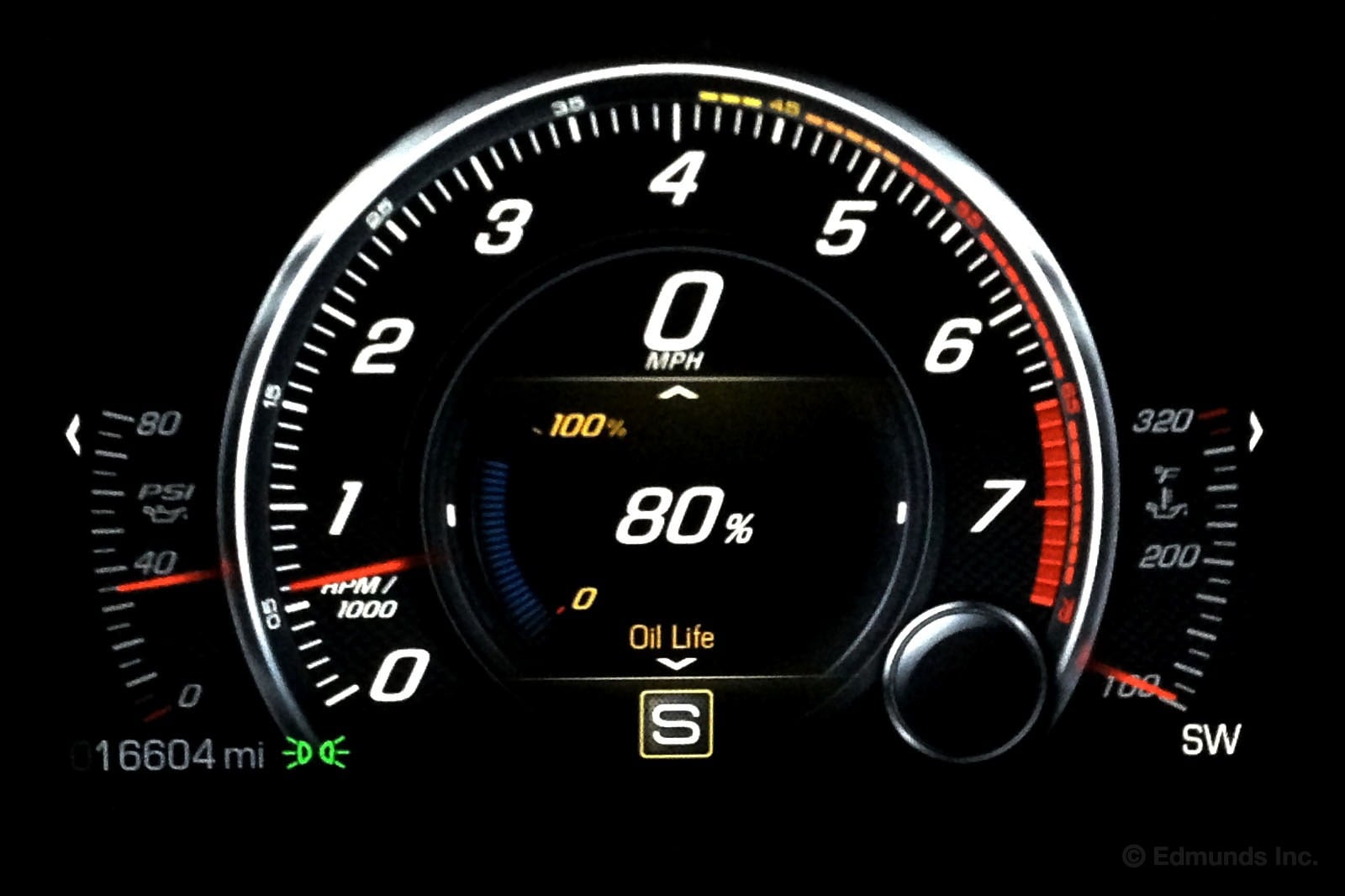
The last time we saw a variable redline on an Edmunds long-term test car was in our 2009 BMW M3 Sedan. On startup, the tachometer in our 2014 Chevrolet Corvette Stingray starts with a "yellowline" from 3,500-4,500 rpm, with the redline above that. As the engine warms up (as in this photo), the yellow creeps up and eventually disappears leaving the hard redline at 6,500 rpm.
Besides the aforementioned BMW, are there other similar systems out there?

And what does it mean that it is "On" in our Corvette?
According to the 2014 Chevrolet Corvette Stingray Owner's Manual:
"Delayed Locking: This feature delays the actual locking of the doors until five seconds after all doors are closed. Delayed locking can only be turned on when the Unlocked Door Anti Lockout feature has been turned off. When [lock icon] is pressed on the powerdoor lock switch with the door open, a chime will sound three times indicating that delayed locking is active. The doors will then lock automatically five seconds after all doors are closed. If a door is reopened before five seconds have elapsed, the five-second timer will reset once all the doors are closed again. Press [lock icon] on the door lock switch again, or press [lock icon] on the RKE transmitter, to override this feature and lock the doors immediately. Delayed locking can be programmed through the Driver Information Center (DIC). "
So, programmed delayed auto-locking is on when this is off. Well, that clears it up (gasp).
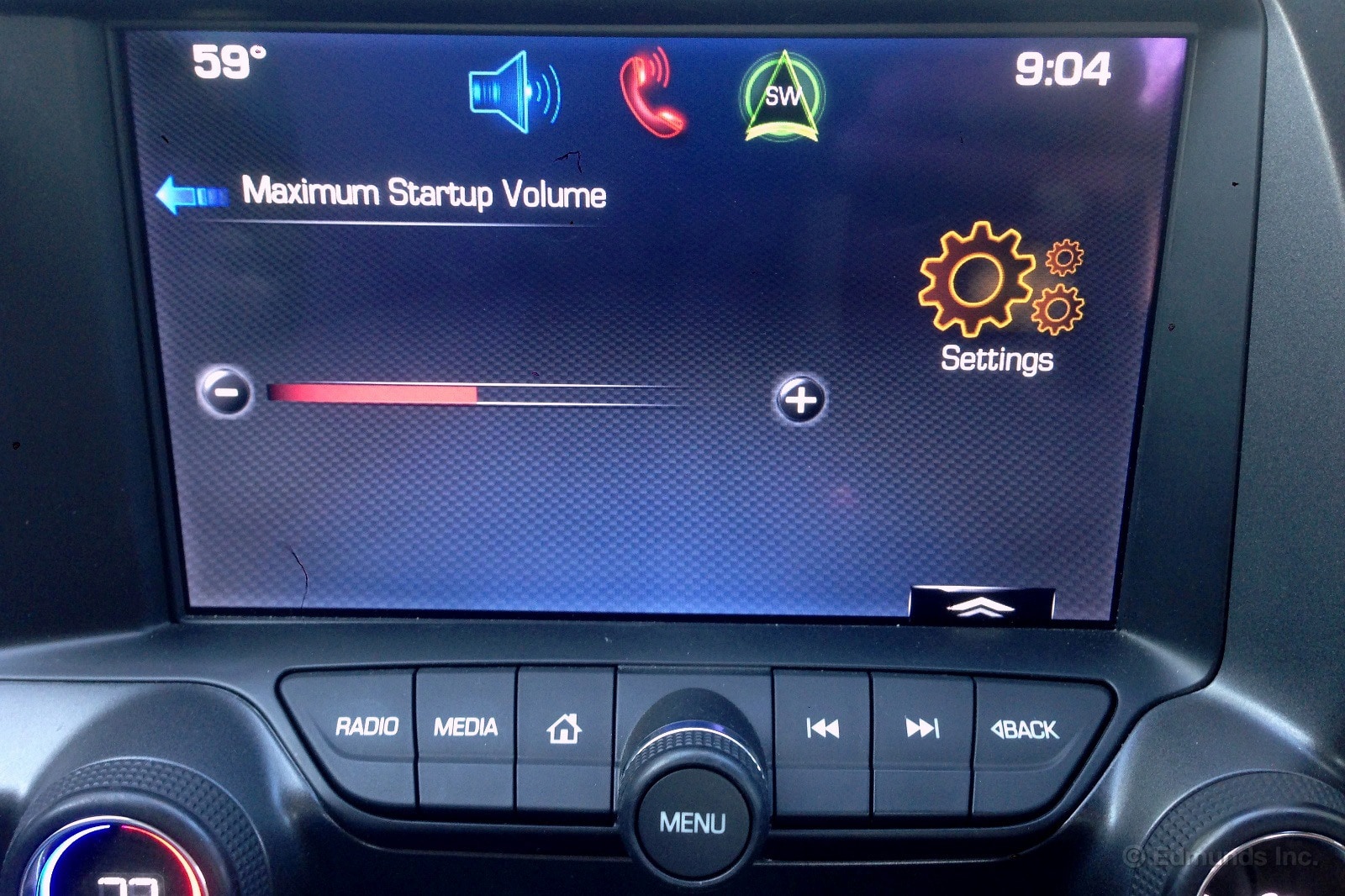
Has this ever happened to you? You get in your car at the A) car wash, B) valet, C) from the repair shop, you start your car, and the stereo blasts you right out of your seat. Naturally, the radio station isn't even in your presets.
Well, here's a very thoughtful feature in our 2014 Chevrolet Corvette Stingray: Maximum Startup Volume. Thank you, GM.
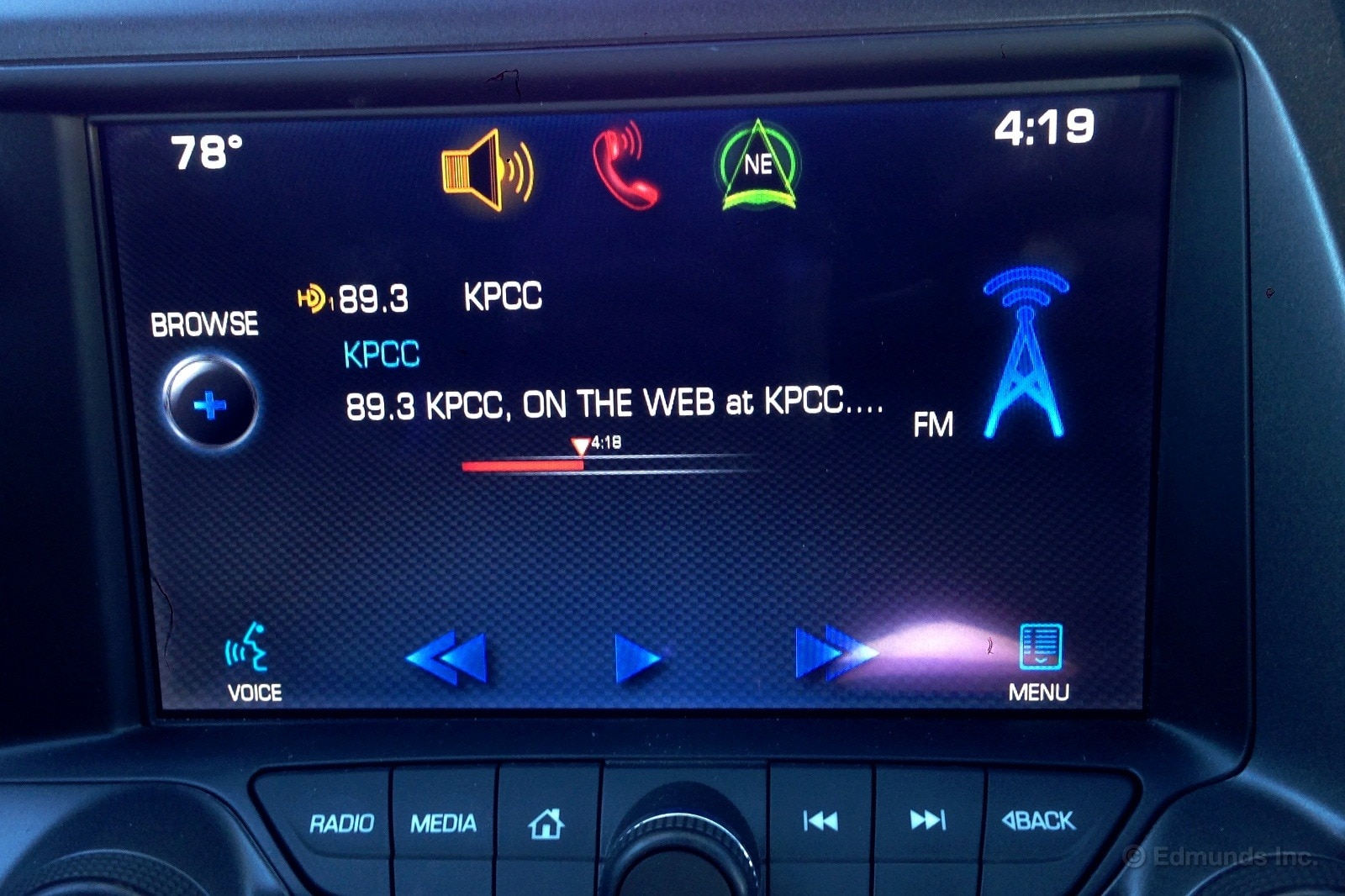
There I was sitting parked in the grocery store lot in our 2014 Chevrolet Corvette Stingray and I was completely engrossed (as usual) in NPR's broadcast of Radiolab. This time it was on an emerging hypothesis about how the dinosaurs met their demise and the long-standing theory that it was a mega meteor.
I had groceries to get, and I didn't want to miss the show. I remembered just then that the Corvette's audio system has a pause feature. I also had a faint memory of our long-term 2008 Cadillac CTS having this feature and that it would operate even with the car shut off.
Well, I was half-right. Our Corvette does, indeed, have this pause feature, but either I took too long grabbing groceries (and it timed out), or it doesn't function while the car is shut off. Bummer for me. Thankfully, I later found a link to the Radiolab podcast so I could get to sleep that night. Even better, I found a link to video of the entire program which happened to be a live stage show with dinosaur puppets, video of impact experiments, and so on.
Even if it doesn't operate as I imagined, the Corvette's hard-drive buffer is still nifty to rewind traffic reports, pause while taking a phone call, and resume after hanging up.
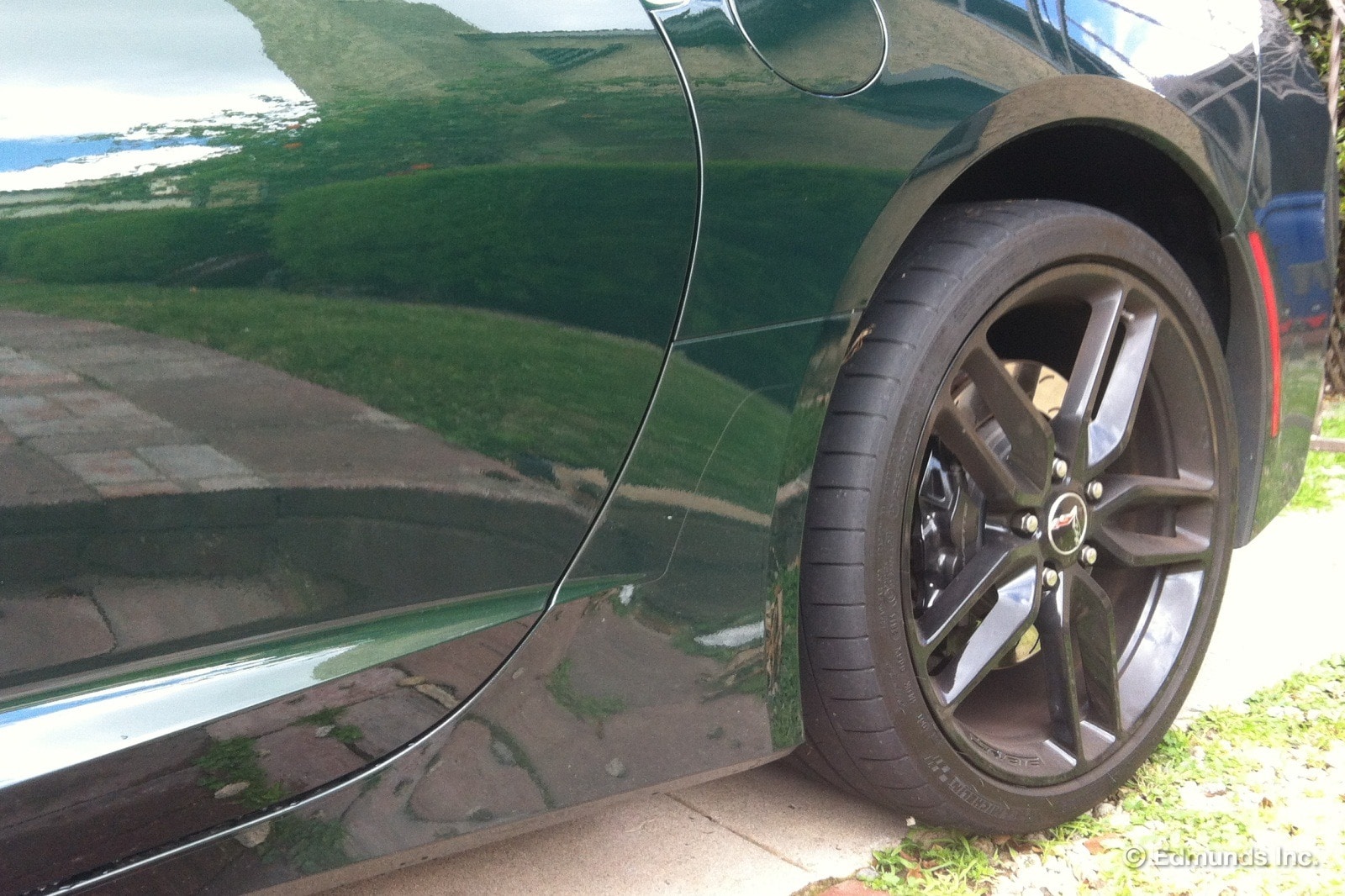
Our long-term 2014 Chevrolet Corvette Stingray exhibits a judder when you make a tight turn (say, turning from a driveway onto a narrow street) when the car is stone cold. And it's completely normal and nothing is wrong.
I've observed this every time I've driven our C7 and it's never struck me as anything out of the ordinary. The first time our C7 did this I immediately chalked it up to a tight differential. When cold, a limited-slip differential can bind up and act like a spool (a locked diff), and the inside rear tire is forced to "skip" on the pavement. This manifests as the juddery "thunk-thunk-thunk" you get when you make a very tight turn at very slow speeds. Once warm this behavior goes away.
However, I've since observed that the car will exhibit this behavior whether power is being applied or not, clutch in or out, and seems to be at the front end rather than the rear. Plus, our C7, being a Z51, has an electronic differential, which ought to be fully open during such conditions. All of these factors suggest this is less a differential issue than it is a steering Ackermann issue.
The owner's manual offers no elaboration other than "it's normal":
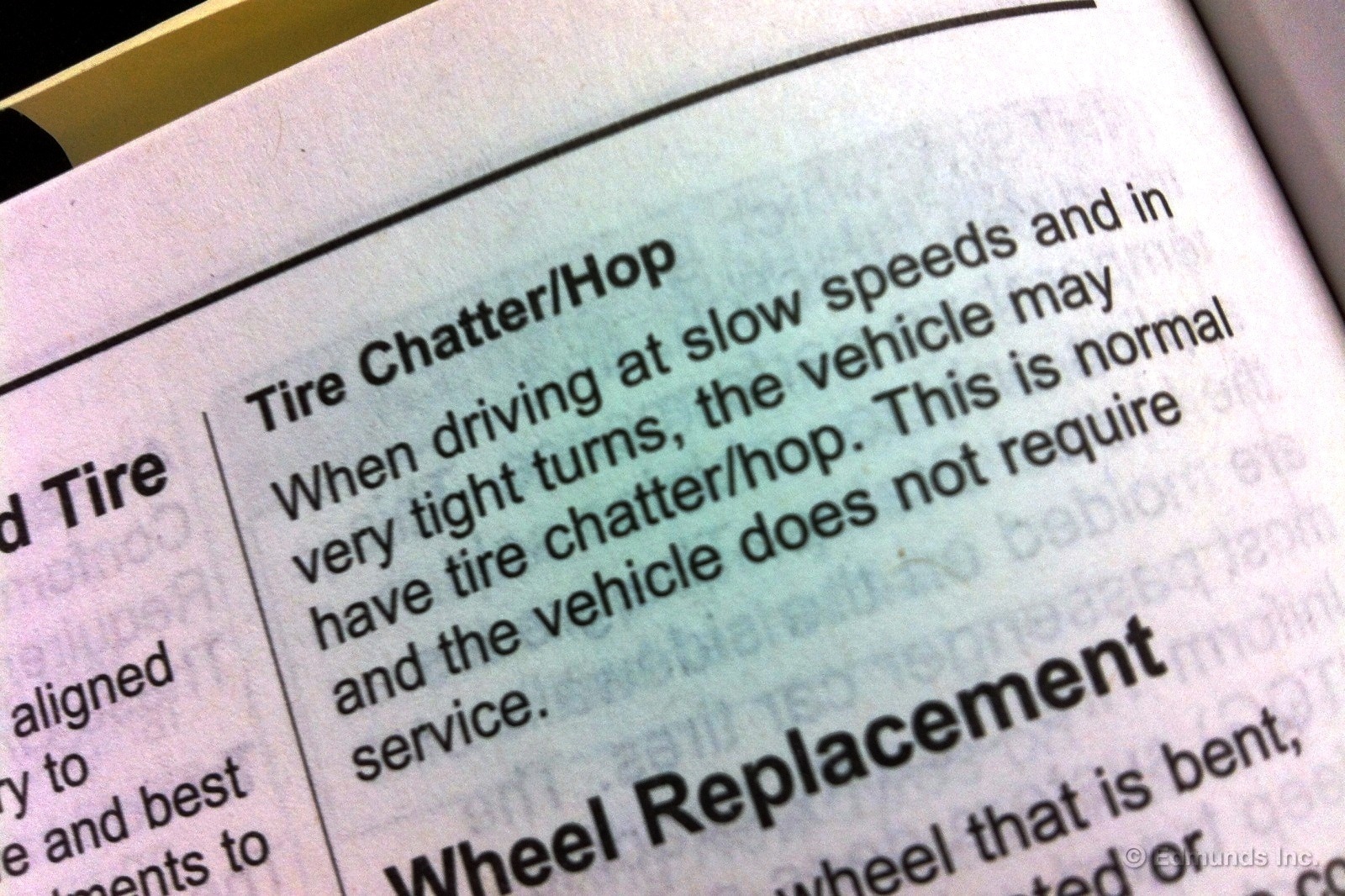
Ackermann geometry pertains to the wheels doing the steering. In this case, the front wheels. In a nutshell, in true Ackermann geometry, the inside front wheel turns more sharply than the outside front wheel. This is because the inside front is closer to the center point of the turn than the outside front, and thus traverses a tighter arc.
It turns out GM built the C7 with reduced Ackermann for packaging reasons. Thus, the inside front tire skips along the pavement when subjected to a hard turn when cold. The skipping is quite pronounced and I can see where some people might think something is very wrong with their car. When the tire warms up, its carcass is better able to deform, so the skipping goes away.
Now you know.
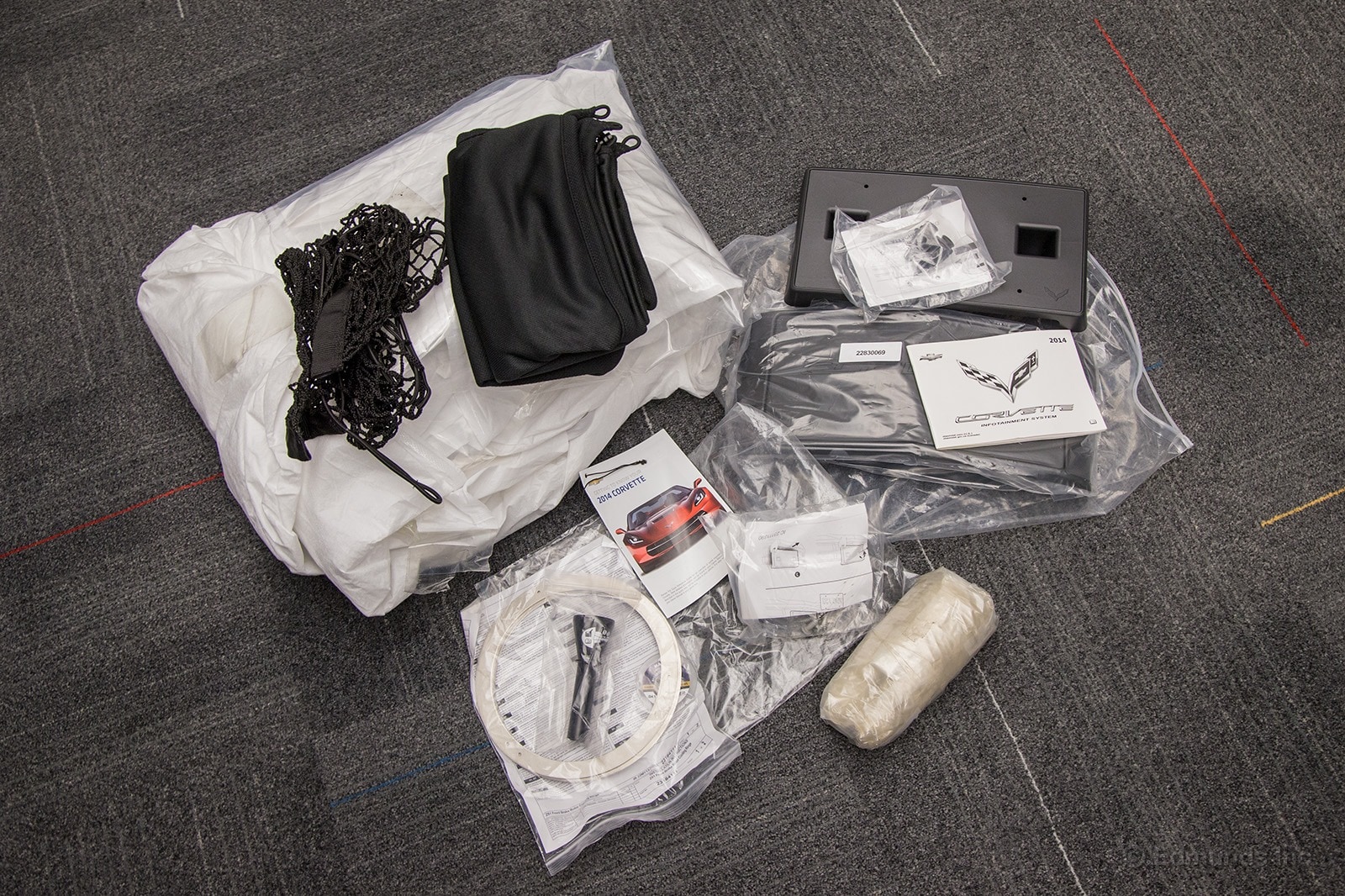
Picking up your 2014 Chevrolet Corvette Stingray at the factory in Bowling Green has its perks. You get a bit of VIP treatment, a museum tour, a factory tour, a free lunch and better than average odds of falling into a sinkhole.
You also get some extra free stuff thrown in your trunk, stuff you might not get if you picked up your Stingray at a local dealer. See that photo up there? Let's run through what's included.
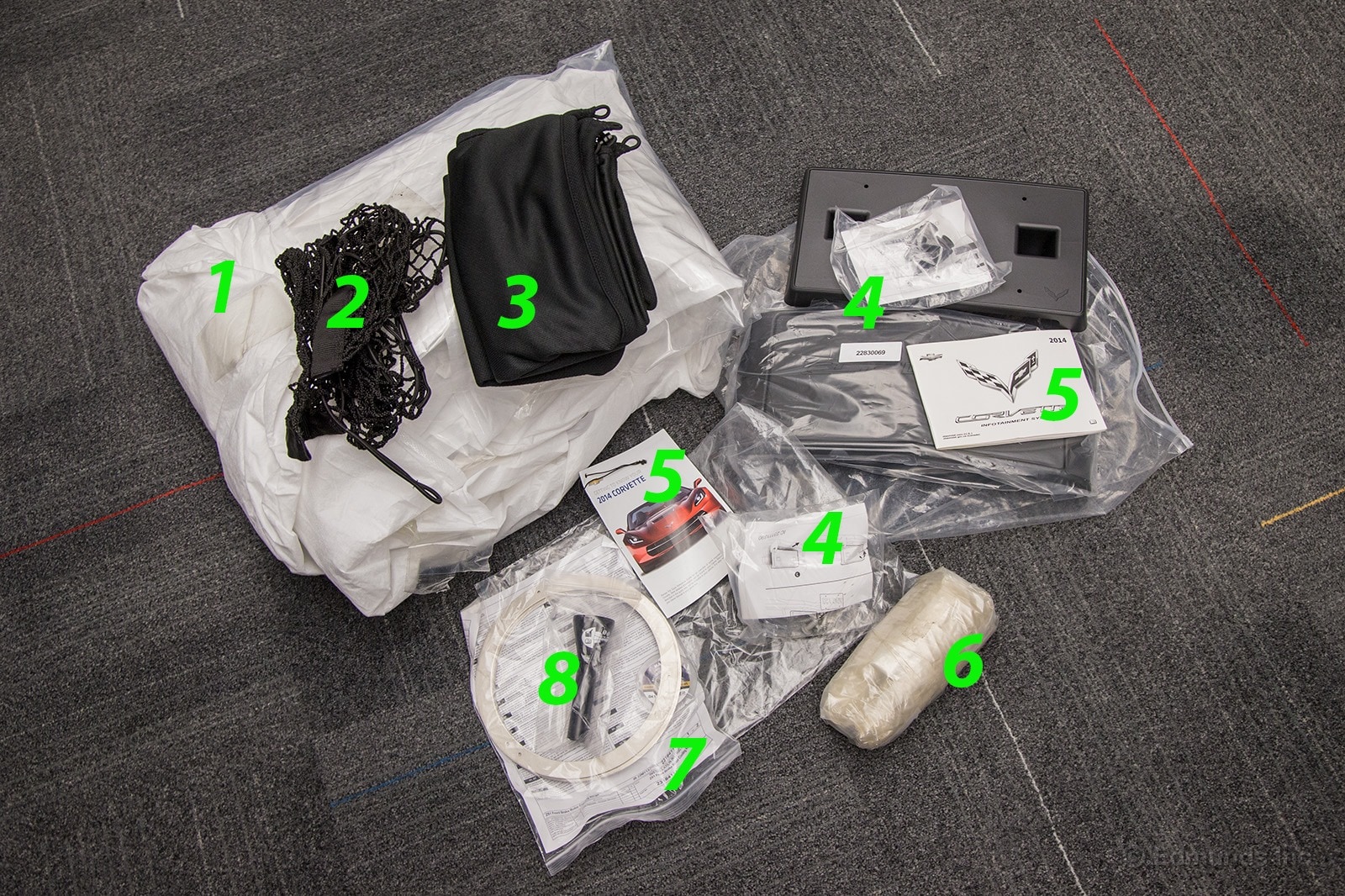
- That's a cloth-y car cover thing. It feels fairly disposable.
- Yup, that's a cargo net.
- This is the rear hatch privacy shield. It can also double as a cape. Or a sari wrap.
- Various front license plate brackets and their paraphernalia.
- Instructions for the infotainment system and a general primer for your new Corvette.
- That's the plasticenta. It's the protective plastic that covered various panels of the Corvette during its final assembly process. Seriously, it's a burrito of plastic trash. Blame Barrett-Jackson and annoying Corvette collectors for making this a thing.
- OK, this is kinda weird, but those silver discs are for enhanced brake cooling during track driving. They're part of the Z51 handling package and must be installed by you, at the track, with solder, and then removed before you drive on the street. More on these later.
- That's a funnel for the capless fuel system. Ford's been putting these in their cars for a few years now.
No doubt everything you see here will command quite a premium in 30 years, and might make the difference between a Corvette being granted Top Flight status, or not, by the NCRS. For now, it's just a bunch of...stuff.
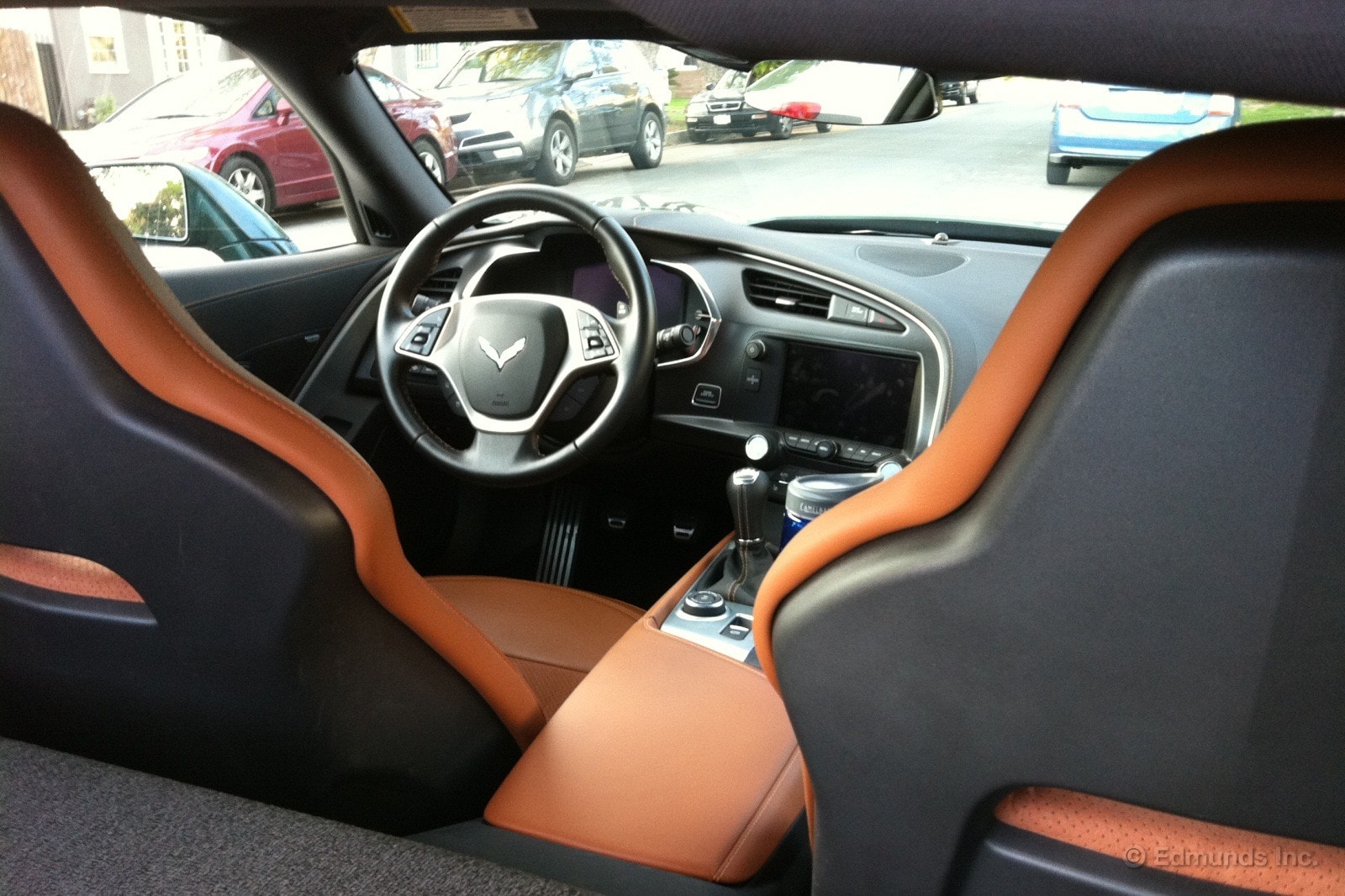
Although the new 2014 Chevrolet Corvette Stingray rankles Corvette traditionalists with its overstyled exterior, squareish taillights and seats that didn't come from a furniture store, it still carries one unmistakable reminder of its origins.
It still smells like fiberglass resin inside. The odor isn't quite pronounced as in previous generations of Corvette, but it's there.
Yup, still a Corvette.
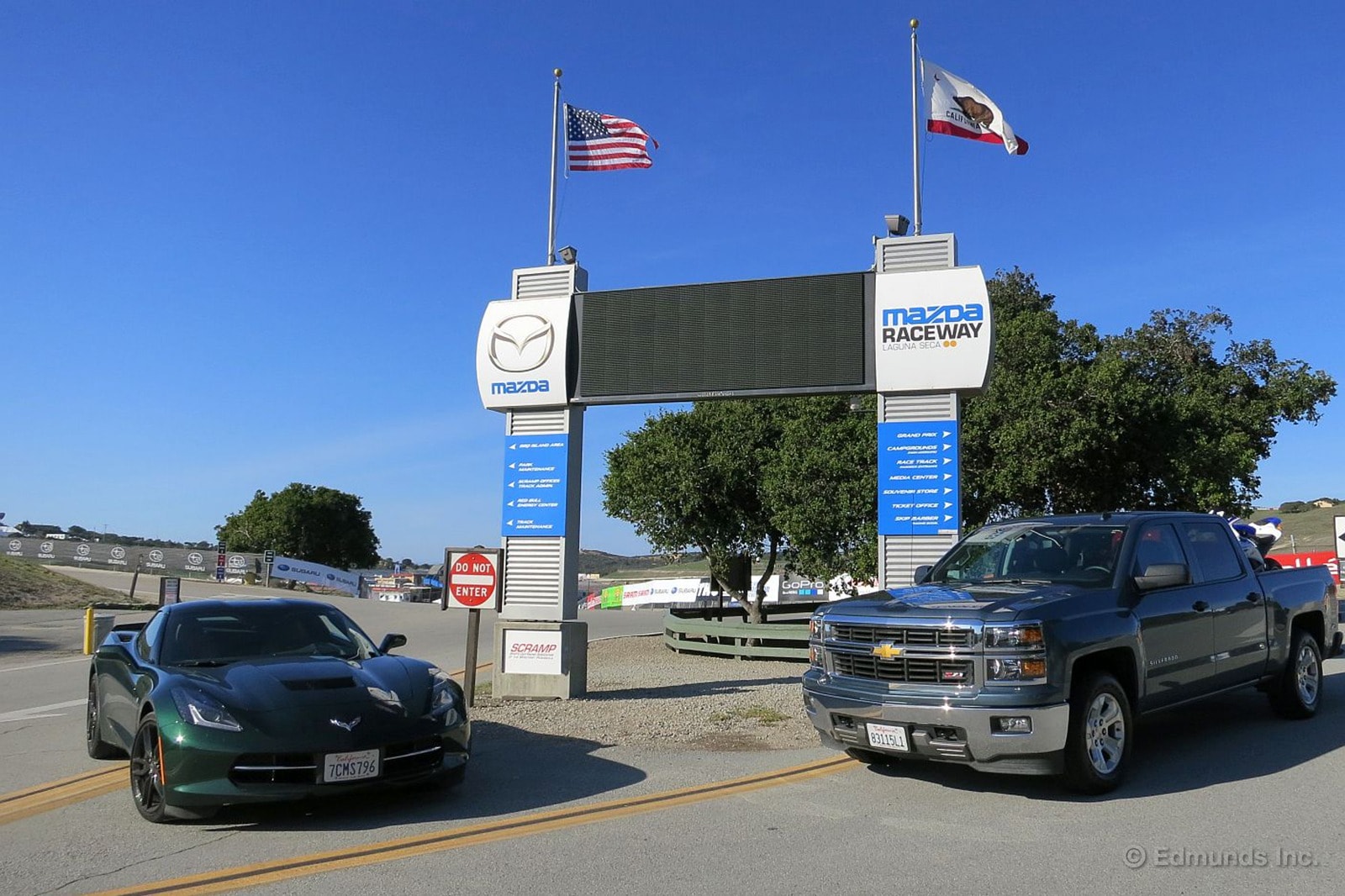
Sure, you can slap four snow tires on the 2014 Chevrolet Corvette Stingray and drive it to and from Detroit, Michigan in the middle of winter. If that's your thing, I say go for it, have a great time.
Me? I'd rather drive the new C7 Vette the way it was intended. Hard. And on the track.
And wouldn't you know it, we just happened to get an invite dubbed "The Greatest Event in Track Day History."
Okay, in truth, it's entirely possible no one was calling it that except yours truly. But most people also weren't "double-dipping," as they say, driving a car one session and riding a motorcycle in another. It brings a whole new element to the track day experience.
But that's what Mazda lets you do at this combo car/motorcycle event at the track that bears its name, Laguna Seca near Monterey, California.
A chance to drive a car and ride my motorcycle at the same fantastic race track? For two days? Wasn't about to turn that one down. Especially when Edmunds just happens to have a long-term Corvette in its fleet primed for a good flogging.
Making it more interesting, this meant we were taking a Chevrolet to a race track with Mazda's name on it, while the Corvette's Lime Rock Green color is named for a famous track in Connecticut. So maybe everyone's happy.
Keep it right here for multiple updates on our track-day adventure, including the preparation required to get the Corvette properly track-ready. It was a blast, though not without a few complications.
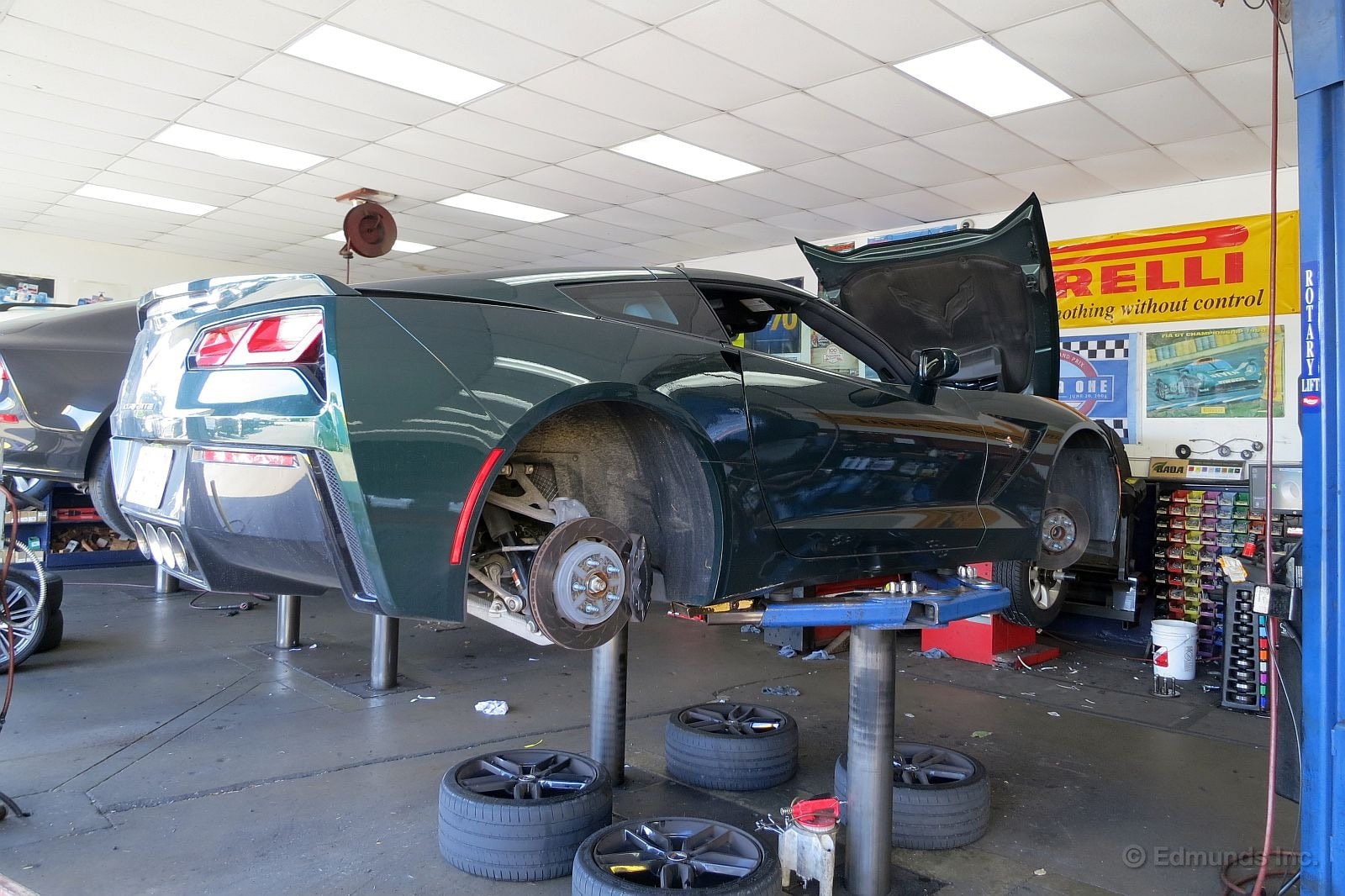
Probably the most important piece of preparation before doing a track day in a production car is swapping out the stock brake pads for a set of performance track-ready pads.
Since the decision to do the track day at Mazda Raceway Laguna Seca in our long-term 2014 Chevrolet Corvette Stingray was made at the last minute, it meant much scrambling ensued. No biggie, last-minute running around is pretty much my entire existence. I need to work on that.
The first step was to put a call into the folks over at Carbotech Performance Brakes.
After giving Carbotech some specs on our C7 Vette, including current tires and what track we were heading to, they recommended the XP12 pads up front and XP10s for the rear. They would've preferred we run XP8s at the rear, as they felt they would perform better with our car's ABS system, but they didn't have any in stock. $235 for the fronts, $206 for the rears, plus $55.35 for last-minute get-it-quick shipping charges.
Of course you also want to flush the brake system with high-temp fluid, so they sent along two bottles of Brembo LCF600, at $16.95 per bottle.
Everything worked out perfectly, the pads and fluid arrived the afternoon I got back from a work trip, which was also the day before heading to Laguna. Since I needed to finish writing a story, there was no time to swap out the pads ourselves. So it was off to Stokes Tire Service.
$310 later and Jeff had swapped front and rear pads and added the new brake fluid. Turns out it's expensive to have someone else do the work for you.
But the track pads were on and we were ready to head to Laguna the next day. And there was much excitement.
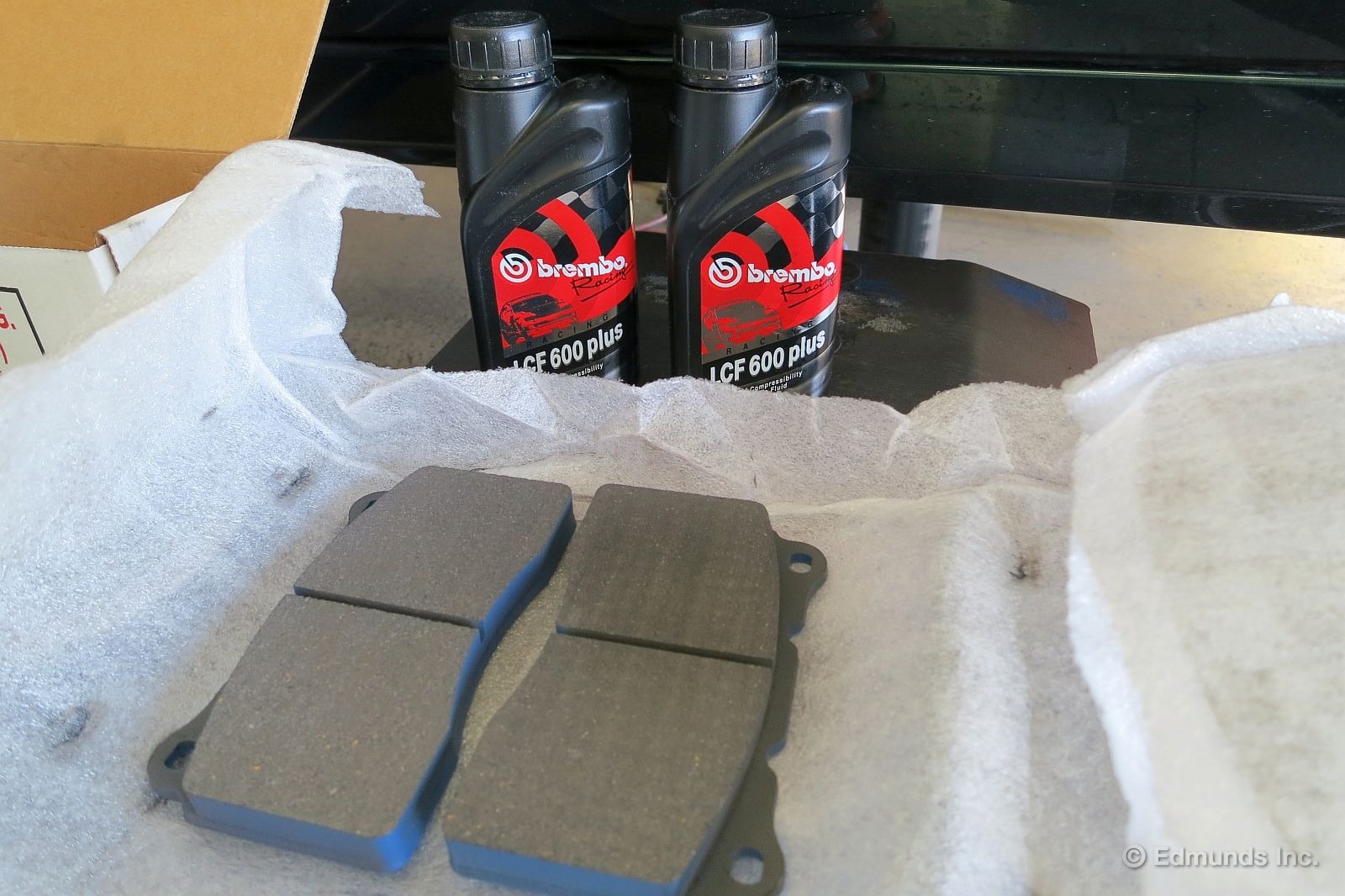
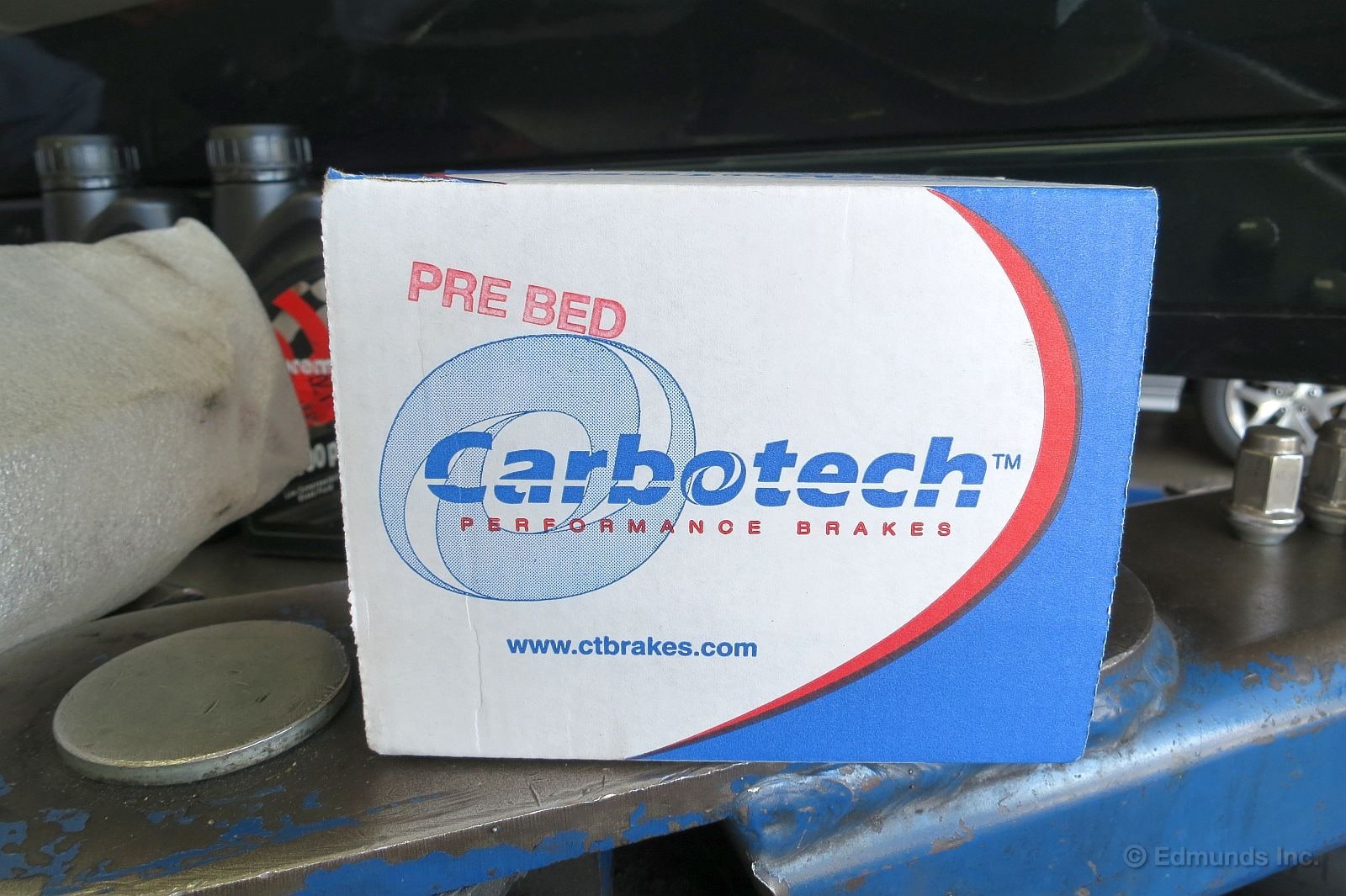
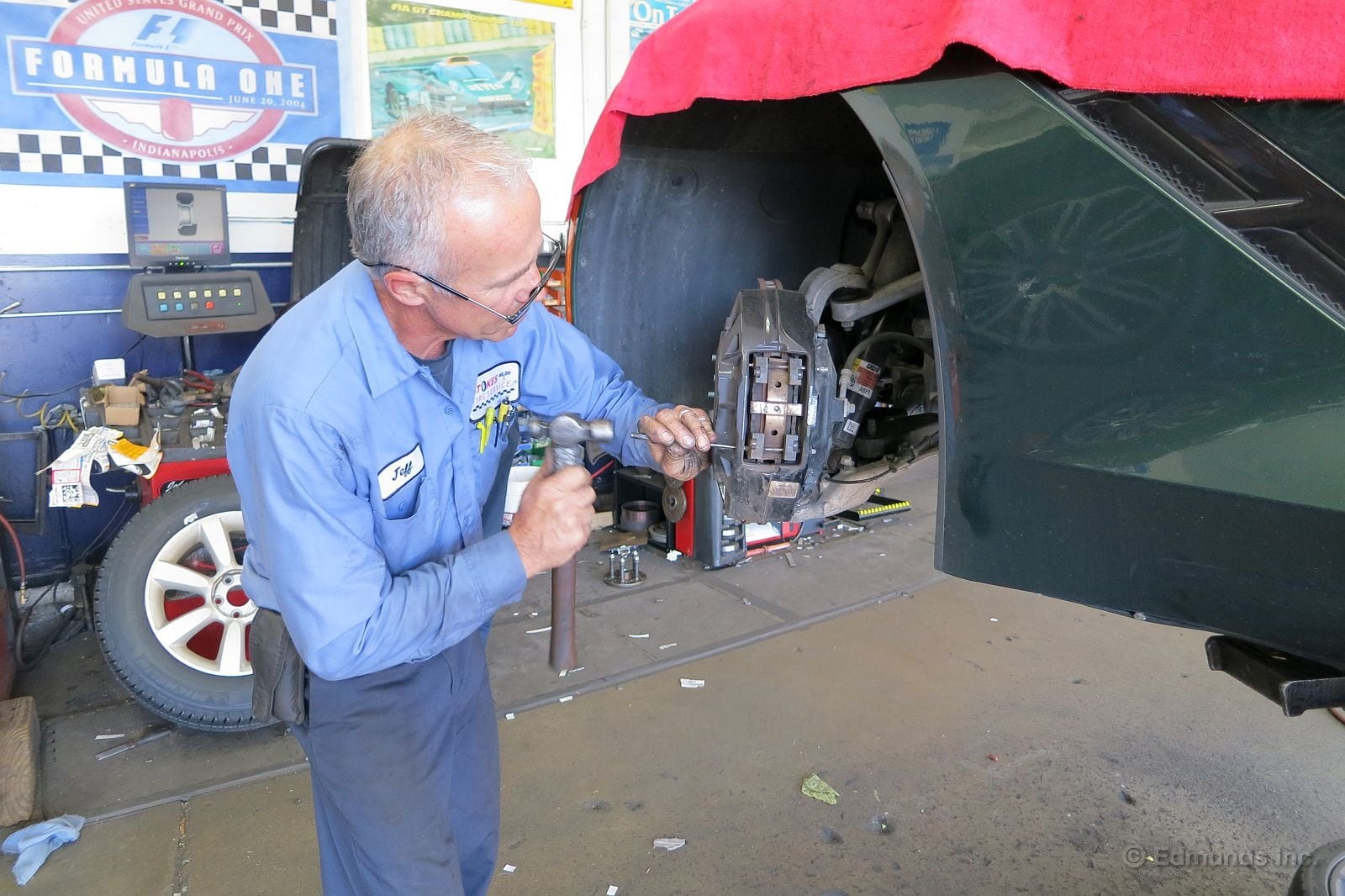
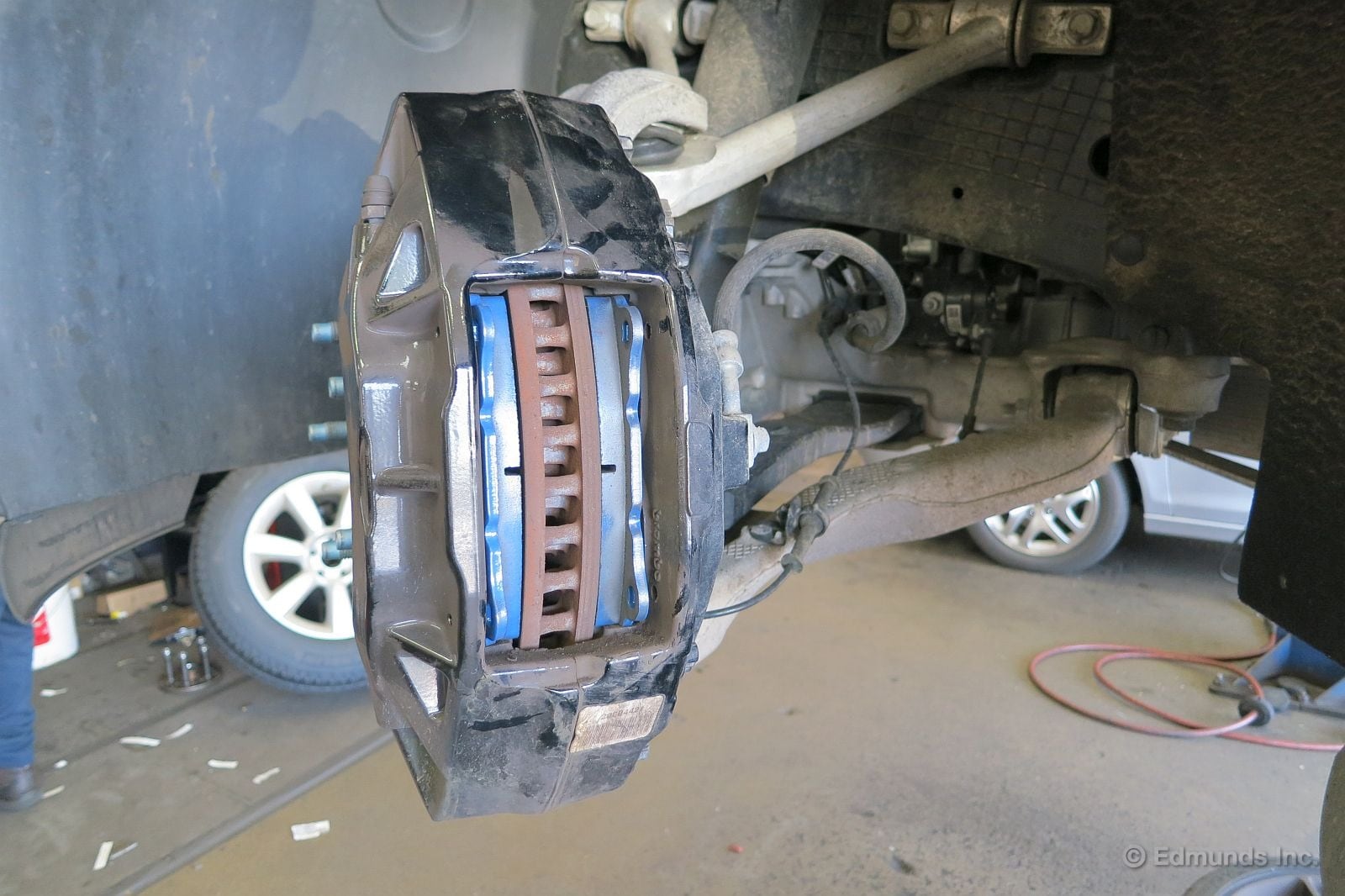
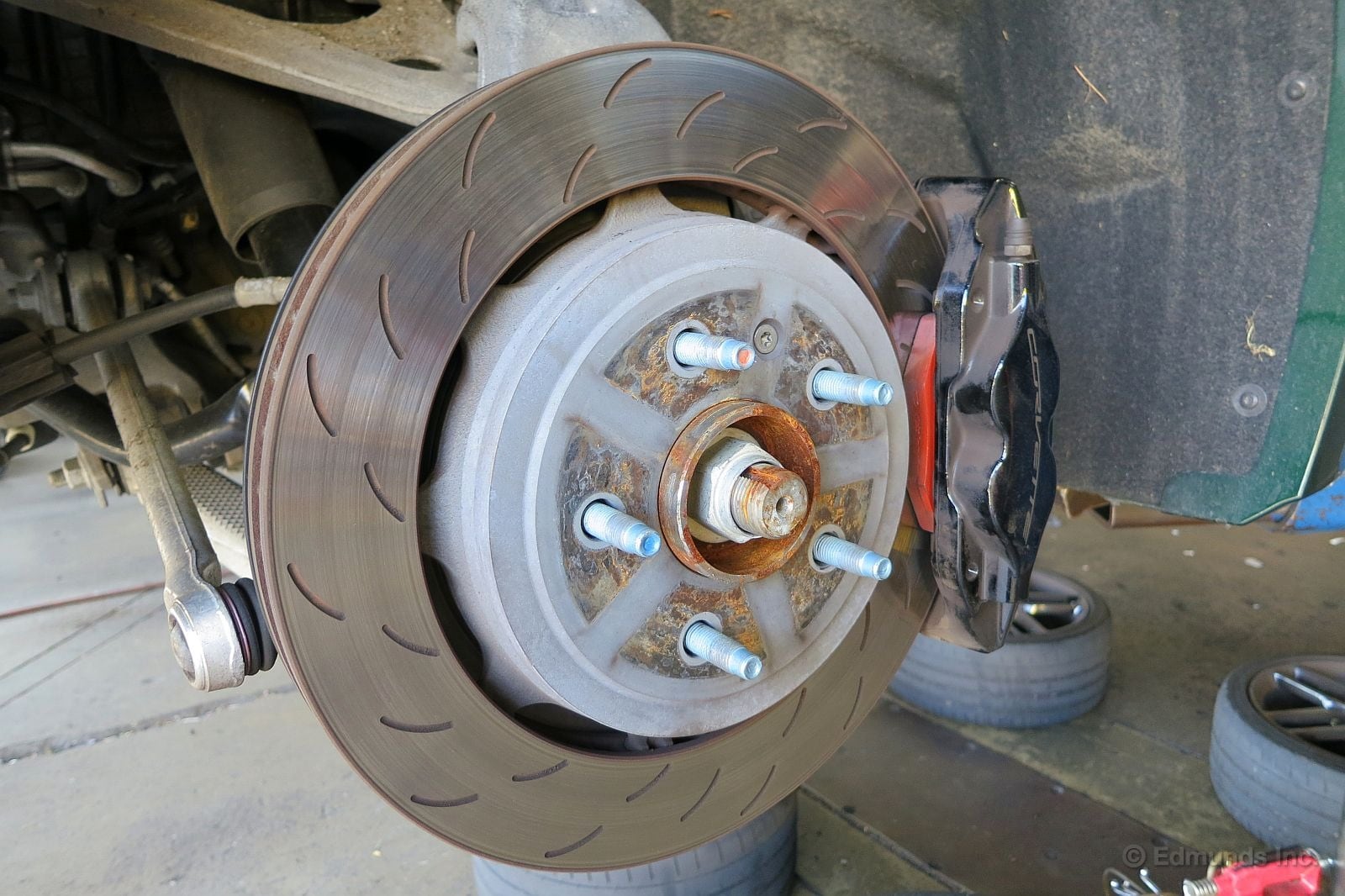
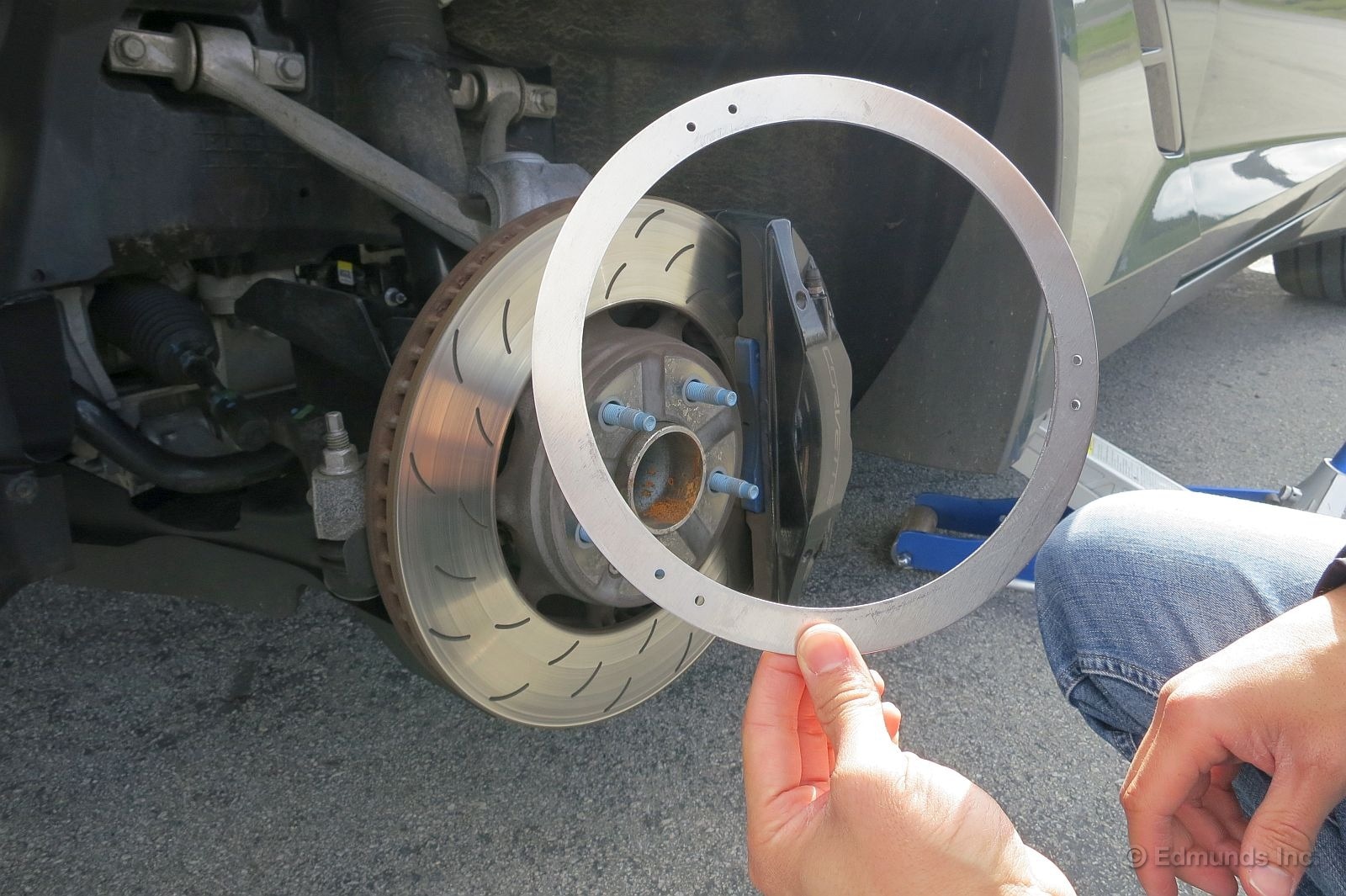
Kurt Niebuhr mentioned in a recent update that our 2014 Chevrolet Corvette Stingray came with several items in the trunk when he and Dan Frio picked the car up at the factory in Kentucky.
One of the things they discovered was a clear plastic bag with what Chevy calls "rotor cooling rings" for the front brakes of our Z51 Performance Package-equipped car. But reading through Chevy's documents on "2014 Corvette Stingray track preparation" doesn't really give much of an explanation about exactly how these rings affect brake cooling.
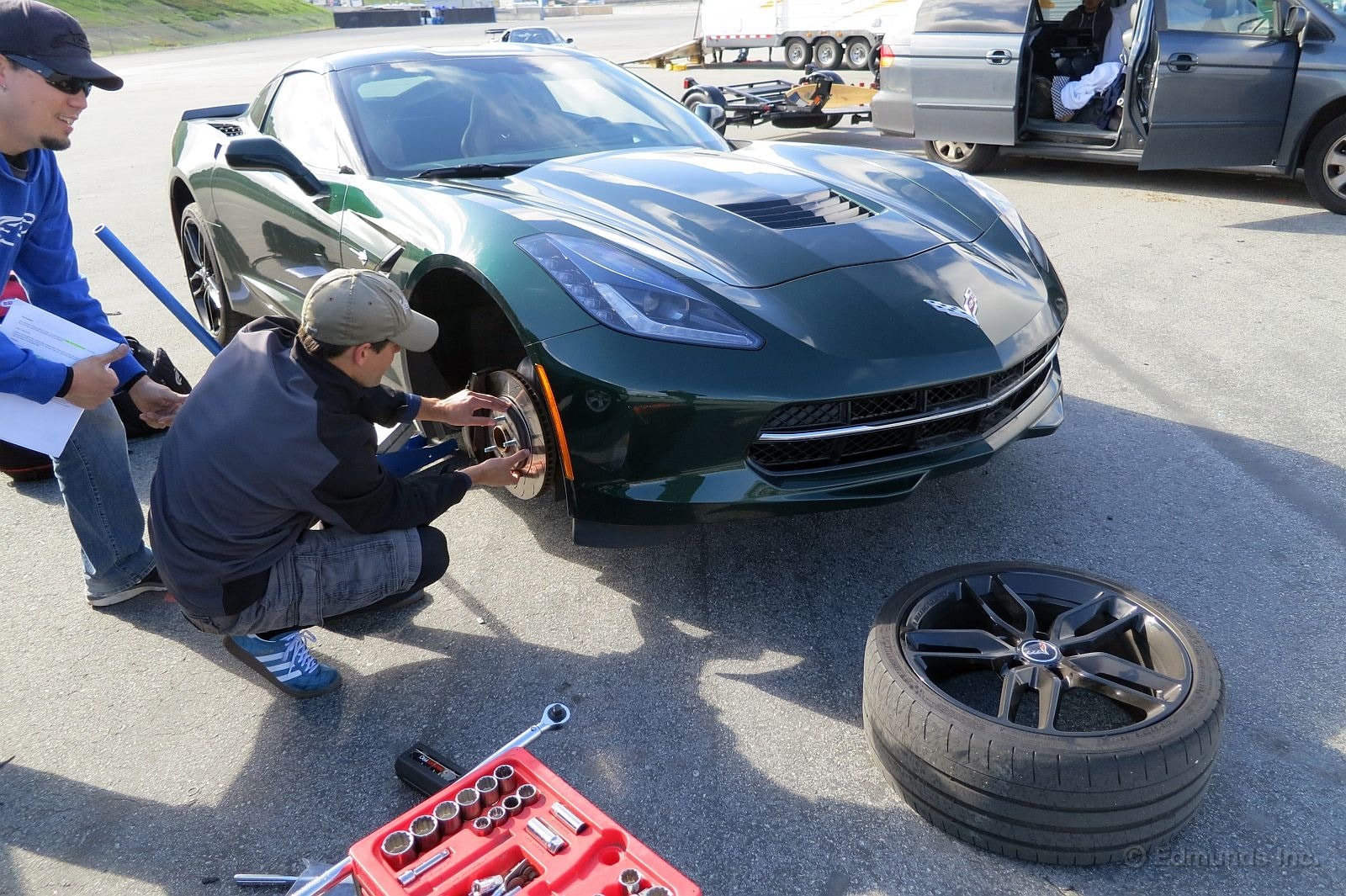
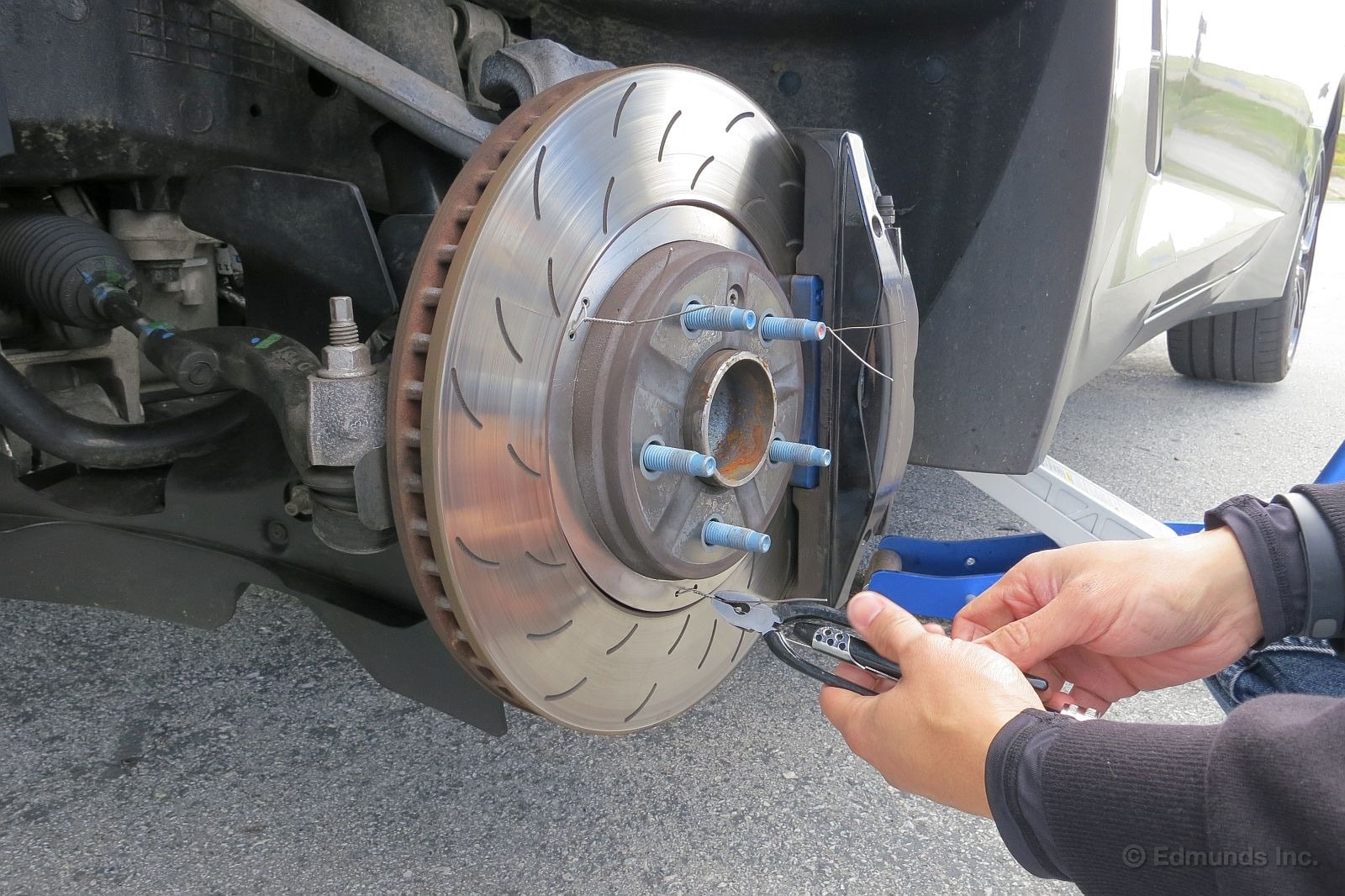
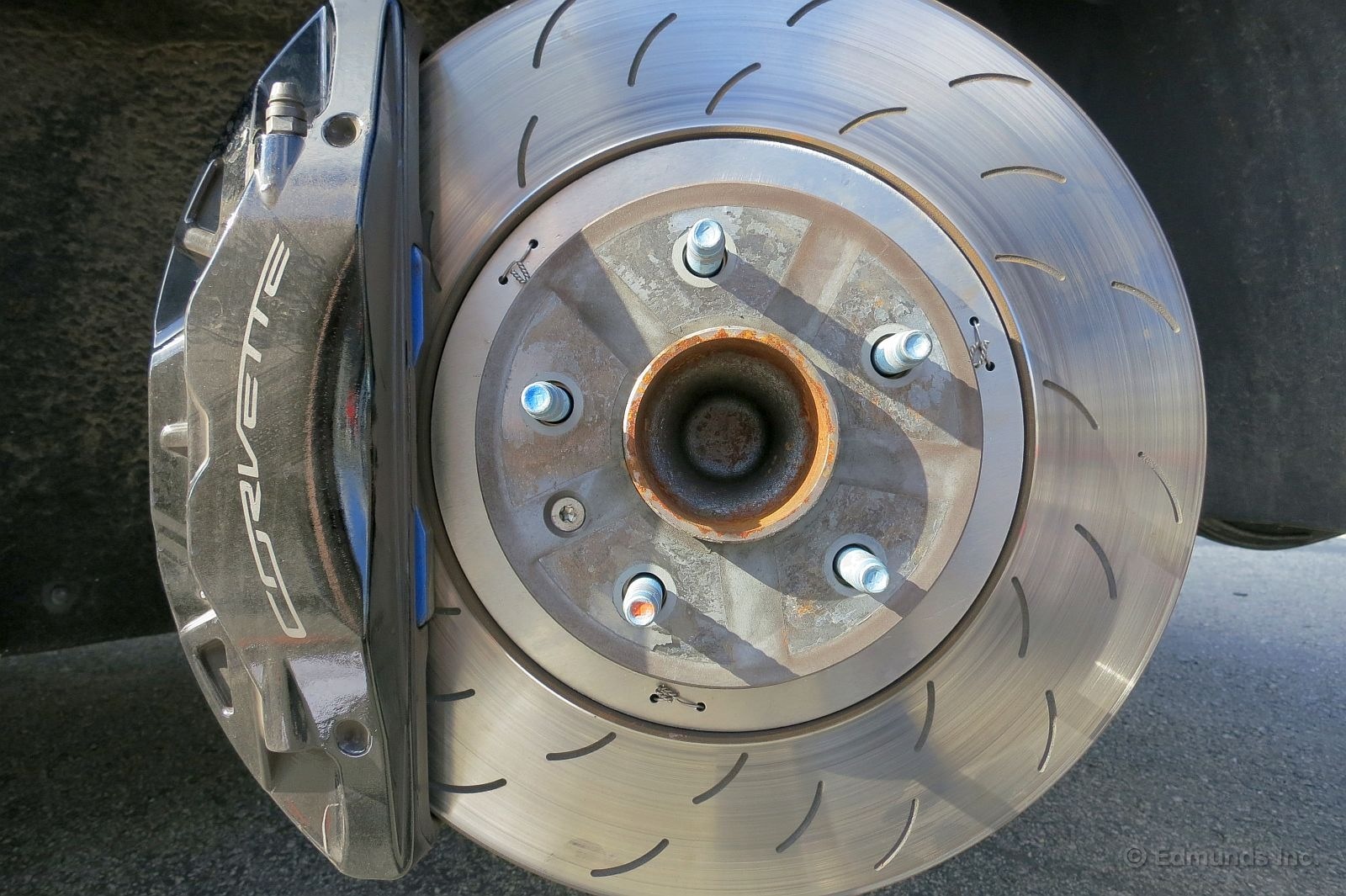
It does say, "Rotor cooling rings (provided at the time of vehicle delivery in a clear plastic bag [true]) are recommended for track use (driving without the rotor cooling rings may result in brake pedal fade). Do not leave them installed after a track event, as this may cause corrosion with long-term use. Installation instructions are included with the rings [not true] and can be found in section 9-7 of the Owner's Manual."
What was included with the rings was the required T304 stainless steel safety wire needed for installation. So first order of business when we got to Mazda Raceway Laguna Seca in the morning was to take off the front wheels and put on these rings.
A moto buddy of mine had some specific safety wire pliers which made things easier, and it wasn't an overly difficult job, although I'd rather not have had to deal with it. In other words, they better work.
A new Corvette attracts a lot of attention, especially at a track day, so it wasn't surprising that we got several opinions (wanted or not) as to the actual performance value of the rings while we had the car jacked up. The general consensus was "seriously Chevy?..."
But, between the new track pads and the rotor cooling rings, in theory this Vette shouldn't suffer any brake fade. Time to find out.
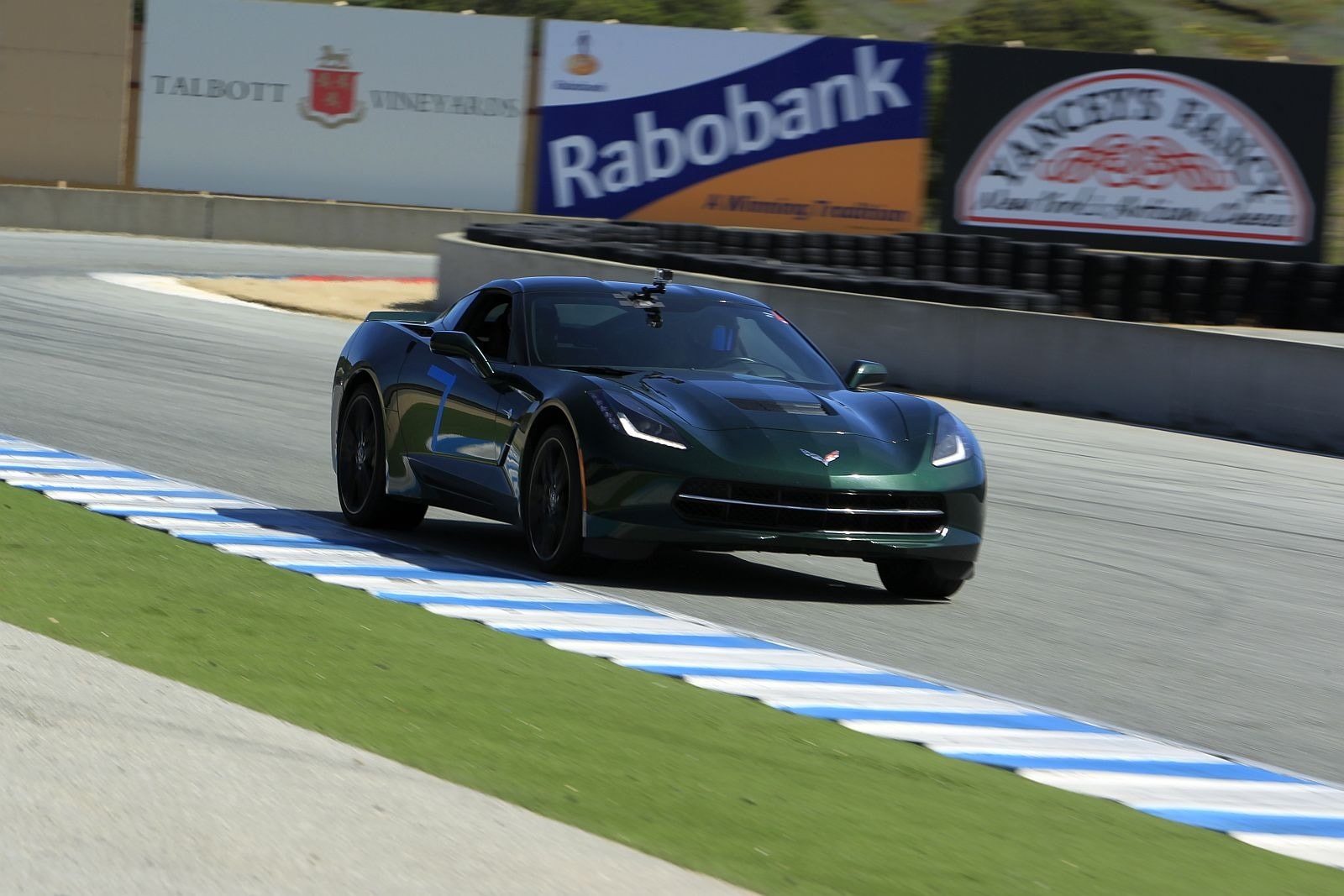
With brake rotor cooling rings installed, track pads on, front license plate removed and tires set to 26 psi cold (per Chevy's instructions), it was finally time to take our 2014 Chevrolet Corvette Stingray out onto Mazda Raceway Laguna Seca for its first track session at this combo car/motorcycle event.
First impression: The Vette sounds absolutely glorious barreling full-throttle down (or actually up) Laguna's front straight. Correction, it sounds glorious on any straight. And fast. Man is this thing fast.
But questions remained. Like would the car's optional dual-mode exhaust pop Laguna's 92-decibel sound meter? And while we swapped on track pads, special brake fluid and the rotor cooling rings, would this be enough to ward off brake fade? After all, when Josh Jacquot first tested the C7 Vette at Chevy's proving grounds, he was getting pedal fade after one hard lap...
The obvious first: This car is a blast to drive around a track, even with our nearly-worn-out Michelin Pilot Super Sport tires. It was so fun to finally have a truly fast car at a track day. The shifter works great, nice and precise, and the steering is decent although there was considerably more understeer through most corners than I was expecting, I'm guessing largely due to the worn tires.
Things were going well, passing lots of cars. The Advanced car run group allows unlimited passing (still no racing, of course), so as long as you make it safe and don't put another car in jeopardy, have at it as far they're concerned.
But about three-quarters of the way through the 20-minute session, I started to get brake pedal fade. Argh! Bothersome, especially after the precautions we had taken to make sure this didn't happen.
On the bright side, apparently the Vette's exhaust was quiet enough, which surprised me because I had a sneaking suspicion that, even though it's from-the-factory, it would prove too loud.
I should've kept my mouth shut. With maybe one lap to go in the session, I got the black and orange meatball flag (appropriate if you know me), which means "pit immediately and go see the starter."
So I did. He informed me the Vette had just registered 96 decibels at the sound booth located between Turn 5 and Turn 6. His response: "Why don't you go see if you can make that thing quieter next session." Luckily it's a three-strike policy at Laguna.
On the one hand, a bit surprising that a production car with a street-legal exhaust can't pass Laguna's sound. On the other hand, some 600cc sportbikes with stock exhausts pop the sound meter, too.
How would I "make it quieter?" My thought was to upshift early from third gear to fourth exiting Turn 5, while staying out of full throttle until Turn 6. Not the end of the world, going into this track day I was pretty sure this was going to be an issue. Plus, short-shifting and half-throttle in the Vette should still be faster than some cars that were out there.
The other problem with getting black-flagged for sound was that I had to head into the pits early, without a proper cool-down lap for the brakes. So when I got back to the garage after talking to the starter-dude, the brakes were smoking badly and there was even some fluid coming out of the bleed screw. That's never good. So I immediately headed out onto an access road to cool things off.
So, the first session could have gone better.
On the other hand, my old sportbike worked perfectly when I took it out for its session.
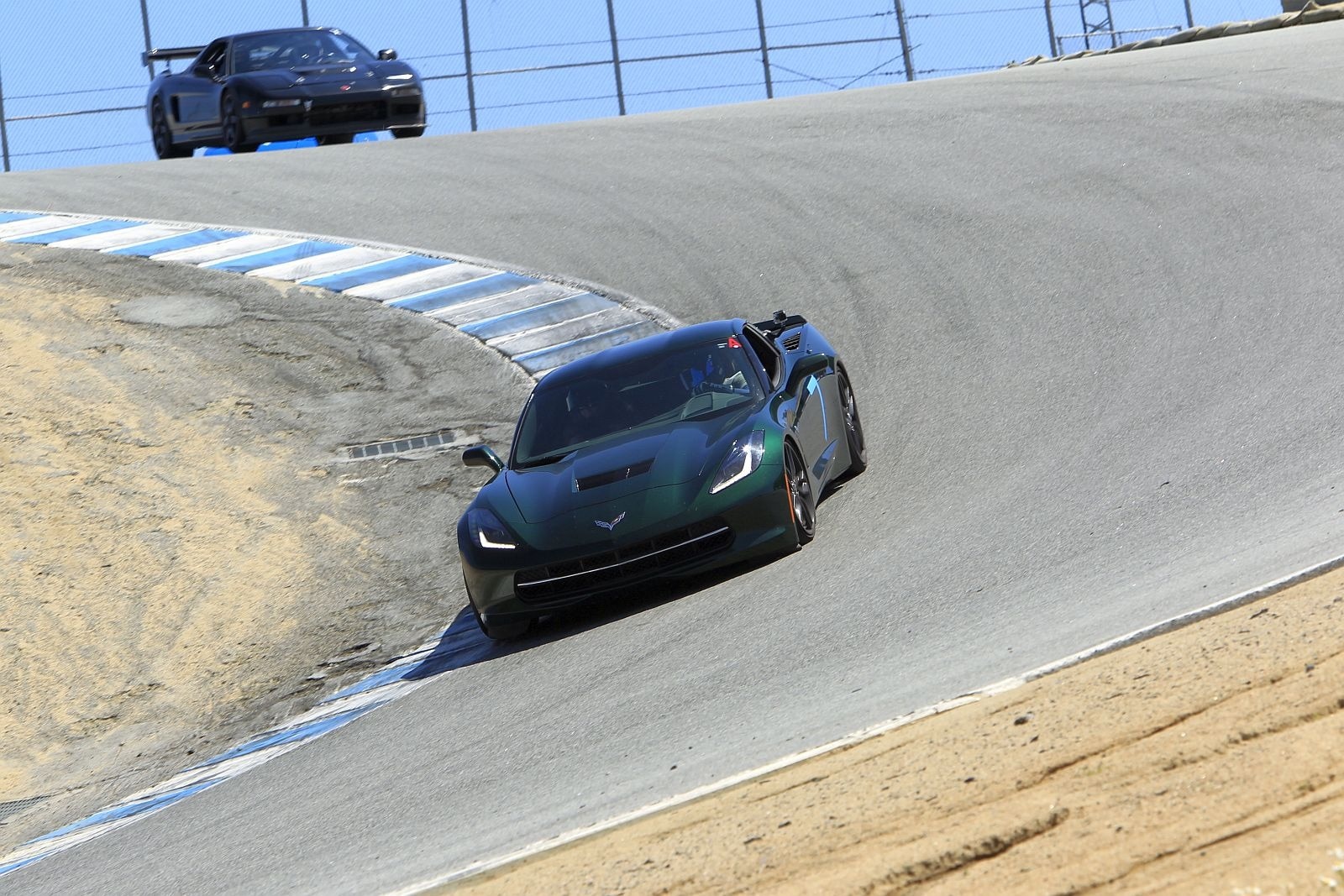
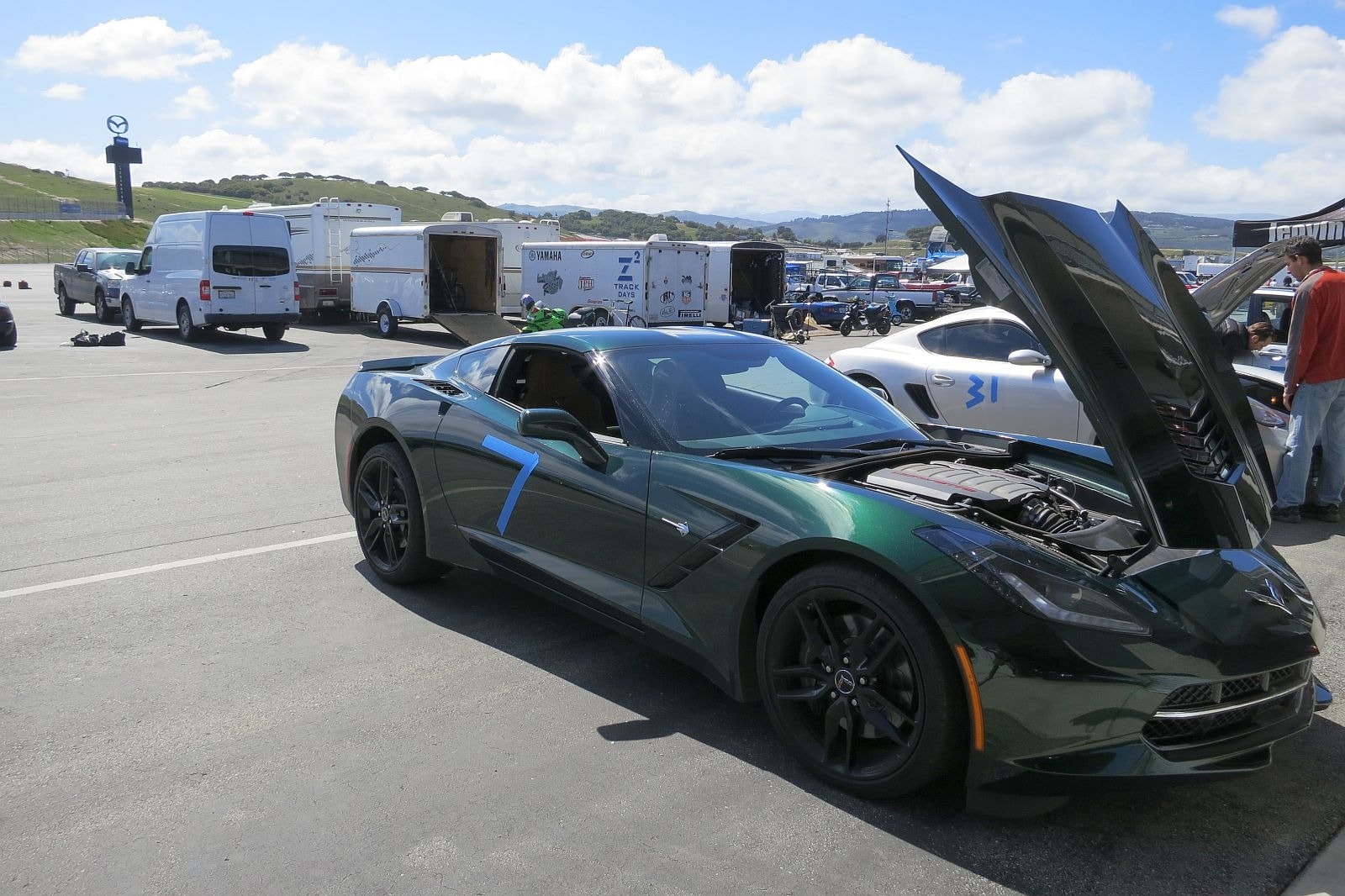
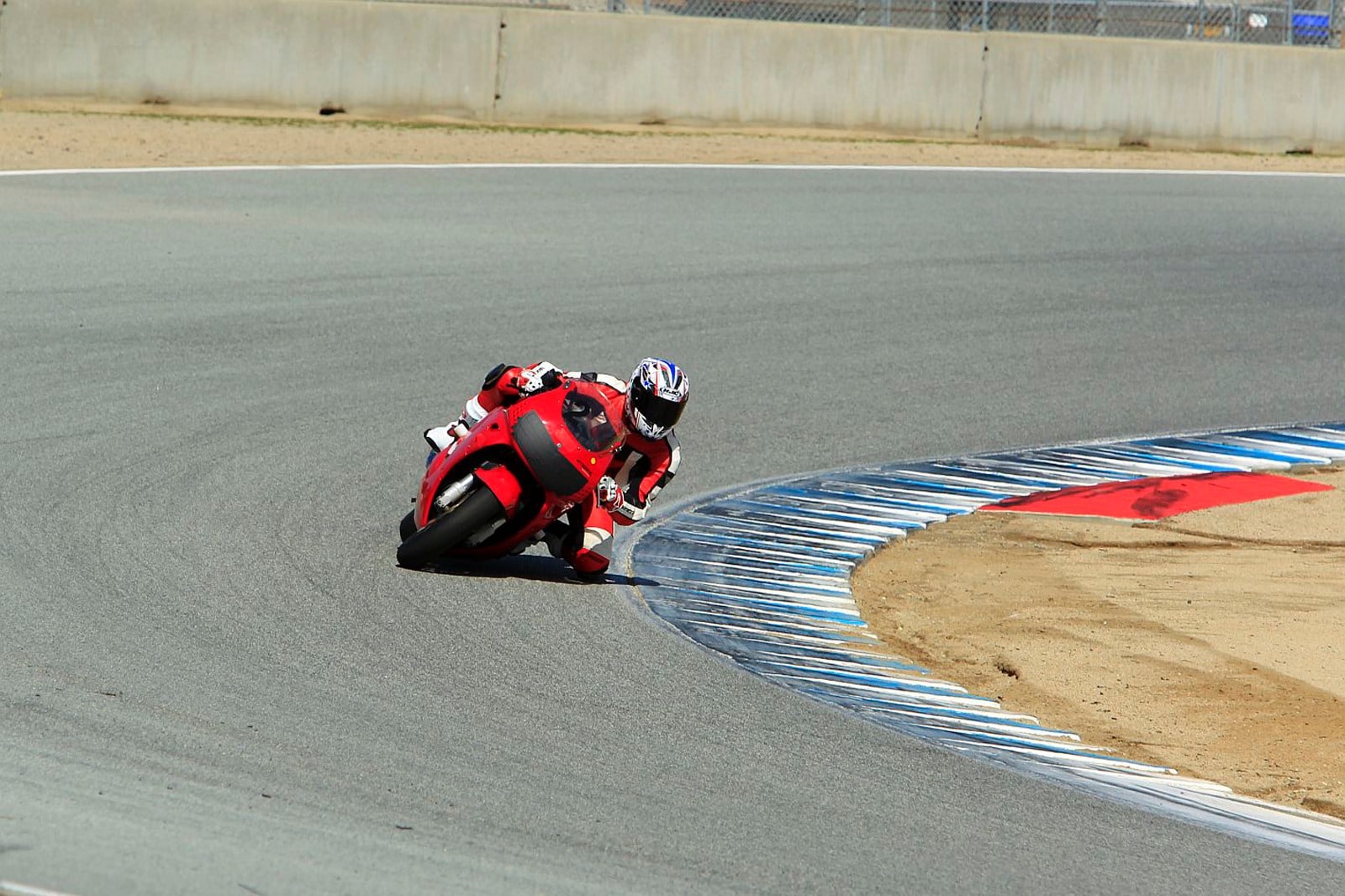

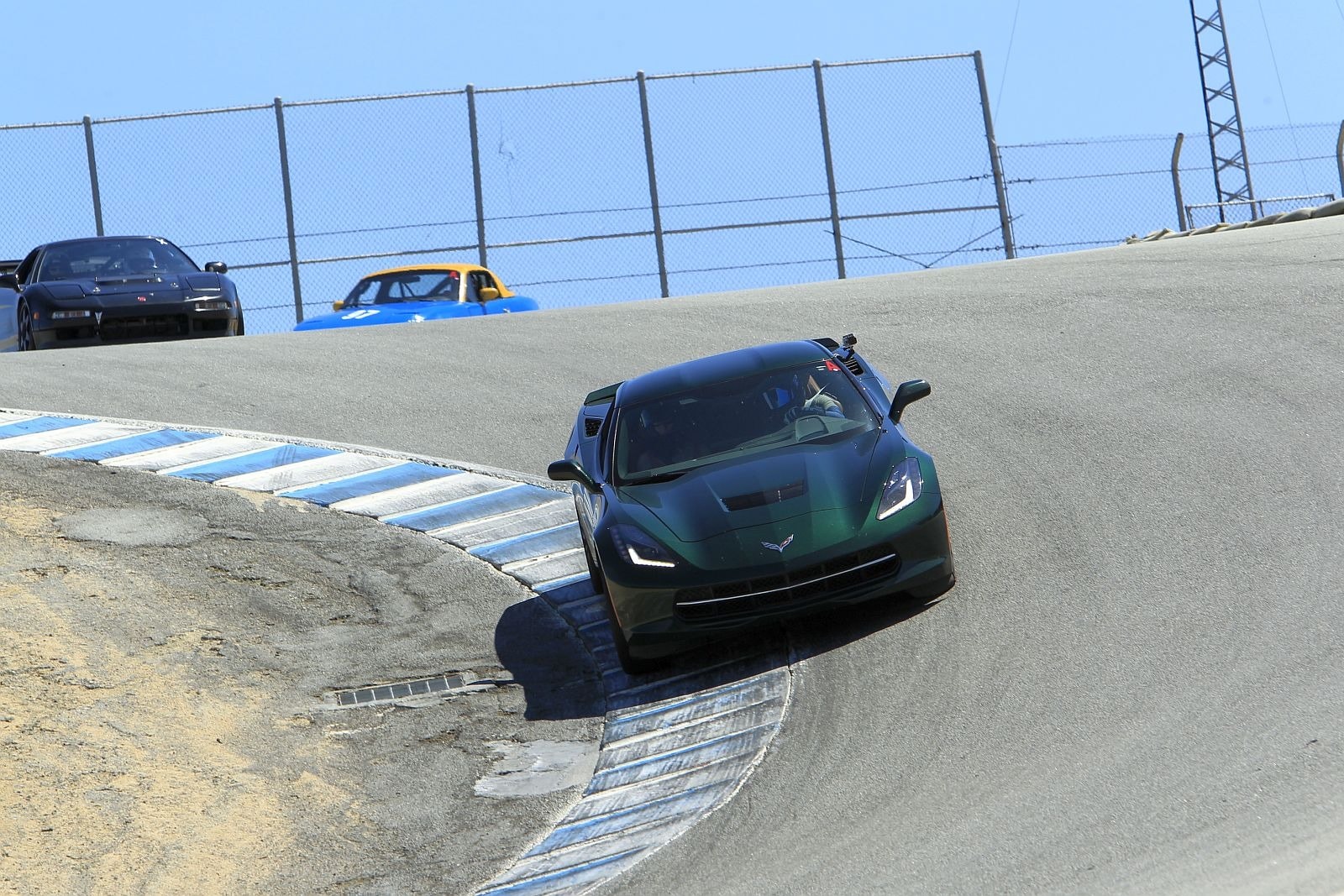
Some lessons were learned after our first track session at Mazda Raceway Laguna Seca in our long-term 2014 Chevrolet Corvette Stingray, at the so-called "Greatest Event in Track Day History."
First, it's loud. Second, even this Z51 package doesn't have big enough brakes for this kind of all-out use.
So I adjusted my driving habits in later sessions.
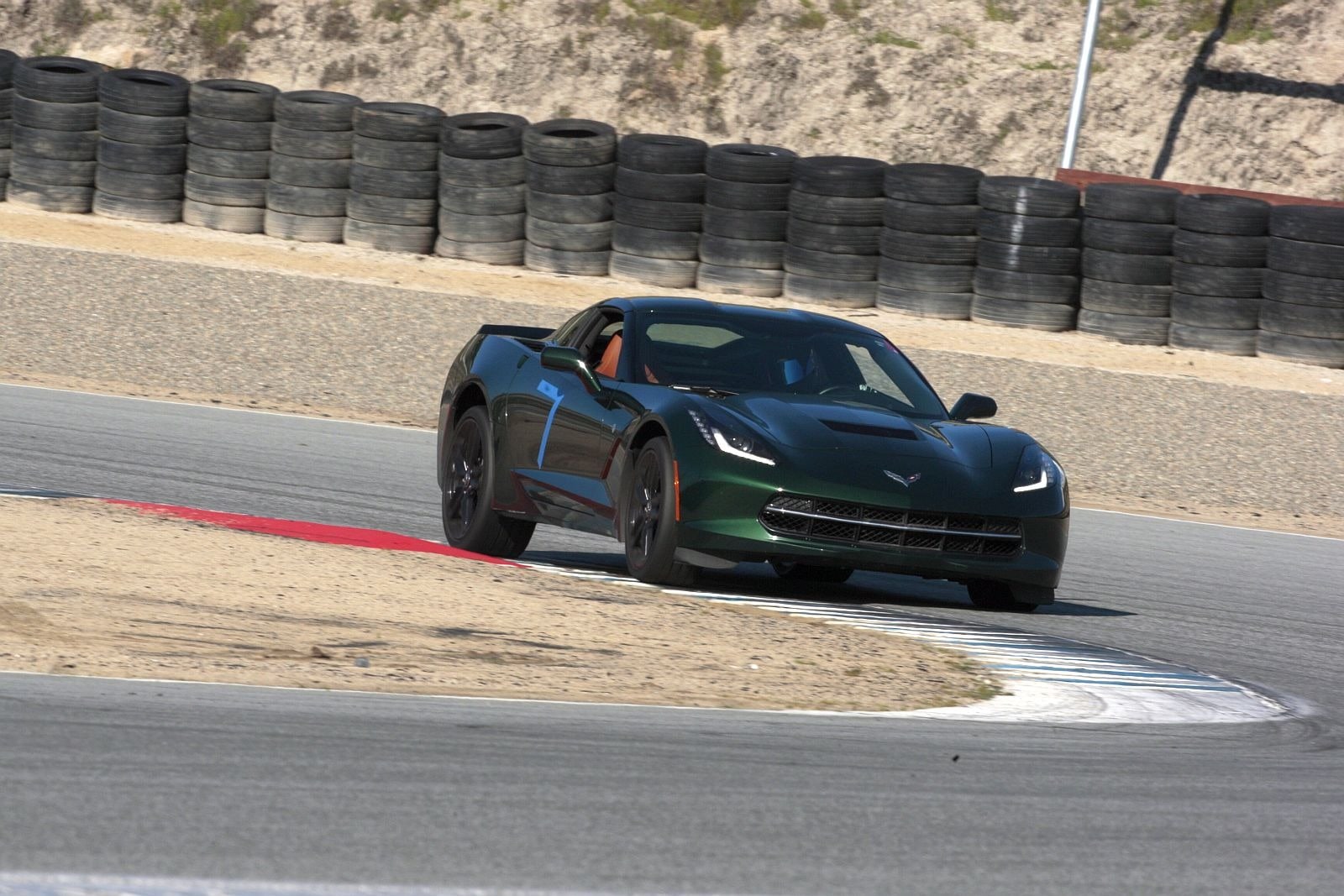
The noise ordinance issue was pretty simple. I short-shifted from Turn 5 to Turn 6 and I never had another problem with the Sound Police the rest of the two days.
As for the overheating brakes, I did two things: I started braking sooner and less hard, and when I'd feel the pedal start to get long and soft somewhere around halfway through the session, I'd take a lap or two and go easy, cooling things off, and then usually I could go hard for the remainder of the session.
Did I want to have to do either of these things? No. But sometimes you gotta do what you gotta do. Things aren't always going to work perfectly.
I also fiddled with the Vette's PTM system (Performance Traction Management). I stayed in the top two levels, Sport 2 and Race (or Perf Trac 4 and Perf Trac 5, respectively). While these two fully disable the stability control system, they keep the traction control active. With the cool temps (50s-60s) and our worn tires, the traction control was pretty active.
I also did a session with PTM turned off. You obviously can't be as ham-footed with the gas pedal, especially with 460 horsepower on tap, but the C7 Vette was still manageable. That said, this car keeps you extremely alert when you're driving it on the edge. You can feel that if things were to start going badly, (meaning spinning out), they'd do so quickly, especially when you're dialing power back in exiting Laguna's infamous Turn 6 dip, and through Rainey Curve as well. But being on the edge is what track driving is all about, and it was exhilarating for sure.
And it turns out doing both car and moto sessions is tiring! With only four run groups total (two car, two bike), I would get a session break in between each session. Needless to say, there was lots of changing in and out of my moto leathers, boots and gloves.
So how much crossover is there between car and bike? For me, not as much as you might think, at least in terms of the actual technique of driving and riding. What I mean is, when I'm out there in the car, I pretty much never think, "Hey, why am I not doing this particular thing on the bike?" Or vice-versa.
In most corners you run pretty similar lines, but the bikes have more room to work with because they are so much narrower. I was running the double-apex line through Andretti Haripin (Turn 2) on the bike just like I do in the car.
What I definitely don't do is run up on Laguna's pretty-serious corner-exit rumble strips anywhere near as much on the bike as I do in the car. And Turn 1, the over-a-crest left-hander, is a true turn on a bike, and it can become a tank-slapper if your front wheel gets light. Which is why I run a steering damper on my bike now.
With so much more going on with your body on the bike than in the car, you experience extremely different sensations. The biggest crossover between the two is a need to be smooth. It's utterly critical on the bike, as they can be upset easily and you only have two tires to work with.
If you can be smooth on a bike, quite often you end up being smooth in a car, too.
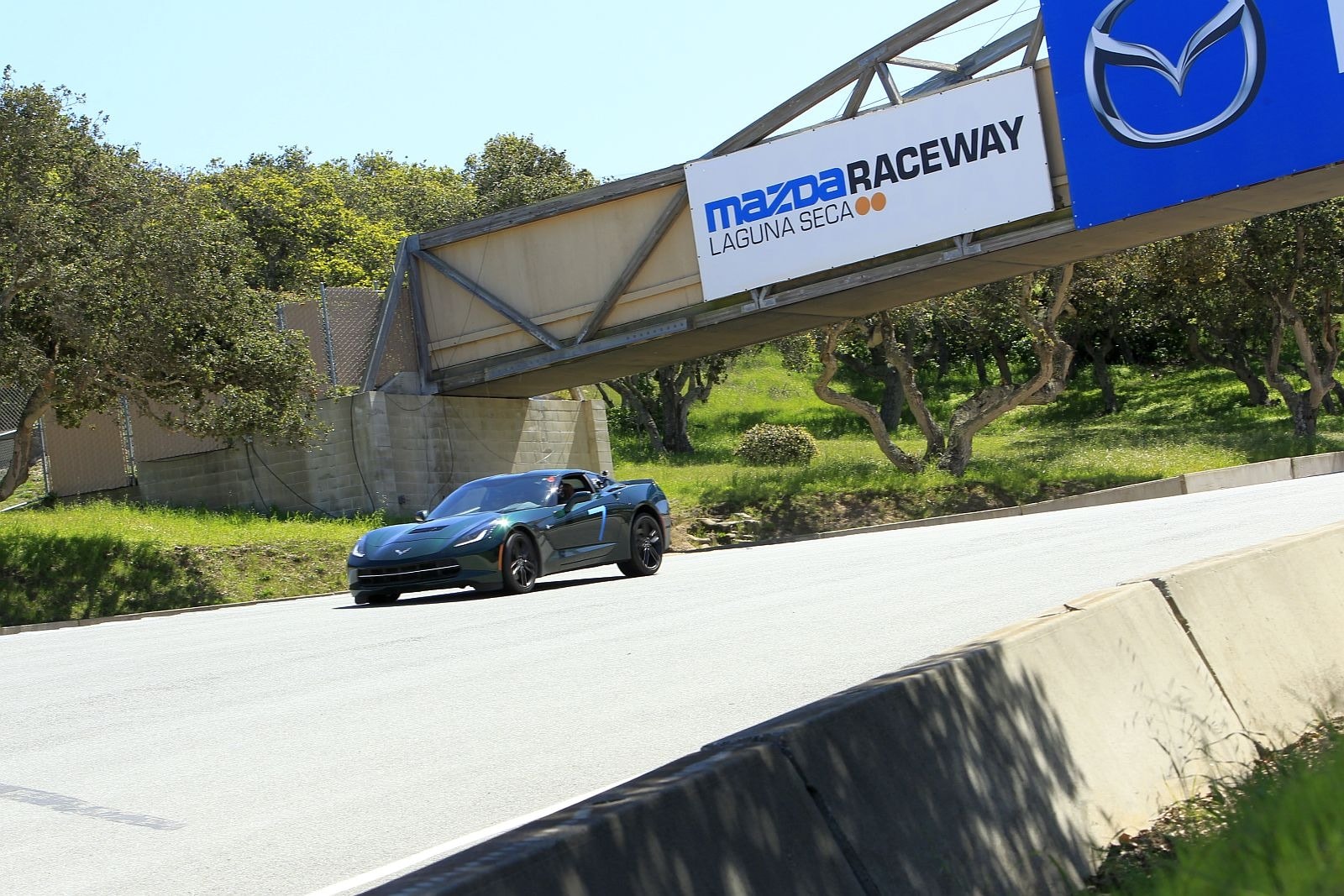
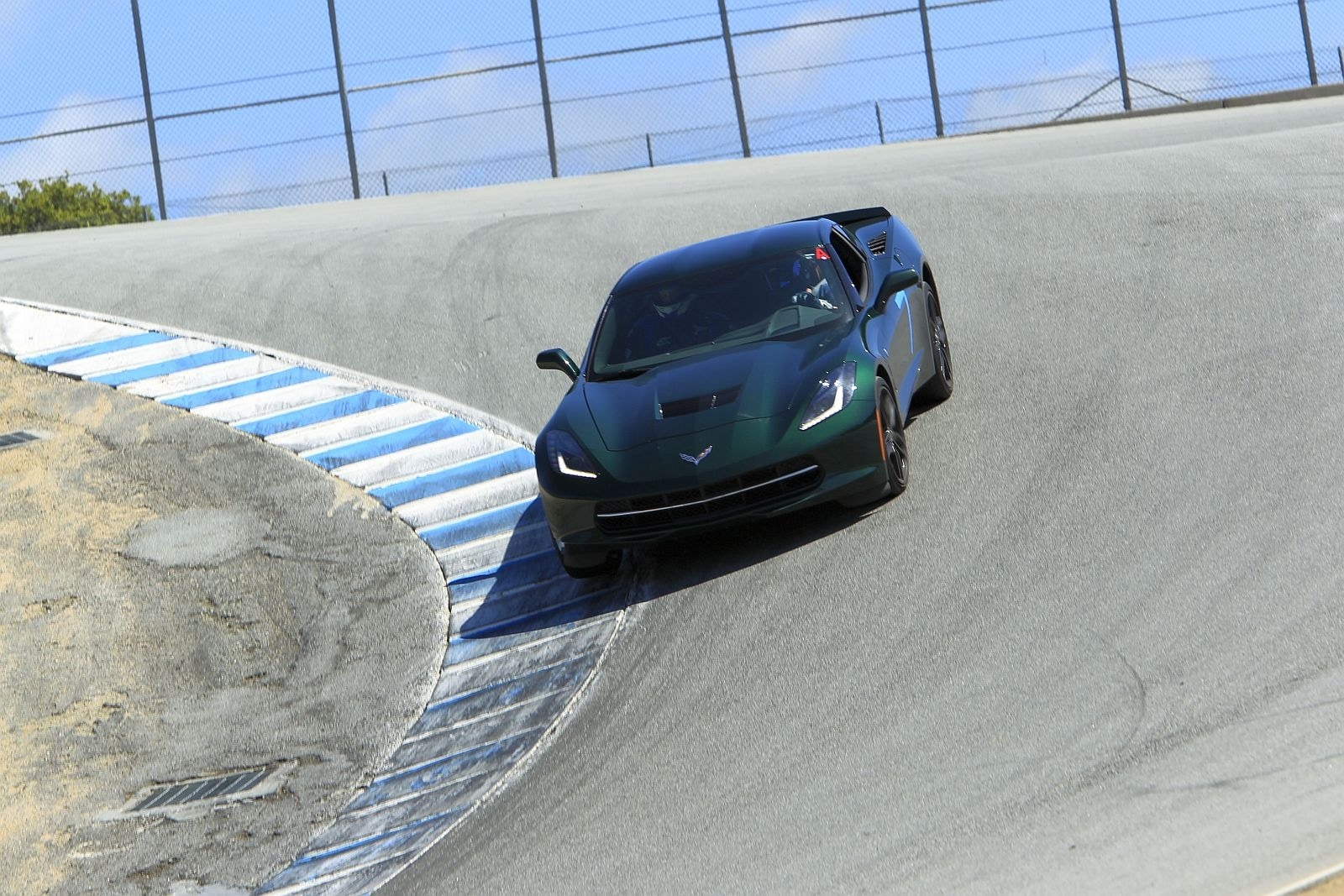

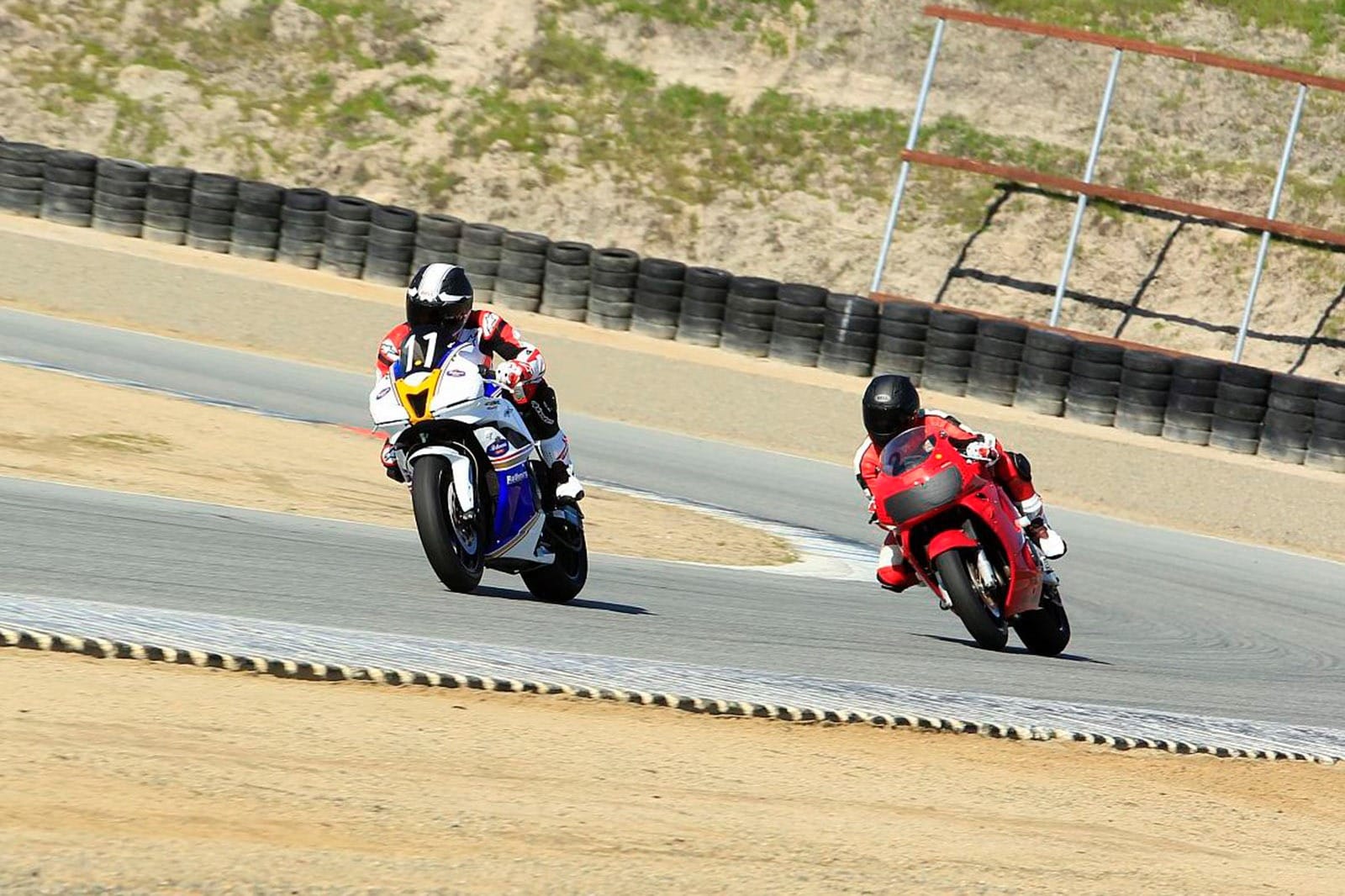
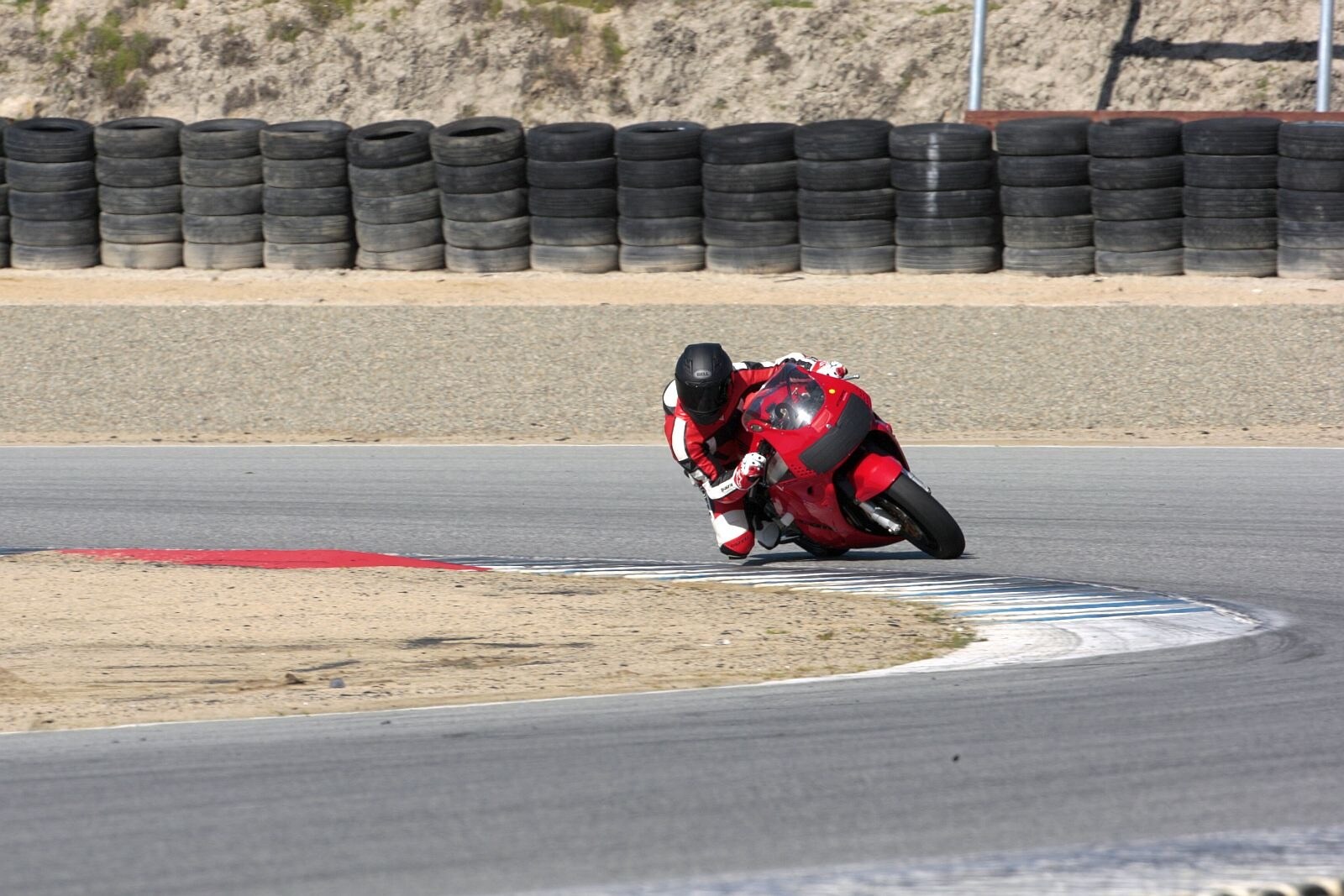
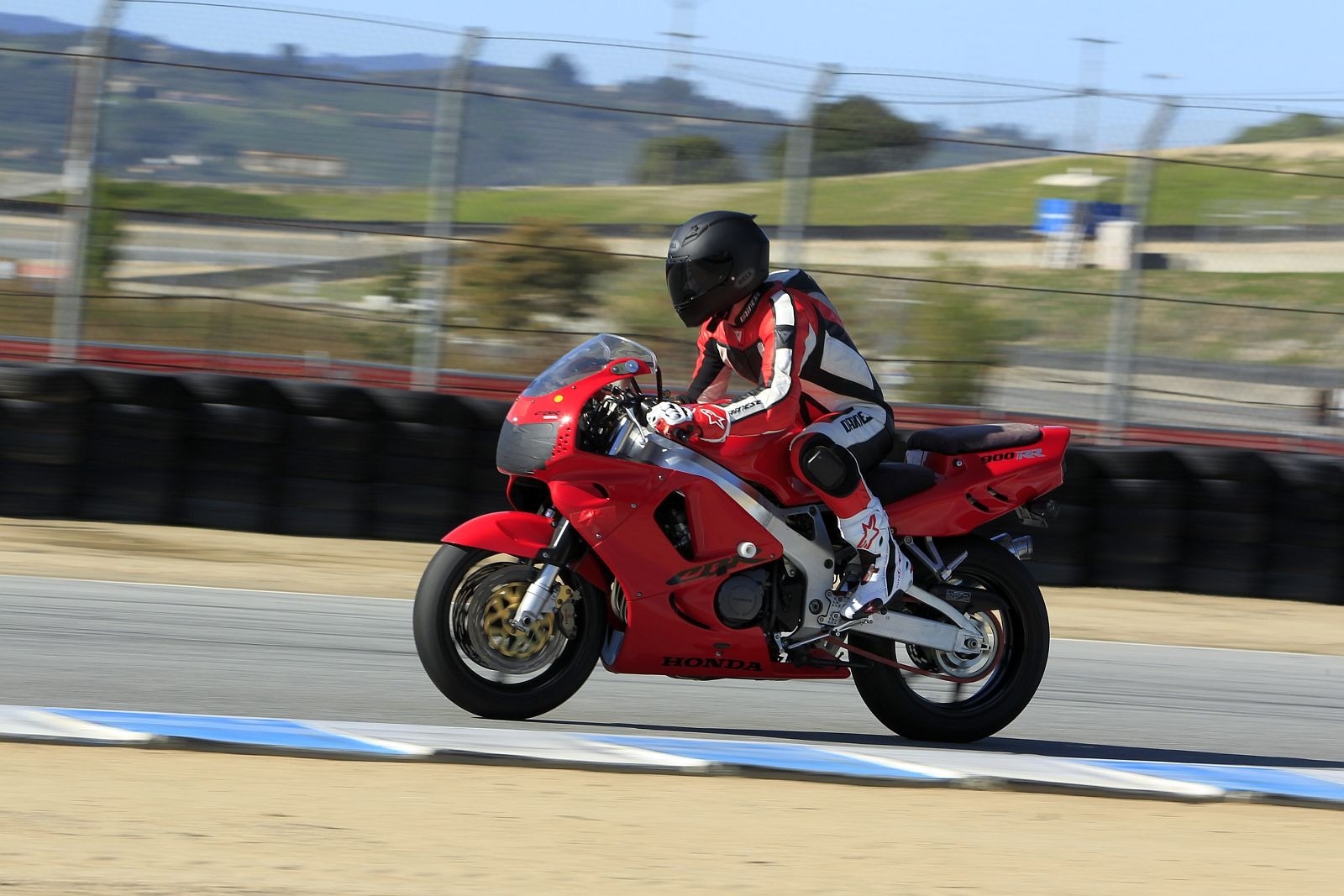
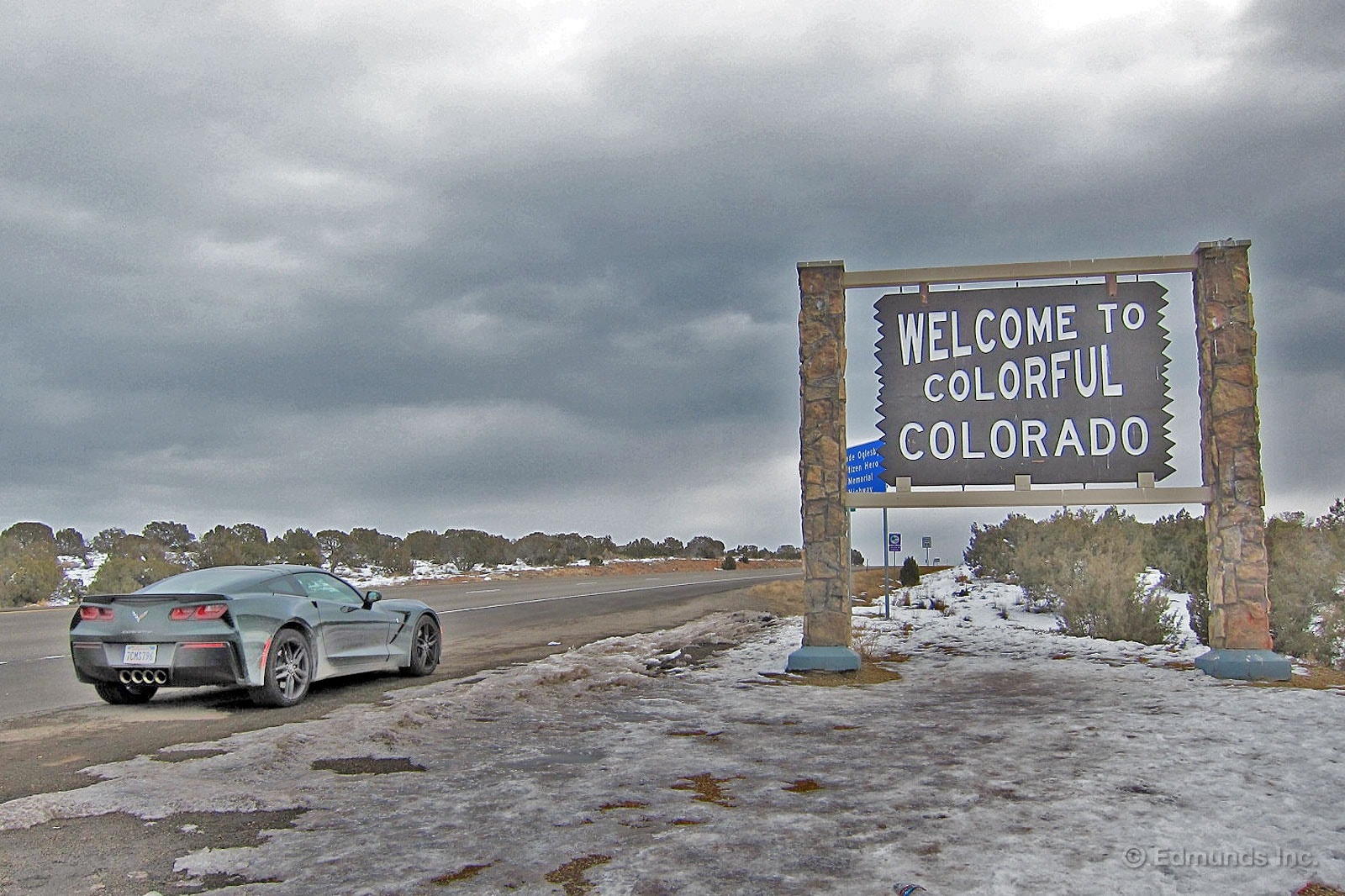
In the past four weeks we've driven our Lime Rock Green 2014 Chevrolet Corvette Stingray a little under 3,000 miles. No, it doesn't sit around much.
And as you can see, at a lifetime fuel economy average of 19.5 mpg, it's still delivering better mileage than any supercar has a right to. However, there's something important I need to tell you about this month's numbers.
The truth is I left two tankfuls out of this month's calculations: two tankfuls that were burned at a track day at Mazda Raceway Laguna Seca in Salinas, CA.
On the track the Corvette traveled 171.1 miles and burned 29.551 gallons of 91 octane. That's an average fuel economy of 5.8 mpg.
Obviously it wouldn't have been fair to muddy the Corvette's overall average by including those tankfuls.
Worst Fill MPG: 9.4 mpg
Best Fill MPG: 30.8 mpg
Average Lifetime MPG: 19.5 mpg
EPA MPG Rating: 21 Combined (17 City/29 Highway)
Best Range: 471.9 miles
Current Odometer: 19,283 miles

The featured car in Captain America: The Winter Soldier is a 2014 Corvette Stingray, but it isn't driven by the main character. It belongs to the Black Widow (played by Scarlett Johansson) and so, of course, it's all black. This Corvette and the other Chevys are featured prominently in the film and replace the Acura vehicles from the Avengers and Iron Man movies.
Scarjo's Corvette is one green coat of paint (and a brown interior) removed from our Stingray. In fact, it's even a Z51 like ours. It's impressive that the filmmakers had the restraint to leave the Stingray car stock. Usually you get one-off vehicles like the Acura NSX roadster or something ridiculously modified like the Need for Speed "900 Horsepower" Ford Mustang.
"The design speaks for itself," said Steve Tihanyi, GM's general director of marketing alliances and branded entertainment of the Corvette Stingray. "It's an absolutely beautiful car."
Black paint with black wheels is a fairly popular color combination these days. So you might see a bunch of "Black Widow" Stingrays out there. No word yet if GM will release a special-edition version like it did for the Transformers movies.
This Avengers-Corvette connection already seems to be catching on in the real world. There's a guy in my neighborhood with a Lime Rock Green Corvette. His license plate says "HULLK"
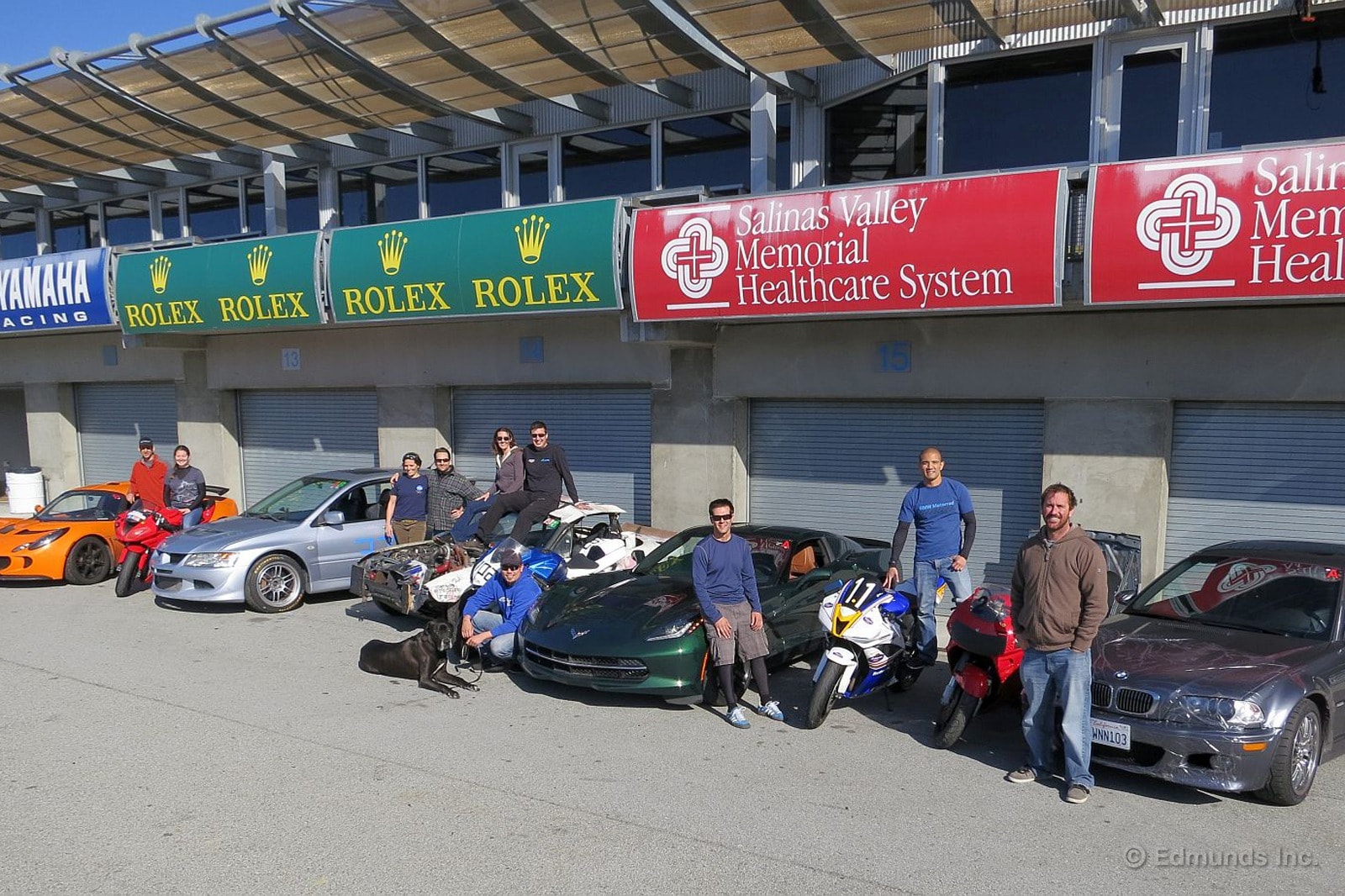
Why do we do track days? Sure, there's the pure speed of it all, the skills involved with the desire to make a machine go as fast as you possibly can around a race track. In this case, that machine was our long-term 2014 Chevrolet Corvette Stingray.
But there's more to it. I don't want to get all sentimental on you here, but there's also the whole hanging-out-with-your-buds aspect. For me anyway, there's little on this Earth that I enjoy more than following right behind my buddies in cars or motorcycles, watching them attack the track.
It's awesome.
And what a group of people I'm fortunate to call friends.
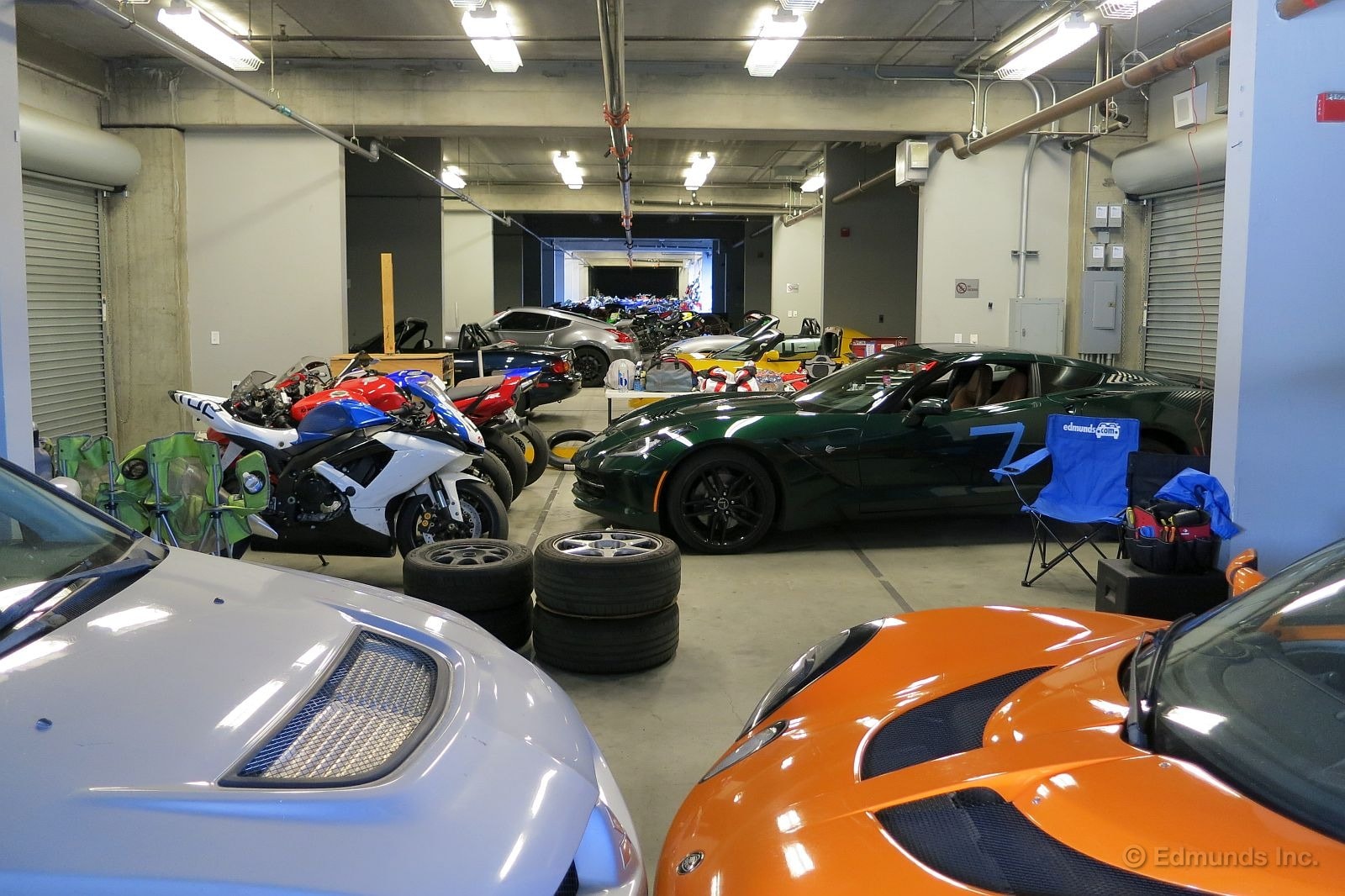
From left to right in the top photo, you've got Dan (Lotus Exige), Jen (Kawasaki ZX-6R), Mike and Tiff (Mitsubishi Evolution), Dave and Sarah (Eyesore Racing Frankenmiata), Oli and the world's giant-est dog, Cable (Suzuki GSX-R750), the author (Edmunds long-term Chevrolet Corvette, Honda CBR900RR), Jonathan (Honda CBR600RR) and Ryan (BMW M3).
Still, track days ultimately come down to the machines. And for these two days at Mazda Raceway Laguna Seca, Edmunds' long-term Corvette was a star. So many people stopped by to check out our Lime Rock Green special, and of course the thing was a terror out on the track, kicking up loads of Corvette dust as it rocketed around.
It was nice to see America's sports car get such a reception. Some track folks can be a bit snobby, but on this weekend everyone seemed happy to see a C7 in the flesh. And I kid you not, after a session some random motorcycle guy came up to me, shook my hand and said "Thanks for bringing that thing out here. And for driving it like it was meant to be driven."
Pretty much everyone was taken by how bloody darn American it sounded thundering up Laguna's front straight. Loud and proud.
I wish I could take credit for the second photo you see here, the one in Laguna's garages at the end of the first day. We were just about to shut out the lights for the night when my buddy Jonathan noticed how cool all the cars and bikes looked lined up. Not a bad shot, eh?
Cars and bikes, living together...
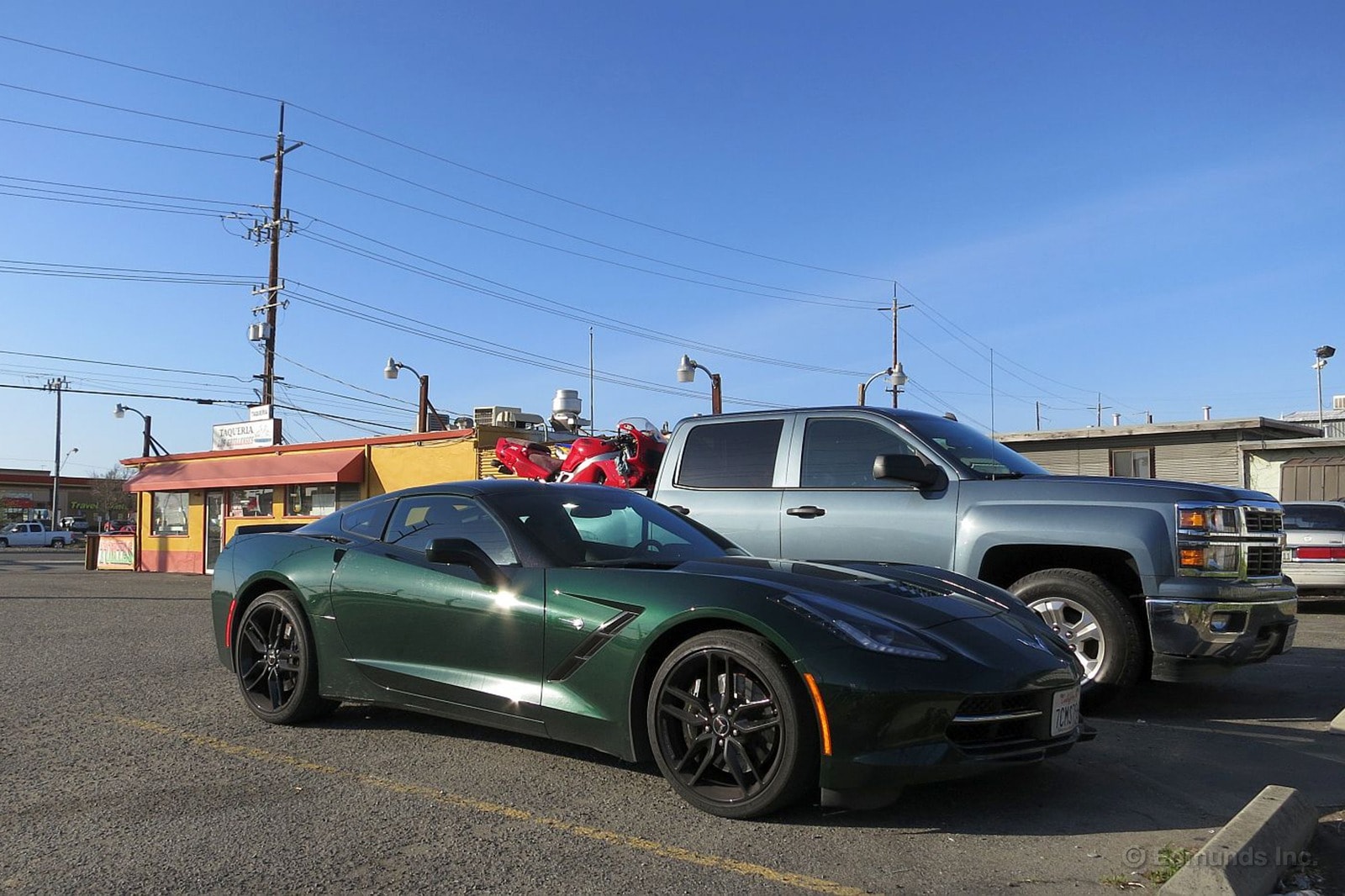
We made it. Two days of burning tires, brakes and fuel (lots of fuel) during our car/motorcycle track weekend at Mazda Raceway Laguna Seca.
First order of business: Food. Authentic Mexican restaurant on the way out of town? Check.
Aside from some brake-fade issues, our long-term 2014 Chevrolet Corvette Stingray proved a hilariously fast track weapon. What a machine.
And yes, with that 6.2-liter 460-horsepower V8, she gets a might thirsty when driven in anger. We averaged 5.8 mpg over the two days of full-throttle flogging at Laguna Seca.
But unlike your usual track car, the Vette is easy to live with to and from. Surprisingly comfortable and supremely easy to drive out on the road, and with all the modern conveniences.
Now our Lime Rock Green Vette is back at the office, squeaky track pads off, stock ones back on. And, um, yep: We need new tires.
Stay tuned for GoPro video footage of our track weekend coming soon. Until then, we'll resume normal Corvette long-term updates.
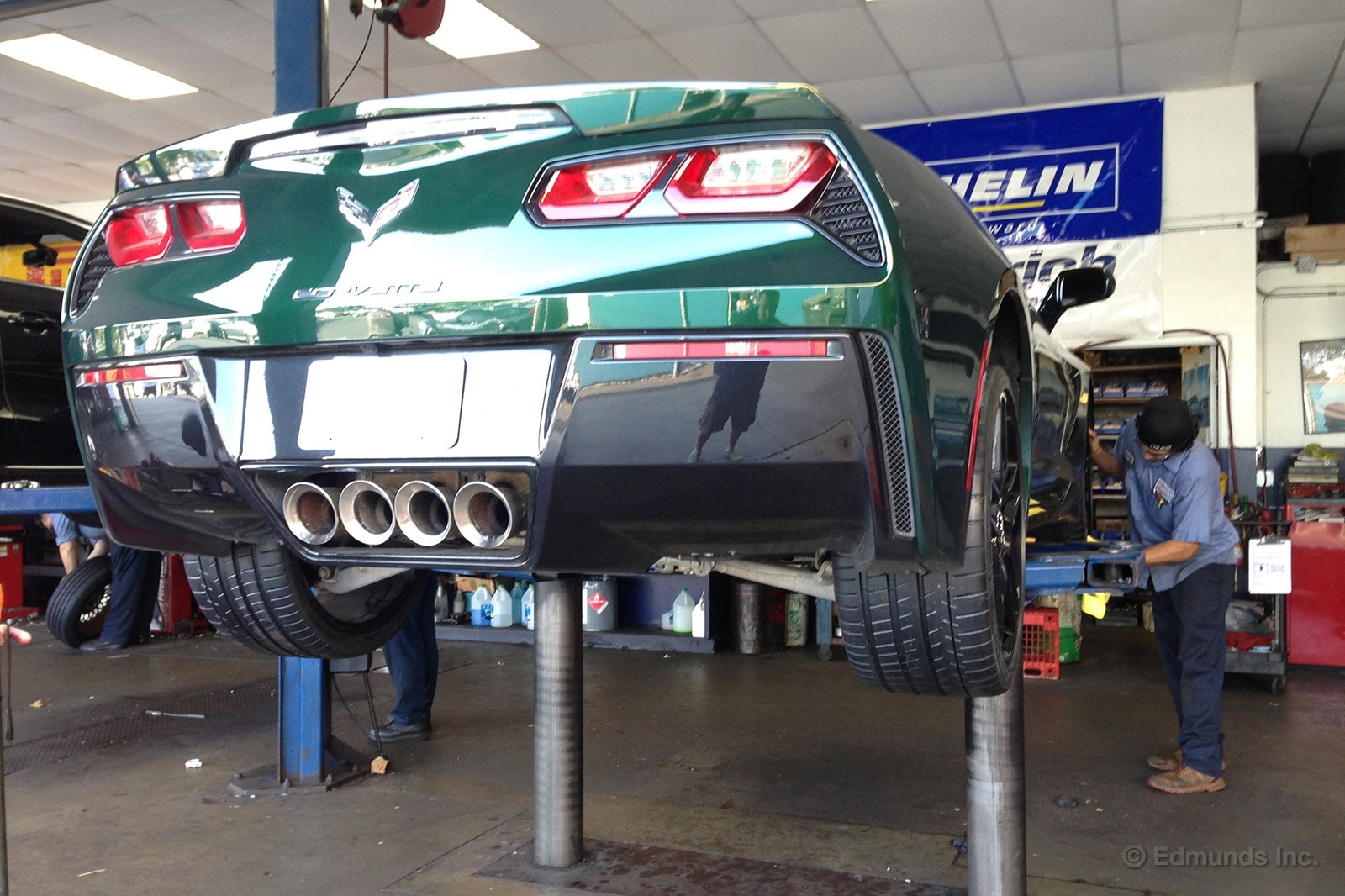
After six-months of ownership and about 13,000 miles of driving including testing and a track day under their belts, the factory Michelin Pilot Super Sports on our 2014 Chevrolet Corvette Stingray have given up the ghost and need to be replaced.
Looks can be a bit deceiving. Visually, these tires aren't that bad. I mean, no cords, the wear bars are still bars and they're still holding air. Trust us, though, they're cooked. If it were my car, I'd leave it like this for a while and be very, very careful around puddles. Even with light pedal pressure, the 'Vette just absolutely roasts these meats. It's a blast. Grip is boring.
But grip is also safe and this car is bonkers fast, so it was straight to the phones (and Internet) to find a good price on a new set of shoes.
We weren't 100% set on replacing the tires with another set of Michelin Pilot Super Sport ZPs. They're expensive and they aren't easy to find, so we started fishing around.
Straying by a few MM (like we did with those winter tires) wasn't an option this time. We wanted to keep the factory 245/35ZR19 and 285/30ZR20 setup.
We found absolutely nothing. Factory tires it was, then! (Not that these tires aren't great. I mean, over a G of lateral grip, 97-foot stopping distances and 4.2-seconds to 60? That doesn't happen on crap tires.
Nobody has these things in stock yet so we passed over the cheapest price with a potential 5-day wait. We also passed over a quote $100 less than the one we went with because it was all the way out in The Valley and would take them "a few hours." Not worth it.
Ultimately, we settled on Stokes Tire Pros here in Santa Monica. The price was right, they could get the tires in one day, and would have them on the car ASAP.
Total price: $1,693.22
Front tires: 343.95 each
Rear tires: 441.95 each
Then some silly things like taxes and install. The good news is that there was also a special promotion from Michelin going on so with only a few clicks and a picture of my receipt, I got a sweet $70 rebate. Or, at least I did the paperwork to get one...
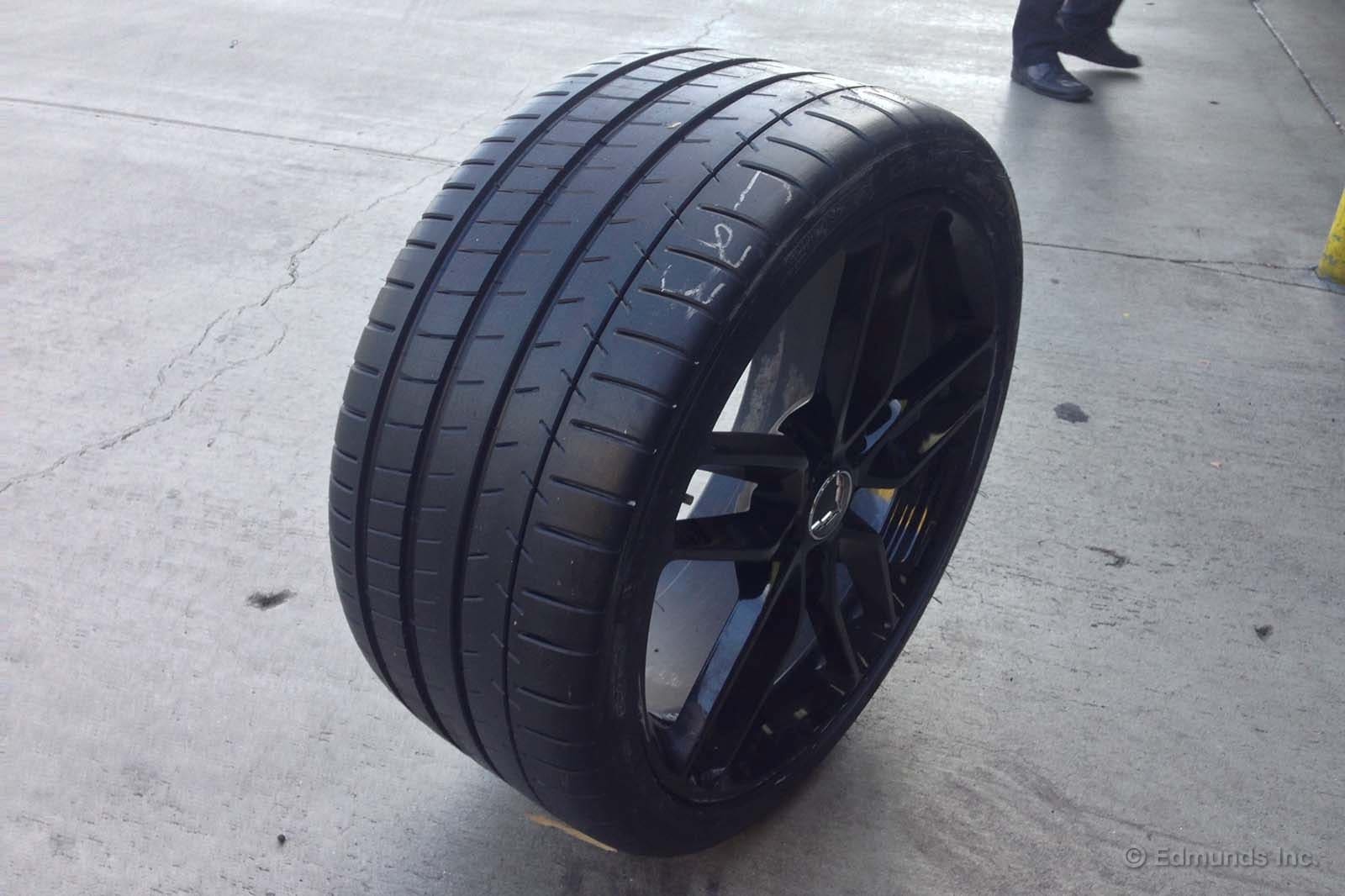
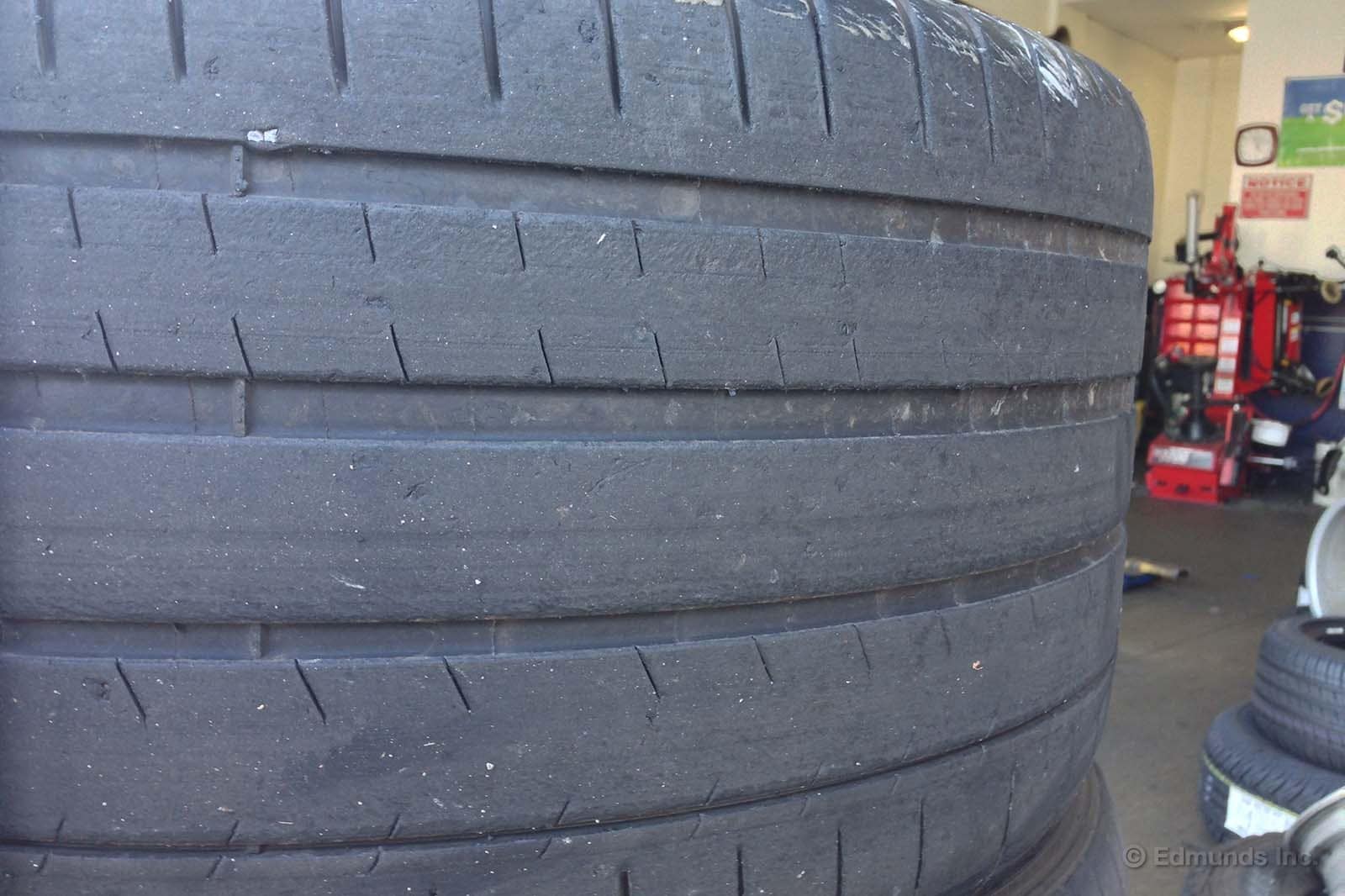
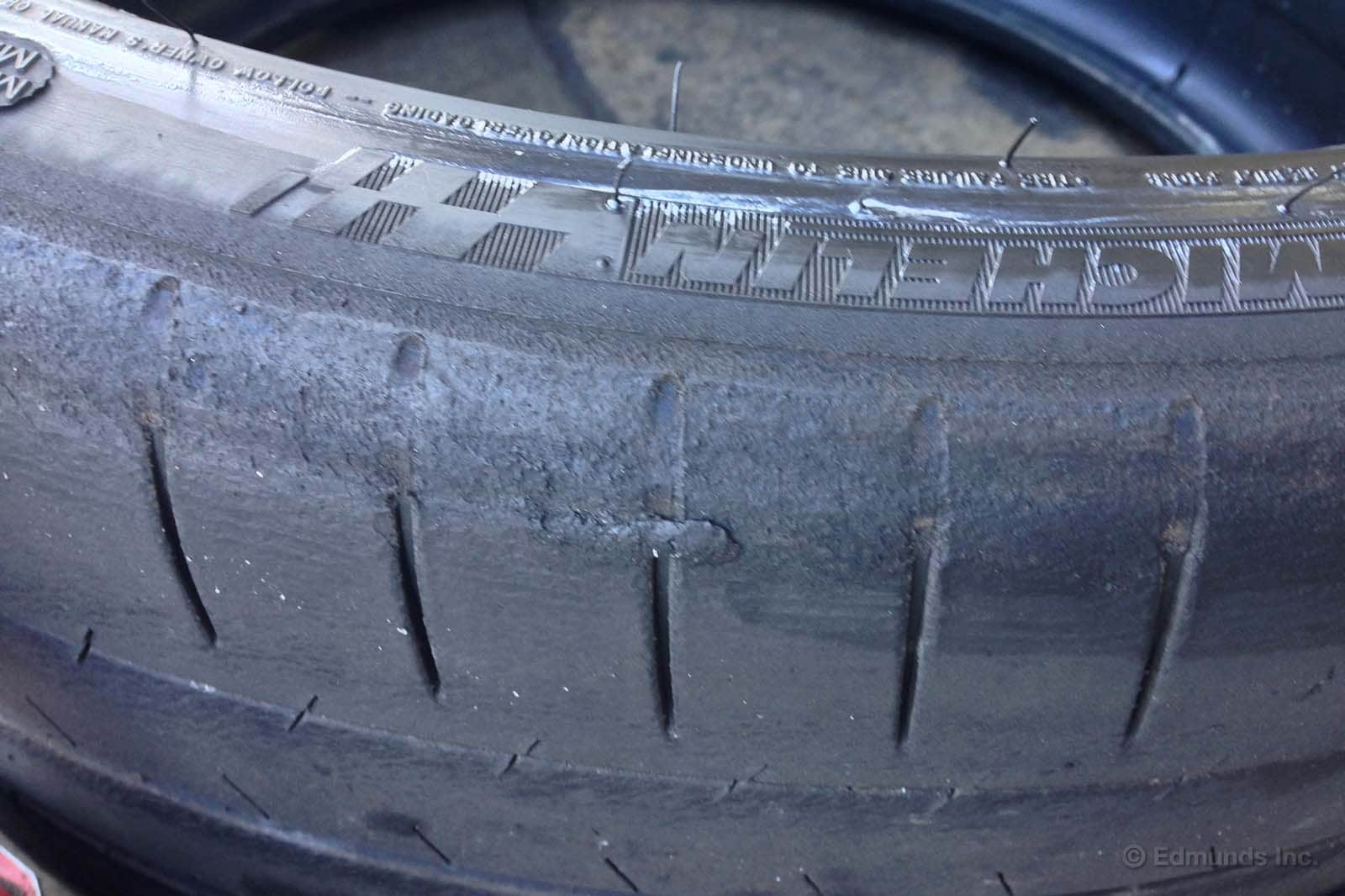
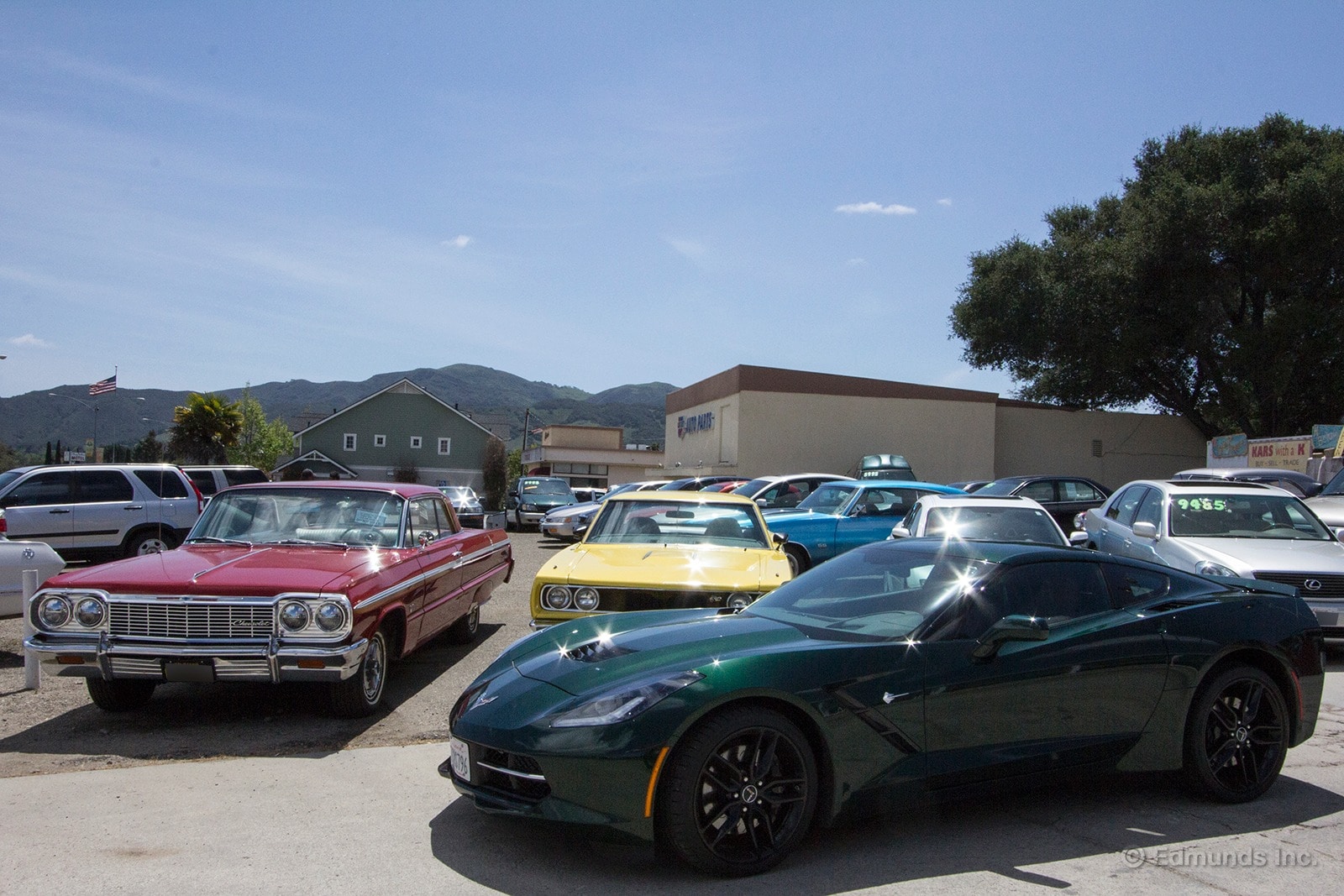
Anecdotally, I've gotten more attention in our long-term 2014 Chevrolet Corvette Stingray than I ever did in our long-term 2013 Porsche 911. In the Vette, it doesn't matter if I'm at a Sunday morning car show or just going to pick up some groceries, I'm bound to get attention. A 911 may cost $20-140K more, but the Corvette seems to turn more heads.
I give some credit to the fact that the Stingray is a relatively new car, but I also think it's more striking, more unique in Los Angeles and it hasn't looked the same since the beginning of time. Whatever it is, this thing brings people out of their shell.
I recently took the Corvette on a 350-mile road trip along Highway 1 up the California coast to Monterey. There are lots of two-lane highways along this blissful stretch of road, so you can see the other drivers up close and personal and I passed seven other Corvettes going the opposite direction: two C5's, four C6's and a Torch-Red C7. Every single driver gestured in some way. They waved, presented a military style solute, or gave me the thumbs-up. I naturally, returned their gestures. The notoriety wasn't limited to Corvette drivers either, though some specific Chevy drivers didn't play along.
On the same trip, I passed nearly three times the number of fifth-gen Chevy Camaros and none of the drivers took a second look at the Stingray. There are lots of Camaros in rental car fleets here in California, though, so that may account for some of the drivers' general aloofness. To test that theory, I waved at a few of the drivers in modified Camaros to see what would happen, but I was left hanging. Respect, it seems, knows no brand loyalty.
Haters.
To me, the Carrera 911 is classically good looking, but it's also understated. Not to mention, it's super common in California and it goes relatively unnoticed. The Corvette's aggressive styling and V8 roar are unique and inviting, and people want to know more about it. When you park the car, strangers ask what it is, how fast it is and even how much it costs. A few friendly foreign travelers I met along the way wanted a photo next to the car, so I happily obliged. As the new Stingray becomes a more common sight, things may subside over time, but for now, if you plan on purchasing a C7 Corvette, prepare to socialize.
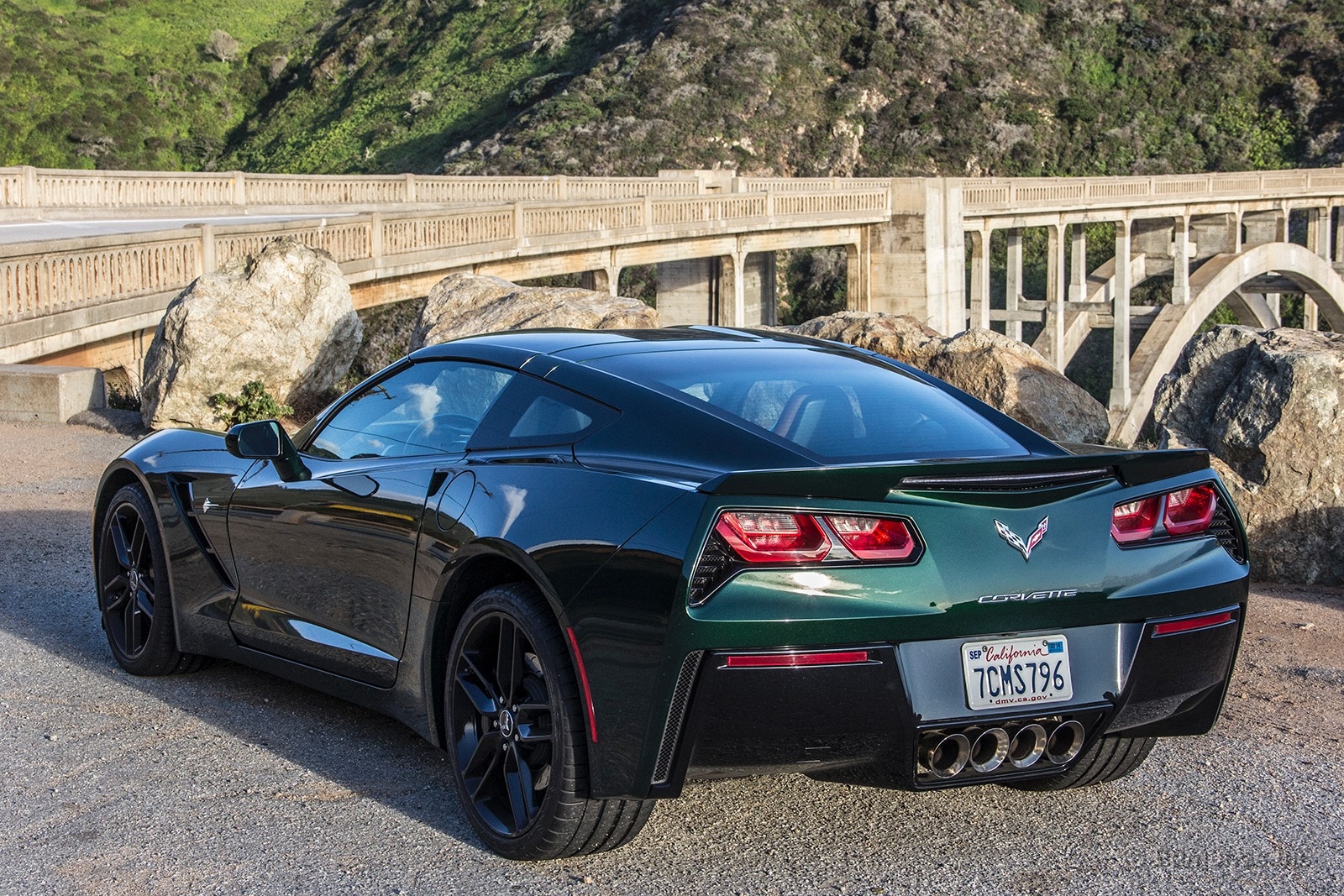
Our long-term 2014 Chevrolet Corvette Stingray isn't exactly practical. It doesn't have as much cargo space as a crossover, or a big cabin with lots of cubbyholes, but it fits me like a glove. And for an impromptu weekend trip up the coast to Monterey, I couldn't have asked for a better car. Here's why.
I really like the sound system. Mike Magrath disagrees. He thinks the system has too much bass. For me, the sound quality on the 10-speaker Bose audio system was great. With the treble, midrange and bass adjustments all equalized, I had no problem blasting the newest Black Keys single (which is a pretty bass-heavy song). And once I had exhausted my rock playlist, I had no problem finding podcasts for the long and boring bits of the journey. After just a few experiences with Chevy's MyLink system, I found it easy to get used to its controls.
The seats and driving position are ideal for a guy my size (5'9" - 175 lbs). The Corvette's seating position seems to favor shorter guys like Dan Frio and me, while taller guys like Scott Oldham and Mike Magrath aren't as happy in the cockpit. They can't adjust the seat to a low-enough position, and there isn't enough headroom to fit a helmet while they're at the track without some serious recline.
Even though it's a low-slung sports car, the Corvette isn't prone to bottoming out on driveways and the front bumper is high enough to avoid picking up stray rocks along the highway. (Anyone with a C5 Vette will find this news shocking.) Some exotics are so low that every pebble in the road, will damage the front end. With the C7 I didn't feel like I was going to tear the nose off when I came across some minor road debris, and that makes trips like this much less stressful.
For a 460-horsepower supercar, it gets great gas mileage. I resisted the urge to stomp on the loud-pedal most of the time and the Vette easily beat its combined EPA ratings of 21 mpg. I drove about 700 miles in two days, over a variety of highway and city streets, with no real concern for hypermiling and it got 22.2 miles per gallon.
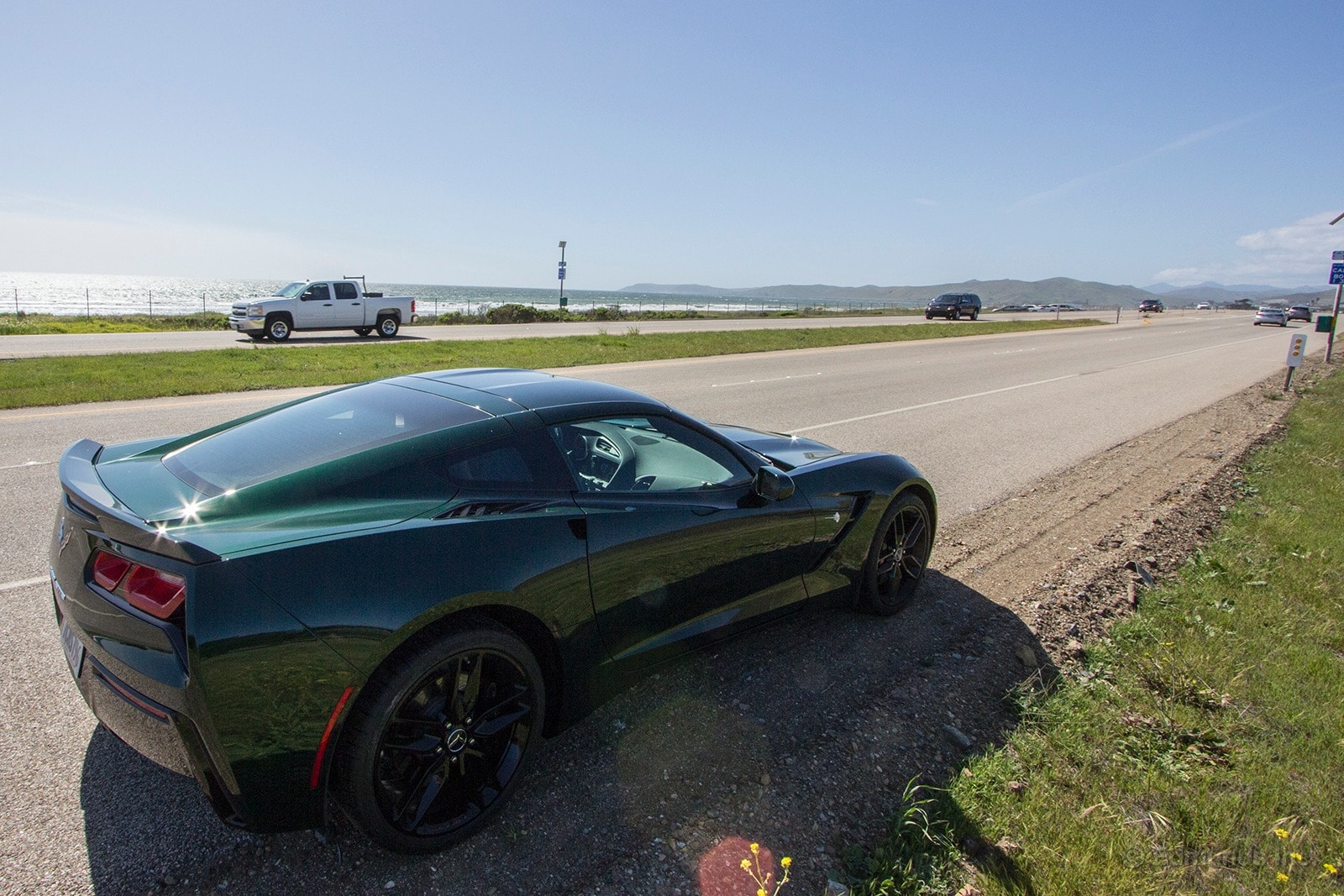
Most importantly, it's easy to drive fast through the hills. Switching from "Touring" to "Sport"' and back are easy. Engaging the rev-matching technology is just as simple. Thanks to the dual-mode exhaust and metric-ton of V8 power, it's absolutely invigorating to drive quickly. Does it get a bit bumpy over imperfect roads? Yes. Does this bother me? No. Even with a bad back, I wasn't sore after 14 hours in the driver's seat. It is a bit louder inside the Corvette than our old long-term 911, but that just means I can hear the exhaust without rolling the windows down.
This combo may not be appealing to everyone, but for me it's perfect.
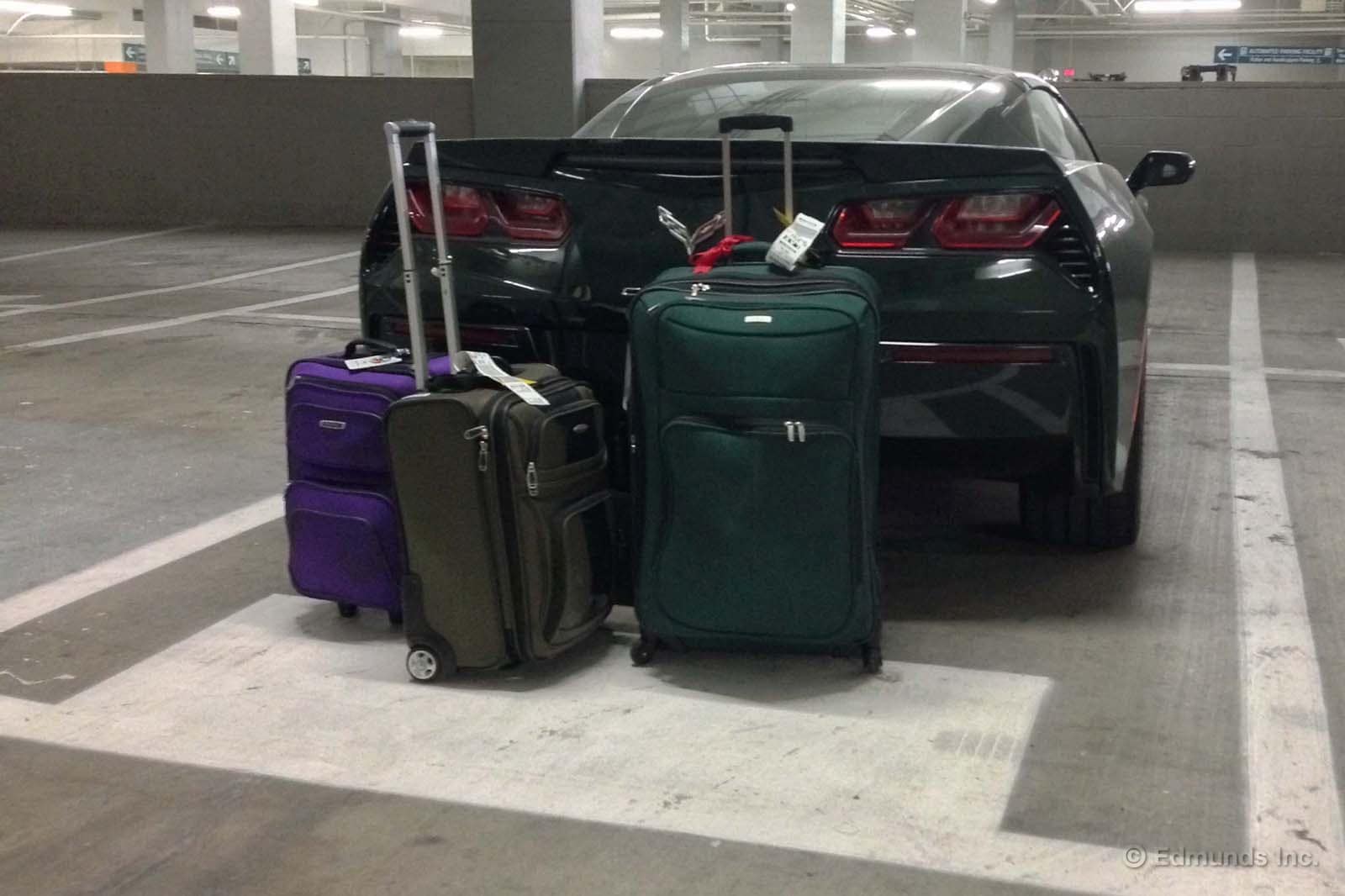
Our 2014 Chevrolet Corvette Stingray has a large cargo deck with 15 cubic-feet of space. It's not useful for things like groceries, but it's great for luggage.
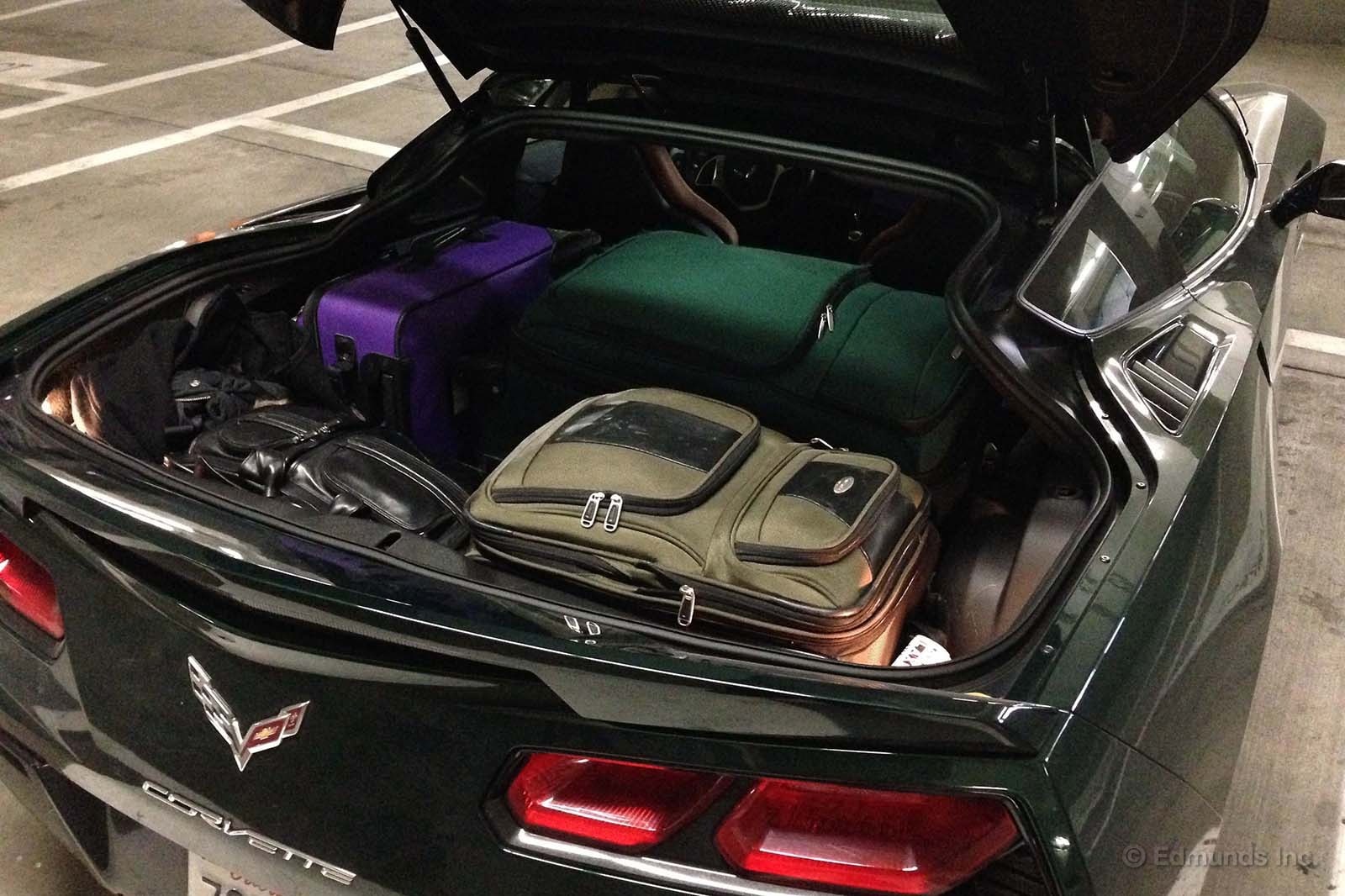
See.
That's two carry-on bags, one checkable bag that's nearly as tall as the Corvette's insane liftover height, one way-too-big backpack and one briefcase. Not pictured: a passenger.
That's not something our 911 could do. At least, not elegantly.
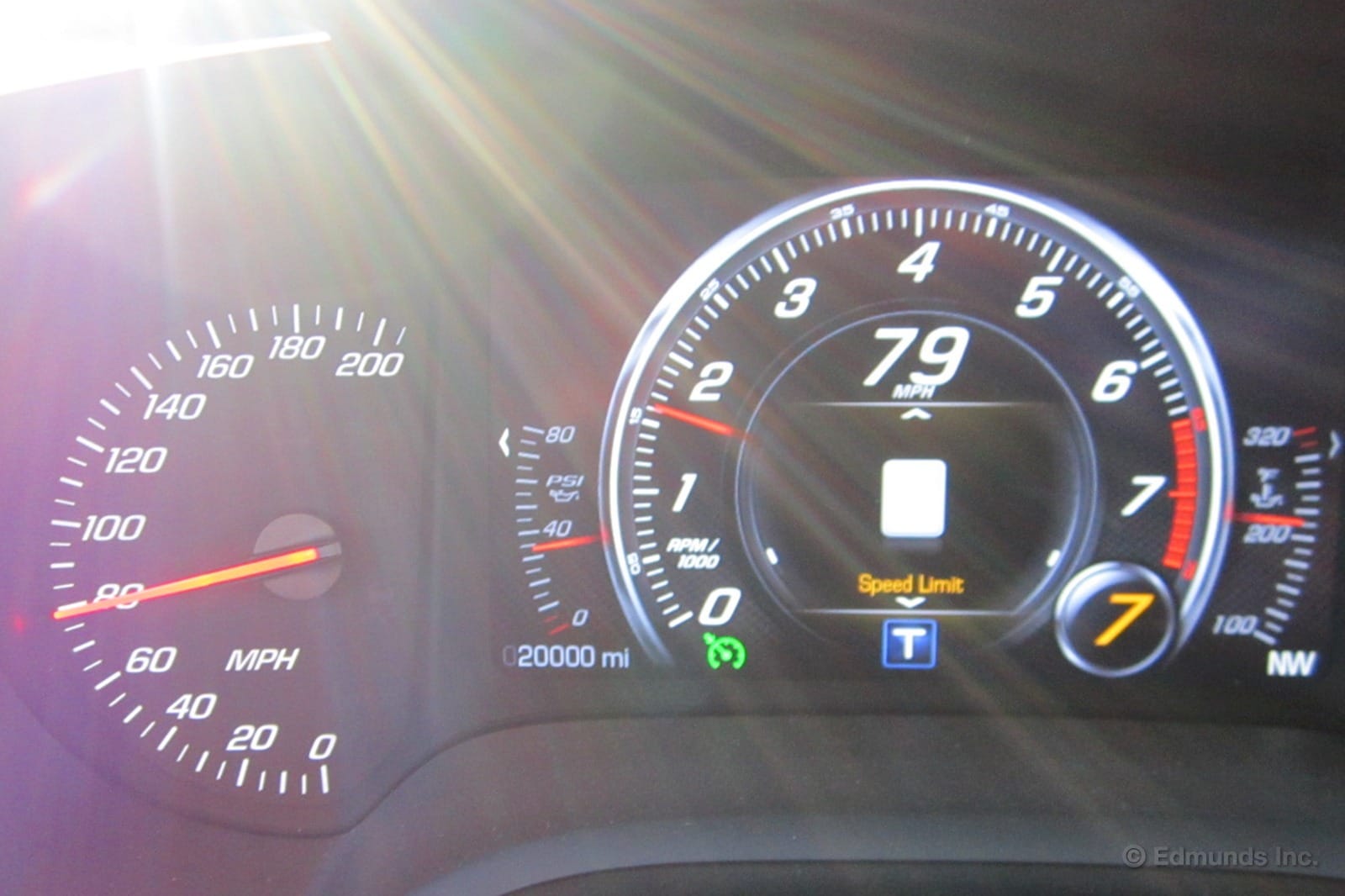
It's only been seven and a half months since we picked up 2014 Chevrolet Corvette Stingray No. 23 from the factory in Bowling Green, Kentucky, yet we've already reached the 20,000-mile plateau that we shoot for in all of our long-term cars.
Credit for this quick accumulation can certainly go to that initial journey to our headquarters in California as well as a round trip winter adventure to the Detroit Auto Show, but the Corvette itself has a lot to do with it. With its comfortable ride, accommodating interior and surprising refinement, it's been an easy choice for extended stints behind the wheel. The fact that we've had few problems with it over these miles certainly doesn't hurt.
The real question now is how many more miles we can tack on before the 'Vette's year is up? Will we be able to tack on another 10 grand in the next four months to reach 30,000, a yearly distance previously reached only by our long-term 2009 Dodge Ram (the current record holder) and 2009 Ford Flex?
There's only one way to find out.
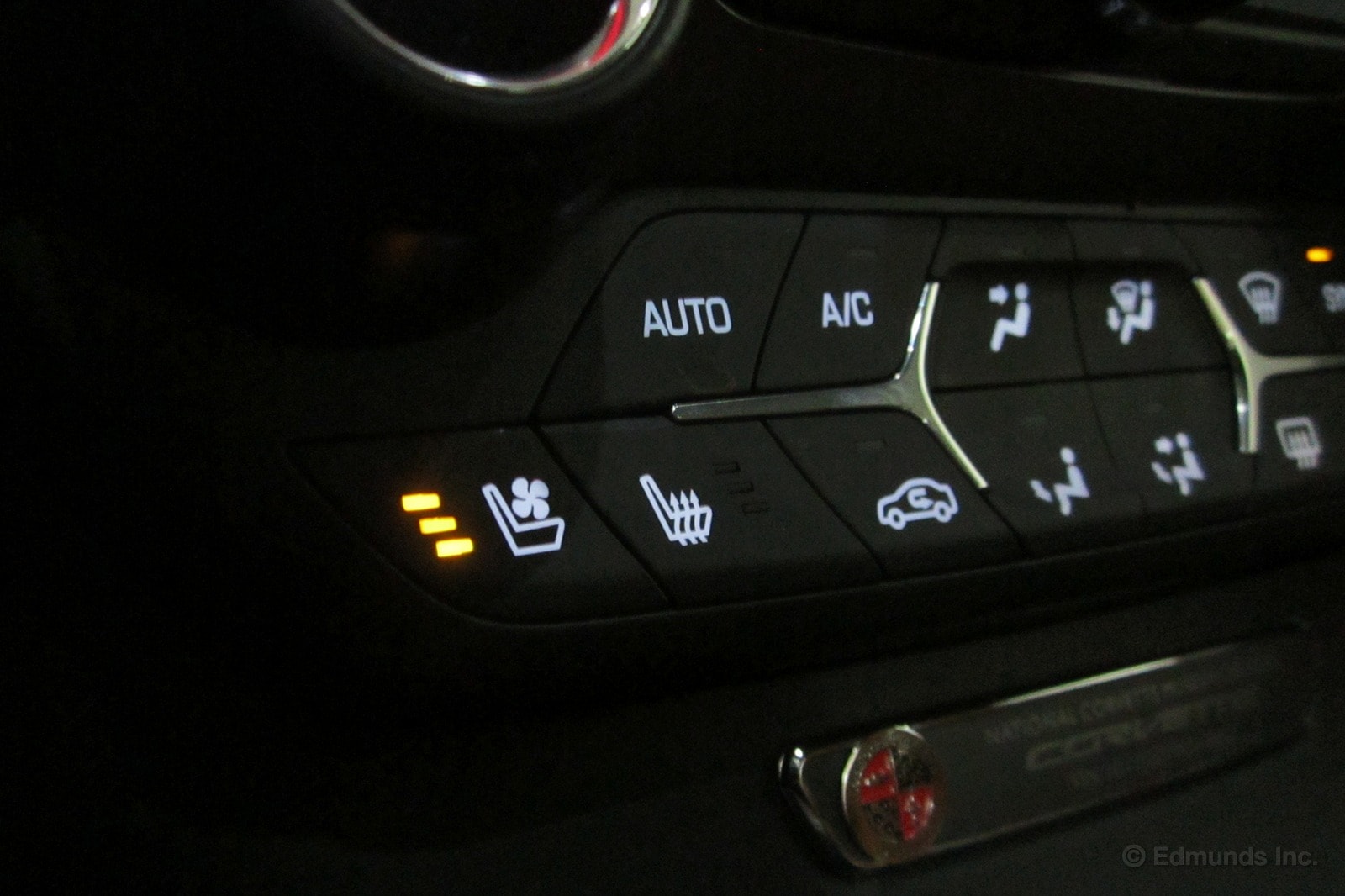
If you're thinking about buying a 2014 Chevrolet Corvette Stingray, make sure it's the 2LT that comes with ventilated seats. Why? I'll explain.
First, the Corvette is a quasi-convertible, and when you remove the roof, it can get considerably hot inside due to the sun. This can result in a sweaty butt.
Second, despite the space-age Aerogel material that insulates the center tunnel, it still gets a bit toasty inside roof-on or off. This too can result in a sweaty butt.
The solution, therefore, is ventilated seats. Their cooling capabilities could actually stand to be even more powerful, but their existence is nevertheless greatly appreciated. All convertibles should come with them.
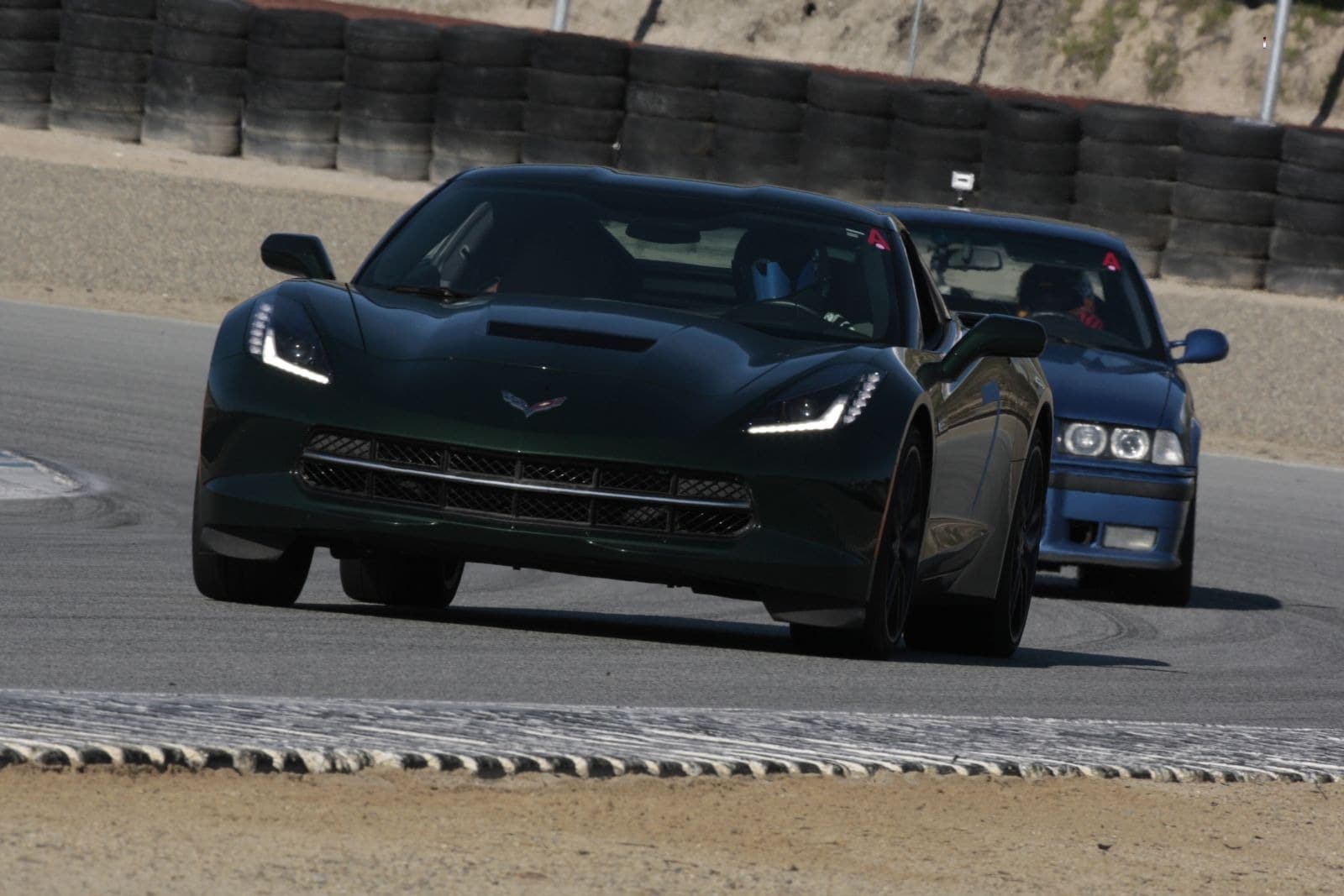
For those of you tired of reading about our track weekend in the 2014 Chevrolet Corvette Stingray at Mazda Raceway Laguna Seca, your wish has come true. This is the final installment.
And, as promised, here's a short video clipped together with some different GoPro angles, including car-to-car from a friend's Mitsubishi Evolution.
Hopefully the video gives you some idea of just how fast (and fun) the Vette is, and how easily it ate up Laguna's straights.
Sure, we struggled with weak brakes and worn tires, but it was still a blast to experience the C7 Vette's prowess. You can also see from the video that things get especially interesting when you turn all stability and traction-control systems off.
It seemed everyone wanted to go for a ride in the thing, too, and possibly the most telling comments came after I gave my friend Dave Coleman a spin (not literally). He got out of the car and said, "You know, I never thought of Rainey Curve as a passing zone before."
"Oh, did I pass someone there," I asked?
"Uh, yeah, like four different people," Dave said.
I hadn't even remembered. I'm not used to having one of the fastest cars at a track day, but with the 2014 Chevrolet Corvette, you naturally get a little of the old red mist going. And then pass cars at will.
Good times.
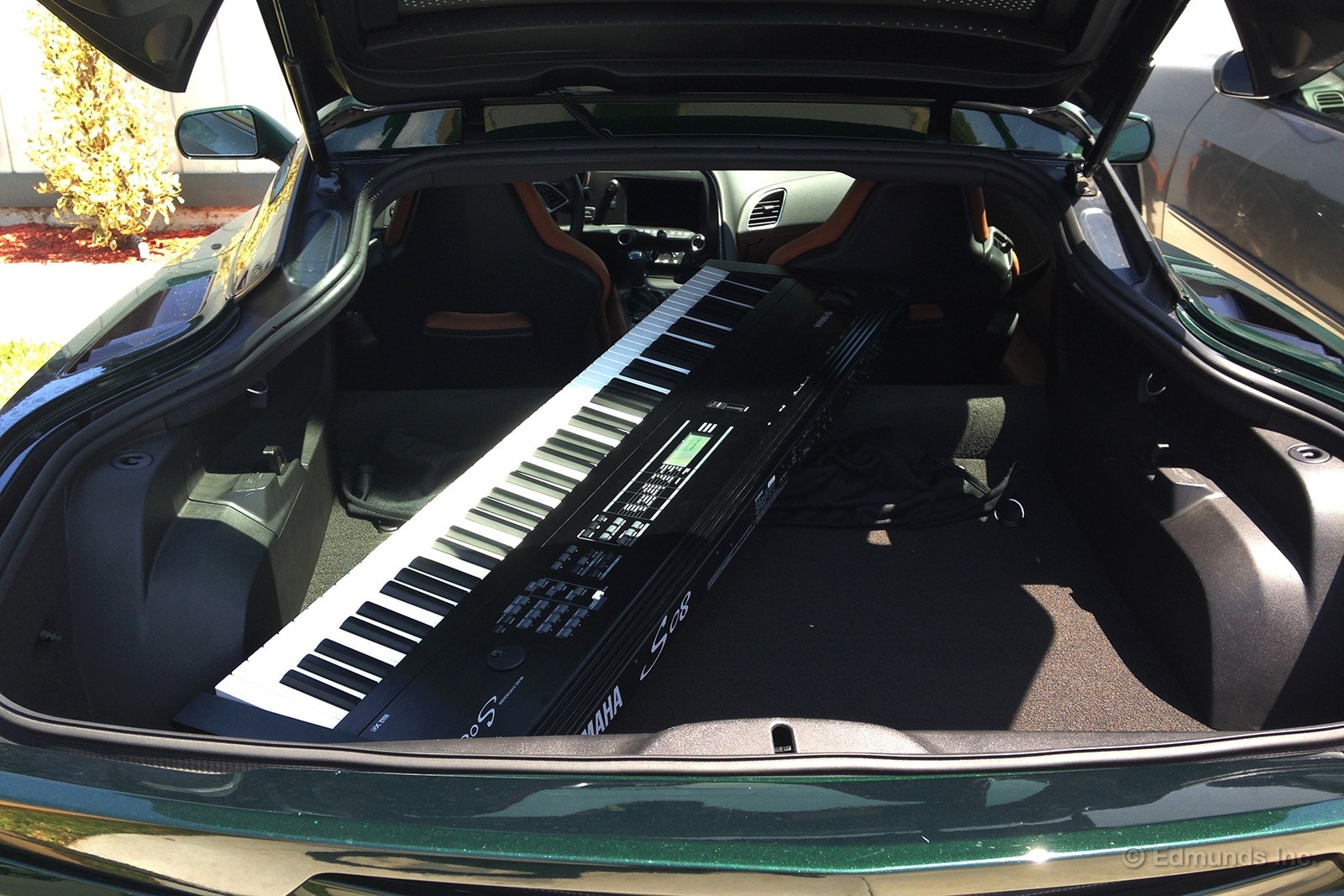
As cars go, the Corvette is about as rock and roll as it gets. Most rockers start with Camaros, Novas, Mustangs or whatever contraption they can afford. Maybe an Econoline when they start lining up steady shows. But when rock musicians get famous and come into a little dough, they always end up in something like our 2014 Chevrolet Corvette Stingray.
Even the guys who never made it, the ones who still hash out Thin Lizzy songs in the garage and order burgers and champagne at the Rainbow Bar and Grille in Hollywood, even those guys eventually find their way to a '78 Stingray or a C4.
But keyboards are not very rock and roll. Keyboards don't belong in the back of a Corvette. No self-respecting rocker is caught with anything but an amp, a Les Paul or a duffel bag full of cocaine in the back of a Corvette. So it was that the seasoned old rocker/tech guy who fixed my Yamaha keyboard eyed me with suspicion after I paid the invoice and loaded the 88-key unit in the Vette's hatch.
Rightly so, I'm afraid. If I'd bothered to measure the 52-inch long keyboard, I would've seen that it was about 4 inches too long to lay straight in the Vette hatch, even with the passenger seat at its full forward extension. To make it work, I had to angle and perch it a little unevenly on the rear shelf, then hug it slightly by sliding back the rear passenger seat. Not rock and roll.
It might look like it would work latitudinally. I didn't try, but I did measure later and found the aperture is about 52 inches. In theory, the keys might have slotted in through the widest part of the hatch. But it would've been very tight and probably required the help of a seasoned old rocker guy. This thing is an awkward 44 pounds. I also don't think I would have liked the way it would lean against the wheel wells and put tension on the keybed, the very assembly I'd just paid to replace.
The lesson learned: Next time, bring the Econoline.
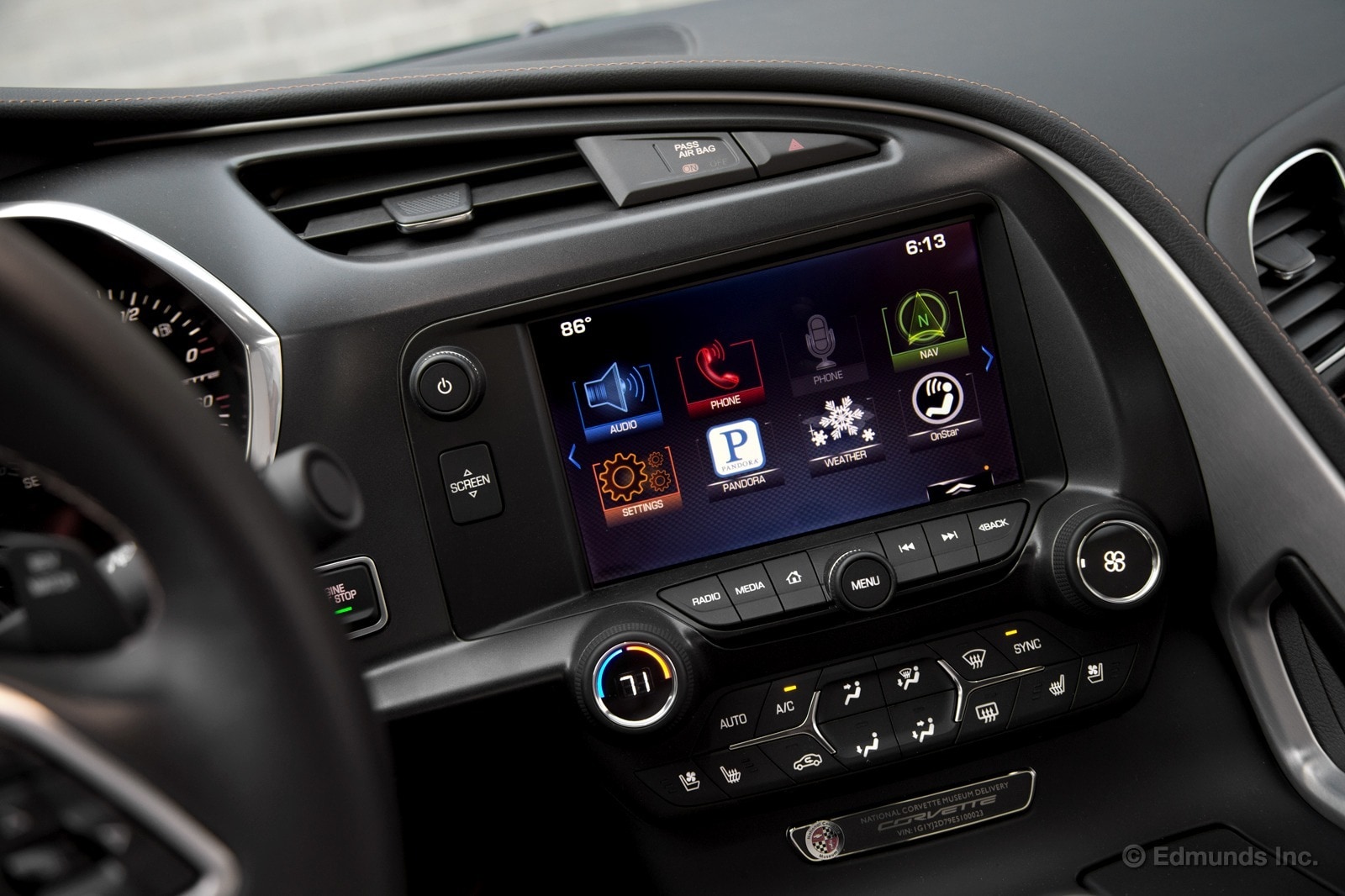
Well, the photo I took of the blank touchscreen in our long-term 2014 Chevrolet Corvette Stingray turned out all blurry, so above is one of it in its normal state.
Here's what I observed recently of said screen in its abnormal state:
Two different behaviors characterize the touchscreen's recent glitchiness.
The first one I noticed was when reversing. The screen showing the backup camera's view flickered constantly, and lines of static (?) would flit on and off the display.
Later, the second glitch cropped up. Upon startup the screen was blank, as if it was unplugged completely. Nothing would bring it back to life...
...until I performed a key cycle. Then all went back to normal.
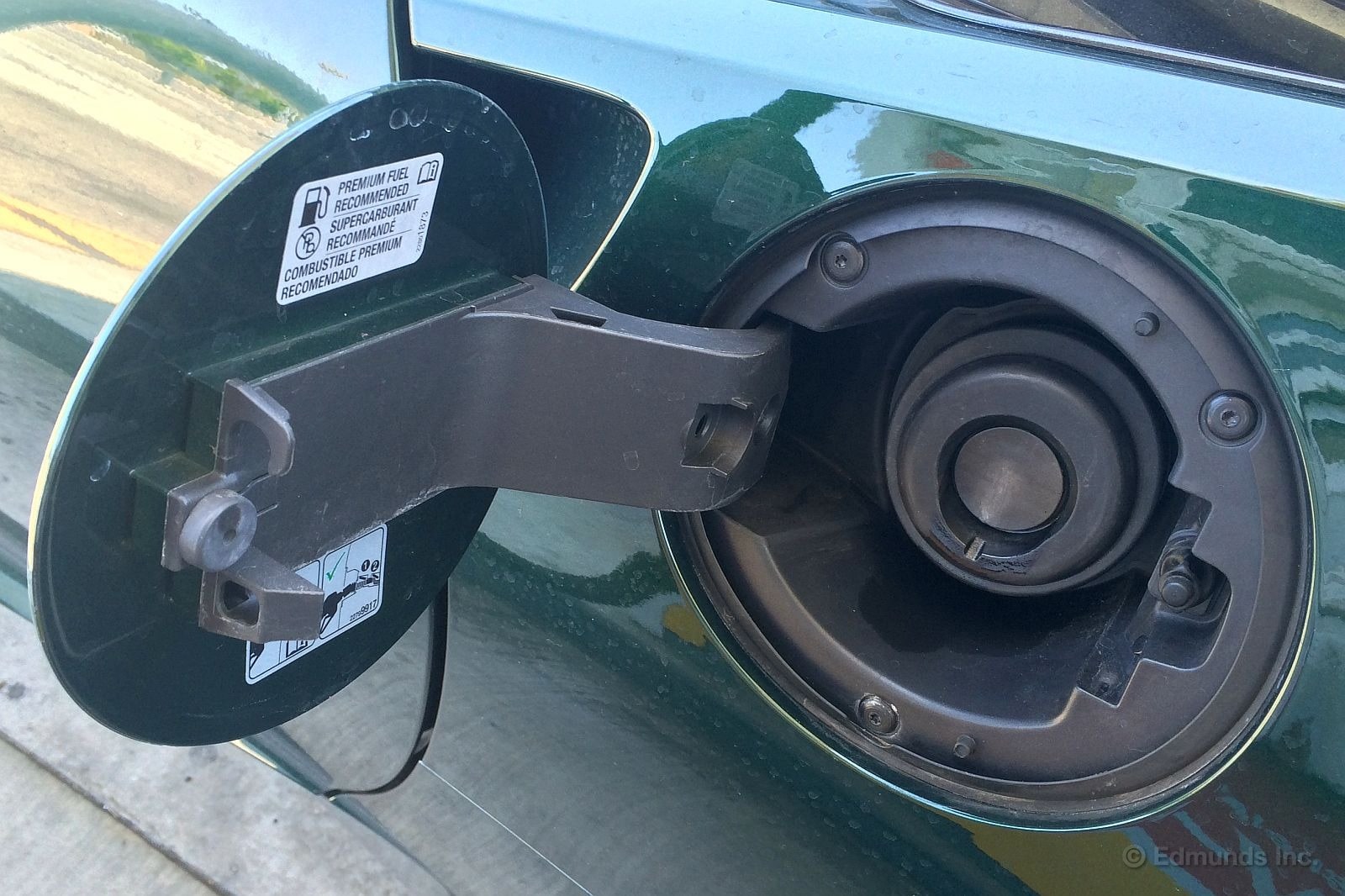
We only added 1,953 miles to our 2014 Chevrolet Corvette Stingray this month, but that was enough to vault past the 20,000-mile mark. With 4 months to go, it seems that 30,000 miles is a distinct possibility.
But we're still no closer to the Vette's 21-mpg EPA Combined rating. In fact we slipped a bit this month, the lifetime average falling from 19.5 to 19.3 mpg after a May that passed by at just 17.2 mpg.
One reason could be that seven-speed transmission. Chevy engineers clearly used seventh gear as much as possible during EPA testing, but it's easy to forget it's there in regular use.
It feels like your work is over when you reach sixth because the big V8 is utterly relaxed at 65 or 70 mph while cruising in that gear. I find myself thinking, "Oh yeah, seventh," and when I eventually go there it feels a bit weird to hear the engine turning over that lazily. The Corvette is certainly less prepared to maneuver past other commuters in top gear.
But our Z51 has another thing working against it on the mpg front: Five of the seven gears have higher-numeric ratios than the base Corvette. First, second, third, sixth and seventh gears have been tweaked for acceleration. Despite the difference in ratios the base seven-speed manual and its Z51 counterpart share the same mpg rating.
Their approach is different with the six-speed automatic, where all six gear ratios are the same in both versions. Here the Z51 automatic is paired with a 2.73-to-1 final drive ratio while the base automatic gets taller and more economical 2.56-to-1 rear end gears. Despite this difference, both share the same window sticker rating.
The way the law is written, Chevy can pretend the more performance-oriented Z51 gearing doesn't exist if no more than 33 percent of Stingrays sold will be Z51s. If they want to sell more than 33% with the Z51 package they need to test both versions and publish a sales-weighted mpg average.
In either case a Z51's actual mpg performance will lag behind the window sticker somewhat.
Worst Fill: 9.4 mpg
Best Fill: 30.8 mpg
Lifetime Average: 19.3 mpg
EPA Combined Rating: 21 mpg (17 City/29 Highway)
Best Range: 471.9 miles
Current Odometer: 21,199 miles
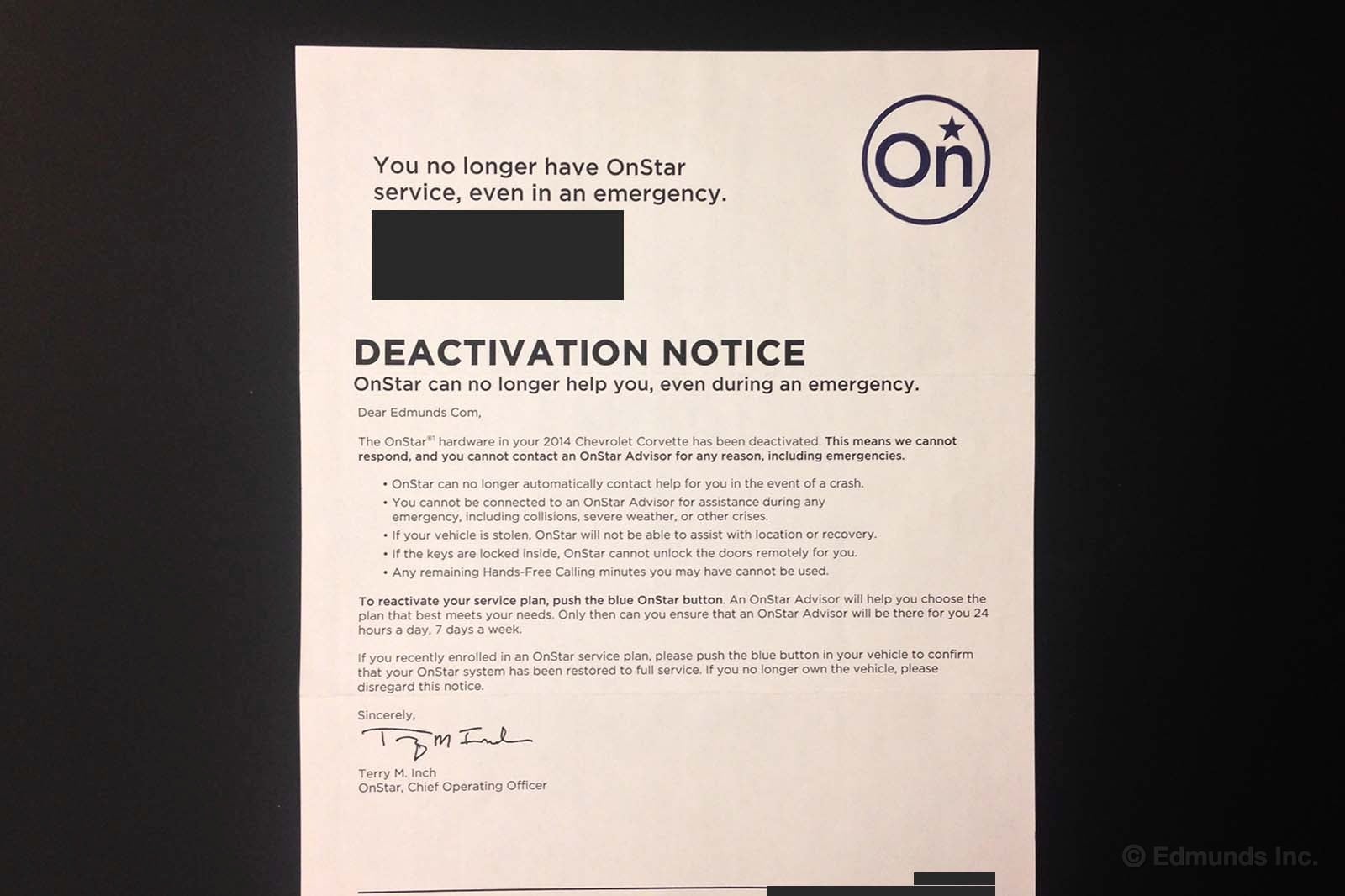
As part of the purchase deal, Chevy throws in six months of free OnStar service with the 2014 Chevrolet Corvette Stingray. Six months is up and now we're on our own.
Free for the first six months, OnStar's Directions and Connections (automatic crash response, emergency services, hands-free calling, RemoteLink Mobile App, stolen vehicle assistance, roadside assistance, remote service, vehicle diagnostics, and turn-by-turn navigation) costs $29.00 per month with varying discounts if you subscribe for 1, 2 or 3 years.
We've yet to use OnStar in our C7, but I know that little blue light gave me the confidence to go another 100-or-so miles in the middle of nowhere Utah when the snow started to fall and Scott probably could have used it when he got stuck in Colorado on the same trip.
We have cell phones and drive mostly in highly developed areas. Do we really need to re-up this service? What would you do?
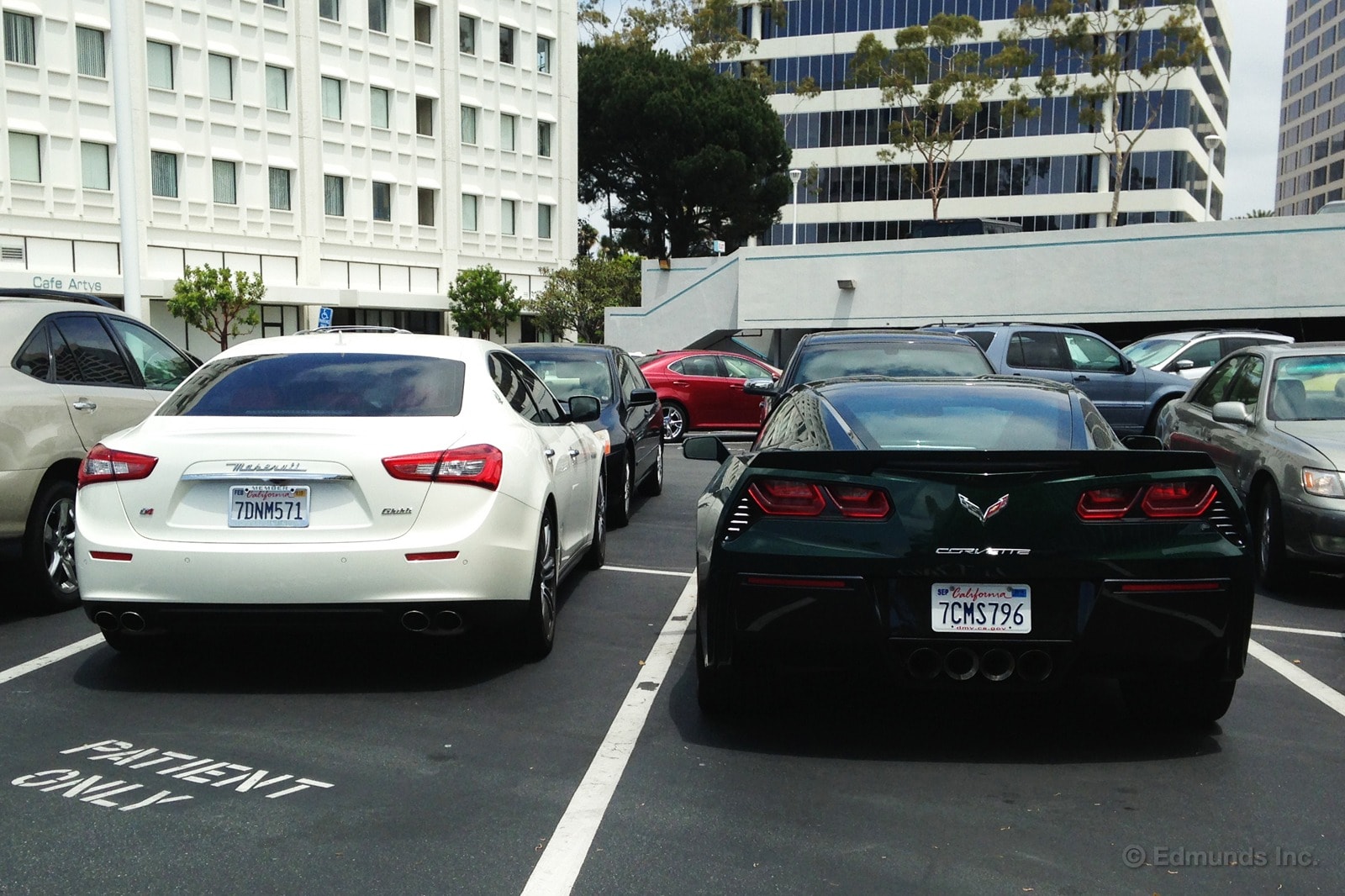
Ghibli. Meh.
It's Italian, it's got a sweet exhaust note, and I'm genetically inclined to want it. But for the money (the Ghibli starts at $67,000), I think I'd take our 2014 Chevrolet Corvette Stingray even in base trim ($54,000), then apply the remaining $13,000 toward a Fusion or Accord for when I need four doors.
Sure, I'd need to come up with another $10,000 or so. But that's why I'm taking my silent investors to lunch in my fiscally responsible sedan. I'll have that $10,000 after the appetizers are cleared. And on the day when I've recklessly spent their last dollar, I can leave the corporate parking lot in the Corvette, obscured in a smoky haze.
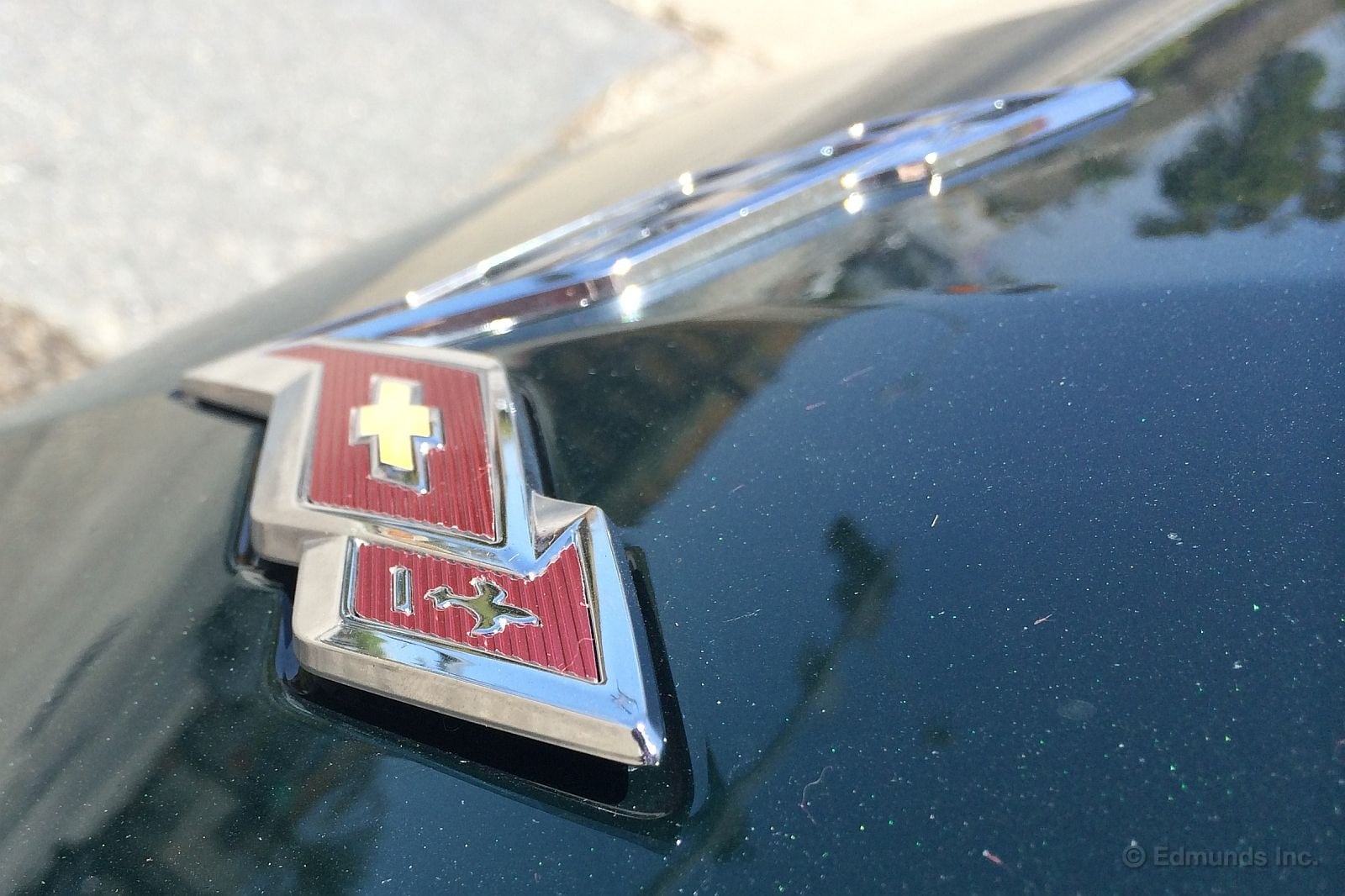
The Corvette badge on the nose of our 2014 Chevrolet Corvette Stingray is starting to lift up and detach from the body. We've had this car just eight months. It hasn't yet experienced its first summer, even.
This sort of thing is supposed to be permanent.
A closer inspection suggests it could have been designed better.
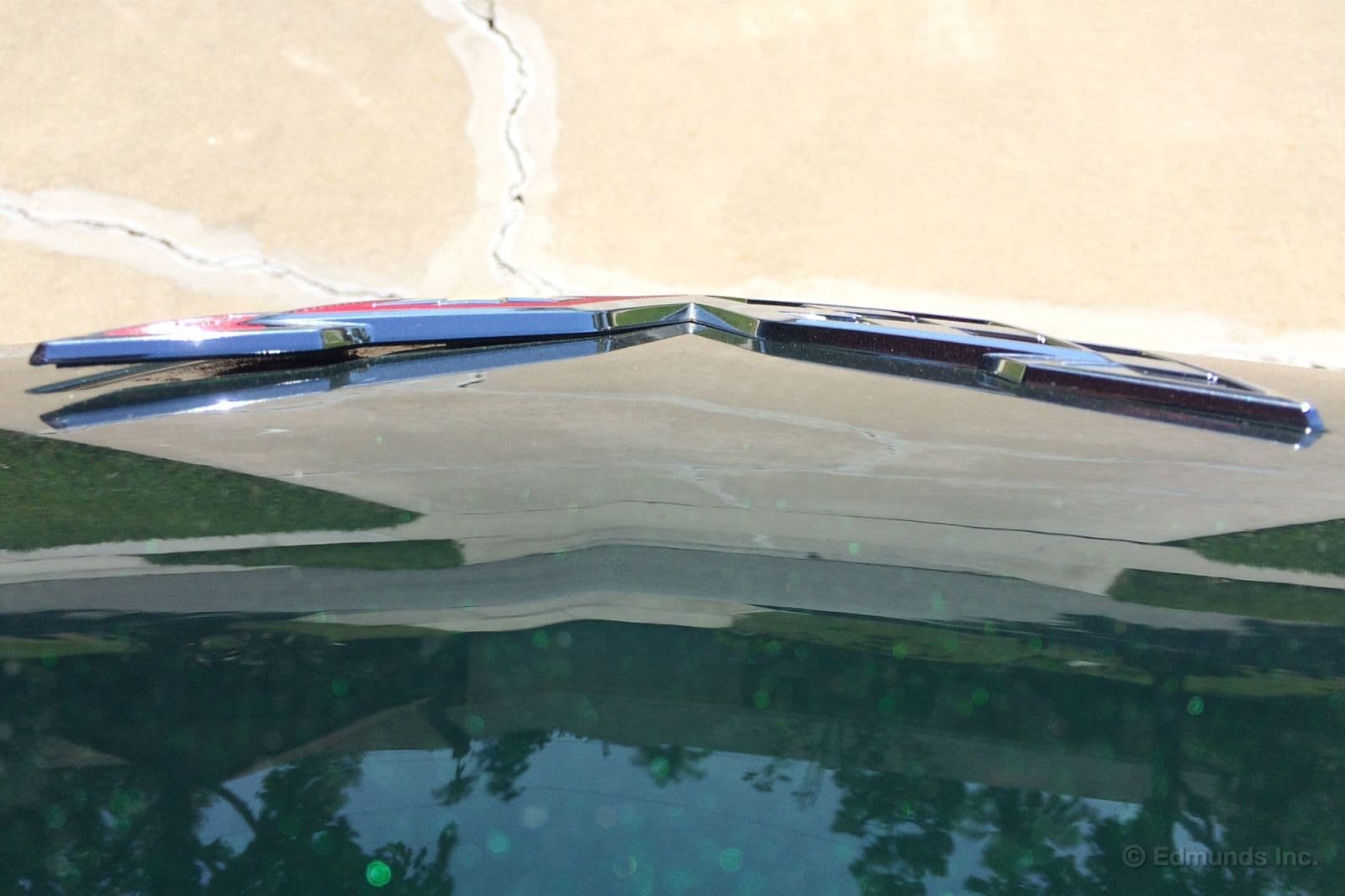
As the plastic badge lifts, it's flattening out. The nose has a slight crease and curve down the middle, but it looks as if the badge has not been molded to fit the contours. Presumably, it was made flat to save a few pennies. The badge engineers (and you thought that was just a saying) seem to have put their trust in the power of the two-sided foam sticky tape that holds it in place.
Because of the resulting tension, the tape under the outermost corners of the vee is under the most strain. This creates a little gap that can snag passing car-drying towels. That may have helped the process along here.
But we can't just de-badge the car, remove the tape residue and call it a day because someone decided it would be a good idea to recess the emblem into a depression in the nose. It's a great plan so long as the badge stays put, but a weird V-shaped depression would remain if we were to simply remove our failing emblem and go naked.
We need a new badge, preferably one that's slightly cupped or at least bent down the middle so this doesn't happen again.

Something I failed to mention during my award-winning eight-part series, "The Greatest Event in Track Day History" (in retrospect, a better name would've been "We're taking America's sports car to a track day. Duh!"), was that there was some unfortunate damage to our 2014 Chevrolet Corvette Stingray.
Did I slide the car off backward into the kitty litter or worse yet, slam it into a wall?
Nope. It was all quite innocent. One of the motorcycle riders on hand asked to go for a ride. I said, "Well of course, hop in."
Now he was a pretty big dude, and he was totally scrunched into the car, seat all the way back, knees pinned against the dashboard.
What we didn't realize at the time (actually not until the next morning, when another passenger pointed it out) was that the knee pucks on his leathers had been digging into the dash. You can see the two slits in the photo, just below the vents.
He felt horrible. I felt horrible. In fact, I still do. But at the time I never even considered leathers could damage the car, especially since knee pucks are actually positioned more on the side of the knee than at the front.
But the car was my responsibility, under my watch, so this one is on me.
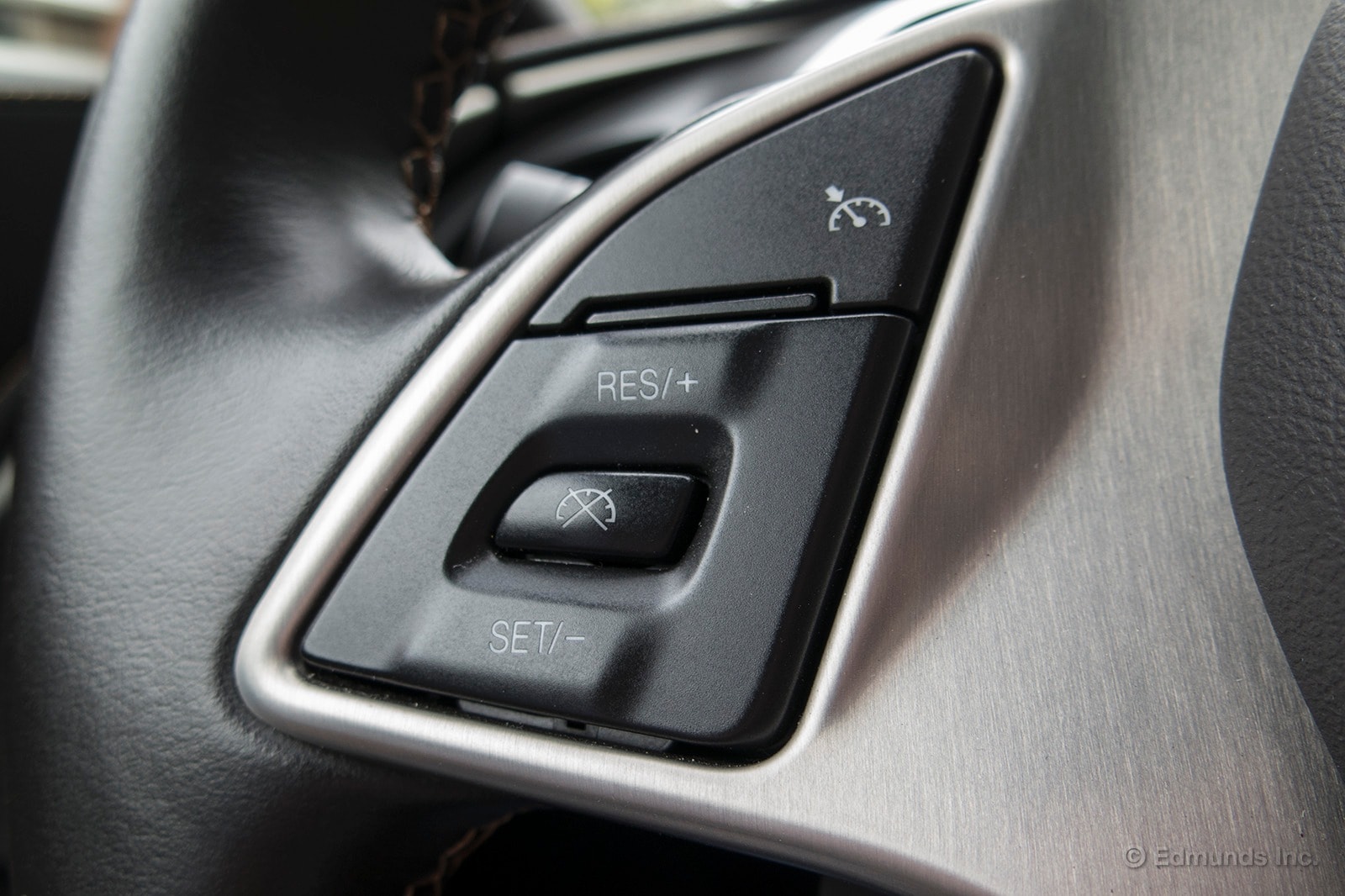
Typically, when you've got a car with a manual transmission and cruise control, the cruise control disengages when you shift gears. This is not the case in our long-term 2014 Chevrolet Corvette Stingray.
Yup, you heard right. The owner's manual states, "If equipped with a manual transmission, the cruise control will remain active when the gears are shifted. The cruise is disengaged if the clutch is pressed for several seconds."
Even the C7, with all its V8 torque, bogs down a bit when you're in seventh gear going 60 mph and you come upon a long uphill grade. Naturally, you downshift to get back in the powerband and instead of the car cutting out and requiring you to reset the cruise control, it maintains the speed in whatever gear you select. Sixth, fifth, fourth, third, you name it. It also maintains cruise control through upshifts.
There are two issues though. First, there's a small drop in speed depending on the gear shift. No biggie. Second, if you quickly engage the clutch, shift into neutral and then disengage the clutch, the cruise control system thinks the car is in gear and attempts to accelerate. Revs climb a couple-thousand RPMs and the car eventually figures out what's wrong (or you can just re-engage the clutch) and cruise control switches off. Neither issue is really a deal-breaker though.
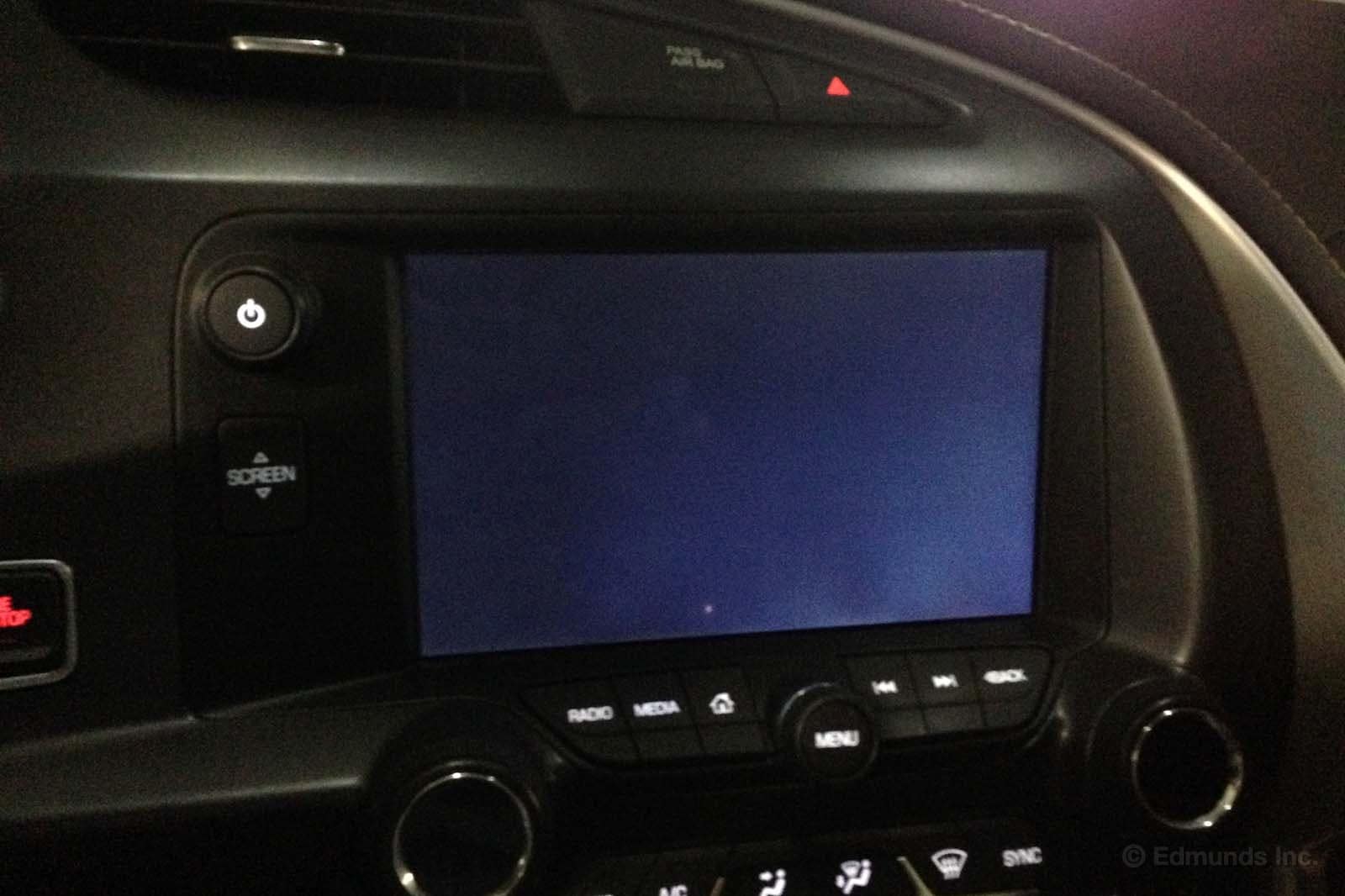
Earlier this month, Kavanagh reported that the screen on our 2014 Chevrolet Corvette Stingray was on the fritz. Specifically, he (rightly) complained that the screen flickered when placed in reverse and that the screen was blank one time on startup.
Well, both of those things happened to me this weekend and then a new one.
The new issue? The screen died while driving. Kaput. Blank. Just stopped working altogether. Radio, too. Sigh.
I pulled over, cycled the key and everything was fine again. We're close to needing another round of routine service. Unless the screen totally craps out before then, we'll just wait and get both taken care of at the same time.
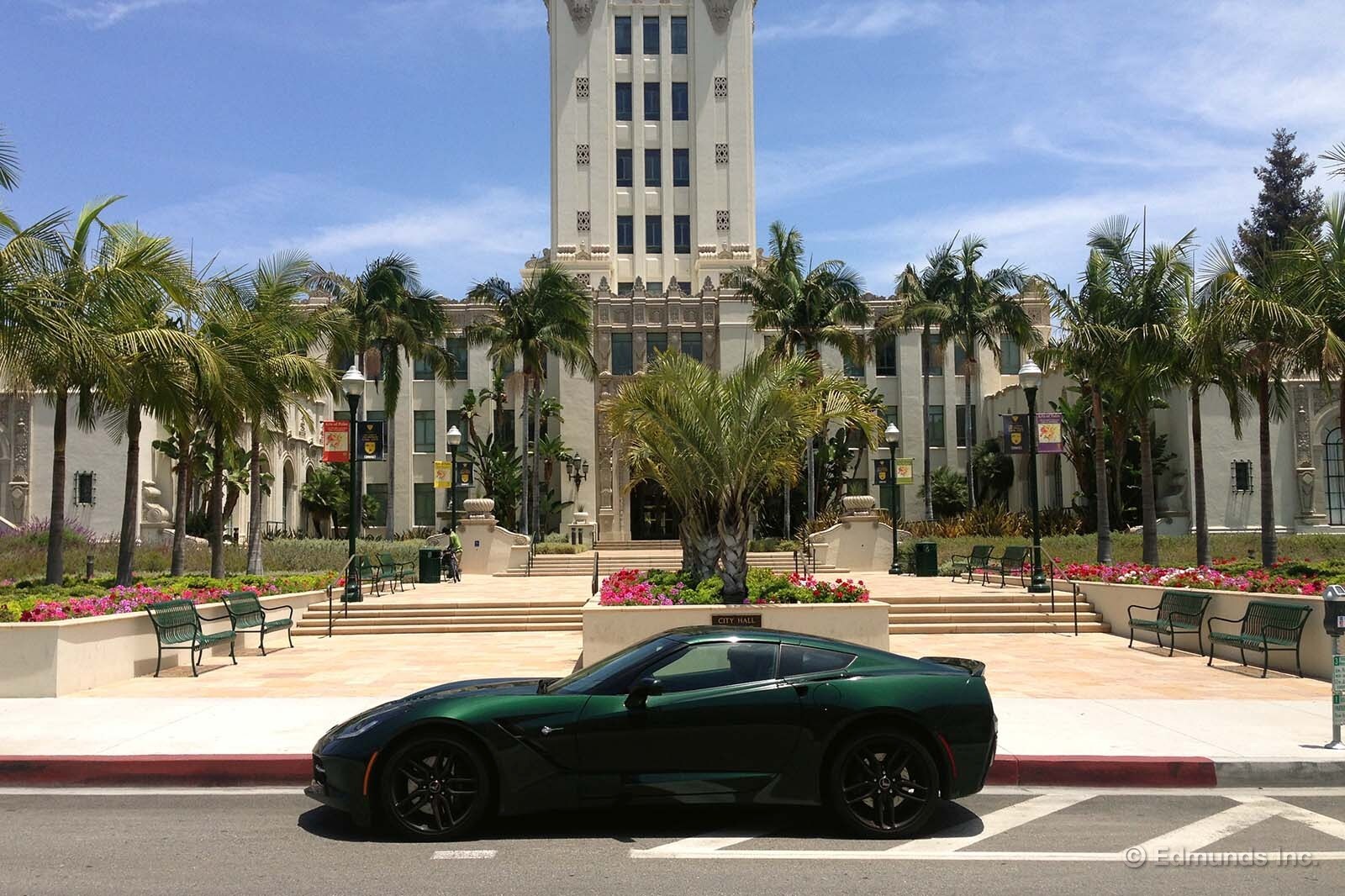
Is our 2014 Chevrolet Corvette Stingray destined to cross the auction block in 50 years as a serious collector's edition?
Let's break it down.
- First year of the new body style.
- Low VIN (#23).
- Low VIN etched on Museum Delivery Plaque.
- Right options: Manual trans, magnetic shocks, adjustable exhaust, black wheels.
And, finally, it's painted Lime Rock Green. Not only is this the best color available for the 2014 Corvette, but it's been discontinued for 2015. That's right, those of you hoping and saving and praying for a Lime Rock Green C7 Z06 (me) are totally out of luck from the factory. The 2015 Corvette will only be available in Laguna Blue Tintcoat, Daytona Sunrise Orange Metallic, Velocity Yellow Tintcoat, Arctic White, Blade Silver Metallic, Black, Shark Gray Metallic, Crystal Red Tintcoat, Torch Red and Night Race Blue Metallic.
Further changes for 2015 include an available clear roof section, available raw carbon fiber roof section, machined black aluminum wheels and a ZF1 package that adds all the visual cues of the Z51 pack without the bothersome performance enhancements.
So it's a first year, limited-color, well-optioned Chevy Corvette: Think it's an investment piece?

The truth is I did not really need to transport my air compressor. I just needed something large to put in the trunk of our long-term 2014 Chevrolet Corvette Stingray so I could demonstrate how freakin' huge it is.
And yes, the hatch would close.
Not sure if there's another sports car out there that could handle such sizable cargo. Porsche Cayman? No way. Jaguar F-Type Coupe? Doubt it. Ferrari FF? Probably, but it should for $250,000.
One thing's for sure, the Porsche 911 and the Nissan GT-R ain't getting this job done.
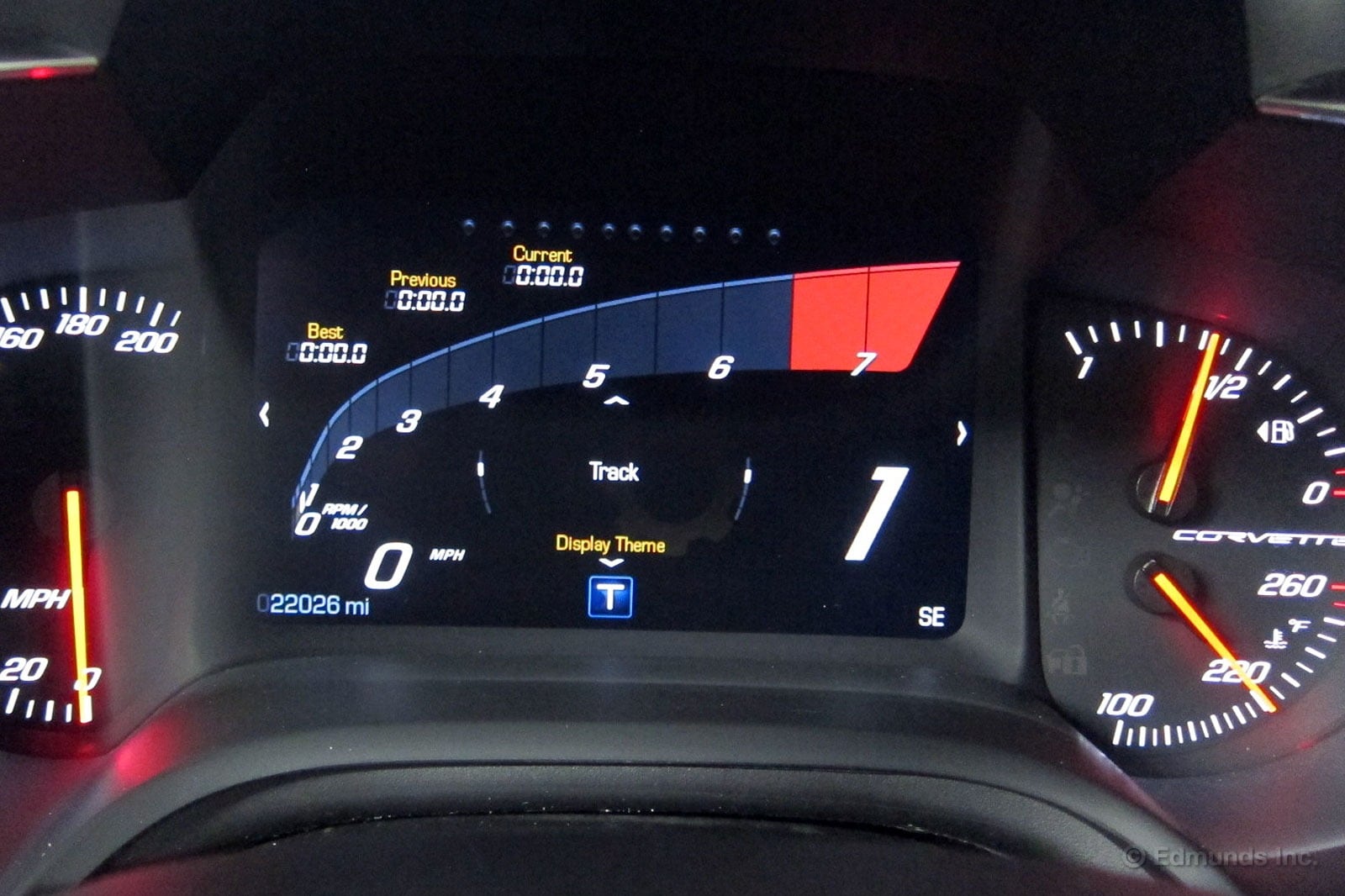
After living with our long-term 2014 Chevrolet Corvette Stingray for about 10 months and 22,000 miles (including my own road trip from L.A. to Detroit back in January) I'm still discovering new ways to customize the car's digital gauge cluster.
It's nearly impossible for me to cover all the choices here, so I'm not even going to try, but I will make an attempt to hit the highlights.
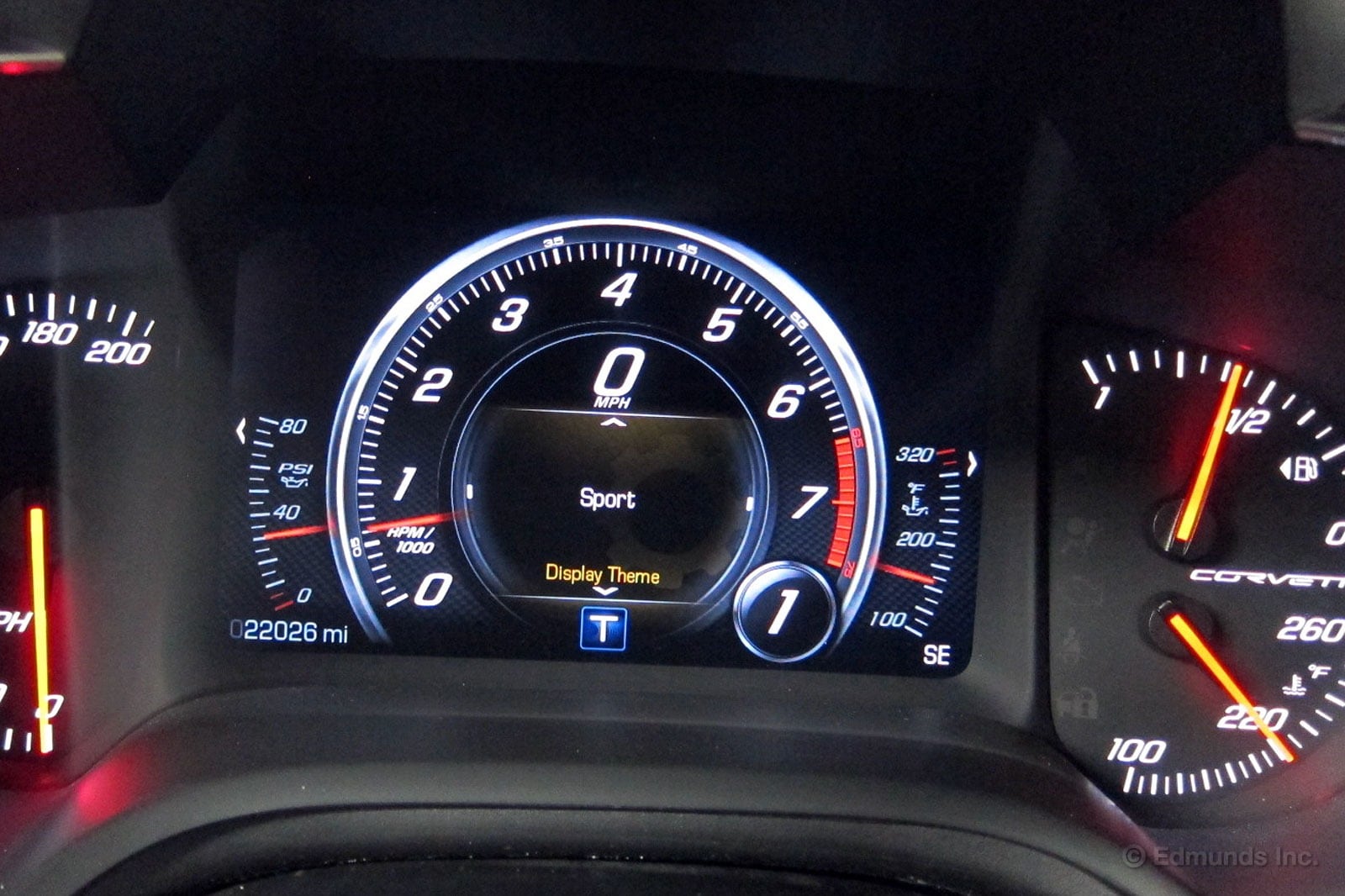
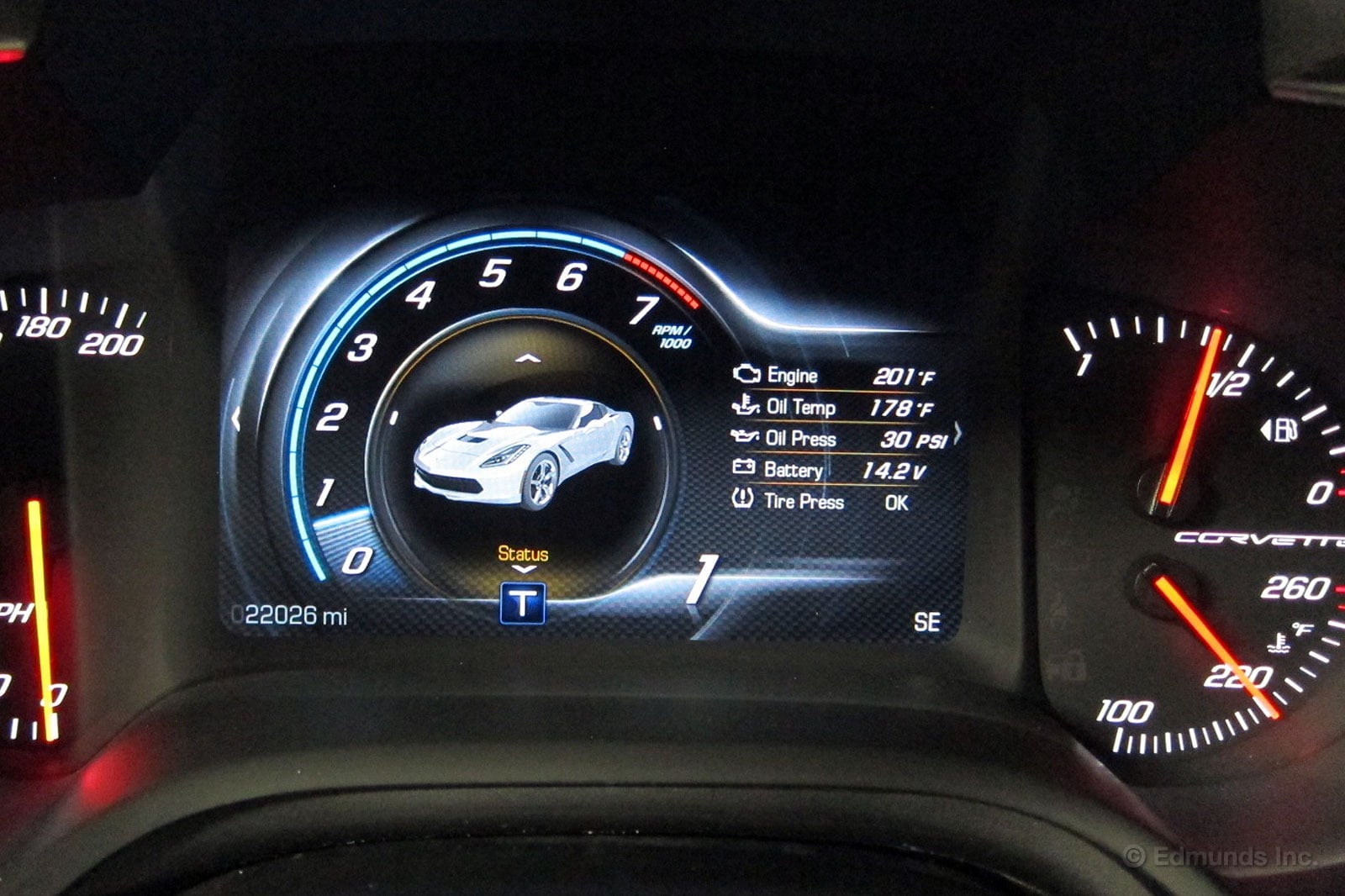
There are three basic instrument cluster assemblies available: Track, Sport and Touring. In Track you can see the tachometer sweeps across and is nearly unreadable under 3,000 rpm, which is obviously unimportant if you're on a race track. Also notice how large the gear readout is, much larger than the digital speed display on the left.
In this configuration you can display other information in the center space (where it says Track). Everything from oil pressure to tire temperatures is available, but only one at a time. And you can see there are lap time calculators built in.
In Sport the tach goes round, the gear readout gets a bit smaller and the digital speedometer moves to the center. It also offers two flanking gauges on either side, which you can customize for the information you think is most important. Here I've chosen oil pressure and oil temperature. As in Track you can display other information in the center space (where it says Sport).
Then there is the Touring configuration, which is in some ways my favorite because it offers the most useful information at any given moment. The tachometer is still round, but it moves an inch or so to the left. There isn't a digital speedometer, but the gear readout remains. Other info is still customizable in the center of the tach, but in the configuration shown here every bit of useful info is displayed at once on the right. I just hate wasting all of that space in the tach with that silly picture of the car.
Over the past year I've dug into the Corvette's instrument cluster for being too plain and simply uninteresting to look at. There's no art to its design. No sex. I stand behind those criticisms, but there's no denying the incredible amount of information they provide or the amazing amount of choices they offer.
Pretty cool.
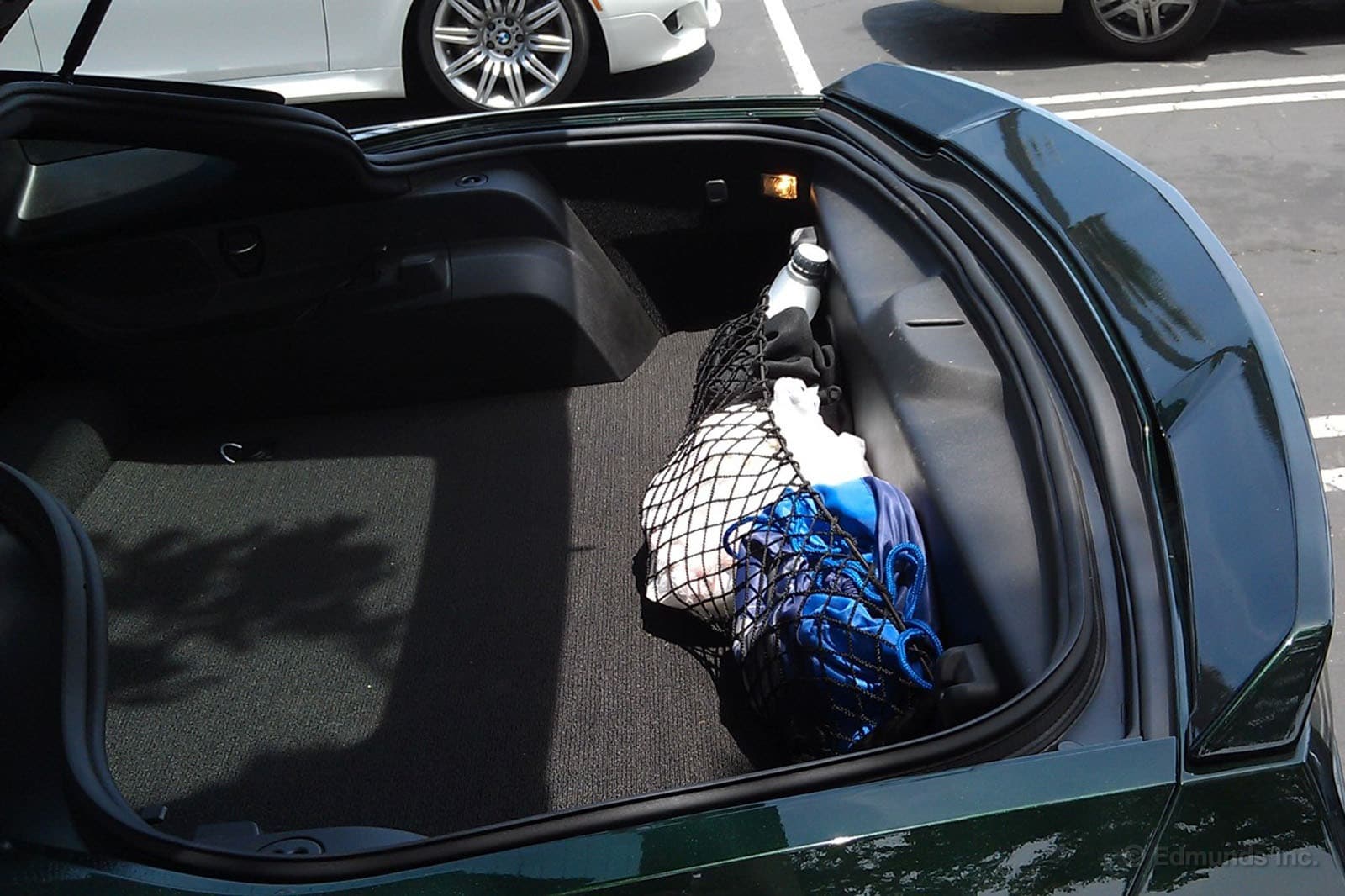
Sports cars are supposed to be impractical. That's part of the charm, right? Not necessarily. Others have extolled the virtues of the 2014 Chevrolet Corvette Stingray's relatively massive cargo hold. It even passed the infamous "Will the bike fit?" test. At 15 cubic feet, it's roughly the size of a midsize sedan's.
But I didn't need all that capacity, I just wanted my stuff secured so it wouldn't slide around and/or scatter itself all over the place while I gave the Z51-equipped Stingray some early morning exercise in Malibu's canyon roads. Thanks to this handy cargo net (included with the 2LT package) my gym bag, a bag o' snacks, water and the Corvette's spare oil were all held fast.
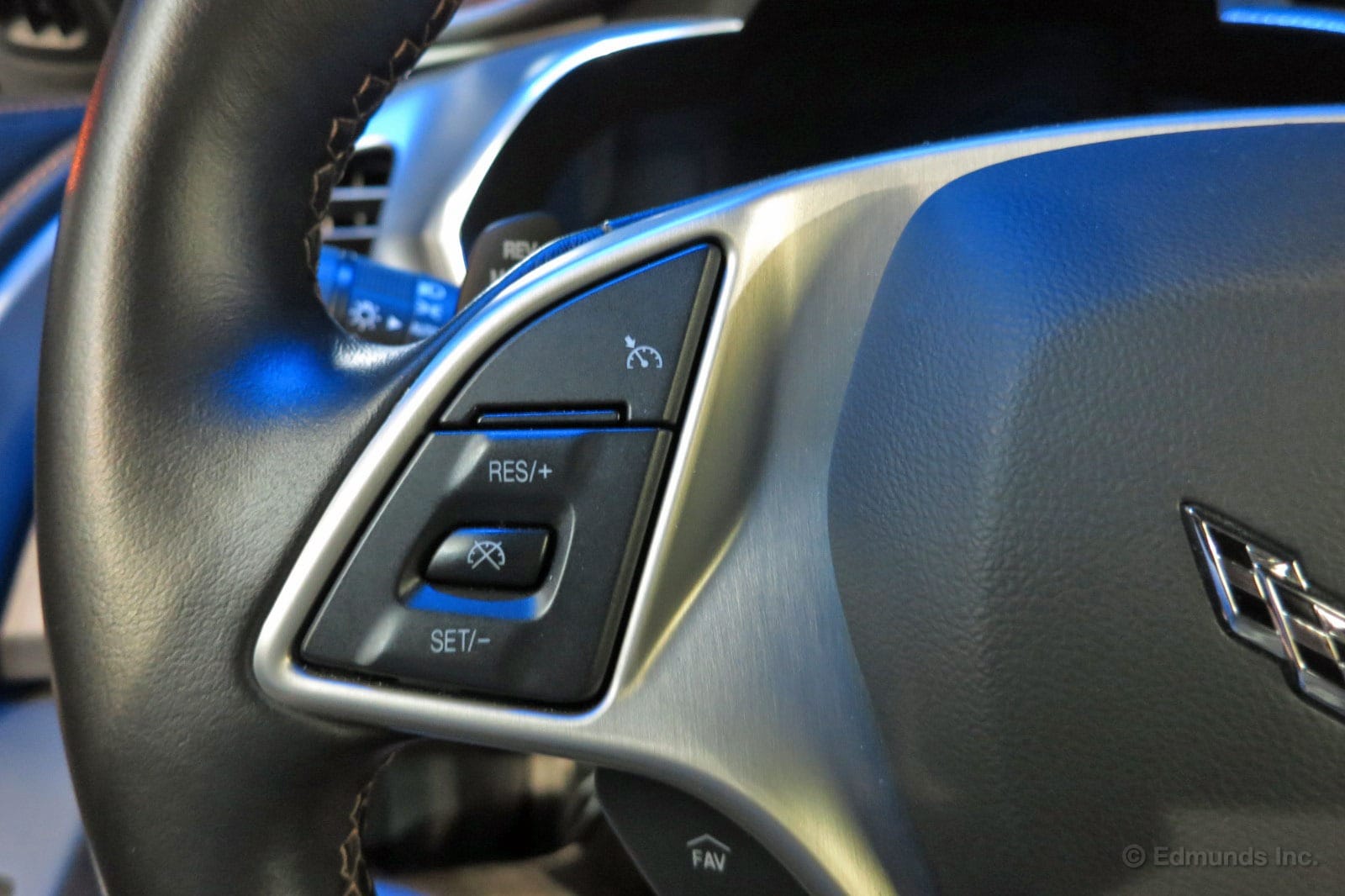
There aren't many things I dislike about our 2014 Chevrolet Corvette Stingray but this is one of the small ones.
The materials used on the steering wheel are a mix of metal and plastic that looks and feels odd. On one hand there's the metal trim that rings the center air bag pad. I'm not even sure what it's made of exactly, but it looks sharp and contrasts with the leather wrapping on the rim nicely.
On the other hand, there's the satellite control buttons. They are most definitely plastic, and not very good looking plastic at that. Sitting directly adjacent to the nicely textured metal trim doesn't help the situation.
It's one of those small things that I can't help notice every time I'm in the car. It's a shame, too, as the rest of the interior is nicely done.
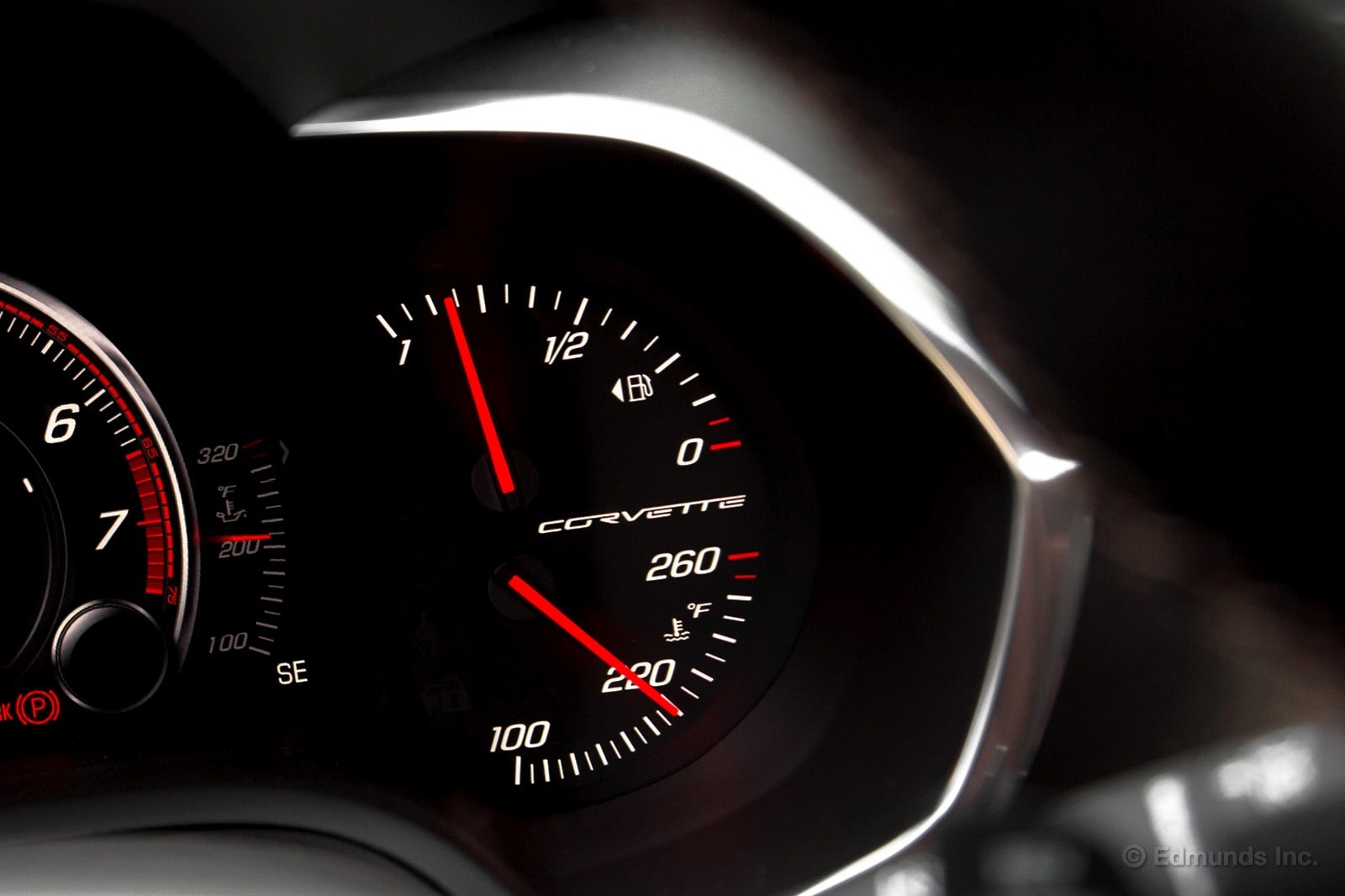
June came and went, and in its wake we find our 2014 Chevrolet Corvette Stingray Coupe with another thousand miles under its belt.
Power was summoned, noise was made and fuel was burned — some 90 gallons of it to be exact. Click on through to see what we did with all of it.
With a monthly average of 15.72 mpg, no one's going to accuse us of hypermiling our Vette. Then again, if you're hitting the EPA's numbers on a consistent basis in a Corvette, you're boring.
Worst Fill: 9.4
Best Fill: 30.8
Lifetime Average: 19.0 mpg
EPA Combined Rating: 21 mpg (17 city/29 Highway)
Best Range: 471.9 miles
Current Odometer: 22,613 miles
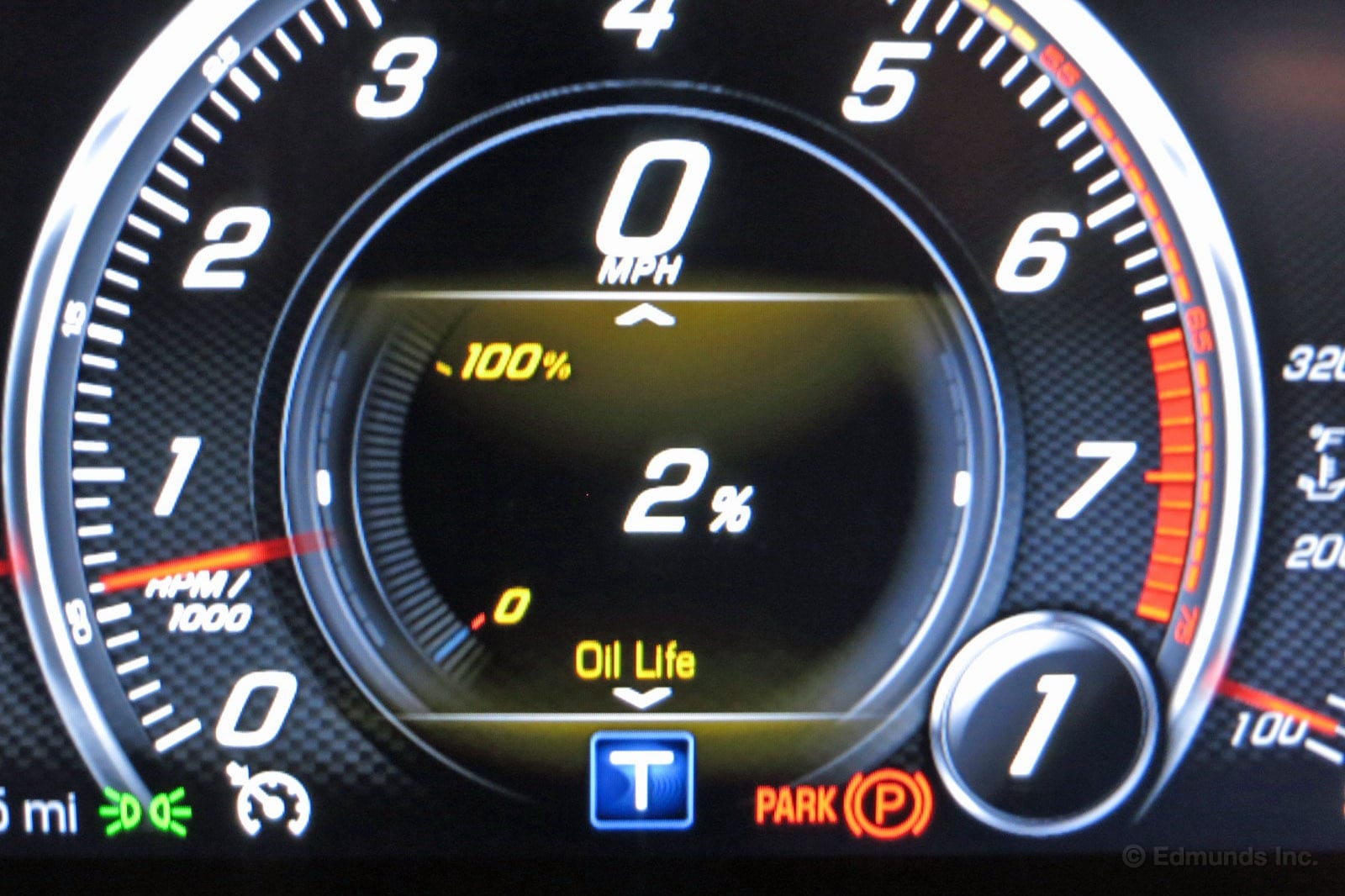
As expected, our 2014 Chevrolet Corvette Stingray is thirsty for another round of oil now that it has passed the 22,000-mile mark. It called for its first change around 7,500 miles and another after 15,000 miles so it looks like it's on a pretty regular schedule even though it's a performance-based indicator.
I much prefer this type of setup to the wasteful tradition of simply changing out the oil because of a predetermined mileage interval. If you have the technology to determine the oil quality, might as well use it.
We don't expect anything more than a routine swap this time around, but we'll report any other maintenance items that were necessary after we take it in for service.
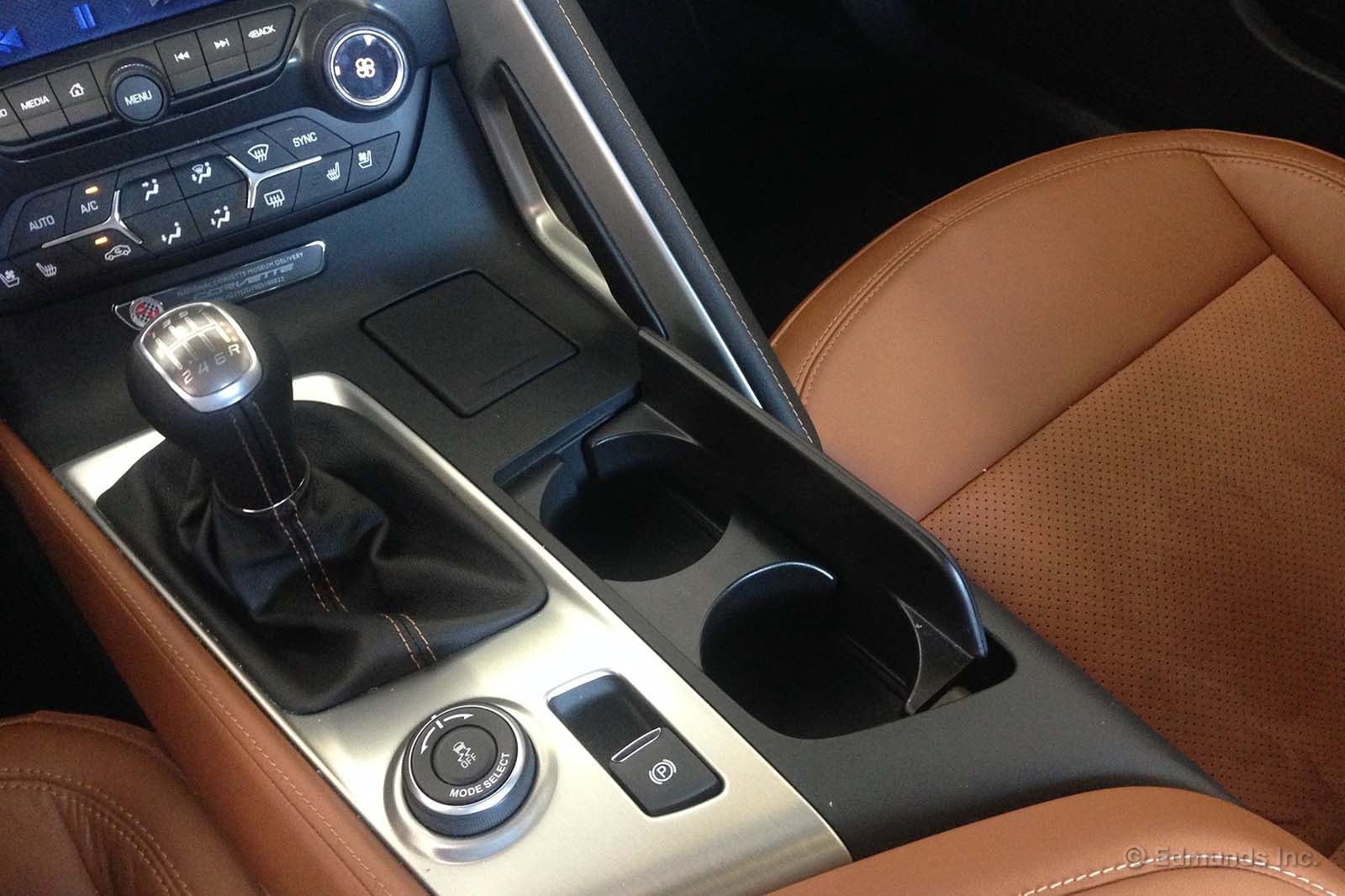
Nobody buys a 2014 Chevrolet Corvette Stingray for the cupholders. Still, that doesn't mean they have to be this shallow and flimsy. Or that the center divider needs to wiggle itself loose all the time. But at least it's well-sealed so that the coffee that spills every. single. time. pools up in an easy-to-clean bin.
Even the Porsche 911's over-complicated, dash-mounted contraption worked better.
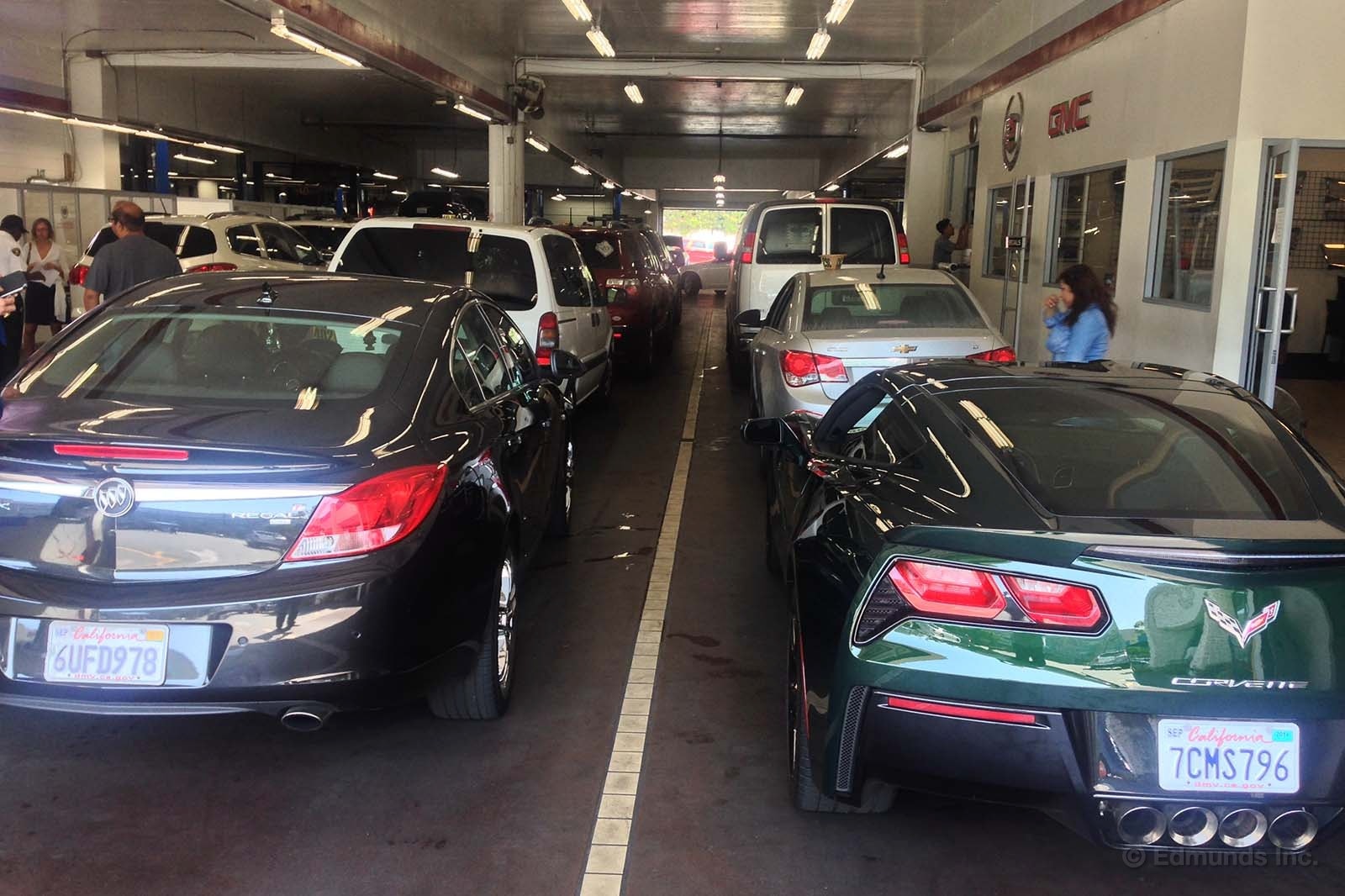
As Ed mentioned our 2014 Chevrolet Corvette Stingray was pretty close to calling for service, and I happened to be driving it when the "Oil Change Due" warning and beep fired off. I believe I've lucked out with each of our Corvette's services (1, 2,) so far, so why should the third one be any different?
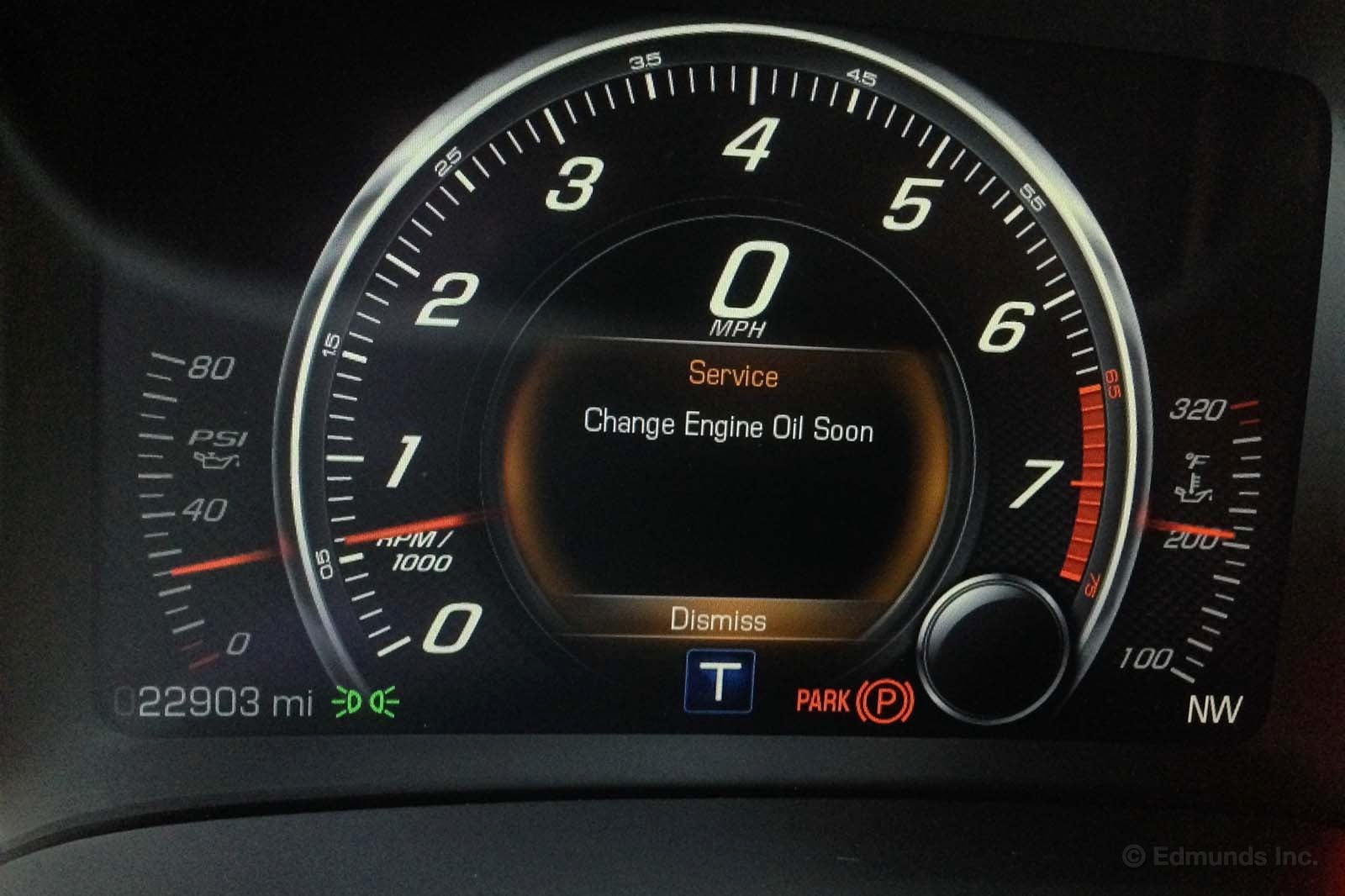
We switched up the routine a bit for #3, going to Martin Cadillac GMC right up the street from our office instead of hoofing it down to Culver City. They don't SPECIFICALLY say they're a Chevy dealer, but they're a fully certified GM shop with access to the computer systems and the ability to process this as a free service instead of trying to charge us. They've also got the Mobil 1 oil our dry-sump equipped Z51 Stingray likes.
We didn't have an appointment but they were done with our car in just about two hours (we told them we weren't in a rush) and were kind enough to leave it out front instead of somewhere in the back where a porter would take 35 minutes to find it.
The total charge this time, as with the other times, was $0.00. Unfortunately, this will be the last of our free services. GM's policy is 2 years, 24,000 miles or four services whichever comes first. We're at 22,903 miles and it seems pretty much impossible that we'll burn out this oil in the next 1,097 miles.

A few weeks ago, I tested our 2014 SLP Panther Camaro to determine just how loud it was in a tunnel. This week, I decided to use the same decibel-meter apps and the same tunnels to repeat the test with our long-term 2014 Chevrolet Corvette Stingray. Ya know, for science n' stuff.
So which was louder?
Before I went blasting through tunnels though, I needed to look at the official numbers. When Edmunds.com tests cars, we measure interior sound levels. With the climate control and stereo turned off and the windows rolled up, we take three measurements: one at idle, one at full throttle and one at 70 mph. Here are the testing results from our Stingray (in both Touring and Sport modes) along with a few sixth-gen Corvettes, the SLP Camaro, and the two quietest cars currently in our long-term fleet: the 2014 Ram 1500 and 2013 Tesla Model S.
|
dB @ Idle |
dB @ "Full Throttle" |
dB @ 70 mph |
2014 Corvette Stingray |
48.8/54.4 |
88.3/89.2 |
71.2/71.9 |
2011 Corvette Z06 |
59.1 |
94.8 |
72.1 |
2010 Corvette ZR-1 |
57.4 |
93.3 |
75.3 |
2014 SLP Panther |
51.8 |
84.2 |
70.5 |
2013 Tesla Model S |
36.4 |
62.5 |
61.7 |
2014 Ram 1500 EcoDiesel |
41.9 |
65.1 |
60.2 |
My test was not official.
Between Turn 5 and Turn 6 at Laguna Seca, the Stingray registered 96 decibels and was politely asked to keep it down. In a tunnel at full throttle, with the windows down, the Stingray registered at least 100 dB, the same as the SLP. Many sources say that 100 dBs is the iPhone's measurement limit, so if things are any louder, it can't register the difference. For reference, many outdoor concerts are limited to 115 dB and hearing damage can occur with prolonged exposure to anything measuring over 85 dB. So even if this app is capped, we're still in the hearing-damage zone. At least in this tunnel. Is the spine-tingling rumble of the Stingray's V8 worth it? Absolutely.

A few weeks back we got a letter from OnStar letting us know that our free service was ending on our 2014 Chevrolet Corvette Stingray. So, naturally, I shared this information with you and asked for input.
We were on the fence. There was some good discussion and some valid points, but ultimately one person swayed us to give OnStar another shot: OnStar themselves.
Shortly after that post went up a representative from OnStar contacted us to discuss the service and our use of it, which so far has been not at all. As you'd expect from an OnStar representative, they went through the various safety and convenience services that I skipped: hands-free, automatic crash response that can sense how severe a collision is and alert help; an OnStar "Command Center" to "help guide our customers along evacuation routes and to safety" in the event of a natural disaster; Stolen Vehicle Assistance with Stolen Vehicle Slowdown; and enhanced RemoteLink service that lets you remotely check tire pressures and vehicle diagnostics or send directions from your phone to the car.
They also fairly pointed out that in the original post I only mentioned the $29.99 Directions and Connections package as that's what we had. There is a $19.99 service available without turn-by-turn directions.
But their most convincing argument for getting us back into the OnStar family was that they were offering to pay for it for the remainder of our time with our Stingray. If we were dead-set against renewing we would have turned this down. If we were dead-set on re-upping we would have turned it down, too. We weren't, we were looking for a tipping point and this was it. Also, we'd done a similar thing back in May for Hyundai when they set us up with Blue Link for the remainder of our long-term Santa Fe test.
So, over the next few months with our Corvette we're going to have to try out a few of our newly renewed features. But not the crash response one. We'll trust that works.
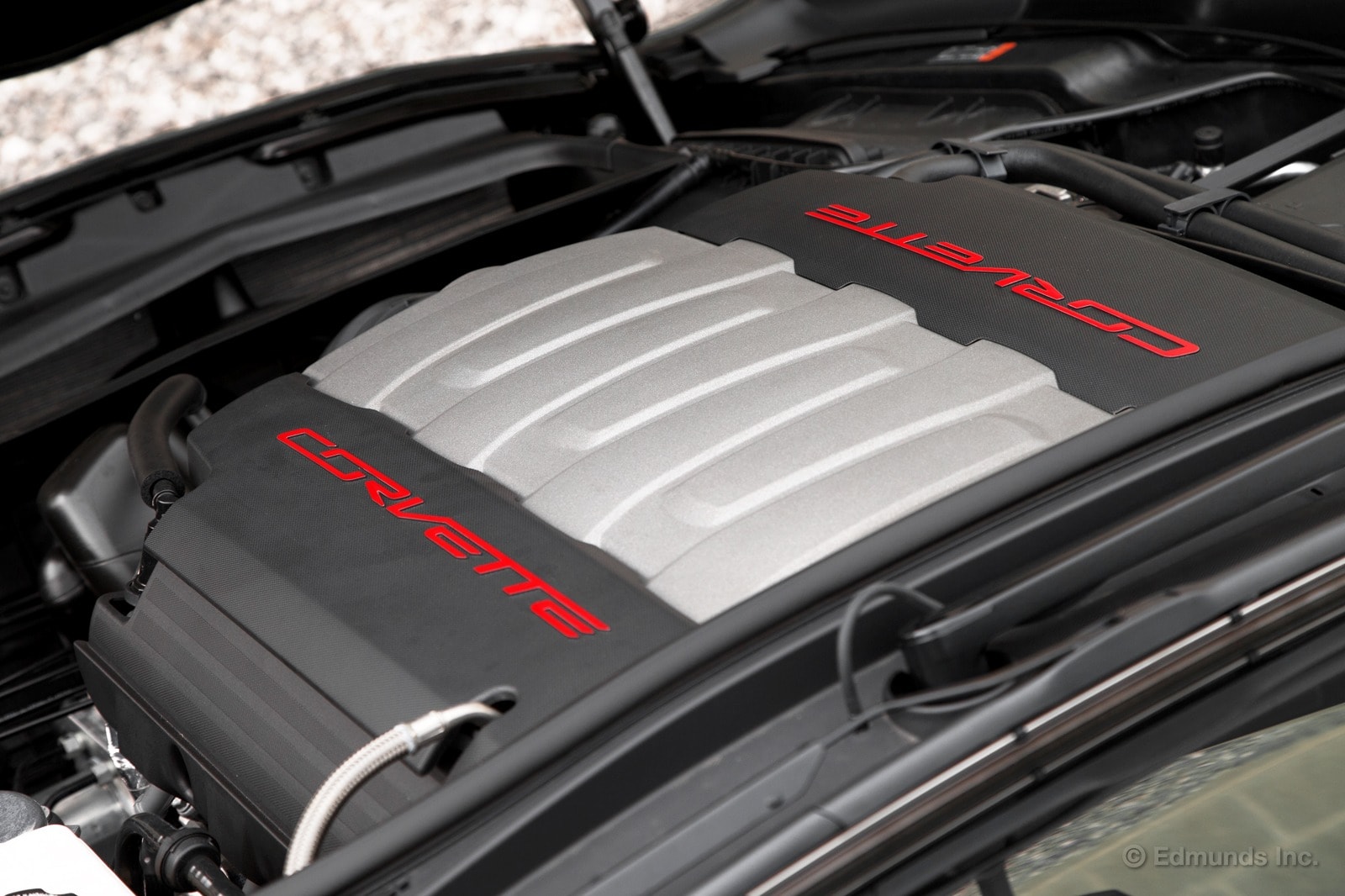
Our 2014 Chevrolet Corvette Stingray didn't stray too far from the office during July, racking up fewer than 900 miles. For comparison, our fleet average for the month was about 1,950 miles per car. It seems that most of last month's road trips required more than just space for two people and a pair of duffel bags.
The sports car's city driving habits this month were reflected in its fuel consumption. For July, the thirsty V8 demanded 62.7 gallons over 881.2 miles, for an average of 14.1 MPG. Typically horrible traffic around town contributed to decreasing its lifetime MPG from 19.0 to 18.8. A few highway trips will clear that right up.
Worst Fill MPG: 9.4 mpg
Best Fill MPG: 30.8 mpg
Average Lifetime MPG: 18.8 mpg
EPA MPG Rating: 21 Combined (17 City/29 Highway)
Best Range: 471.9 miles
Current Odometer: 23,494 miles
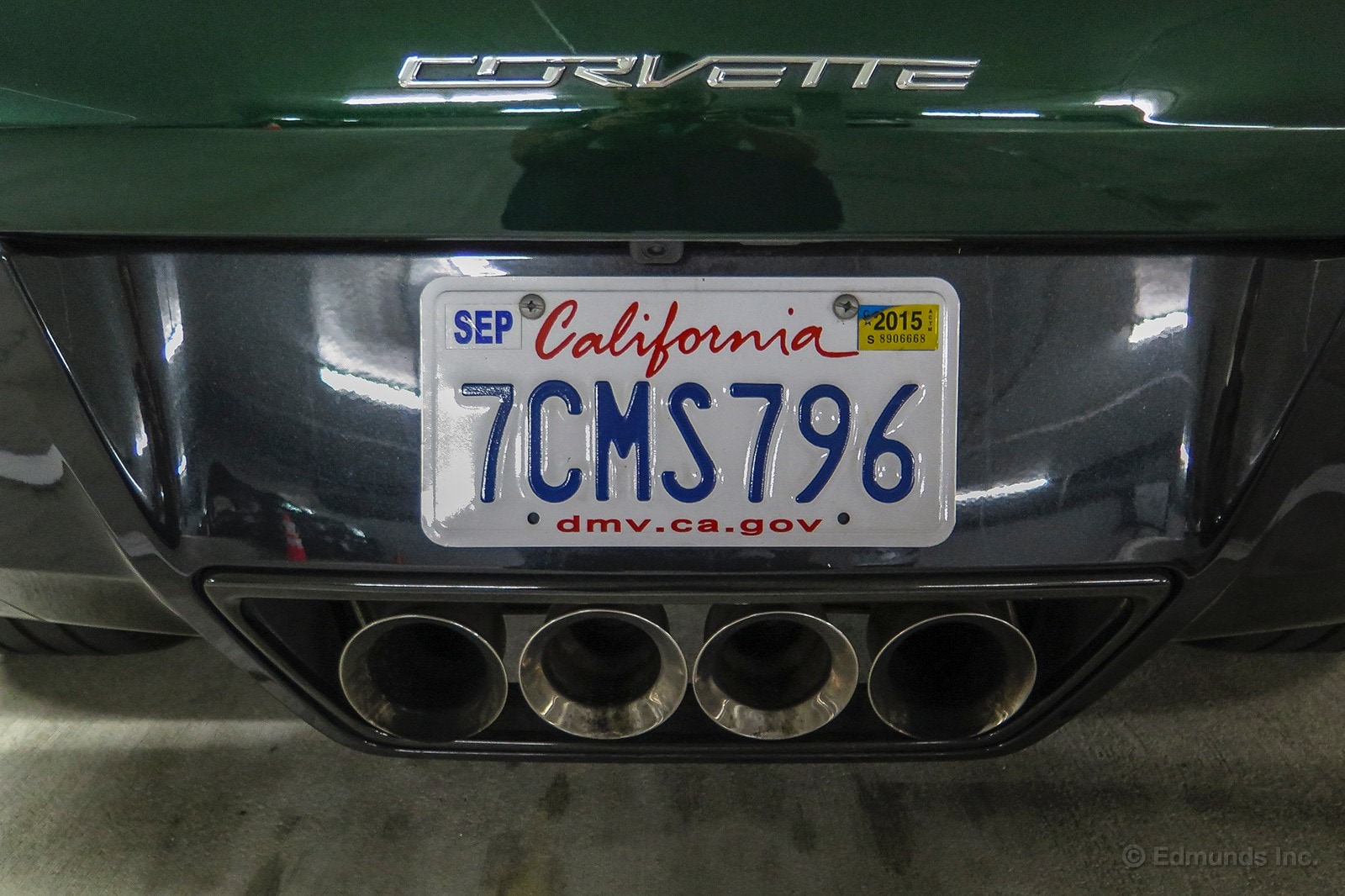
In the past, I've clearly expressed my distain for dirty supercars. A rat rod with side pipes is supposed to be filthy, but I like my brand-new cars to be shiny. And even though we wash our 2014 Chevrolet Corvette Stingray on a regular basis, something always gets missed: the exhaust pipes.
What used to be a shiny chrome exit for the gargling sounds of V8 awesomeness is now covered in soot, so I fished out my personal bag of detailing supplies and applied some elbow grease.
The simple combination of Mother's Mag & Aluminum Polish ($10 at any auto store), a rag and some Miyagi-style wax-on, wax-off circles gave me excellent results.
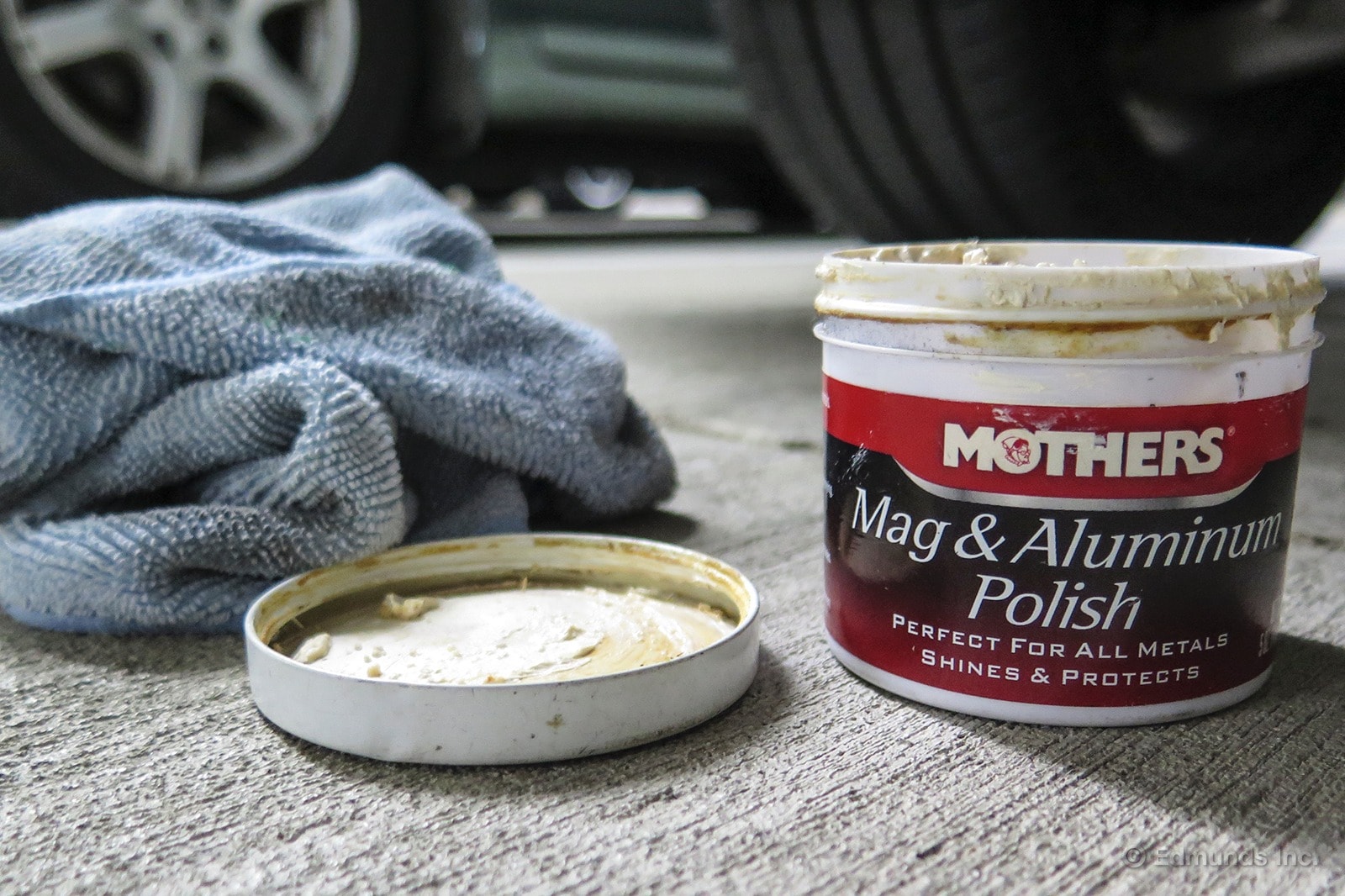

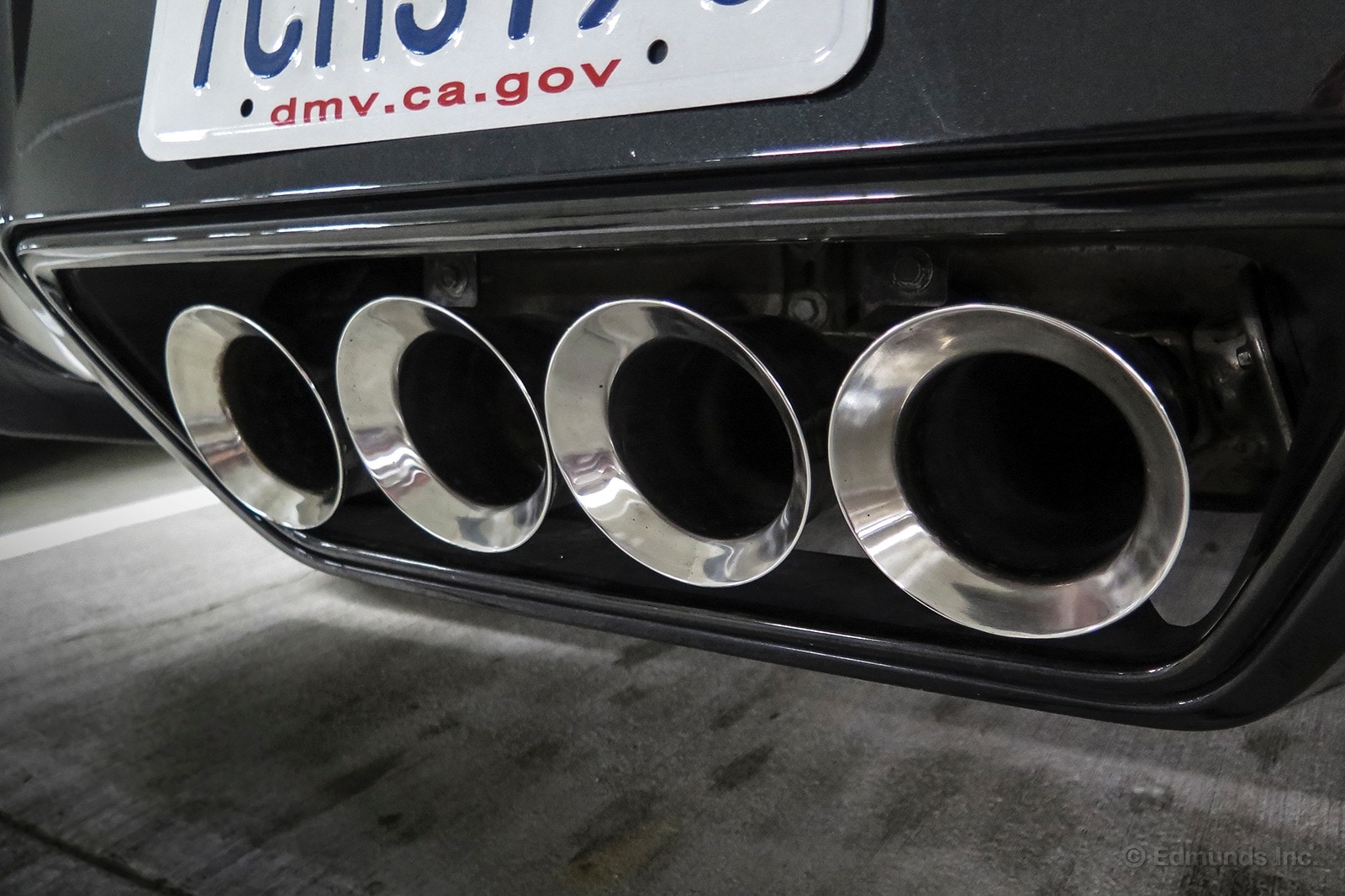
I may be one of a dozen people in all of Los Angeles that notices this little difference, but with such seriously conspicuous exhaust tips, this feels like the right way to treat them.
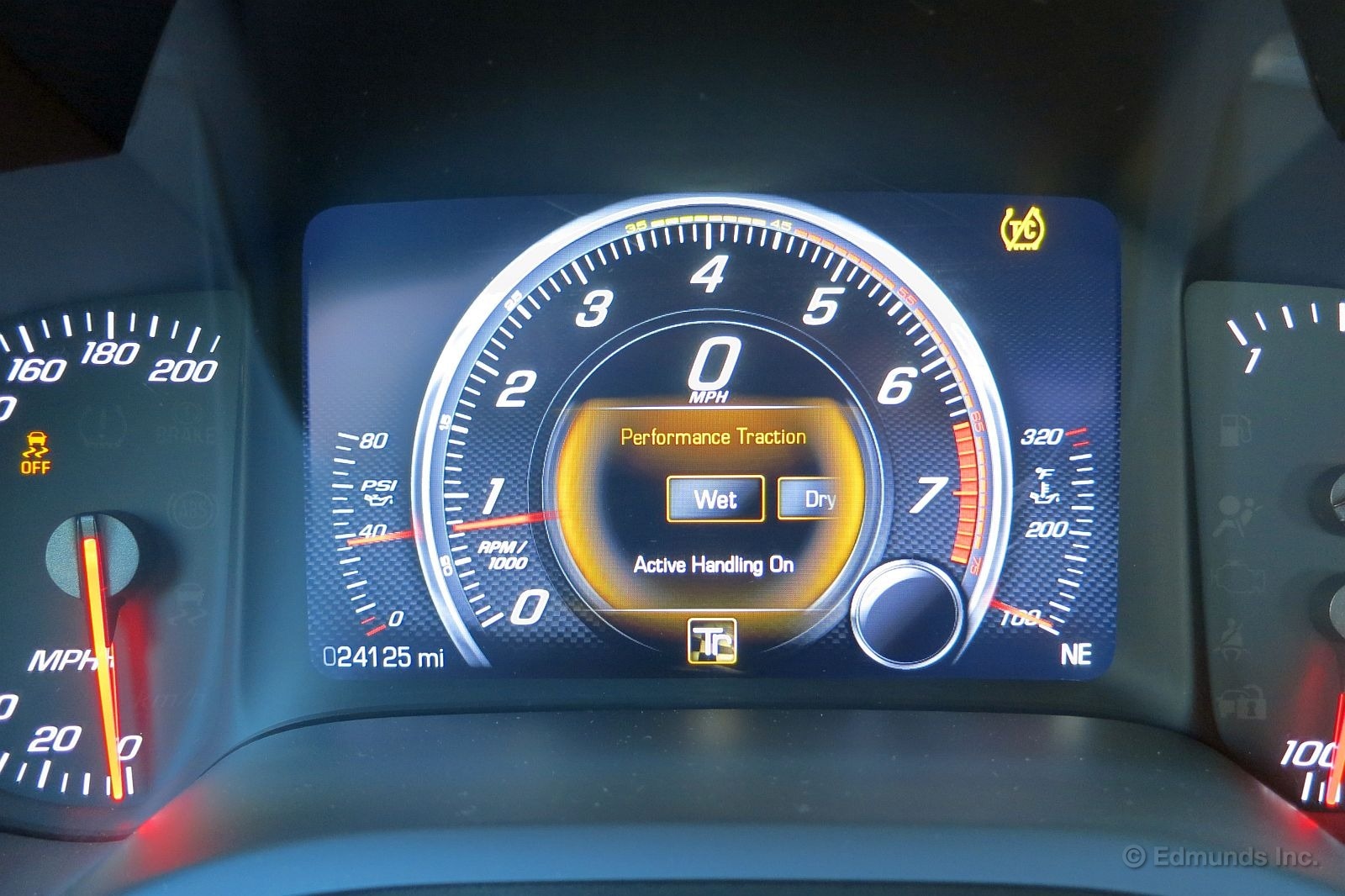
Here's a bit of low-speed fun I discovered with our 2014 Chevrolet Corvette Stingray's
Performance Traction Management system. Here's what you do: Turn the selector knob on the center console to Track, and then double-click to invoke the PTM system. Choose the lowest, most intrusive mode, which is "Wet."
Once the tires have some temperature in them (PTM only fully functions if there's traction to work with), nail the throttle in first or second gear as you steer around a corner or intersection. You'll instantly hear the "ba-ba-ba-ba-ba-ba-ba" as it manages engine torque to keep full traction to the tires. That may not be the most accurate impersonation of the sound ever, but let's just agree that it sounds pretty dang awesome.
It's good, clean fun without the kind of big smoke show or powerslide that will get you in trouble with the law.
A bit childish and silly? Sure. But harmless entertainment nonetheless.
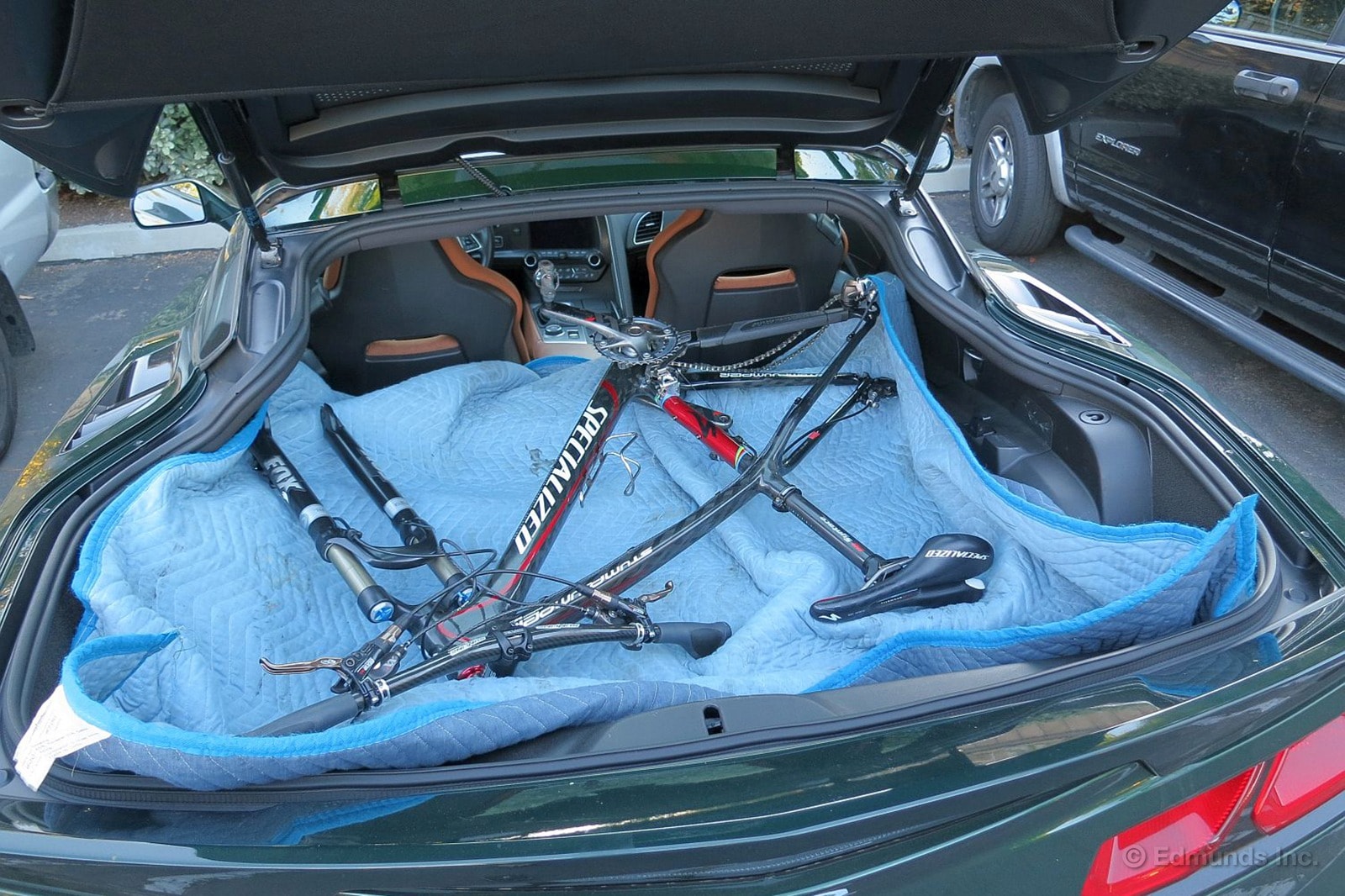
I know Josh Jacquot already did a post on this awhile ago. And it's not that I thought Jacquot was engaging in any kind of Photoshop magic (wouldn't put it past him, though), but I needed to find out for myself.
Can a mountain bike really fit in the back of the 2014 Chevrolet Corvette Stingray? And even if it can fit, how much of a pain is it to stuff it in there?
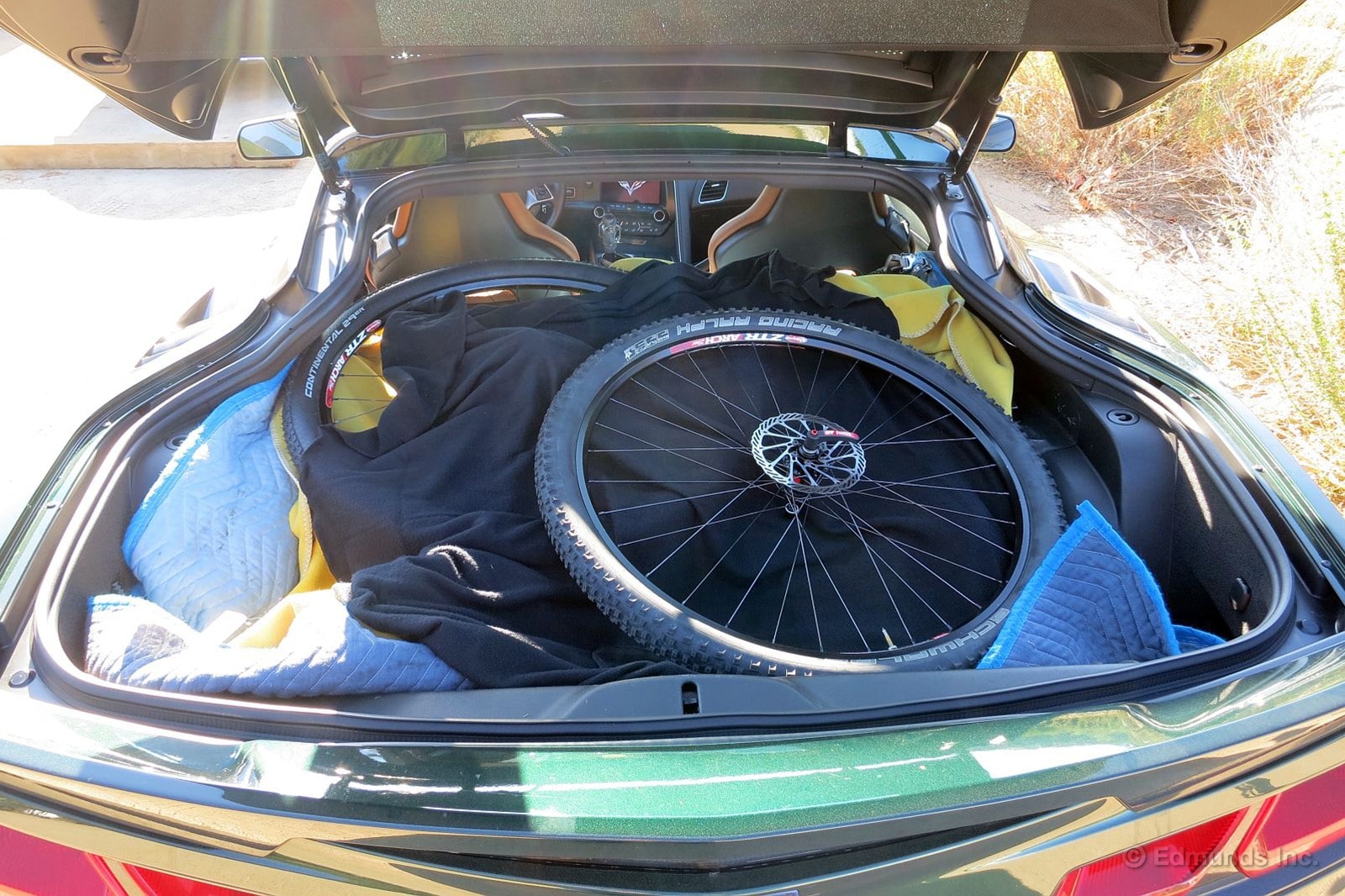
Turns out, heck yeah it can fit. Of course it requires removing both wheels, but I didn't have to lower the seatpost any. With some careful padding for the car, the bike and the wheels, it was actually pretty easy.
Almost shockingly easy, considering this is a sports car we're talking about.
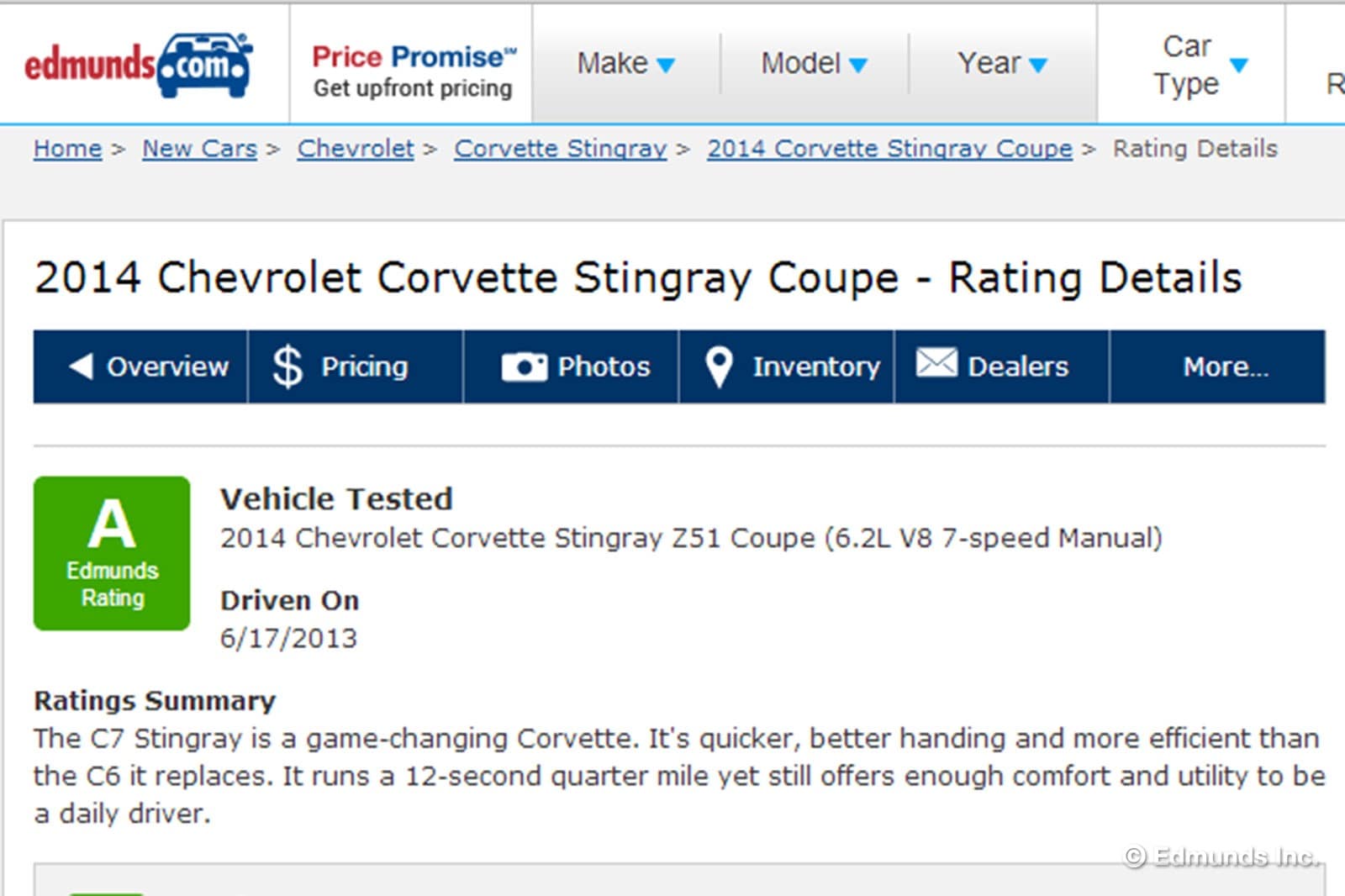
All of the new cars and trucks we test receive detailed vehicle ratings, and our 2014 Chevrolet Corvette Stingray is no exception. This photo is an excerpt from our rating of the Vette. Check the link below for ratings details on the Stingray. Then see how it measures up against some competitors:
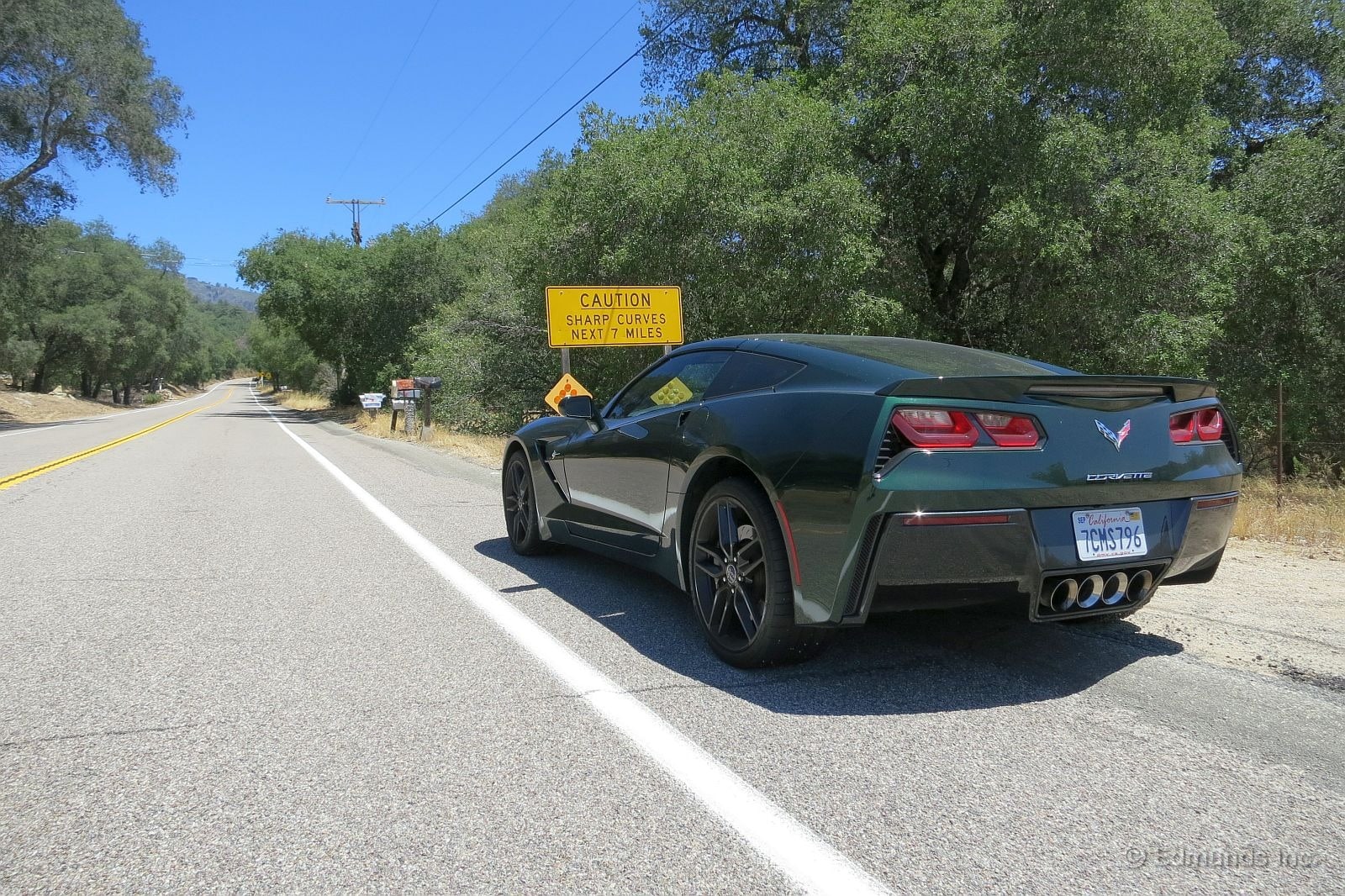
Maybe it's all my fault. The plan, inside my head, was to get an early start for a good old-fashioned flogging of our 2014 Chevrolet Corvette Stingray on one of my favorite mountain roads.
But plans changed and, instead, it was late morning by the time the Vette and I rolled out.
And it was hot. Like 100 degrees on the flatlands, 93 degrees on the mountain I was aiming for.
The Corvette didn't like it. Overheating ensued. Here's the story.
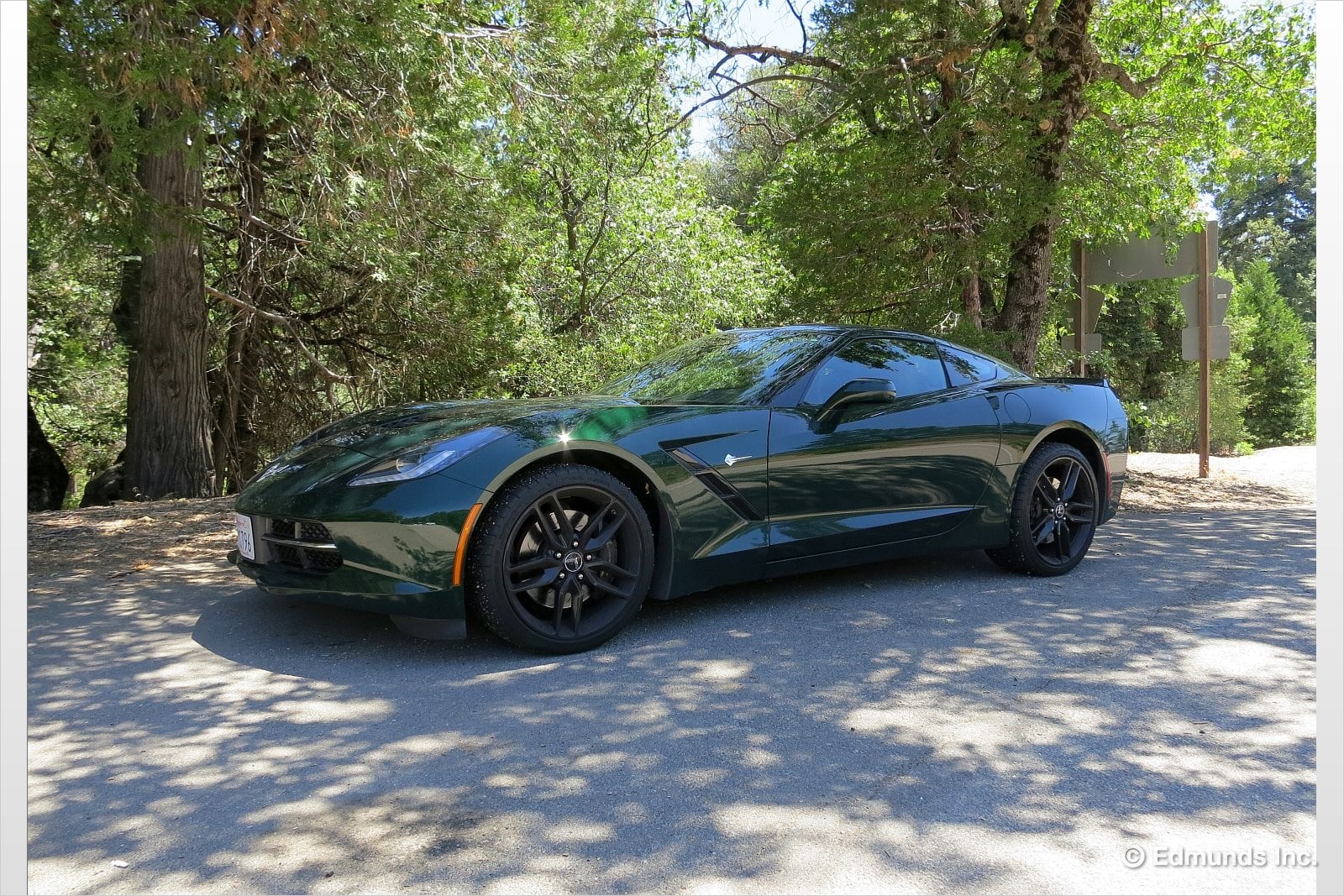
Things were going fine. The Vette was operating normally, the air conditioning was working perfectly and I was taking it easy on the two-hour-or-so drive to the mountain. I started wicking things up a bit on some sweepers, all third- and fourth-gear stuff.
As I made my left turn onto the actual mountain road, I picked up the pace considerably. It's a tight bit of blacktop, lots of decreasing-radius curves, mostly second gear, high-rpm stuff with fun, slightly tail-loose exits. I was just starting to get comfortable with the car's limits, getting into a rhythm, when a chime came on. Uh-oh, that can't be good.
A quick glance at the instrument panel. A readout was saying something to the effect of "Engine Overheating, A/C has been turned off, please idle engine."
The temp gauge was absolutely pegged to the max at 260 degrees. And the oil temp was high, too, nearly into the red. And this was maybe eight turns into the road.
With no turnout to pull into, I shifted into third, dialed things way back, took it nice and easy but still driving fast enough for air to get to the engine. And no, I didn't get a photo of the temp gauge or the IP warning (don't worry, I'm getting plenty of flack about this from the guys here already), I was more concerned with cooling the car off and figuring out what the heck was wrong.
A few minutes later when I got to the top of the 5,000-foot-high mountain road, the temp gauge was nearly back to normal. I parked the Vette in some shade, let it idle and completely cool off.
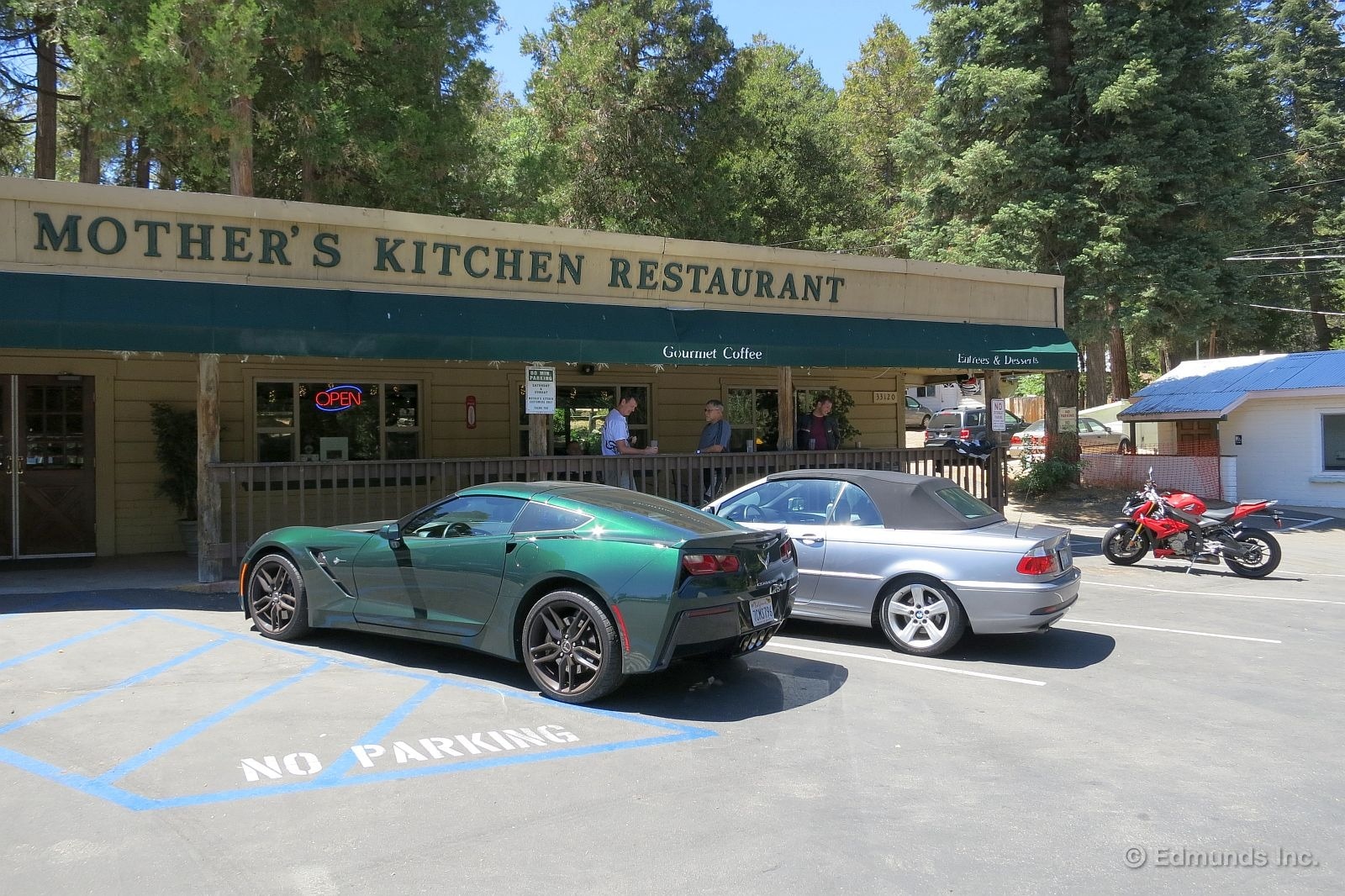
After lunch at the restaurant, I headed back down the mountain. This time I kept it in third gear the whole way, the pace fairly dialed back. The temp gauge stayed close to normal.
Later on the way home, on a much faster, third-gear sweeper-filled road, the temp gauge rose yet again after maybe 10 fairly hard turns, this time to about 240 degrees (normal is closer to 220) before I dialed it back.
Now, this actually wasn't the first time we experienced something like this with our C7 Vette. Josh Jacquot had a similar event during some hard charging on the mountain roads near Malibu. It was nowhere near as hot out when he was driving, but he also had driven hard for much longer before he noticed the temp gauge had risen nearly to the red zone (he never got the chime or IP warning). The roads were similar, lots of hard, second-gear turns. Josh rectified the situation simply by driving through the turns in third gear, which of course was nowhere near as much fun.
In normal duty, both before and after, the Vette has been perfectly fine. And yes, the car has coolant. The one thing I could have done that might have made the situation better was to take off the front license plate and bracket, which Chevy recommends for hard driving and track use (we did this, in fact, at the two-day Mazda Raceway Laguna Seca track event we attended. That weekend we had brake-fade issues, but no engine overheating. Of note, it was also far cooler). It's illegal to drive without a front plate in California, and it seems a bit silly that we should have to take the plate off to drive our Corvette hard. This is a world-class sports car, after all.
Was it simply a just-wrong combination of a really hot day with hard driving in pretty much the worst conditions you can put a car in (sharp, second-gear turns, high-rpm running, minimal air flow)? Possibly. Still, this seems wrong for a modern car, and we'll be taking the Corvette to the dealer to see what they have to say about it.
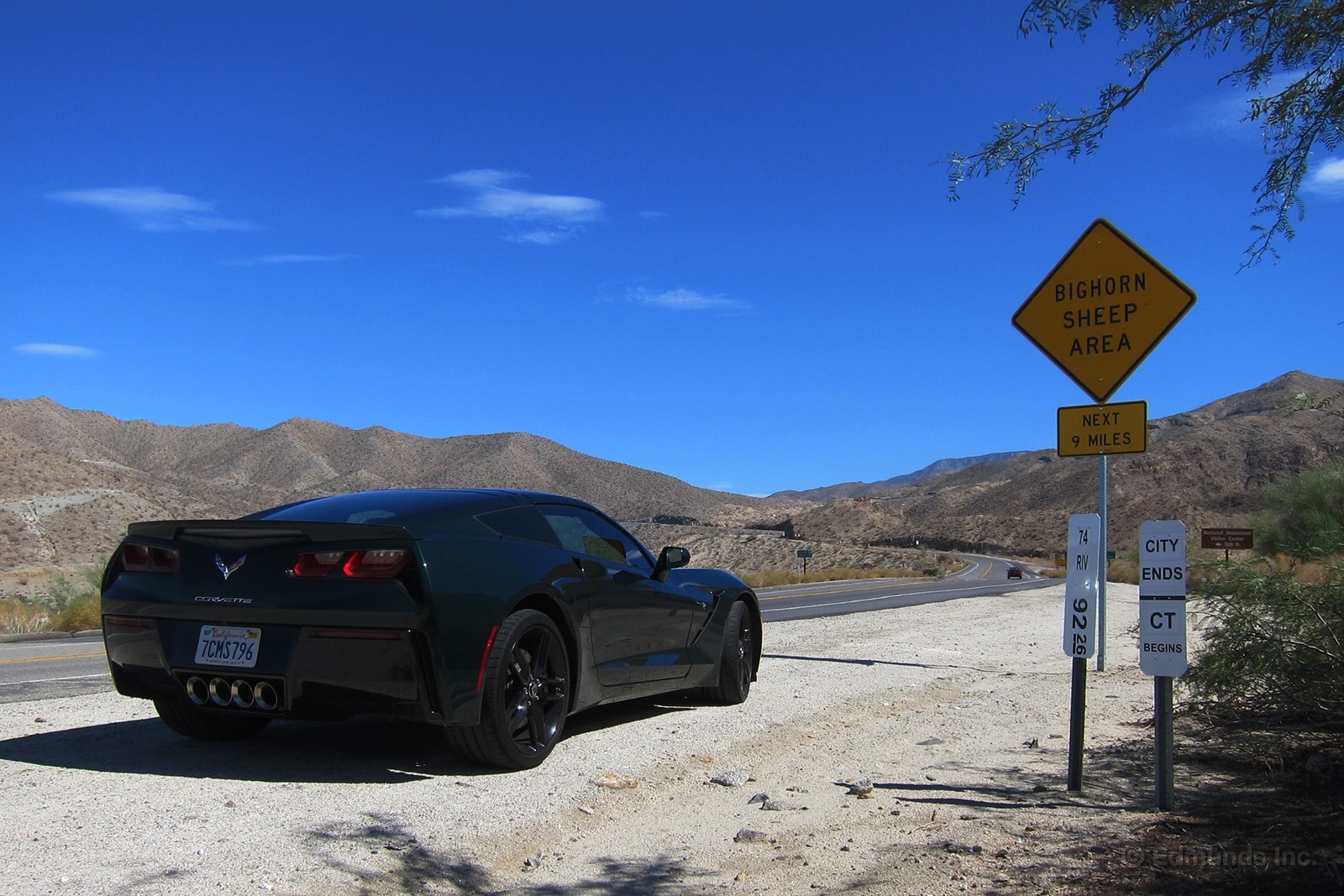
I've never been a motorcycle guy. Riding dirt bikes in high school was fun, but I don't think I've been on one since. Sport bikes and Harleys are cool, but I imagine I'd kill myself on the former and perhaps grow very old, creaky and possibly wealthy on the latter, with a cool bandana to vaguely telegraph my internal sociopath. Anyway, I've always felt you experience the world better on two feet.
But I got the touring bug recently and a somewhat inexplicable desire to get a bike and get lost in, among other places, the deserts north and east of L.A. So when I needed to sort out urgent papers that required a ride out to Palm Springs, I had neither bike nor license, but did have a spiritual twin: our 2014 Chevrolet Corvette Stingray. Two feet, two wheels, two seats. It seemed right.
The morning blast out on the superslab was quick and uneventful, the paperwork painless. The return trip was the reward. Instead of doubling back to the interstate, I climbed south, then west, over the Santa Rosa-San Jacinto mountains on a two-lane called the "Palms to Pines" byway. It's around 50 miles of tight switchbacks and long straights that rise from sea level to 4,000 feet. It winds through a handful of mountain towns and ends near Hemet, an old trading post for the nearby ranches of Riverside and San Bernardino counties.
I kept the Stingray in Sport mode the whole way. I'm not too familiar with this road, but the Corvette's balance and predictable tail dragging inspire growing confidence at every corner. The gap between how the Corvette looks like it handles (big, pushy, understeery) and how it really does handle (small, precise, chirpy) amazes.
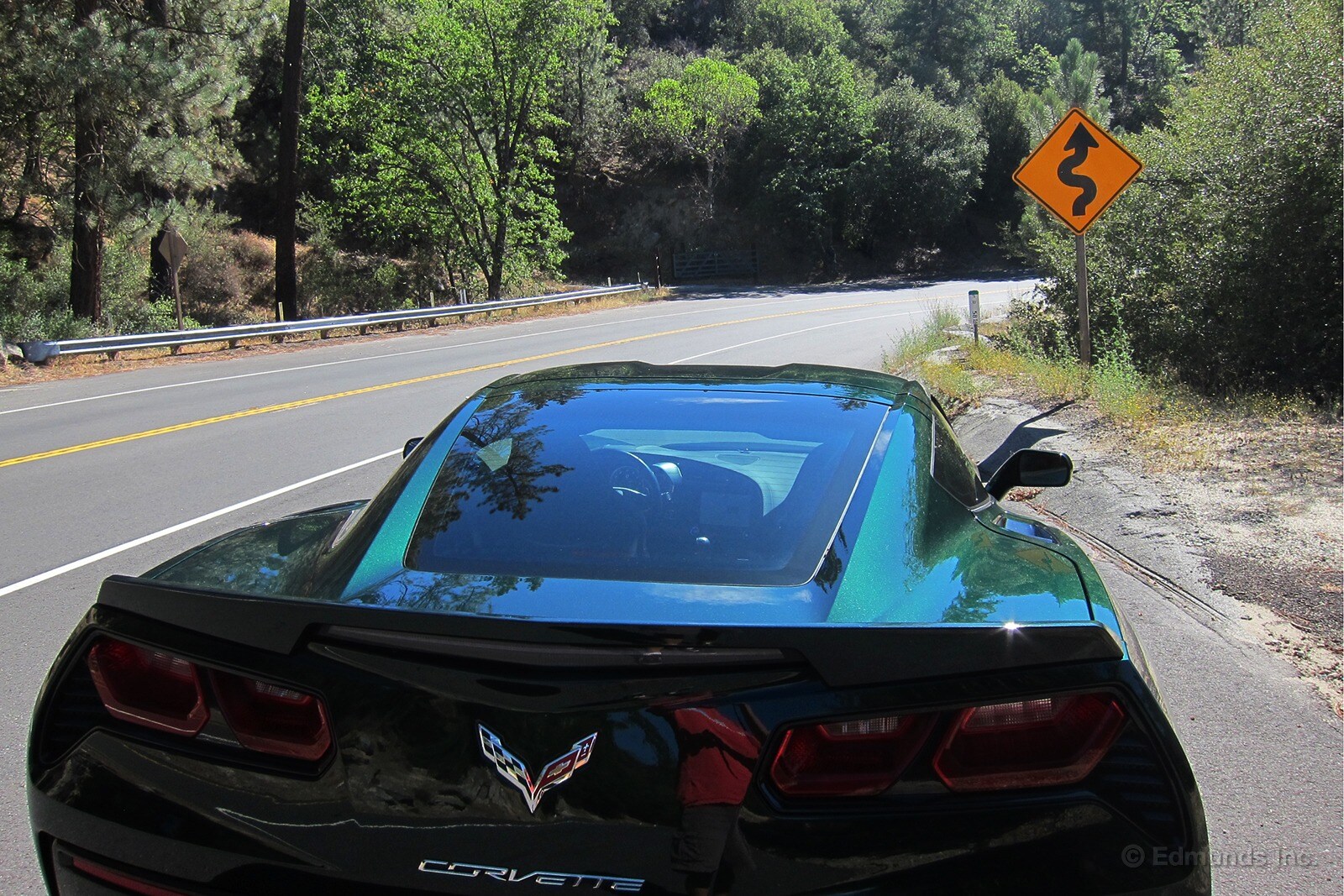
Our Corvette recently started overheating at the hands of mechanically unsympathetic drivers who shall not be named, but even with ambient temperatures above 100 degrees at lower elevations and the A/C blowing cold, the coolant temp needle barely budges. My only real worry is a surprise visit from an oncoming highway patrol unit.
I briefly think about bypassing Hemet and connecting another sweet twisting section, California Highway 243, which runs through the town of Idyllwild (one of southern California's hidden gems) and links back up with the superslab. But I want to push west, not north, and eventually decide to drive on through Hemet and stay on Highway 74, which turns into the Ortega Highway and dumps out into South Orange County.
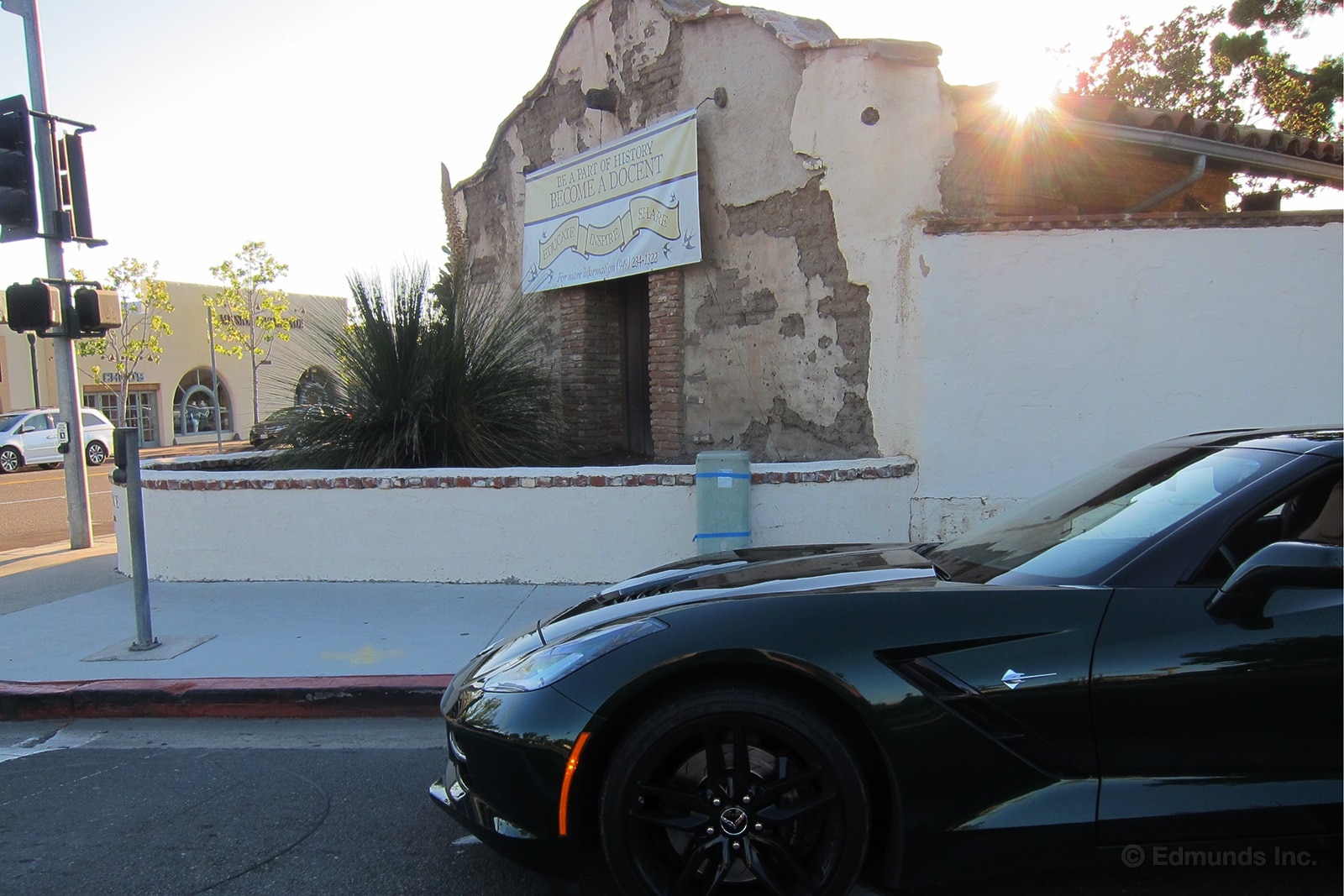
The Vette crawls through Hemet with its low speed limit and proliferation of signals. I start to regret my decision, but soon enough the Vette is climbing again through the Cleveland National Forest and past the Lookout, a breakfast shack popular with local riders. Mike Monticello claims to be kind of a celebrity there.
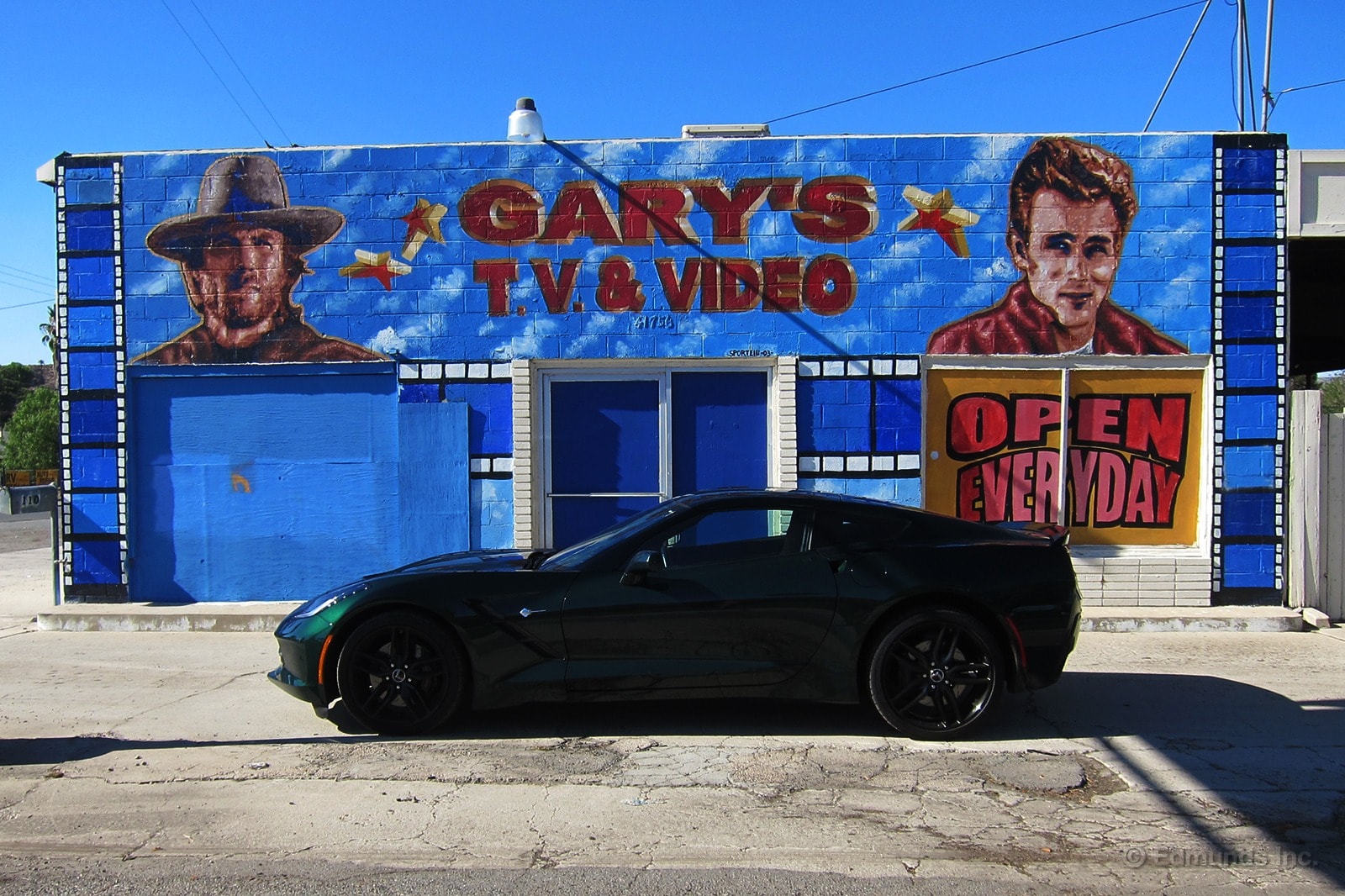
Soon enough the road ends in San Juan Capistrano, one of California's mission towns. I look for a spot to get a photo of the Stingray with the likeness of Father Serra, but settle for a photo near the corner of one of the mission walls. Almost a year ago, Kurt Niebuhr and I drove the Corvette back from Kentucky. I'm still in lust with this car.
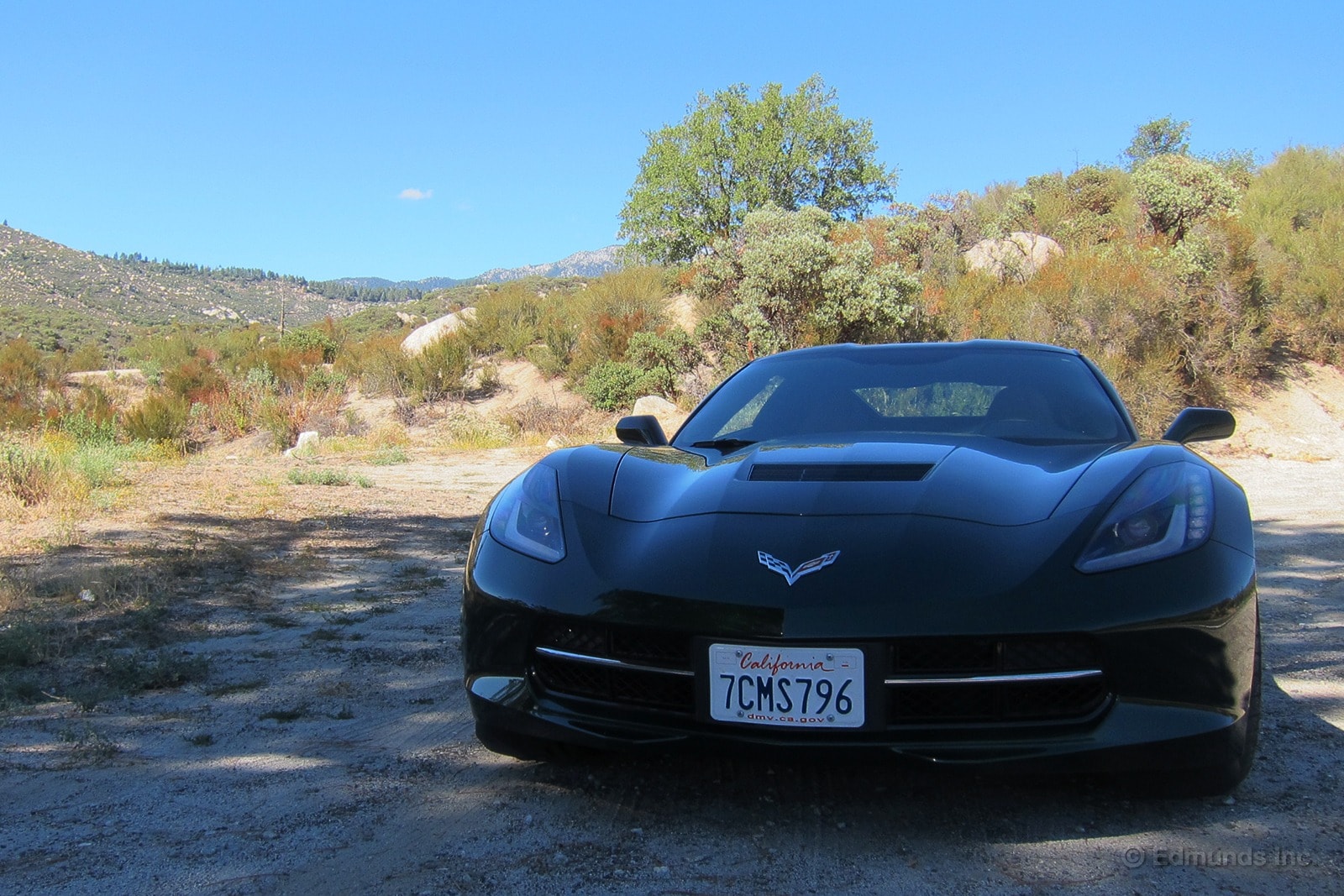
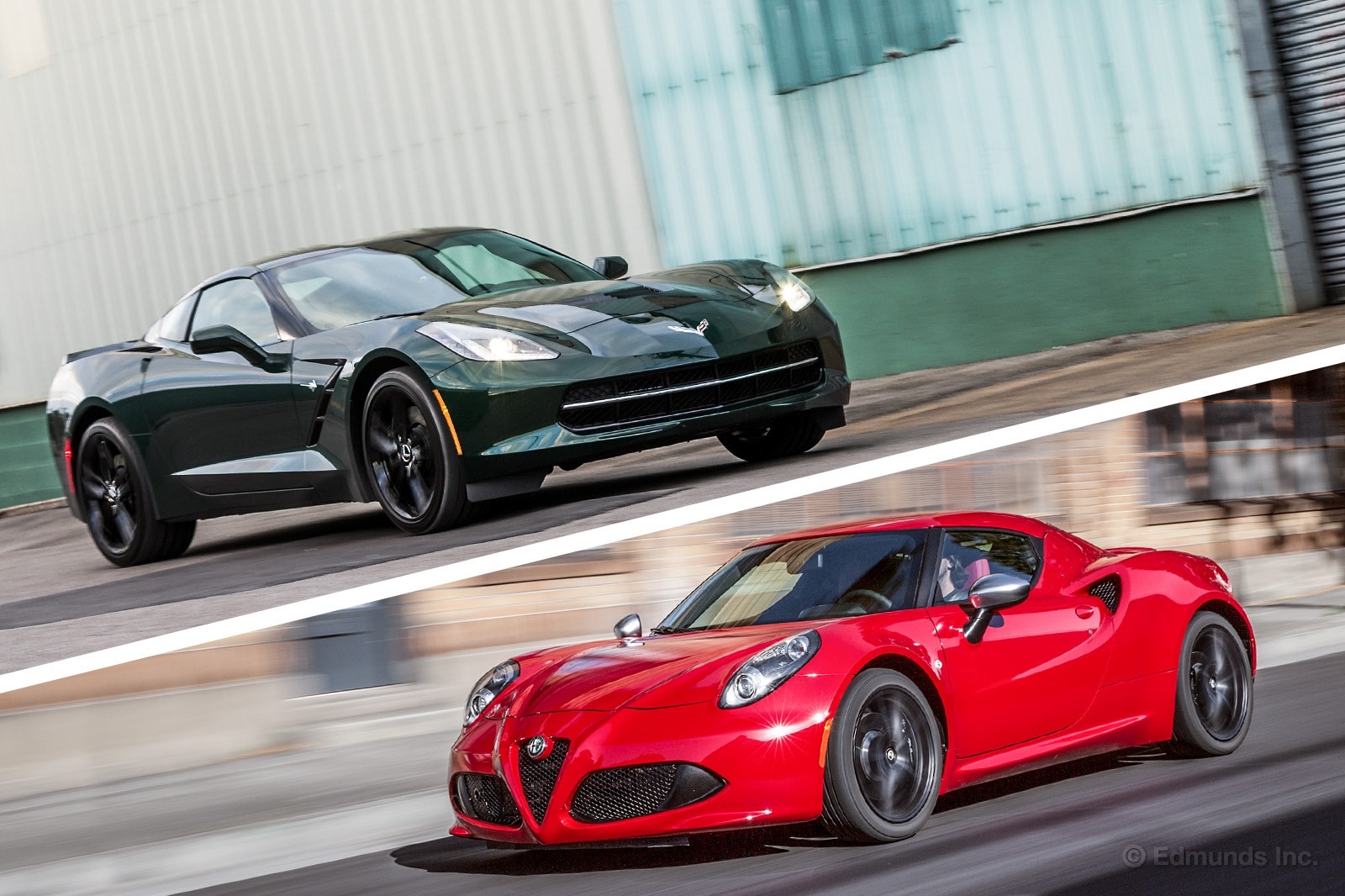
Our long term 2014 Chevrolet Corvette Stingray enjoyed an extended moment in the sun as the New Hotness. For years, it was all anyone talked about. C7 this. Stingray that. It was madness. And then it got released, blew everyone's expectations out of the water and stopped grabbing the headlines.
Taking its place in the spotlight is the 2015 Alfa Romeo 4C. It's Italian. Small and light with half the cylinders, 1/10th the expected production volume (Alfa's building 3,500 4Cs total, Chevy sold 37,000 Corvettes this year) of the Corvette at about the same price.
The first version you'll be able to buy is the 2015 Alfa Romeo 4C Launch Edition, which starts at $71,495. This particular 4C isn't a Launch Edition, but is equipped similarly and will be what you can buy when the Launch Edition sells out. As equipped, our long-term 2014 Chevy Corvette Stingray costs $65,180. The Corvette has 460 horsepower. The Alfa's got 237. The Corvette has a manual; the Alfa's got a dual-clutch automatic. And the Alfa is nearly 1,000 pounds lighter.
The Corvette's got the edge in price, ride comfort, equipment, usability, burnouts, features, ingress and looks. But does it have an advantage on the track where these cars belong?
| 2014 Chevy Corvette | 2015 Alfa Romeo 4C | |
| 0-60 (sec) | 4.2 | 4.2 |
| 0-60 w/rollout (sec) | 4.0 | 4.1 |
| 1/4-mile (sec @ mph) | 12.2 @ 116.3 | 12.7 @ 106.4 |
| 60-0 Braking (feet) | 97 | 104 |
| Skidpad (g) | 1.03 | 0.98 |
| Slalom (mph) | 73.1 | 71.4 |
| Weight (lbs) | 3,428 | 2,456 |
| Horsepower | 460 | 237 |
| Price | $65,180 | $69,945 |
Vehicle: 2014 Chevy Corvette Stingray
Odometer: 1,200 miles
Date: 10/08/13
Driver: Mike Monticello/Chris Walton
Price: $65,180
Specifications:
Drive Type: Front engine, rear-wheel drive
Transmission Type: Seven-speed manual
Engine Type: Naturally aspirated, direct-injected V8, gasoline with cylinder deactivation
Displacement (cc/cu-in): 6,162/376
Redline (rpm): 6,500
Horsepower (hp @ rpm): 460 @ 6,000
Torque (lb-ft @ rpm): 465 @ 4,600
Brake Type (front): 13.6-inch one-piece ventilated slotted cast-iron discs with four-piston fixed calipers
Brake Type (rear): 13.3-inch one-piece ventilated slotted cast-iron discs with four-piston fixed calipers
Suspension Type(front): Independent double wishbones, transverse leaf spring, self-adjusting magnetorheological dampers, stabilizer bar
Suspension Type (rear): Independent double wishbones, transverse leaf spring, self-adjusting magnetorheological dampers, stabilizer bar
Tire Size (front): P245/35ZR19 89Y
Tire Size (rear): P285/30ZR20 95Y
Tire Brand: Michelin
Tire Model: Pilot Super Sport ZP
Tire Type: Run flat summer
As tested Curb Weight (lb): 3,428
Test Results:
Acceleration:
0-30 (sec): 1.9 (2.1 w/ TC on)
0-45 (sec): 2.9 (3.1 w/ TC on)
0-60 (sec): 4.2 (4.7 w/ TC on)
0-60 with 1-ft Rollout (sec): 4.0 (4.5 w/ TC on)
0-75 (sec): 5.8 (6.5 w/ TC on)
1/4-Mile (sec @ mph): 12.2 @ 116.3 (12.7 @ 113.1 w/ TC on)
Braking:
30-0 (ft): 97
60-0 (ft): 25
Handling:
Slalom (mph): 73.1 (70.3 w/ESC on)
Skid Pad Lateral acceleration (g): 1.03 (0.99 w/ESC on)
RPM @ 70: 1,450
Comments:
Acceleration: We did the first "base" run in the Touring configuration with stability control and traction control fully on, and without utilizing the no-lift shift feature. With all aids turned off and the car in Track mode, our best run came using a 2,500-rpm launch, allowing us to go to full-throttle pretty much immediately. It hooks up well. The no-lift shift feature allows you to just jam the shifts home, and this excellent gearbox is fully accepting of it. We tried a couple of launch control runs, but because it launches at about 4,300 rpm it gets too much initial wheelspin, making it slightly slower.
Braking: It's amazing that even with a fair amount of nosedive this new Corvette can stop so short. And even with a pedal that feels a bit soft. But perfectly controlled stops, zero side-to-side movement. The first stop was the longest at 105 feet, the sixth stop was shortest at 97 feet and the seventh and final stop was 98 feet.
Handling:
Slalom: After I had dialed in the mode(s) that best suited my preferred feedback and the demands of slalom test (Track, Sport2), it became a matter of chipping away at the times with subtle techniques that exploited the car's electronic aids as well as the limits. It's easy to discover the limits and either avoid them or step right over them and file it in the manifest of things the Stingray does or doesn't want to do. I especially appreciated the crystal clear and highly precise steering, the zippy turn-in, the progressive break-away of the tires, and the sophisticated traction control on exit that doesn't merely chop the throttle, but stutters it to maintain momentum and direction. Although I couldn't hear it, I could sense the diff hard at work sorting out which side of the car needed/wanted power at every moment. Immensely capable and highly accessible performance without the C6's vaguely threatening demeanor. Wow.
Skidpad: Absolutely nutty amount of grip for a road (not race) car. Steering remains informative and precise despite the tremendous loads. The Stingray will either under- or oversteer at will, which speaks to its impressive balance. With ESC fully on in both Sport and Touring modes, the throttle fades out right before the car would need more driver involvement (e.g. steering and/or throttle modulation) to go any quicker. It's likely a 'civilian' wouldn't even notice this happening at 0.98-0.99g. Impressive.
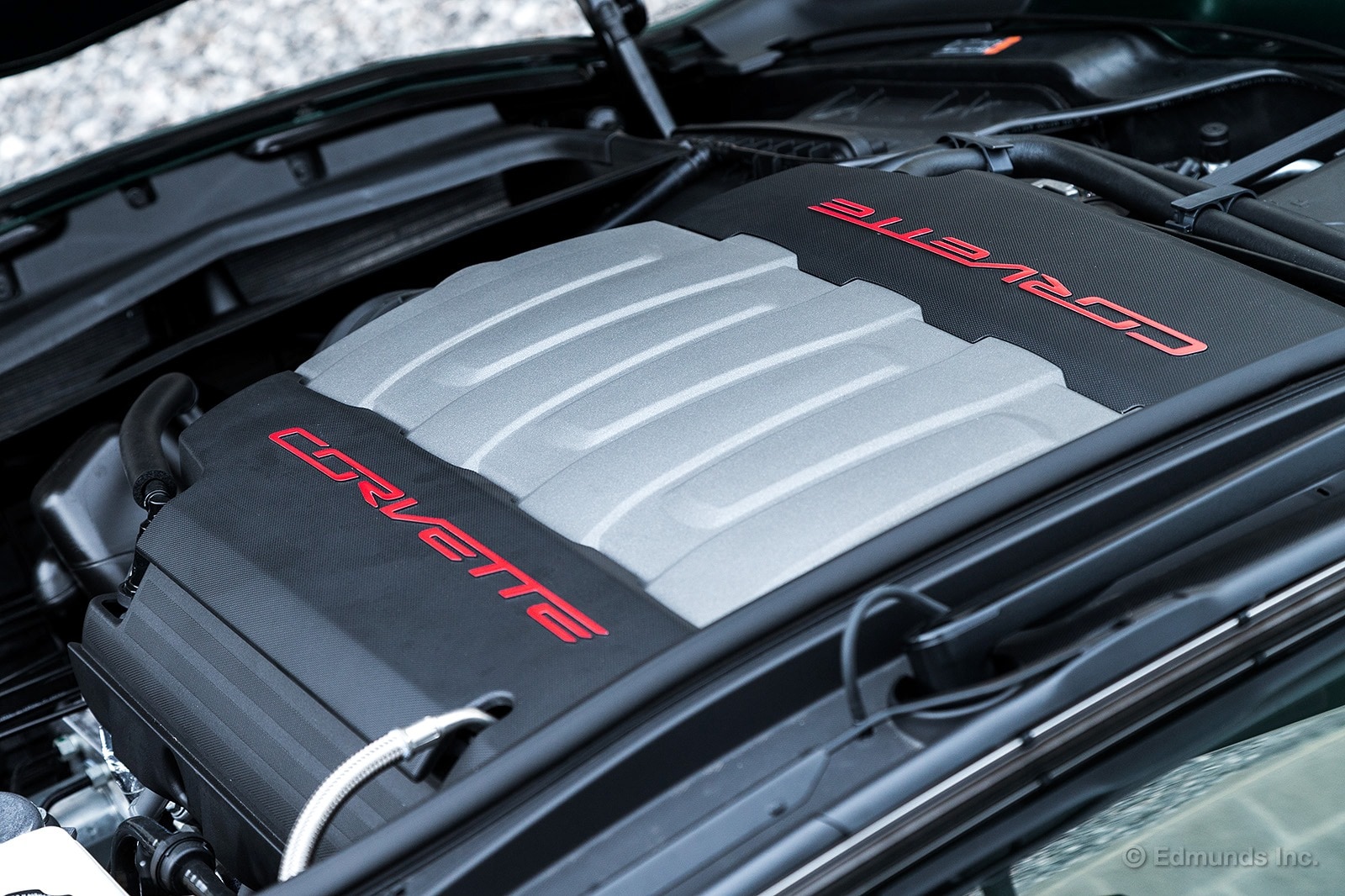
Vehicle: 2015 Alfa Romeo 4C
Odometer: 3,333
Date: 8/26/2014
Driver: Chris Walton
Price: $69,945
Specifications:
Drive Type: Mid-engine, rear-wheel drive
Transmission Type: Six-speed automated manual
Engine Type: Turbocharged, direct-injected inline-4, gasoline
Displacement (cc/cu-in): 1,743 / 106
Redline (rpm): 6,700
Horsepower (hp @ rpm): 237 @ 6,000
Torque (lb-ft @ rpm): 258 @ 2,200
Brake Type (front): Two-piece ventilated cross-drilled cast-iron discs with four-piston fixed calipers
Brake Type (rear): One-piece ventilated cross-drilled cast-iron discs with single-piston sliding calipers.
Suspension Type(front): Independent double wishbones
Suspension Type (rear): Modified MacPherson strut
Tire Size (front): 205/40ZR18 86Y
Tire Size (rear): 235/35ZR19 91Y
Tire Brand: Pirelli
Tire Model: P Zero
Tire Type: Summer
As tested Curb Weight (lb): 2,456
Test Results:
Acceleration:
0-30 (sec): 1.6 (2.5 w/ TC on)
0-45 (sec): 2.7 (3.7 w/ TC on)
0-60 (sec): 4.2 (5.4 w/ TC on)
0-60 with 1-ft Rollout (sec): 4.1 (5.0 w/ TC on)
0-75 (sec): 6.2 (7.3 w/ TC on)
1/4-Mile (sec @ mph): 12.7 @ 106.4 (13.5 @ 105.5 w/ TC on)
Braking:
30-0 (ft): 26
60-0 (ft): 104
Handling:
Slalom (mph): 71.4 (69.8 w/ESC on)
Skid Pad Lateral acceleration (g): 0.98 (0.97 w/ESC on)
RPM @ 70: 2,400
Comments:
Acceleration: Even in default 'Natural' mode, the automated manual transmission (AMT) engages the clutch pretty rapidly and positively with very little hesitation or bog. Manual shifting via wheel-mounted paddles (left = down; right = Up) allows the engine to rev slightly beyond redline, but I used automatic mode for all the acceleration runs. Upshifts are remarkably smooth with a slight 'burp' between as the throttle self-closes/opens. Selecting 'Dynamic' mode sharpens both the initial acceleration as well as the shift speed/harshness during upshifts. There's also a modest Launch mode here that brings the revs up to about 3,000 rpm before engaging the clutch for an even sportier get away — resulting in only a slightly quicker time to 60 mph. Finally, engaging 'Race' mode and utilizing its launch mode was the quickest of all. It allows the revs to climb to 6,000 rpm before releasing the brake and effectively 'side-stepping' the clutch. There's a useful amount of wheelspin available (and learned that too much is too much). I also discovered in this mode that releasing the brake at any point as the revs climb will initiate the clutch engagement. There's quite a cacophony of sound during acceleration: intake manifold, turbo wastegate, engine and exhaust. This is all very reminiscent of the Lotus Exige that has a similarly bare-bones construction with little attention paid to isolating the occupants from the whole-body experience of driving this car.
Braking: Expected shorter distances from this feather-weight car with grippy tires, but at least it's consistent and predictable. Extremely firm (bottom hinged) pedal from first to fifth (and final) stop from 60 mph. These are the kind of brakes that are modulated by the pressure one puts to the pedal and not how far one presses it. All stops were arrow straight, not a wiggle or bit of wander here with minimal dive.
Handling:
Slalom: In Dynamic mode, the electronic stability control system (ESC) is so distant as to be almost non-existent — and I believe it may be watching/monitoring steering angle and yaw rate to see if they match up. It will allow lurid slides and only engages if a spin is immanent. Being so, I discovered that while drifting/sliding past cones is exquisitely entertaining, it is not the quickest path through the course. Tight and tidy wins. This is the kind of car that, at the limit, is so delicate and precise, with so much information streaming through the quick-ratio steering that it feels as if it could be easily balanced on a pin. The balance between front and rear grip is so even and, better yet perceptible, that a skilled driver will innately steer with the throttle as much as the steering wheel. The car quite literally rotates about an axis between the two seats. The tires offer progressive and predictable break-away characteristics. Put some track-only tires on this car and it is already ready for the track. In Natural mode, the ESC is less lenient, but when it does engage, it does so quickly, effectively, and then recedes just as quickly.
Skidpad: Here, in Race mode, ESC can be disabled completely and that ability to steer and balance the car with the throttle is even more obvious. Also, the steering weight decreases and increases with the grip at the front tires waning and returning. It's unassisted, manual rack-and-pinion steering from a previous era. Lovely. Also as unassisted steering, parking is like arm-wrestling. Not so lovely.
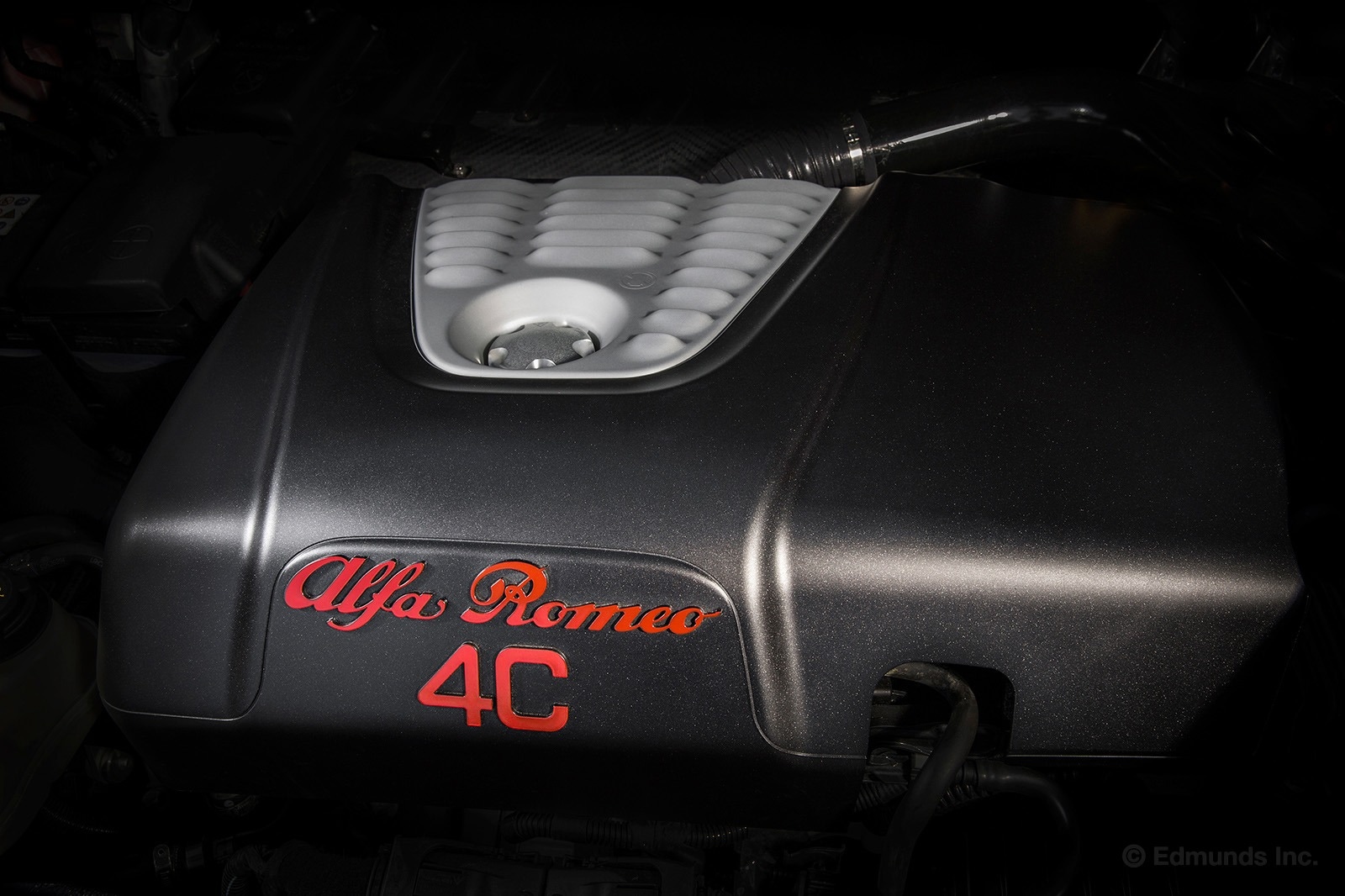
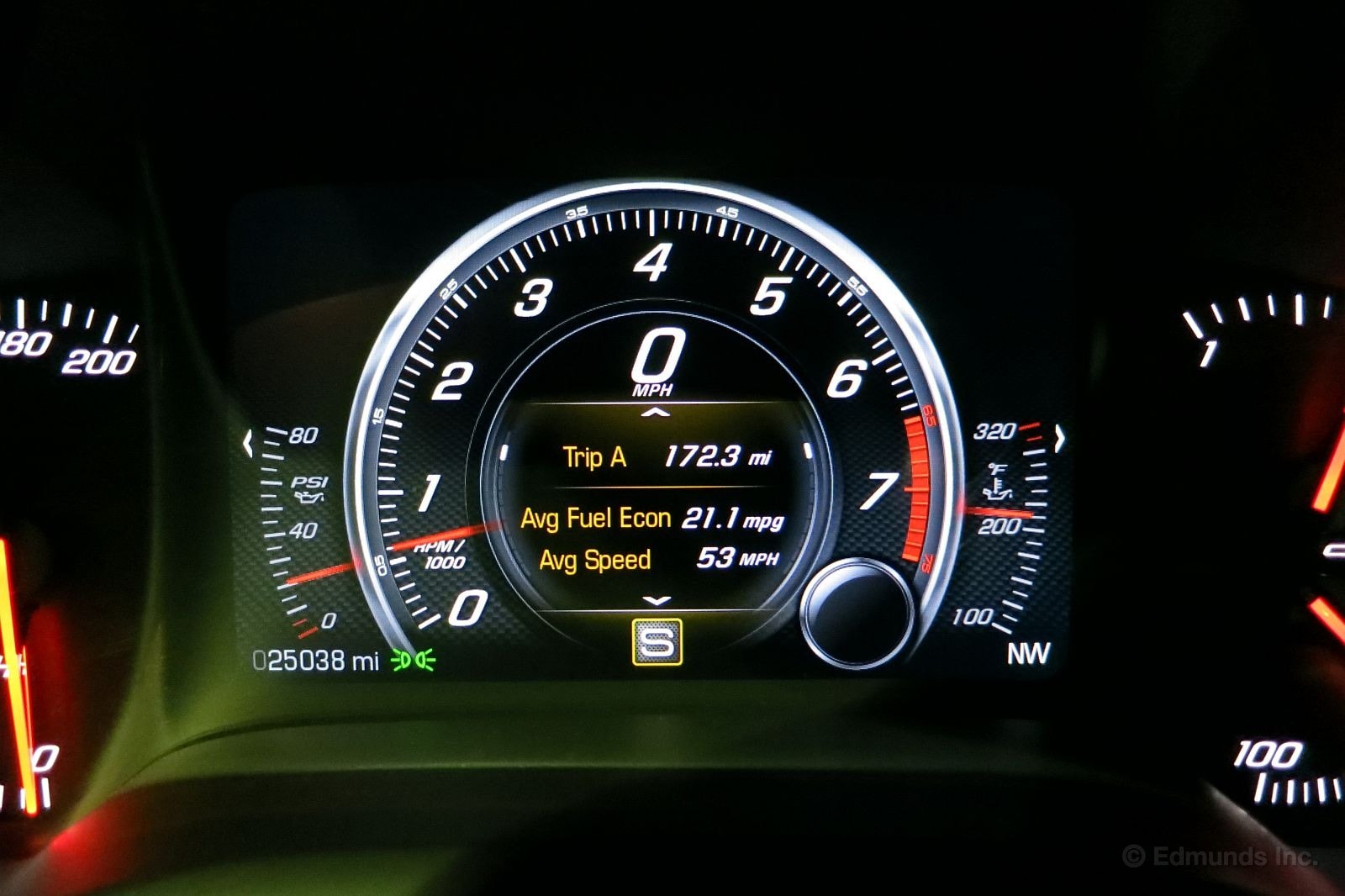
How much do we love our 2014 Chevrolet Corvette Stingray? Enough that we've put 25,000 miles on the Lime Rock Green C7 in less than one year.
Unlike many of our long-term cars, for which the new eventually wears off, enthusiasm for the Vette has barely cooled. It's one of those cars that, if the Corvette is still available when the car list gets to you, you're shocked. And you immediately grab it. At least I do, anyway.
The downside to racking up so much mileage is that our free services are over, since we've gone beyond 24,000 miles.
Despite our glowing praise, has the car been trouble-free? Not exactly. We've had a few issues, for instance with the touchscreen going on the fritz, and the front Corvette badge starting to peel off. There was also a mountain road overheating event that we've yet to fully understand.
Despite the new Corvette being less than perfect, it remains an absolute blast to drive. And really, that's what Corvettes are all about. The driving.

Another month, another 2,200 miles on our long-term 2014 Chevrolet Corvette Stingray.
We've now crossed 25,000 miles and when we last reported fuel economy we were averaging 18.8 mpg. Has anything changed?
Worst Fill MPG: 9.4 mpg
Best Fill MPG: 30.8 mpg
Average Lifetime MPG: 18.5 mpg
EPA MPG Rating: 21 Combined (17 City/29 Highway)
Best Range: 471.9 miles
Current Odometer: 25,714 miles
(Disregard the gallons calculator here. It apparently rolls over as our spreadsheet says we've run through 1,362 gallons of fuel so far.)
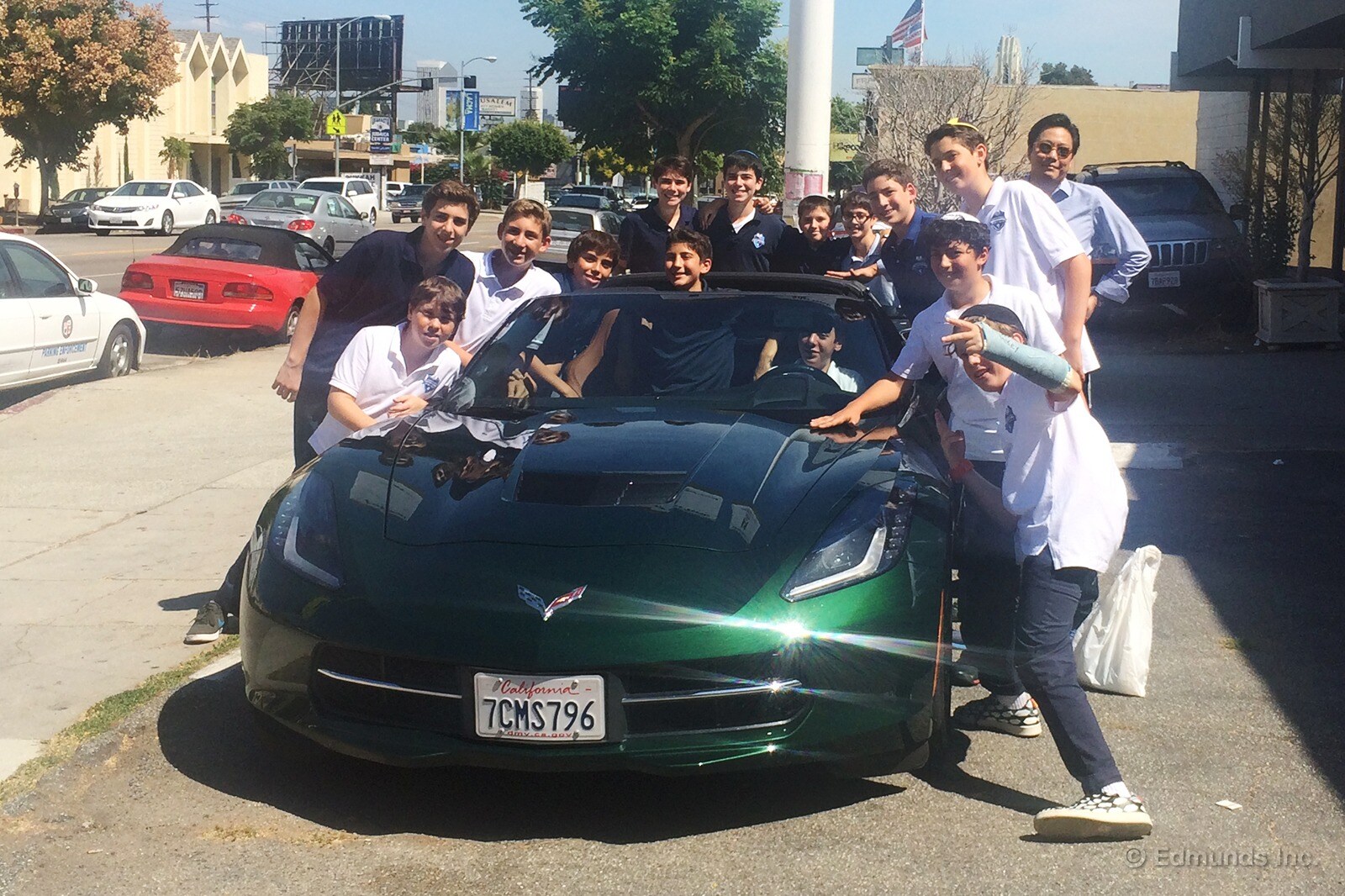
I was recently asked to represent Edmunds at a local school and bring a vehicle to a sort of show-and-tell presentation. The car of choice: our long-term 2014 Chevrolet Corvette Stingray. Leading up to the event, I was curious how it would be received. Reports of the younger generation's disinterest in automobiles and the influence of hybrid/earth-friendly vehicles had me wondering if the Corvette could still impress a group of eighth graders. I was pleasantly surprised.
I started by asking the group of students, "Who here are into cars?"
About half of the hands went shooting skyward as if I asked "Who wants a hundred bucks, no strings attached?" Awesome.
When I was their age, cars were one of my central preoccupations. Rather than storing useful information in my head (history, math, English, etc.), it was filled with car specs. A handful of students actually knew quite a bit about the Corvette and that gave me hope for the next generation of car fanatics. I can't tell you how many times the words Veyron and Ferrari came up in questions.
I put myself in their shoes and imagined if an auto journalist came to visit me as a kid. I would have been tugging at that poor guy's sleeve until it was frayed. One student in particular asked a lot of questions, not just about the car, but about what an editor's job entails. His enthusiasm was infectious and I sincerely hope that he never loses that spirit for cars. Maybe someday we'll be colleagues. Goodness, I'm getting old.
The students couldn't wait to get hands-on with the Vette. They did wait fairly patiently for me to give them the lowdown on the car and were quite impressed when I popped the top and stowed it in the trunk. Once set free, they were all over it. Sitting behind the wheel, imagining driving it, pushing buttons and honking the horn.
Then I started it up. I gave it a good throttle blip to give them the full theatre experience and I giggled as they recoiled in startled excitement. The moment overtook me and I exclaimed, "POWER!!!" in my best Clarkson impersonation.
At the end of a very quick 30 minutes, the show was over and they had to report back to class. One student spent a moment in the driver seat as his classmates were walking back, but I gave him a little extra time to take it all in. I figured he could run and catch up. I gave them all a few more revs as I left and they responded with cheers and waves. Kids today? Yup, they get it.
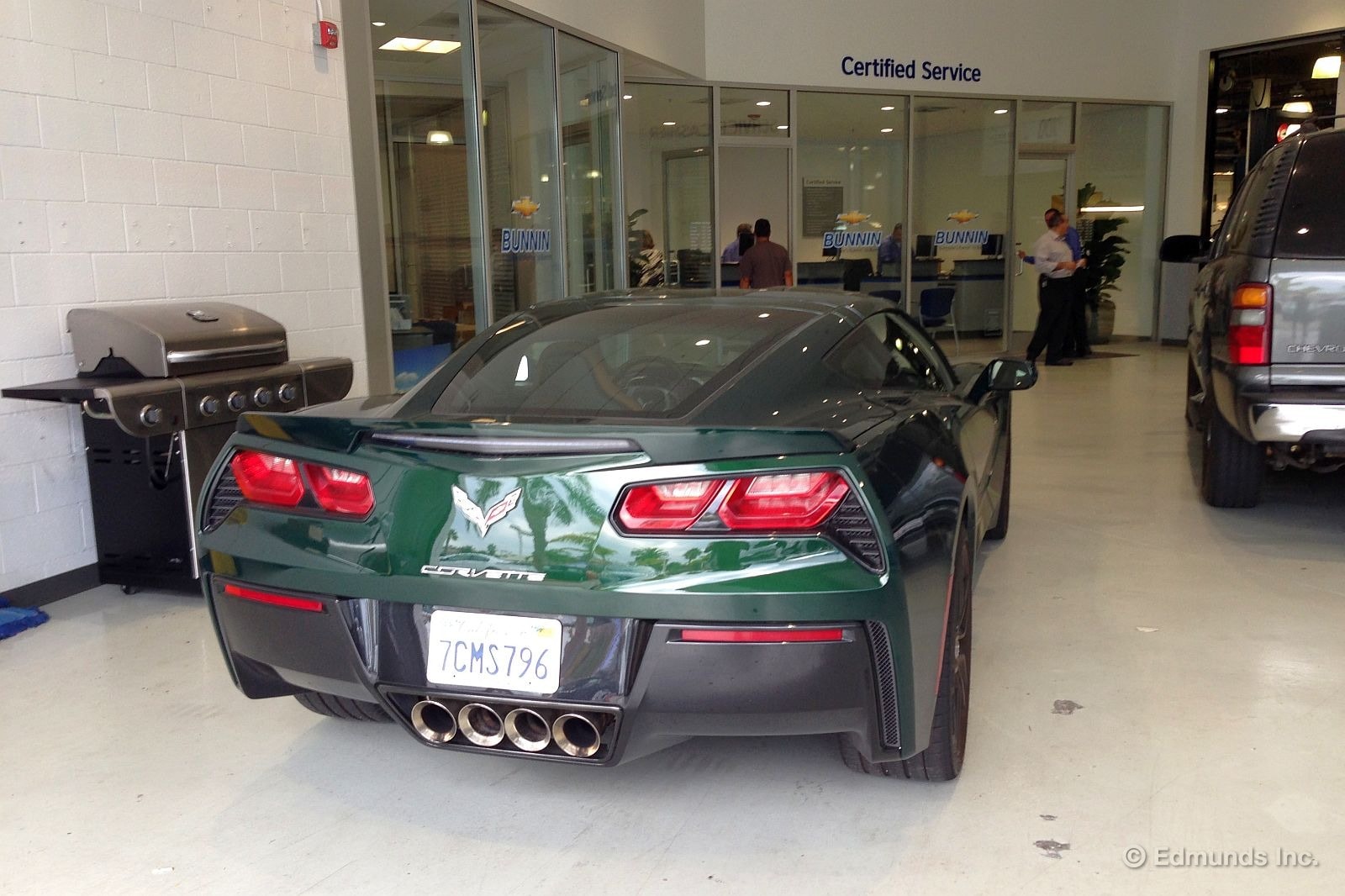
After twice experiencing overheating in our 2014 Chevrolet Corvette Stingray during extreme driving, we brought the car to Bunnin Chevrolet in Culver City for a checkup.
Now, we knew going in there probably wouldn't be a whole lot the dealer could do, especially since the chances of them replicating the problem would be near nil.
But we figured it was the right thing to do.

As expected, the dealer was unable to find a single thing physically wrong with our Vette. They pressure-tested the cooling system and found no leaks. They also looked for any Diagnostic Trouble Code (DTC) faults, but nothing there either. Our service writer found this odd, since apparently there should have been some faults related to the warnings that showed up on the instrument panel during the overheating event.
The technician drove the car around a bit to see if he could replicate the overheating, but of course driving around Los Angeles wasn't even close to the type of hard, mountain road driving that caused the problem.
We also had the outside temperature sensor checked, as an editor recently noticed some massively-fluctuating readings. Here as well, the dealer found nothing wrong with the sensor.
Apparently, our overheating long-term update alarmed General Motors to some extent, and a friendly Chevy public relations officer reached out to us with some suggestions as to why this might have happened, and how to possibly prevent this from happening in the future.
His suggestions:
"First, the factory fill for Stingray is a 60/40 water-to-coolant mix (not the traditional 50/50). You might want to ask the dealership to check, and confirm you're still at 60/40.
Second, it looks like you have the tight-fitting 'aero' front license plate bracket on the car. That bracket looks more integrated, and actually reduces drag for slightly better fuel economy. But it also blocks some of the air going to the radiator, reducing cooling efficiency. For high-temp areas like southern California, you might be better using the standard plate bracket that sits higher on the nose — at least for the summer.
Third, if you're really driving hard, turning off the A/C will help improve engine cooling — at the expense of the cabin temp."
Regarding the first item, we asked the dealer to check on the coolant mix and they stated it was at the factory setting.
For the second, we were unaware our car had the "aero" front license plate, or that there were even any options/alternatives.
Going forward, I have plans to take the Vette back to the same mountain road, hopefully in similarly hot conditions. Minimum I'll simply take the front license plate and bracket off (if we don't outfit the car with the standard plate bracket in the meantime). And, yes, I'll turn off the A/C for the mountain charging, even though, as Mike Magrath joked: "A/C off...what is this, 1969?"
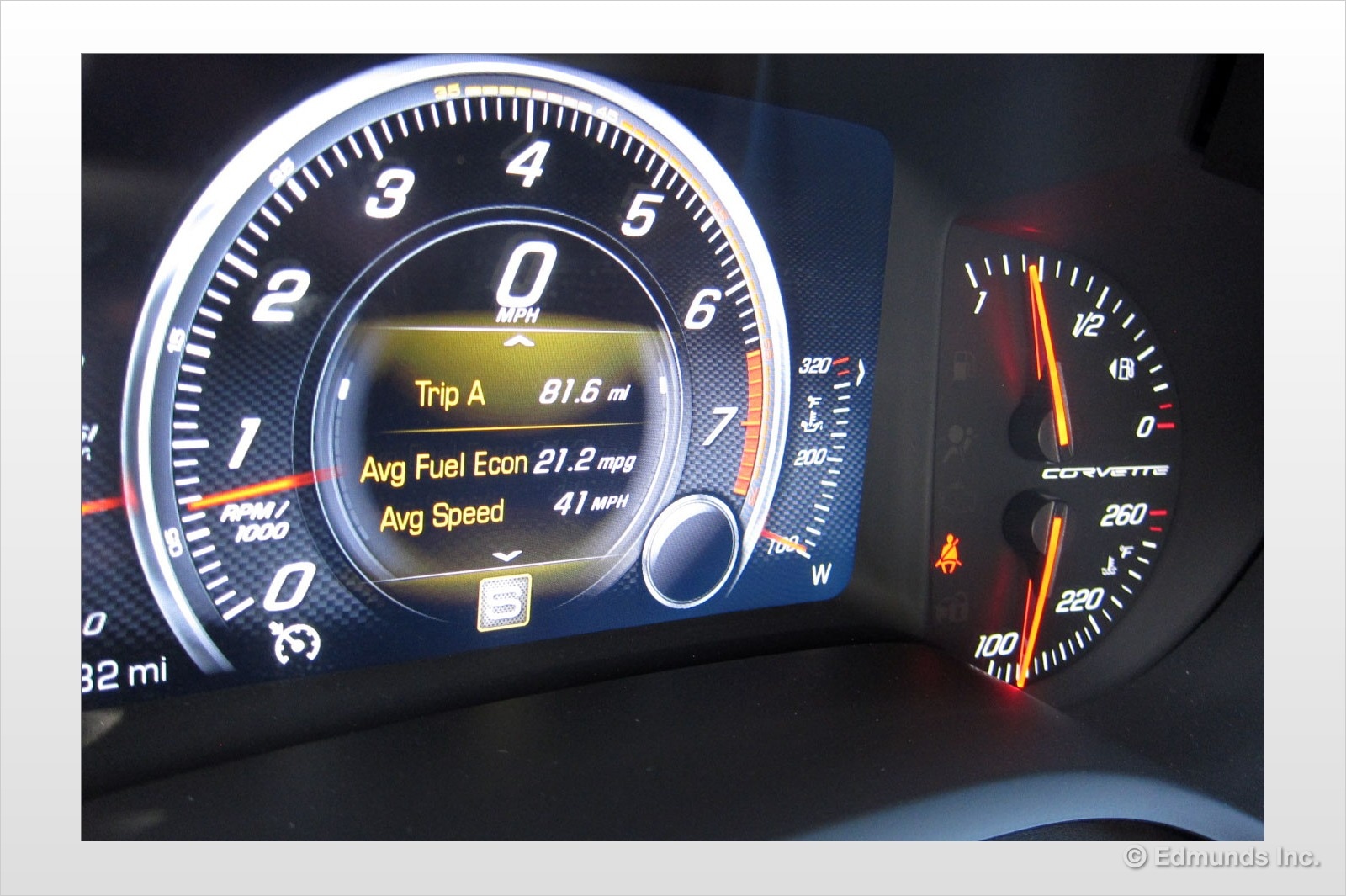
Despite driving another 1,336 miles in our 2014 Chevrolet Corvette Stingray last month, we didn't set any new milestones.
Several heavy-use tanks last month helped drag our overall fuel economy average down from 18.5 mpg in August to 18.3 mpg in September. Otherwise, it was a rather unremarkable month of driving the Stingray, not that that's really possible.
Worst Fill MPG: 9.4 mpg
Best Fill MPG: 30.8 mpg
Average Lifetime MPG: 18.3 mpg
EPA MPG Rating: 21 Combined (17 City/29 Highway)
Best Range: 471.9 miles
Current Odometer: 27,050 miles
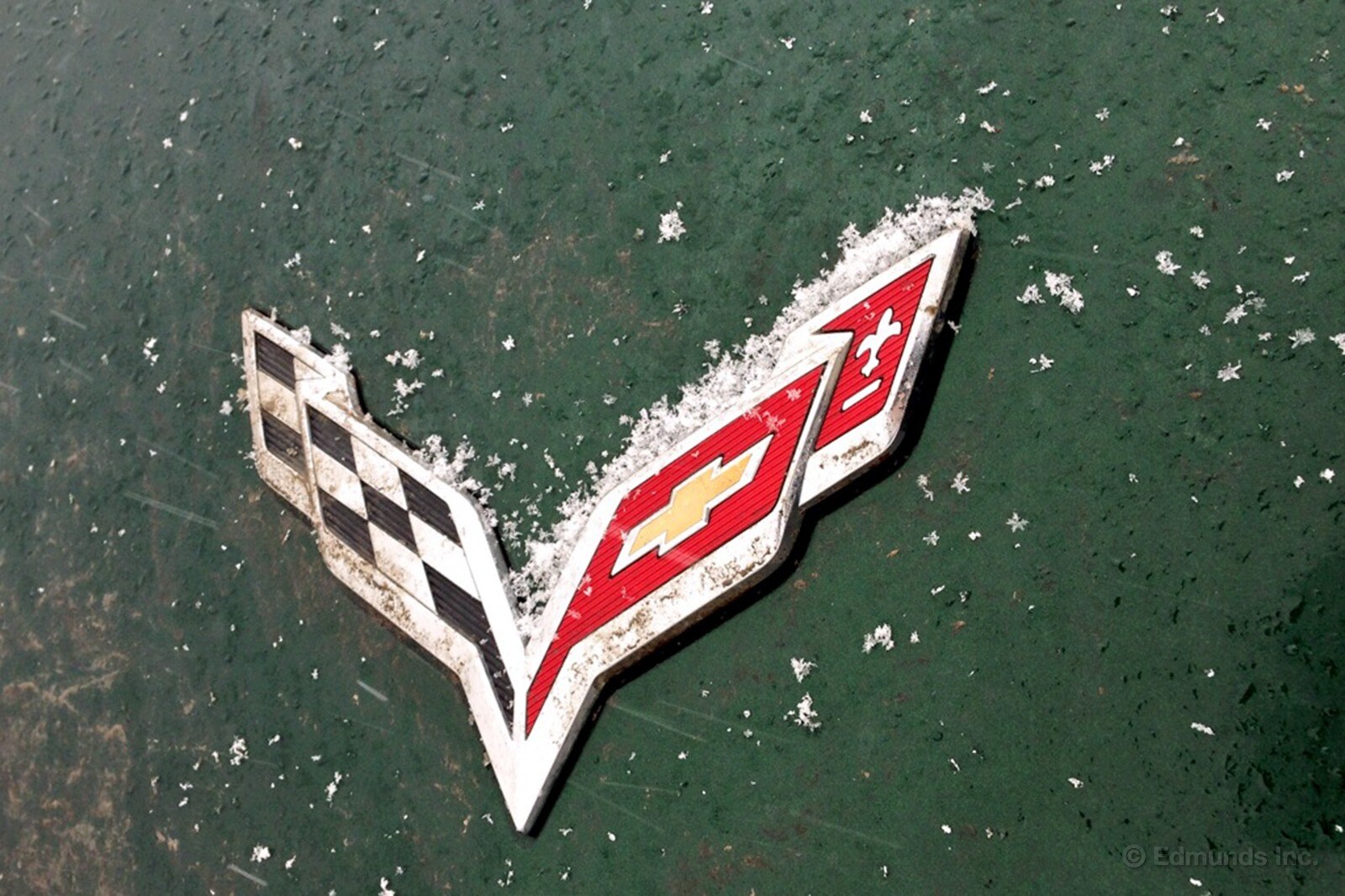
As we've discussed, Chevy made the bad (totally reasonable based on sales numbers) decision to discontinue the best color available on 2014 Chevrolet Corvette Stingray: Lime Rock Green.
So, is it, as I postulated, rare enough to be a collector's edition? With its Lime Rock Green paint and Kalahari leather interior, our Corvette is one of...
...652. Brownstone interior was the most popular color paired with LRG. Chevy built 664 of those.
Total number of Lime Rock Green Corvettes: 1,577
Total number of 2014 Corvettes: 37,288
That means that only about 4% of 2014 Corvettes wore the right color combination and since we know only 45% of Stingrays were sold with the manual, that puts our Corvette at just about 2% of all produced. As you've read, the most common color is the predictable-to-the-point-of-boring Red followed by the non-colors (white, black, grey) and then Laguna Blue (lovely color), then a better red, Velocity Yellow (lol), blade silver (not a color), Night Race Blue (super cool) and then LRG.
Some other interesting bits? 41 people thought that a yellow Corvette with a red interior was a good idea (Hulkamania reference already used on Twitter); Black-on-black is the most popular combo; 5 persons wound up with LRG over red (If you are one of these people, please contact me. I NEED to see this); and 81 plopped out of the factory in my guilty-pleasure combo, Laguna Blue with Adrenaline Red leather.
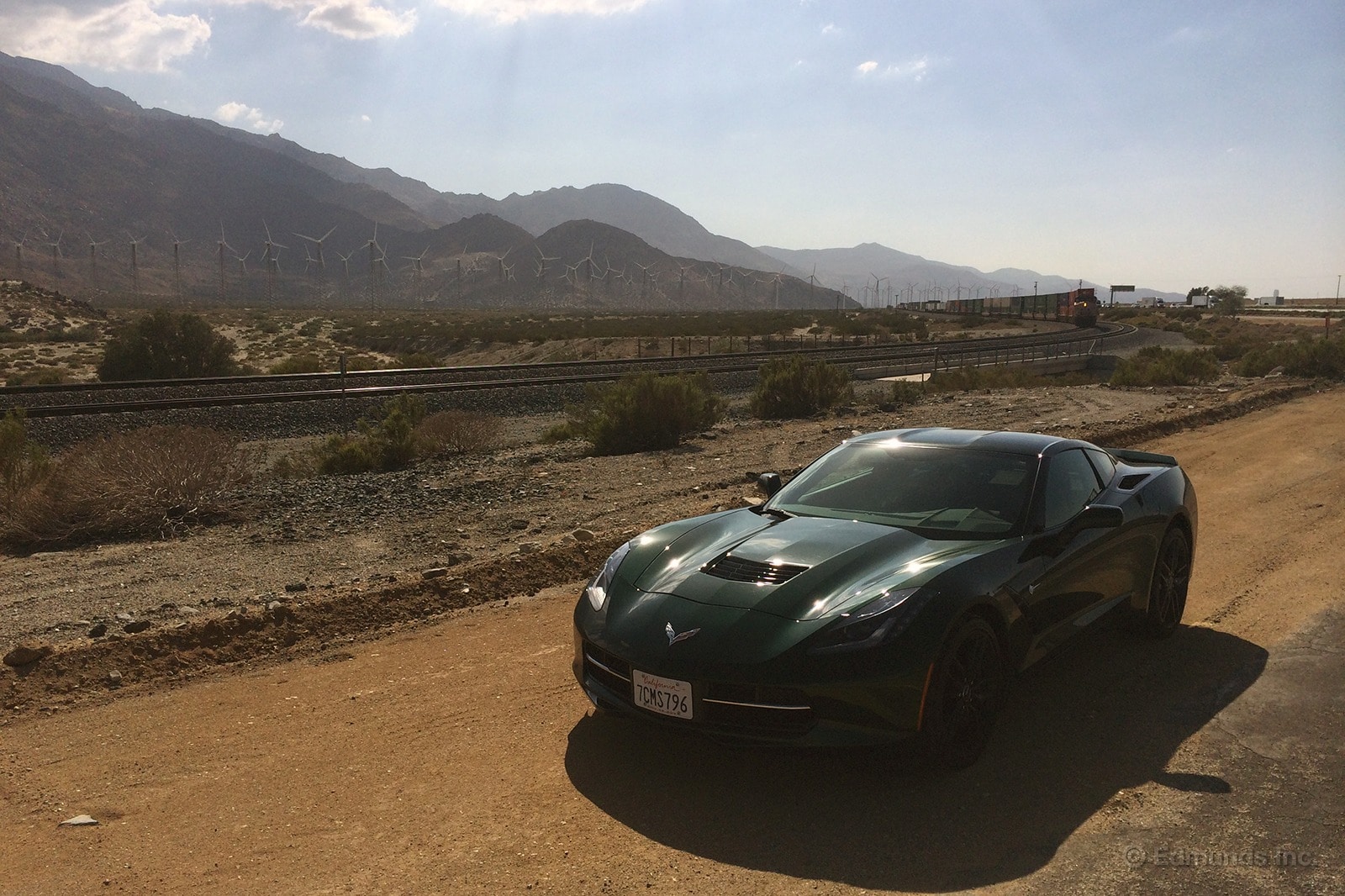
Back when I was in high school I had the opportunity to drive a relative's Corvette. It was a 1996 with the LT4 motor. The last of the C4s. For a few minutes, I was able to escape the reality of the 1994 Toyota Corolla that served me as basic transportation at the time. It was an unforgettable experience, the details of which I will not go into here, even though the statute of limitations has long since expired.
The LT4 is gone, and my family member misses it terribly. Unless a wave of amnesia hits the office and everybody forgets we have to sell our 2014 Chevrolet Corvette Stingray, one of my favorite cars in our long-term fleet is about to depart. There was no better way to say goodbye than by bringing the Stingray back to where my relationship with Corvettes began.
A round-trip excursion from my house to Palm Desert and back would be my longest trip ever in the 'Vette. Most of my experiences with the car were bouncing between gears one and two during stop-and-go-traffic, flitting around the Santa Monica mountains, and around town cruising. I'd never been on a real highway trip. That meant I begrudgingly activated the heretical "Eco" mode for the first time to see how the sports car rolled along with half its cylinders firing.
Good news: using Eco mode is the only way to travel on long, flat roads. If you're paying close enough attention, you can feel the V8 turn into a V4 and vice versa, but it's mostly invisible. Eco and Touring modes prevent the engine from making its hellscorching roar that is so fun in Sport mode and above, but nobody wants to set the cruise control and have the engine blaring for hours on end. The Corvette does fine GT work when the situation calls for it.
We arrived in Palm Springs, where the Corvette received a warm welcome. Aesthetically, its Lime Rock Green paint and black/Kalahari (brown) interior color combo were salivated over, and things only got better when the engine was fired up. Click it into Sport mode, nail the throttle, and you'll know why the $1,195 optional dual-mode exhaust is a must-have.
We drove around for a little while, and my passenger got to relive the Corvette experience, if just for a little while. Corvettes have come a long way in 18 years. He exclaimed the C7 was easily ten times the car he used to own.
As I left Palm Springs, I reflected on the green rocket I was fortunate enough to pilot on that desert road back home. The entire weekend was me inanely repeating, "I'm going to really miss this car when we sell it" to my very patient girlfriend, but the praise is earned. If you desire an affordable sports car that is adept around the track at Lime Rock Park as it is calm and reserved on a long road trip, the Corvette will leave you wanting for nothing.
And it's still an attention grabber. The C7 has been on sale for a year now, and I still get thumbs up from other drivers and requests for pictures (with me out of frame, of course). I even had a pedestrian miming a tear falling from his face as he walked in front of the car.
So I'll say it again, because it bears repeating. I'm going to miss the Stingray, for its beauty, performance, and the fact that we will not have any cars equipped with a manual trans once it's gone. Goodbye, Green Buddy. It's been a blast.
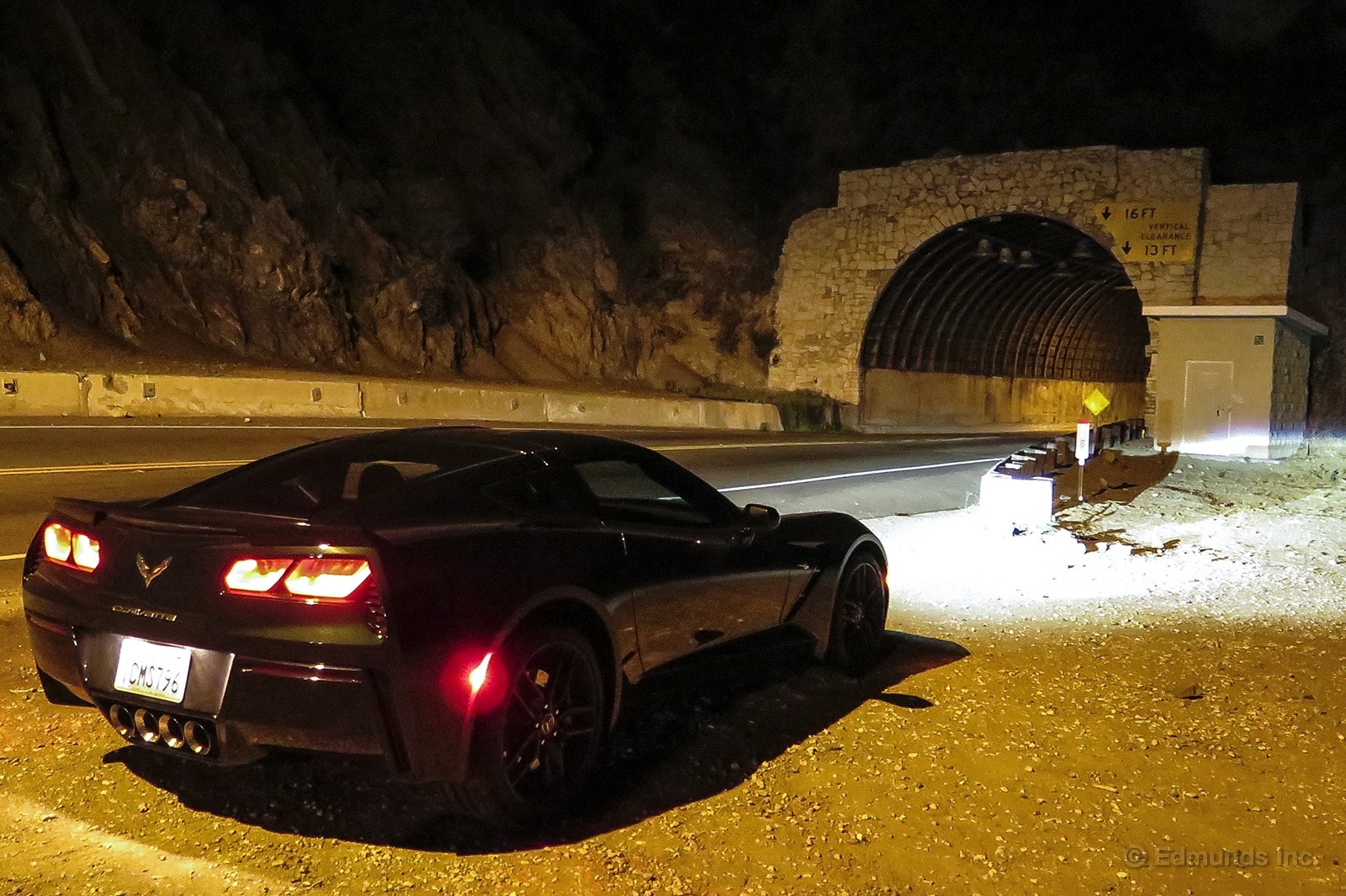
The last time I took our long-term 2014 Chevrolet Corvette Stingray out for the weekend, I did some sound testing. I wanted to know just how loud the Stingray was at wide open throttle in a tunnel, so I loaded my iPhone up with a few cheap apps and headed for the hills. I used two local tunnels, did two runs in both directions and I got a sound rating of 100 decibels. The problem was, 100 dB was the iPhone's limit, the microphone couldn't register sounds any louder than that. To get a more accurate reading, I checked out some of the Edmunds official testing equipment and went for a second run.
Ya know, for science.
This test is pretty simple. I roll both windows down, leave the Corvette's top in place, go through the tunnel at wide open throttle. Accelerate, redline, shift, repeat. In the same two tunnels, with one run in each direction I got a result that was almost exactly the same. The highest rating registered on the official Edmunds testing equipment was 100.7 decibels. Not quite in the range that causes prolonged hearing damage (115 dB or higher), but definitely in the wake-the-neighbors sound register.
If you read the last decibel test I posted with our C7 Stingray Corvette you already know that it is a bit quieter than its predecessors in all three of our standard testing categories (at idle, at full throttle and at 70 mph). Luckily, a bit of quiet on the highway doesn't mean the C7 has lost any of its snarling-V8 personality.
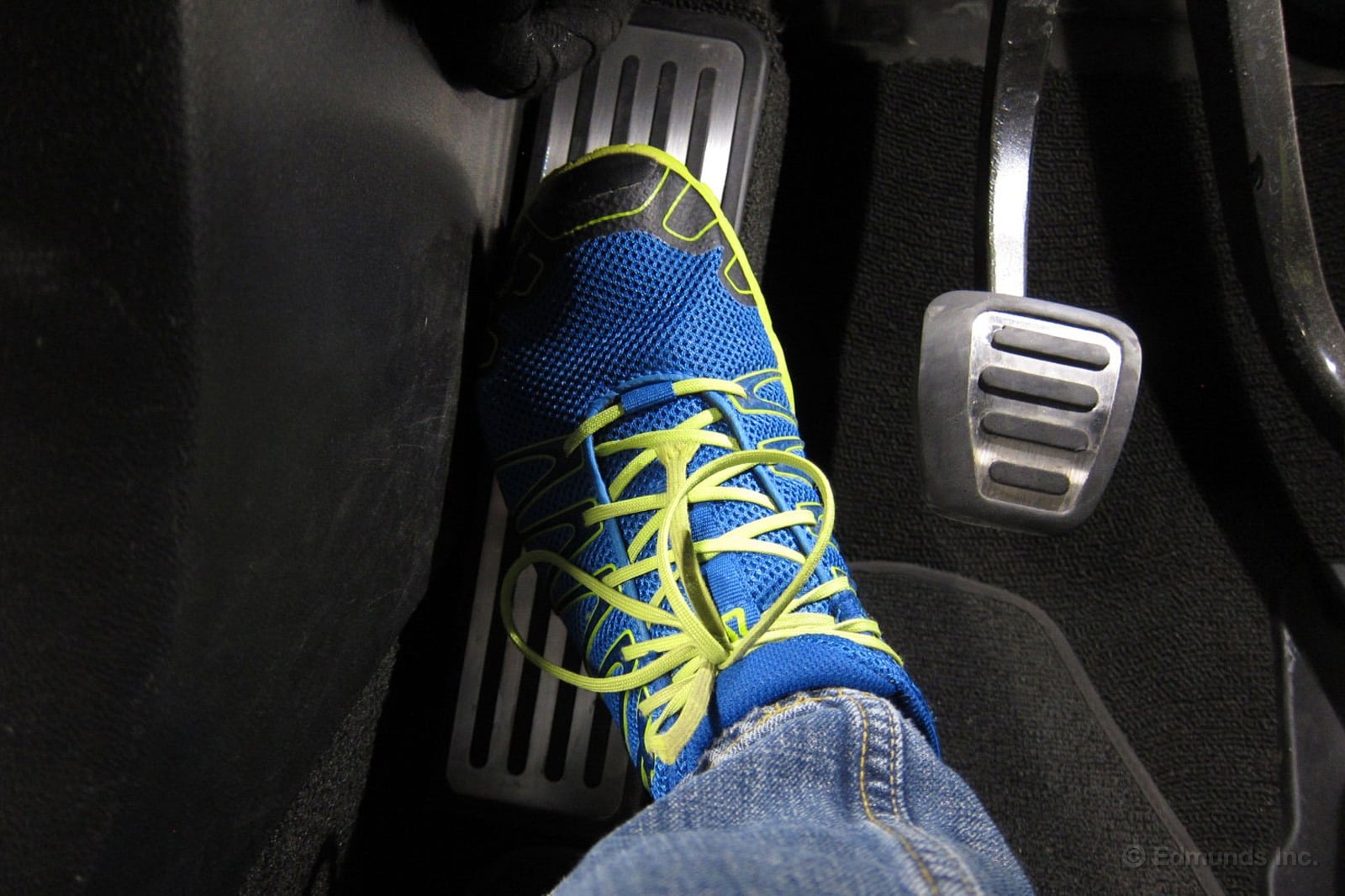
The Stingray has a massive dead pedal that's useful for bracing yourself while executing the kind of driving that makes the engine overheat.
That will be all.
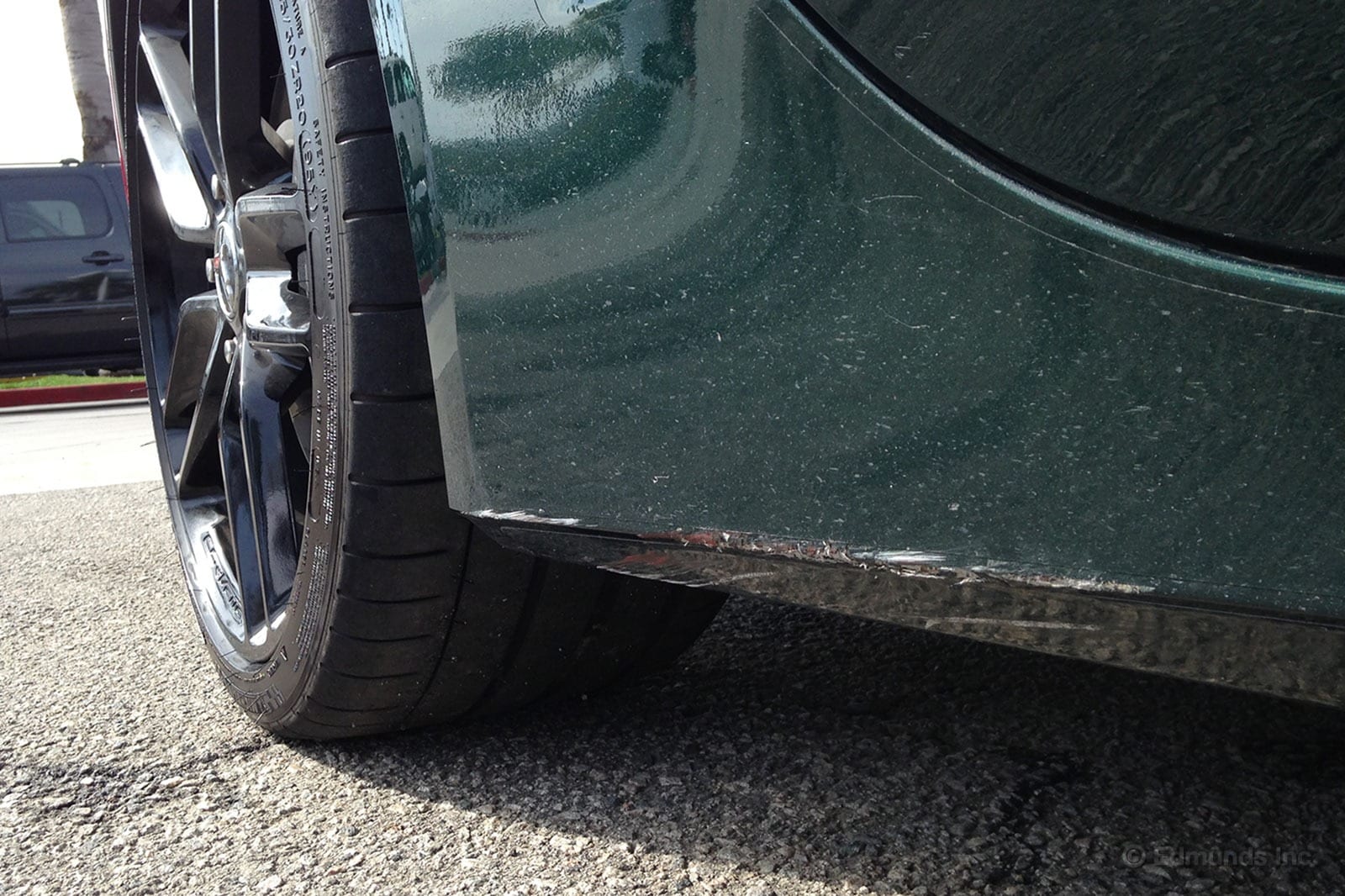
Somewhere in the past year the rocker panel of our 2014 Chevrolet Corvette Stingray tried to occupy the same space as another object. This is how it turned out. What the other object was, exactly, we aren't certain. The nature of what we do sees the key passed around far more frequently than most. Be it editor to editor, to valet, or to dealer service-center porter, it can be a long list. Nonetheless, it happened, and we had to fix it...
We called a local body shop, the Golden Hammer. It processed the car in four days for a cost of $1,125. The upper and lower stone guards were replaced and the remainder of the area repaired to our satisfaction. We're glad to see the Stingray back in one piece.
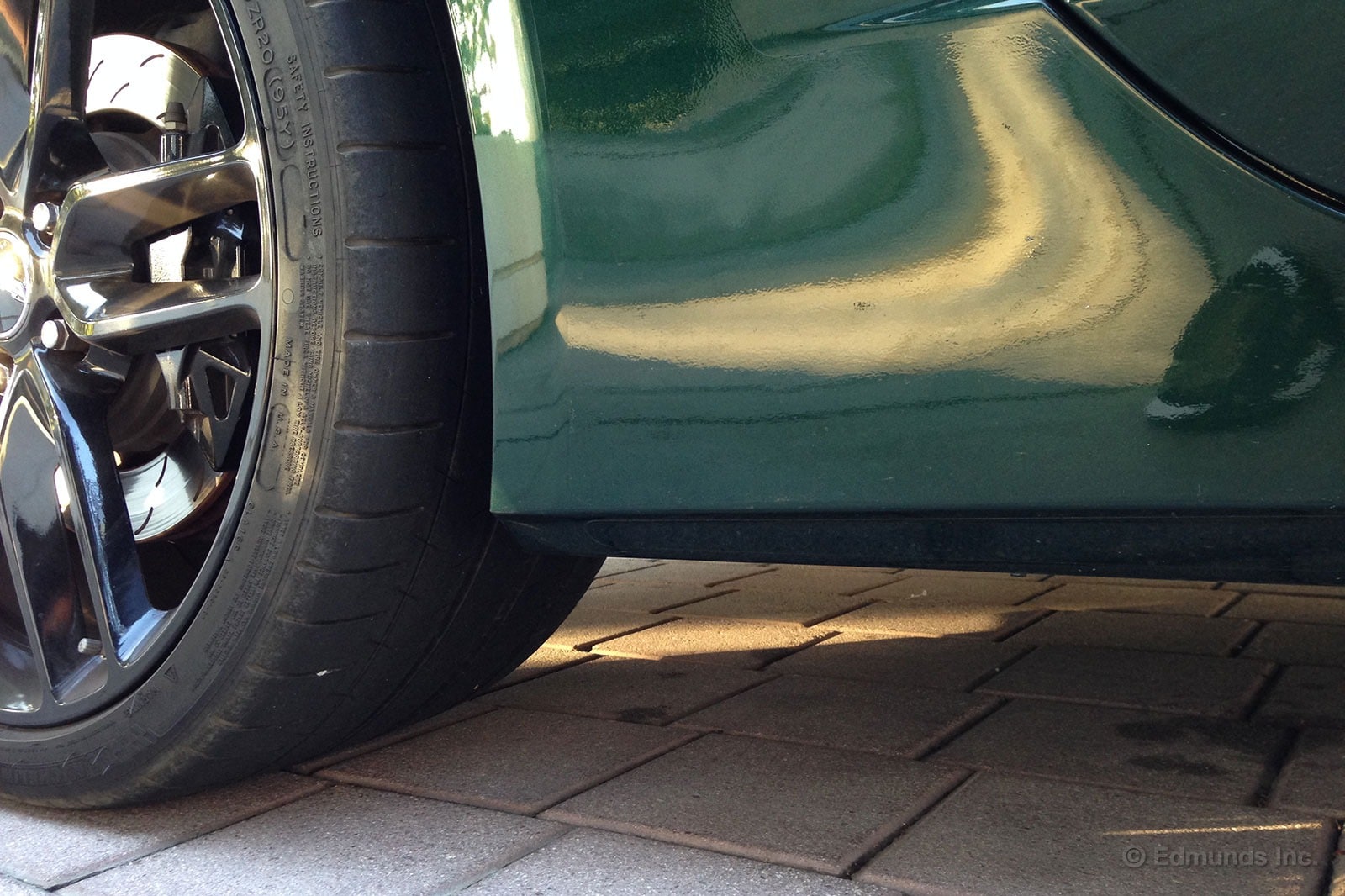
Total Cost: $1,125.31
Total days out of Service: 4
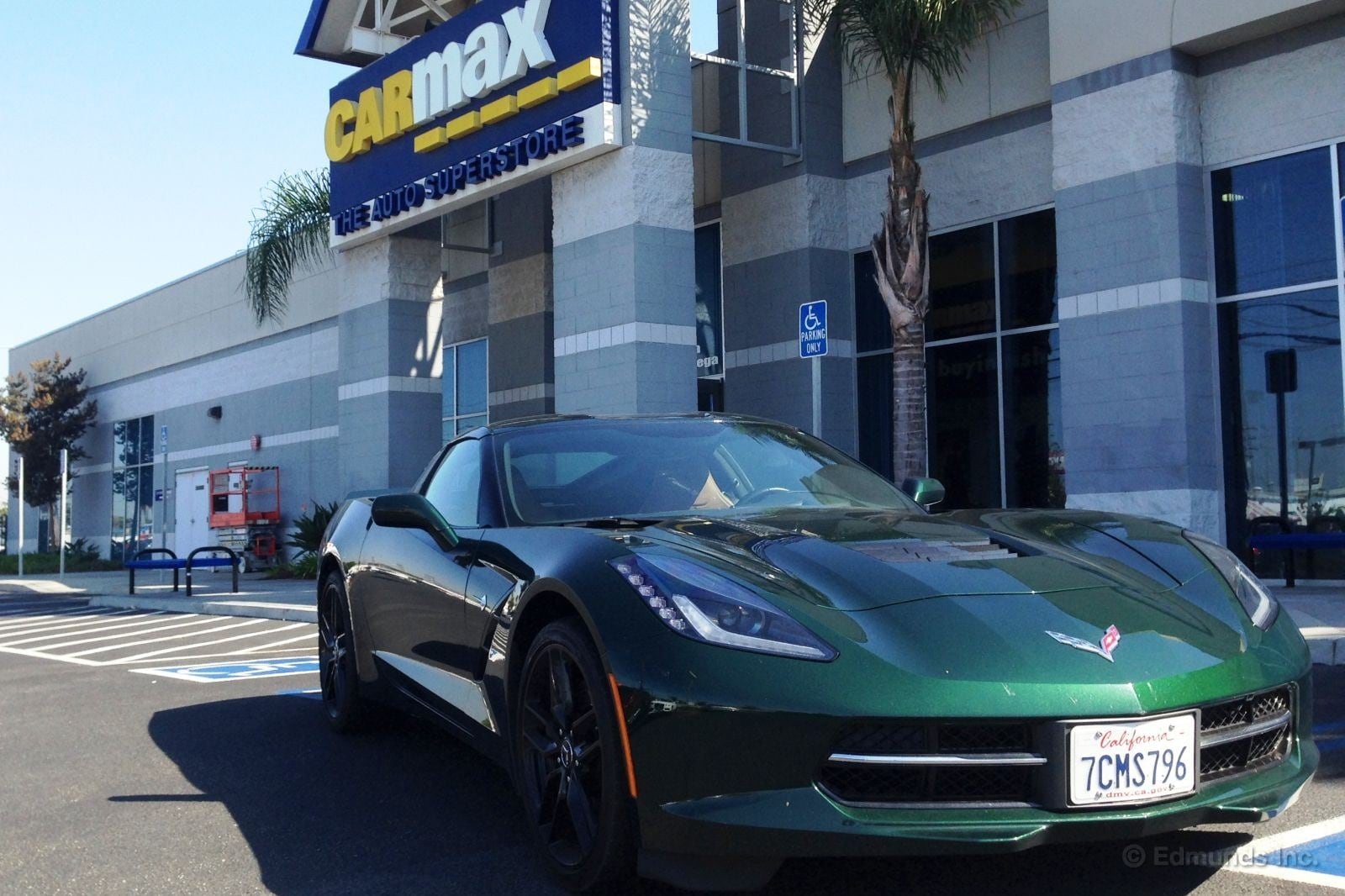
Cars lose 20 percent of their value as soon as you drive them off the lot, or so the tired old saying goes. But what if you special order a 2014 Chevrolet Corvette Stingray, pick it up at the factory and drive it twice as much as anyone else? Then, what is it worth 27,200 miles later?
We had our fun with the Corvette and, sadly, it was time to turn it back into money. This was an unusual car for us since we bought it at the Bowling Green Assembly Plant and even had a little plaque to prove it. Would anyone else think that added value? We decided that we would begin by taking it to CarMax to see what they would give us, thinking we might have to go the private party sale route this time around. CarMax amazed us with its offer.
CarMax offered us strong money, as a car salesman might say: $50,000 for the Corvette which stickered at $65,180. That means after a year-plus of enthusiastic driving, and nearly double the average amount of miles, it lost only 23 percent of its value. Furthermore, CarMax's price was $1,500 above the Edmunds trade-in value and about $1,800 below the private party price.
The hardest part of selling the Corvette to CarMax was getting past Cameron Rogers, vehicle testing assistant. He positioned himself between my desk and the door looking alternately threatening and tearful. So, in consolation, I will echo his parting words to this iconic sports car: "I'm going to miss the Stingray, for its beauty, performance, and the fact that we will not have any cars equipped with a manual trans once it's gone. Goodbye, Green Buddy. It's been a blast."
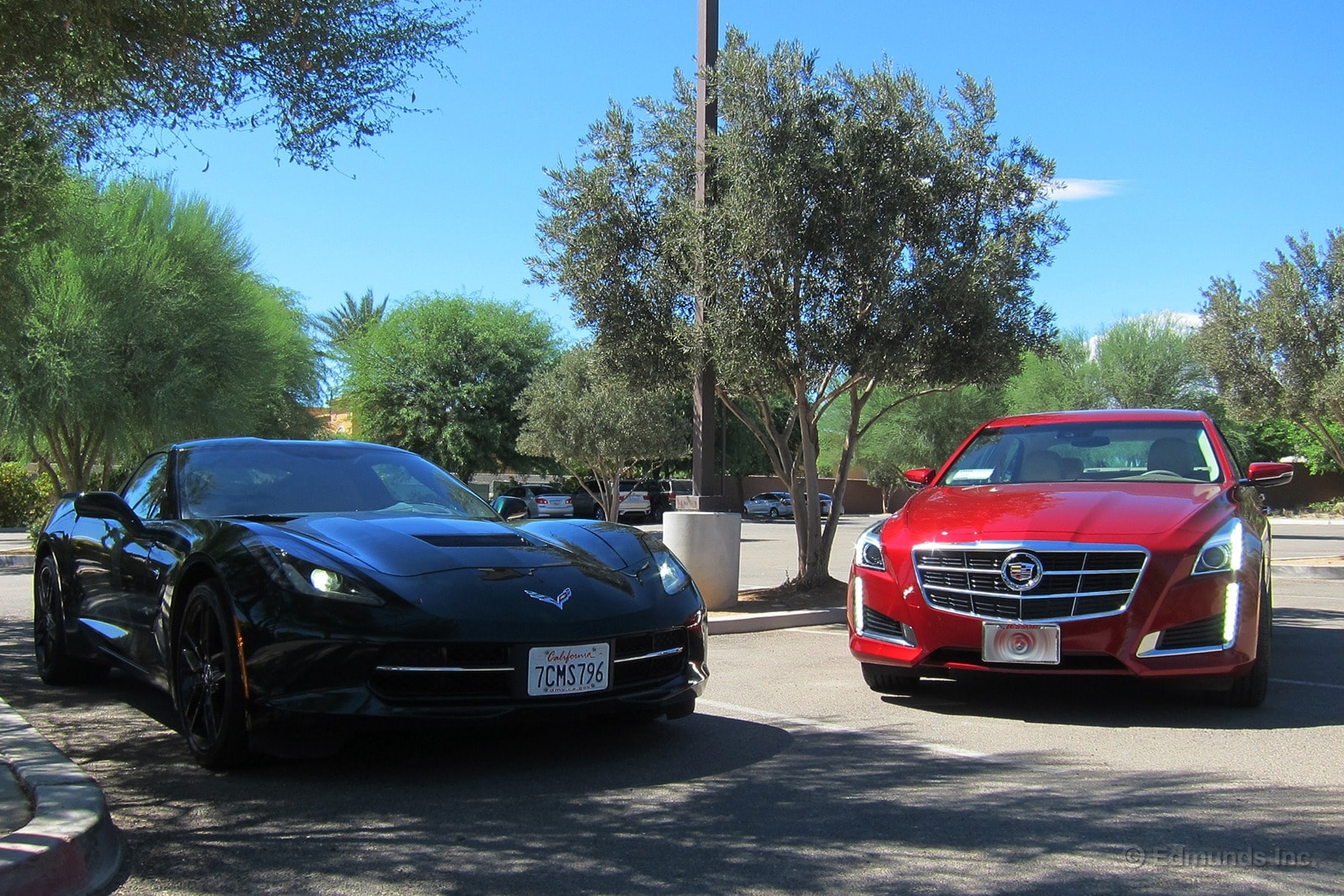
On the left, the car my father thought he might buy. On the right, the car he recently bought.
During our year with the 2014 Chevrolet Corvette Stingray, I encouraged, cajoled, enabled and endorsed my father's thoughts about getting a Stingray. Like many of us, he was ambivalent after seeing photos of the C7, but he was smitten once he saw one in the wild. In my own self-interest, I urged him to reconsider the seven-speed manual, but he was adamant about the automatic. Too damn old for a stick-shift anymore, he reasoned.
So what swayed he and my mother into a CTS instead of the Corvette?
A road trip in their SLK 280, actually. They bought it new in 2006 and only started putting real miles on it after mom retired. Day trips here and there. Some Vegas runs. The more Dad drove it, however, the more he disliked the seating position. The seats also weren't holding up for him for extended drives. Getting out of the cockpit was also turning into a pain.
Riding shotgun with me in the Corvette one day confirmed his suspicions: the car was just too low, the seating position too low, and the ingress and egress too troublesome for him to enjoy. It felt like the SLK, only bigger. I suggested he schedule a couple of test-drives, maybe wait for one to show up in a local rental fleet and drive out to Vegas to get a better impression.
He waved me off. "I had my fun," he said, remembering the white Stingray he owned in the late 1970's.
So they test-drove some sedans and ruled out the 3 Series ("nice, nothing special"), the XTS ("too long") and the Fusion ("already have a C-Max"). I almost got him to bite on testing a Macan, but Dad stubbornly believes Porsche begins and ends with the 911 (the nearest Porsche dealer didn't have any on the lot then, either). In the end, he traded the SLK for a 2.0-liter turbo CTS with tan interior. A solid choice for the desert where they live and trips out of town.
Now I just need to plant seeds for a trade-up to a V wagon in a few years and we're set.
Wrap-Up
What We Got
True to its bargain-performance sports car heritage, the new 2014 Chevrolet Corvette started at just $52,000. For that price, the seventh-generation Corvette came with an all-new 6.2-liter V8 making 455 horsepower and 460 pound-feet of torque. It had a standard seven-speed manual transmission, limited-slip differential, aluminum frame and carbon-fiber hood. Also standard was a free two-year/24,000-mile scheduled maintenance plan.
We didn't stop with standard equipment on our Stingray. The Z51 package raised the MSRP to $53,800. It included 19-inch front wheels, 20-inch rear wheels, larger, slotted brake rotors, a dry-sump oil pan, an electronic diff, taller gearing, upgraded suspension and an aerodynamics kit. Next we added the ($1,795) Magnetic Ride Control with Performance Traction Management (PTM), a must-have for C7s being driven as Chevy intended.
That wasn't all. We also added the 2LT package ($4,210) for comfort, a multimode exhaust ($1,195) that added 5 hp and 5 lb-ft of torque, MyLink navigation ($795) to get us there, Lime Rock Green metallic paint ($495) due to a majority vote, black-painted wheels ($495) cause they're bitchin', suede microfiber seat inserts ($395) to keep us in place and a front license plate bracket ($15) because we live in California. Finally, we paid an extra $990 for the privilege of picking it up ourselves from the plant in Kentucky.
We paid MSRP for our well-optioned 2014 Chevrolet Corvette Stingray Coupe, a check that came out to $65,180. Was it worth the money? Here's a sampling of our impressions:
Performance
"It's easy to discover the limits and either avoid them or step right over.... I especially appreciated the crystal-clear and highly precise steering, zippy turn-in, progressive break-away of the tires and the sophisticated traction control." — Chris Walton
"(Driving the C7) has forced me to confront my prejudices against the Corvette... the Stingray feels so different... it has a fantastic ride.... I genuinely like sitting in this Corvette... from there, the car's agreeable throttle response and quick steering take over, and you just get wrapped in what you're doing: enjoying the drive." — Erin Riches
"Out on the road again, the Stingray felt even smaller than I remember. But one sensation that hasn't changed is that sweet spot between 3rd and 4th gears, where torque seems endless and effortless. Simply tapping that vein every day would be enough to ward off the slightest tinge of buyer's remorse." — Dan Frio
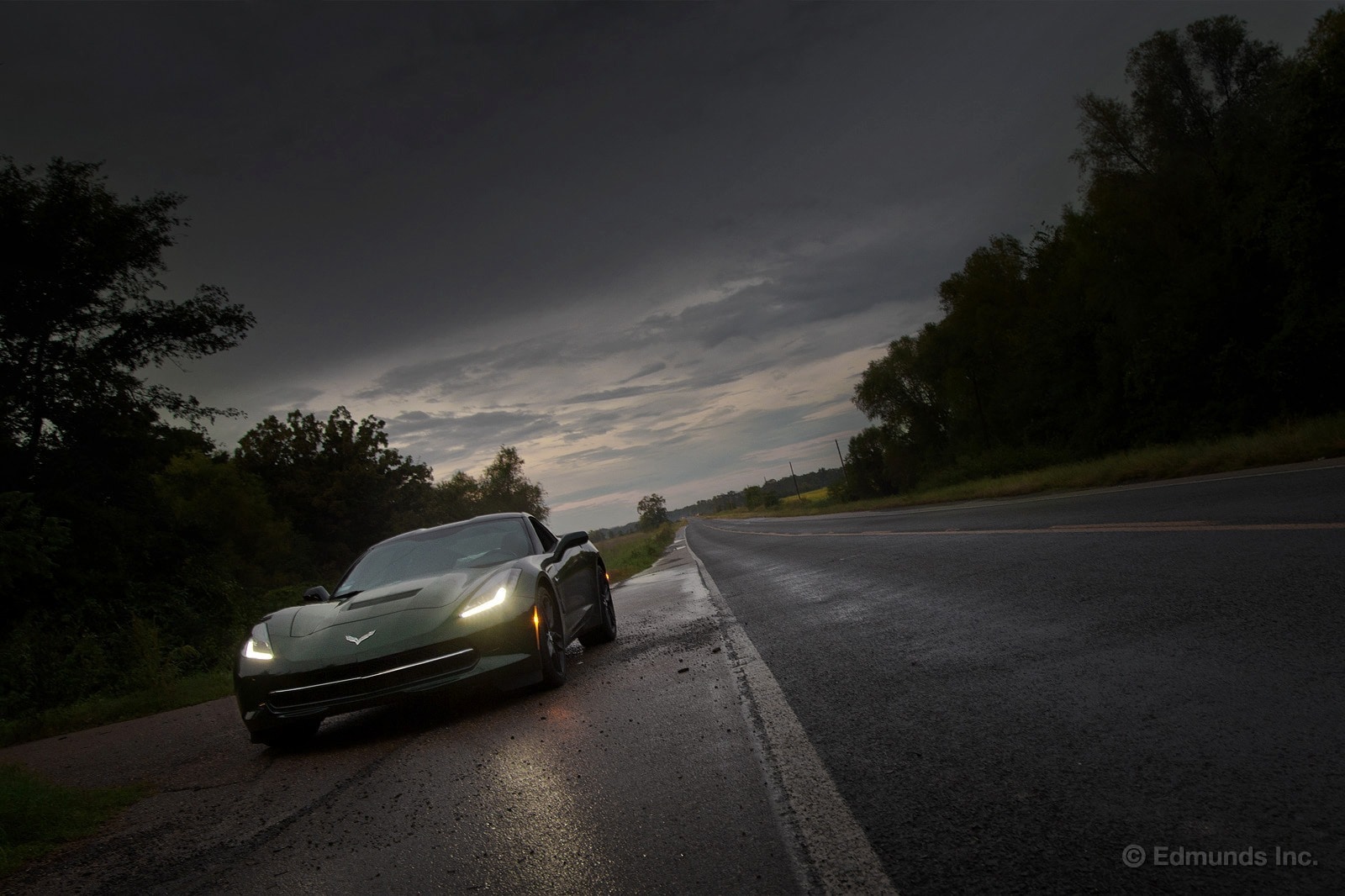
MPG
"26.6 mpg over 2,486 miles on winter tires through a blizzard. Amazing. Our long-term Stingray continues to impress." — Scott Oldham
"And yes, with that 6.2-liter 460-horsepower V8, she gets a might thirsty when driven in anger. We averaged 5.8 mpg over the two days of full-throttle flogging at Laguna Seca." — Mike Monticello
Comfort
"I just spent four days driving our long-term Stingray 2,500 miles from Santa Monica to downtown Detroit.... The new seventh generation of Chevy's two-seat sports car is extremely comfortable. I'm 5' 11", about 180 pounds and my body was very happy in the Corvette.... This Corvette rides wonderfully in Touring mode and its cabin is luxury-sedan quiet." — Scott Oldham
"The Corvette's seating position seems to favor shorter guys... taller guys aren't as happy in the cockpit. They can't adjust the seat to a low enough position, and there isn't enough headroom to fit a helmet while they're at the track without some serious recline." — Travis Langness
Cargo Space
"Sports cars are supposed to be impractical. That's part of the charm, right? Not necessarily. Others have extolled the virtues of the Stingray's relatively massive cargo hold. It even passed the infamous 'Will the bike fit?' test. At 15 cubic feet, it's roughly the size of a midsize sedan's.... Thanks to this handy cargo net (included with the 2LT package) my gym bag, a bag o' snacks, water and the Corvette's spare oil were all held fast." — John DiPietro
"That's two carry-on bags, one checkable bag that's nearly as tall as the Corvette's insane lift-over height, one way-too-big backpack and one briefcase. Not pictured: a passenger. That's not something our 911 could do. At least, not elegantly." — Mike Magrath
Interior
"Over the past year I've dug into the Corvette's instrument cluster for being too plain and simply uninteresting to look at. There's no art to its design. No sex. I stand behind those criticisms, but there's no denying the incredible amount of information they provide and the amazing amount of choices they offer." — Scott Oldham
"It's official, our Stingray is getting a bit creaky. With the passenger seat slid short of its furthest-back position and occupied by a passenger, it creaks. I noticed this last week when I was driving the car hard on a back road. My passenger, who's accustomed to older, less-civilized cars, didn't notice." — Josh Jacquot
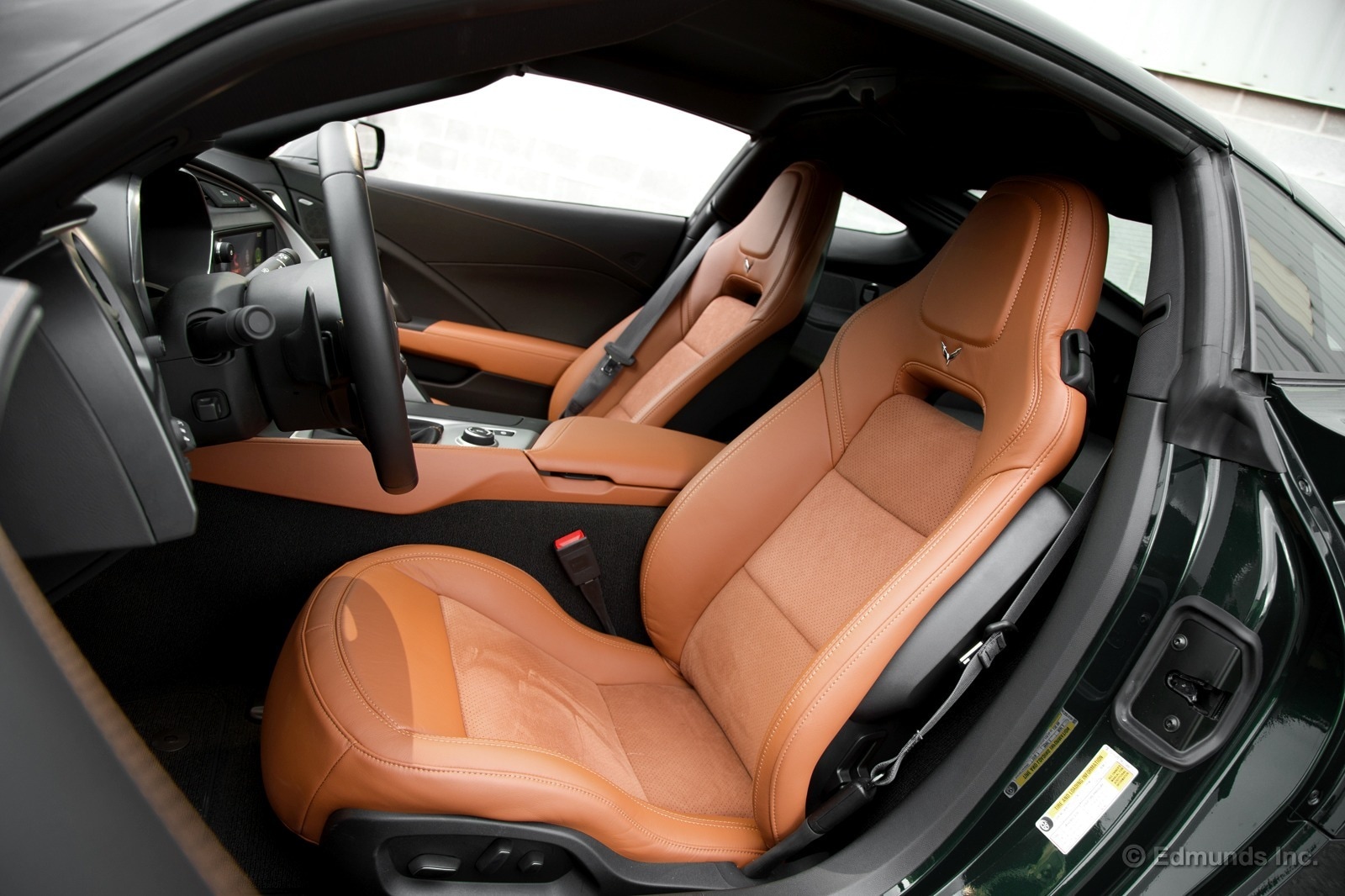
Audio and Technology
"I really like the sound system... the sound quality on the 10-speaker Bose audio system is great. With the treble, midrange and bass adjustments all equalized, I had no problem blasting the newest Black Keys single.... After just a few experiences with Chevy's MyLink system, I found it easy to get used to its controls." — Travis Langness
"On Day 2, the C7 and its MyLink infotainment system fried my iPhone. Halfway through my second day with the car, with the iPhone (5, IOS7) plugged into the USB input, the screen displayed 'no device connected.' Music kept playing for a bit... then the music stopped... my iPhone and the screen was frozen on the music player. Nothing responded and the phone was unreasonably hot to the touch." — Mike Magrath
"The nav system has done a commendable job getting us in and through rural Alabama, but its processing delay is frustrating. Each input, each number and letter, must be slow, firm and deliberate. Our long-term Cadillac ATS is also like this, and it's a reminder that GM needs to find a supplier with a better grip on smartphone and tablet interfaces. At least the graphics are crisp and clear." — Dan Frio
Maintenance
"As I made my left turn onto the actual mountain road, I picked up the pace considerably. It's a tight bit of blacktop, lots of decreasing-radius curves, mostly 2nd gear, high-rpm stuff with fun, slightly tail-loose exits. I was just starting to get comfortable with the car's limits, getting into a rhythm, when a chime came on. Uh-oh, that can't be good.... 'Engine Overheating, A/C has been turned off, please idle engine.'" — Mike Monticello
"After six months of ownership and about 13,000 miles of driving including testing and a track day under their belts, the factory Michelin Pilot Super Sports on our Corvette have given up the ghost and need to be replaced.... Even with light pedal pressure, the 'Vette just absolutely roasts these meats. It's a blast. Grip is boring. But grip is also safe and this car is bonkers fast." — Mike Magrath
Miscellaneous
"The nice man that answered my call said, '911, what is your emergency?' I said I was sorry to bother him, but my car is stuck in the snow and I'm essentially blocking Interstate 70 eastbound somewhere between Vail and Frisco.... The Corvette was snowed in... it wouldn't budge. There was just no traction. The car's stability system was keeping the tires from spinning but it was also shutting off its big V8 engine in an attempt to cut power to the tires." — Scott Oldham
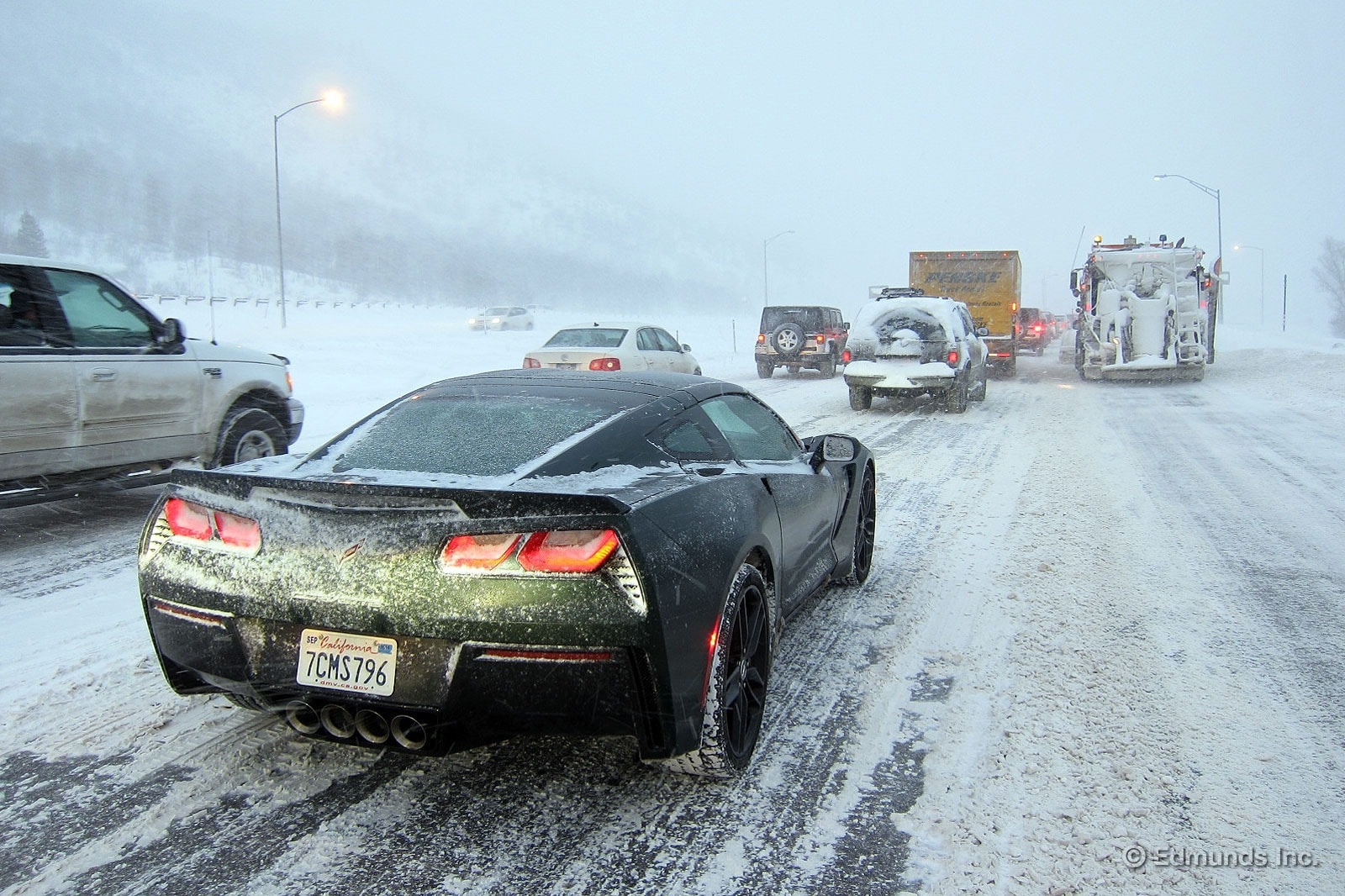
"Our Corvette recently started overheating at the hands of mechanically unsympathetic drivers who shall not be named, but even with ambient temperatures above 100 degrees at lower elevations and the A/C blowing cold, the coolant temp needle barely budges. My only real worry is a surprise visit from an oncoming highway patrol unit." — Dan Frio
Maintenance & Repairs
Regular Maintenance:
The Stingray requests routine service at 7,500-mile intervals. Two years or 24,000 miles of free scheduled maintenance was standard on 2014 Corvettes, so upkeep was cheap. We didn't touch our wallet for the 7,500-, 15,000- or 22,500-mile visits.
Service Campaigns:
No recalls were issued during our test but there was an open TSB addressed. Bulletin 13384 included topping off the differential fluid and was performed at the 7,500-mile interval. The only other extracurricular maintenance of the Stingray came in the form of minor body damage repair and tire replacements. A nagging navigation system gremlin popped up from time to time but due to its unpredictability was never formally remedied.
Fuel Economy and Resale Value
Observed Fuel Economy:
EPA estimates for our Corvette Stingray Z51 were 21 mpg combined (17 city/29 highway). We averaged 18 mpg. Our best single tank was nearly 31 mpg and covered 472 miles of ground.
Resale and Depreciation:
We purchased our Stingray for $65,180 one year and 27,200 miles ago. Last week we sold it to CarMax for $50,000, reflecting 23 percent depreciation. At the time, Edmunds' TMV® Calculator valued the Corvette at $51,800 based on a private-party sale.
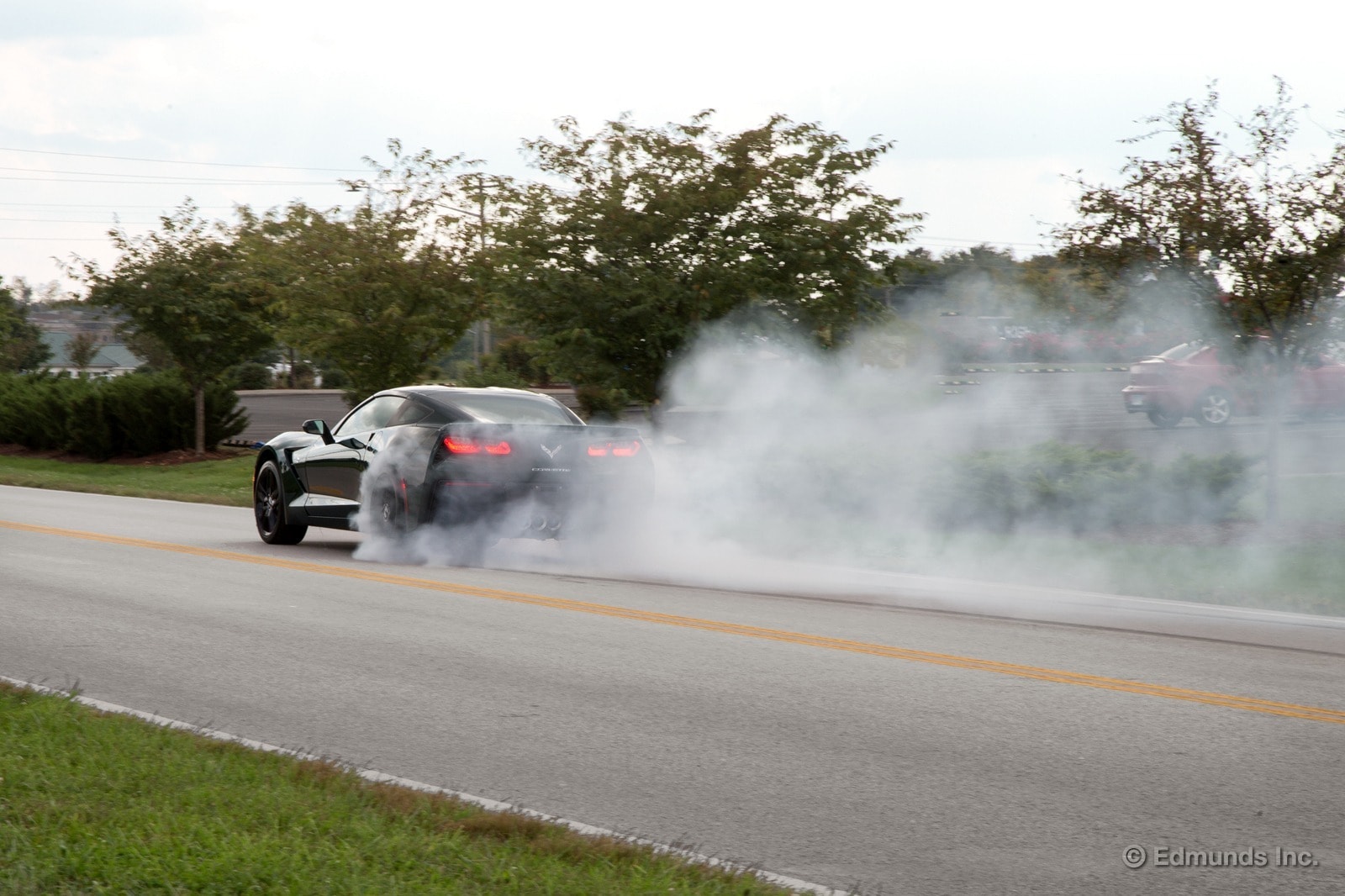
Summing Up
Pros:
Unbeatable price-to-performance ratio, comfortable enough to drive every day, fast enough to hang with cars that are twice the price, delivers excellent mileage if you're careful with the throttle, generous cargo space, free maintenance for first two years, supportive seats.
Cons:
Shows signs of some minor build quality issues like creaking seats and peeling badges, had trouble handling hot driving environments, navigation system reacts slowly to inputs.
Bottom Line:
A world-class sports car with a real-world price. This latest version of the Corvette delivers a vastly upgraded interior along with no-compromise performance and a livable ride. It's far from inexpensive, but if you can afford it, you won't be disappointed.
| Total Body Repair Costs: | $1,125.31 |
| Total Routine Maintenance Costs: | None (over 12 months) |
| Additional Maintenance Costs: | $1,723.22 for 4 new tires and $30 for a patch |
| Warranty Repairs: | TSB 13384: differential fluid top-off |
| Non-Warranty Repairs: | None |
| Scheduled Dealer Visits: | 3 |
| Unscheduled Dealer Visits: | 1 for cooling system check-up |
| Days Out of Service: | 4 in the body shop |
| Breakdowns Stranding Driver: | None |
| Best Fuel Economy: | 30.8 mpg |
| Worst Fuel Economy: | 9.4 mpg |
| Average Fuel Economy: | 18.3 mpg |
| True Market Value at service end: | $51,800 (private-party sale) |
| What it Sold for: | $50,000 |
| Depreciation: | $15,180 (23% of paid price) |
| Final Odometer Reading: | 27,200 miles |
Edmunds purchased this vehicle for the purposes of evaluation.
